This morning I set off for the happily situated Drottningholm Palace (Drottningsolms Slott), which is the current private residence of the Swedish royal family. It is, oddly enough, located in Drottningholm, which is on the island of Lovon in Stockholm. One of many Swedish Royal Palace, it was primarily used as a summer residence prior to the current royal family decided to make it their primary place of residence.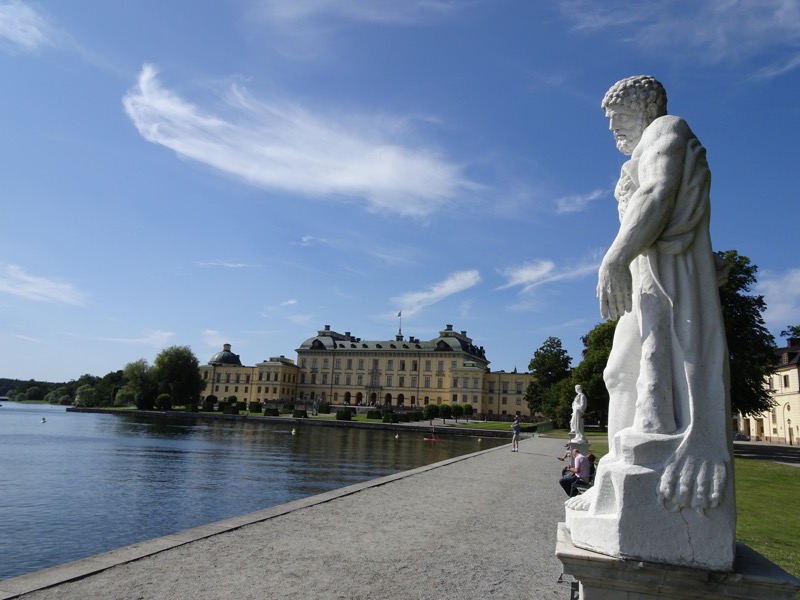
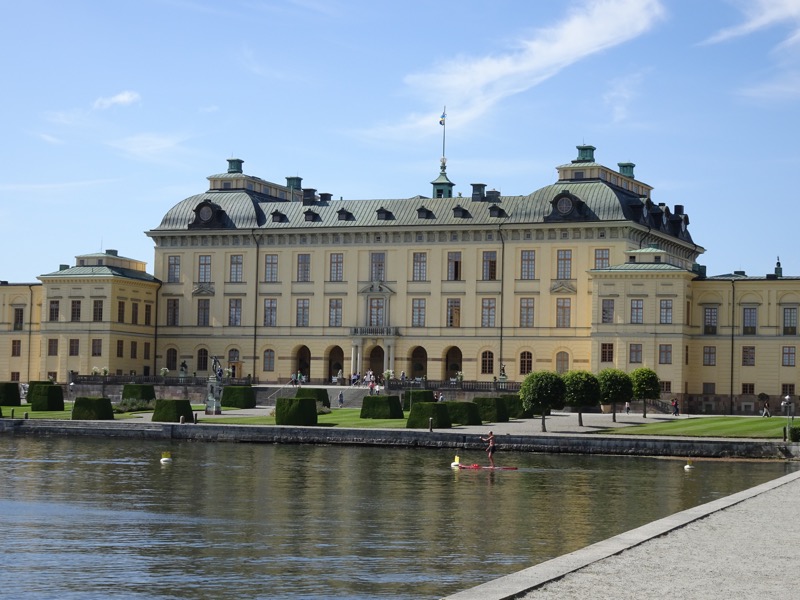
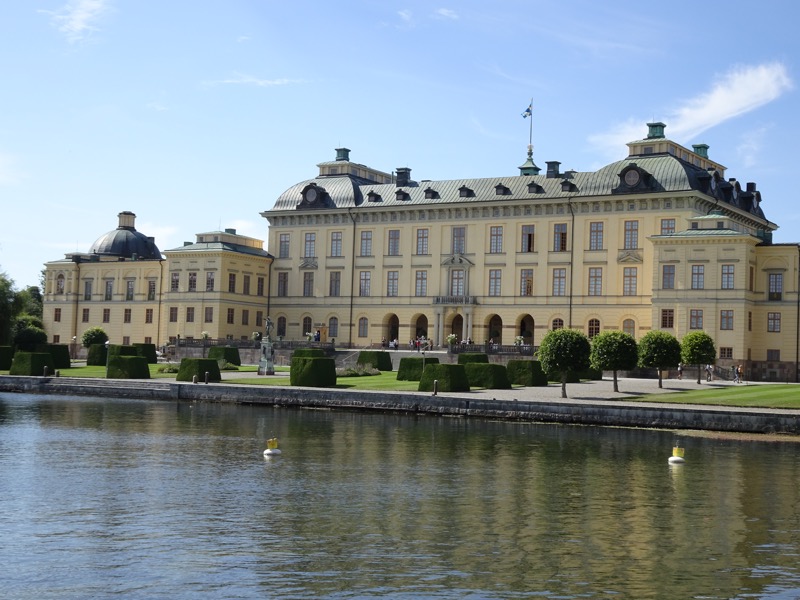 The palace and its grounds have seen many alterations and additions over the past 400 years. The main innovations, of course, were adding electricity, heating, sewage, and water lines, followed by a major roof replacement on the castle in 1907 to 1913. The upkeep on these palatial homes must be phenomenally expensive. From the 70s to the late 90s, several areas of the palace were restored and completely rebuilt. The wonderful library and the national hall received a much-needed make over, and fire protection systems installed throughout the palace.
The palace and its grounds have seen many alterations and additions over the past 400 years. The main innovations, of course, were adding electricity, heating, sewage, and water lines, followed by a major roof replacement on the castle in 1907 to 1913. The upkeep on these palatial homes must be phenomenally expensive. From the 70s to the late 90s, several areas of the palace were restored and completely rebuilt. The wonderful library and the national hall received a much-needed make over, and fire protection systems installed throughout the palace.
Palace Hall staircase.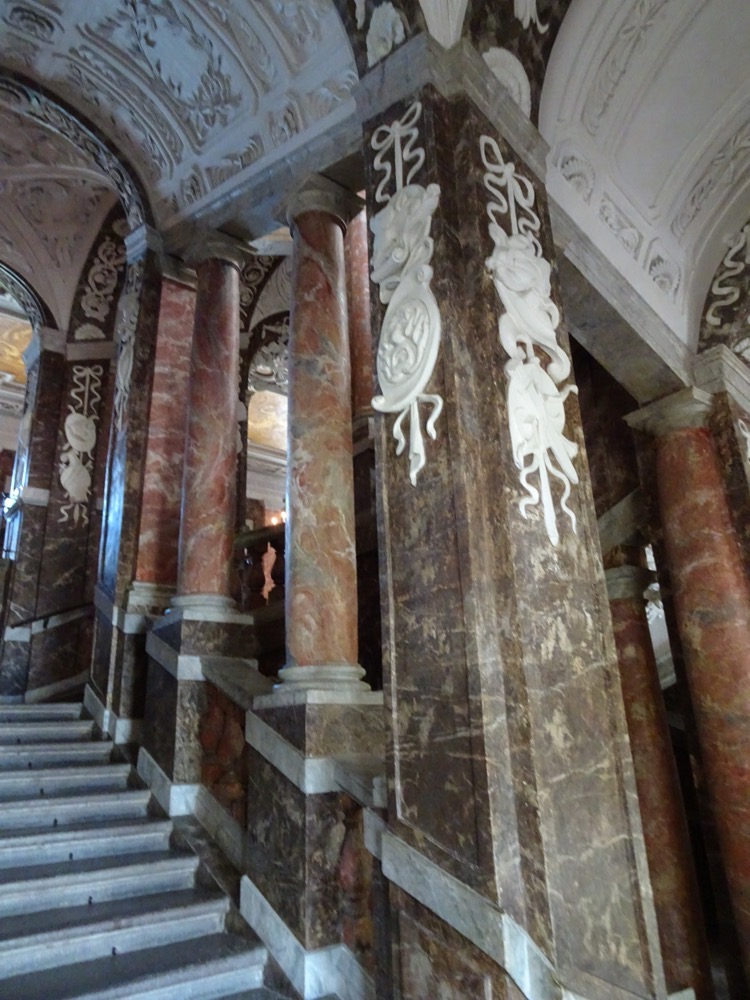
Building on our history lesson from the other day, the name Drottningholm, literally means, ‘Queen’s islet’, and stems from a building designed by someone called Willem Boy – who created a stone palace built by John III of Sweden around 1580 for his queen, Catherine Jagellon. Prior to this palace being built here, there was a royal mansion called Torvesund – which is the traditional way of trading up in real estate when you happen to be royal.
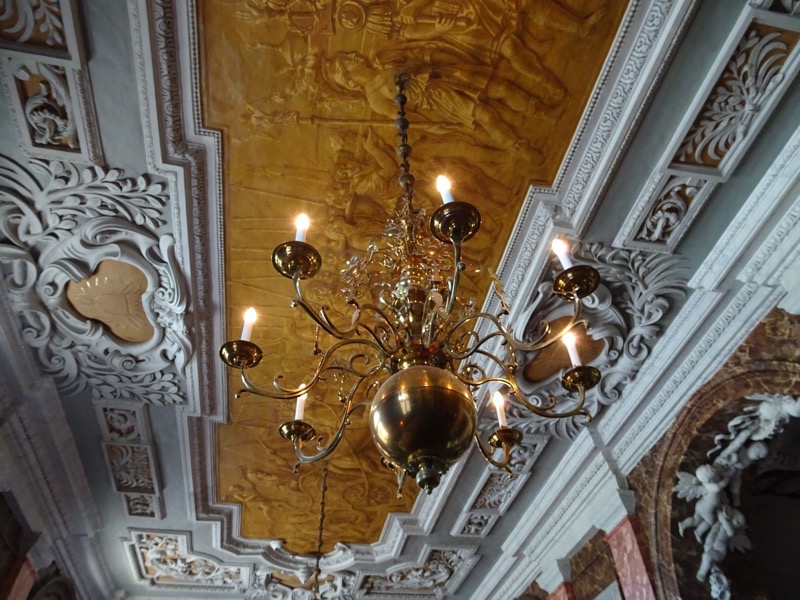 Later, in 1661, the Queen Dowager Regent (great title), Hedwig Eleanora bought the castle, but just as her Queen of Sweden ended, so too did the castle, and it burned to the ground in December the same year. Hedwig Eleonora then hired the famous architect Nicodemus Tessin the Elder (great name) to redesign and rebuild the castle. The following year, work began on the reconstruction. Unfortunately, when the castle was almost complete in 1681, poor old Nicodemus died, and his son, Nicodemus Tessin the Younger (unoriginal), was left to finish the construction and complete the elaborate interior designs.
Later, in 1661, the Queen Dowager Regent (great title), Hedwig Eleanora bought the castle, but just as her Queen of Sweden ended, so too did the castle, and it burned to the ground in December the same year. Hedwig Eleonora then hired the famous architect Nicodemus Tessin the Elder (great name) to redesign and rebuild the castle. The following year, work began on the reconstruction. Unfortunately, when the castle was almost complete in 1681, poor old Nicodemus died, and his son, Nicodemus Tessin the Younger (unoriginal), was left to finish the construction and complete the elaborate interior designs.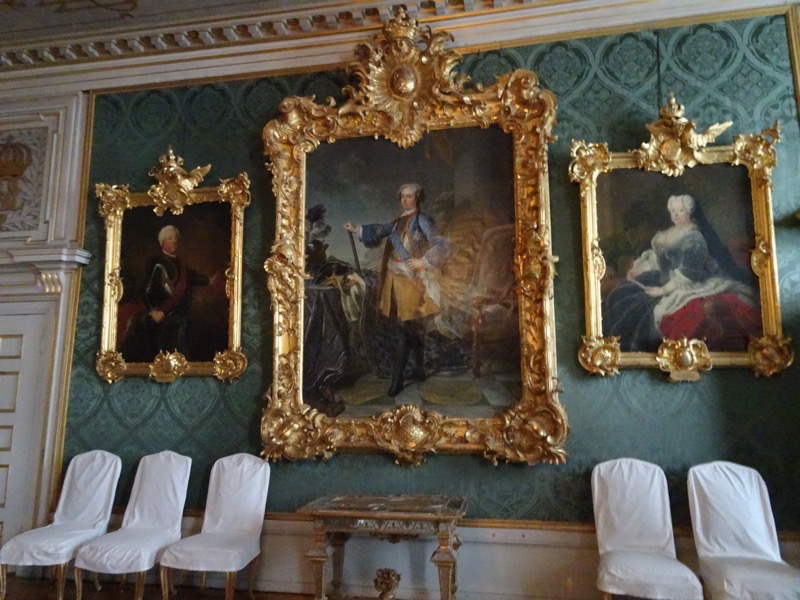 Throughout this period of reconstruction, Hedwig Eleonora was head of the protectorate for the underage King, Charles XI of Sweden (1660-1672). Sweden had developed to be a powerful country after the Peace of Westphalia, and the position of Dowager-Queen who was essentially the ruler of Sweden demanded a residence conveniently close to Stockholm for official royal business.
Throughout this period of reconstruction, Hedwig Eleonora was head of the protectorate for the underage King, Charles XI of Sweden (1660-1672). Sweden had developed to be a powerful country after the Peace of Westphalia, and the position of Dowager-Queen who was essentially the ruler of Sweden demanded a residence conveniently close to Stockholm for official royal business.
The ceilings throughout are magnificent pieces of art!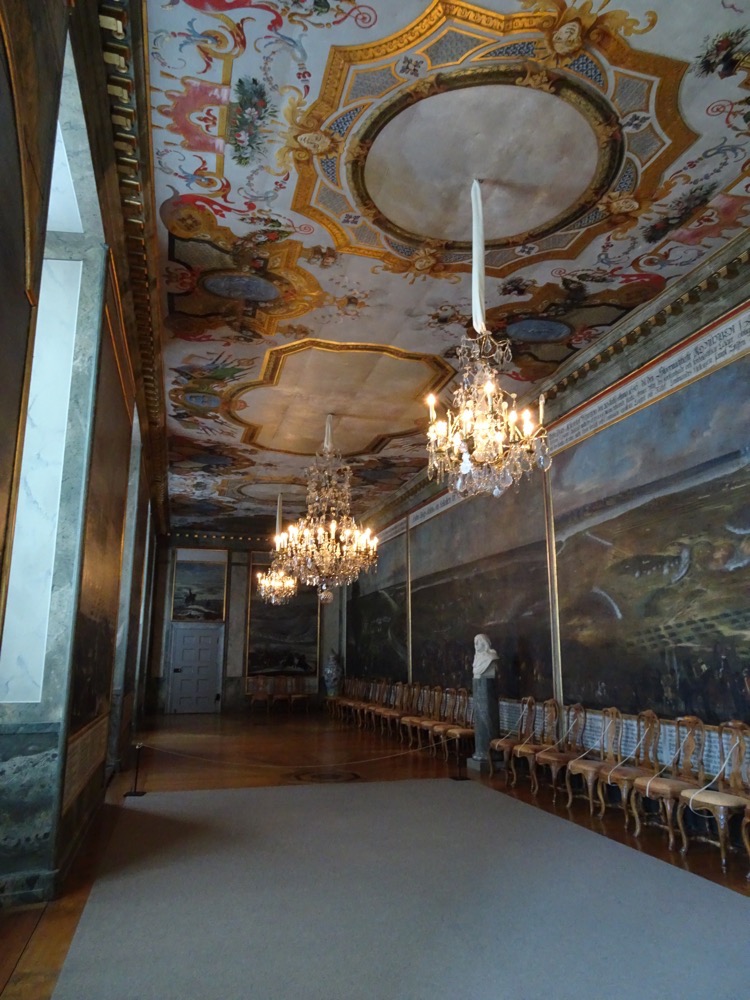
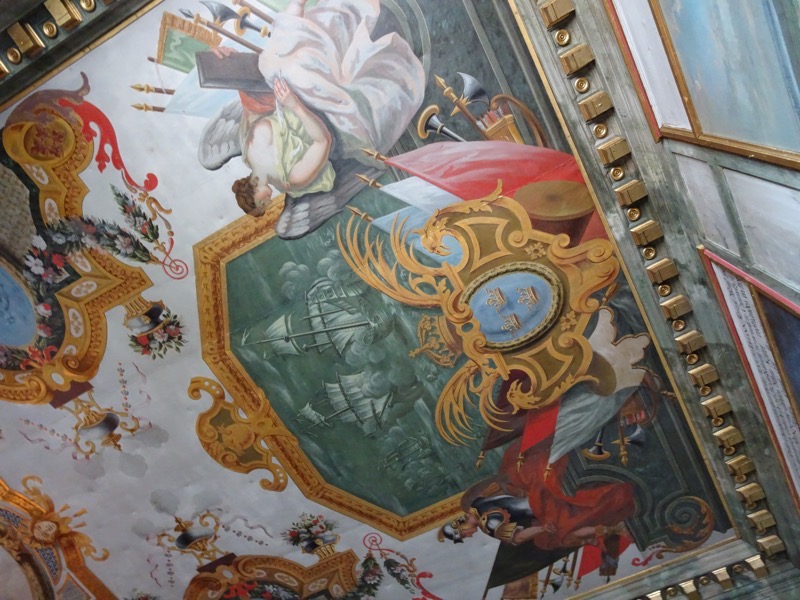
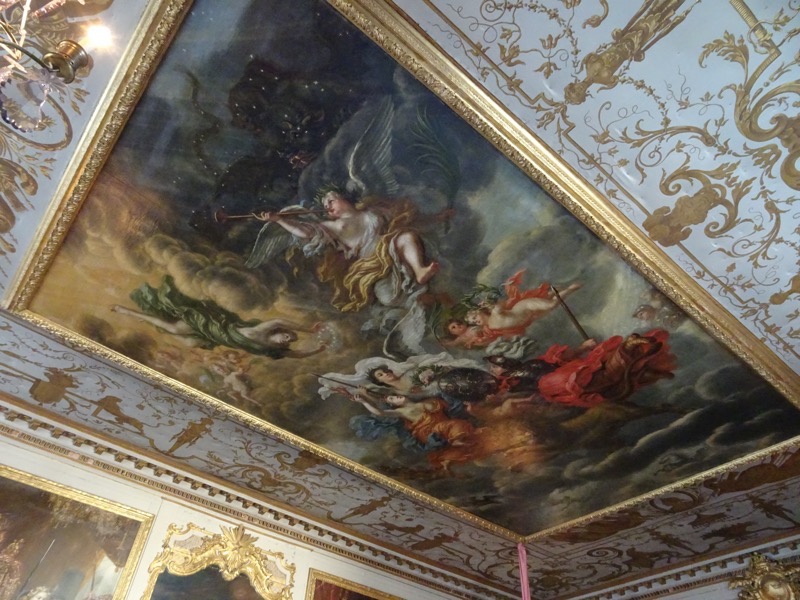
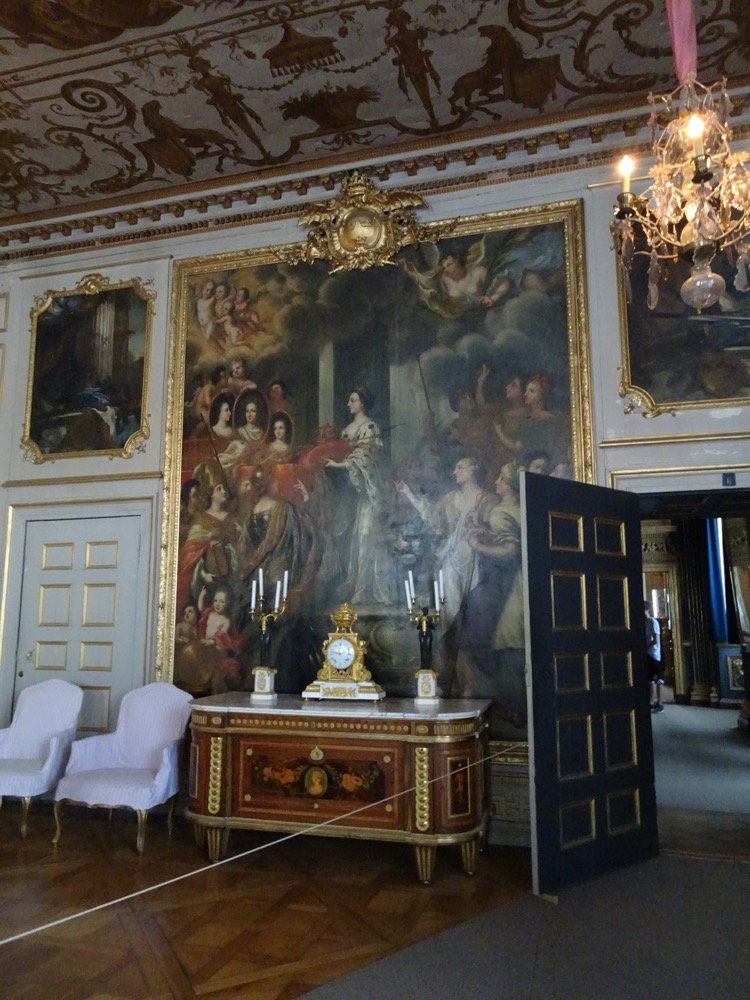 During the later reign of kings Charles XI and Charles XII, the royal court was often at the palace and it was a favoured place for hunting parties. Hedwig Eleonora used the palace extensively as a summer residence until her death in 1715.
During the later reign of kings Charles XI and Charles XII, the royal court was often at the palace and it was a favoured place for hunting parties. Hedwig Eleonora used the palace extensively as a summer residence until her death in 1715.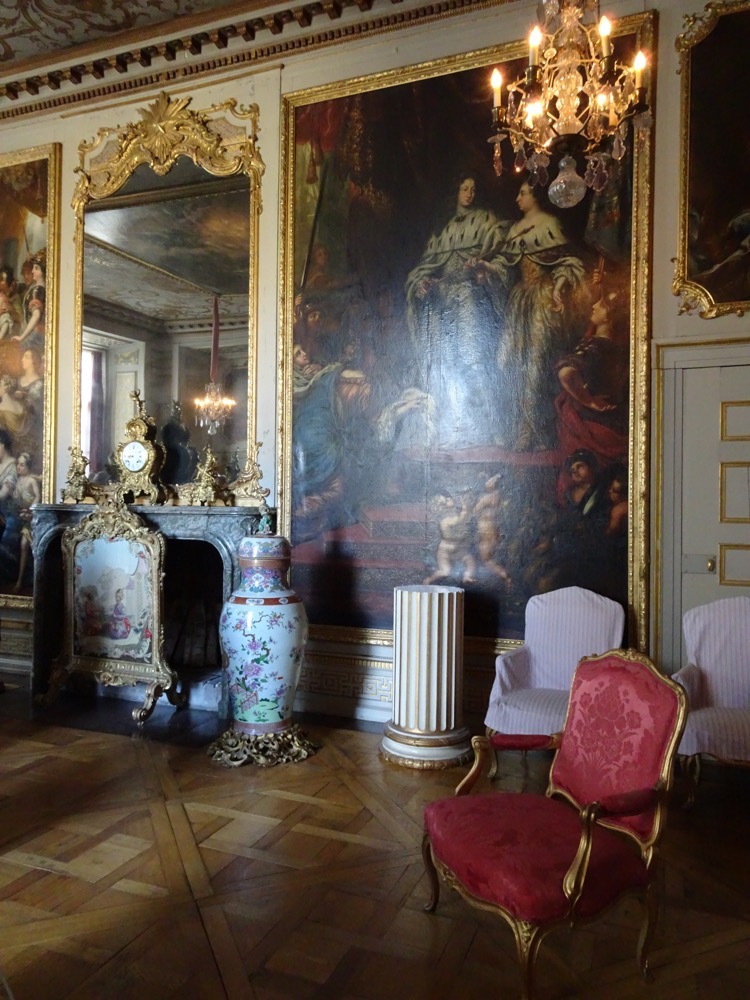
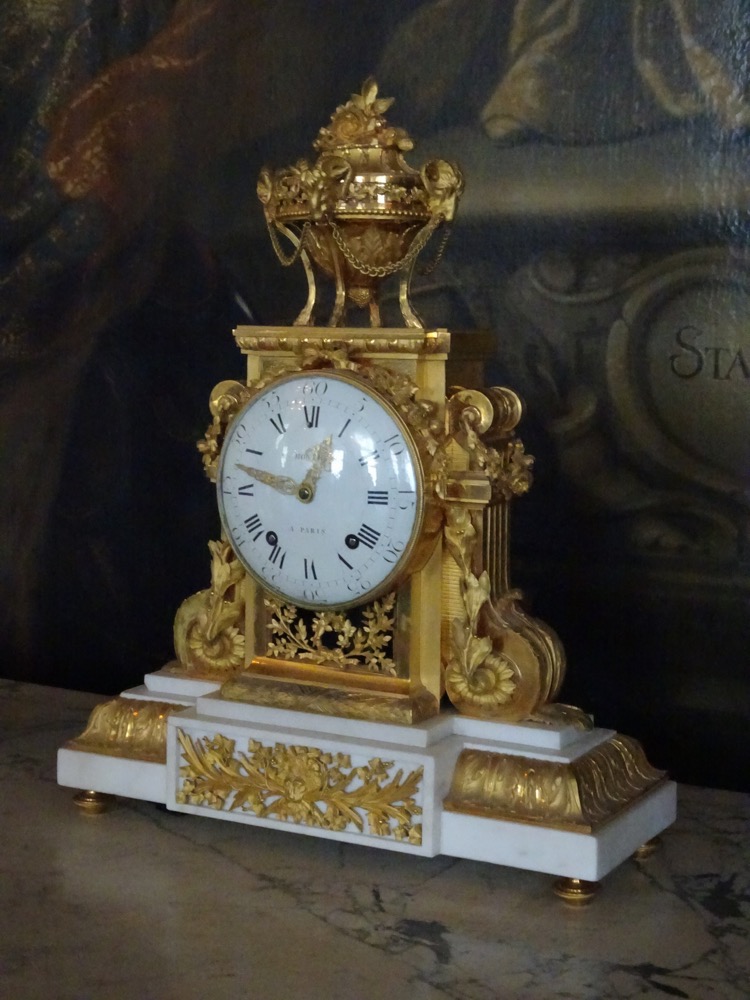 Queen’s formal bed chamber – primarily used as an audience chamber.
Queen’s formal bed chamber – primarily used as an audience chamber.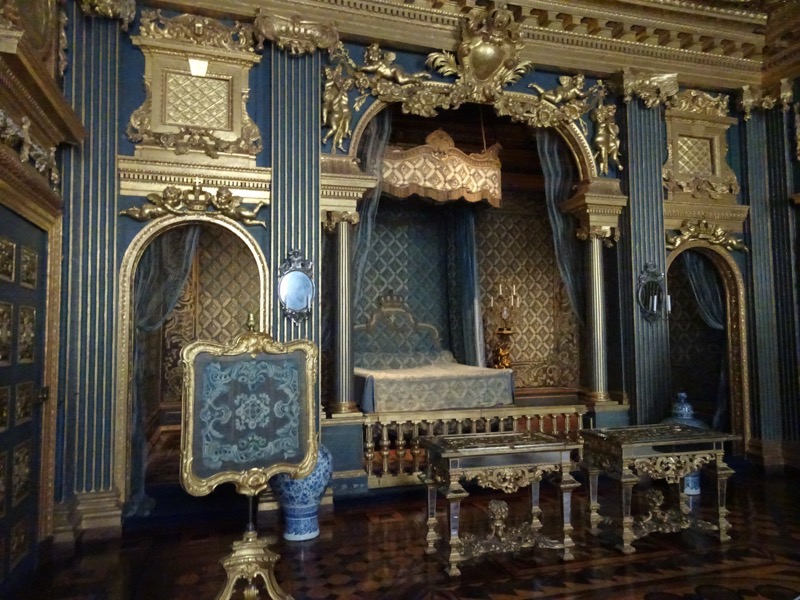
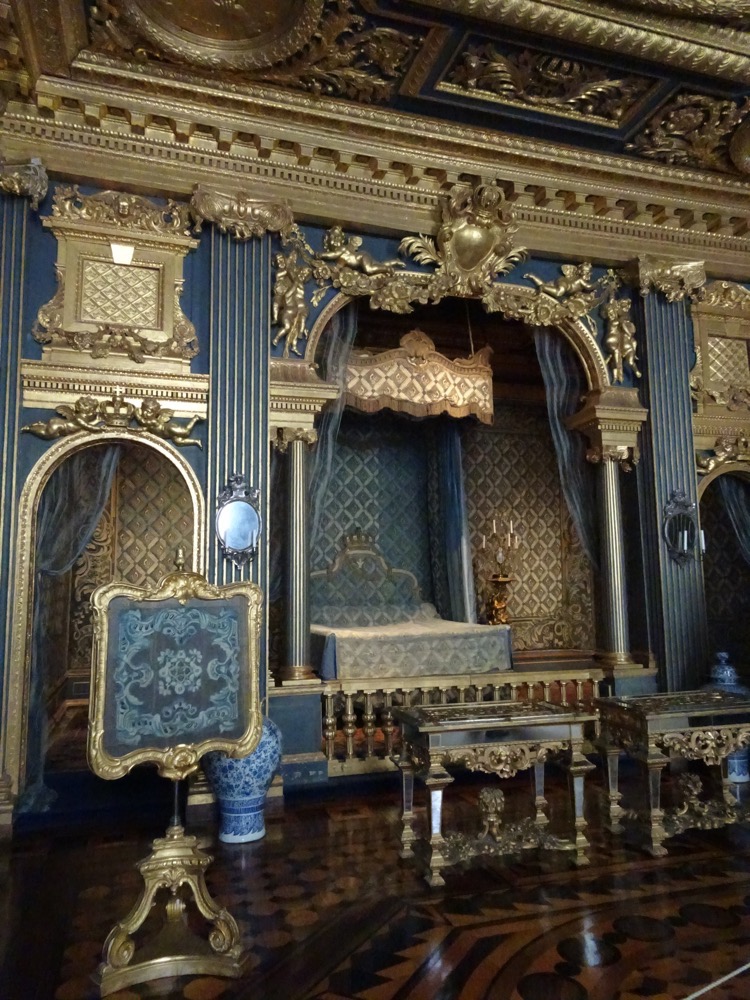
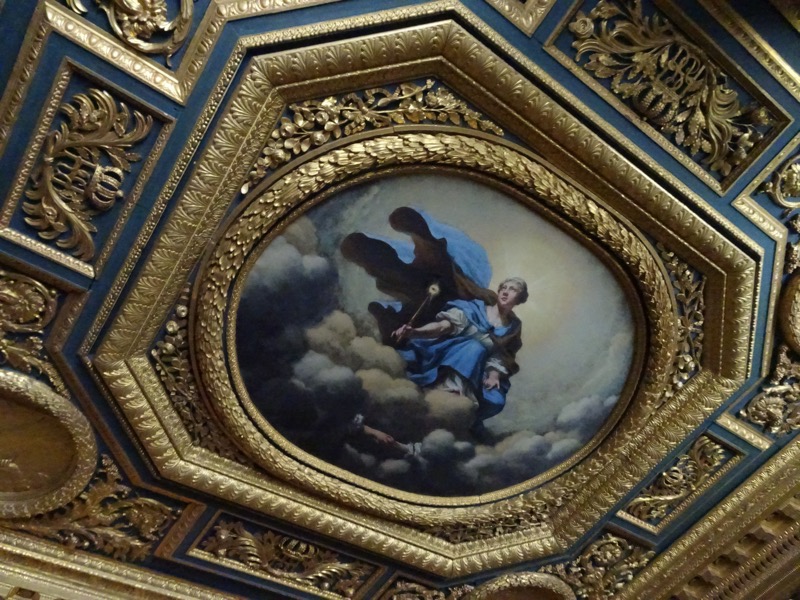
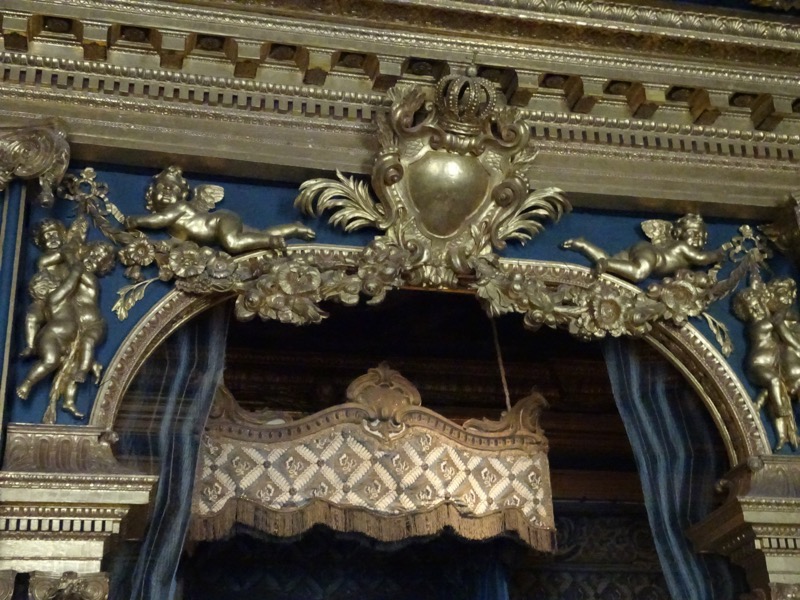 Salon for ladies in waiting.
Salon for ladies in waiting.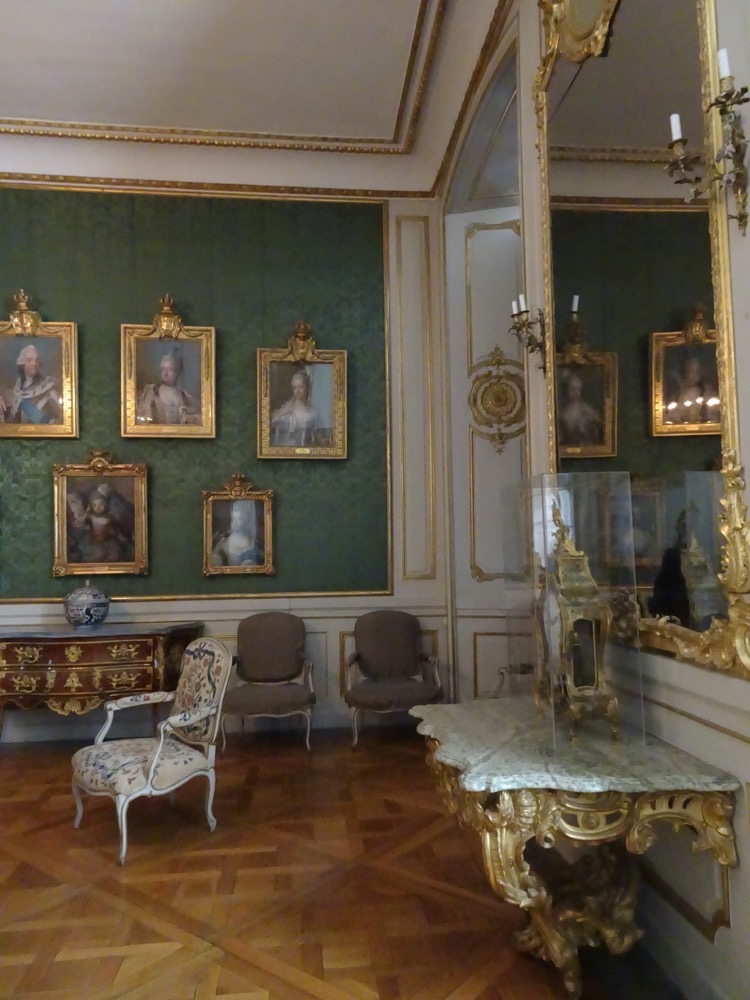
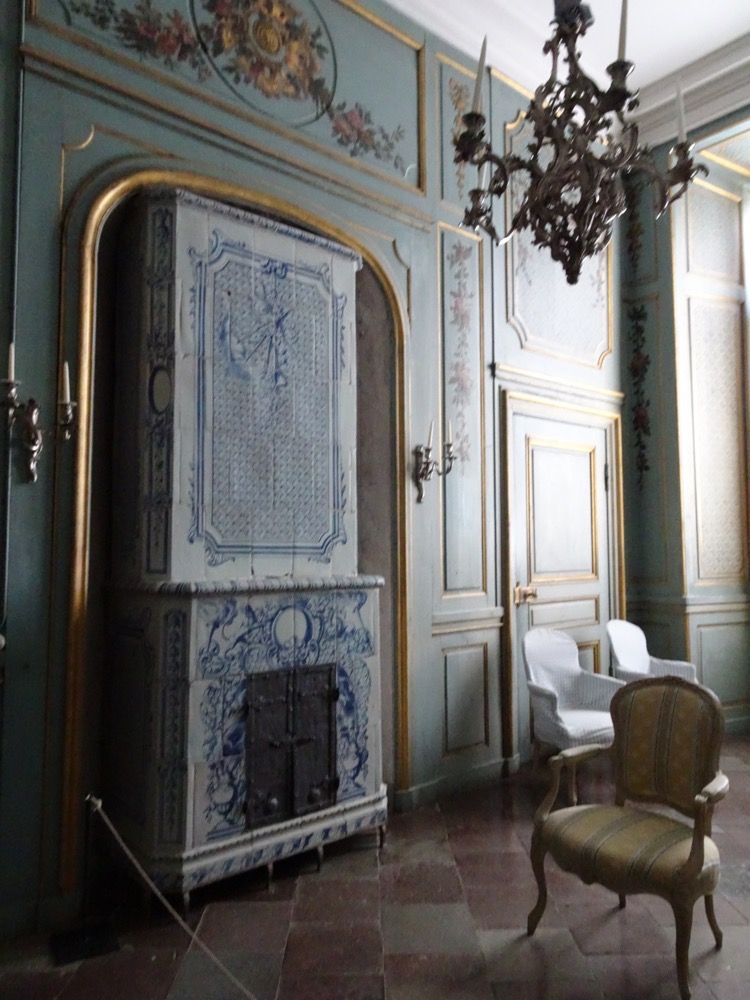
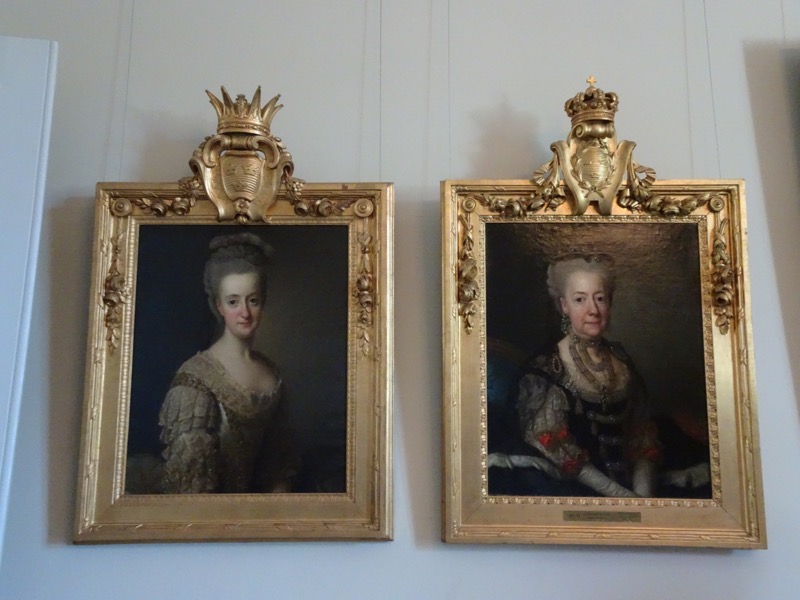 Drottningholms Slott Bibliotekek
Drottningholms Slott Bibliotekek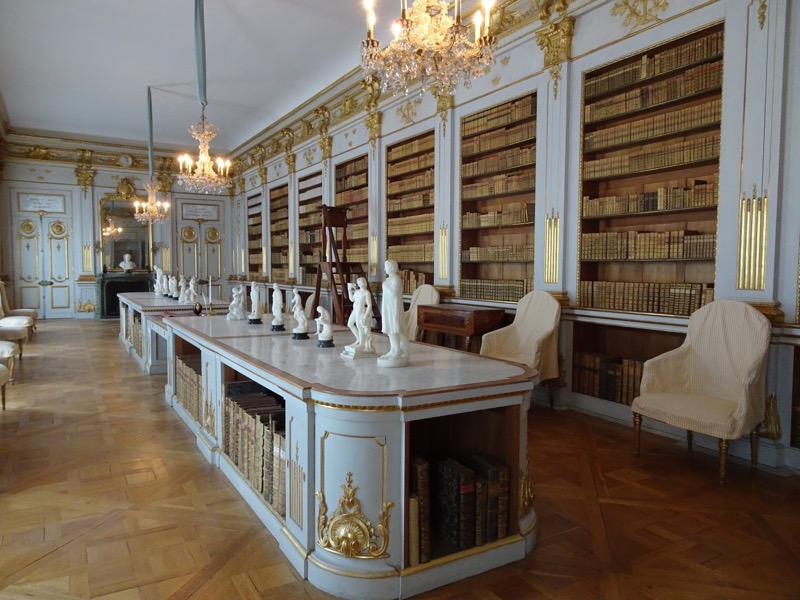
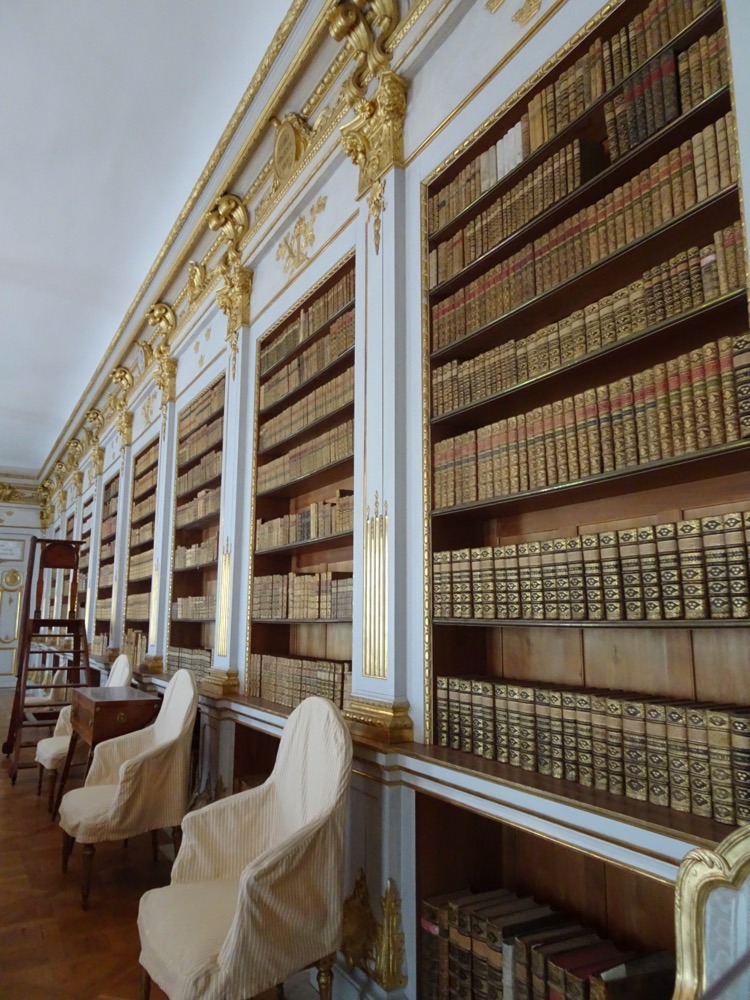
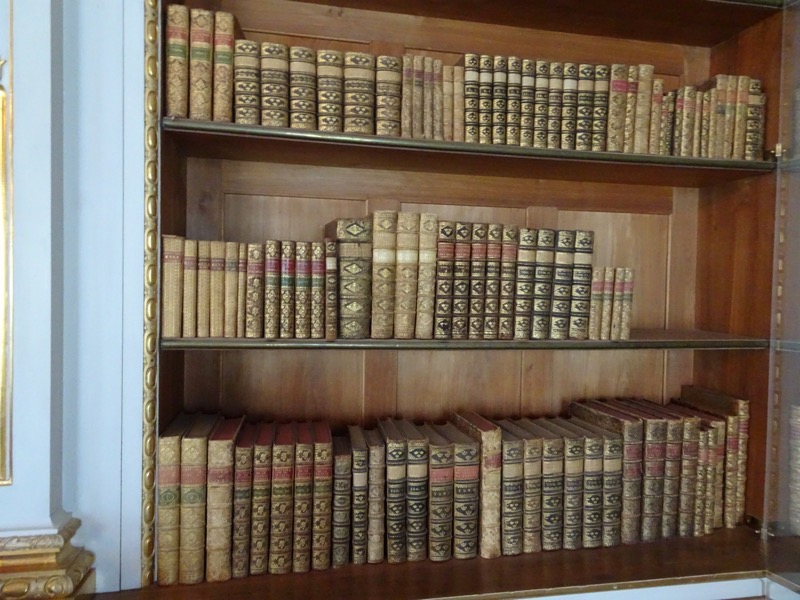 Palace Hall staircase.
Palace Hall staircase.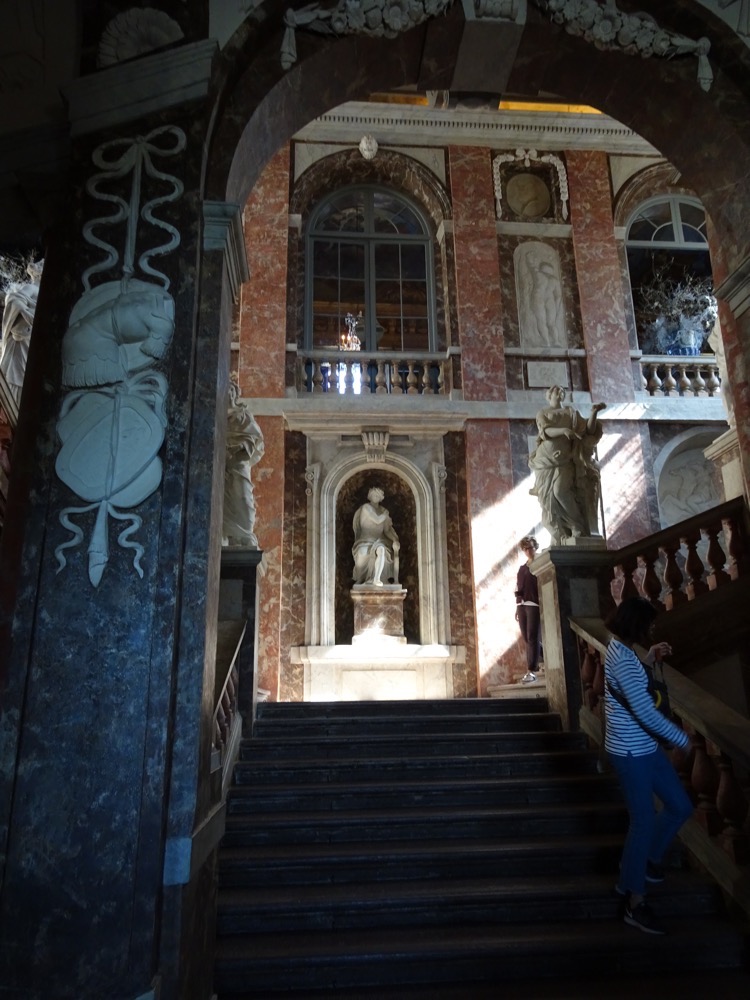
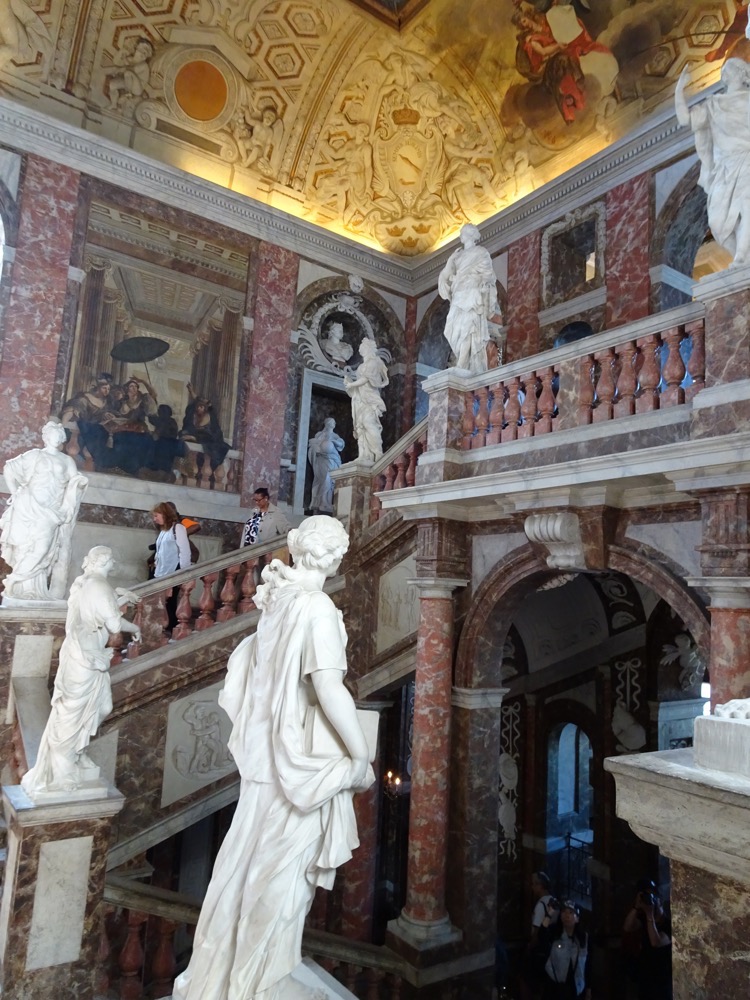
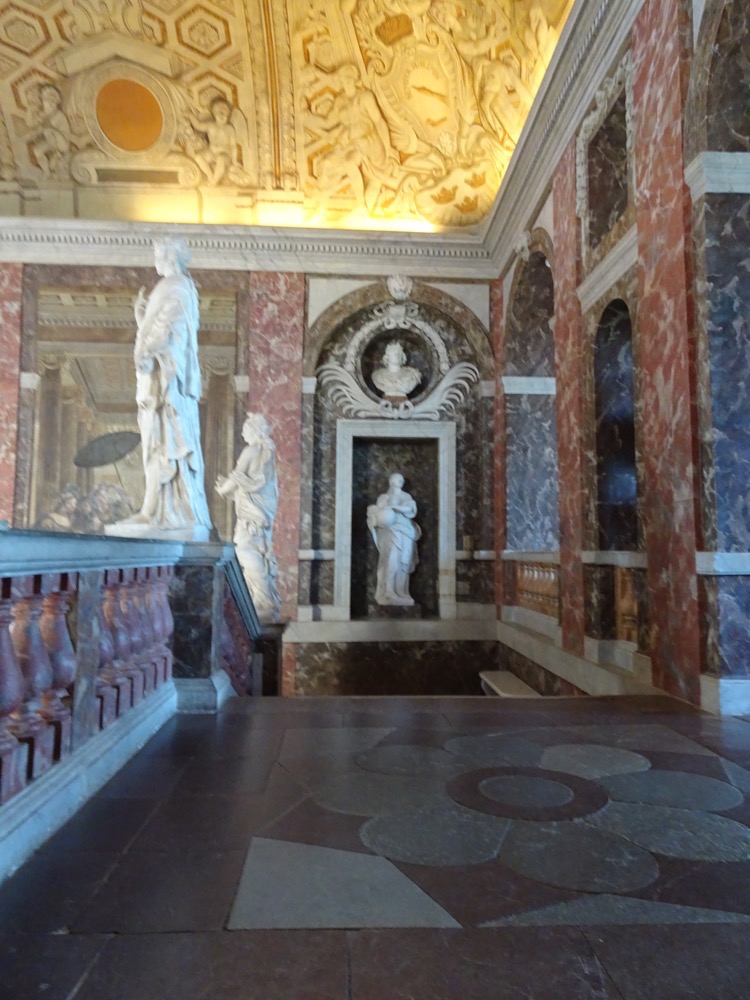
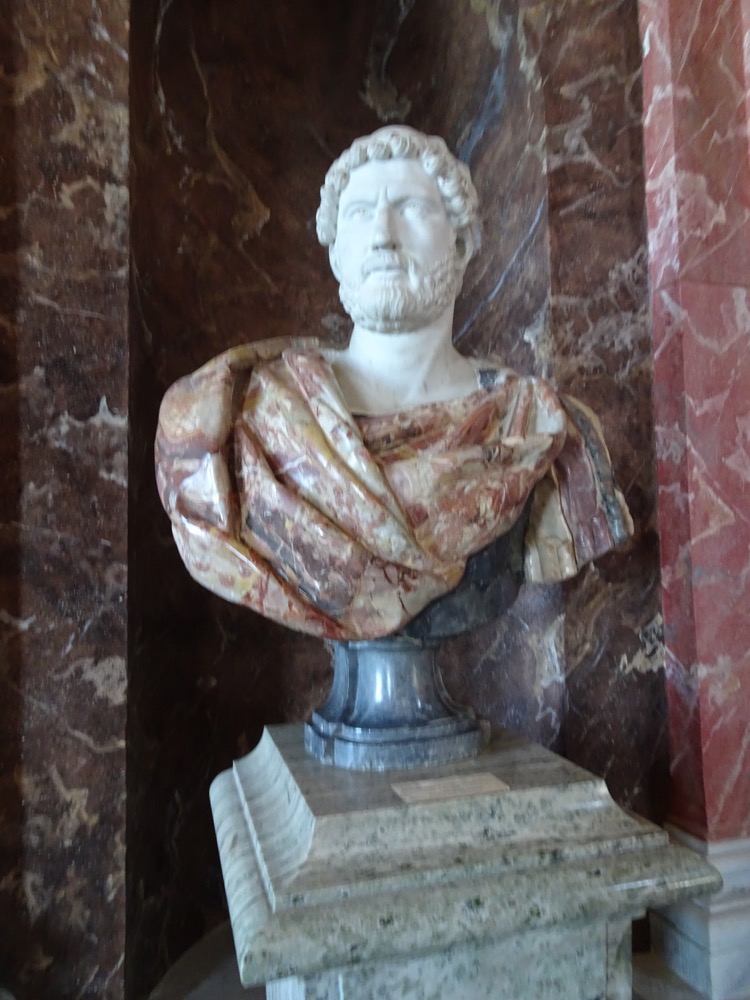
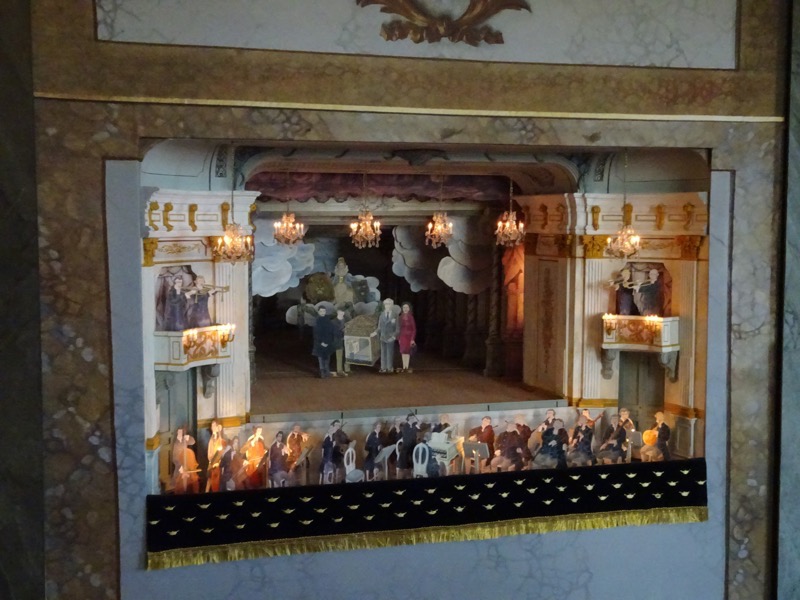
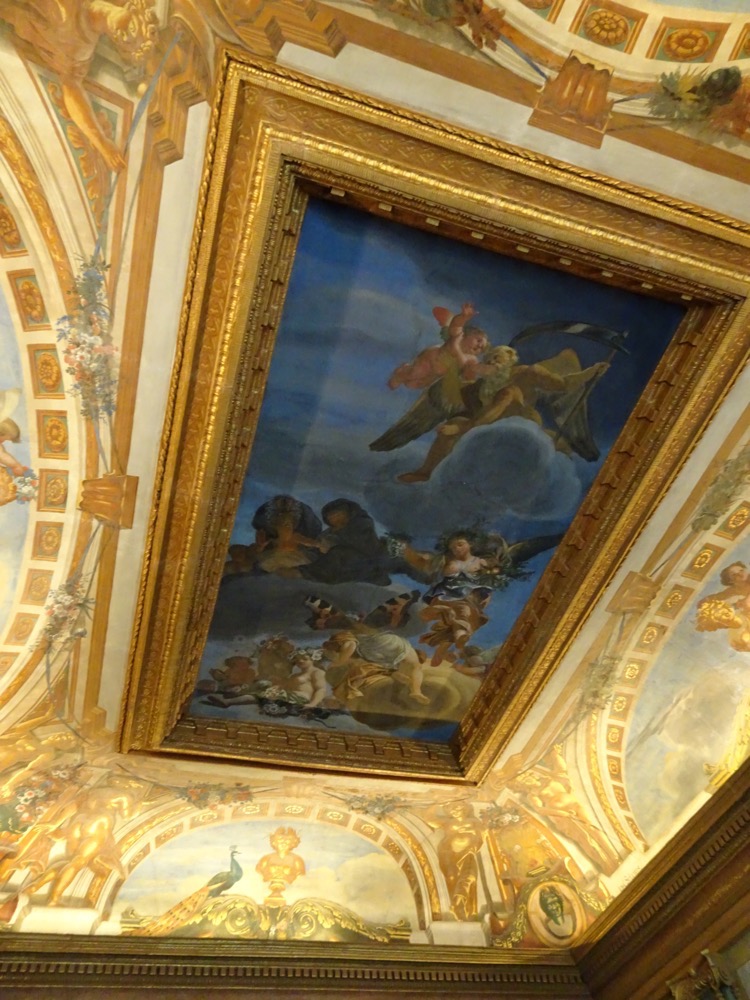
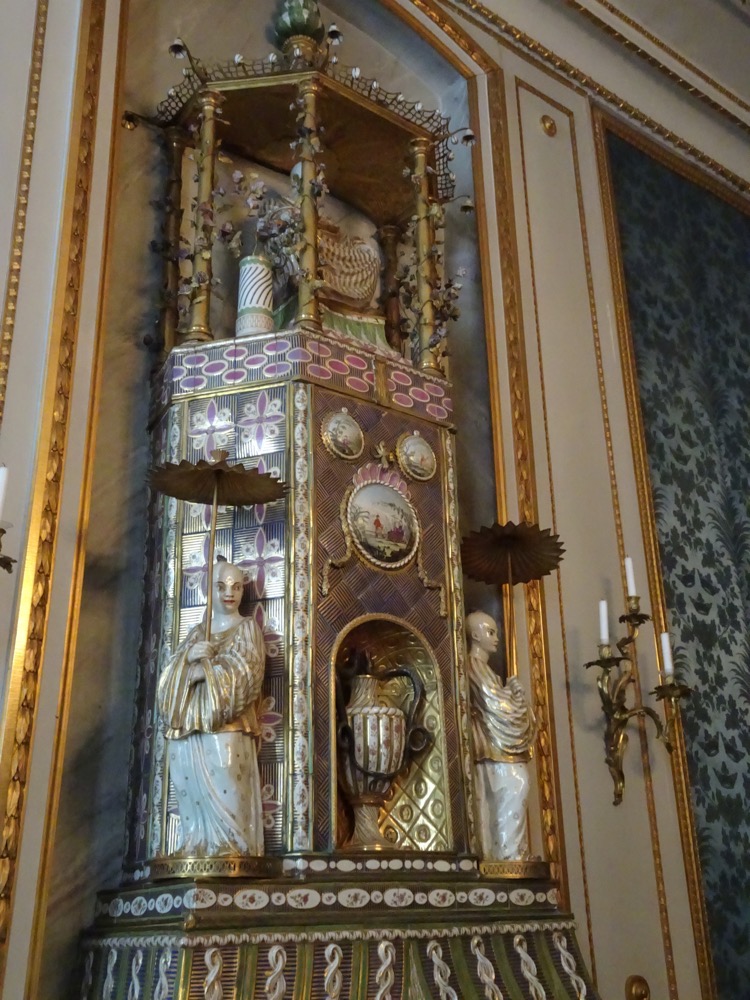
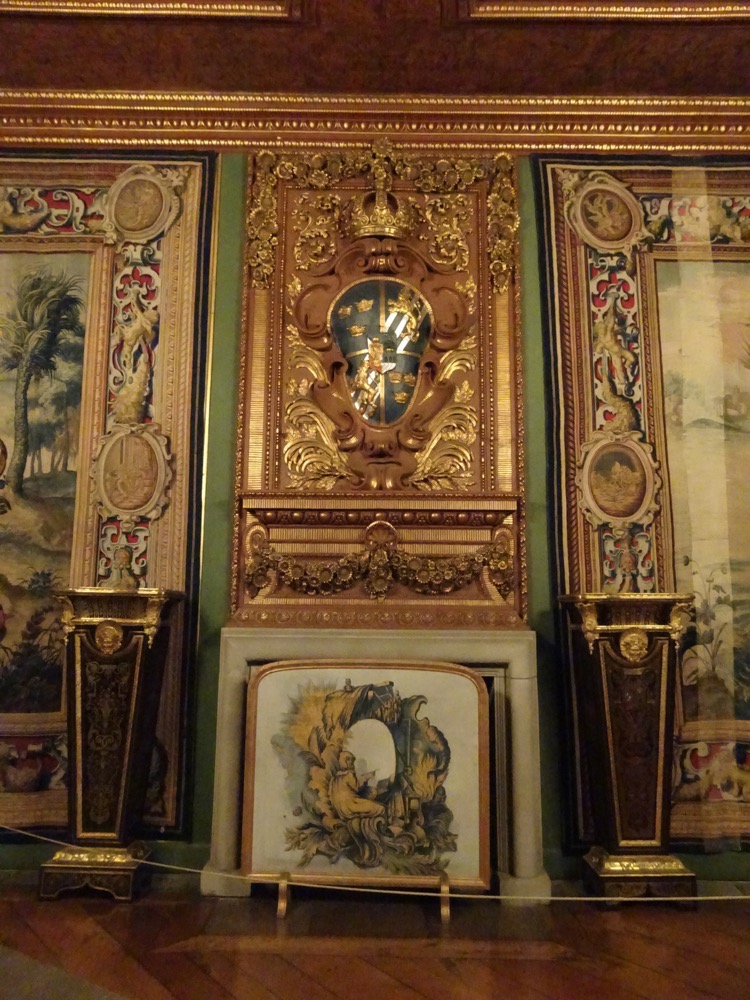
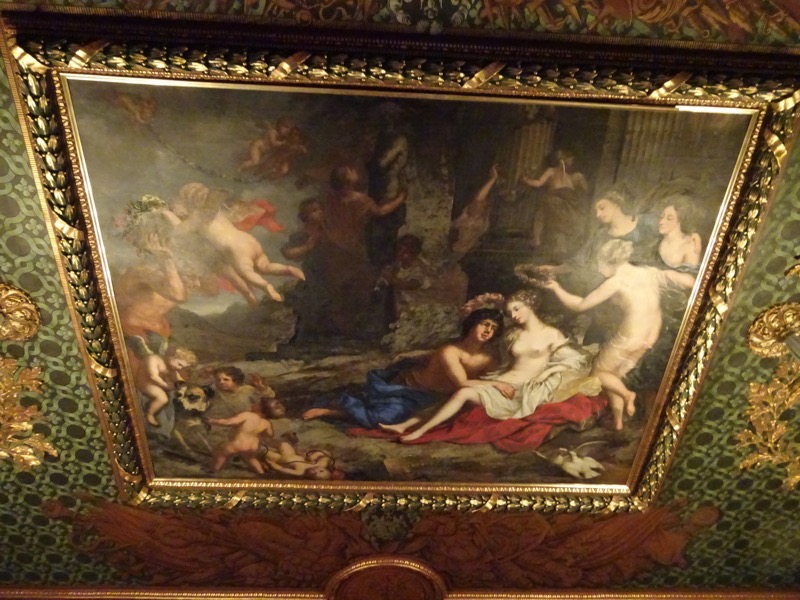
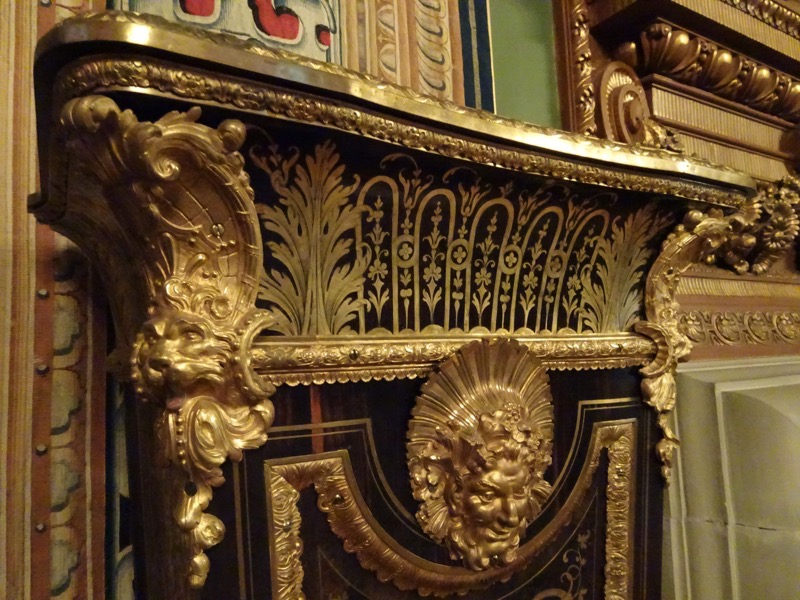
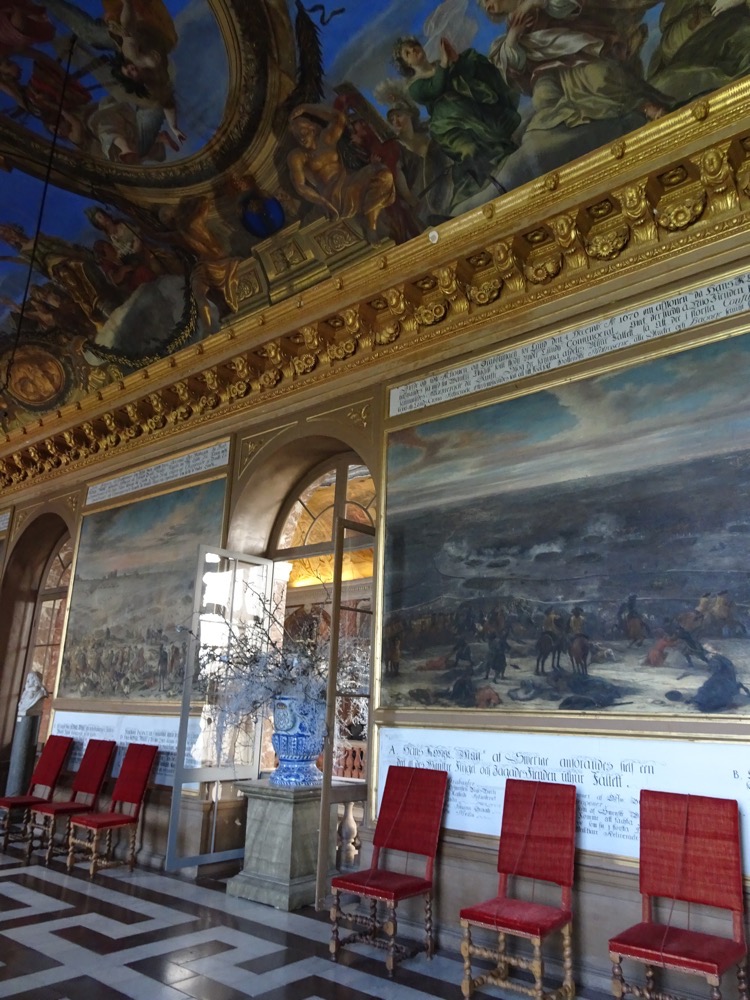
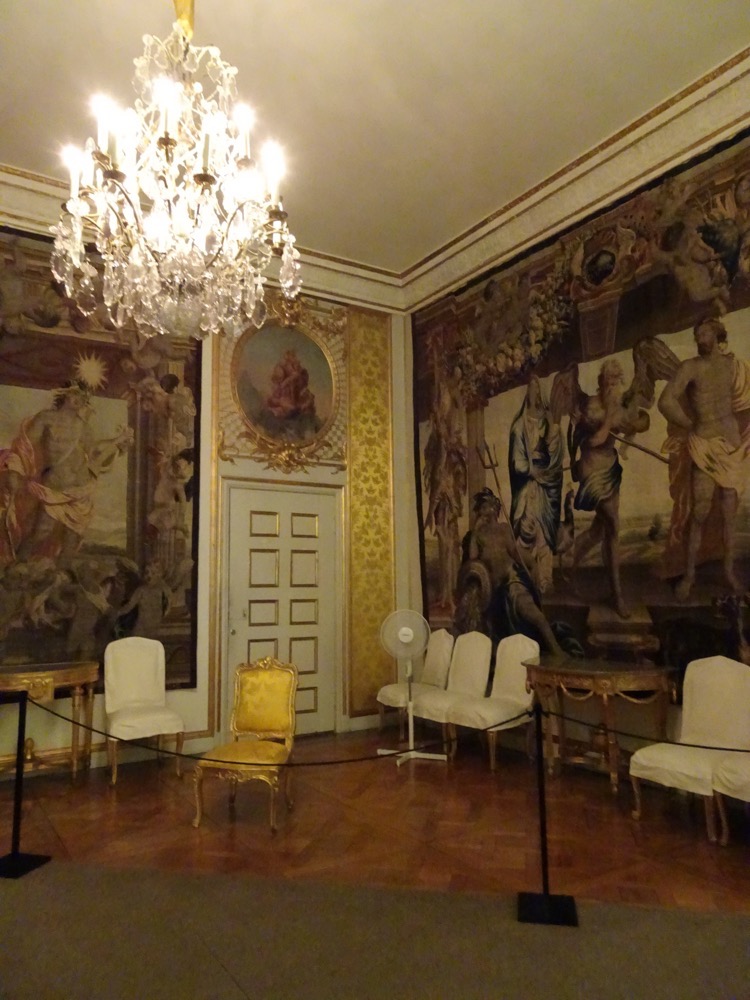 Grand Hall
Grand Hall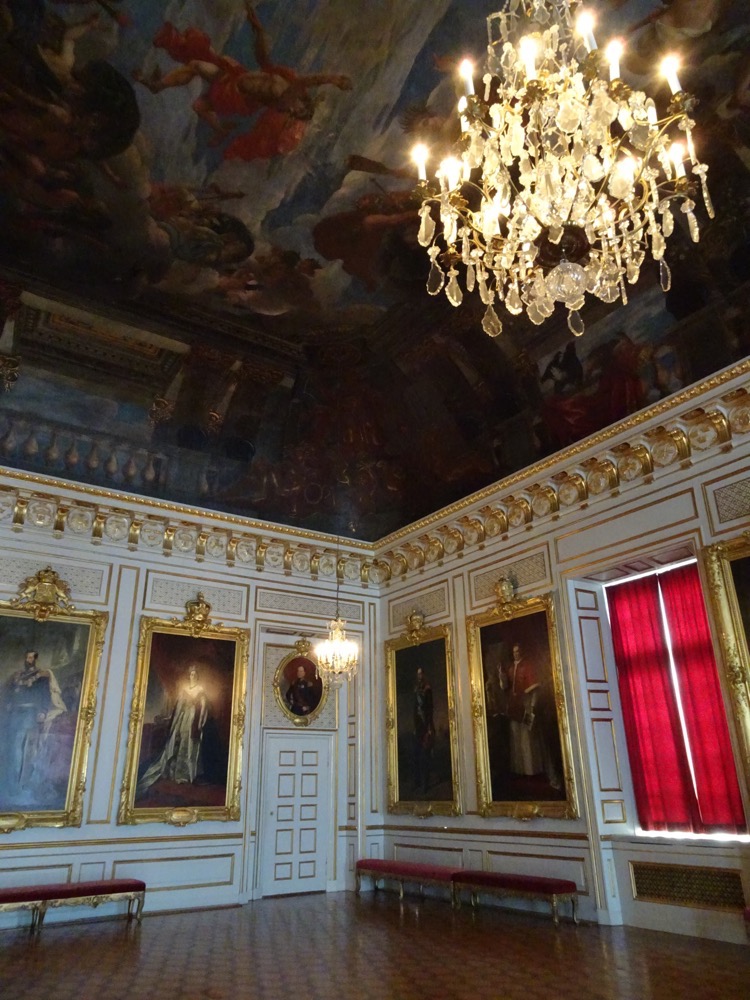
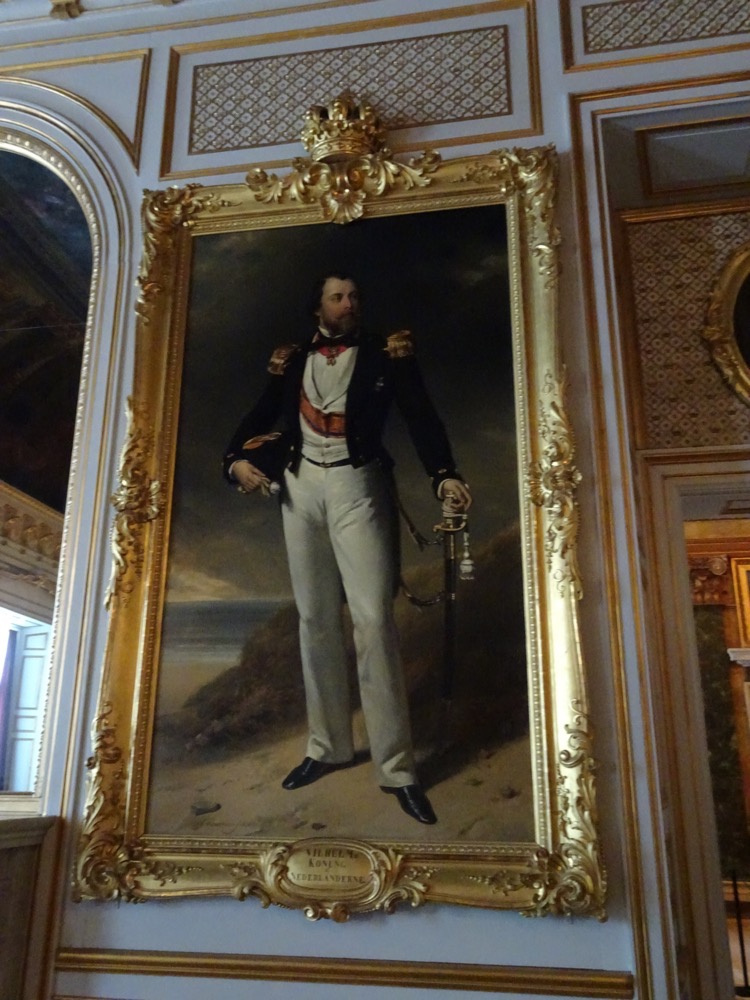
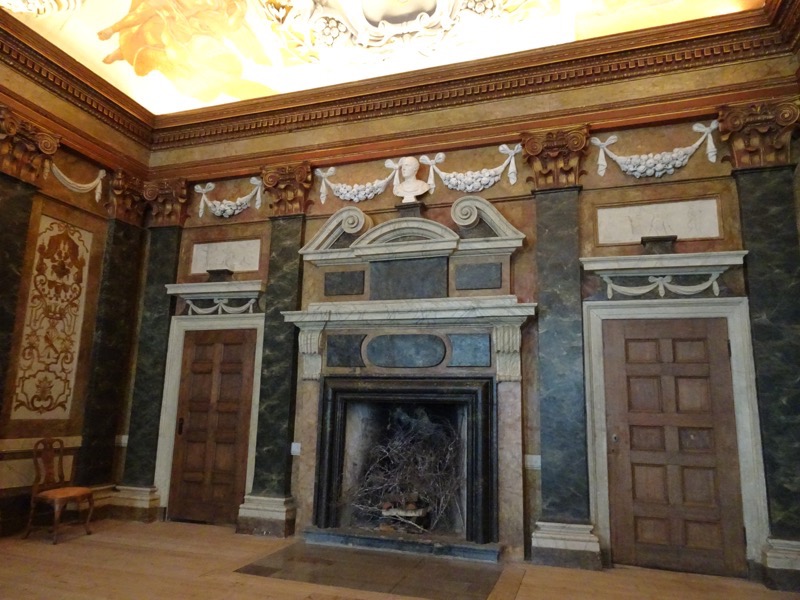
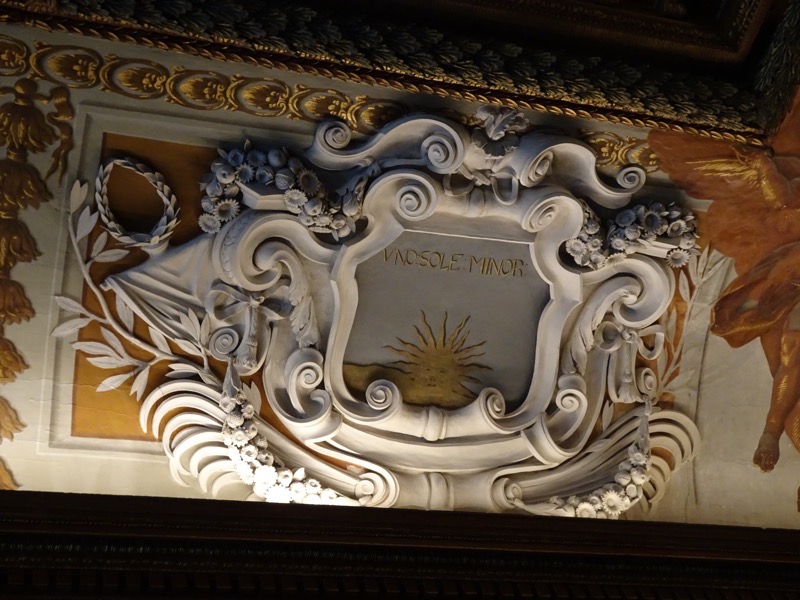
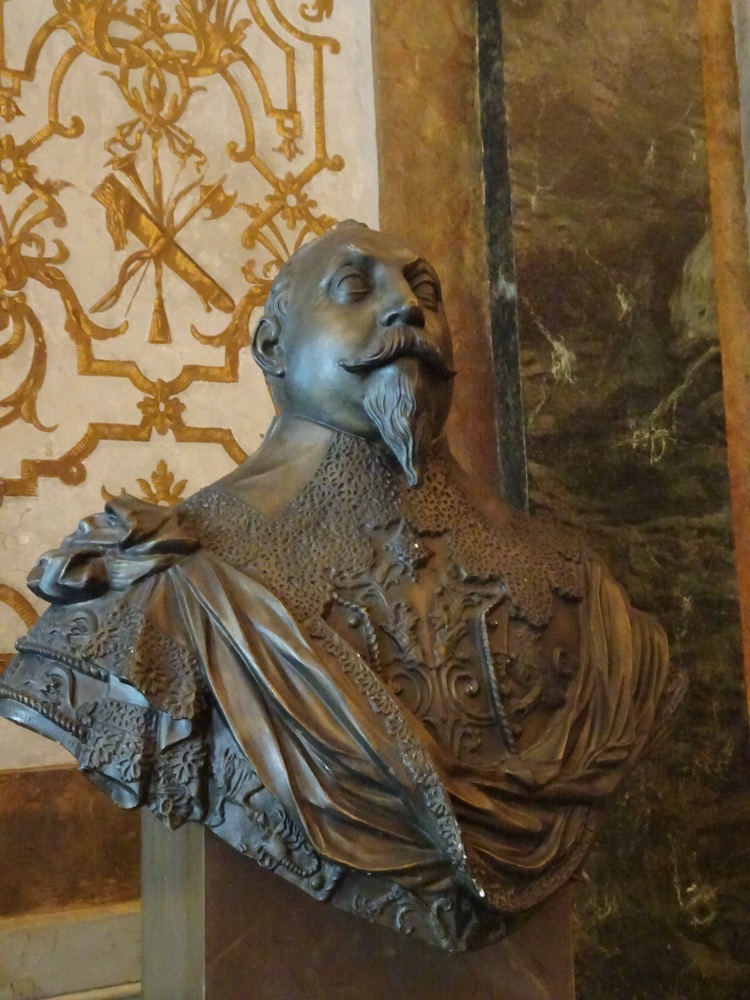 View over the baroque gardens as seen from the palace windows.
View over the baroque gardens as seen from the palace windows.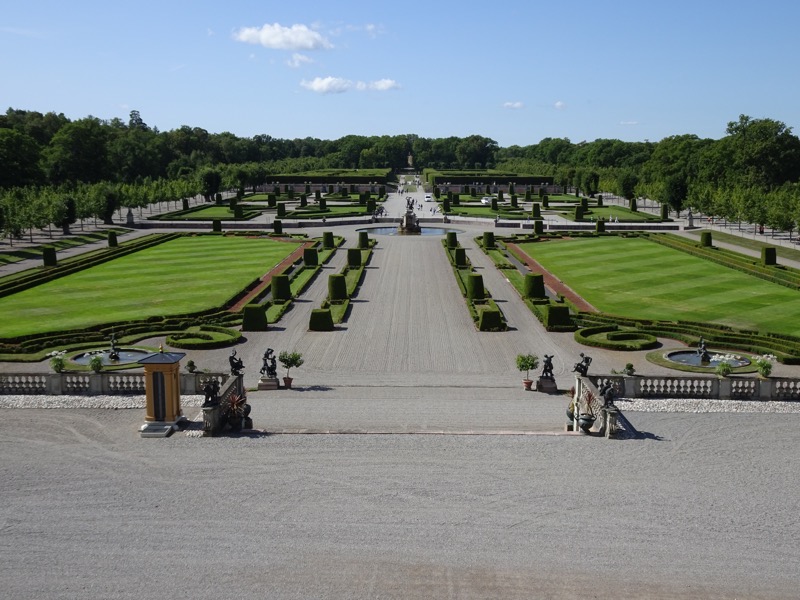
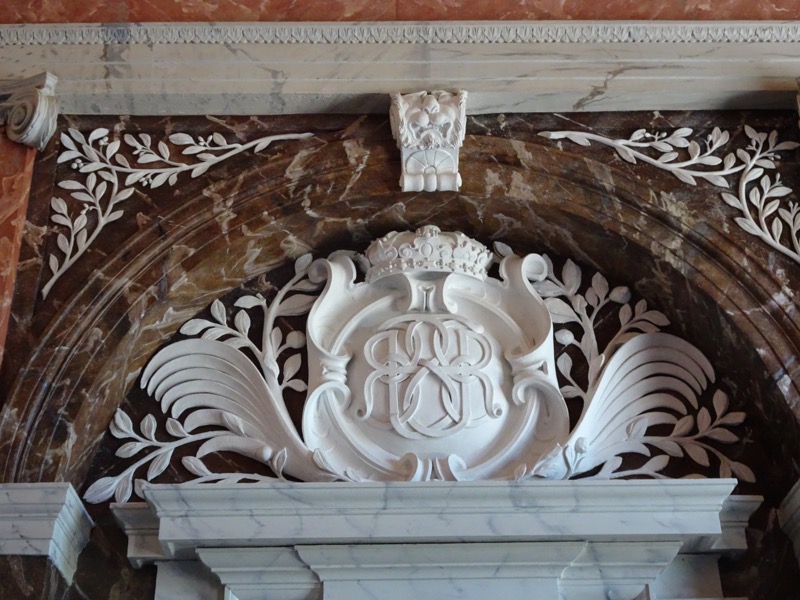
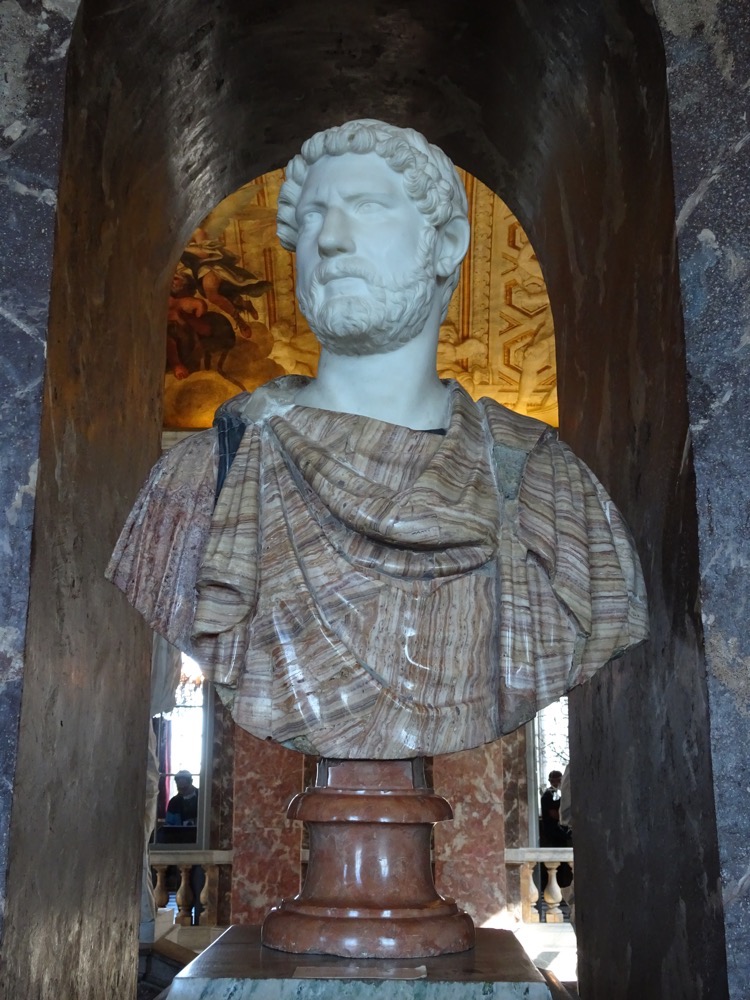 Odd littel chamber under the palace, show casing blue and white china.
Odd littel chamber under the palace, show casing blue and white china.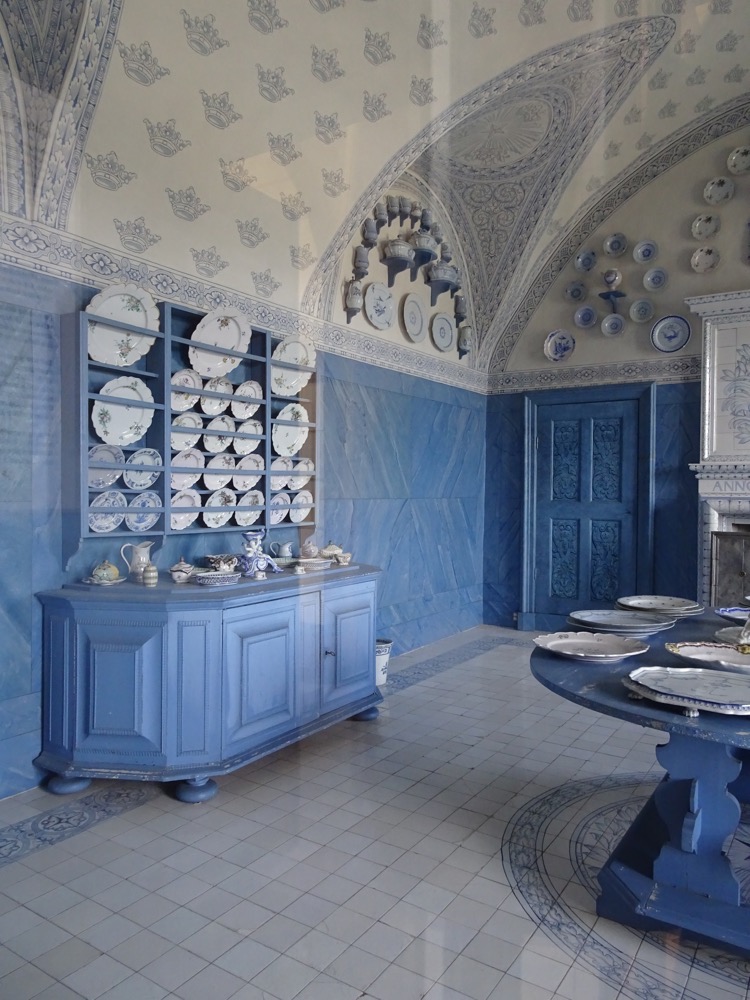
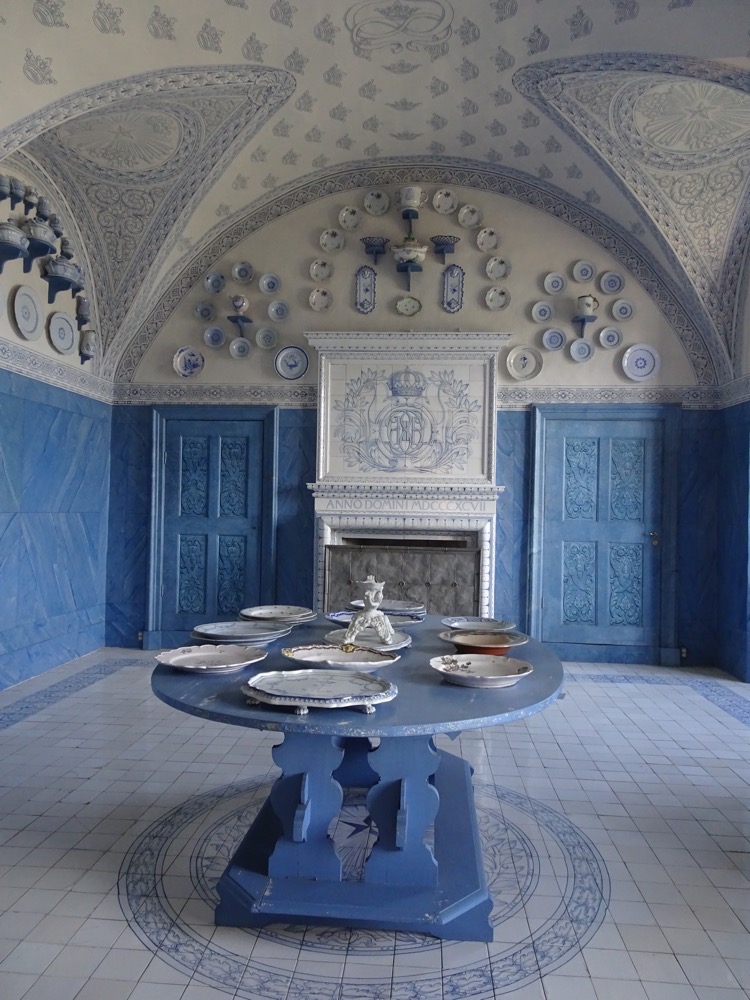
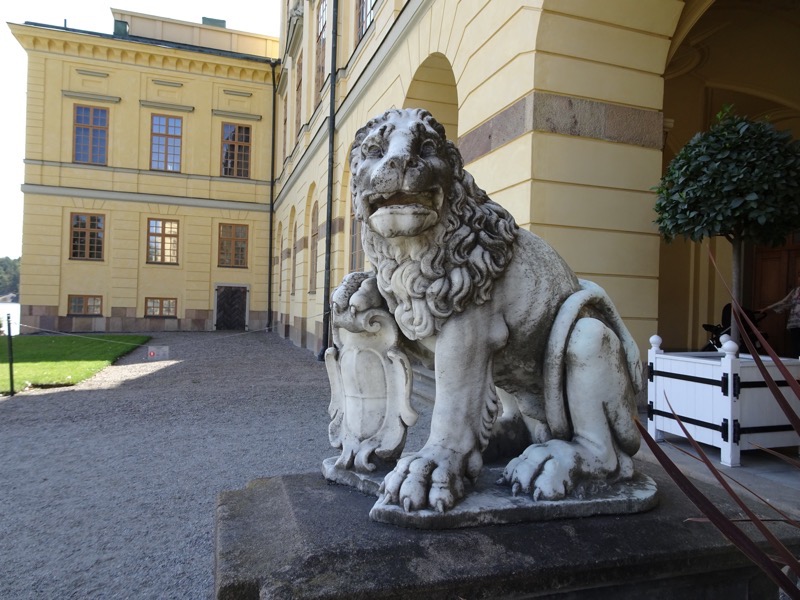
After my visit to the Palace, I showed an impressive lack of competence on the city’s public transport system as I took a bus, a train, and another bus back towards the city and the Historiska Museet, and promptly got lost. Never fear, I didn’t get too lost (all things being relative), and soon found my way back to the right side of the track.
From that quick stop, I thought I would lighten the mood this afternoon with a bit of silliness in the form of a visit to the ABBA Museum! It’s gotta be done, right?
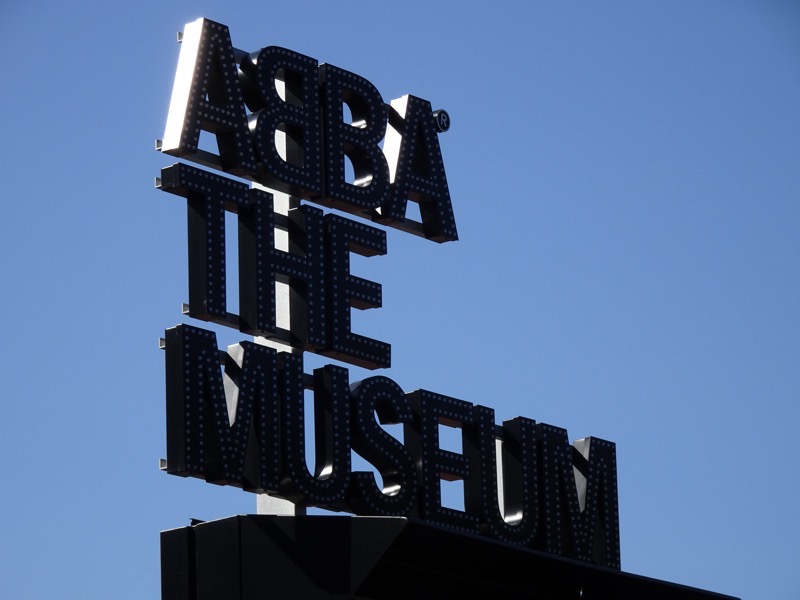 Another short bus ride, a short wait to buy a $38 ticket (*sticker shock ensues*), and then ushered into the depths of the building to the tune of ‘Ring, Ring’ to be greeted by a very neon’d and glitter’d kinda of ABBA shrine.
Another short bus ride, a short wait to buy a $38 ticket (*sticker shock ensues*), and then ushered into the depths of the building to the tune of ‘Ring, Ring’ to be greeted by a very neon’d and glitter’d kinda of ABBA shrine.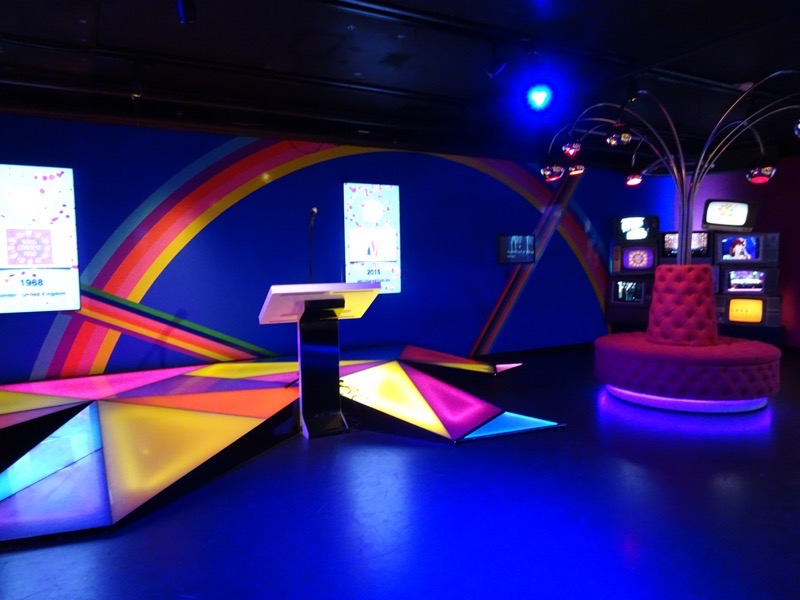
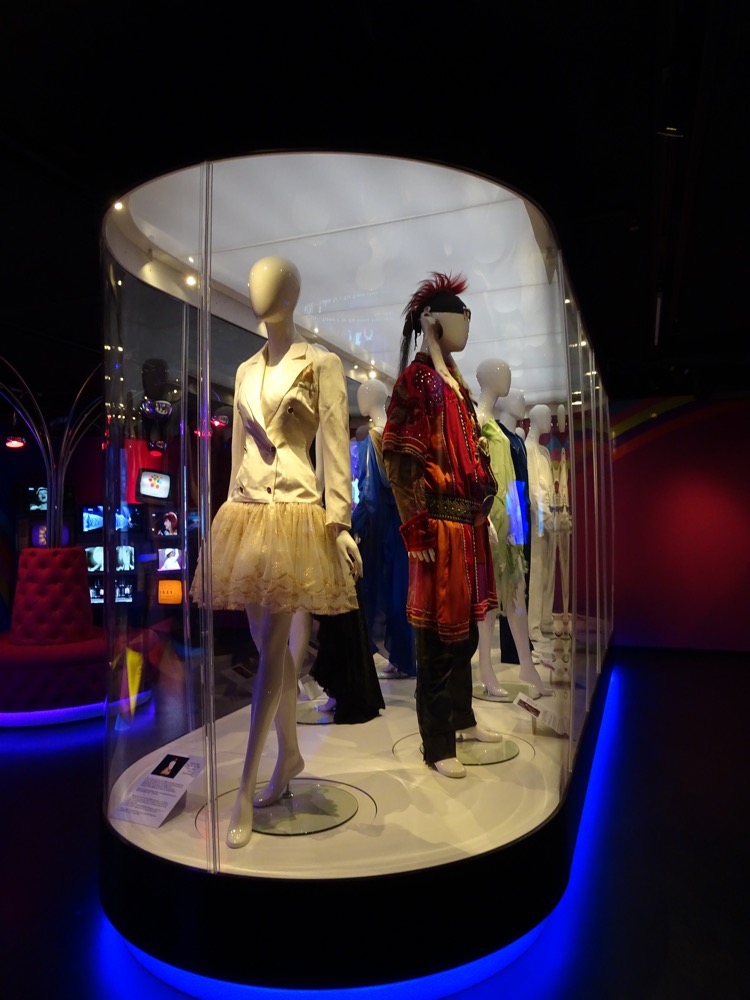 On display were many of the group’s outlandish costumes – deliberately designed to grab attention and cement ABBA in the psyche of the music loving public, for many years their costume design became more and more outlandish until Bjorn himself declared that they would wear anything ‘no sensible person would wear’.
On display were many of the group’s outlandish costumes – deliberately designed to grab attention and cement ABBA in the psyche of the music loving public, for many years their costume design became more and more outlandish until Bjorn himself declared that they would wear anything ‘no sensible person would wear’.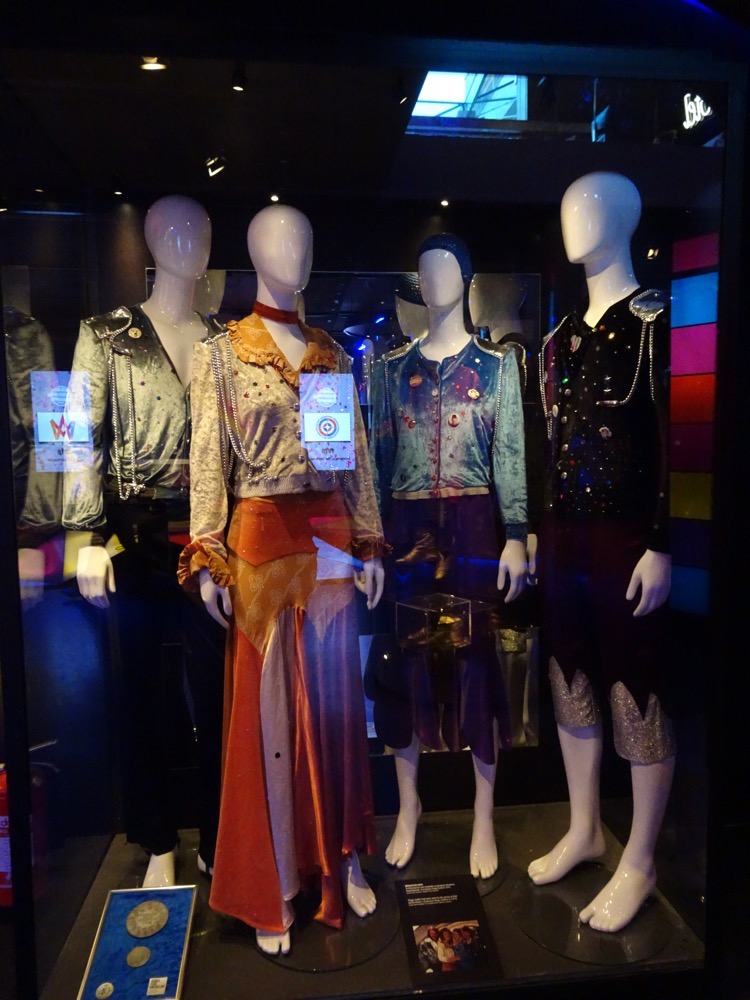 Insta-hit, ‘Ring, Ring’
Insta-hit, ‘Ring, Ring’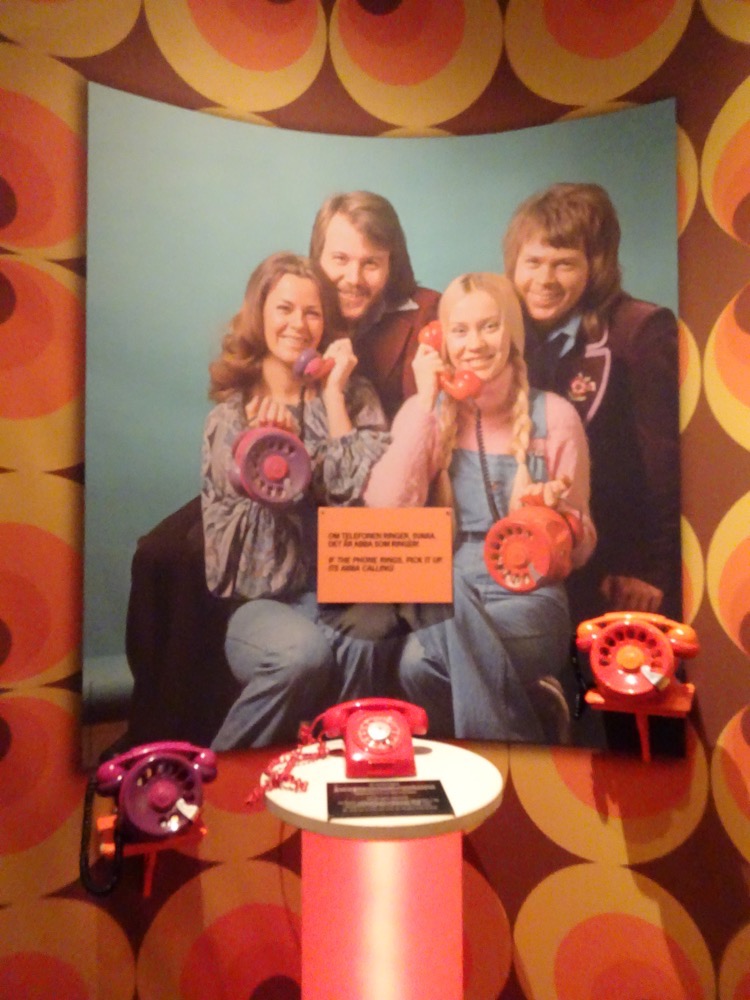 Costumes and instruments from their winning performance at the Eurovision competition that shot them to fame singing ‘Waterloo’.
Costumes and instruments from their winning performance at the Eurovision competition that shot them to fame singing ‘Waterloo’.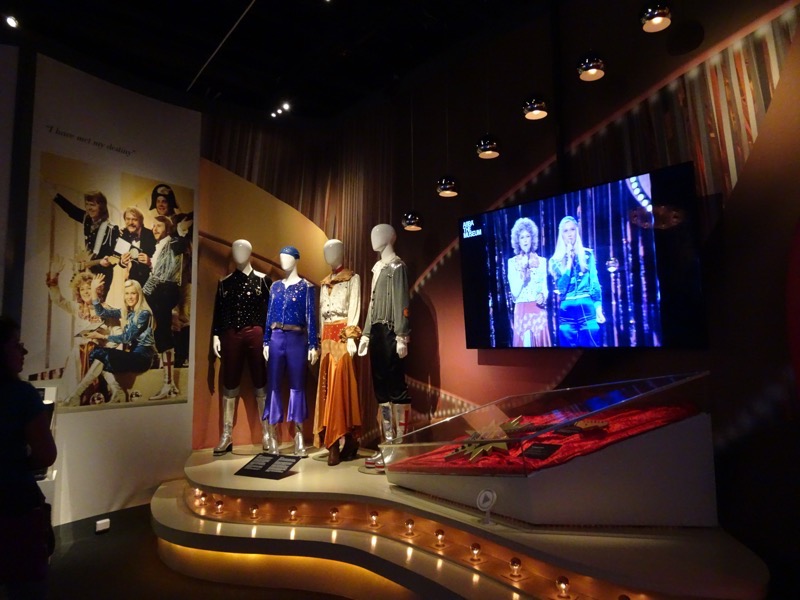
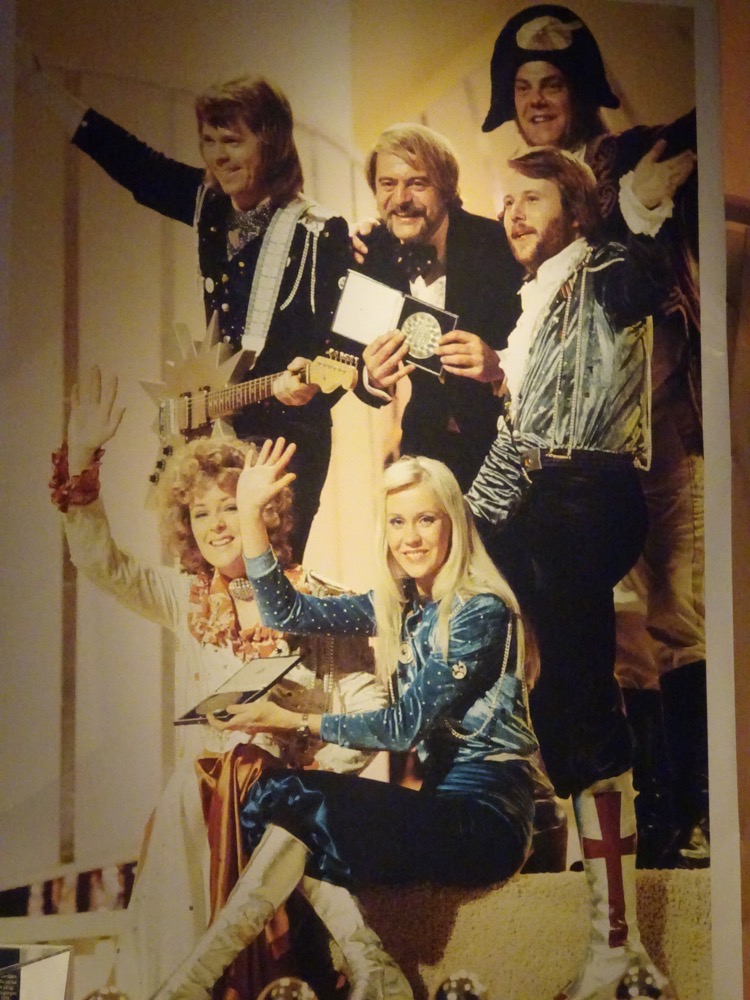
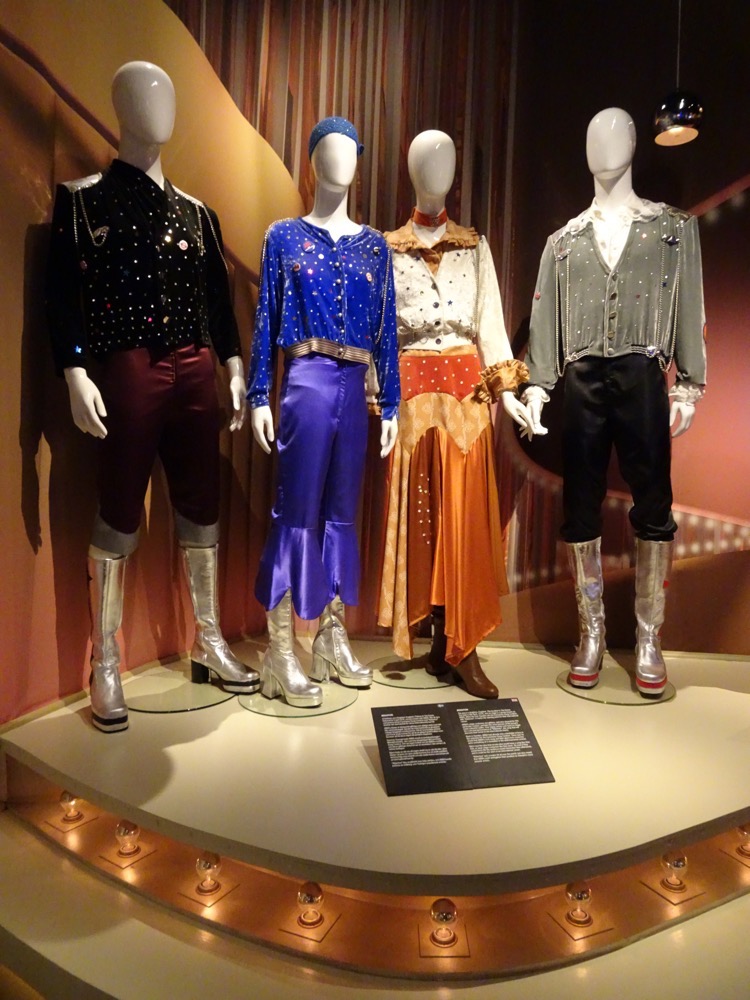
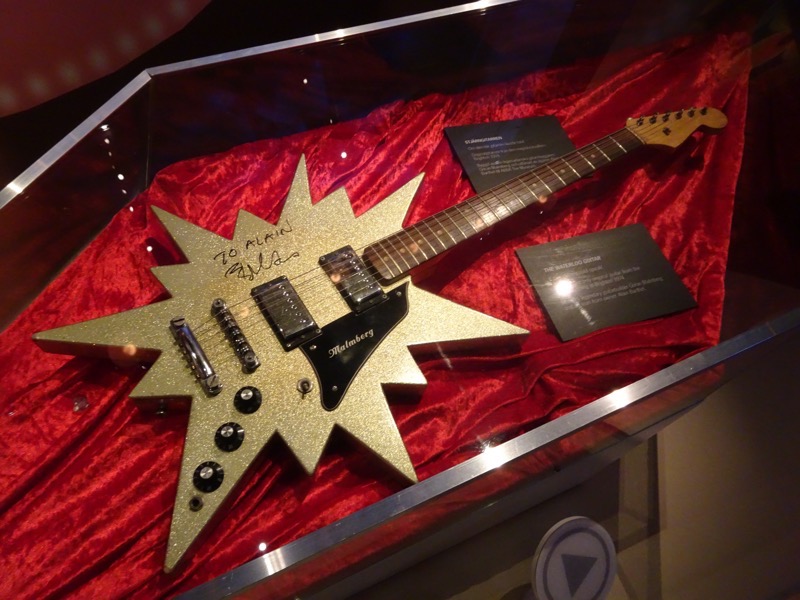
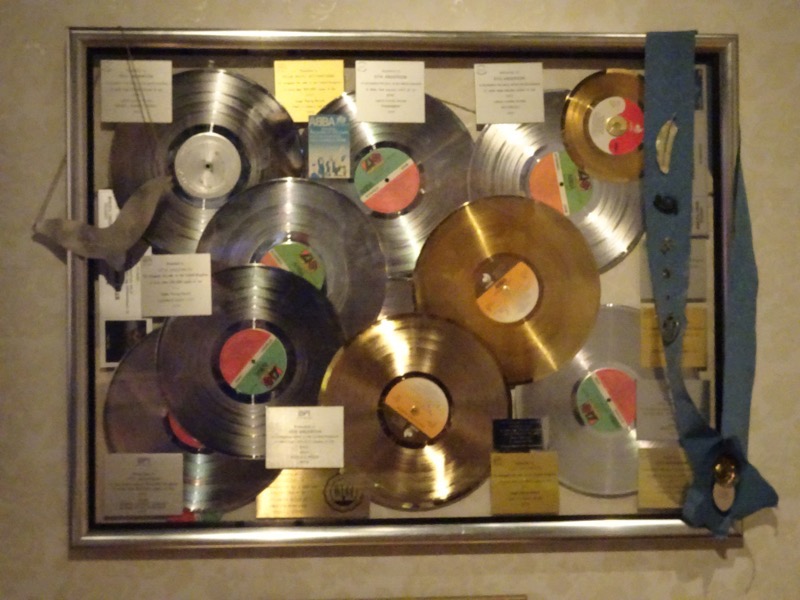 A restaged copy of their Polar Records office.
A restaged copy of their Polar Records office.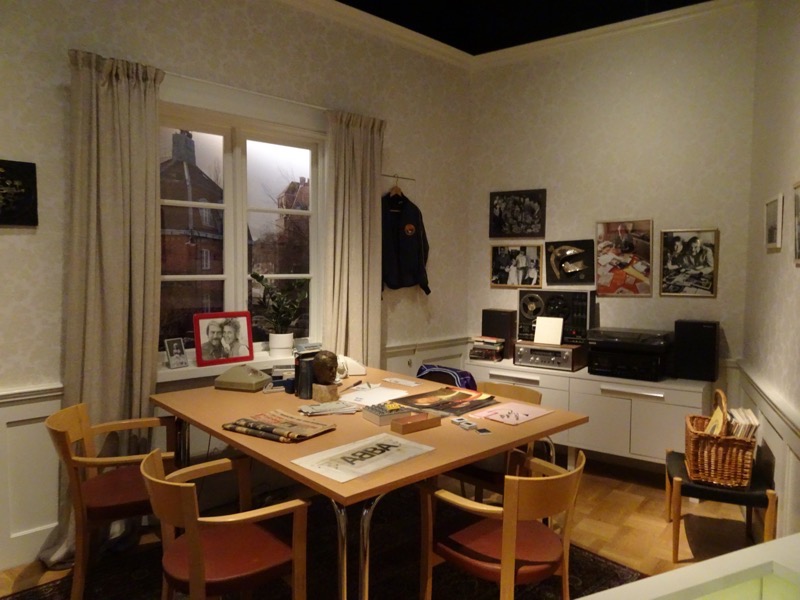 The Polar Records recording studio, complete with many of the band’s original instruments.
The Polar Records recording studio, complete with many of the band’s original instruments.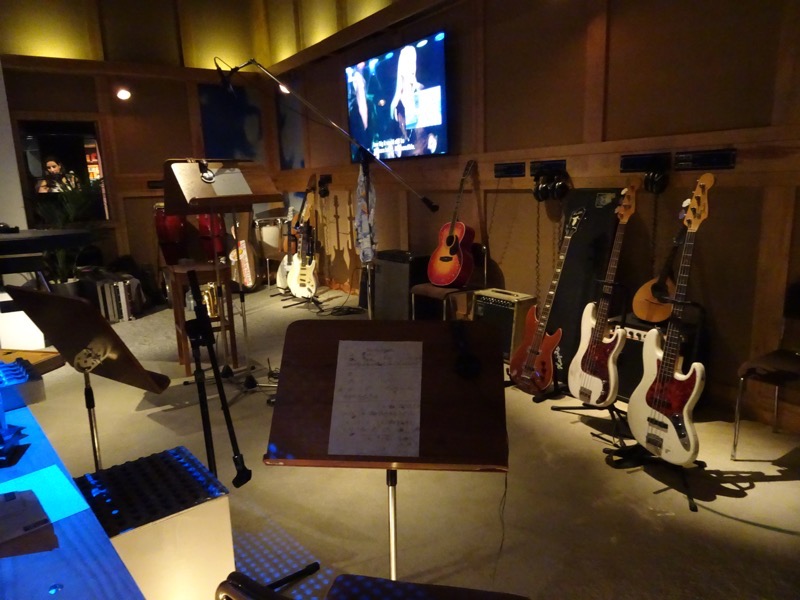
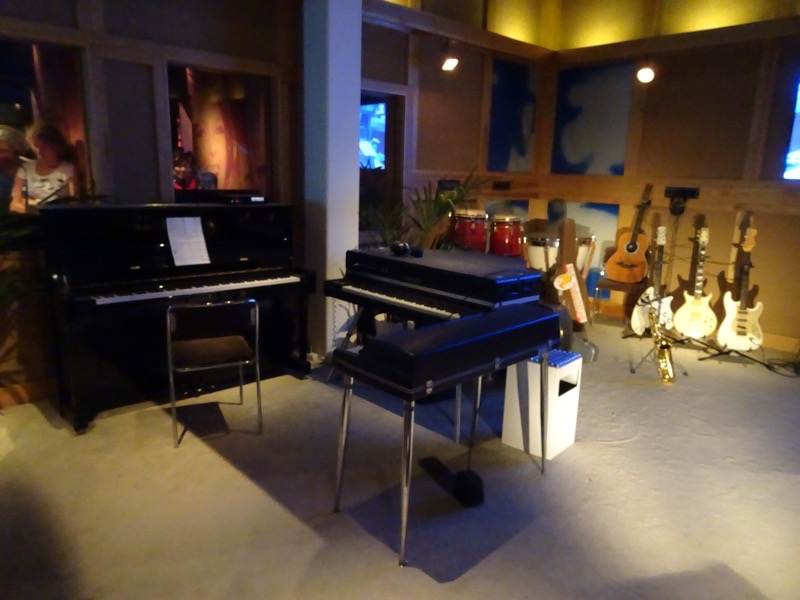 The quaint little white piano at Benny’s cottage in the Stockholm archipelago – many songs were written in this cottage by Benny and Bjorn.
The quaint little white piano at Benny’s cottage in the Stockholm archipelago – many songs were written in this cottage by Benny and Bjorn.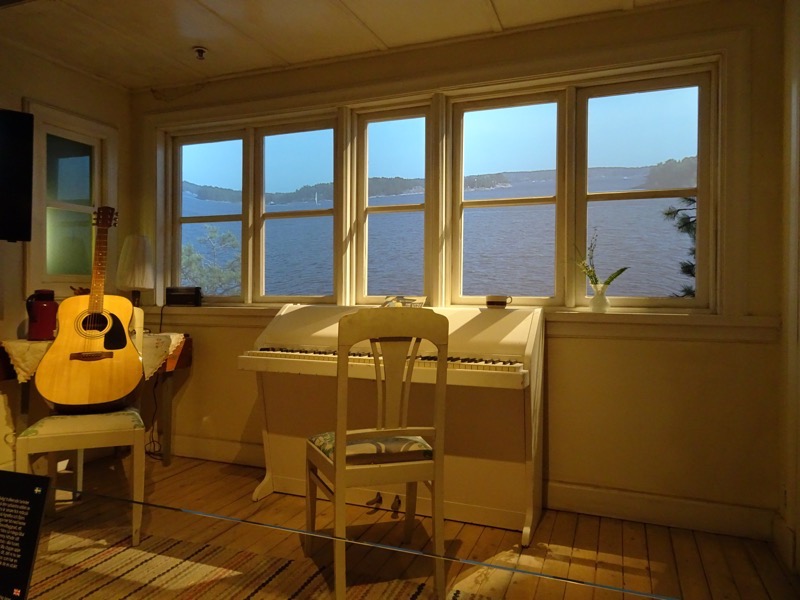 ABBA Mania.
ABBA Mania.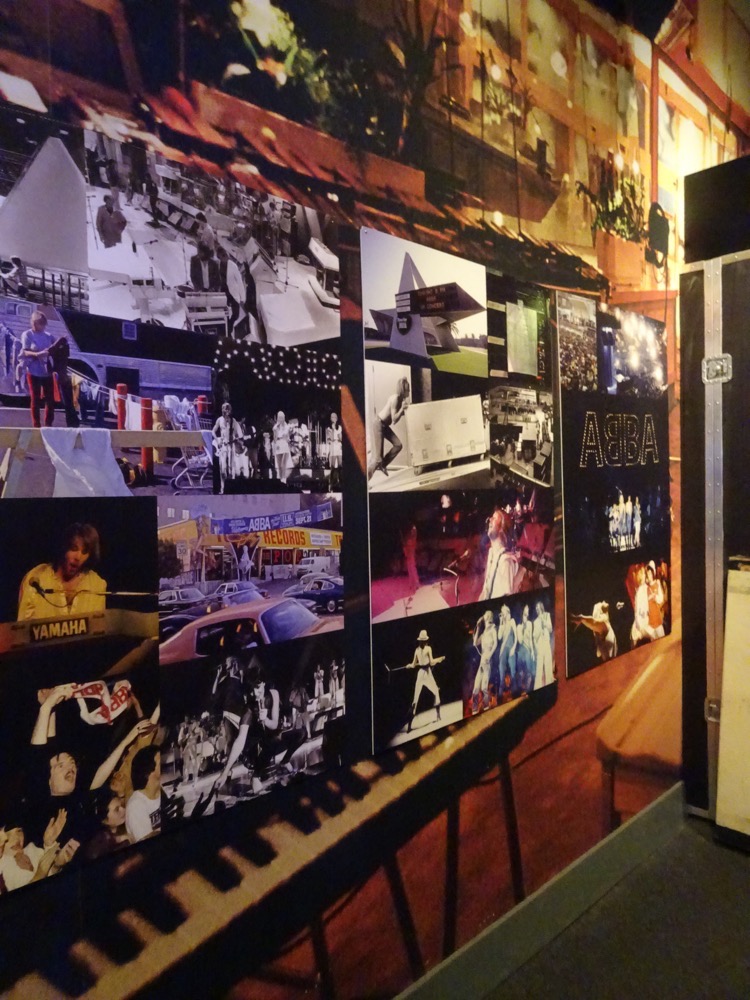 Early Merchandise – speaking of which, I had an ABBA t-shirt when I was a kid and I absolutely loved it … right up until it got lost when I was swimming once up at the Noosa River near Harry’s Hut.
Early Merchandise – speaking of which, I had an ABBA t-shirt when I was a kid and I absolutely loved it … right up until it got lost when I was swimming once up at the Noosa River near Harry’s Hut.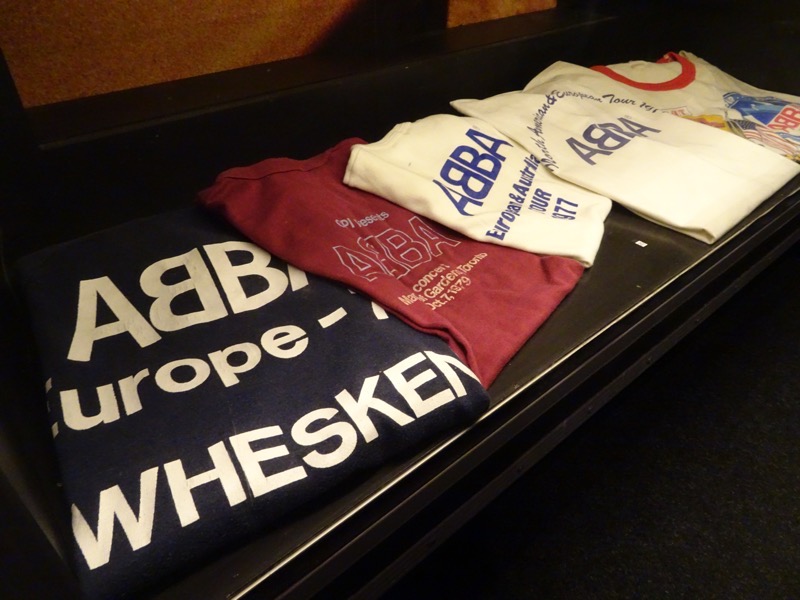 Tickets from early world tours.
Tickets from early world tours.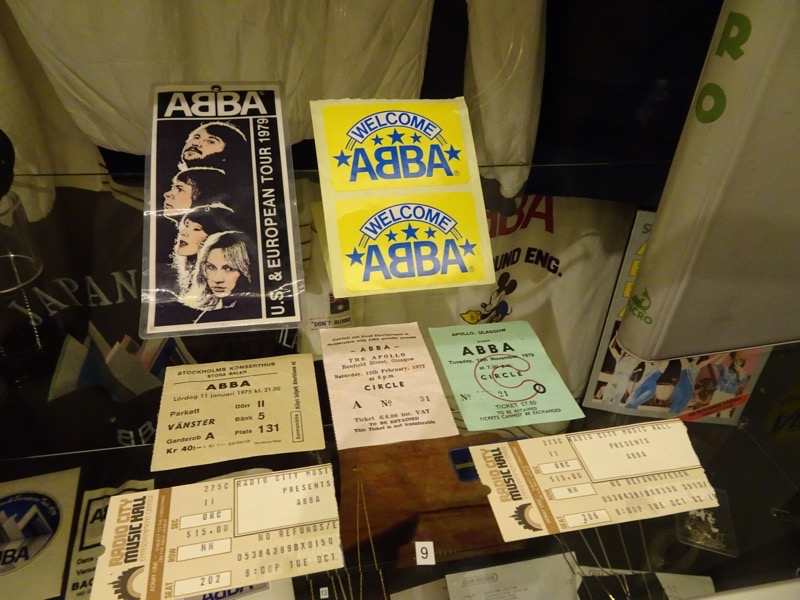 Fun little karaoke recording booths for fans to jump in an belt out a tune.
Fun little karaoke recording booths for fans to jump in an belt out a tune.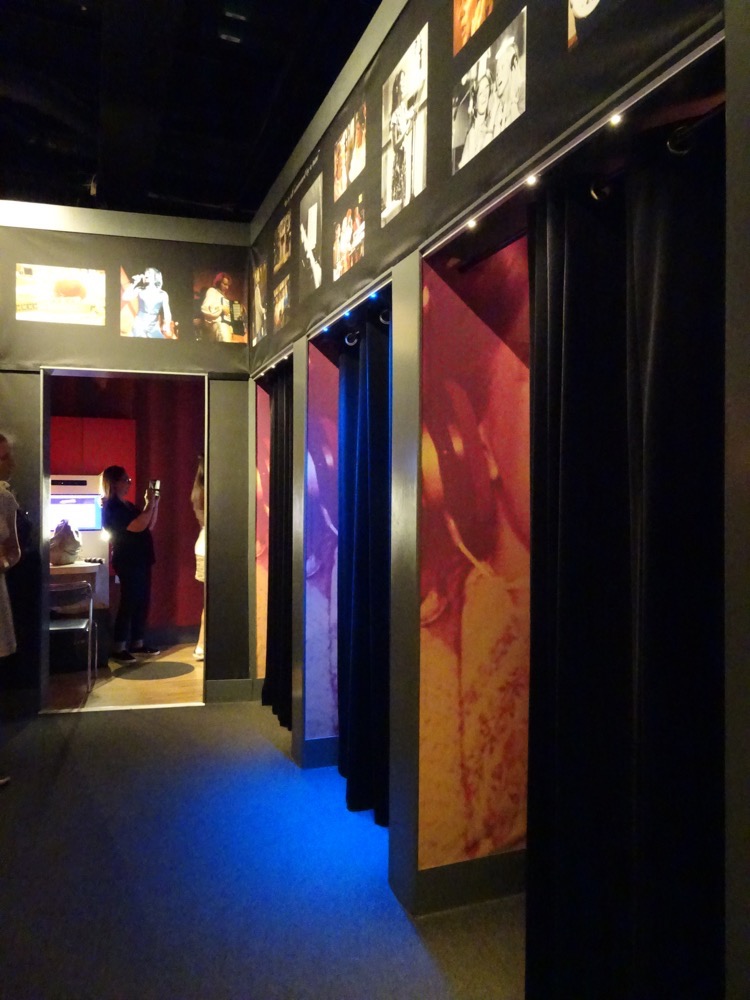 Costume design was an important part of the band’s stage appeal.
Costume design was an important part of the band’s stage appeal.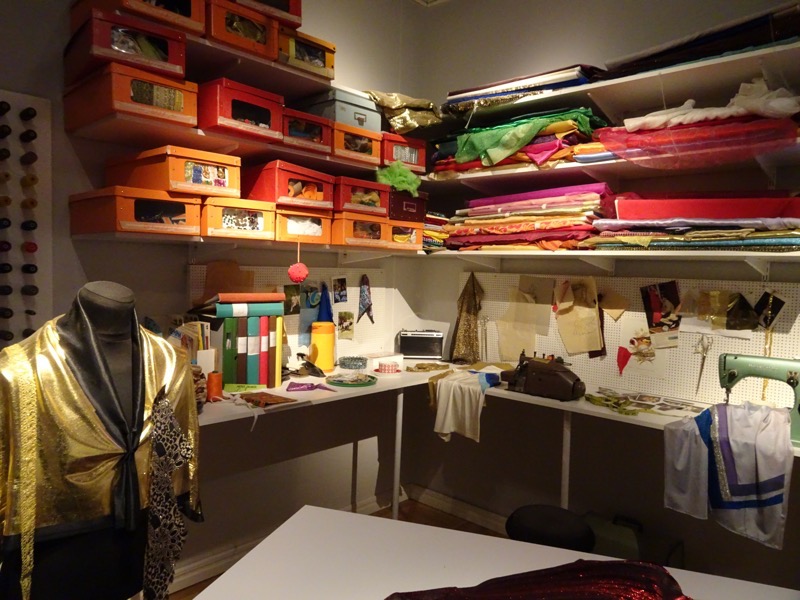 The Arrival helicopter.
The Arrival helicopter.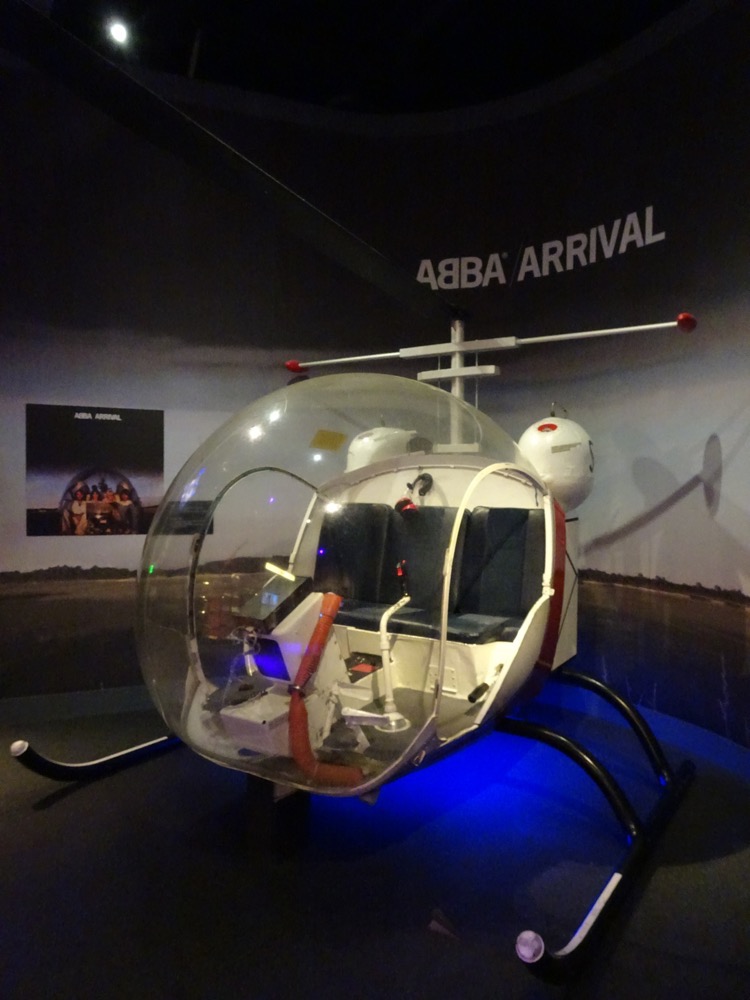
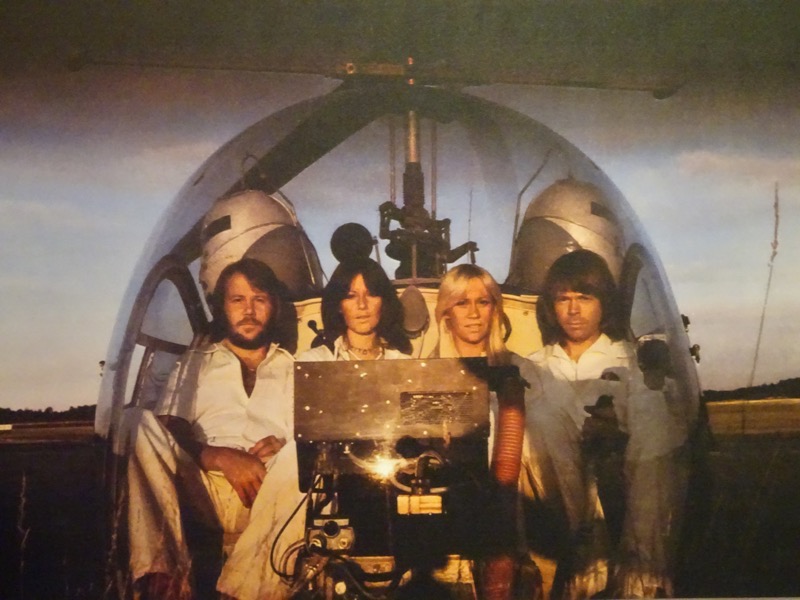 More merchandise.
More merchandise.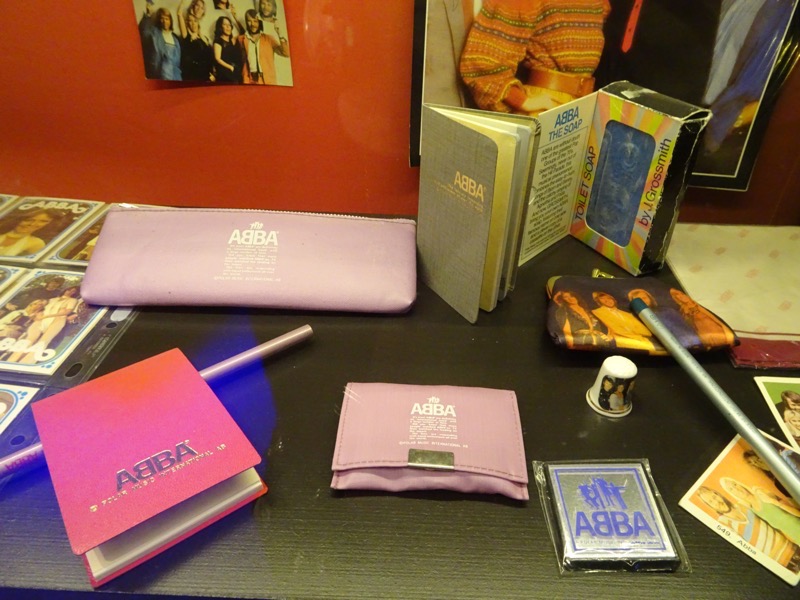
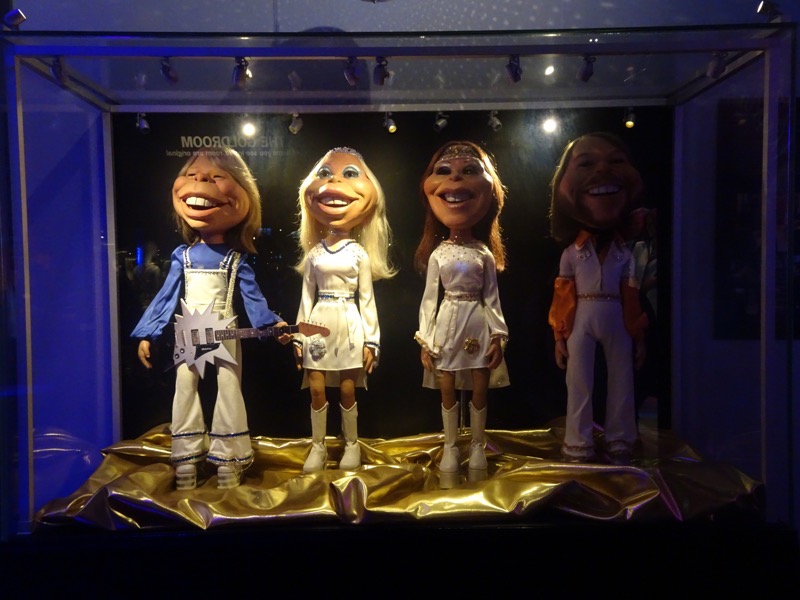 Lifesized models looking fabulous in skin tight white lycra… like a rock star! 😉
Lifesized models looking fabulous in skin tight white lycra… like a rock star! 😉 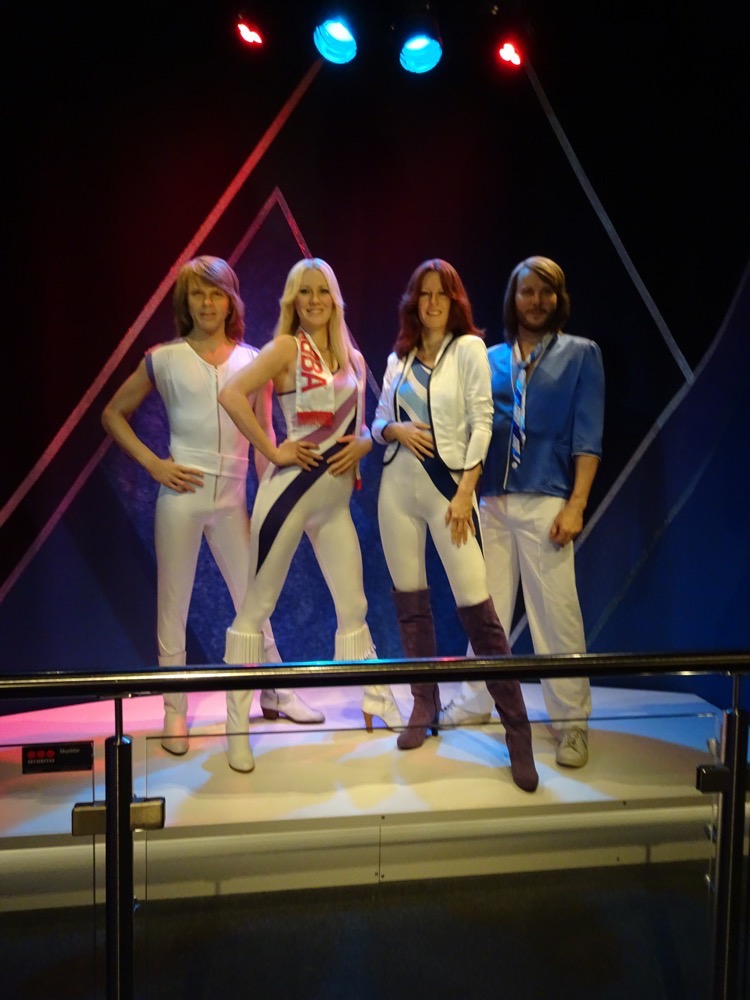 Walls lined in ABBA LPs and singles… I imagine this is quite a valuable collection.
Walls lined in ABBA LPs and singles… I imagine this is quite a valuable collection.
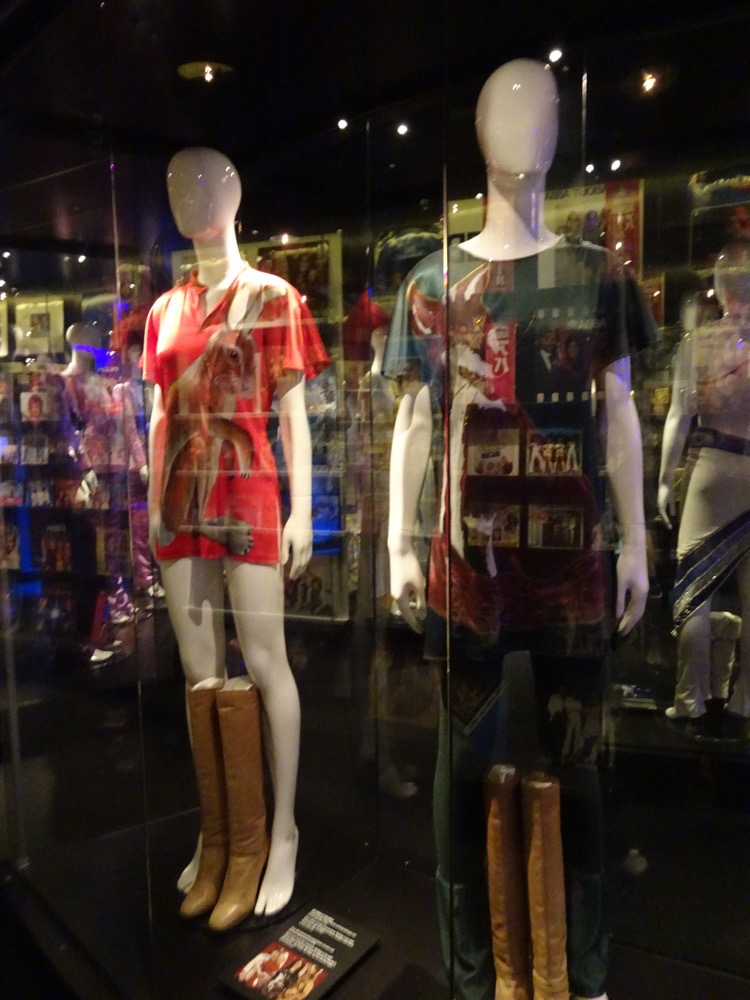 More crazy costumes.
More crazy costumes.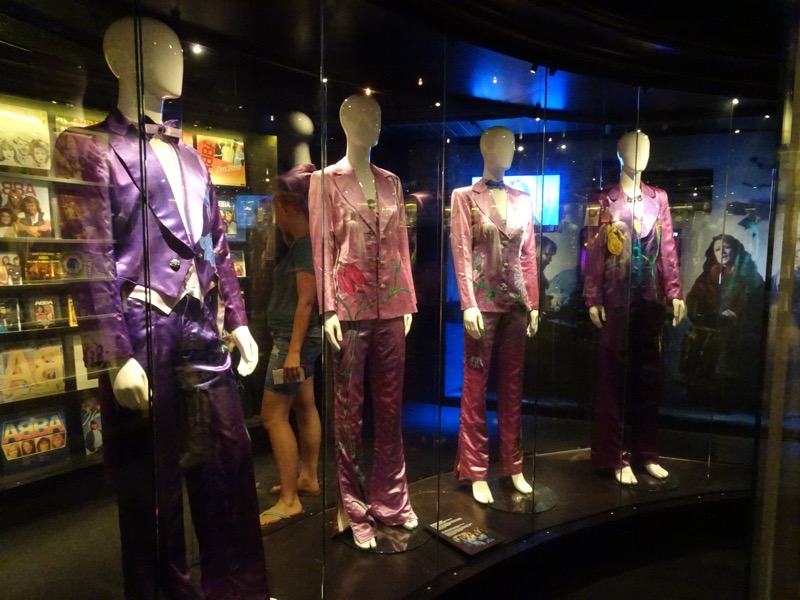
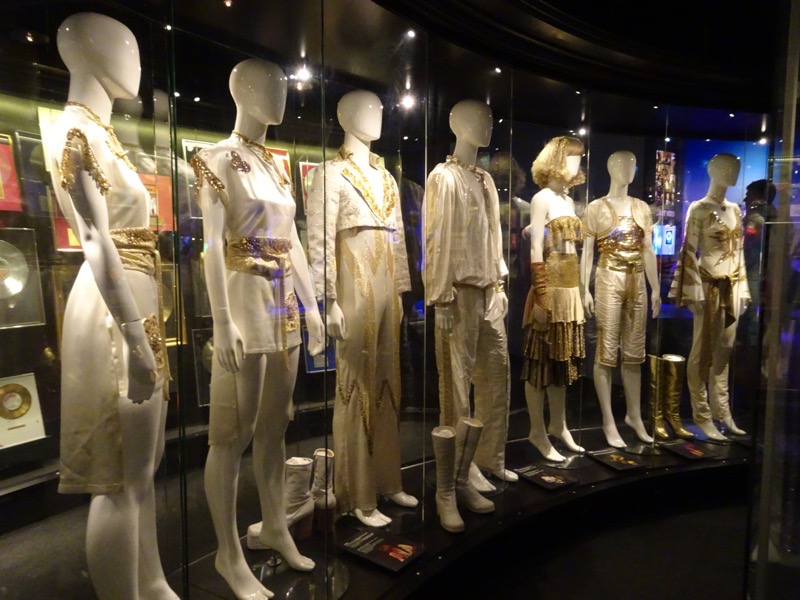 A wall literally covered in gold records for album sales world-wide. Including a few from Australia for selling millions of records.
A wall literally covered in gold records for album sales world-wide. Including a few from Australia for selling millions of records.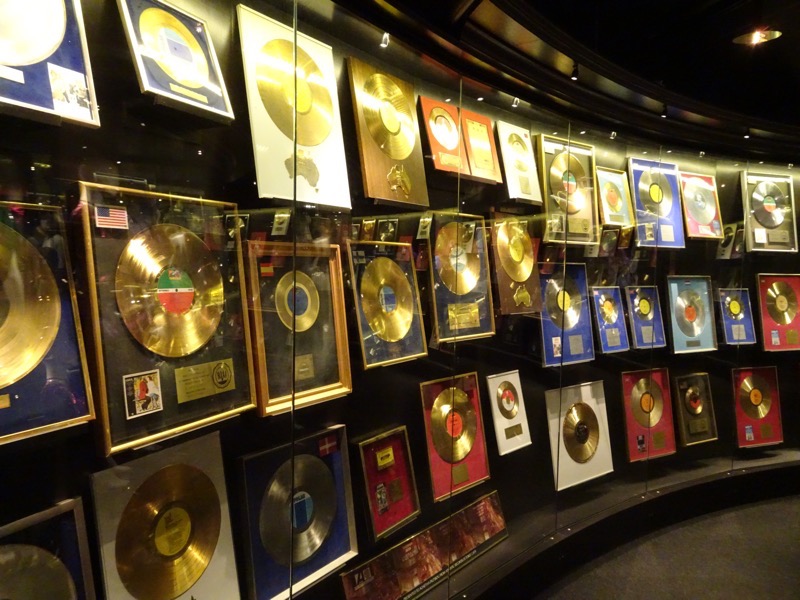
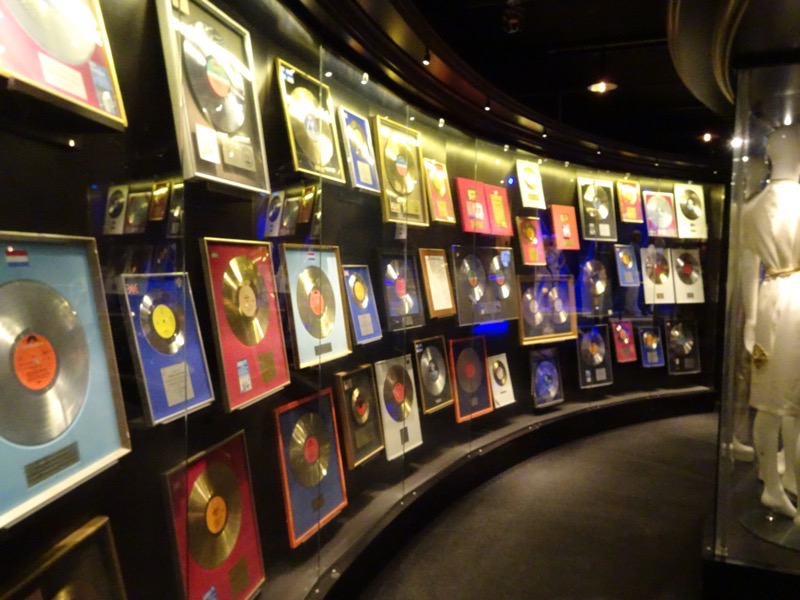
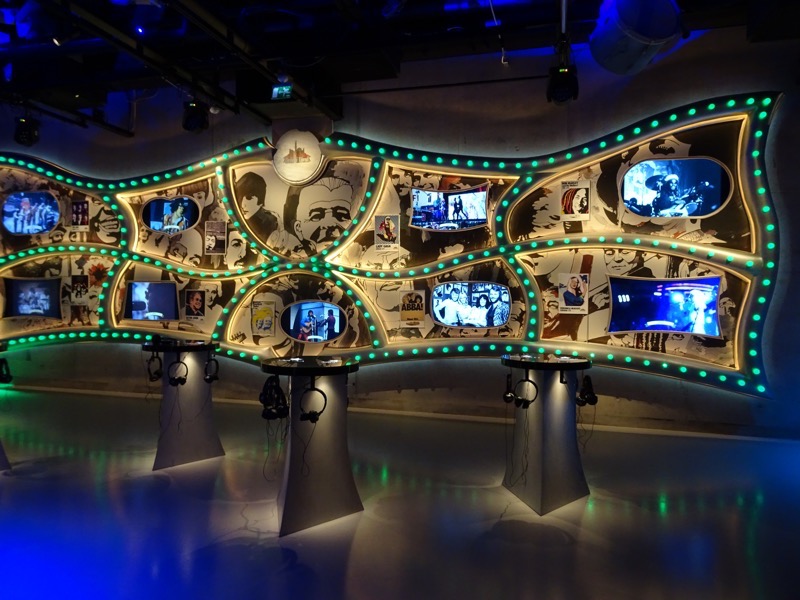 Golden cassettes celebrating cassette sales – I didn’t even know they did this! Many of Angus’ peers have probably never seen a cassette… “music just comes by download doesn’t it, Mum?”
Golden cassettes celebrating cassette sales – I didn’t even know they did this! Many of Angus’ peers have probably never seen a cassette… “music just comes by download doesn’t it, Mum?”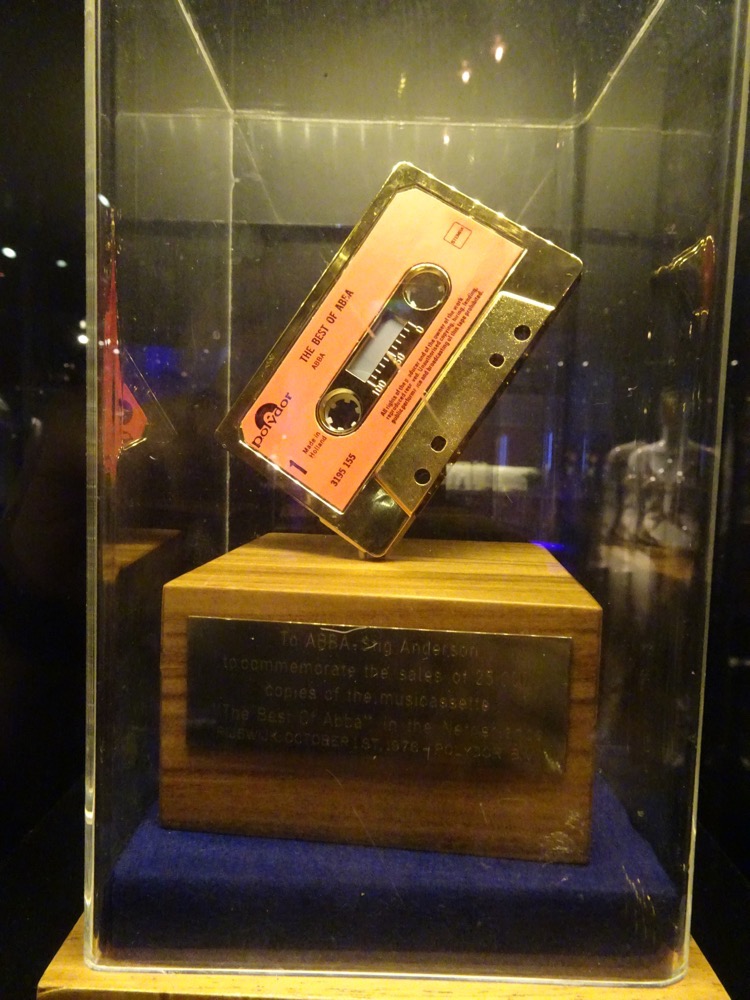 The displays were quite impressive and a lot of fun. The music, the sounds, the costumes, the colours all brought back memories for everyone who enters.
The displays were quite impressive and a lot of fun. The music, the sounds, the costumes, the colours all brought back memories for everyone who enters.
And of course the obligatory museum gift shop…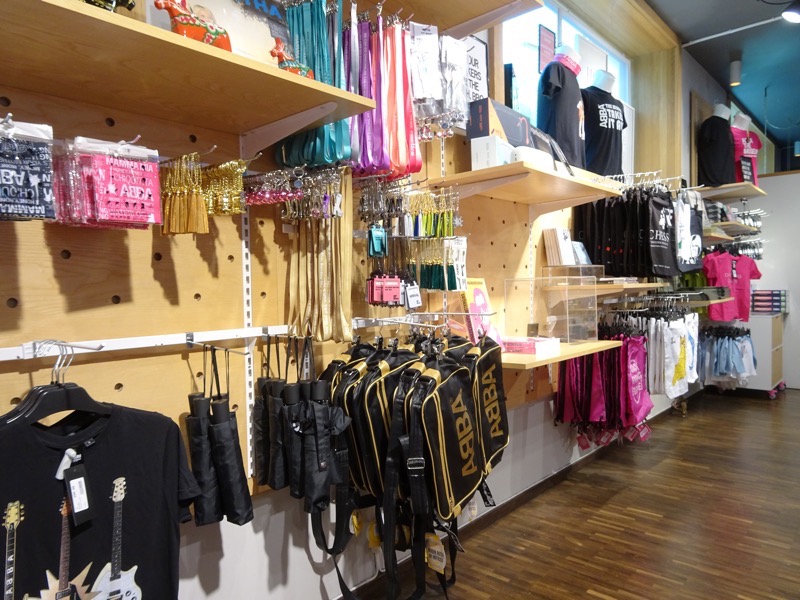
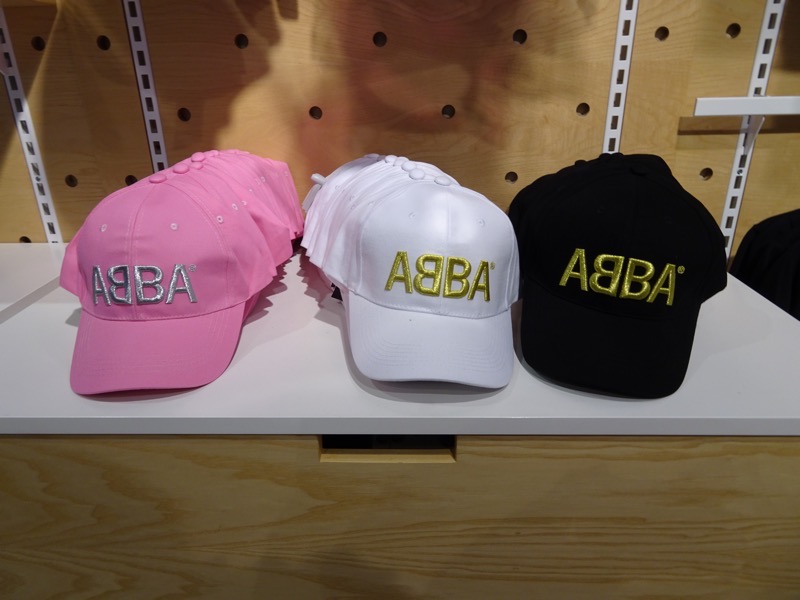
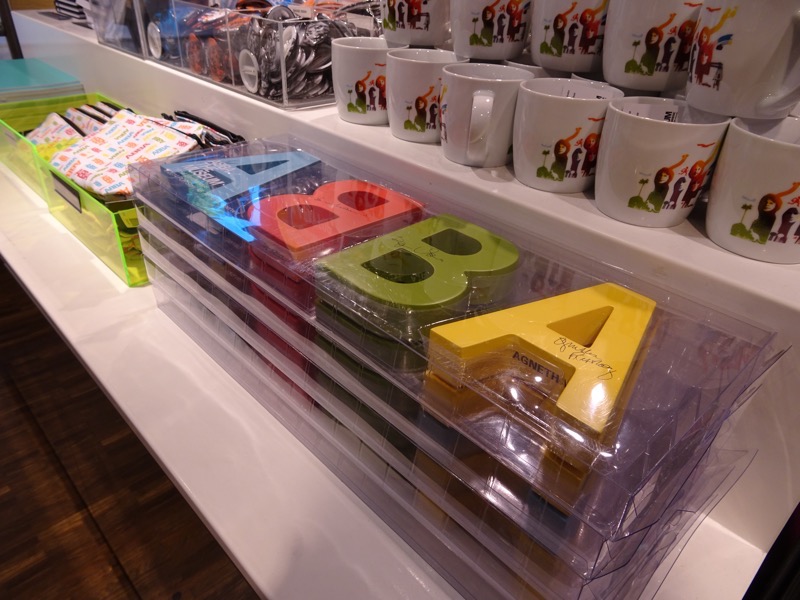 Should have bought a new ABBA t-shirt to replace the one I lost in 1980 😉
Should have bought a new ABBA t-shirt to replace the one I lost in 1980 😉 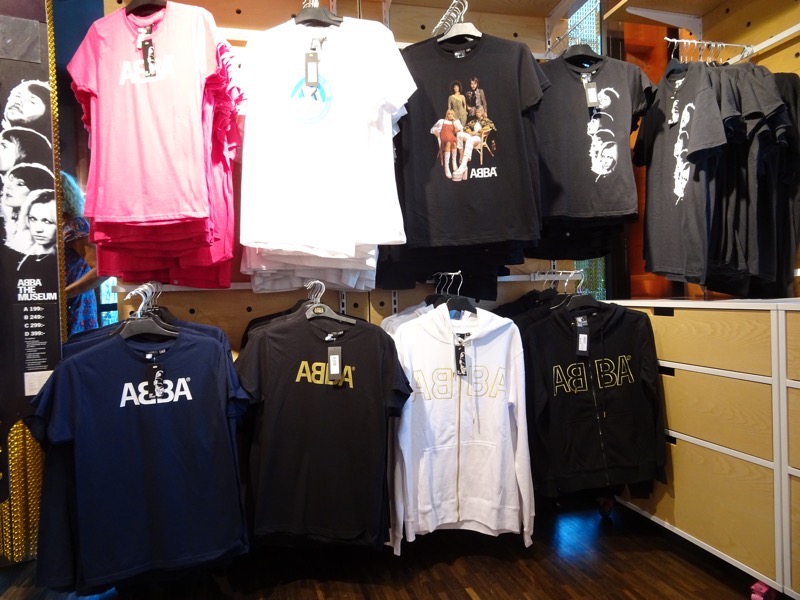
The overwhelming impression that I gained from visiting the ABBA museum was, ‘How much fun was that band and their music?’ They were great. No wonder they now have a museum dedicated to them to honour their contributions to music.
I’d like to see Beyonce or Snoop Dog trying to flog merchandize at their own museum FIFTY YEARS from their hey day. Well done, ABBA.
After this, I went to meet up with Mr K back in the Gamla stan just in time to see the change of the guard at the Royal Palace. We had thought we would come by, have some dinner, grab a few drinks and people watch for a while in the main square.
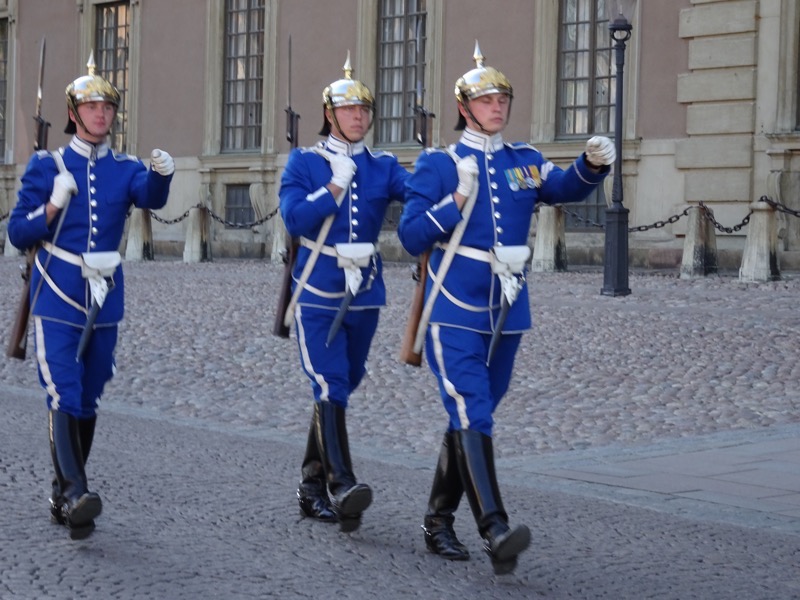
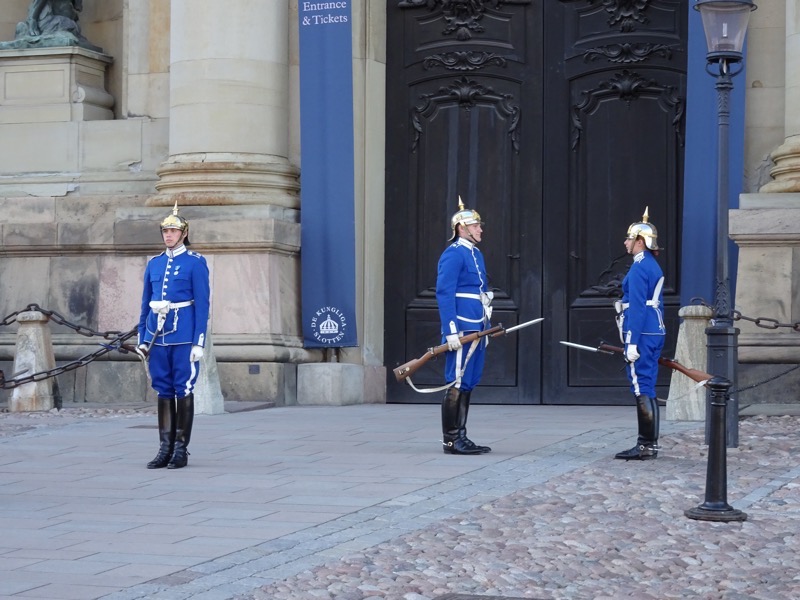
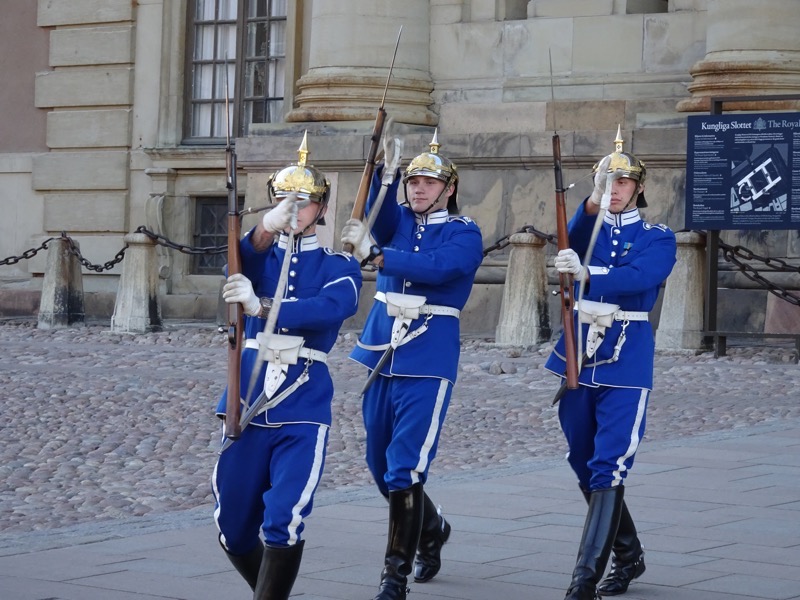
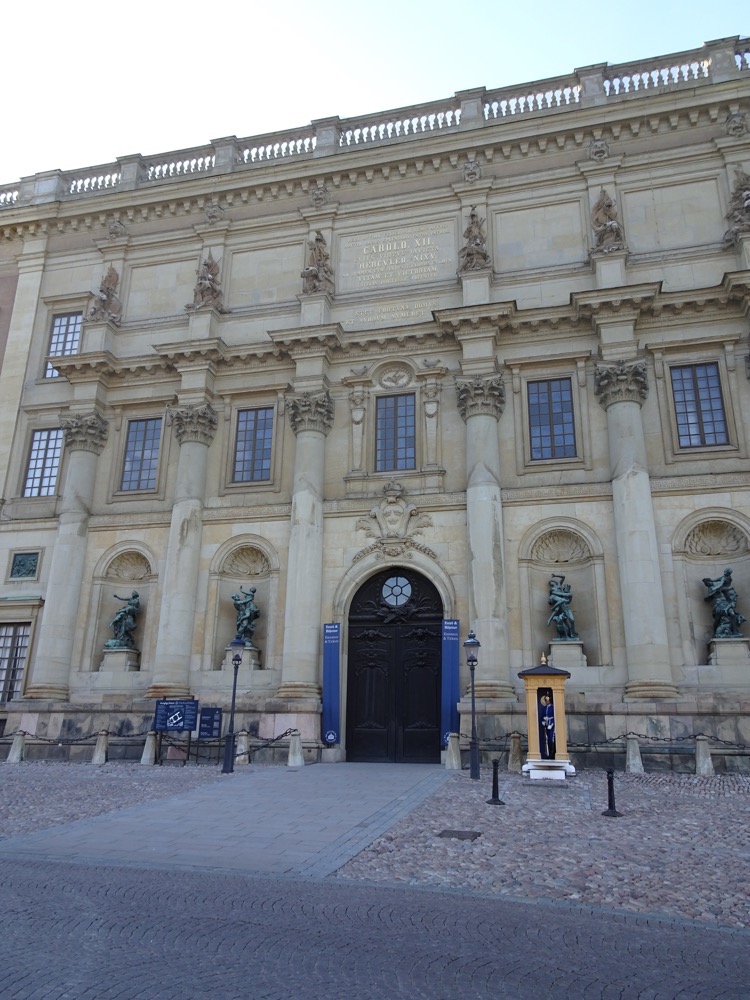 We’ve had a lovely time in Sweden – the work conference went well, and has been extremely productive. I managed to squeeze in more museums that I thought was possible in my spare time, which has been wonderful. Now to pack up and get an early start for our transit to Copenhagen in the morning by train!
We’ve had a lovely time in Sweden – the work conference went well, and has been extremely productive. I managed to squeeze in more museums that I thought was possible in my spare time, which has been wonderful. Now to pack up and get an early start for our transit to Copenhagen in the morning by train!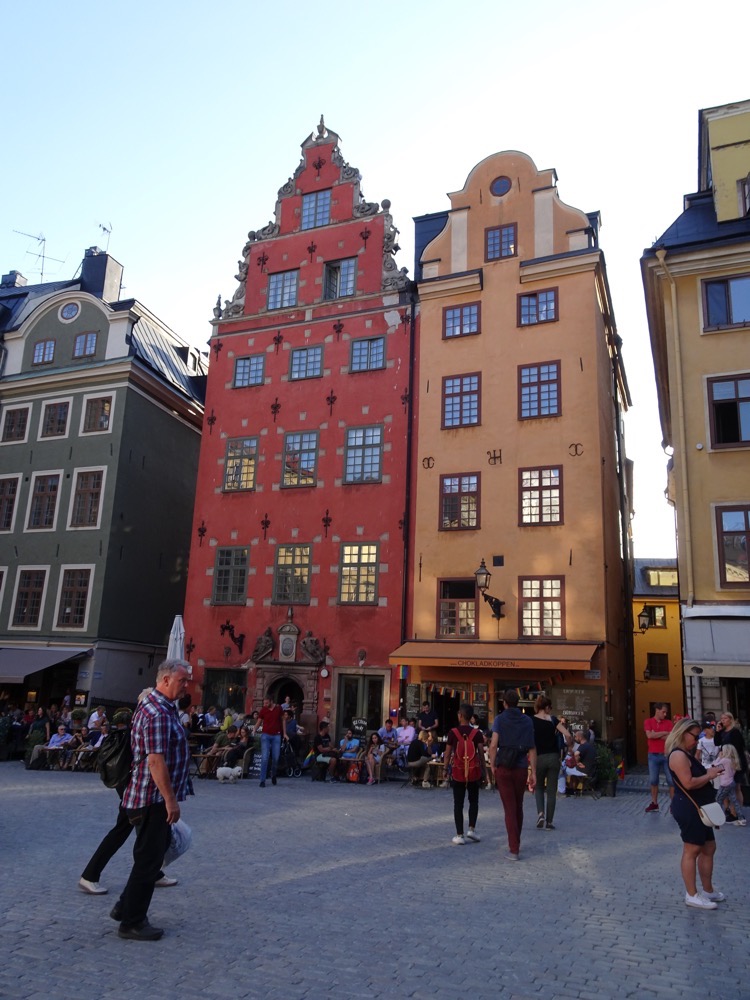
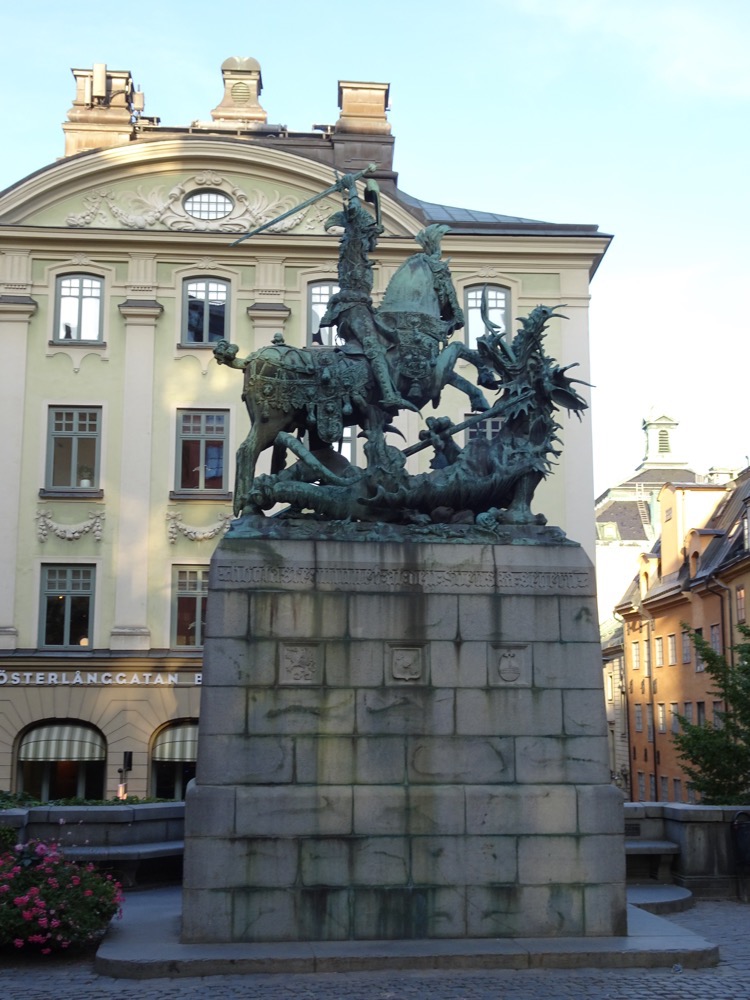

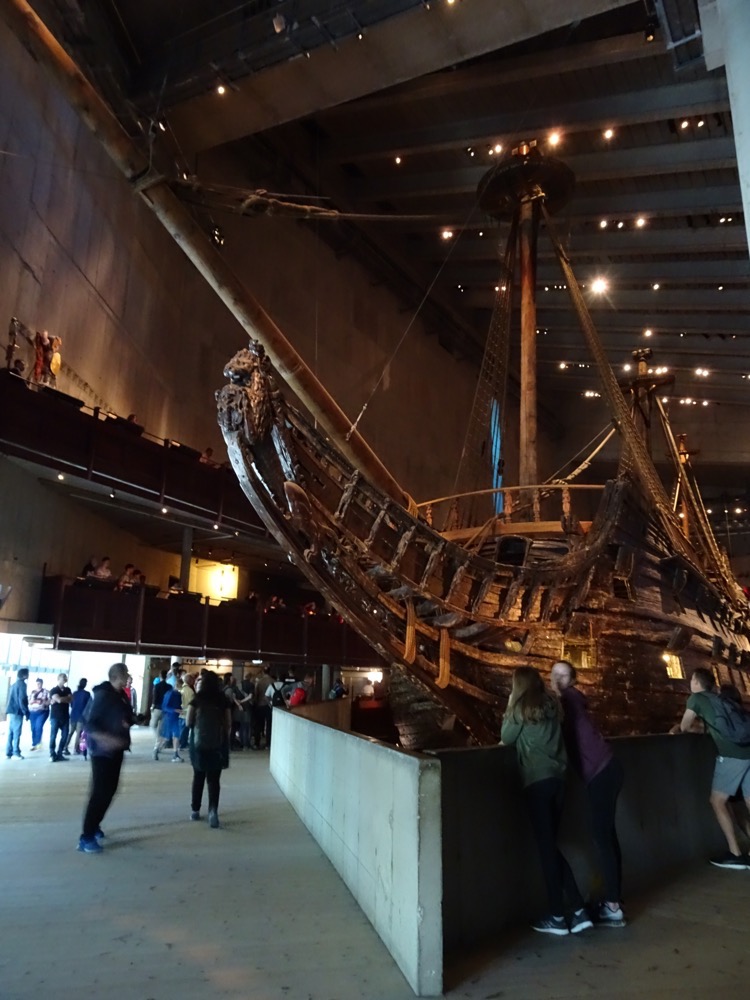 On August 10, everything was ready for the Vasa’s maiden voyage. Stockholmers turned out to see her sail from directly below the Royal Castle located on the island of Blasieholmen in the middle of town. The wind was from the south-west, and for the first few hundred meters the Vasa was pulled along using anchors. At Tranbodarna, the Captain, Sofring Hansson issued the order to set sail. The sailors climbed the rigging and set four of the Vasa’s ten sails. A salute was fired from the ships’ guns, and slowly she set off on her first voyage.
On August 10, everything was ready for the Vasa’s maiden voyage. Stockholmers turned out to see her sail from directly below the Royal Castle located on the island of Blasieholmen in the middle of town. The wind was from the south-west, and for the first few hundred meters the Vasa was pulled along using anchors. At Tranbodarna, the Captain, Sofring Hansson issued the order to set sail. The sailors climbed the rigging and set four of the Vasa’s ten sails. A salute was fired from the ships’ guns, and slowly she set off on her first voyage.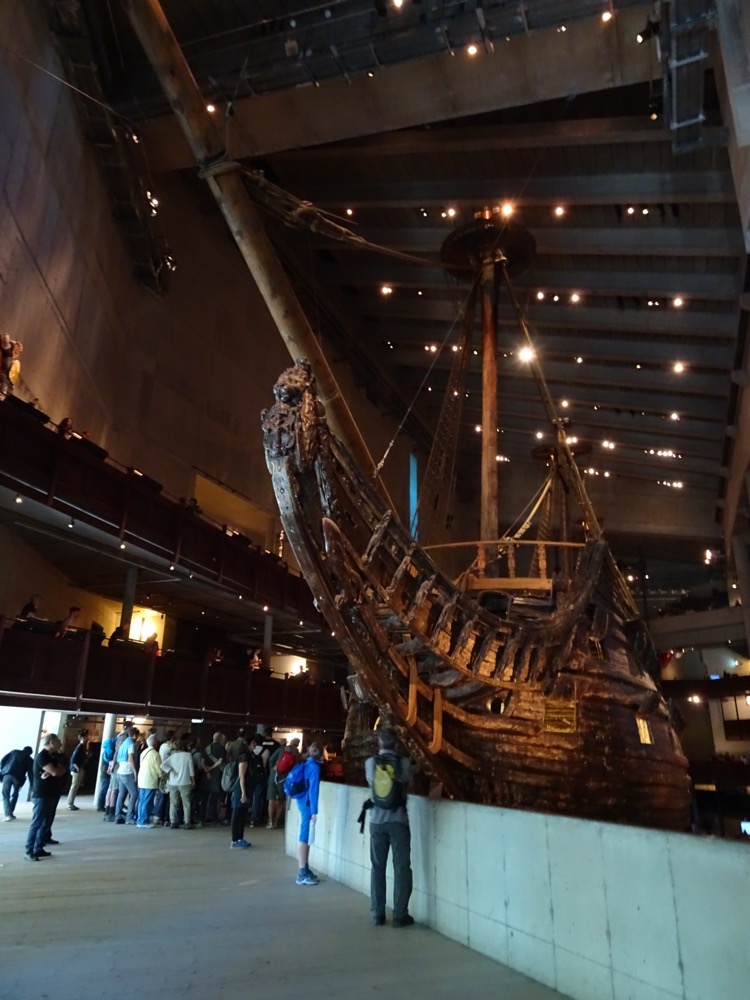 In a letter to the King, who was on campaign in Prussia, the council of the realm described the following events: ” When the ship left the shelter of Tegelviken, a stronger wind entered the sails and she immediately began to heel over hard to the lee side; she righted herself slightly until she approached Beckholmen, where she heeled right over and water gushed in through the (open) gun ports until she went to the bottom under sail, pennants and all.”
In a letter to the King, who was on campaign in Prussia, the council of the realm described the following events: ” When the ship left the shelter of Tegelviken, a stronger wind entered the sails and she immediately began to heel over hard to the lee side; she righted herself slightly until she approached Beckholmen, where she heeled right over and water gushed in through the (open) gun ports until she went to the bottom under sail, pennants and all.”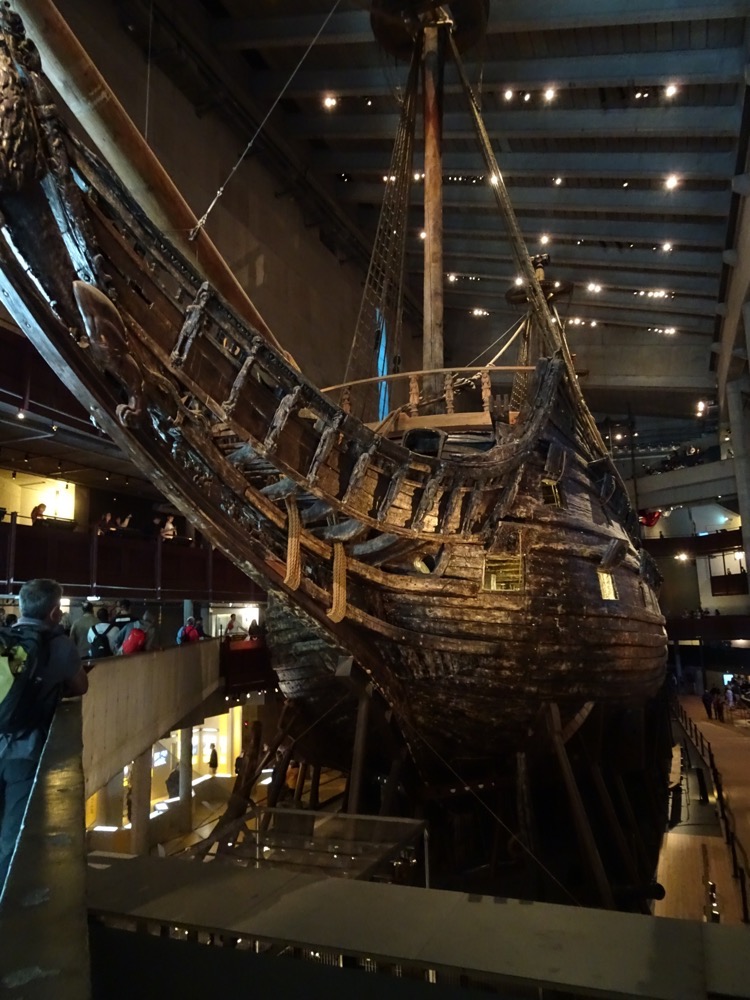 Stuck by a moderate gust of wind, the Vasa capsized and sank after a journey of 1,300 meters. Admiral Erik Jonsson was witness to the terrifying seconds on board when water poured in through the gun ports, after the first heel, he had gone below decks to ensure the canon were properly secured and returned to the just as the water had risen so high as to sweep loose the staircases. While the Vasa would have been crewed by nearly 400 people, there were fortunately only fifty people on board who are believed to have gone down with the Vasa that day… many of those, however, were the wives and children of the few crew that were required on the ship to move it from the Royal Palace to the Navy dockyard.
Stuck by a moderate gust of wind, the Vasa capsized and sank after a journey of 1,300 meters. Admiral Erik Jonsson was witness to the terrifying seconds on board when water poured in through the gun ports, after the first heel, he had gone below decks to ensure the canon were properly secured and returned to the just as the water had risen so high as to sweep loose the staircases. While the Vasa would have been crewed by nearly 400 people, there were fortunately only fifty people on board who are believed to have gone down with the Vasa that day… many of those, however, were the wives and children of the few crew that were required on the ship to move it from the Royal Palace to the Navy dockyard.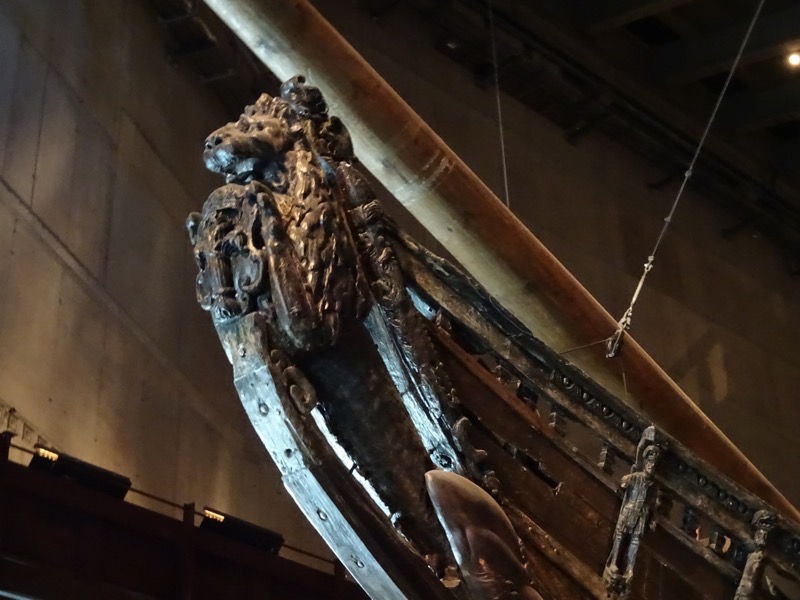 Upon the sinking of the ship, the Captain was immediately taken prisoner and the report of his interrogation survives to this day. “You can cut me in a thousand pieces if all the guns were not secured… and before God Almighty, I swear that no one on board was intoxicated.” He claimed that “It was a small gust of wind, a mere breeze, that overturned the ship… the ship was too unsteady, although all the ballast was on board.” In doing so, his testimony squarely placed blame on the ship’s design and the shipbuilder. The crew supported the Captain’s report – no mistakes were made, the ship was loaded with maximum ballast, the guns were properly lashed down and it was a Sunday, so many of the crew had been at Communion and no member was drunk.
Upon the sinking of the ship, the Captain was immediately taken prisoner and the report of his interrogation survives to this day. “You can cut me in a thousand pieces if all the guns were not secured… and before God Almighty, I swear that no one on board was intoxicated.” He claimed that “It was a small gust of wind, a mere breeze, that overturned the ship… the ship was too unsteady, although all the ballast was on board.” In doing so, his testimony squarely placed blame on the ship’s design and the shipbuilder. The crew supported the Captain’s report – no mistakes were made, the ship was loaded with maximum ballast, the guns were properly lashed down and it was a Sunday, so many of the crew had been at Communion and no member was drunk.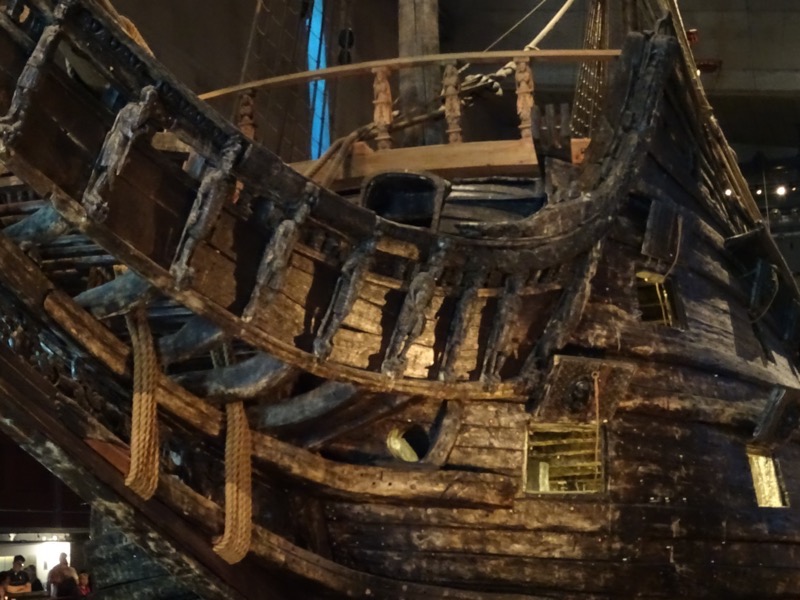 When the King received news of his pride and joy having sunk (a full two weeks after the sinking), barely 1.3kms from its berth, he wrote to the Council of the Realm in Stockholm claiming that “imprudence and negligence” must have been the cause of the disaster and that the responsible parties must be rooted out and punished. A formal inquest was held to determine blame.
When the King received news of his pride and joy having sunk (a full two weeks after the sinking), barely 1.3kms from its berth, he wrote to the Council of the Realm in Stockholm claiming that “imprudence and negligence” must have been the cause of the disaster and that the responsible parties must be rooted out and punished. A formal inquest was held to determine blame.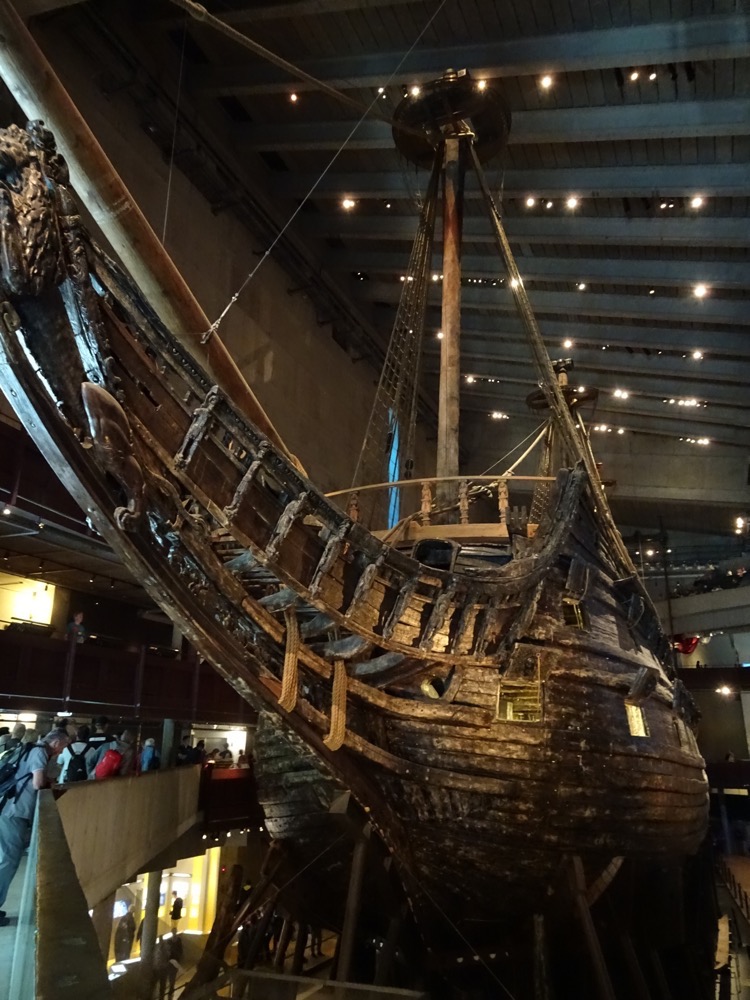 Fault was eventually found with the ship’s unstable construction. It was an innovative and ambitious project, to begin with – the King wanted two gun decks so the Vasa could have twice as many guns as any other ship around at that time, this made the ship top-heavy with her masts, yards, sails, and guns. The shipbuilders Jakobson and Arent de Groot were questioned regarding the construction and they testified that everything was built in accordance with the dimensions of His Majesty’s instructions and approval. The actual builder of the Vasa, Dutchman Henrick Hybertsson had died the year before, complicating the placement of blame. But between them, they had built many successful warships that had given years of service, it was the alterations to have a second gun deck while maintaining only a 11m width that made the Vasa top-heavy.
Fault was eventually found with the ship’s unstable construction. It was an innovative and ambitious project, to begin with – the King wanted two gun decks so the Vasa could have twice as many guns as any other ship around at that time, this made the ship top-heavy with her masts, yards, sails, and guns. The shipbuilders Jakobson and Arent de Groot were questioned regarding the construction and they testified that everything was built in accordance with the dimensions of His Majesty’s instructions and approval. The actual builder of the Vasa, Dutchman Henrick Hybertsson had died the year before, complicating the placement of blame. But between them, they had built many successful warships that had given years of service, it was the alterations to have a second gun deck while maintaining only a 11m width that made the Vasa top-heavy.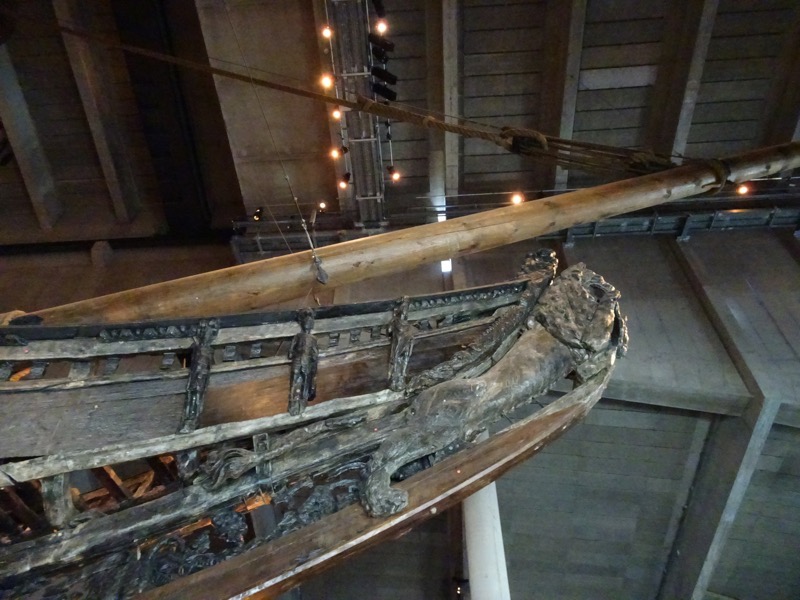 Shipmaster Joran Matsson also revealed that the Vasa’s stability had been tested before sailing. To stability test a ship, thirty men were made to run back and forth across the Vasa’s decks when she was safely moored at the quayside. After three runs, Matsson put a halt to the test, otherwise, the Vasa would have capsized then and there. Present at the test was Admiral Klas Flemming, one of the most influential men in the royal navy. His only recorded comment regarding the failed stability test was, “If only His Majesty were at home!”
Shipmaster Joran Matsson also revealed that the Vasa’s stability had been tested before sailing. To stability test a ship, thirty men were made to run back and forth across the Vasa’s decks when she was safely moored at the quayside. After three runs, Matsson put a halt to the test, otherwise, the Vasa would have capsized then and there. Present at the test was Admiral Klas Flemming, one of the most influential men in the royal navy. His only recorded comment regarding the failed stability test was, “If only His Majesty were at home!”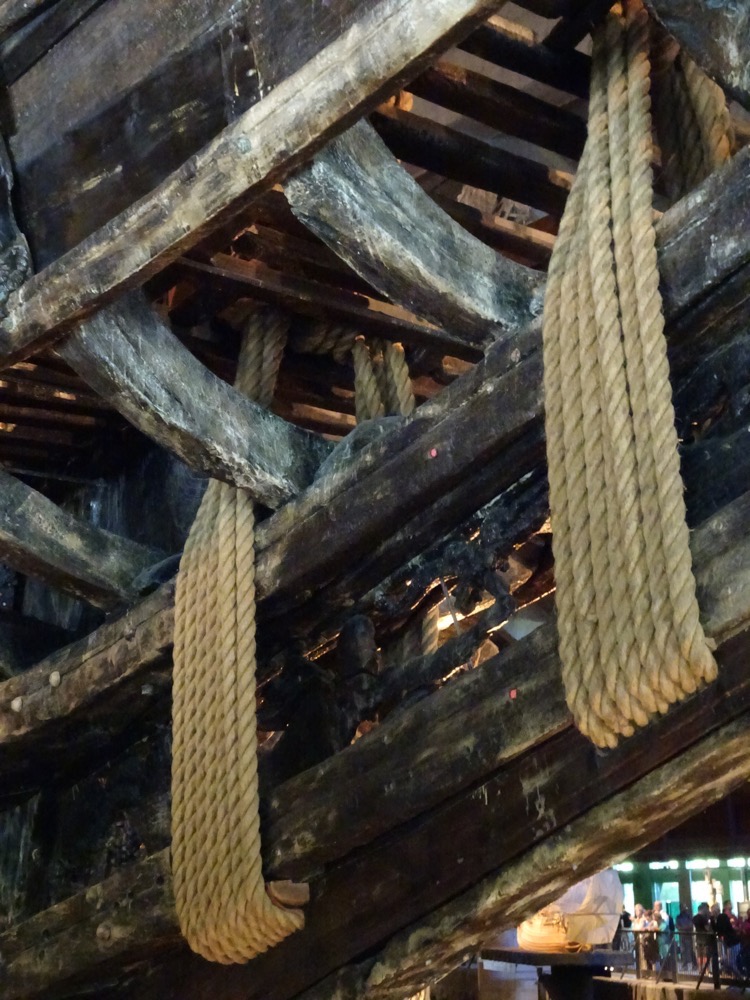 God and King, both considered equally infallible were drawn into the case. The subsequent deliberations of the Council of the realm on the issue of guilt are not recorded, but no guilty party was ever identified, and no one was ever punished for the disaster.
God and King, both considered equally infallible were drawn into the case. The subsequent deliberations of the Council of the realm on the issue of guilt are not recorded, but no guilty party was ever identified, and no one was ever punished for the disaster.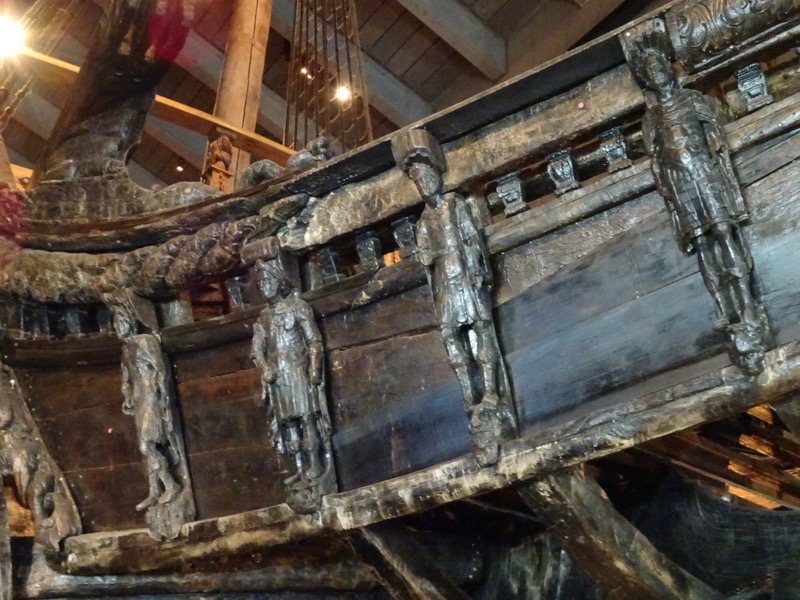 380 years later with a salvaged ship 98% complete, we can explain quite readily why the Vasa sank. Firstly, evidence supports that the guns were properly secured as reported, only four sails were set (the remaining six were still stored in the sail lockers), the ballast was as fully loaded as possible. Many people are partially to blame in the Vasa disaster – the King, with his drive to acquire a ship with as many guns as possible and his drive to have it completed rapidly. Admiral Fleming who failed to prevent the ship’s departure after the abysmal stability test. But the ultimate blame lays with the defective theoretical knowledge of the period. 17thC shipbuilders were incapable of making construction drawings or doing mathematical calculations for stability… instead, shipbuilders used a table of figures, the ship’s reckoning which was somewhat of well-kept secrets passed down from father to son. Many ships were modeled on its predecessor, but the Vasa was not. It was more massive, had more guns – it was too large, too strong, and as a result was a big expensive experiment.
380 years later with a salvaged ship 98% complete, we can explain quite readily why the Vasa sank. Firstly, evidence supports that the guns were properly secured as reported, only four sails were set (the remaining six were still stored in the sail lockers), the ballast was as fully loaded as possible. Many people are partially to blame in the Vasa disaster – the King, with his drive to acquire a ship with as many guns as possible and his drive to have it completed rapidly. Admiral Fleming who failed to prevent the ship’s departure after the abysmal stability test. But the ultimate blame lays with the defective theoretical knowledge of the period. 17thC shipbuilders were incapable of making construction drawings or doing mathematical calculations for stability… instead, shipbuilders used a table of figures, the ship’s reckoning which was somewhat of well-kept secrets passed down from father to son. Many ships were modeled on its predecessor, but the Vasa was not. It was more massive, had more guns – it was too large, too strong, and as a result was a big expensive experiment.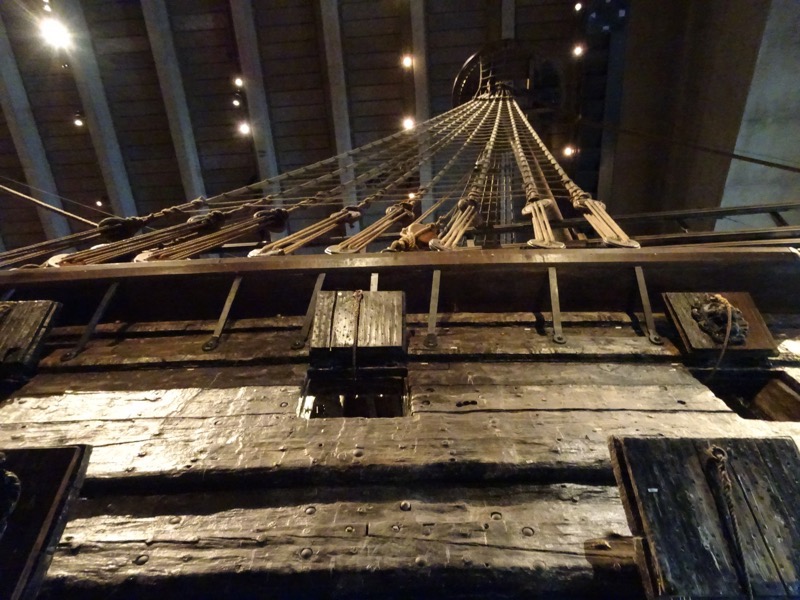
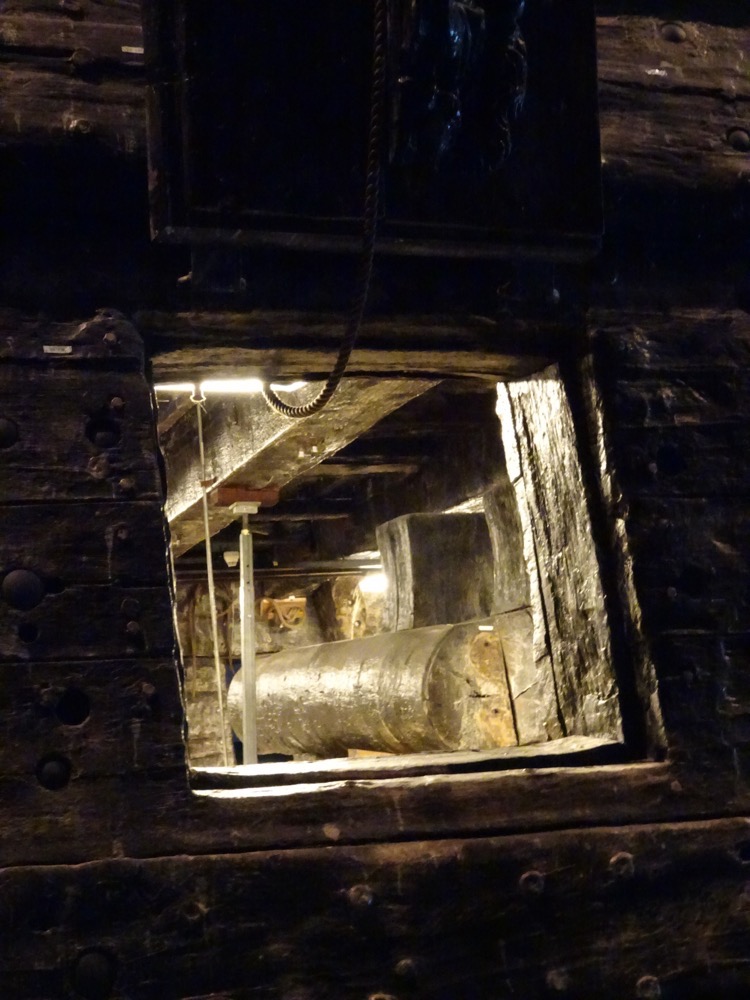
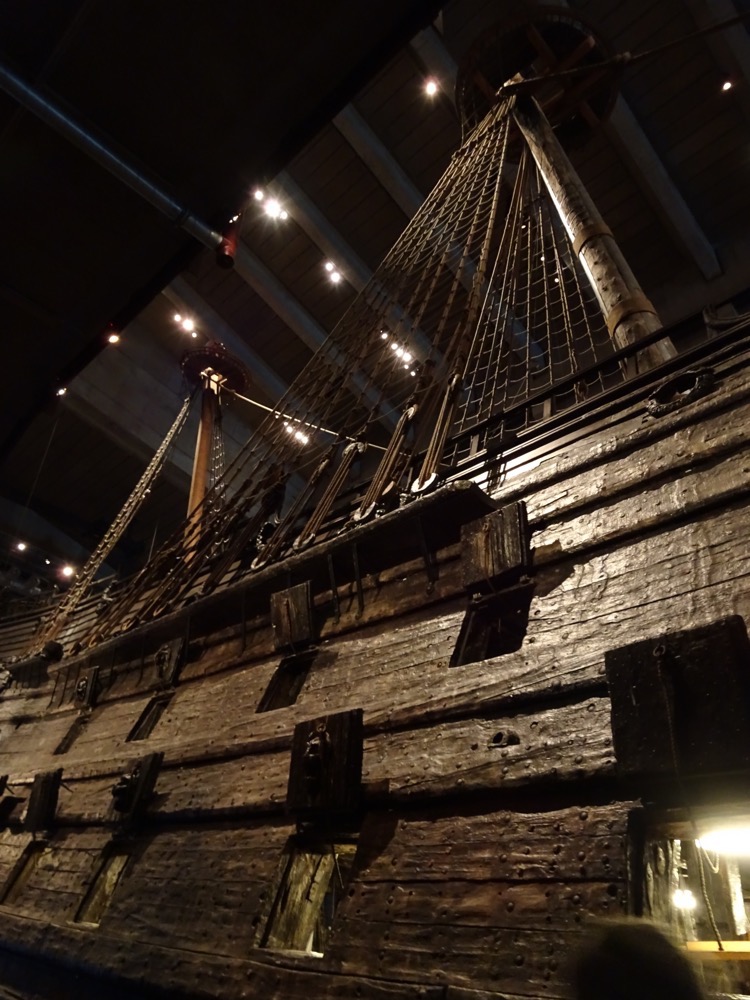 The Vasa was lavishly decorated – each of the gun ports had a carved depiction of a lion – a symbol of the Swedish King.
The Vasa was lavishly decorated – each of the gun ports had a carved depiction of a lion – a symbol of the Swedish King.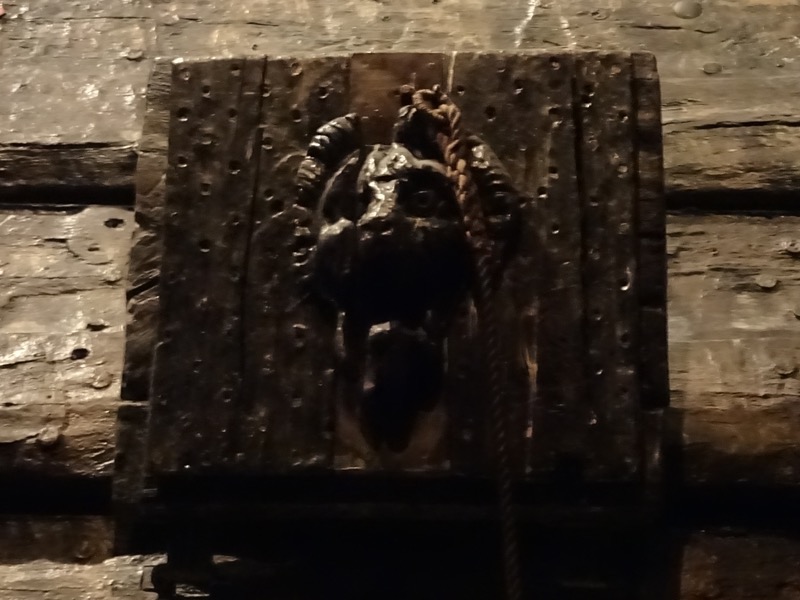
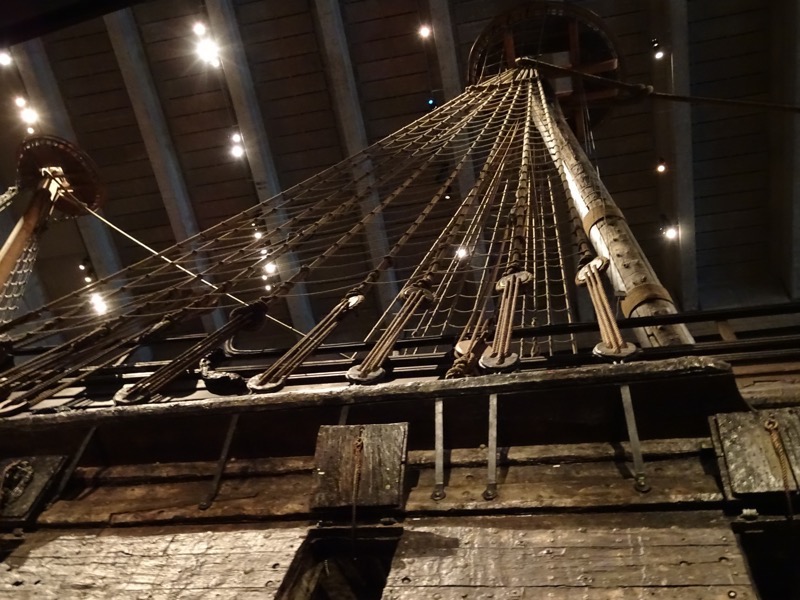 Directly after the ship sank, the masts of the ship were cut off, primarily because the ship had sunk in a relatively busy shipping channel, but also because the city did not want a constant visual reminder of this most spectacular naval failure. Salvage efforts started immediately, and many tried to particularly raise the Vasa’s valuable guns. It was not until the 1660s that fifty of the Vasa’s guns were retrieved with the use of a diving bell, by salvage workers, von Treileben and Pecknell.
Directly after the ship sank, the masts of the ship were cut off, primarily because the ship had sunk in a relatively busy shipping channel, but also because the city did not want a constant visual reminder of this most spectacular naval failure. Salvage efforts started immediately, and many tried to particularly raise the Vasa’s valuable guns. It was not until the 1660s that fifty of the Vasa’s guns were retrieved with the use of a diving bell, by salvage workers, von Treileben and Pecknell.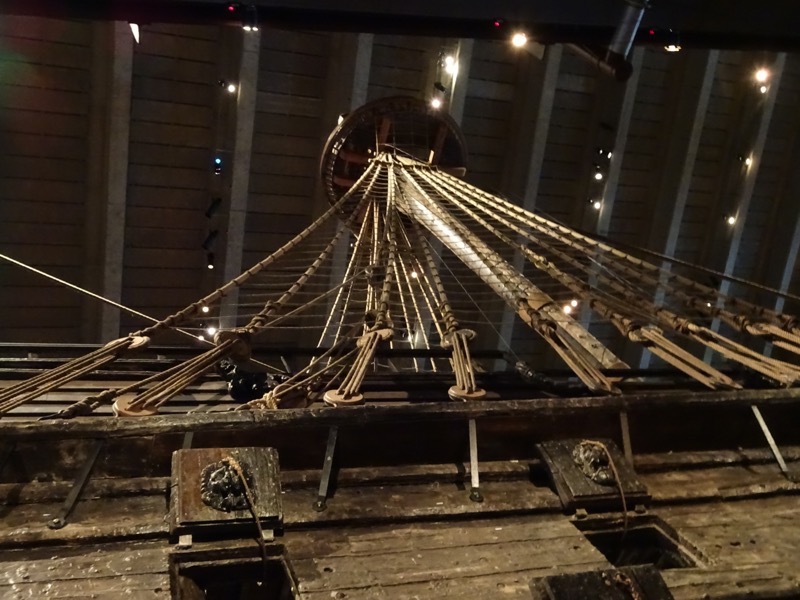 With her valuable guns removed, the Vasa fell into obscurity until in 1956, a newspaper announced, that an old ship had been found off Beckholmen in the middle of Stockholm and that it was probably the warship, the Vasa which sank on her maiden voyage in 1628. It was engineer Anders Franzen, an expert on Swedish naval warfare of the 16th and 17thC who had discovered the location of the ship from archives and renewed interested in the Vasa. Franzen knew that the Baltic sea is unique in that here, there are no shipworms (the tiny Teredo worm that eat timber), and many vessels had been preserved for centuries before. He had high expectations that the Vasa might be in reasonably good shape thanks to the absence of the shipworm and little oxygen in the cold, low saline, waters.
With her valuable guns removed, the Vasa fell into obscurity until in 1956, a newspaper announced, that an old ship had been found off Beckholmen in the middle of Stockholm and that it was probably the warship, the Vasa which sank on her maiden voyage in 1628. It was engineer Anders Franzen, an expert on Swedish naval warfare of the 16th and 17thC who had discovered the location of the ship from archives and renewed interested in the Vasa. Franzen knew that the Baltic sea is unique in that here, there are no shipworms (the tiny Teredo worm that eat timber), and many vessels had been preserved for centuries before. He had high expectations that the Vasa might be in reasonably good shape thanks to the absence of the shipworm and little oxygen in the cold, low saline, waters.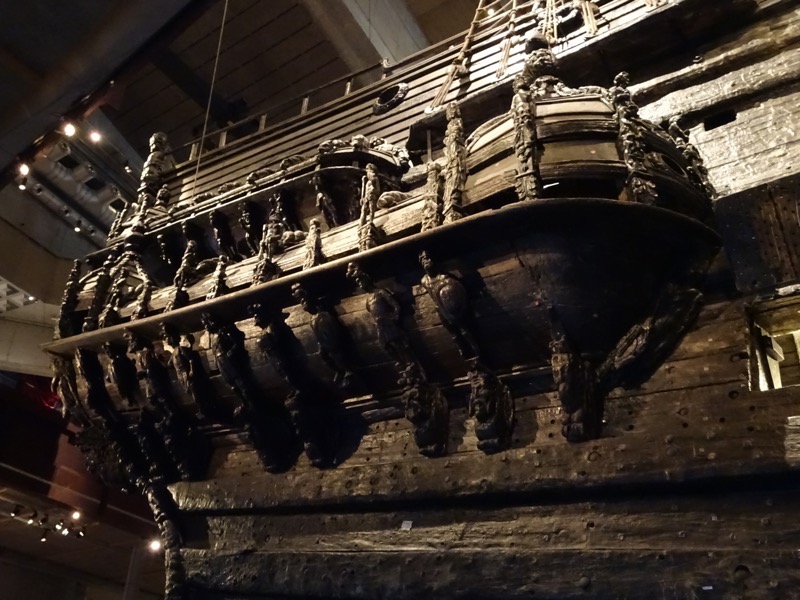 The raising of such a large and old ship had never been attempted before – heavy cables were laid beneath the hull and attached to water filled pontoons. When the water was pumped out of the pontoons, they would rise, stretching the cables and lifting the Vasa from the seabed. A large, ‘Save the Vasa’ campaign was launched and money and materials were donated by foundations, individuals and companies to Brostroms, the parent company of the Neptun Salvaging Company who promised to carry out the work, free of charge. The Vasa had sunk in barely 33m of water but it was still an enormous undertaking. The ship was raised in 16 stages, moving to shallower and shallower water, until eventually it was salvaged and taken to dry dock in Beckholmen, directly adjacent to where she had sunk.
The raising of such a large and old ship had never been attempted before – heavy cables were laid beneath the hull and attached to water filled pontoons. When the water was pumped out of the pontoons, they would rise, stretching the cables and lifting the Vasa from the seabed. A large, ‘Save the Vasa’ campaign was launched and money and materials were donated by foundations, individuals and companies to Brostroms, the parent company of the Neptun Salvaging Company who promised to carry out the work, free of charge. The Vasa had sunk in barely 33m of water but it was still an enormous undertaking. The ship was raised in 16 stages, moving to shallower and shallower water, until eventually it was salvaged and taken to dry dock in Beckholmen, directly adjacent to where she had sunk.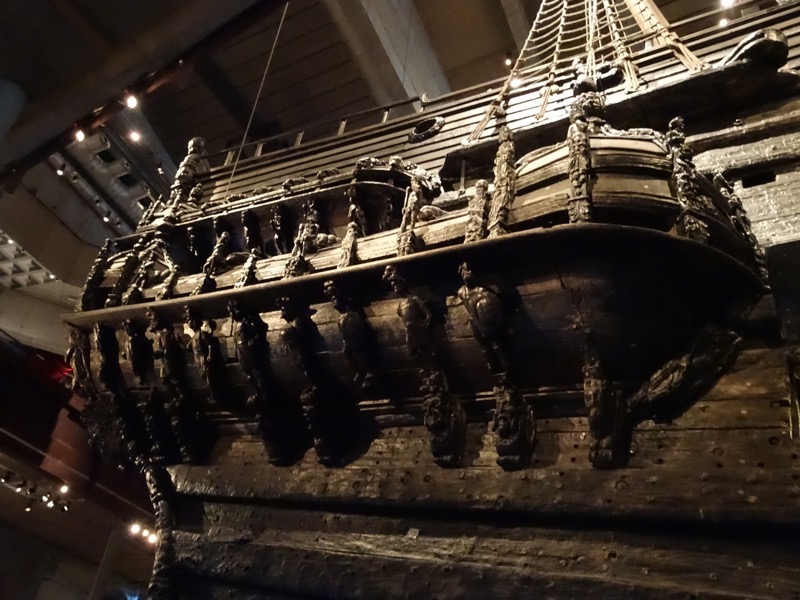 It was 1961 before the ship was raised in its entirety and all the world’s news media was watching as seven large bilge pumps were used to assist with the final lift. After 333 years on the seabed, the Vasa was back on the surface. Amazingly the ship was sufficiently watertight to be able to float and move on her own.
It was 1961 before the ship was raised in its entirety and all the world’s news media was watching as seven large bilge pumps were used to assist with the final lift. After 333 years on the seabed, the Vasa was back on the surface. Amazingly the ship was sufficiently watertight to be able to float and move on her own.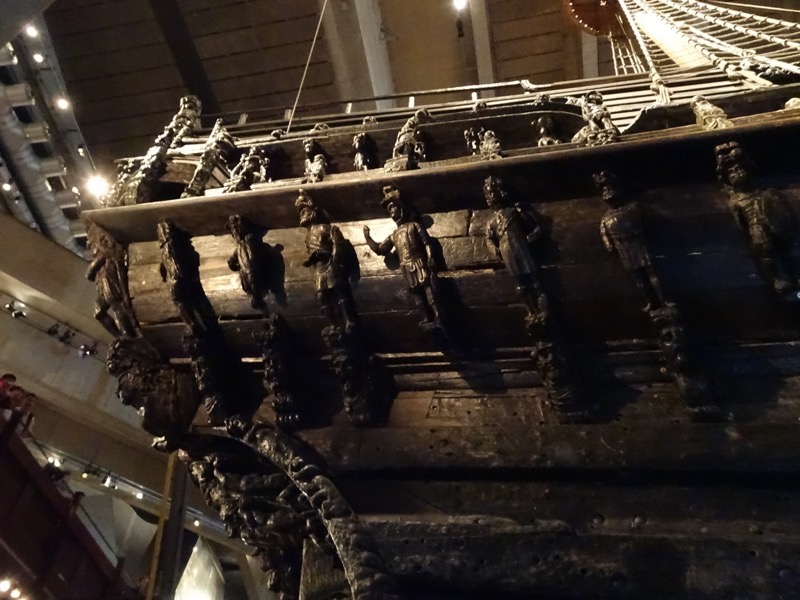 The brackish, deoxygenated water and mud on the seabed has perfectly preserved the Basa, but now in the warm dry air, the wood would start shrinking and splitting and a huge question of how to preserve the 1,080 tonnes of waterlogged oak with a volume of 900sqm was to be accomplished? In addition, there were 13,500 wooden figures, 500, sculptures, 200 ornaments, 12,000 smaller wooden objects, as well as textiles, leather and metal objects to be preserved. With no previous experience of how to preserve such a large amount of wood – a method was adopted of spraying the timber with a mixture of water and polyethylene glycol (PEG)to penetrate the wood and displace the water. The PEG successfully prevented shrinking and cracking. Sculptures and small wooden objects were also treated in vats of PEG.
The brackish, deoxygenated water and mud on the seabed has perfectly preserved the Basa, but now in the warm dry air, the wood would start shrinking and splitting and a huge question of how to preserve the 1,080 tonnes of waterlogged oak with a volume of 900sqm was to be accomplished? In addition, there were 13,500 wooden figures, 500, sculptures, 200 ornaments, 12,000 smaller wooden objects, as well as textiles, leather and metal objects to be preserved. With no previous experience of how to preserve such a large amount of wood – a method was adopted of spraying the timber with a mixture of water and polyethylene glycol (PEG)to penetrate the wood and displace the water. The PEG successfully prevented shrinking and cracking. Sculptures and small wooden objects were also treated in vats of PEG.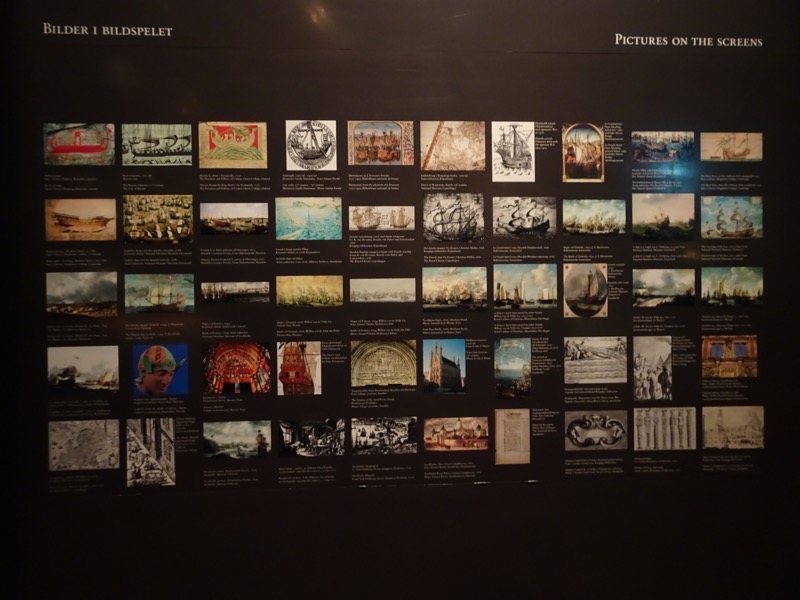 Vasa in Figures:
Vasa in Figures: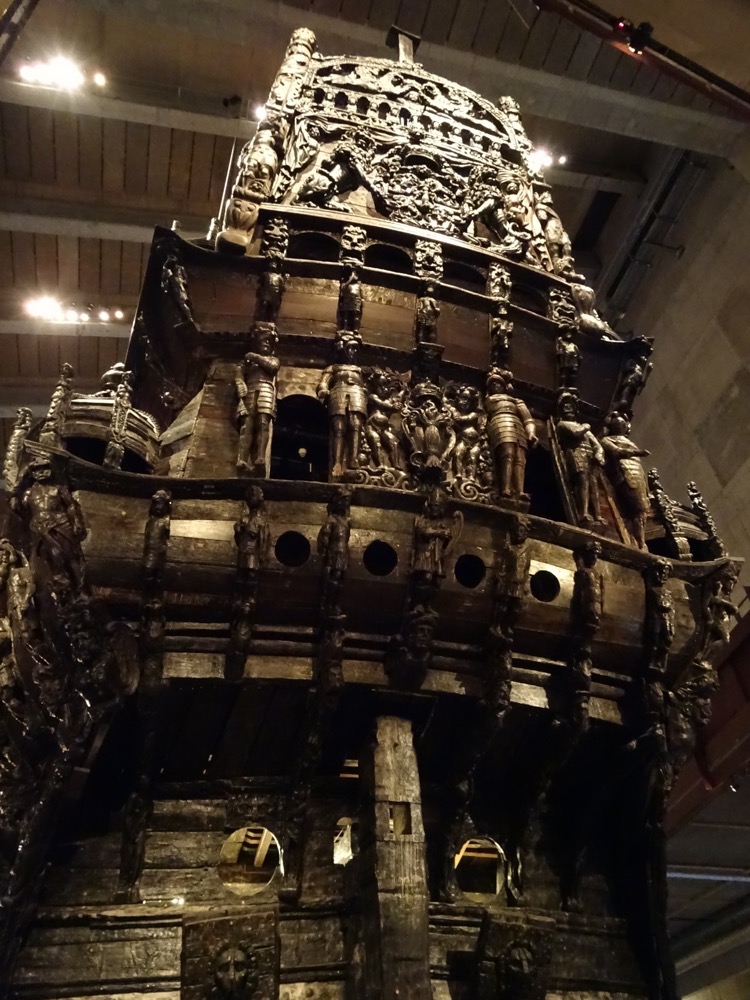 The Vasa was built not only to dominate the waves with her superior military armaments, but also to impress with her lavish visual appearance. Many works of art sank with her in 1628 including hundreds of wooden sculptures that had been carefully painted and gilded. The work was predominantly in the German-Dutch late Renaissance/early Baroque style and executed by master carvers. Most of the works depict large expressive sculptures of lions, angels, devils, warriors, musicians, emperors and gods.
The Vasa was built not only to dominate the waves with her superior military armaments, but also to impress with her lavish visual appearance. Many works of art sank with her in 1628 including hundreds of wooden sculptures that had been carefully painted and gilded. The work was predominantly in the German-Dutch late Renaissance/early Baroque style and executed by master carvers. Most of the works depict large expressive sculptures of lions, angels, devils, warriors, musicians, emperors and gods.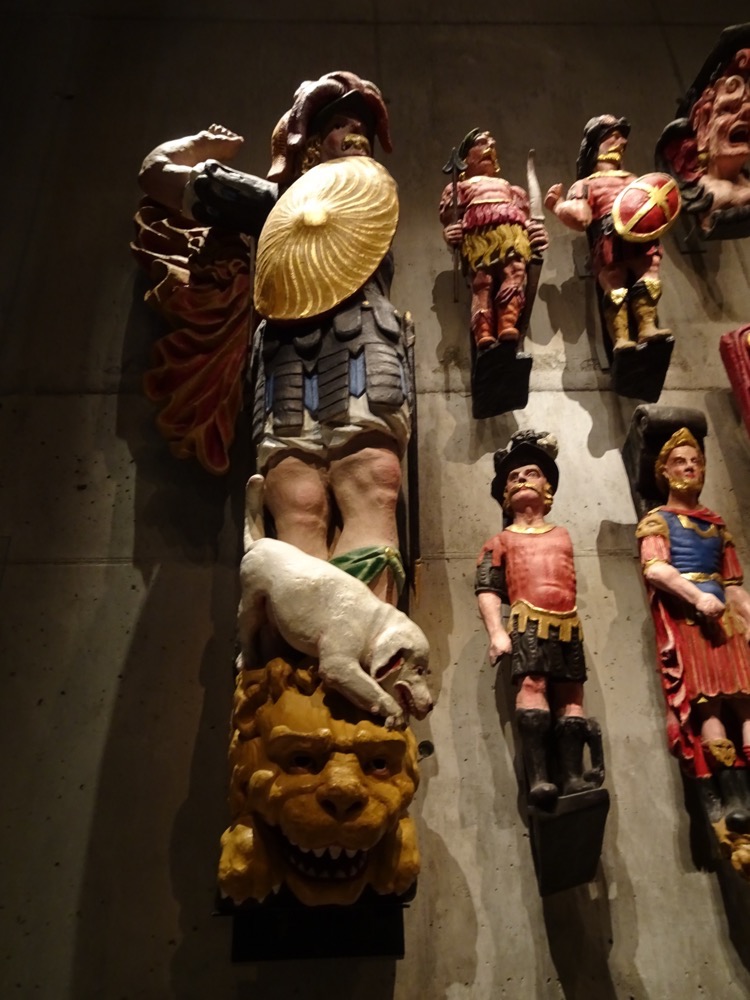 Opulence and extravagance were the fashion of the 17th century, though, to the modern eye, the riot of colour that covered the ship would be considered terribly gaudy. Chubby angels, with ruddy cheeks, golden hair, pink fleshy tummies, blue and grey armoured Roman soldiers, bright green sea monsters – it was a riot of colour.
Opulence and extravagance were the fashion of the 17th century, though, to the modern eye, the riot of colour that covered the ship would be considered terribly gaudy. Chubby angels, with ruddy cheeks, golden hair, pink fleshy tummies, blue and grey armoured Roman soldiers, bright green sea monsters – it was a riot of colour. On the stern, but not painted in letters is the name “Vasa” – the name of the Swedish Royal family depicted instead by their family impressa.
On the stern, but not painted in letters is the name “Vasa” – the name of the Swedish Royal family depicted instead by their family impressa.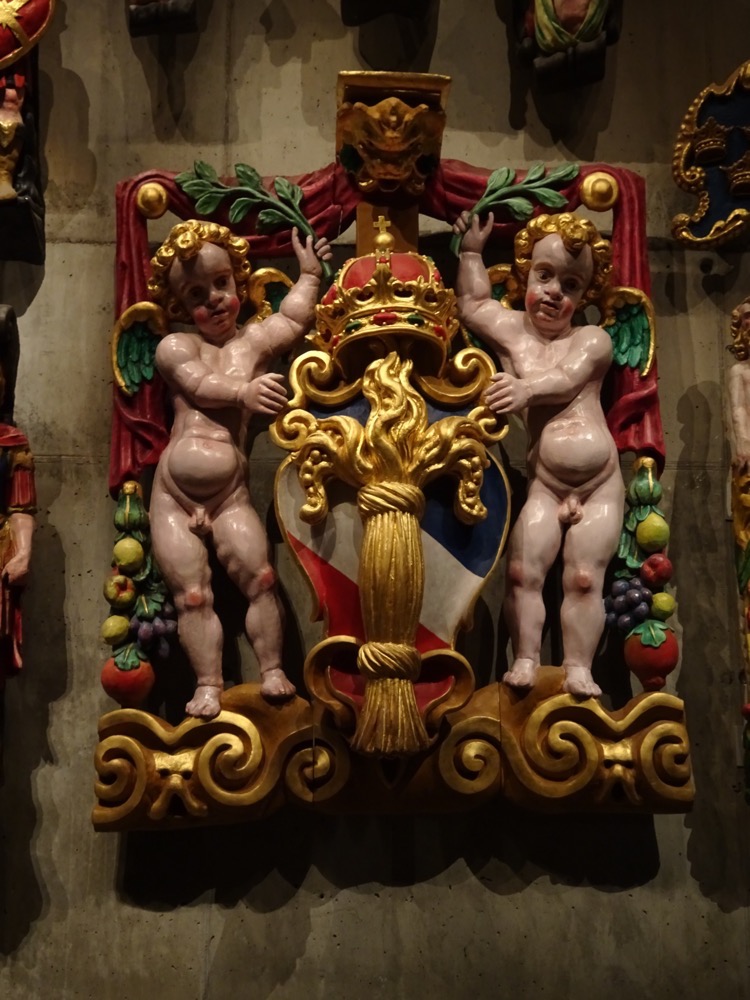
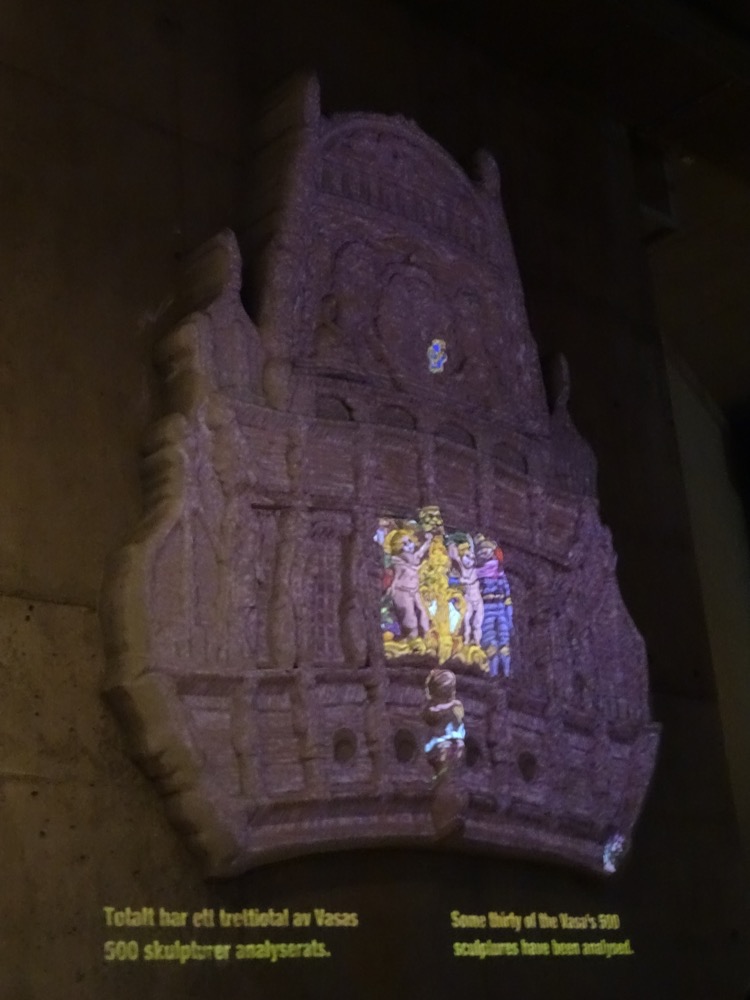
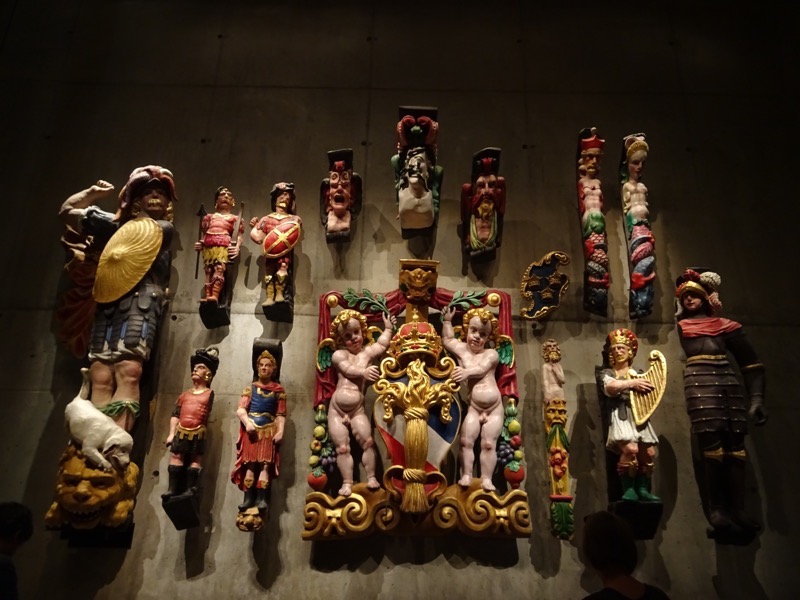 Researchers have identified over twenty different colours were painted on the sculptures on the ship, as well as gold and silver gilding.
Researchers have identified over twenty different colours were painted on the sculptures on the ship, as well as gold and silver gilding.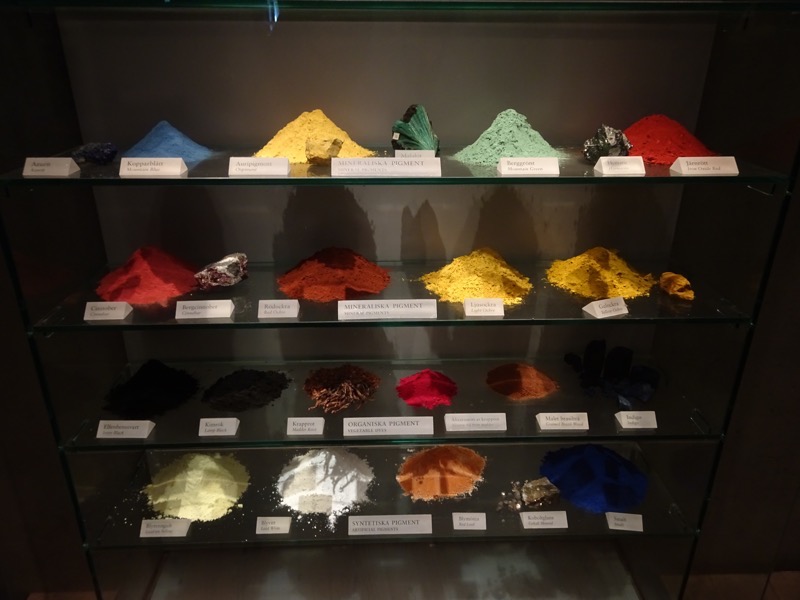
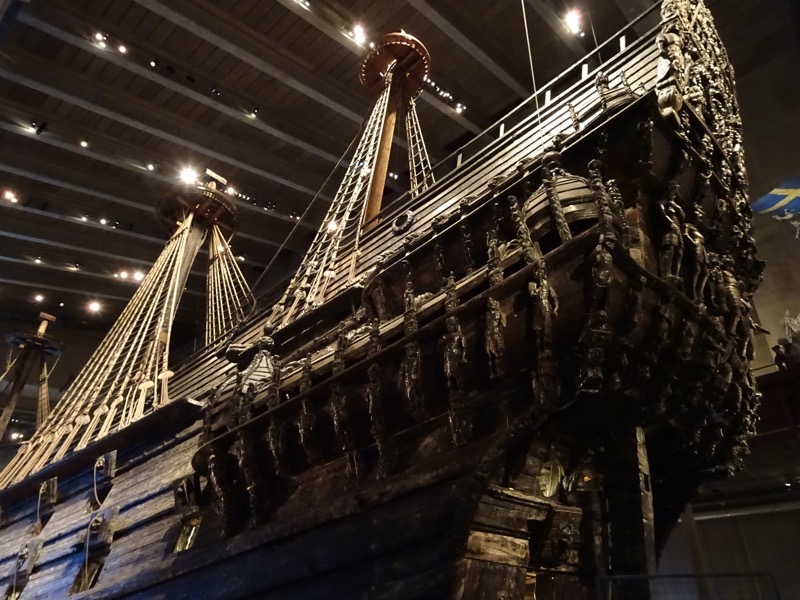 Surrounding the gun galleys (spaces the soldiers could fire their weapons from when engaged in closer combat), are statues of Roman soldiers standing on the heads of sea monsters. Every statue is unique, and in this case to represent the superiority of the navy over the seas.
Surrounding the gun galleys (spaces the soldiers could fire their weapons from when engaged in closer combat), are statues of Roman soldiers standing on the heads of sea monsters. Every statue is unique, and in this case to represent the superiority of the navy over the seas.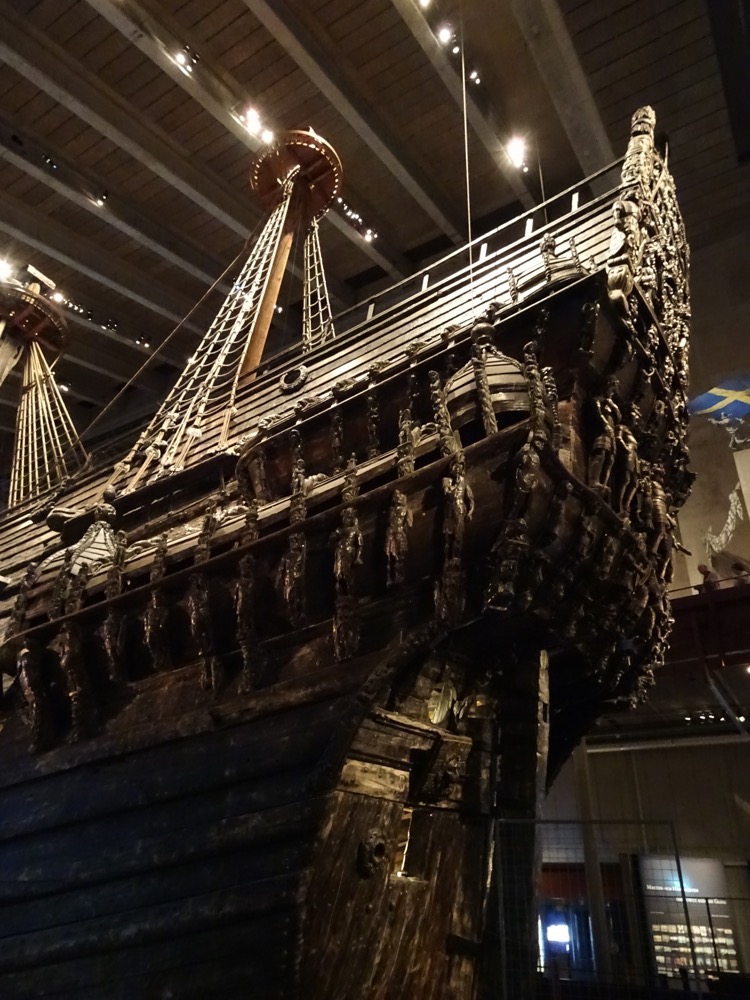
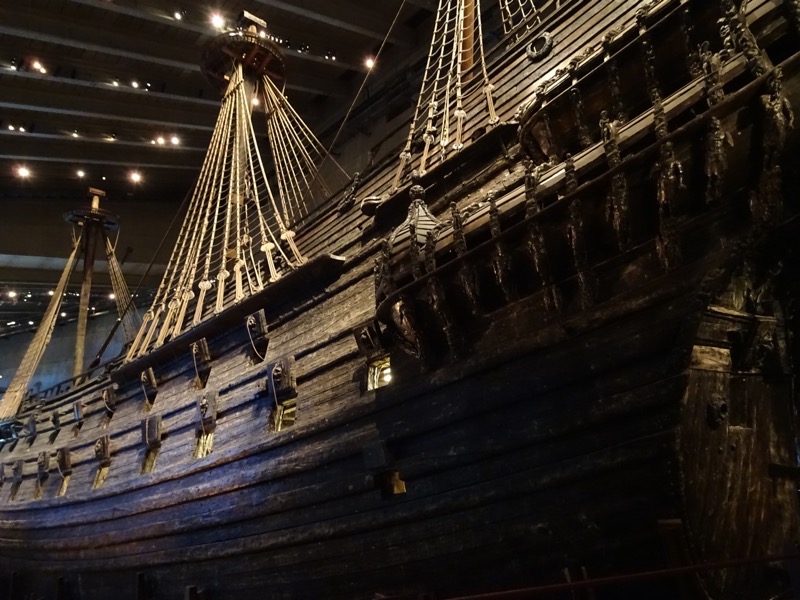
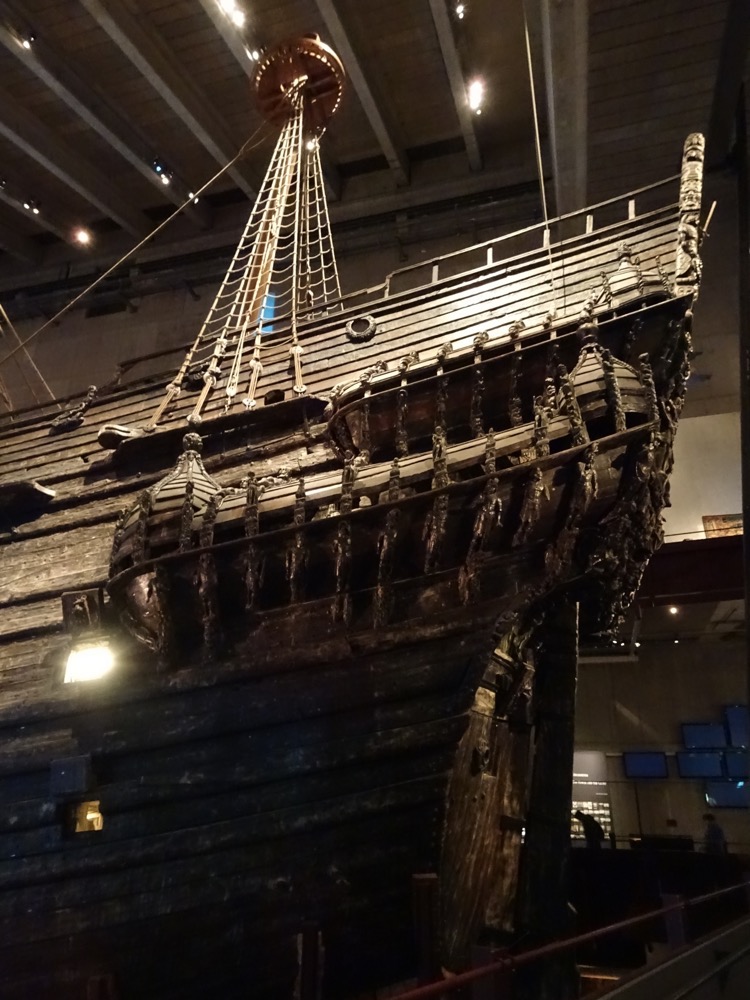 Original documents from the inquest into the sinking of the Vasa, “Between four and five o’clock, the great new warship Vasa keeled over and sank.”
Original documents from the inquest into the sinking of the Vasa, “Between four and five o’clock, the great new warship Vasa keeled over and sank.”  A 1960’s replica of the diving bell used in the 1660’s to salvage the Vasa’s expensive guns.
A 1960’s replica of the diving bell used in the 1660’s to salvage the Vasa’s expensive guns.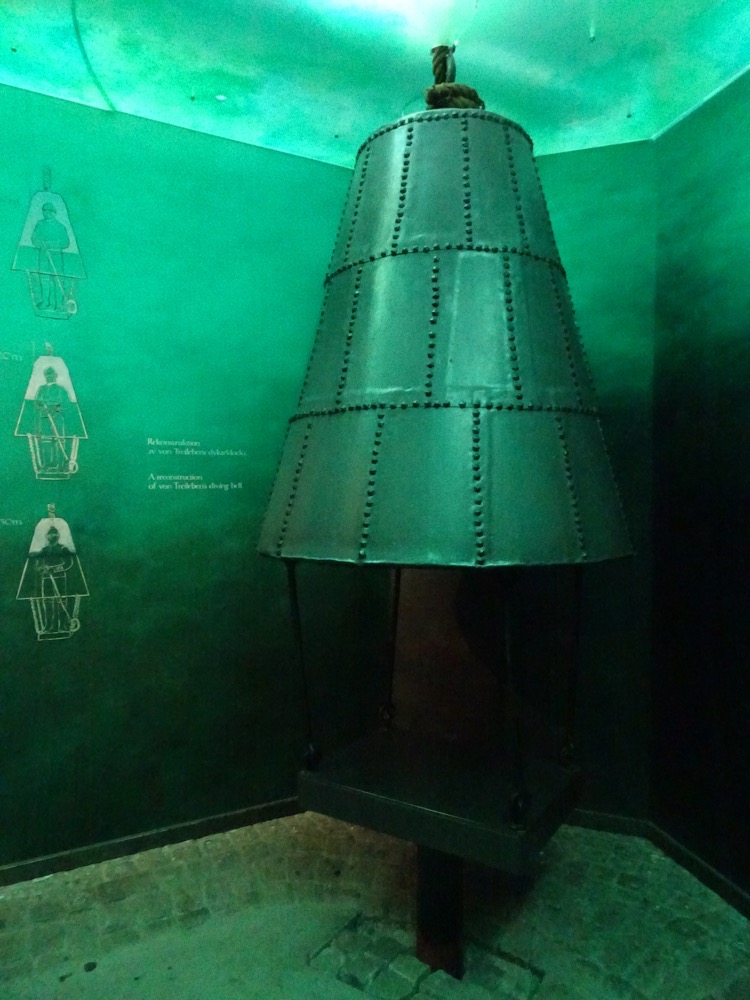 A modelled cross section of the ship which shows the limited space for ballast to offset the huge weight of the cannon decks and the enormous height of the ship.
A modelled cross section of the ship which shows the limited space for ballast to offset the huge weight of the cannon decks and the enormous height of the ship. 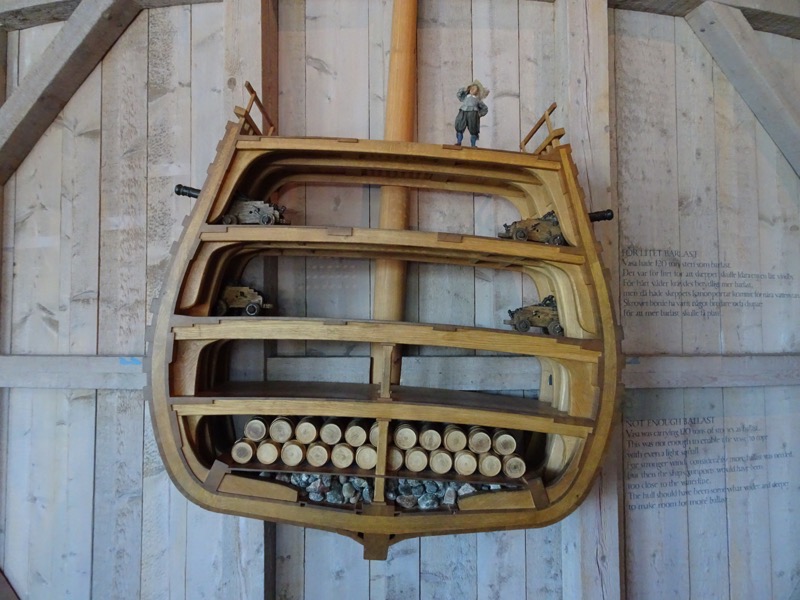
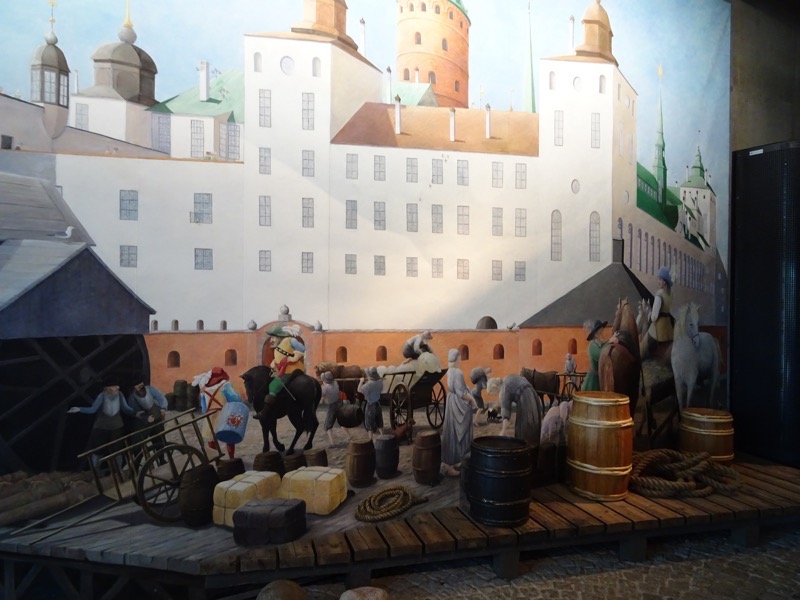
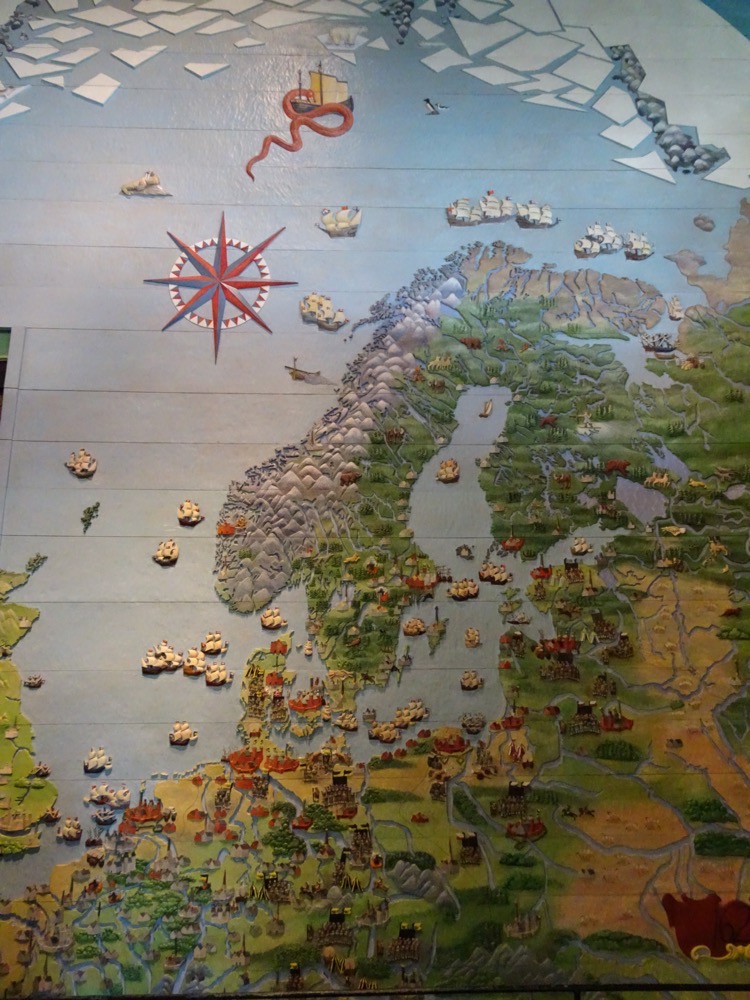 A 1950’s diving suit, the kind used in the operation to resurrect the Vasa.
A 1950’s diving suit, the kind used in the operation to resurrect the Vasa.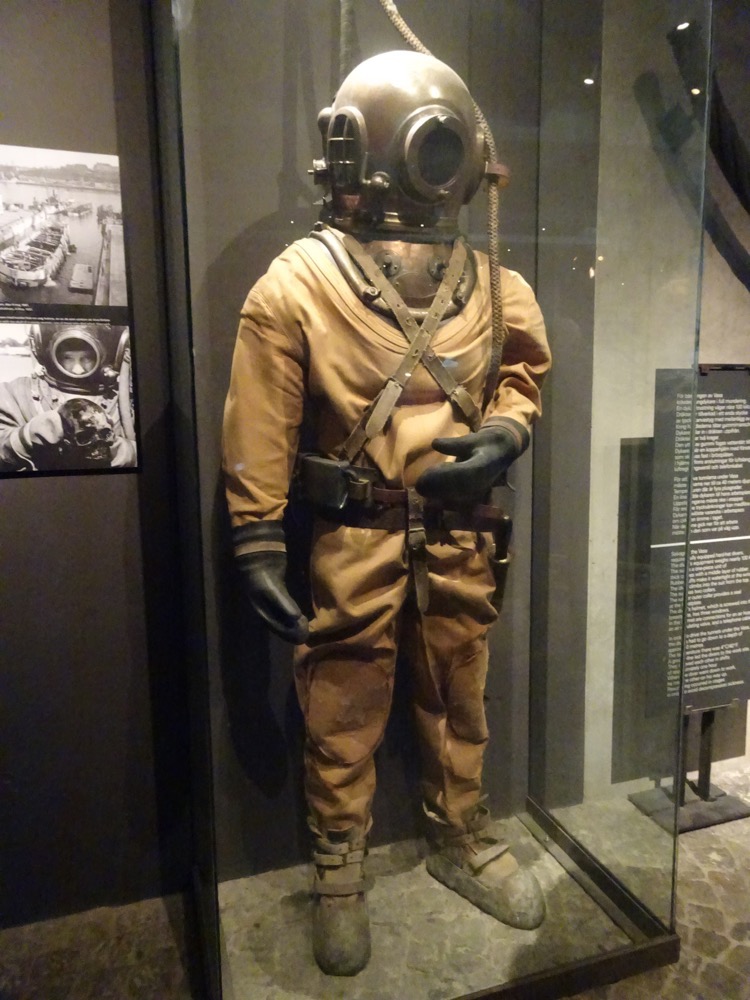 Scale model of the Vasa showing the vibrant coloured sculptures and a depiction of the ship had she ever had all her sail hoisted.
Scale model of the Vasa showing the vibrant coloured sculptures and a depiction of the ship had she ever had all her sail hoisted.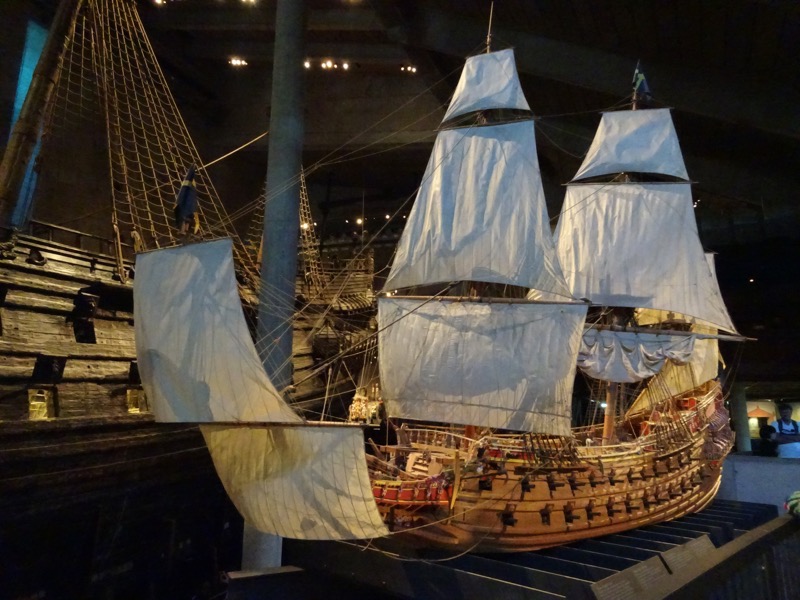
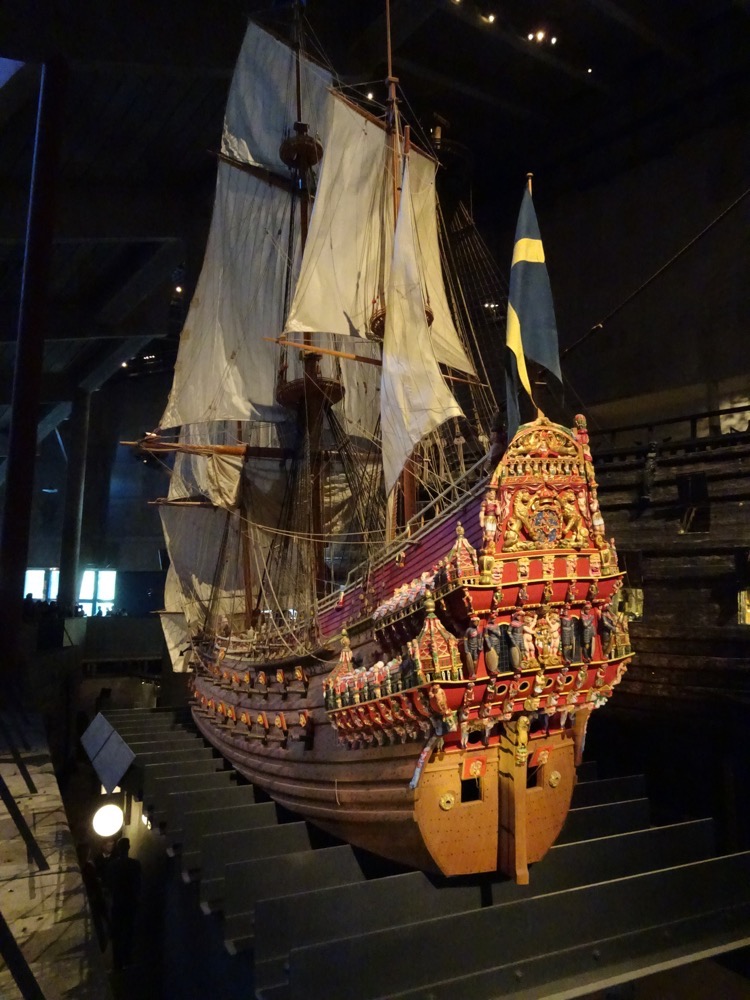 In the Vasa’s day, the Swedish navy ships were largely crewed with conscripts, the most able seamen frequently defected to foreign fleets where the wages were apparently better. One man in ten was usually taken on active service, only children under 15 and men older than 60 were exempt from service.
In the Vasa’s day, the Swedish navy ships were largely crewed with conscripts, the most able seamen frequently defected to foreign fleets where the wages were apparently better. One man in ten was usually taken on active service, only children under 15 and men older than 60 were exempt from service.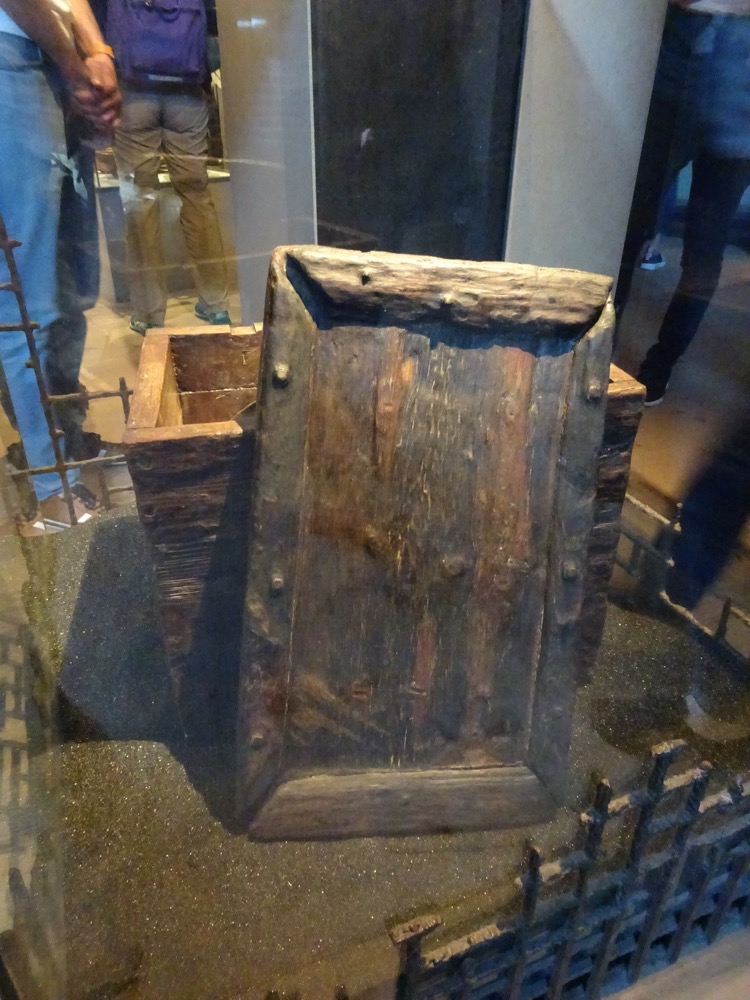
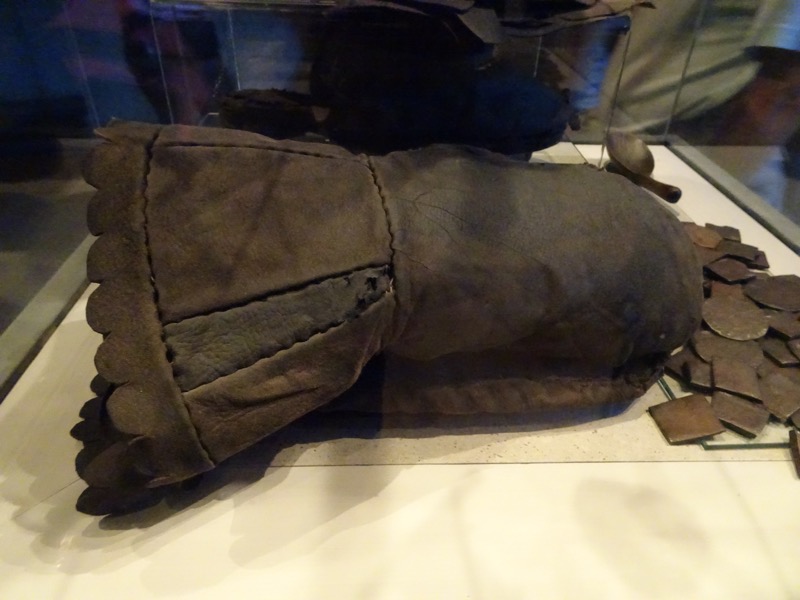 Above: some leather mittens/gloves. Below: Shoes belonging to a crew member.
Above: some leather mittens/gloves. Below: Shoes belonging to a crew member.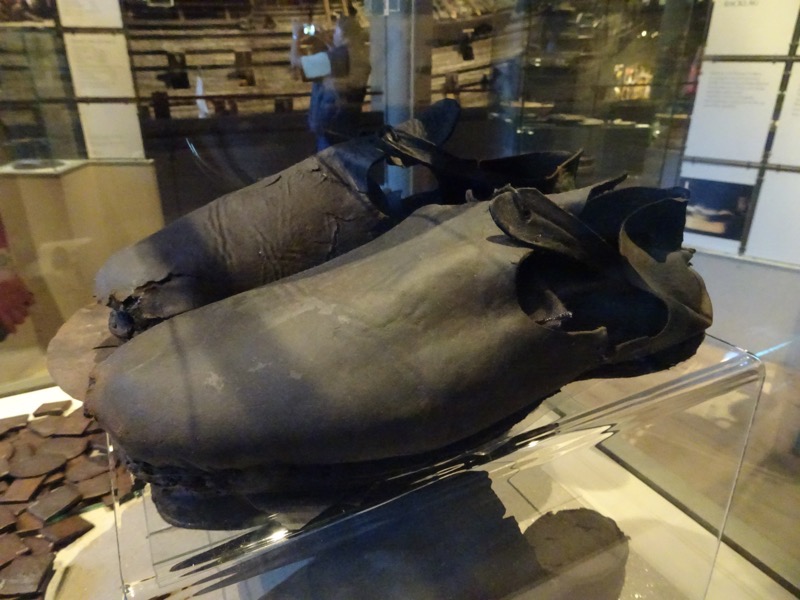
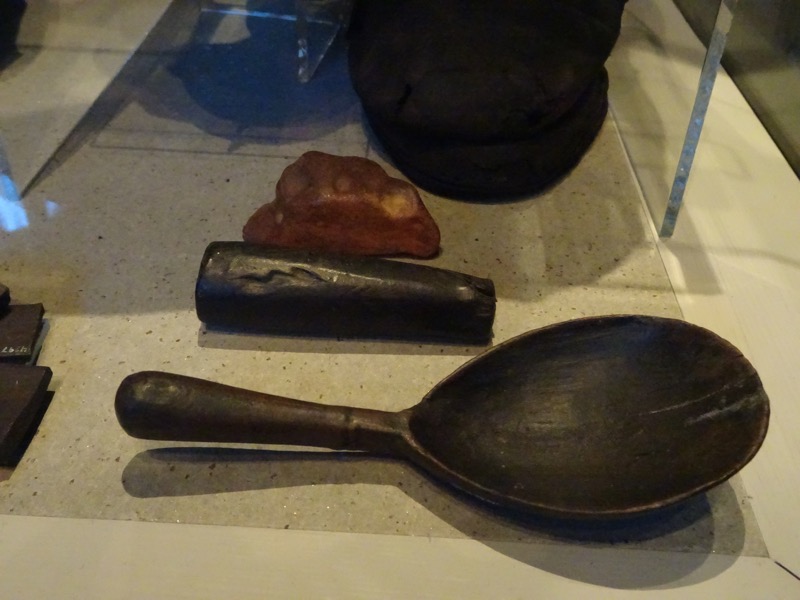
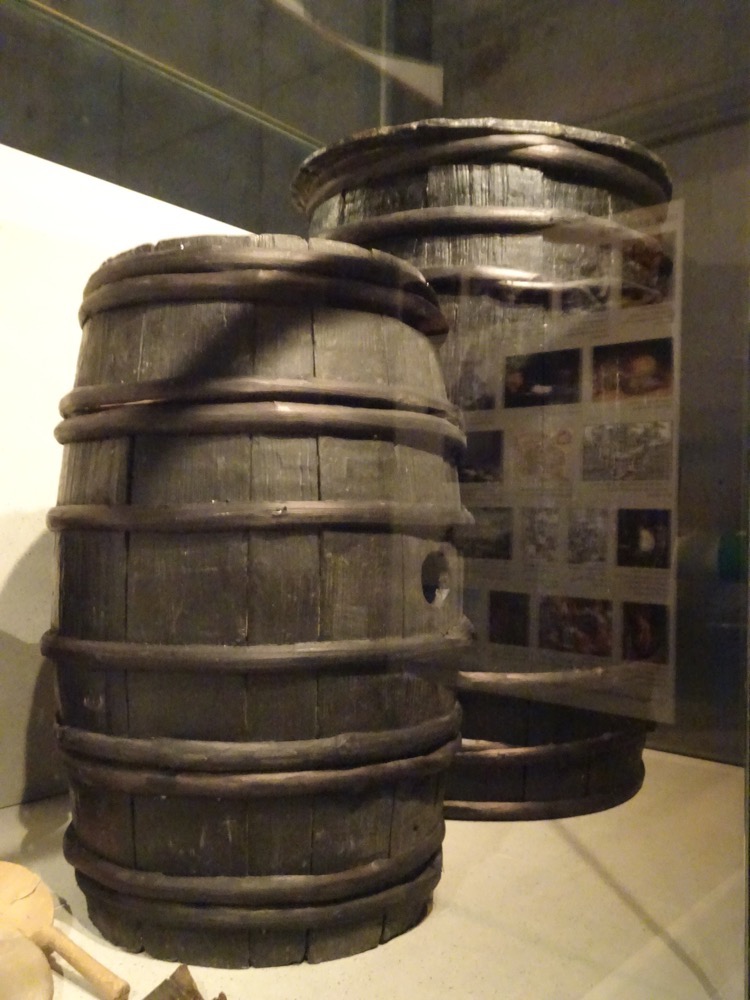
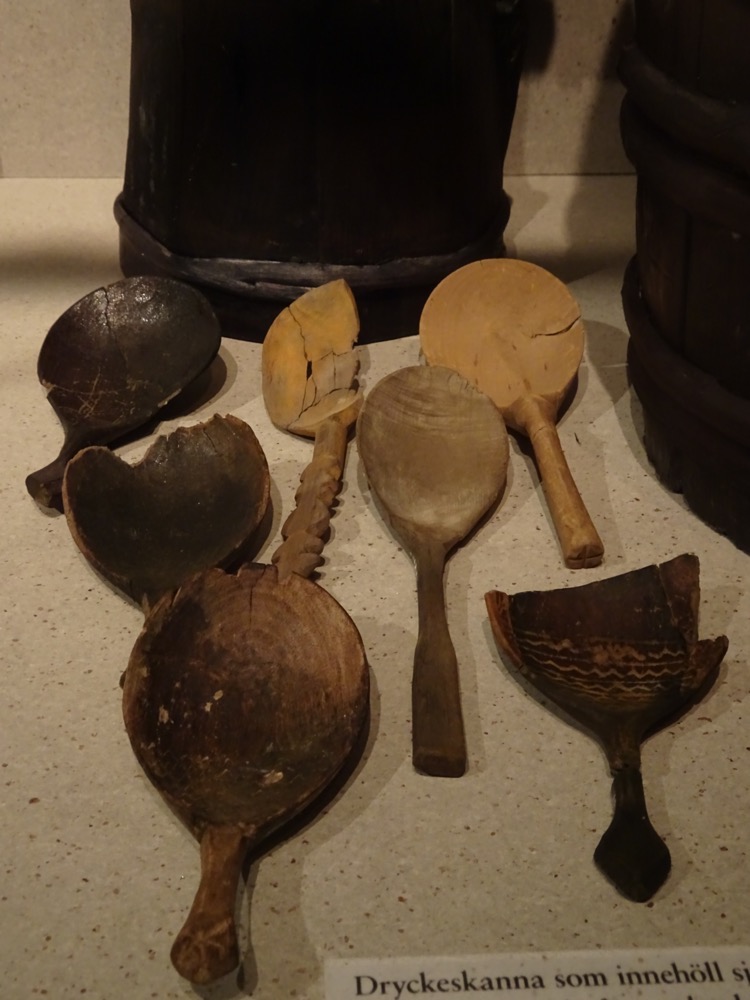 A leather pouch remnant.
A leather pouch remnant.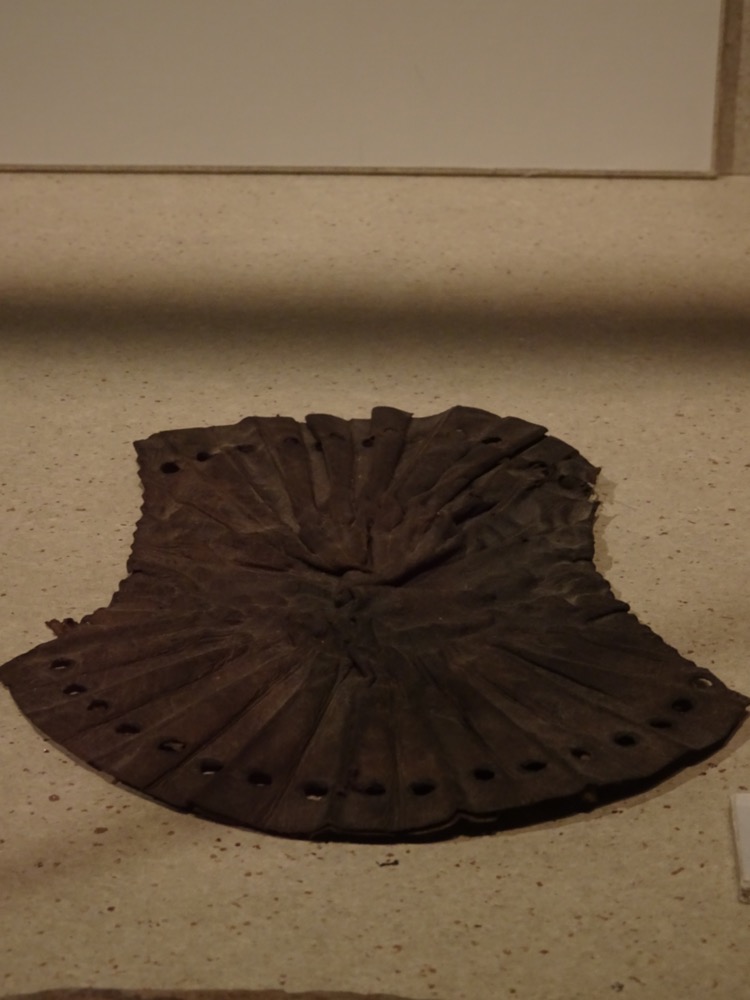
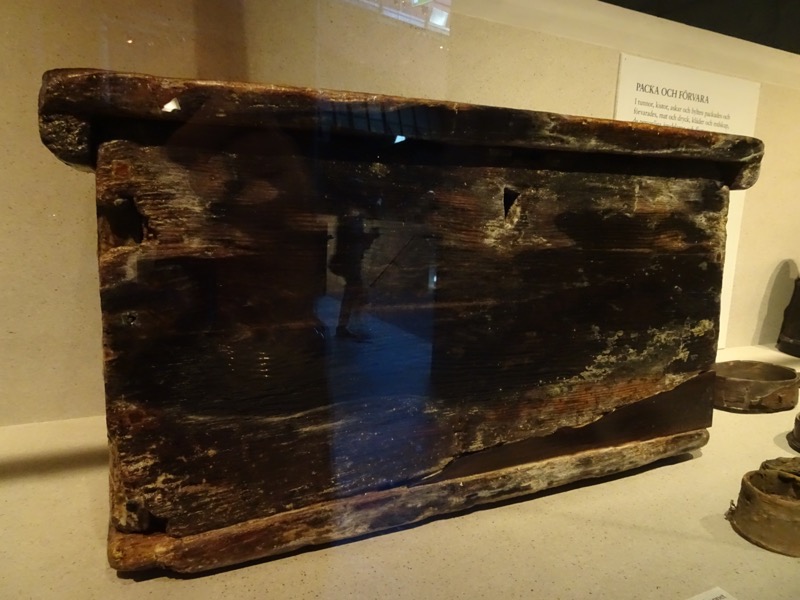 Small casket with a ‘combination’ lock.
Small casket with a ‘combination’ lock.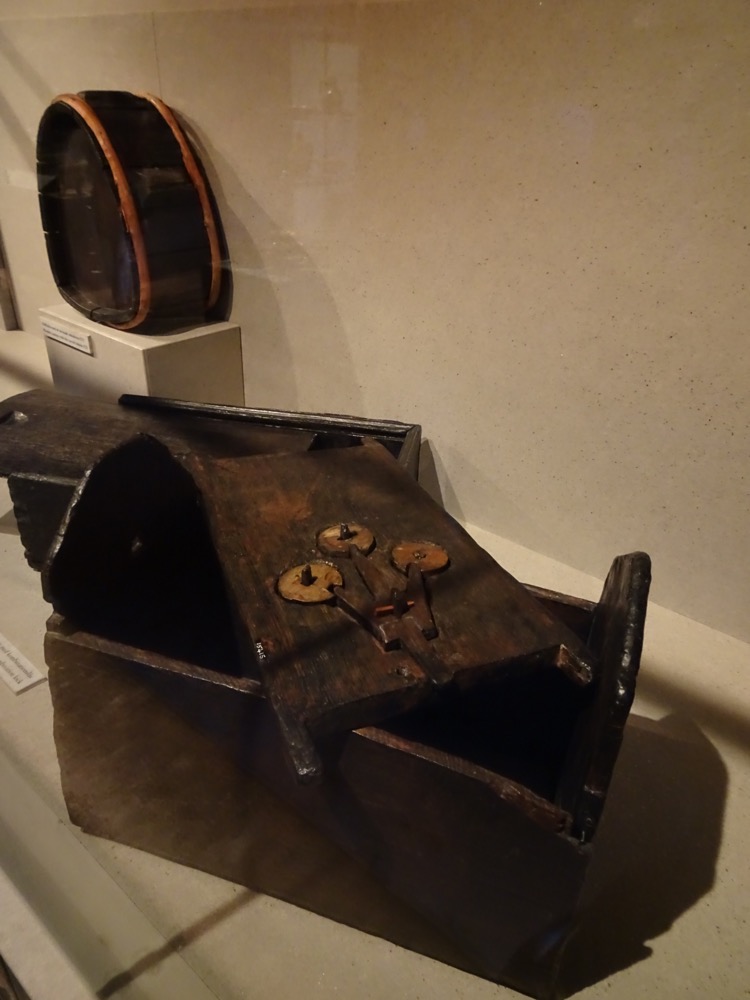
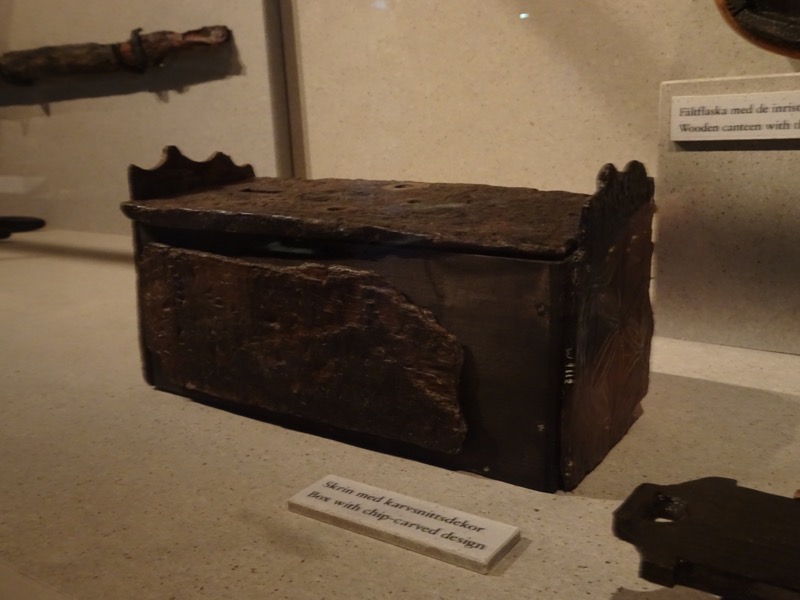 Earthernware likely from the officers mess.
Earthernware likely from the officers mess.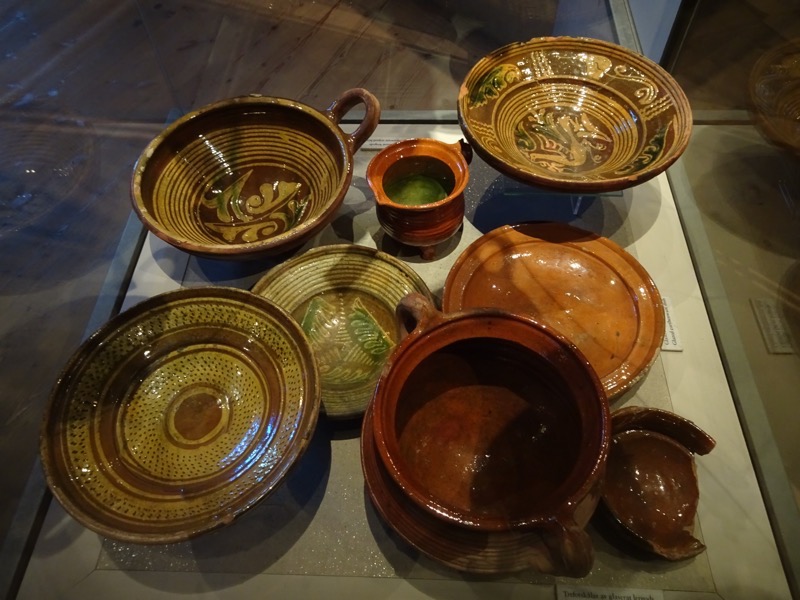
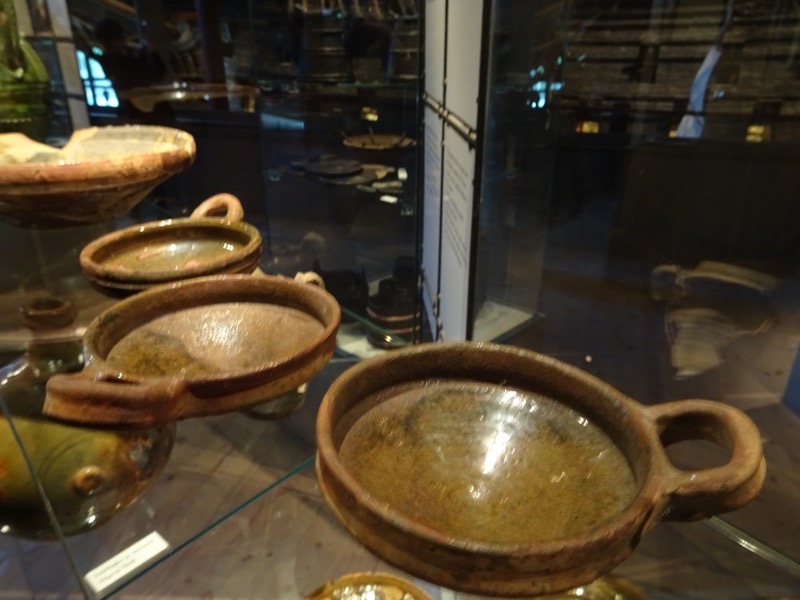
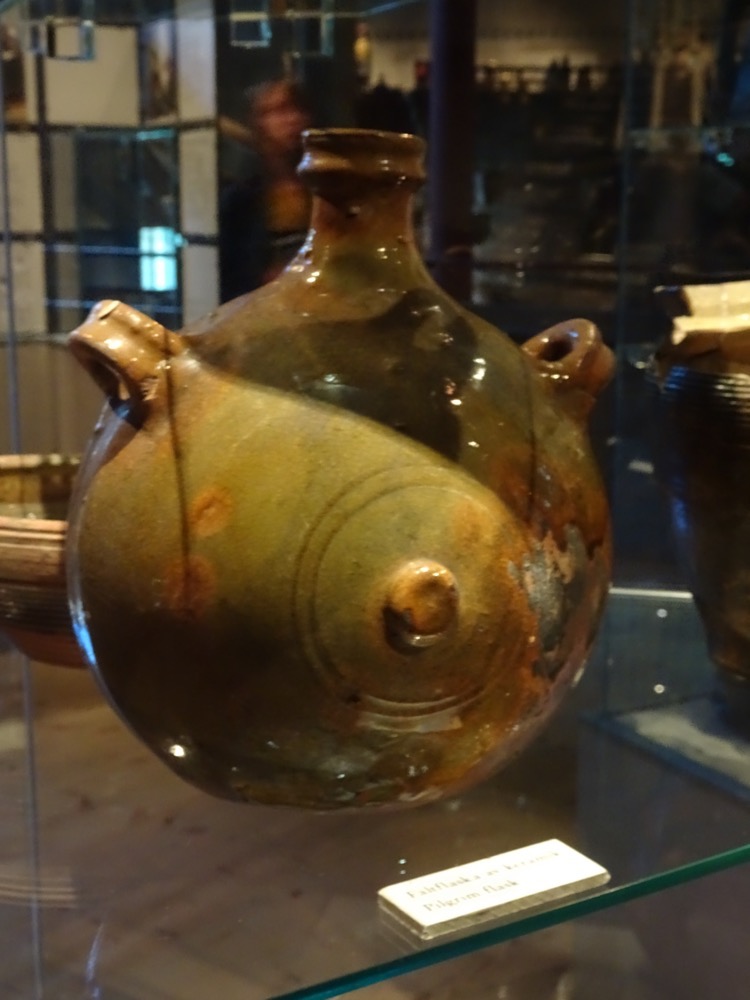
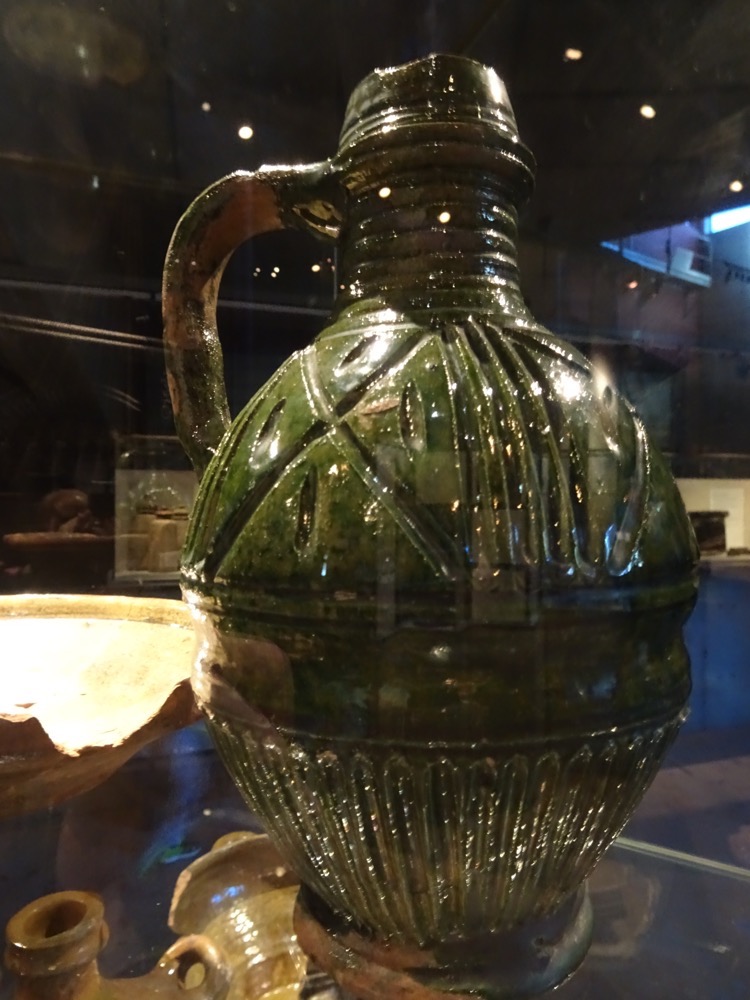
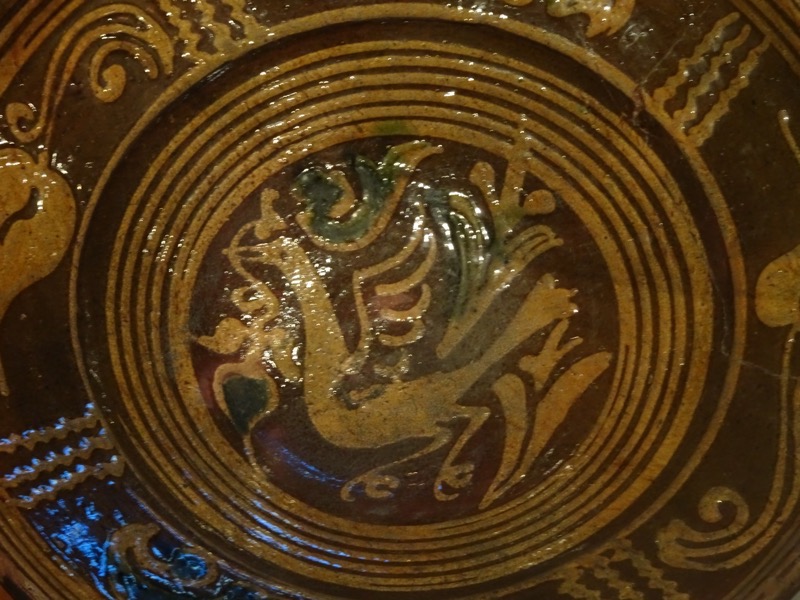 Simple wooden dishes and spoons mostly likely used by the conscipted seamen. In contrast the officers would have had pewter and faience dishes served in the Captain’s quarters.
Simple wooden dishes and spoons mostly likely used by the conscipted seamen. In contrast the officers would have had pewter and faience dishes served in the Captain’s quarters.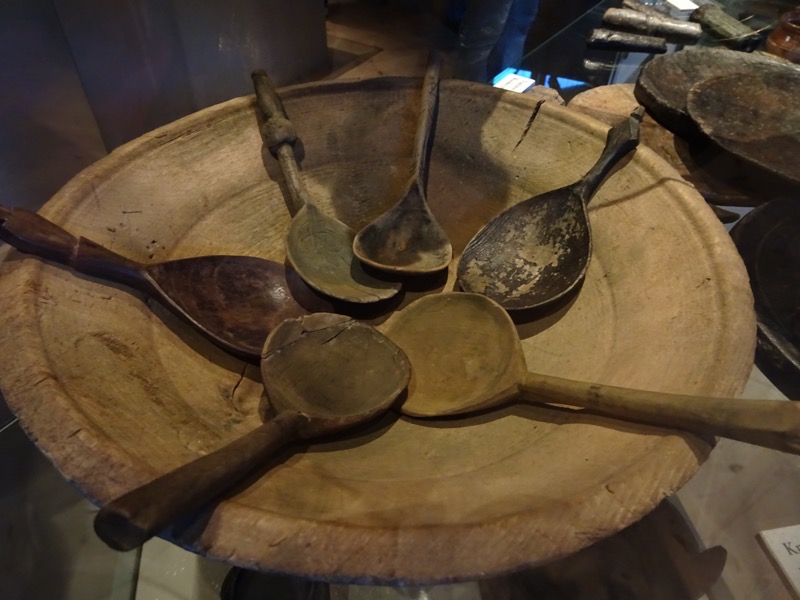
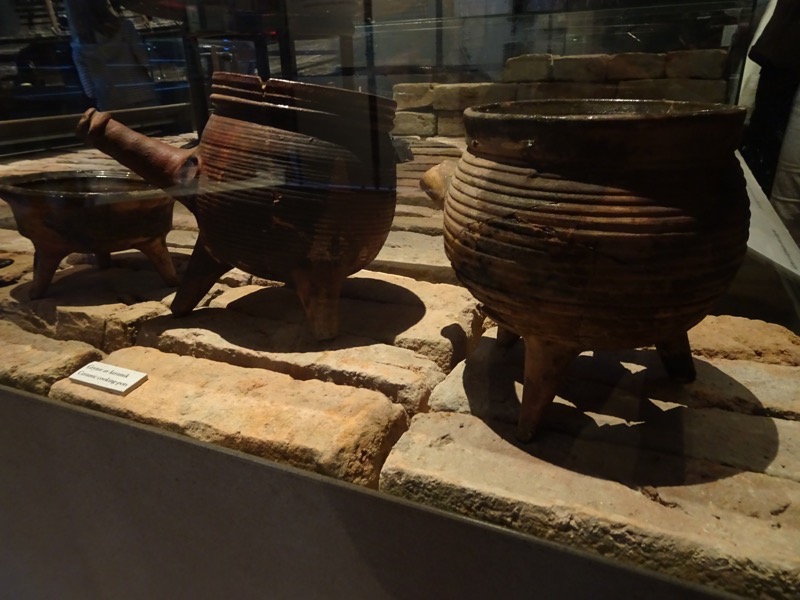
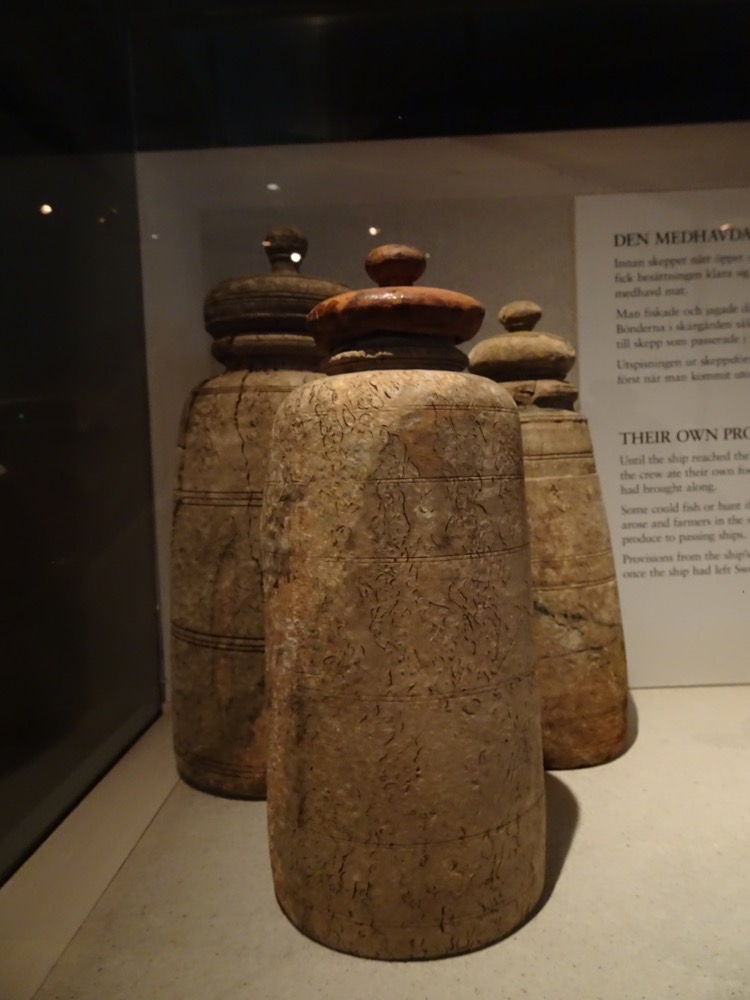
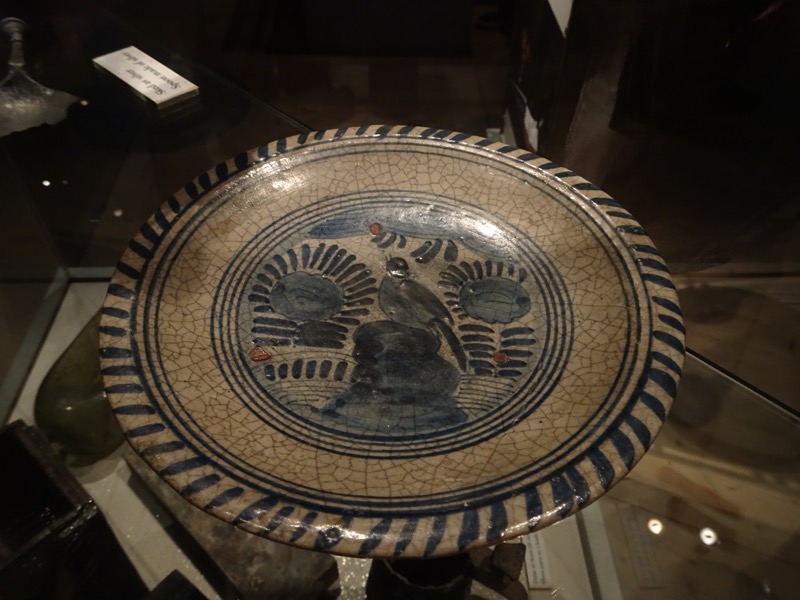
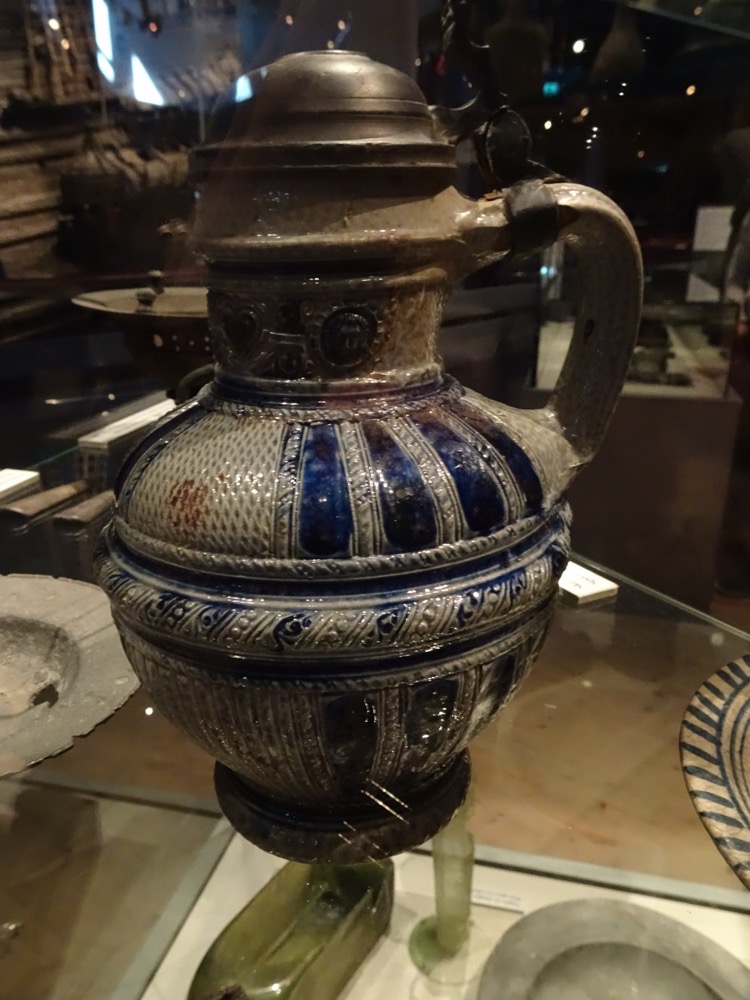
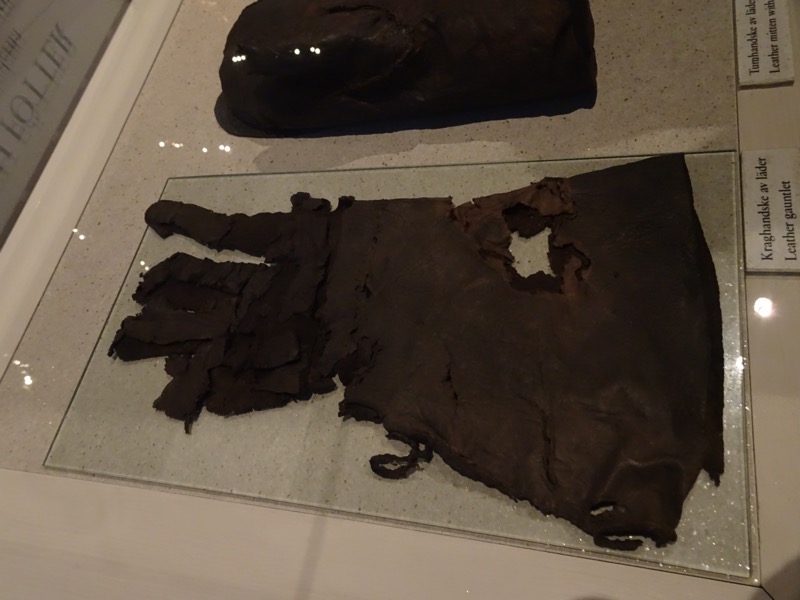
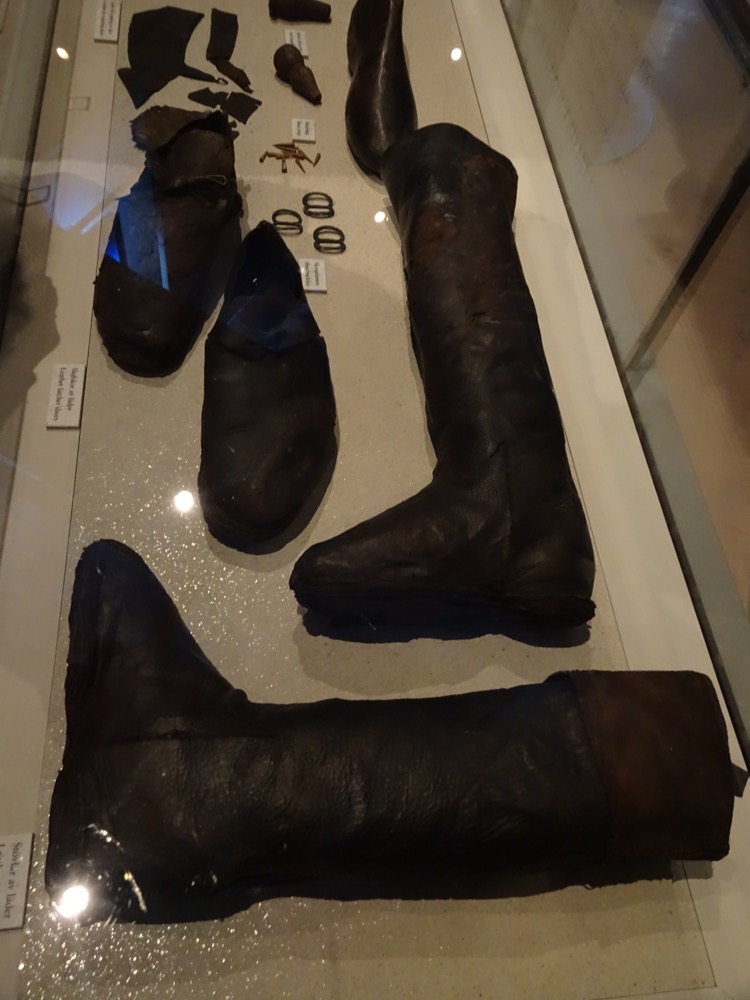
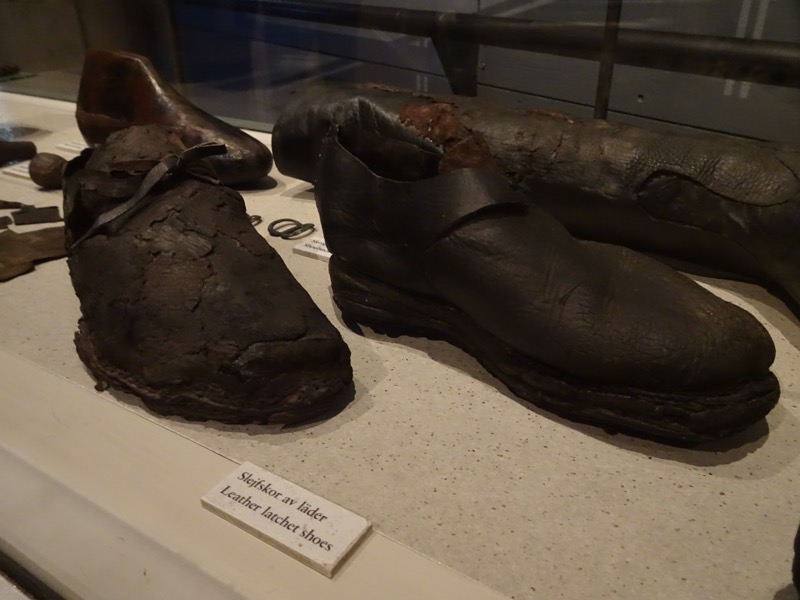
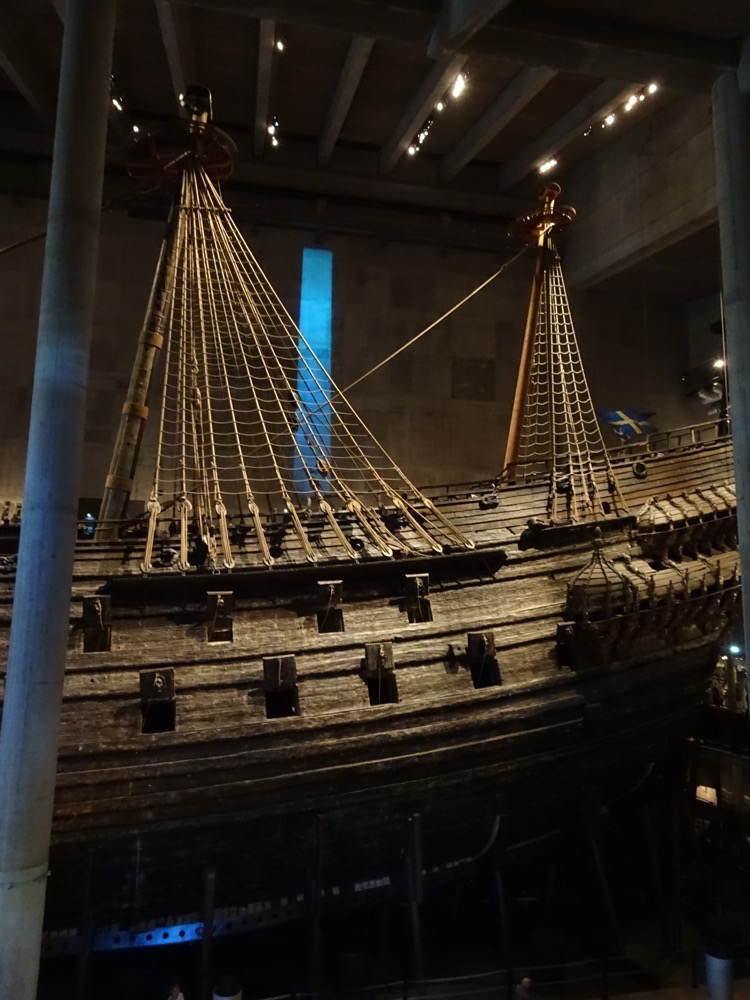
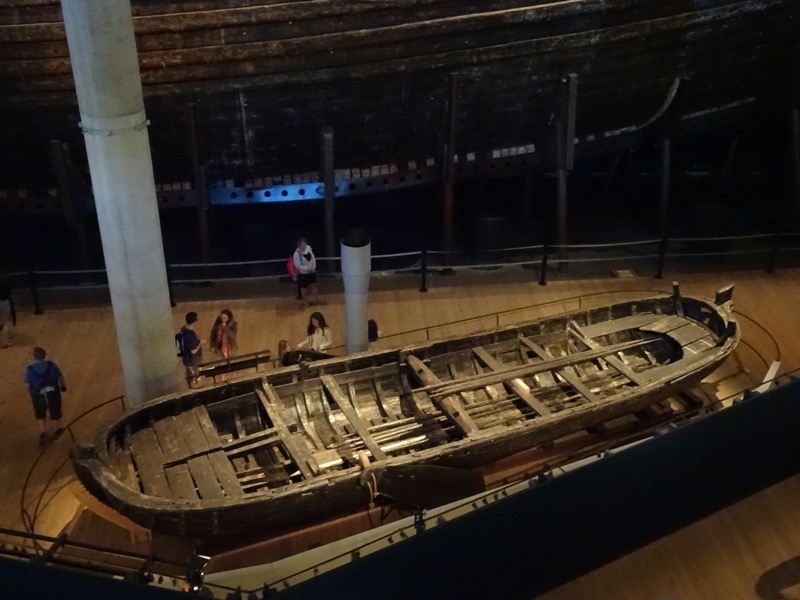 Entrance to the Captain’s quarters – which would have doubled as the King’s quarters if he was on board. Gustavus was an unusual Renaissance king and led his troops into battle for nearly 30 years.
Entrance to the Captain’s quarters – which would have doubled as the King’s quarters if he was on board. Gustavus was an unusual Renaissance king and led his troops into battle for nearly 30 years. 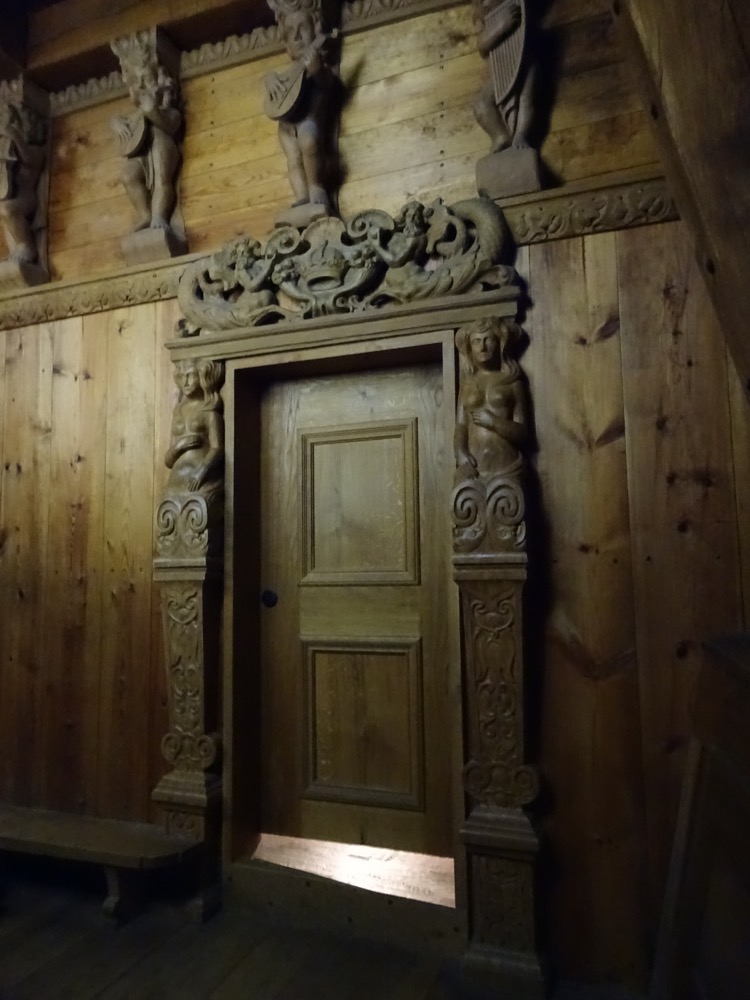
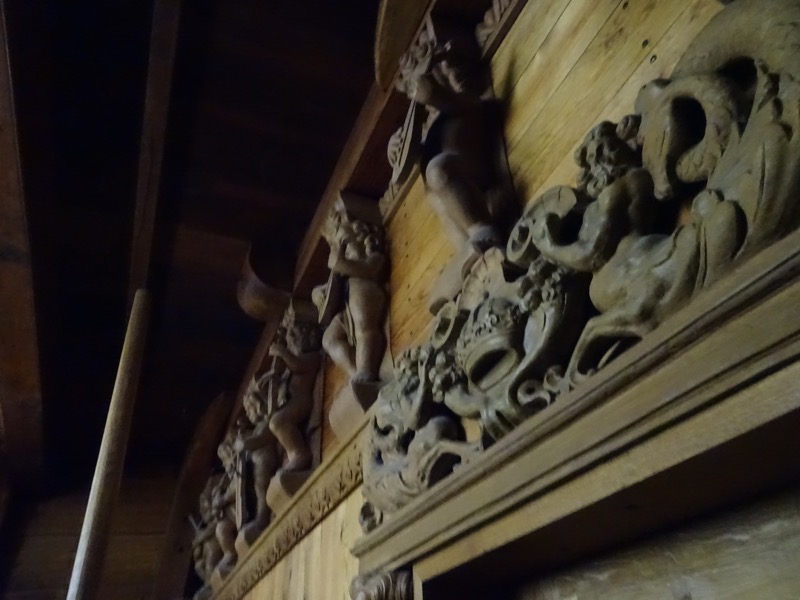 Captain’s quarters – the ceiling height is barely 5’5″ inside.
Captain’s quarters – the ceiling height is barely 5’5″ inside.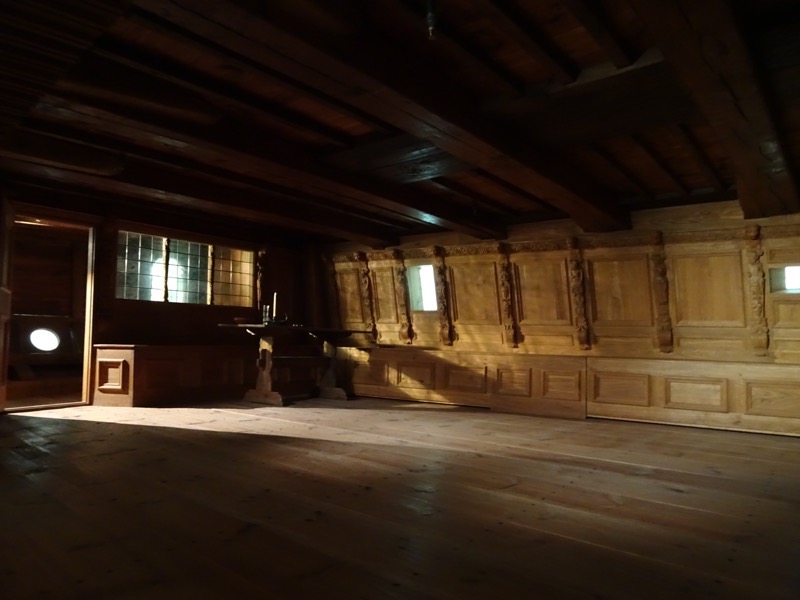
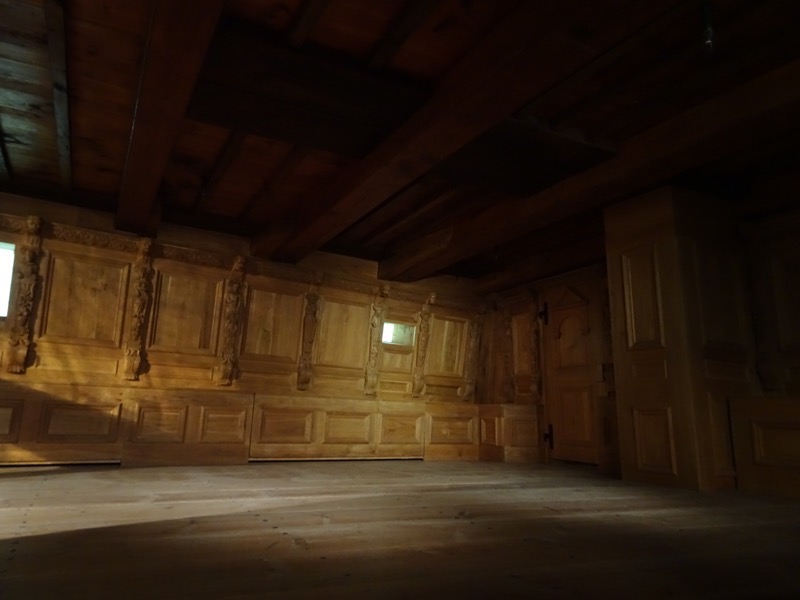
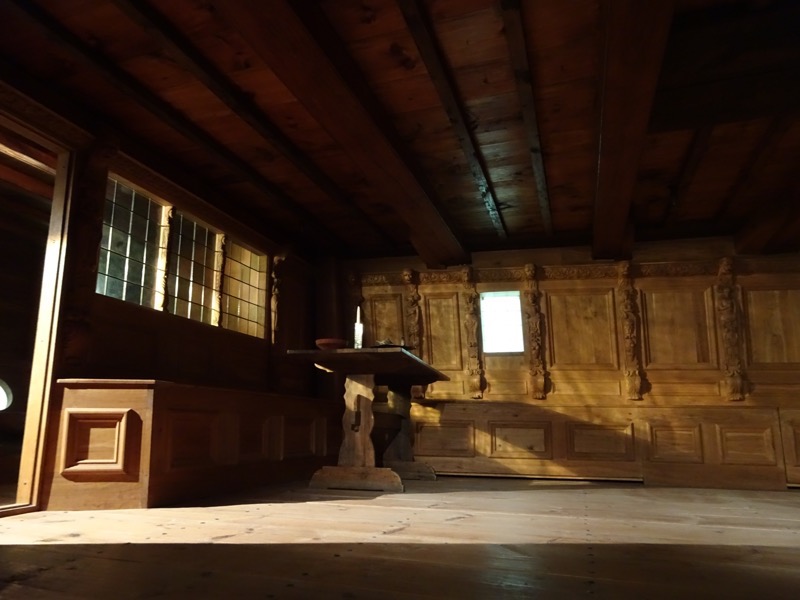 The Vasa Museum itself is quite a spectacle, if you look out the window,s it is only a few hundred meters from the spot where the Vasa sank. The museum also occupies the site of the former naval dockyard. There were 384 proposals to build a museum to house the important Vasa warship
The Vasa Museum itself is quite a spectacle, if you look out the window,s it is only a few hundred meters from the spot where the Vasa sank. The museum also occupies the site of the former naval dockyard. There were 384 proposals to build a museum to house the important Vasa warship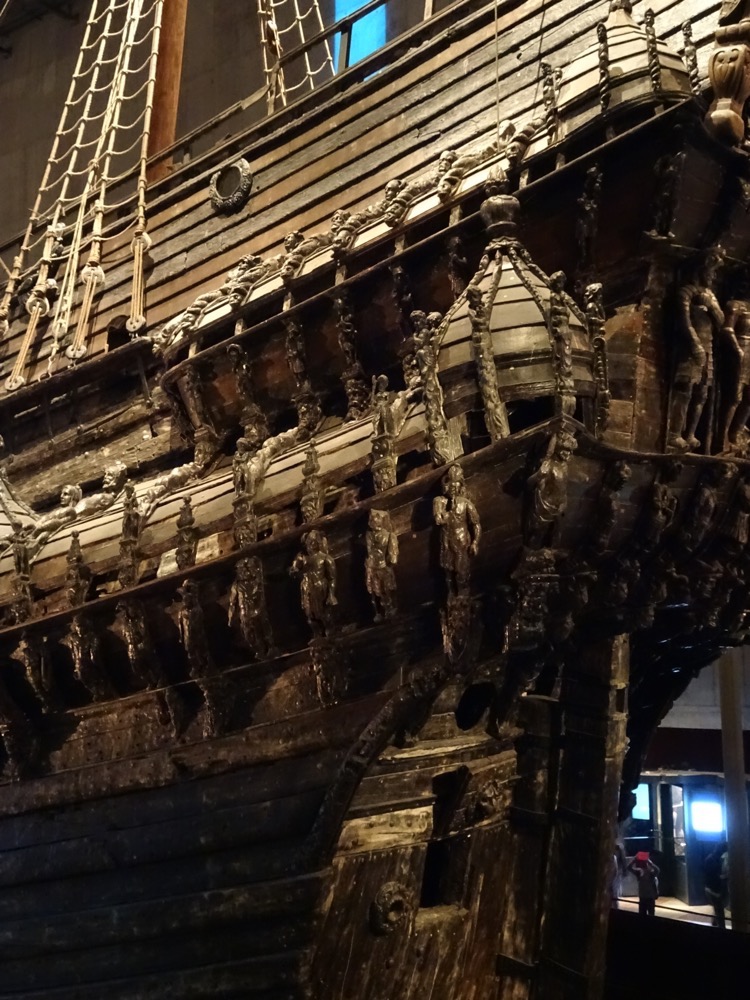
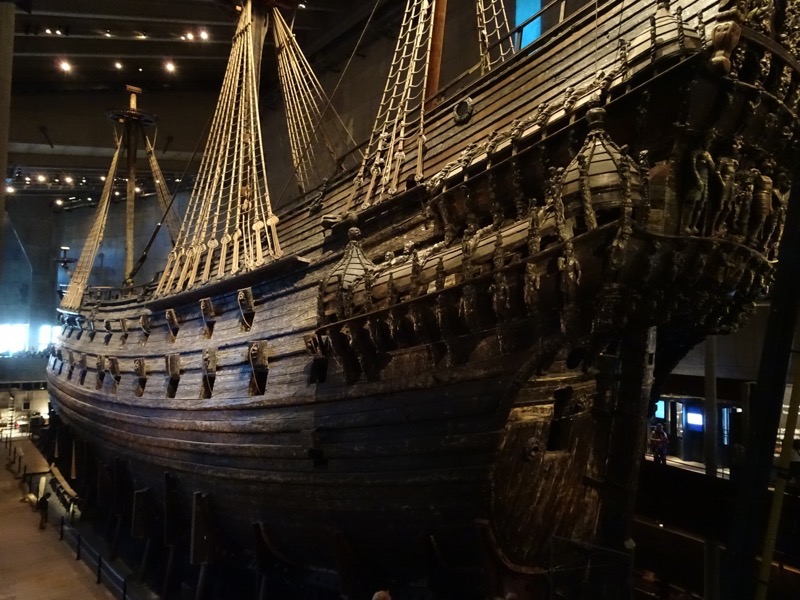 The blue window to the right, depicts the depth of water in which the Vasa sank.
The blue window to the right, depicts the depth of water in which the Vasa sank.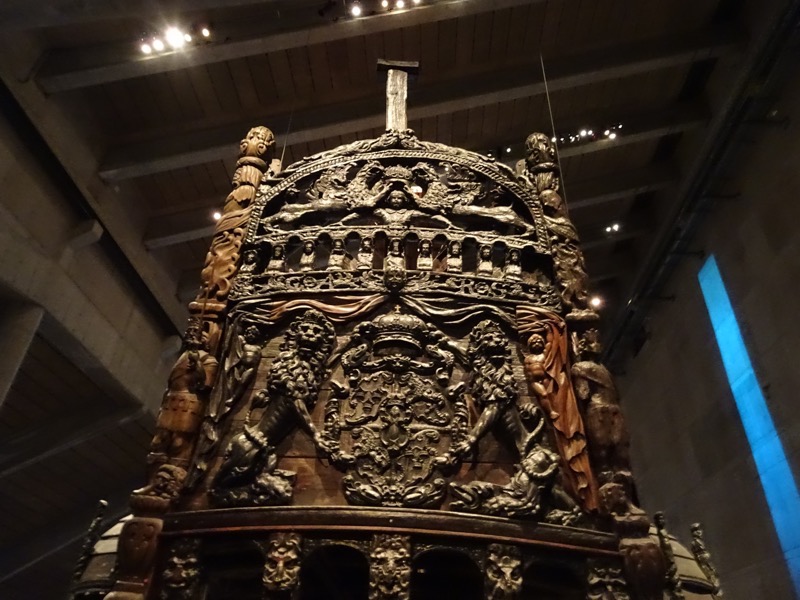
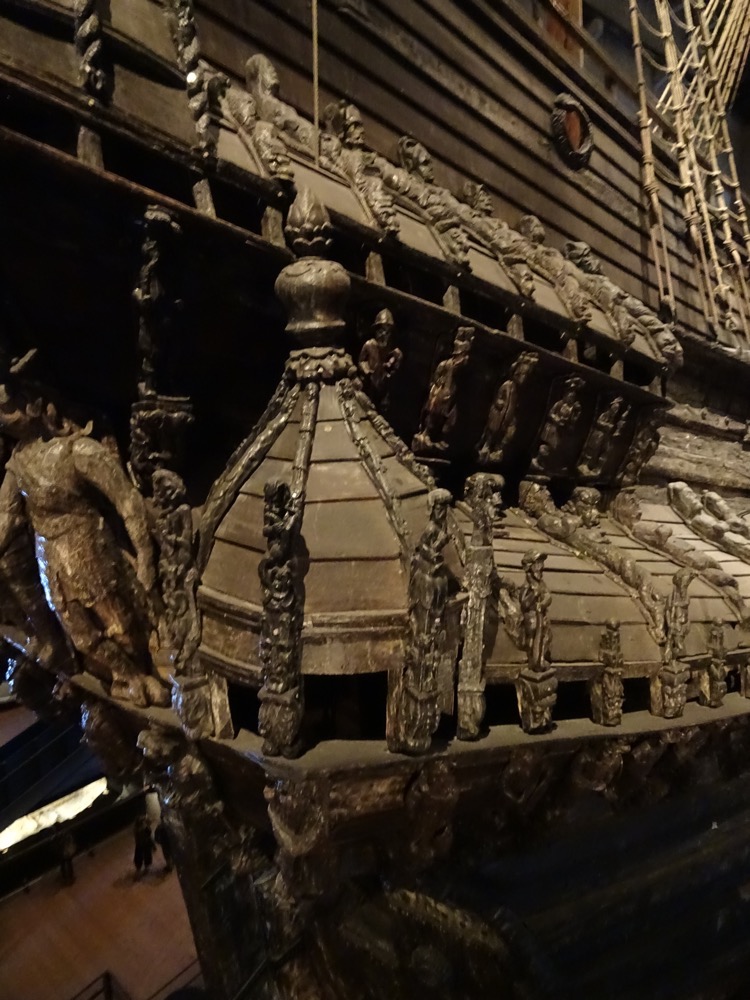 The height of the ceiling marks the point at which the masts were cut off when the ship was submerged. Part of the architectural design has the full size of the masts on the outside of the building showing the full 52.5m height of the ship.
The height of the ceiling marks the point at which the masts were cut off when the ship was submerged. Part of the architectural design has the full size of the masts on the outside of the building showing the full 52.5m height of the ship.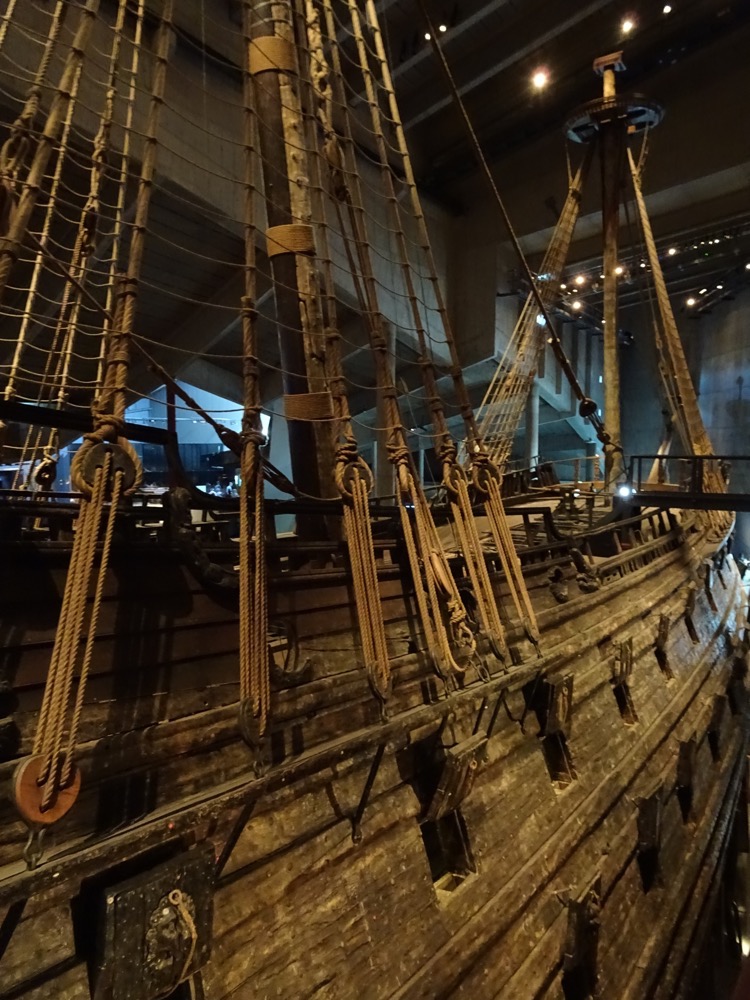
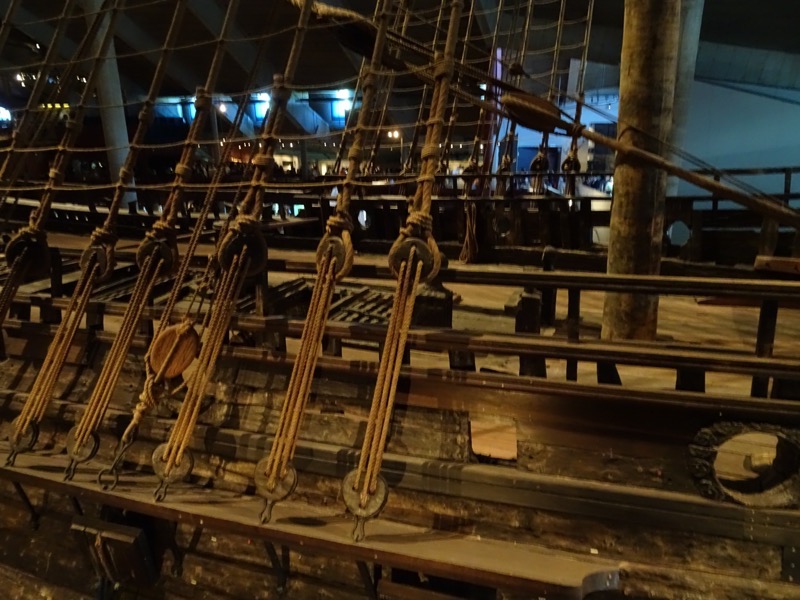
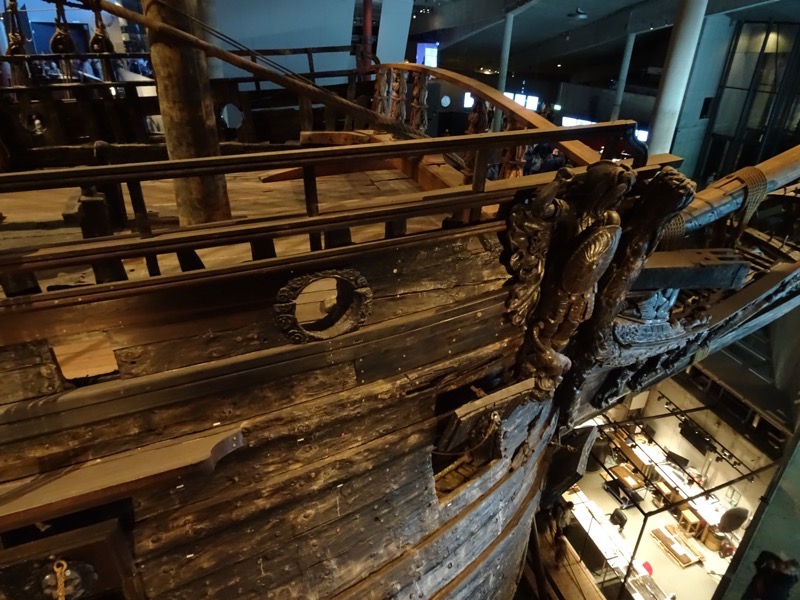
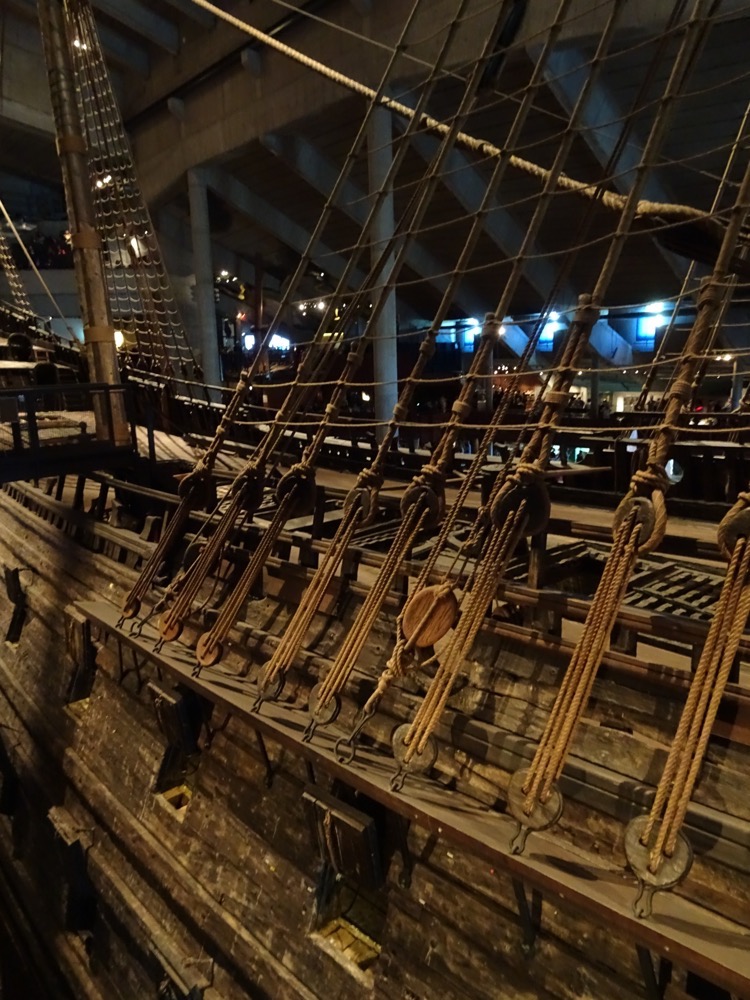
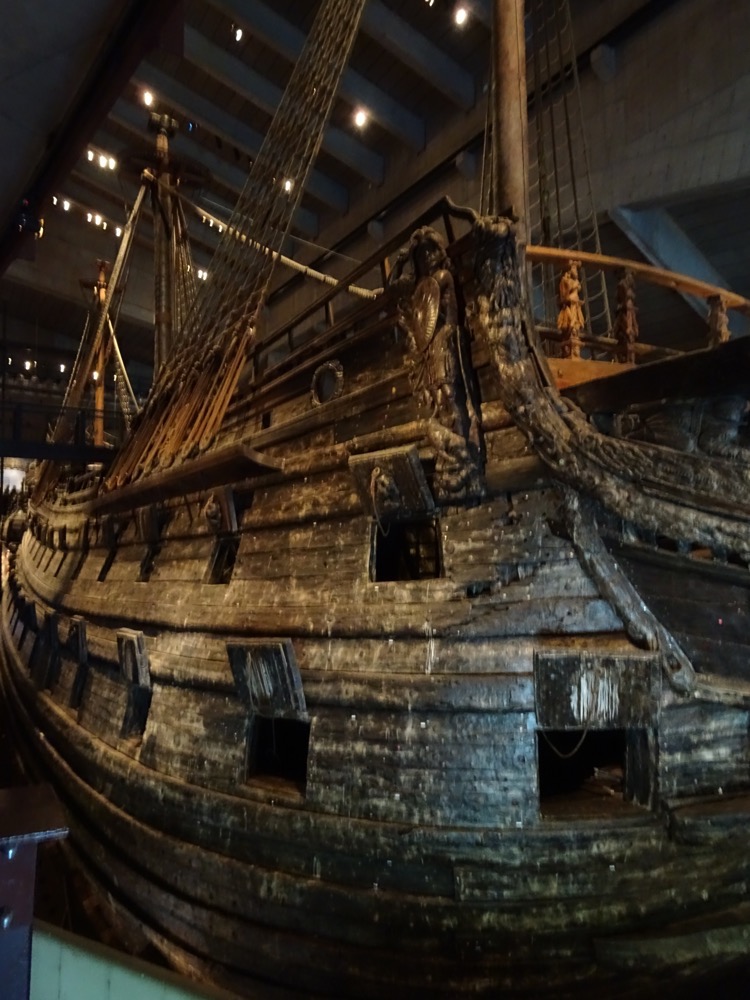

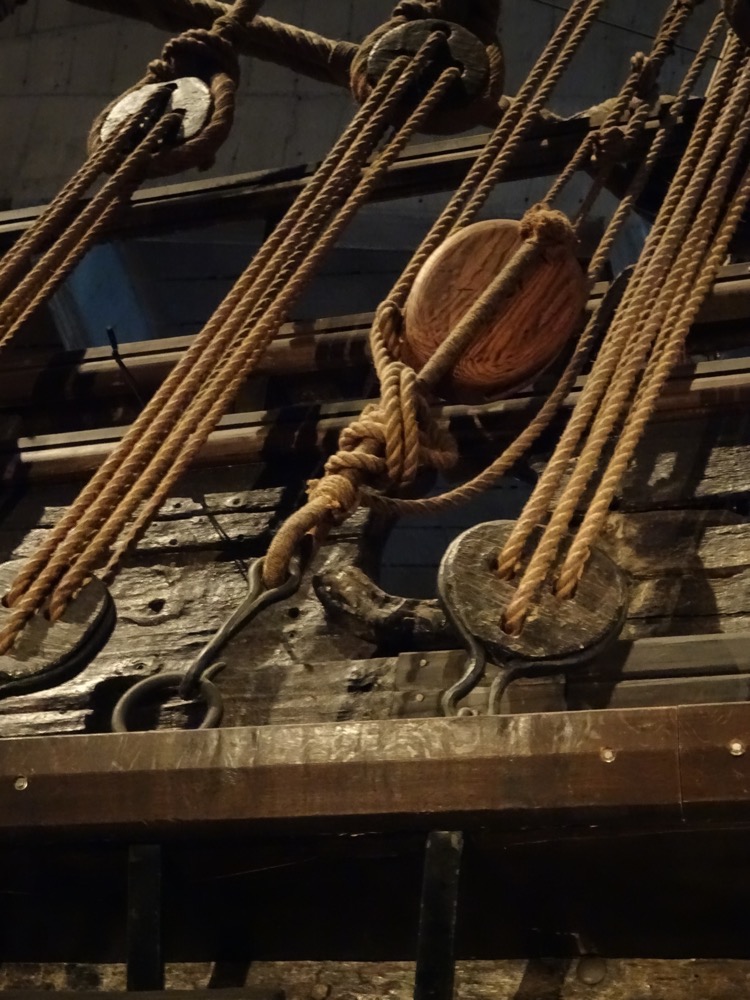 It is an exceedingly impressive ship, and in a perfectly designed musuem to showcase it. No wonder it has become one of the world’s premiere tourist attractions – you can not seen anything like this anywhere else in the world.
It is an exceedingly impressive ship, and in a perfectly designed musuem to showcase it. No wonder it has become one of the world’s premiere tourist attractions – you can not seen anything like this anywhere else in the world.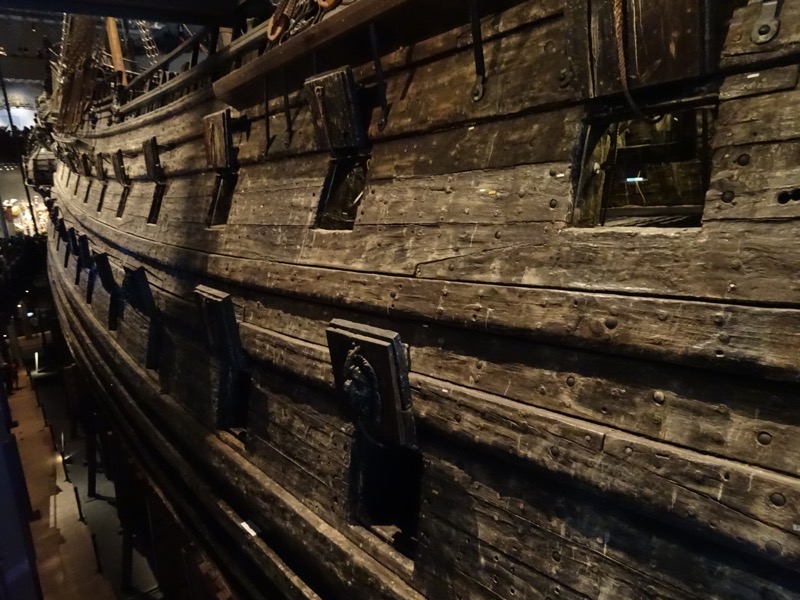
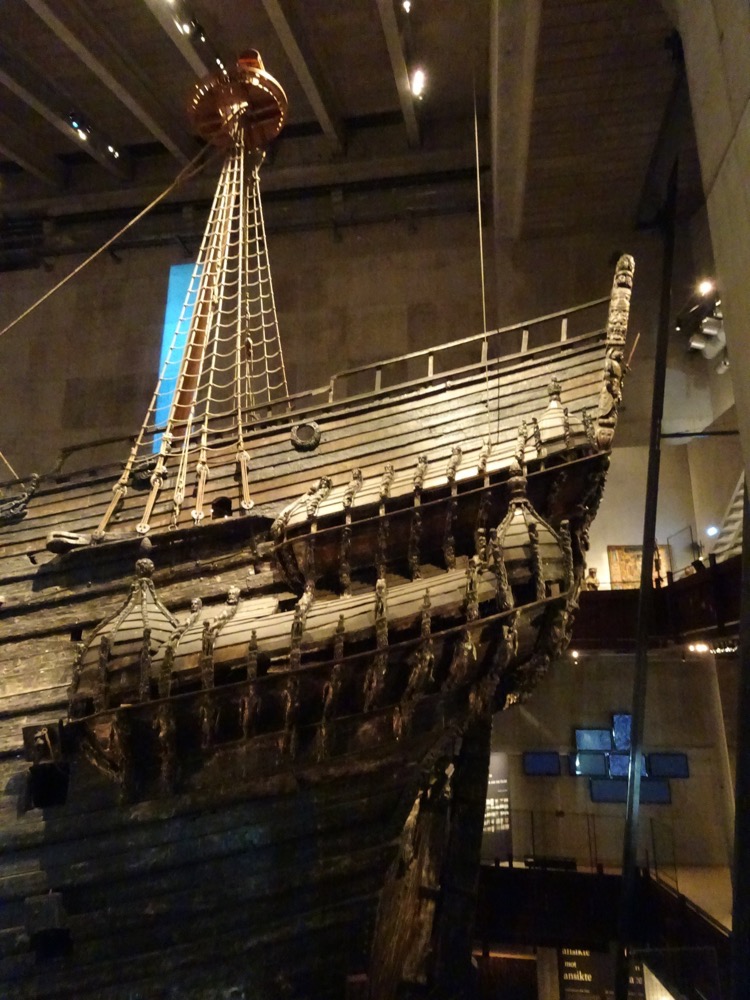
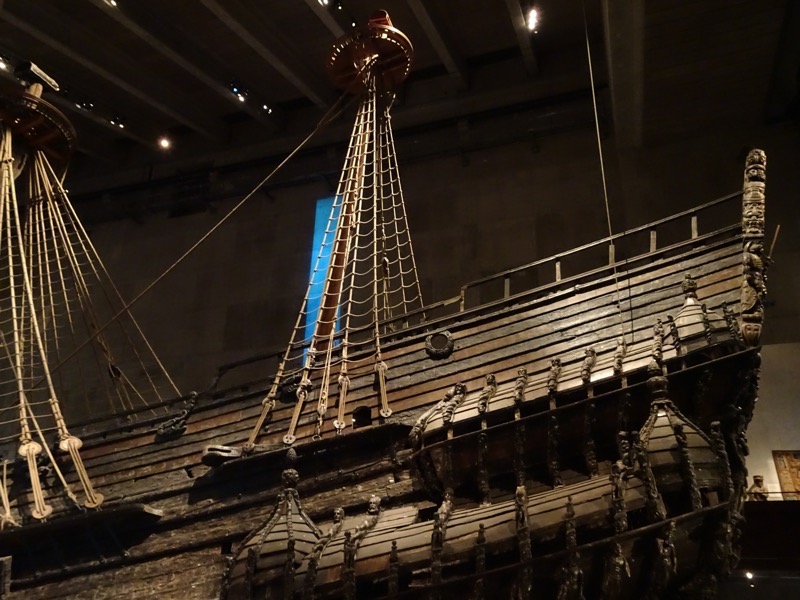
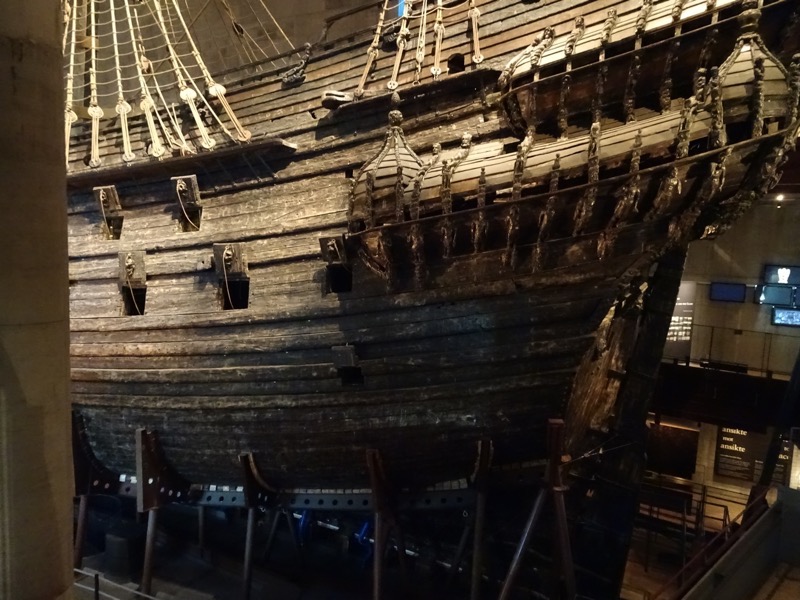
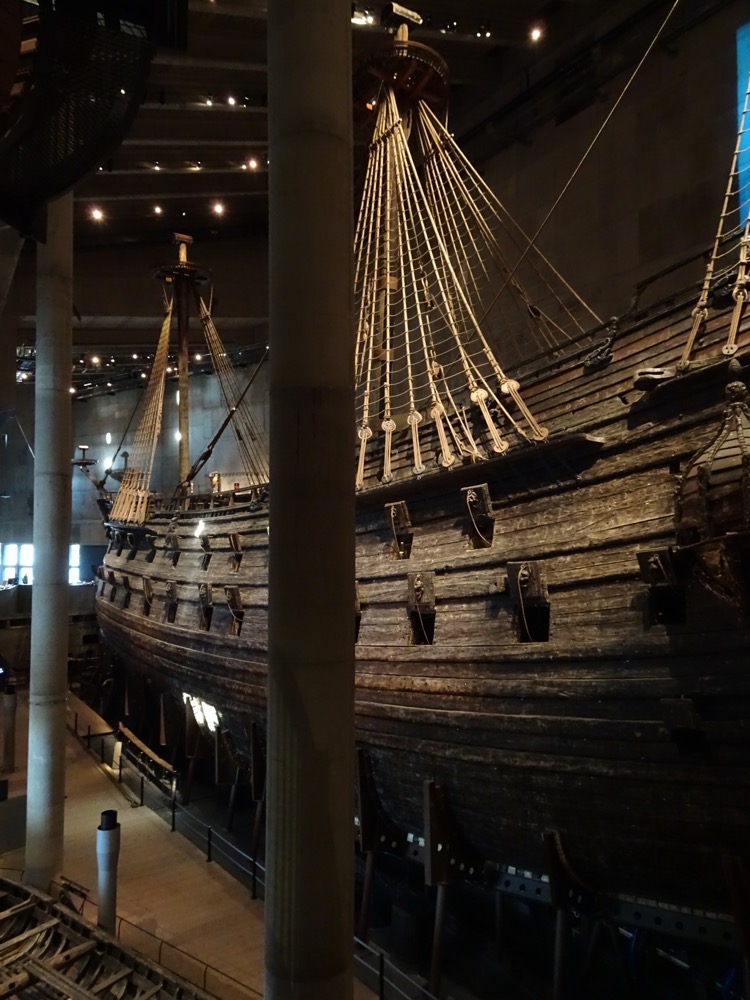
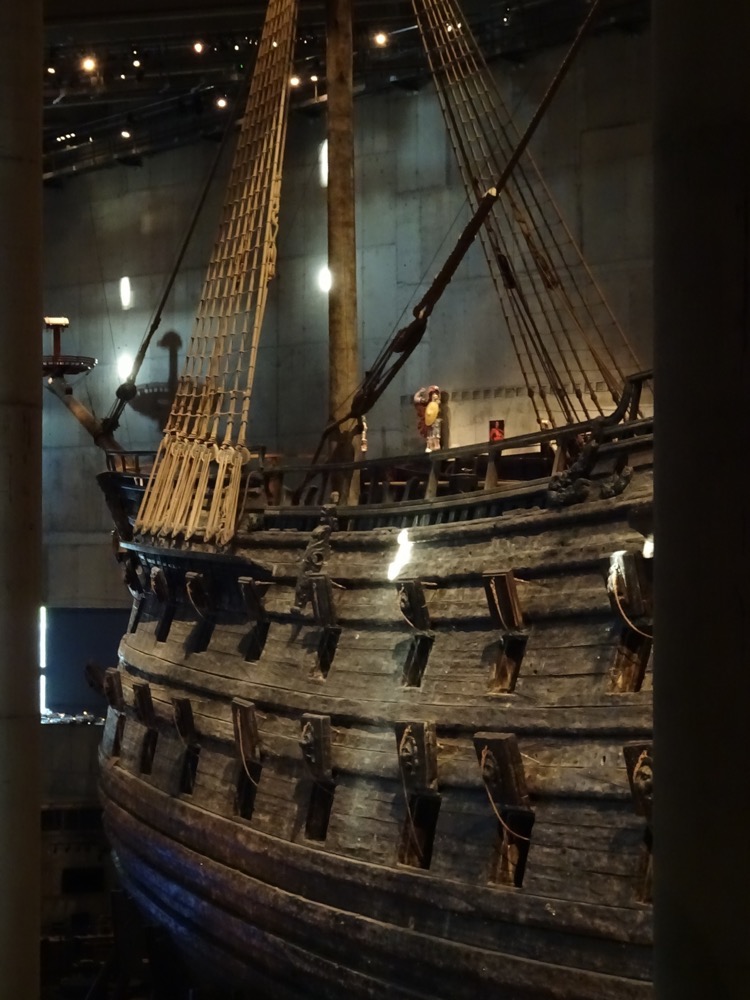
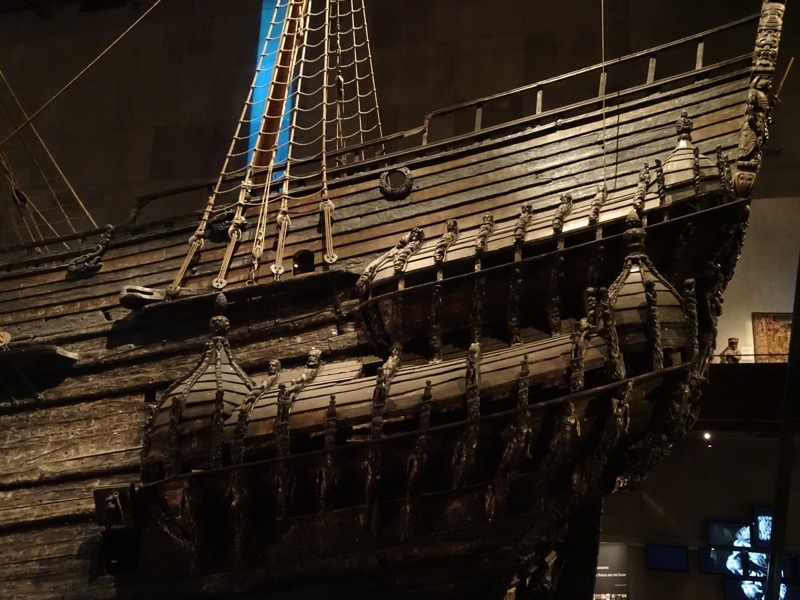
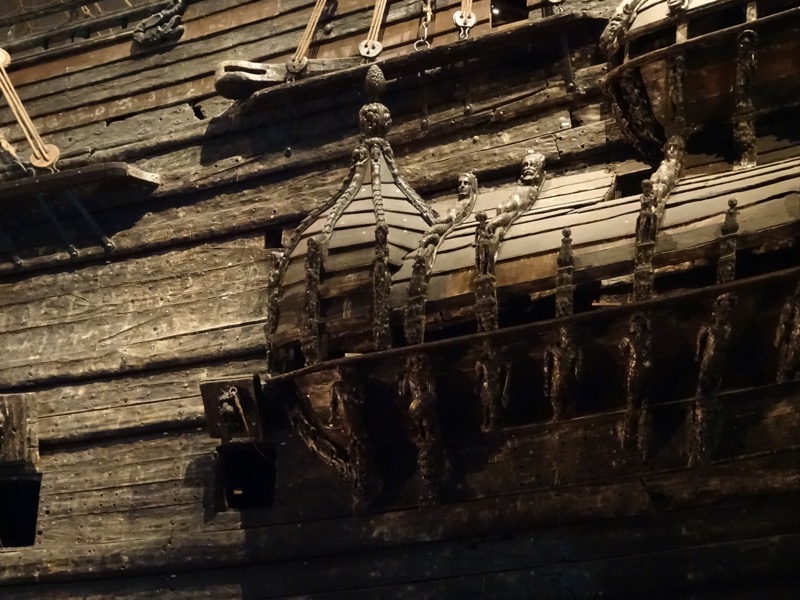
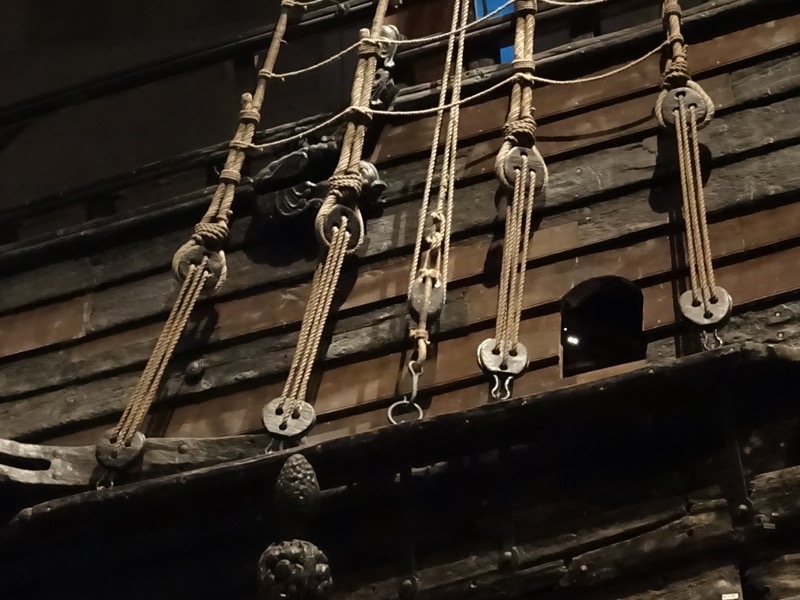 A recreation of the gun decks shows how large the cannon were and in what tight quarters the soldiers lived.
A recreation of the gun decks shows how large the cannon were and in what tight quarters the soldiers lived.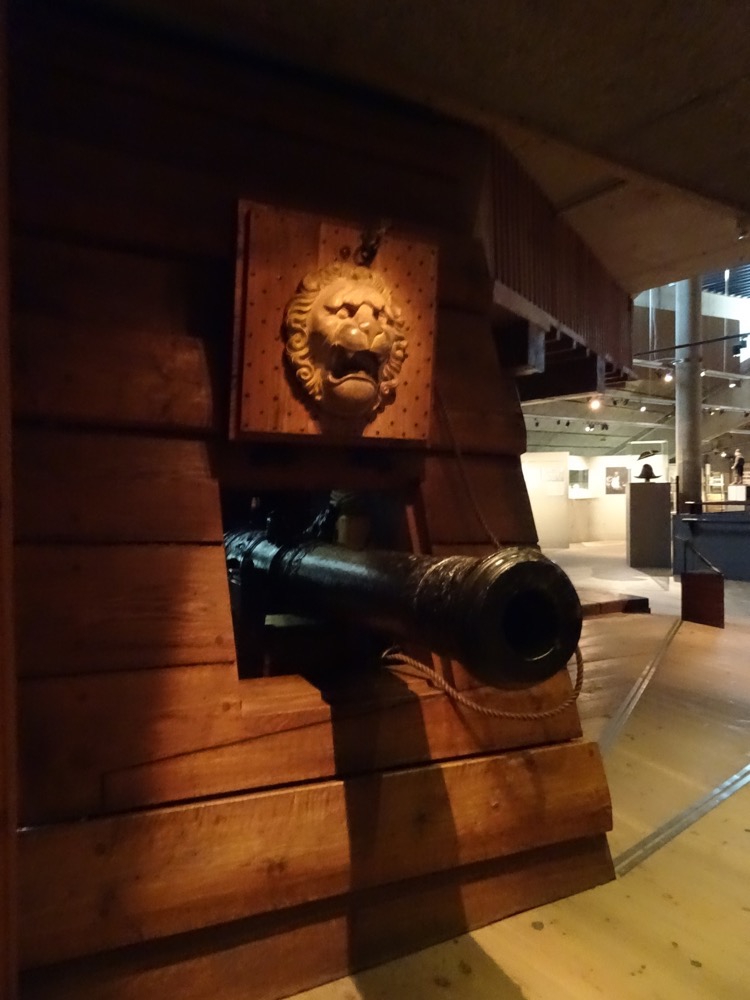
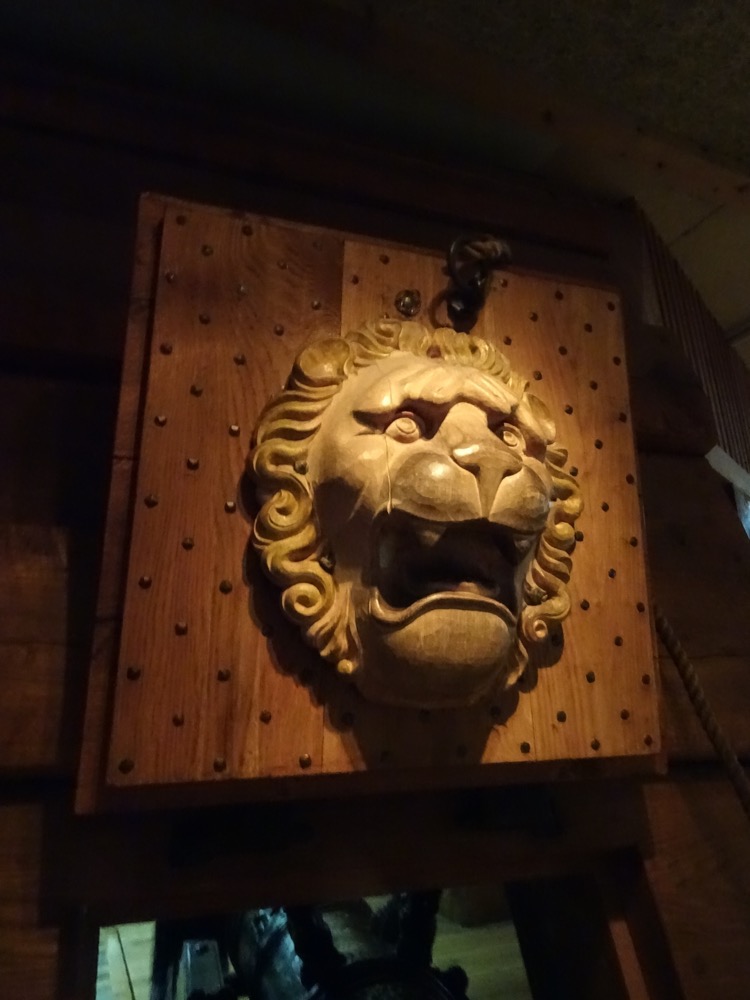 Six to eight men would ‘live’ between each gun. This was achieved by working and sleeping in shifts. Still, it would have been extremely close and uncomfortable quarters for what was potentially months at sea.
Six to eight men would ‘live’ between each gun. This was achieved by working and sleeping in shifts. Still, it would have been extremely close and uncomfortable quarters for what was potentially months at sea.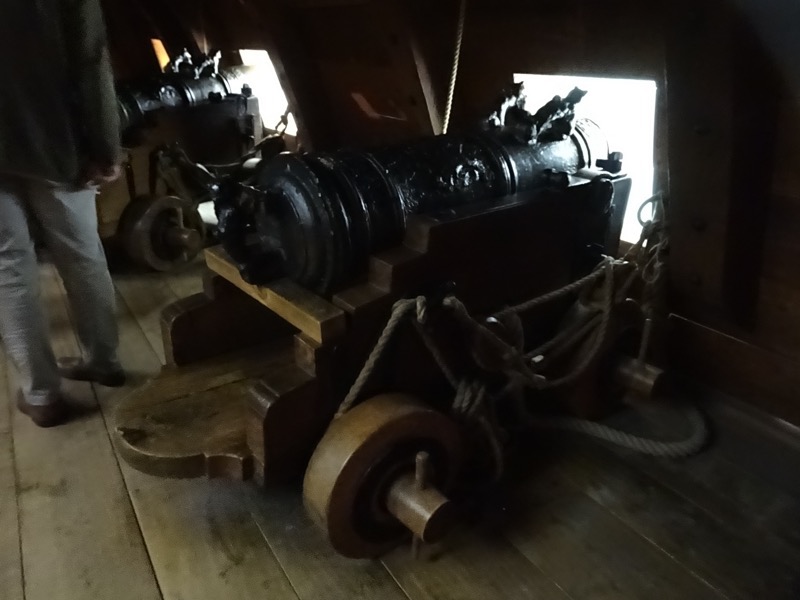
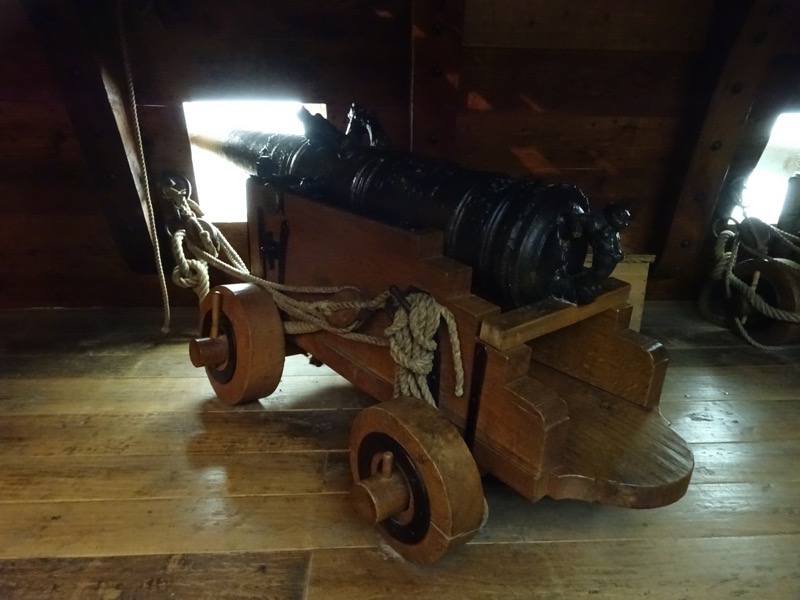
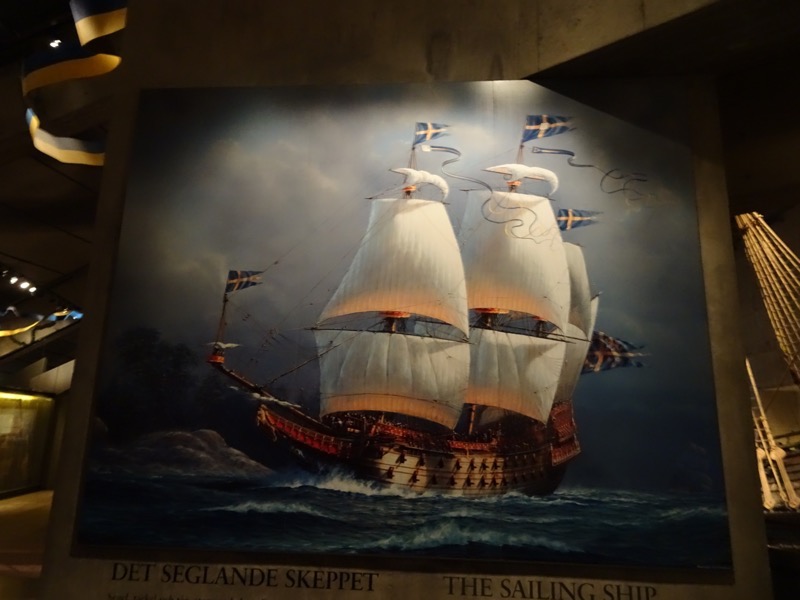
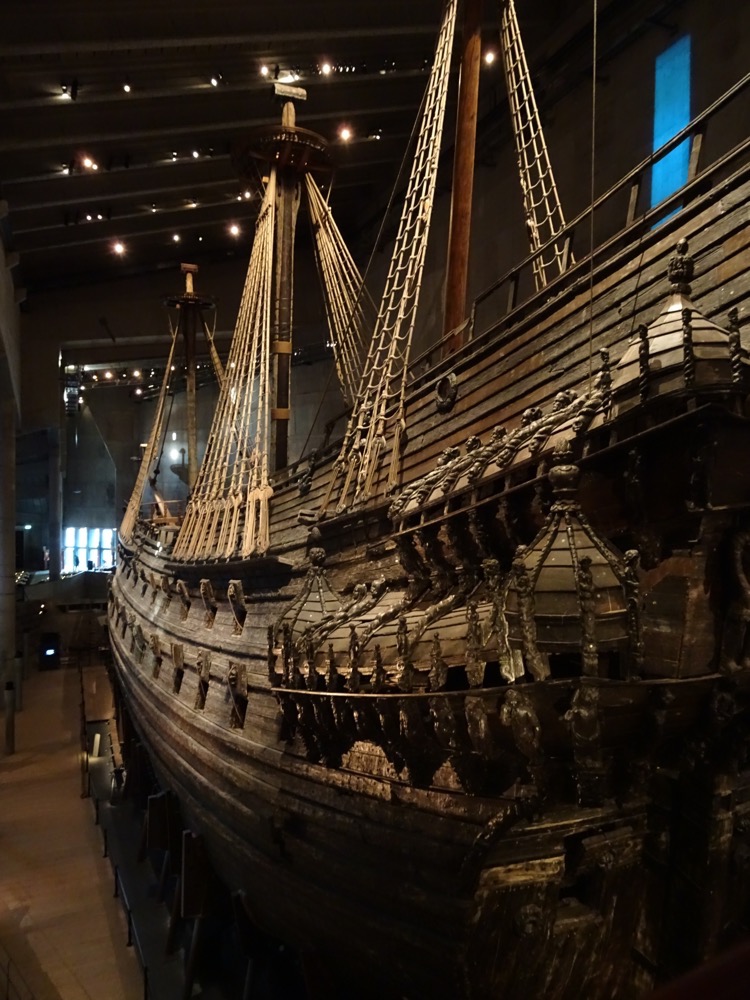
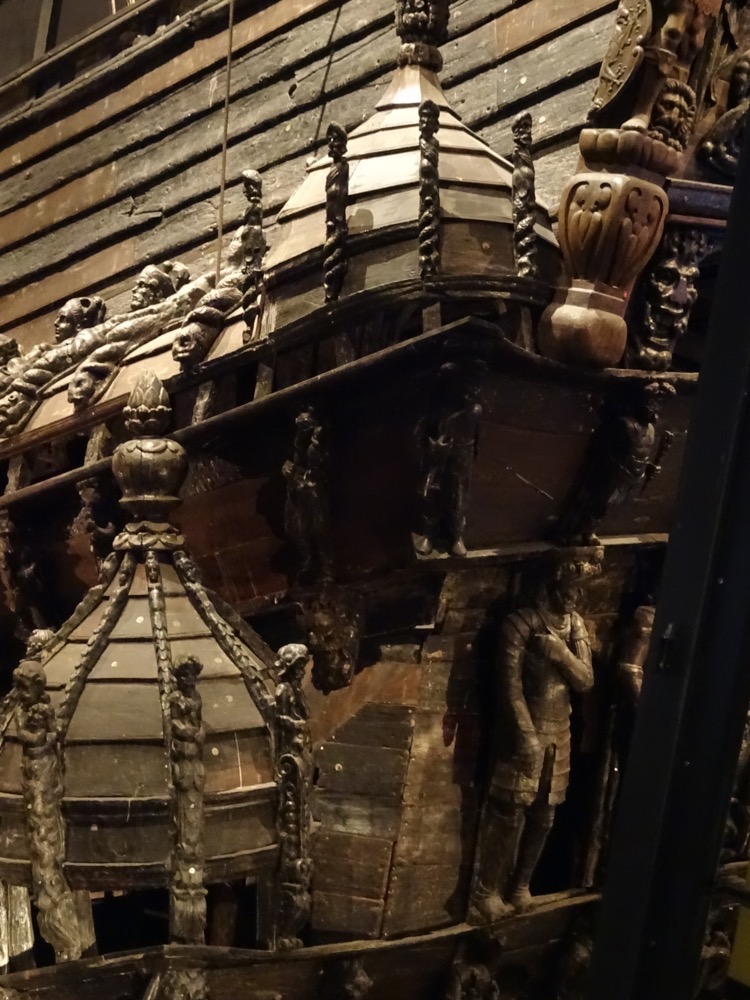
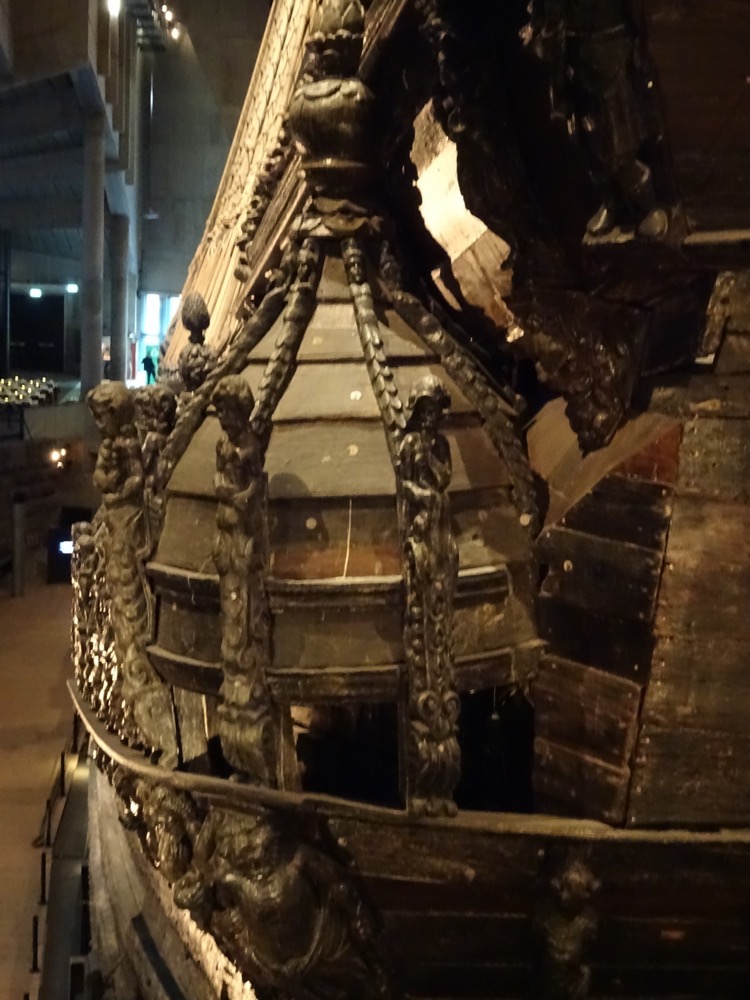
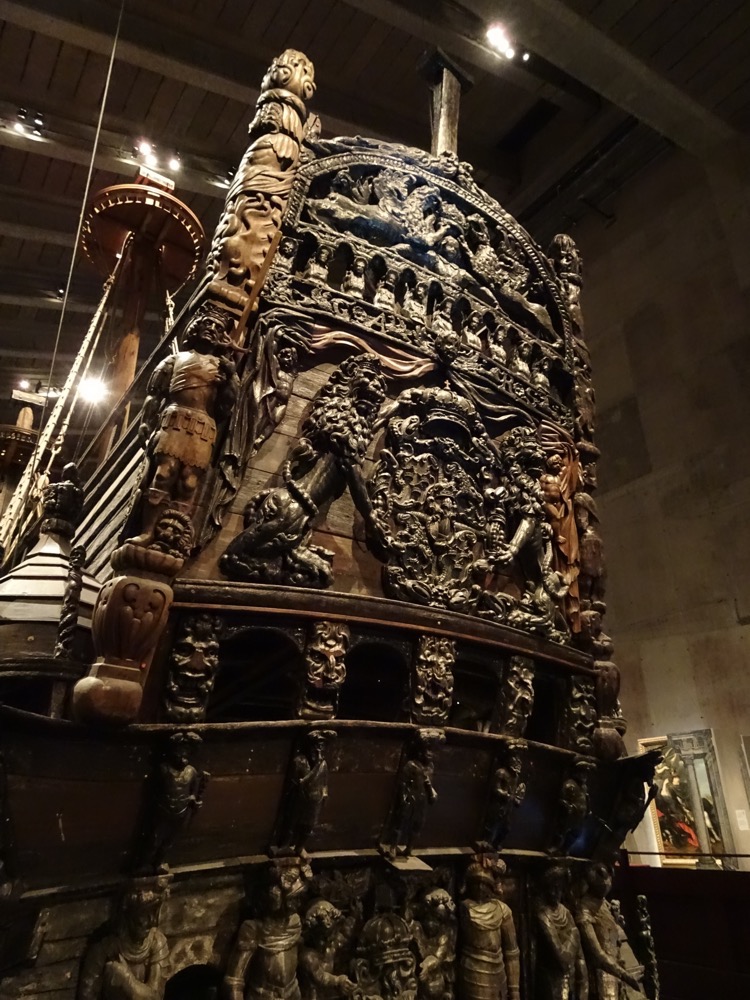
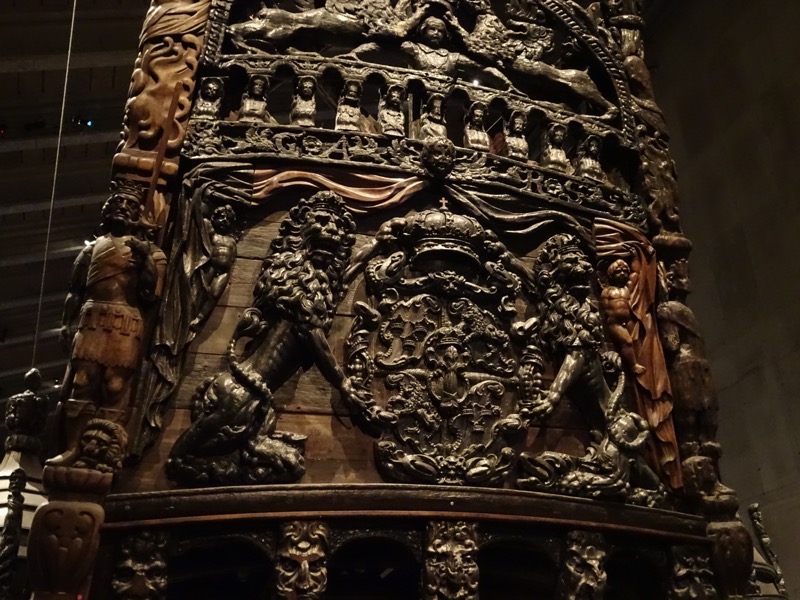
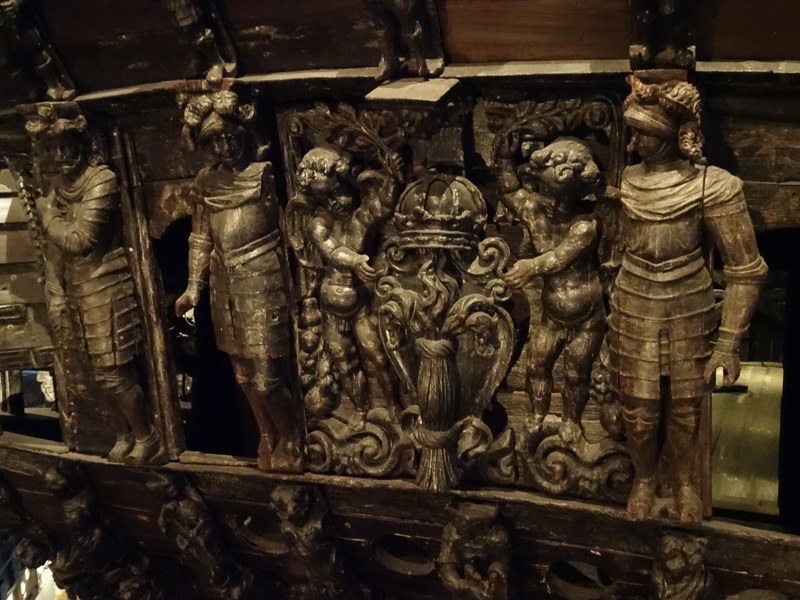
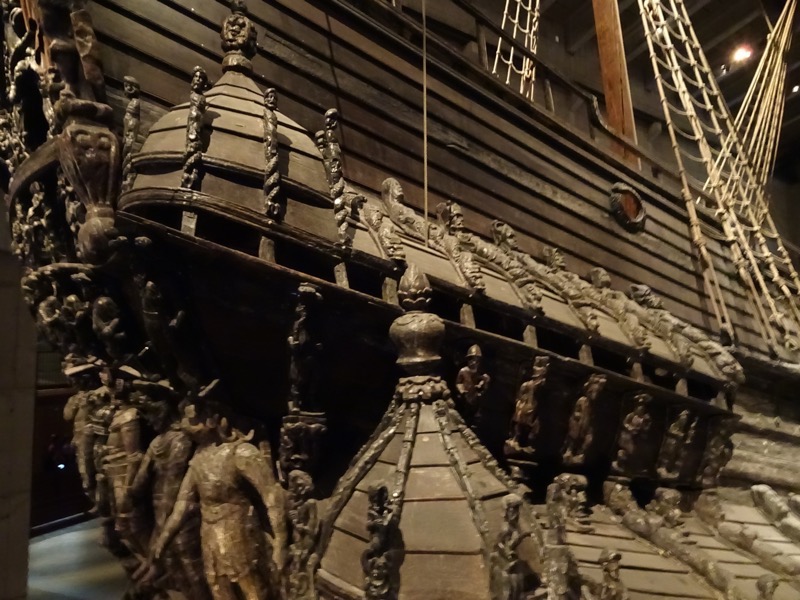
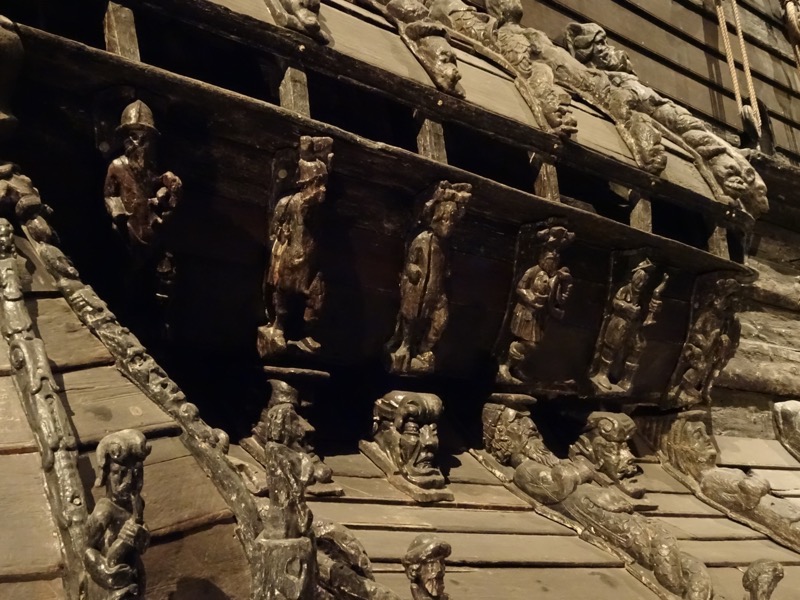
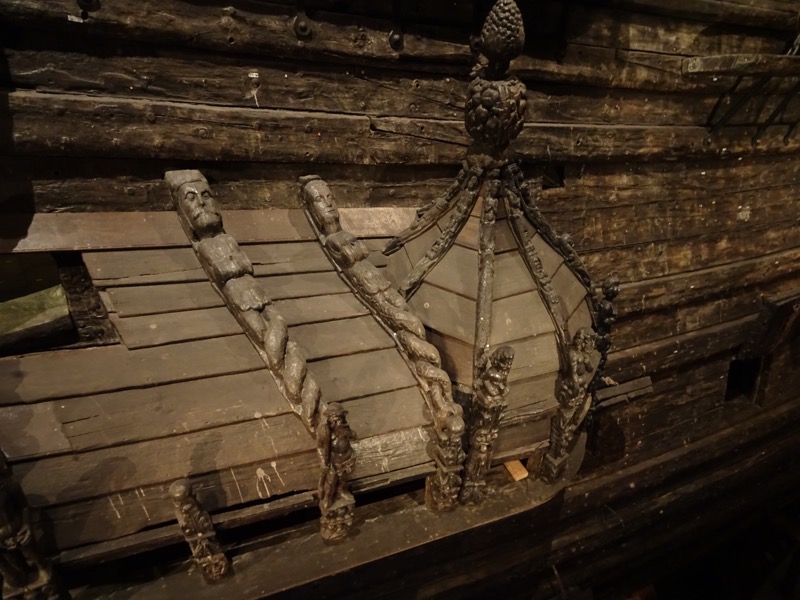
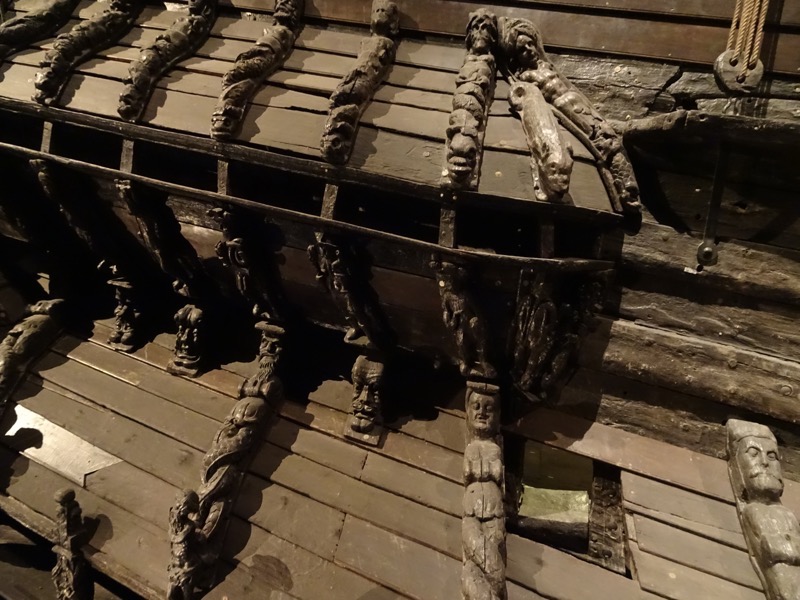
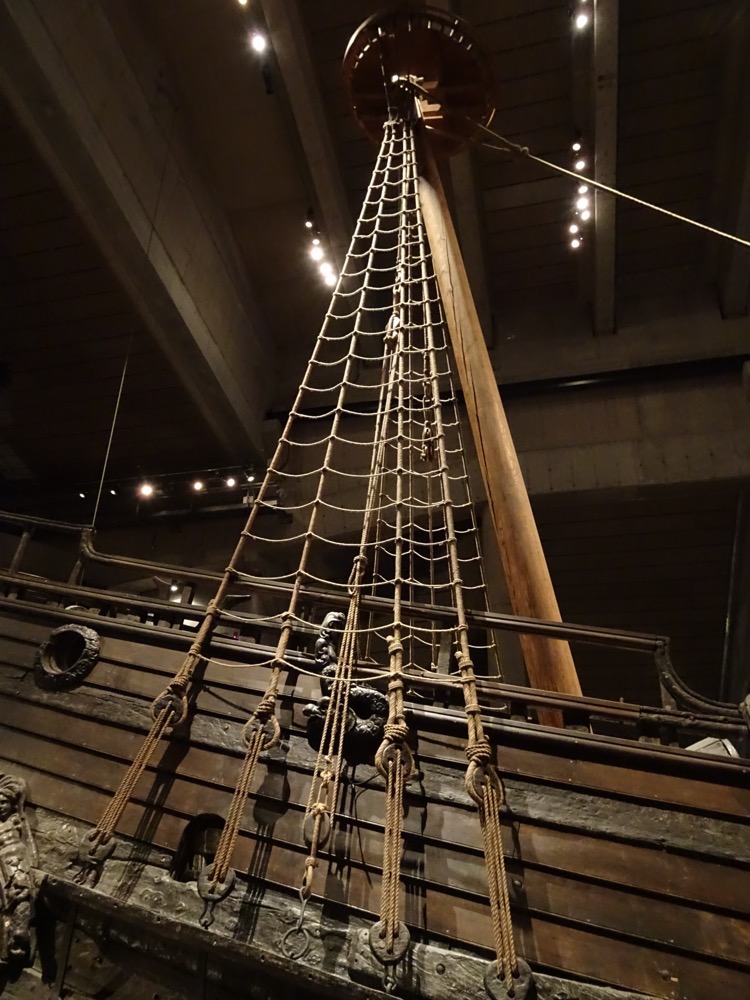
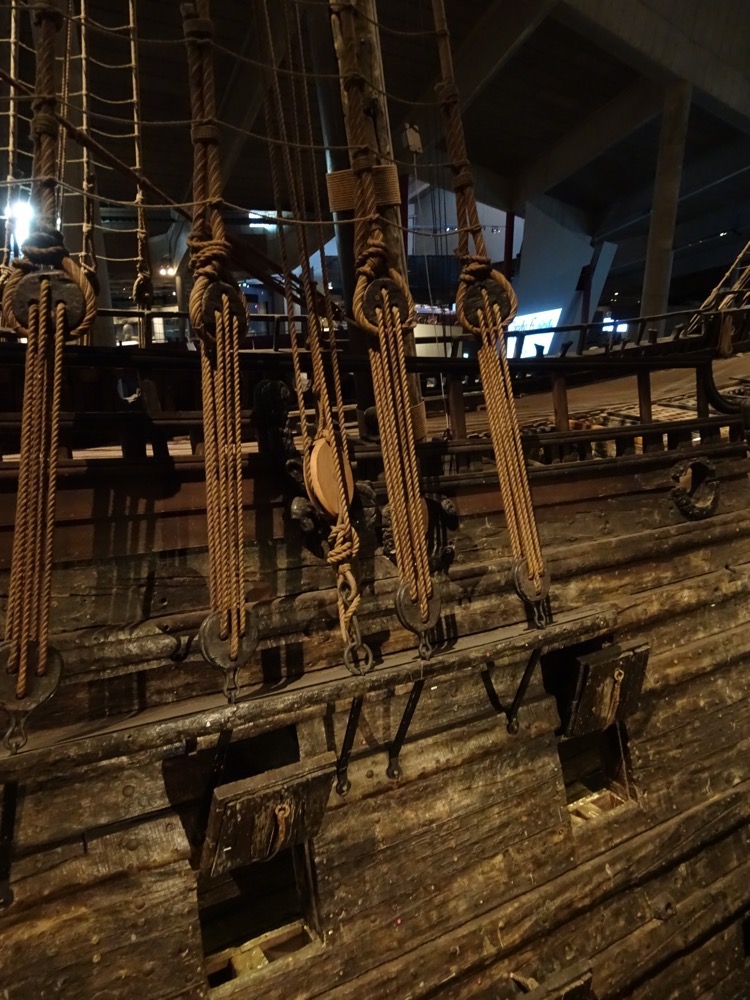
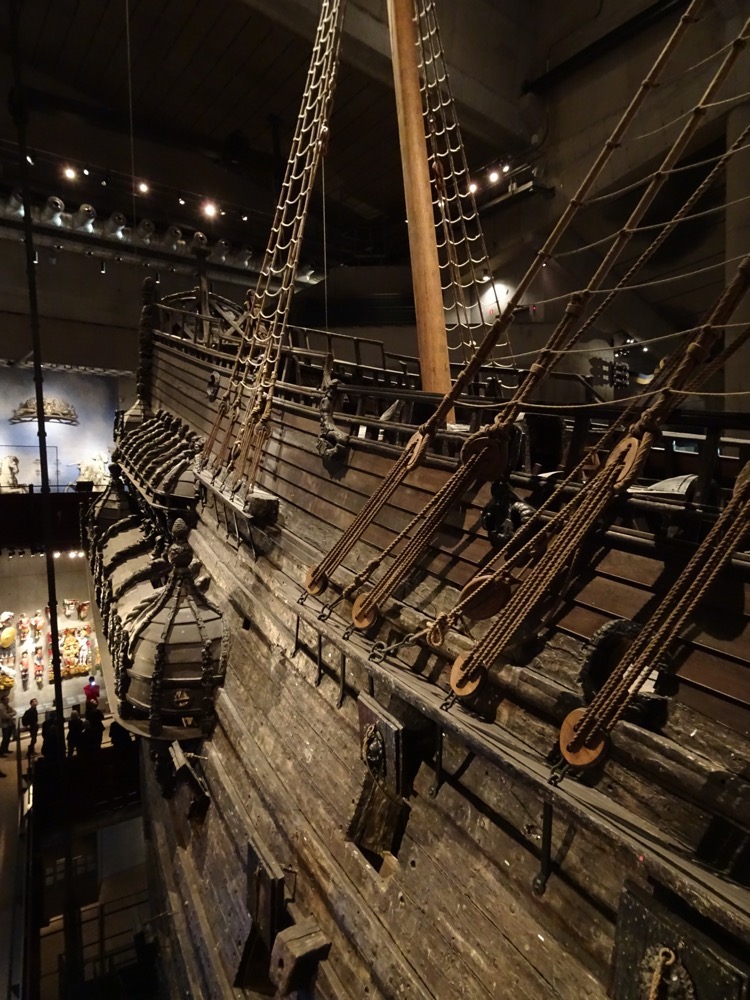
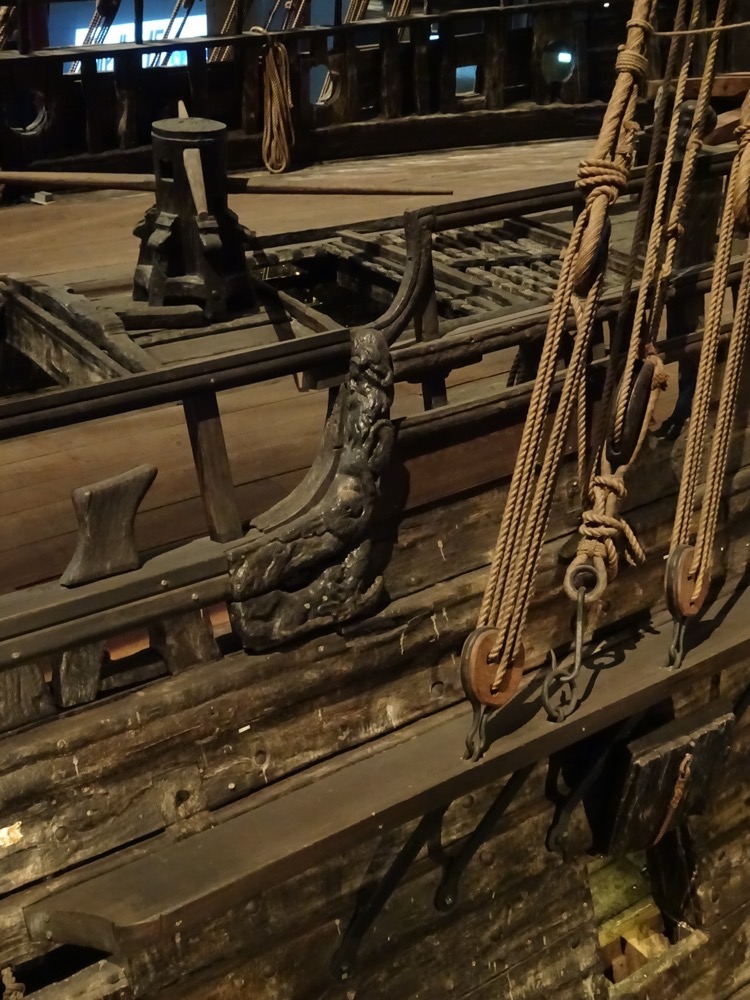
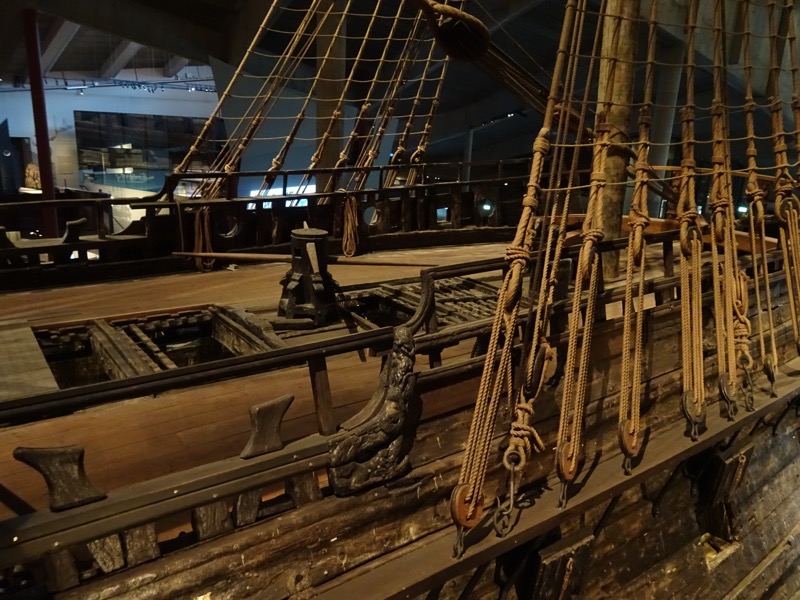
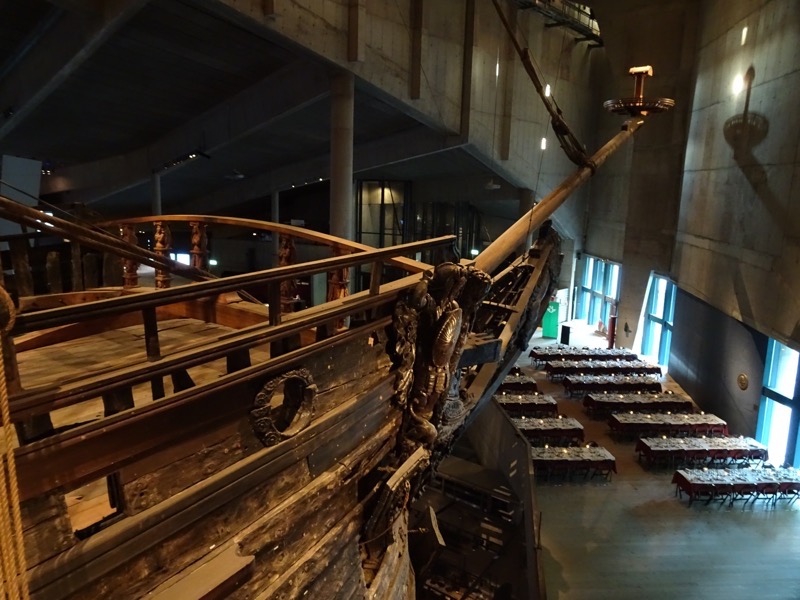
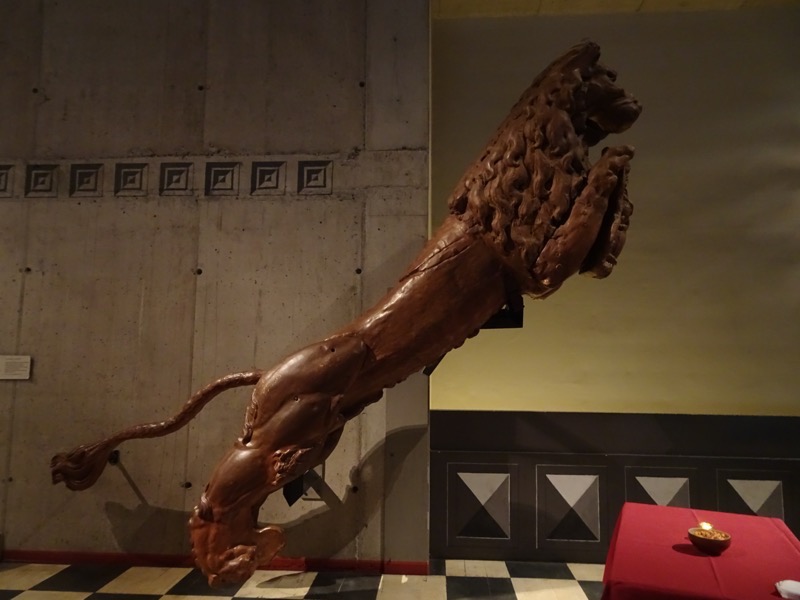 I was fortunate enough to visit the museum during regular public hours, as well as to attend a private conference dinner at the museum. It was a very special experience to be able to admire and explore the ship and the museum without the hordes of bustling tourists present.
I was fortunate enough to visit the museum during regular public hours, as well as to attend a private conference dinner at the museum. It was a very special experience to be able to admire and explore the ship and the museum without the hordes of bustling tourists present. 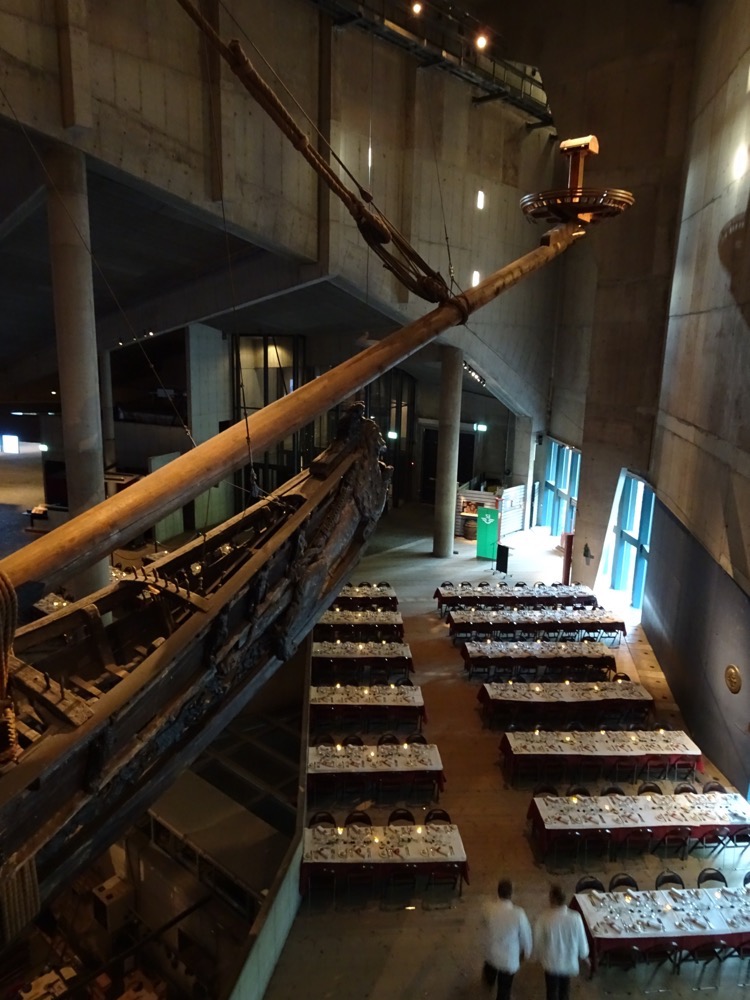
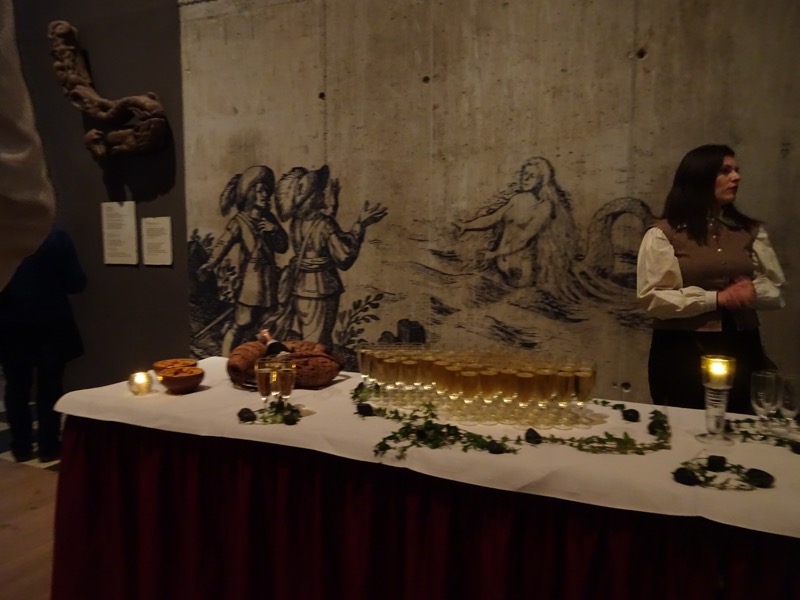
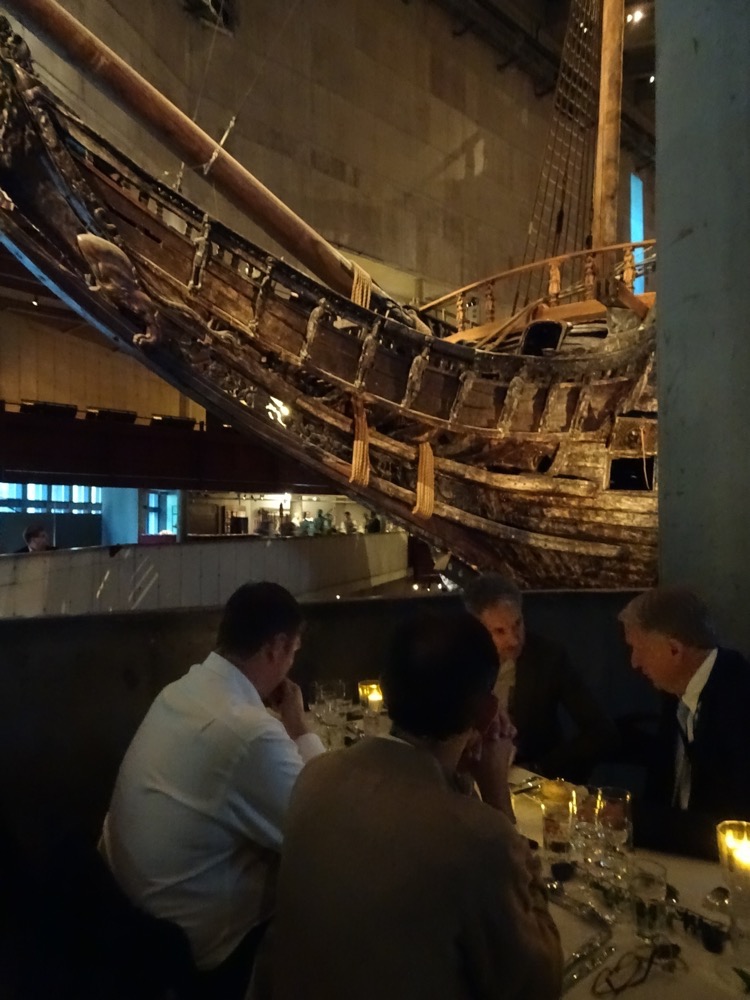
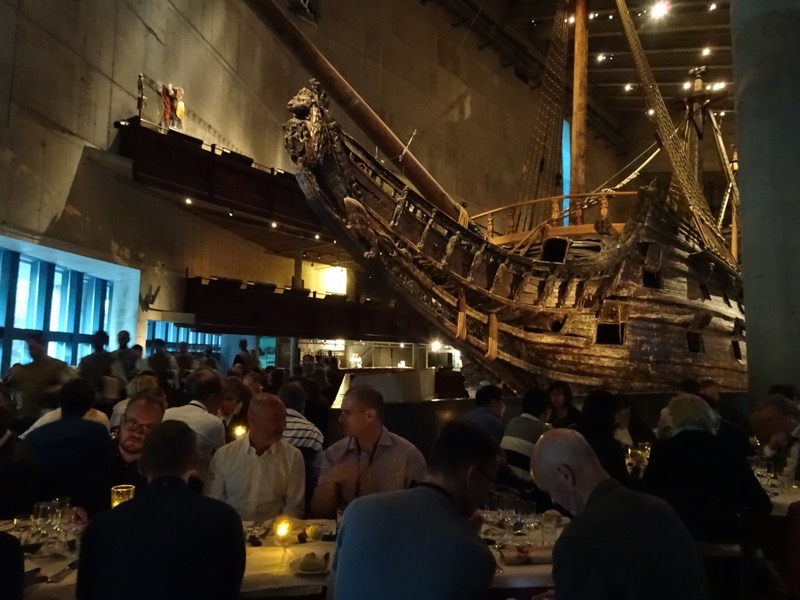
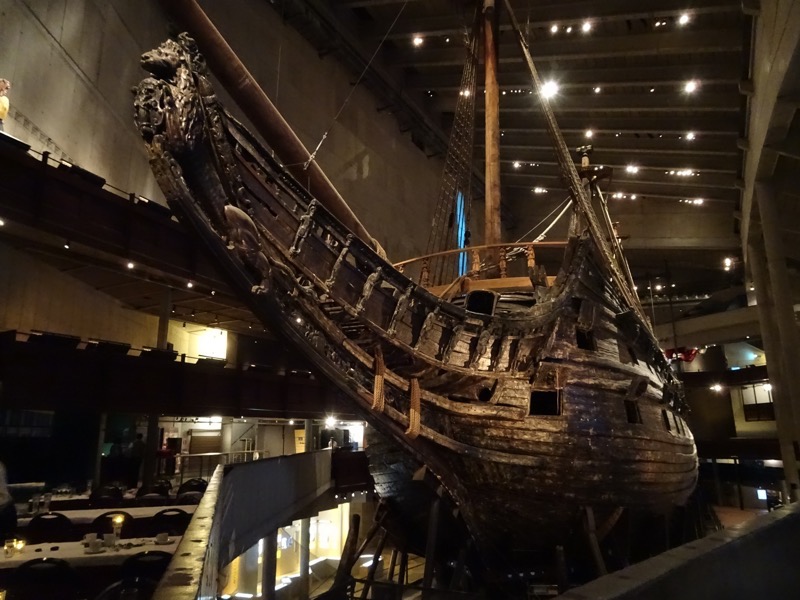 I’ve put way too many photos into this post!
I’ve put way too many photos into this post!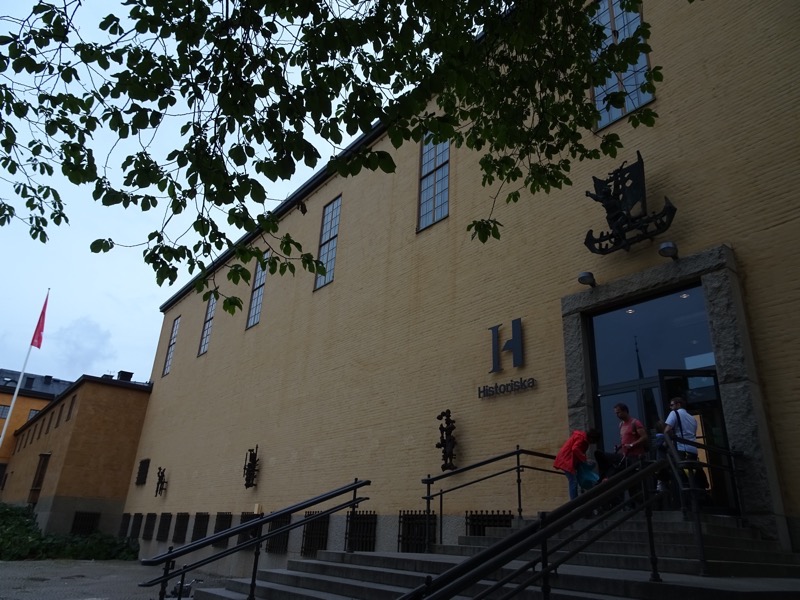
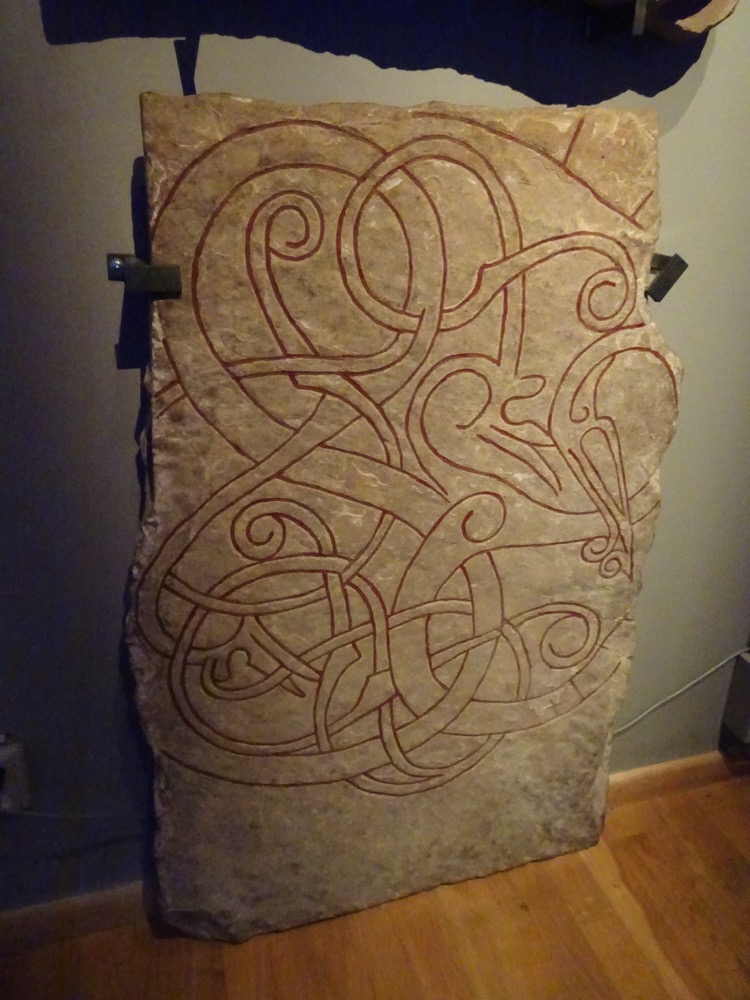 Brooches and pendants galore!
Brooches and pendants galore!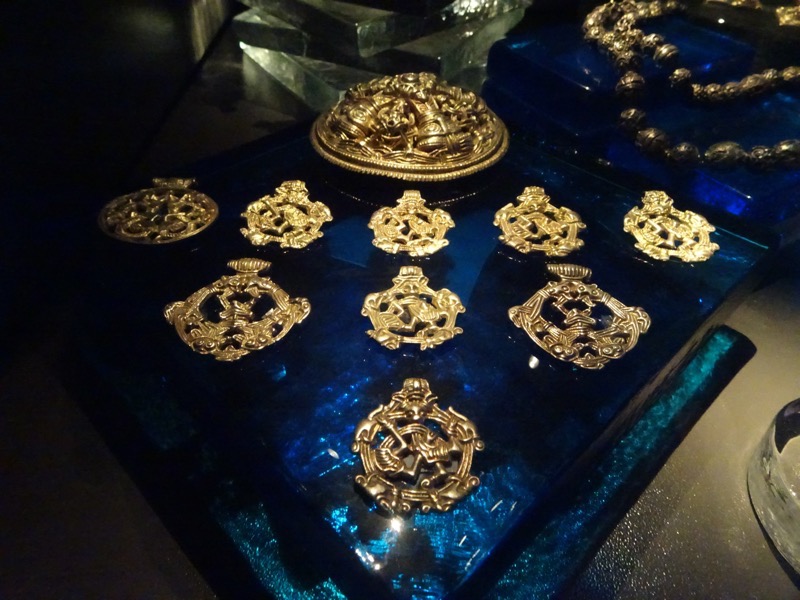 Viking era swords with magnificent pommels (more detailed pictures will be included in the other post).
Viking era swords with magnificent pommels (more detailed pictures will be included in the other post).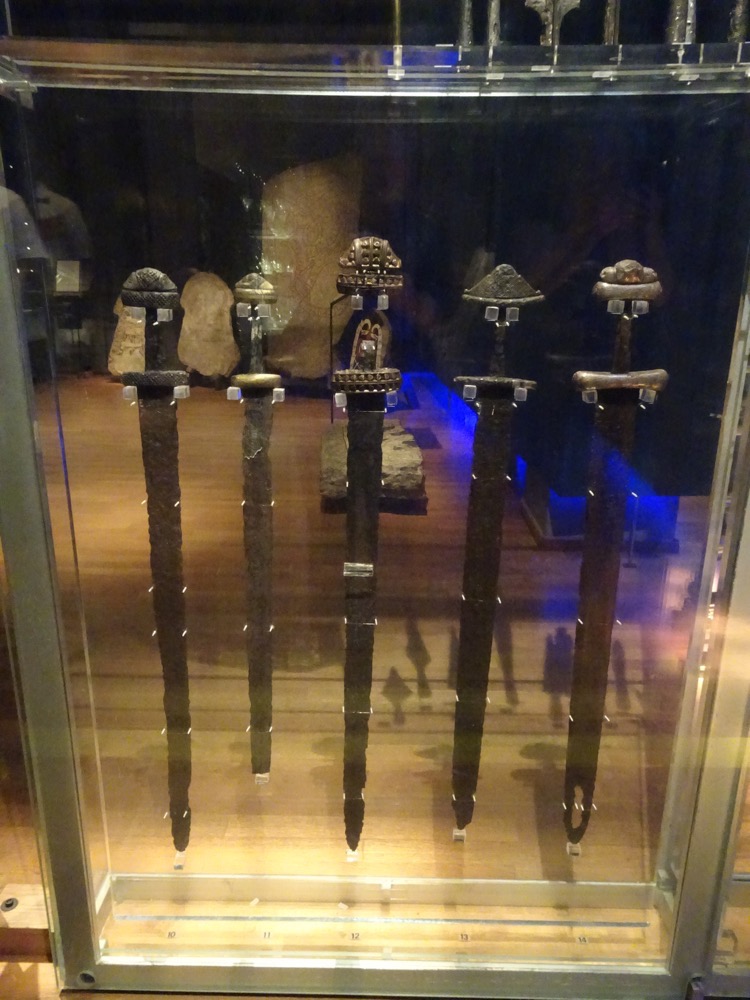 Grave finds from a Birka Princess – brooches, and beads, coat clasp.
Grave finds from a Birka Princess – brooches, and beads, coat clasp.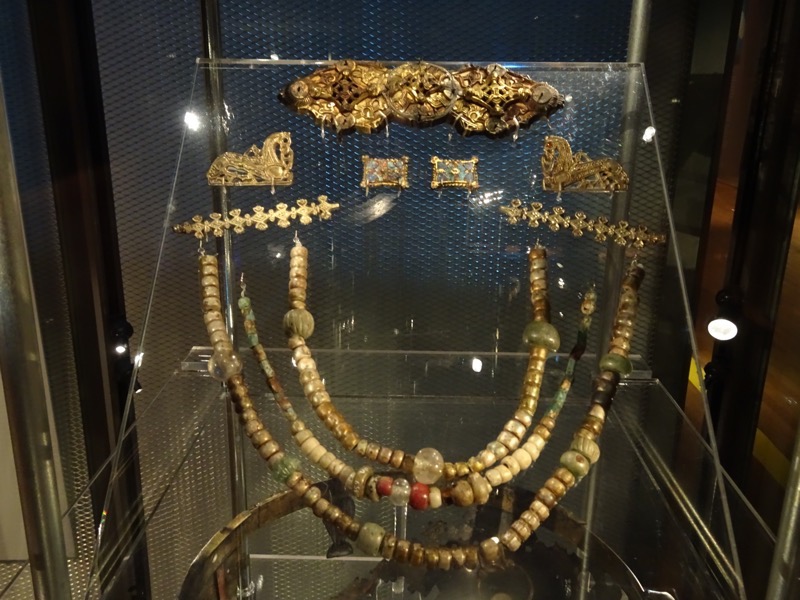
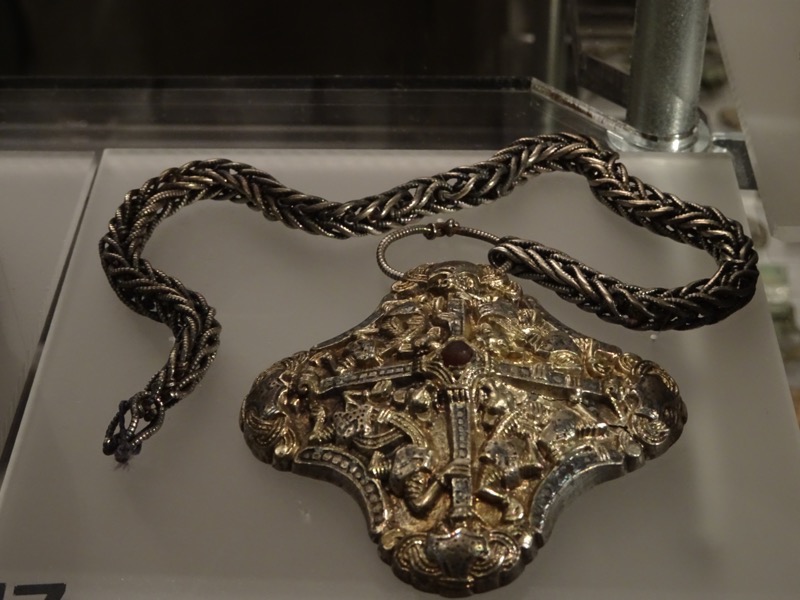 The Gold Room – a chamber under the museum that houses over 3000 gold and silver artefacts.
The Gold Room – a chamber under the museum that houses over 3000 gold and silver artefacts.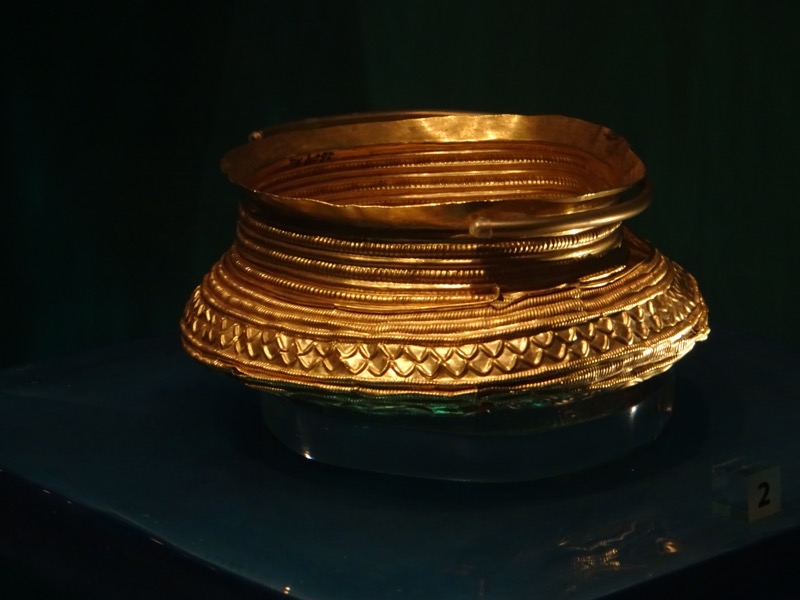
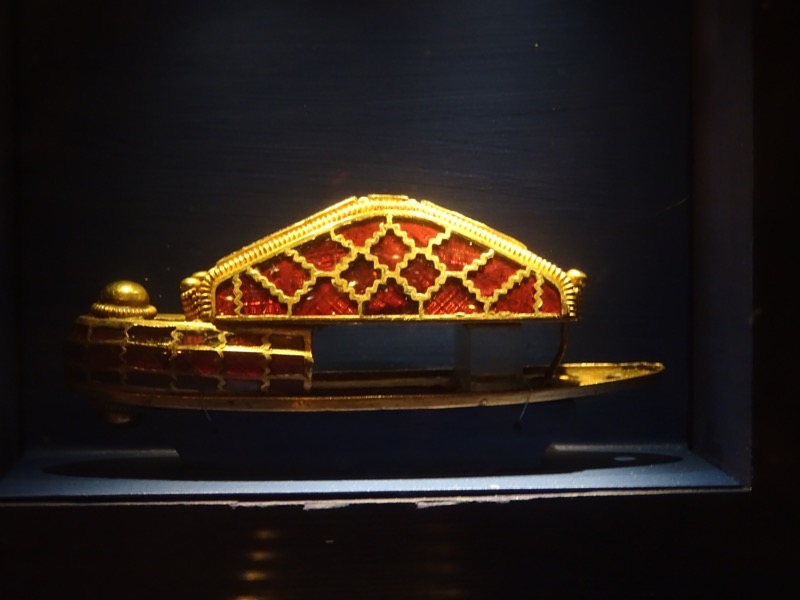
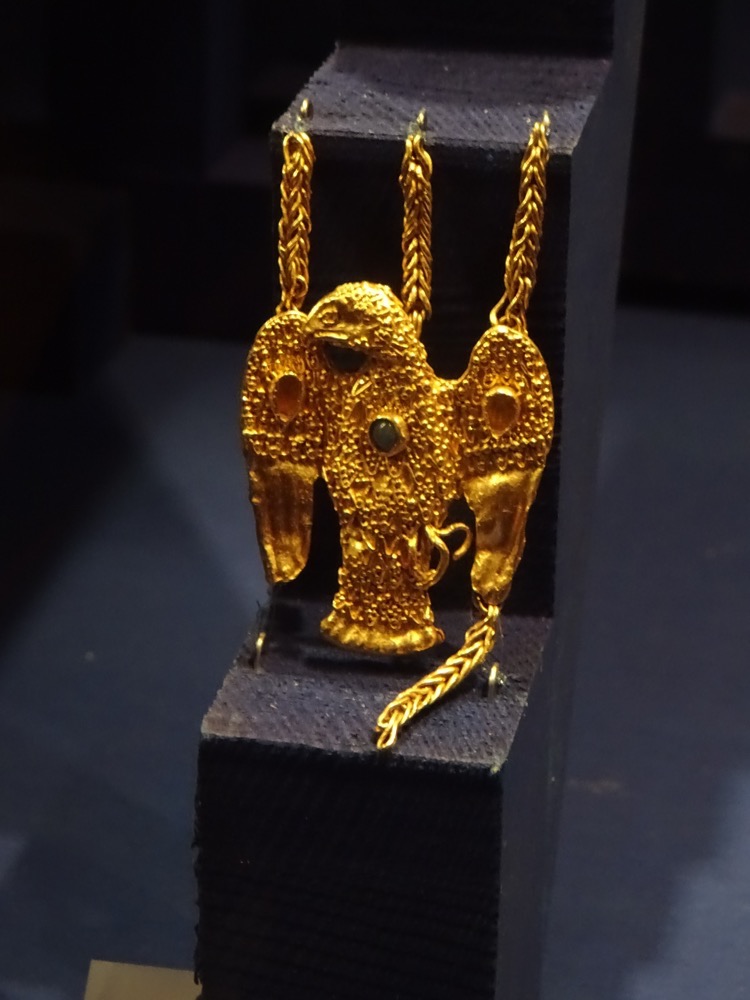 In the courtyard during the summer, re-enactors set up tents, cook, do blacksmithing, weave, and display the Viking lifestyle.
In the courtyard during the summer, re-enactors set up tents, cook, do blacksmithing, weave, and display the Viking lifestyle.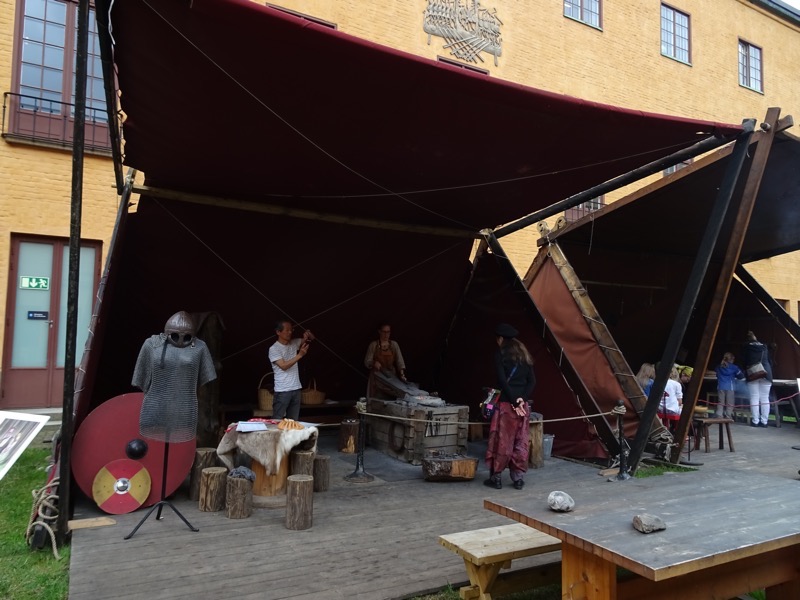
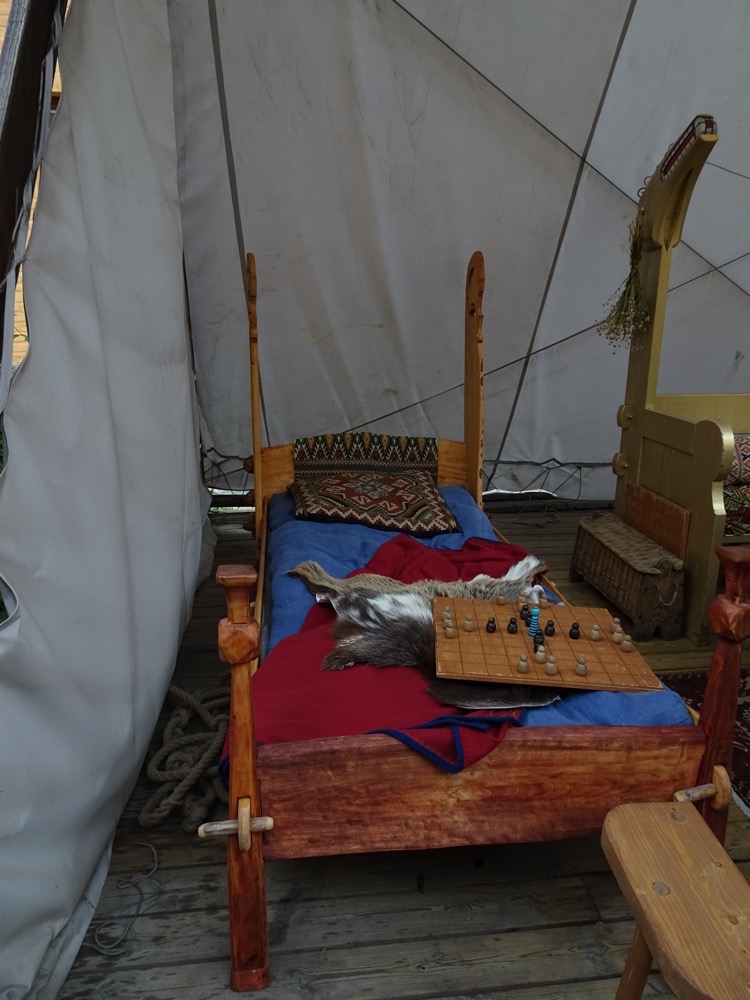
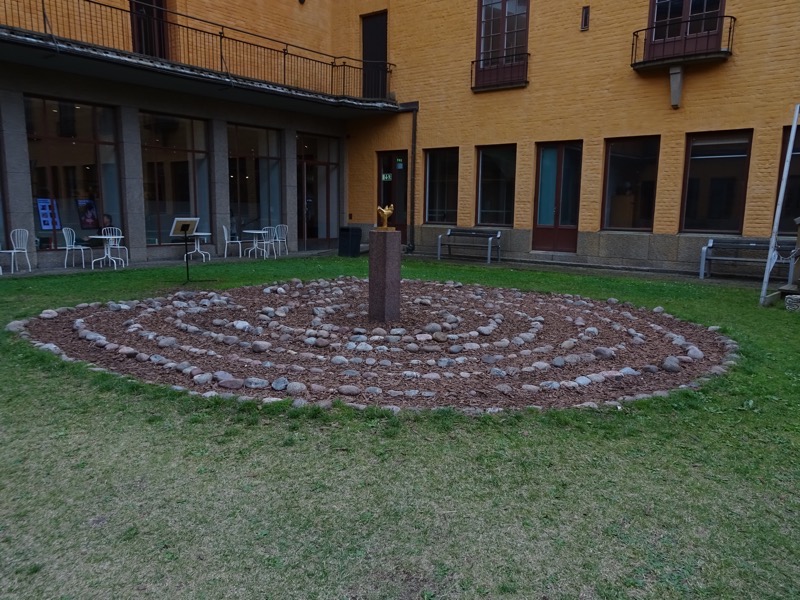
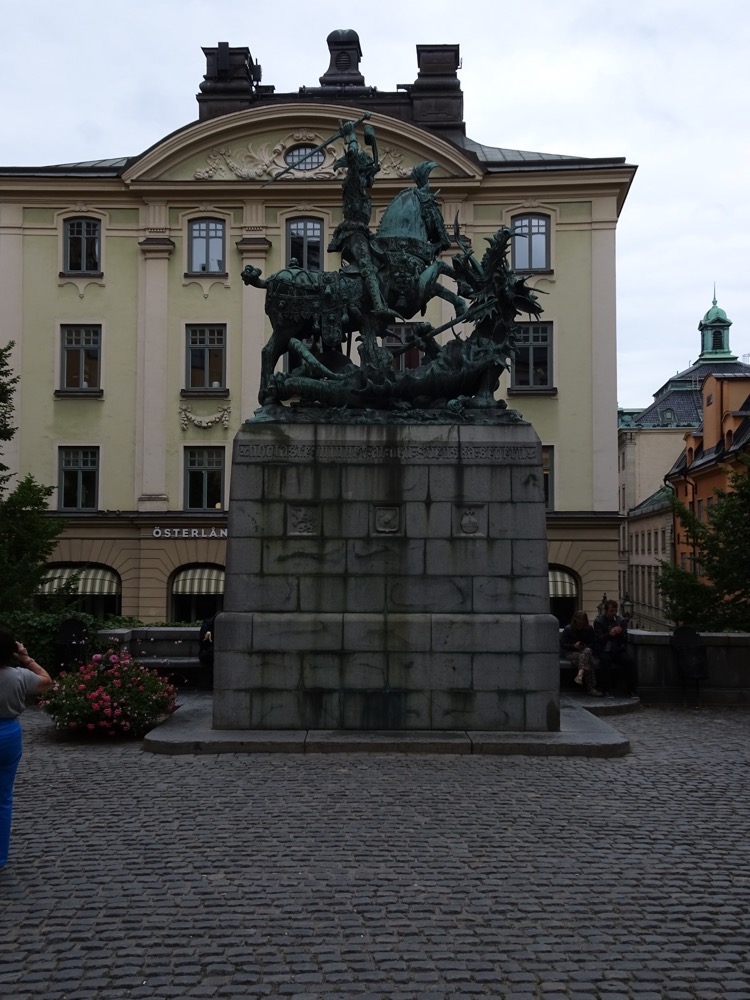 St George slaying the Dragon statue is a popular trope
St George slaying the Dragon statue is a popular trope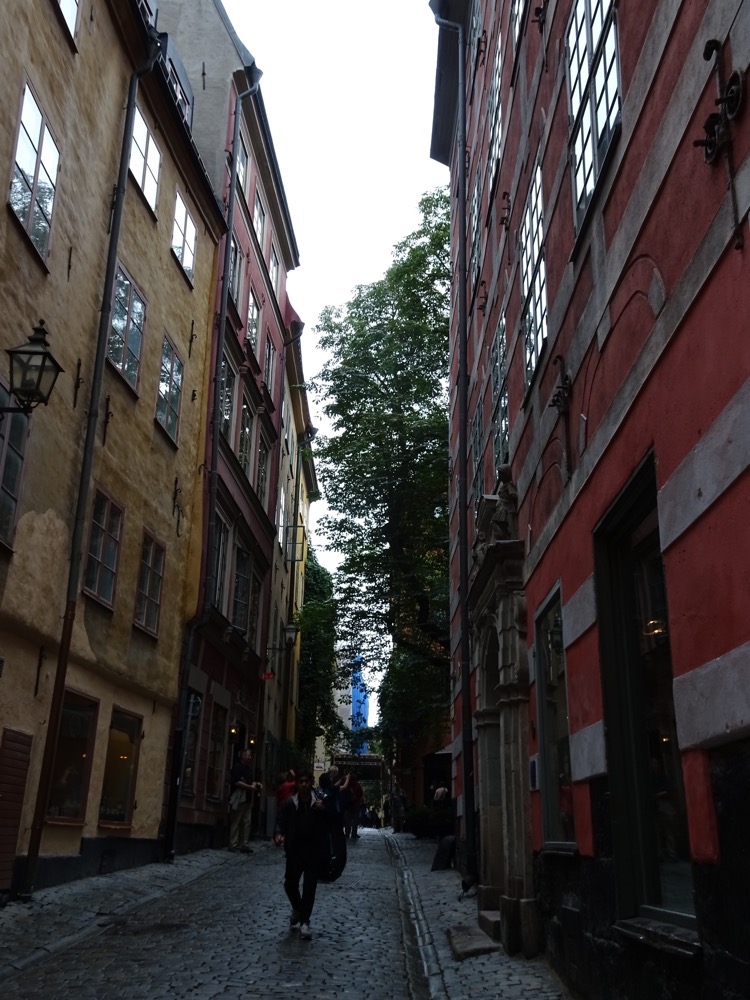 Gamla stan is the old town of Stockholm it consists primarily of the island of Stadsholmen. This area of the town dates back to the 13thC and is largely winding medieval alleyways, rough cobbled streets (that I have no idea how ladies in high heels navigate safely), and archaic architecture. The North German style of architecture is very prevalent here and is evident in all the Gamla stan’s construction. With the exception of the square I imagine, that many of these streets rarely see sunlight in winter.
Gamla stan is the old town of Stockholm it consists primarily of the island of Stadsholmen. This area of the town dates back to the 13thC and is largely winding medieval alleyways, rough cobbled streets (that I have no idea how ladies in high heels navigate safely), and archaic architecture. The North German style of architecture is very prevalent here and is evident in all the Gamla stan’s construction. With the exception of the square I imagine, that many of these streets rarely see sunlight in winter.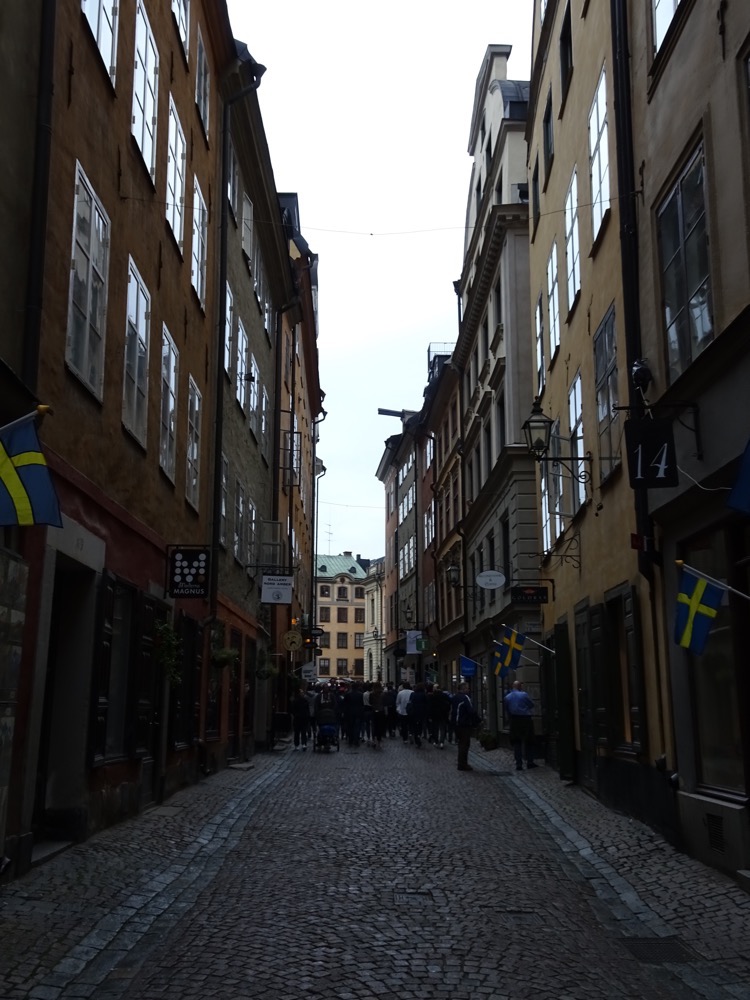
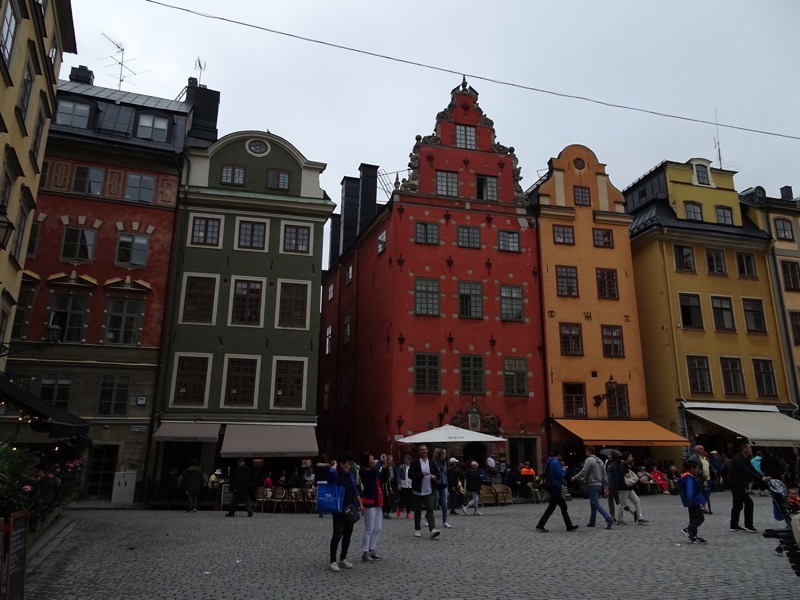 This space is the Stortorget which is the large public square in the centre of Gamla Stan. Surrounding it are rows of old merchants’ houses, including the Stockholm Stock Exchange Building (which now houses the Nobel Museum that I went to the other day). The square was the site of the Stockholm Bloodbath in Nov 1520, where Swedish aristocrats and nobility were massacred by the Danish King, Christian II. The subsequent revolt and civil war led to the dissolution of the Kalmar Union and soon followed the election of King Gustav I – well worth reading up on if you are interested in medieval history.
This space is the Stortorget which is the large public square in the centre of Gamla Stan. Surrounding it are rows of old merchants’ houses, including the Stockholm Stock Exchange Building (which now houses the Nobel Museum that I went to the other day). The square was the site of the Stockholm Bloodbath in Nov 1520, where Swedish aristocrats and nobility were massacred by the Danish King, Christian II. The subsequent revolt and civil war led to the dissolution of the Kalmar Union and soon followed the election of King Gustav I – well worth reading up on if you are interested in medieval history.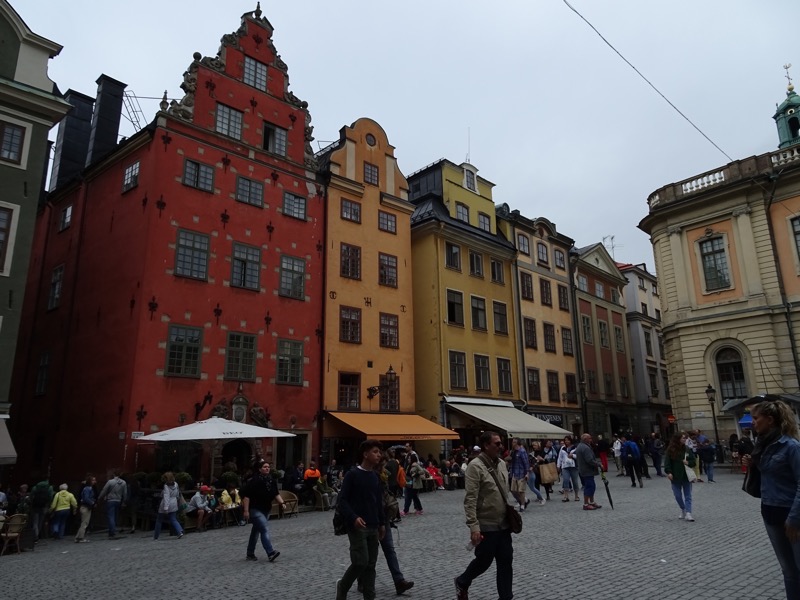
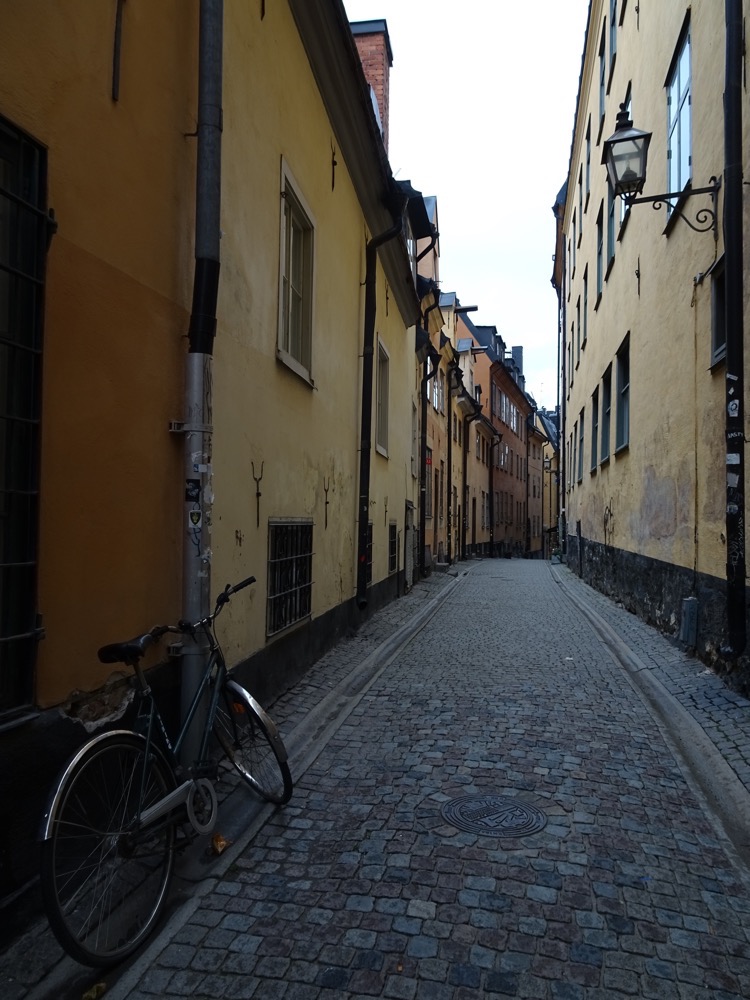 Love the picturesque cobbled streets. Below… ‘authentic’ Swedish souvenirs. 😉
Love the picturesque cobbled streets. Below… ‘authentic’ Swedish souvenirs. 😉 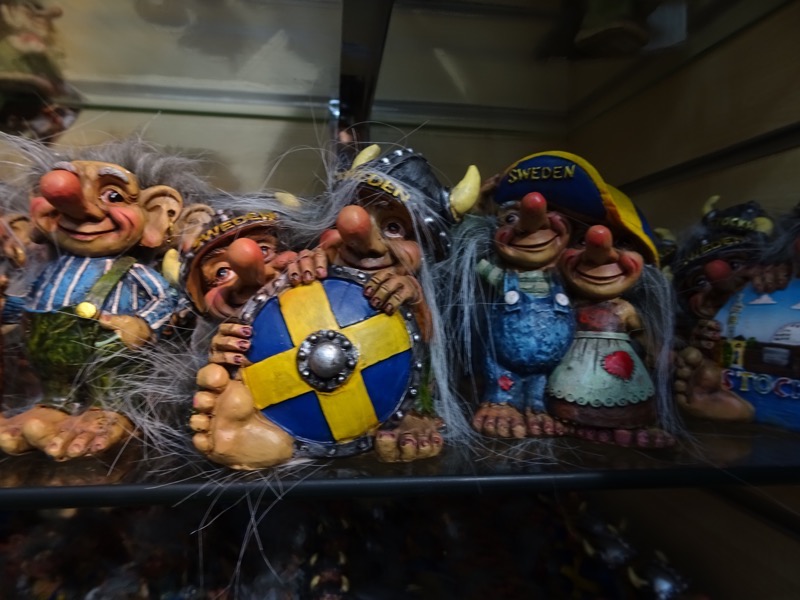
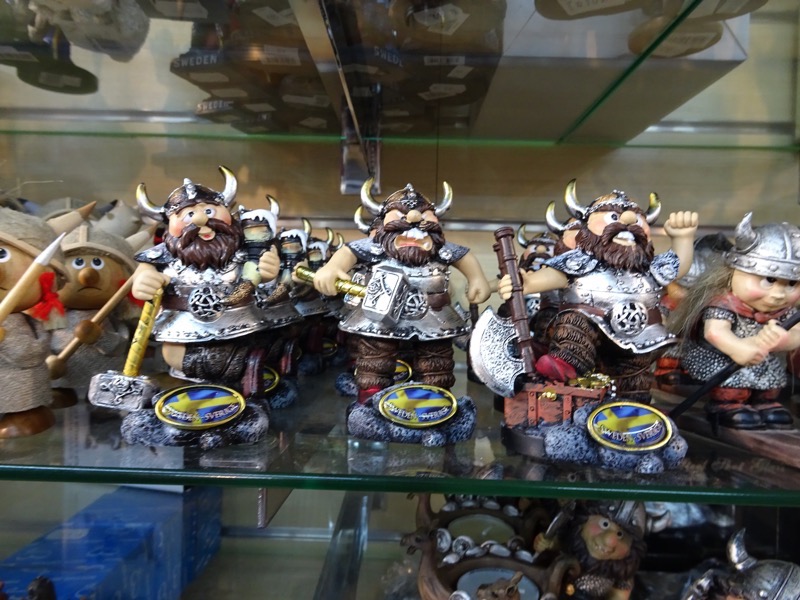
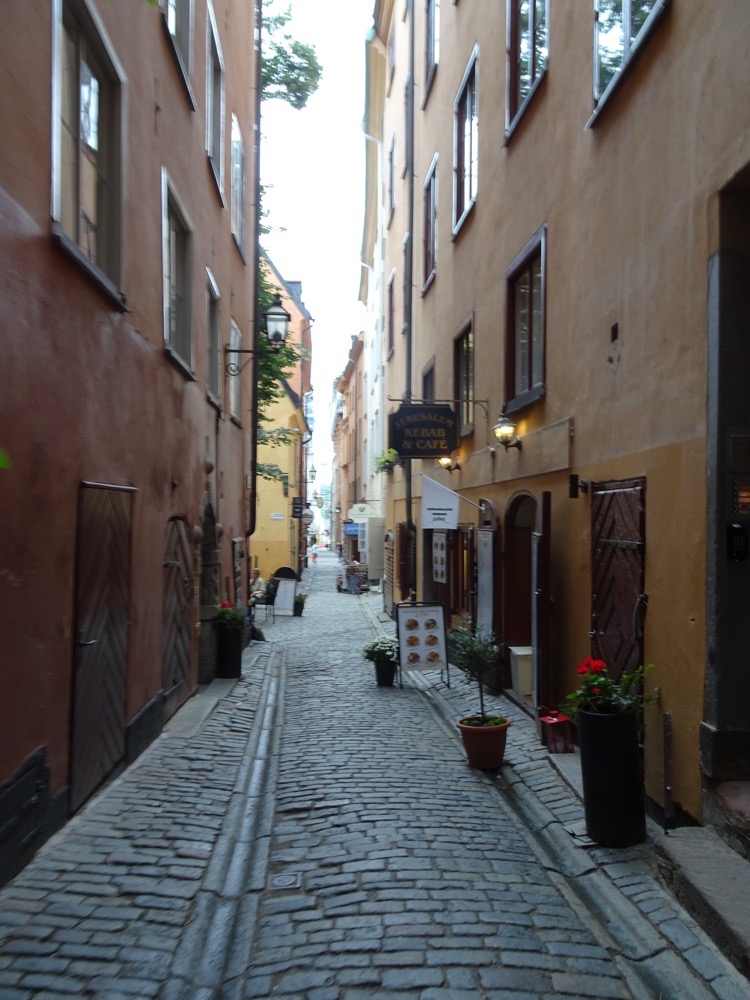 This is a little cafe down a quiet side street, where we stopped for a quick bite to eat.
This is a little cafe down a quiet side street, where we stopped for a quick bite to eat.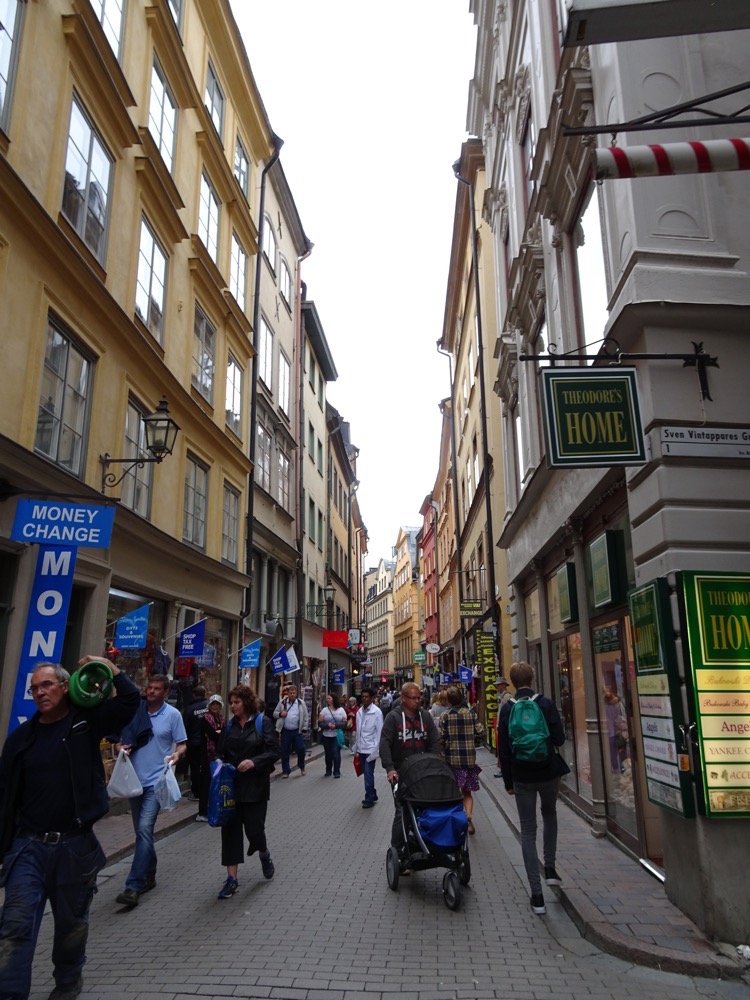 On our way out of the Gamla Stan, we stumbled over a boiled sweets store. I always love watching the sugar workers make these. The shop has an aroma that entices you in from half way up the street, and contains wall to wall candy to take home.
On our way out of the Gamla Stan, we stumbled over a boiled sweets store. I always love watching the sugar workers make these. The shop has an aroma that entices you in from half way up the street, and contains wall to wall candy to take home.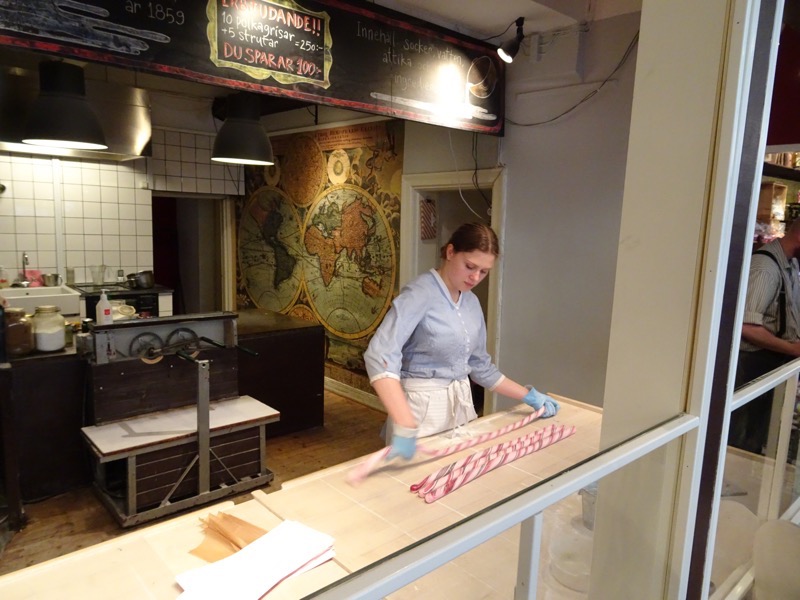
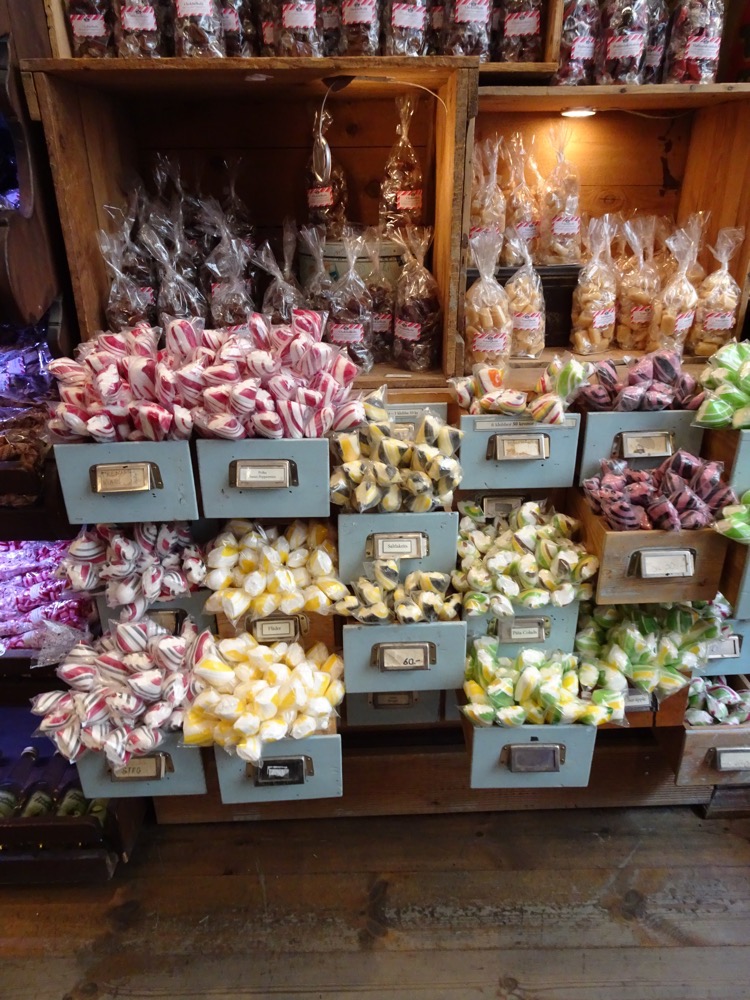
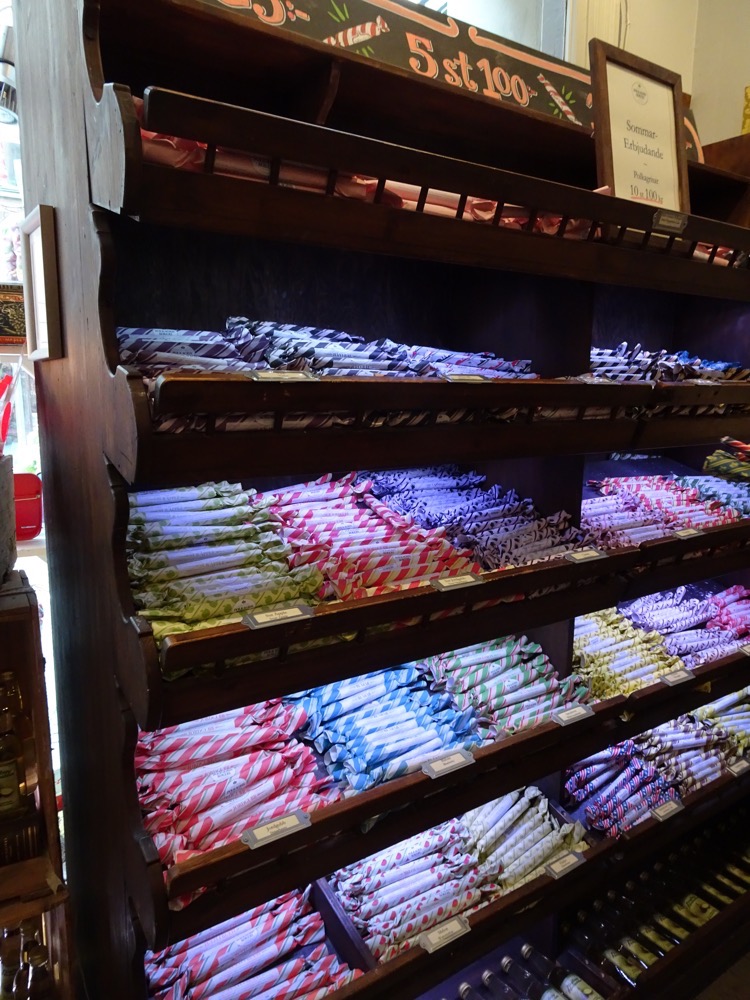
 This fortification marked the old entrance to the city of Stockholm, the flag that flies over the tower is raised in times of peace and has been raised every day for the last 203 years.
This fortification marked the old entrance to the city of Stockholm, the flag that flies over the tower is raised in times of peace and has been raised every day for the last 203 years. 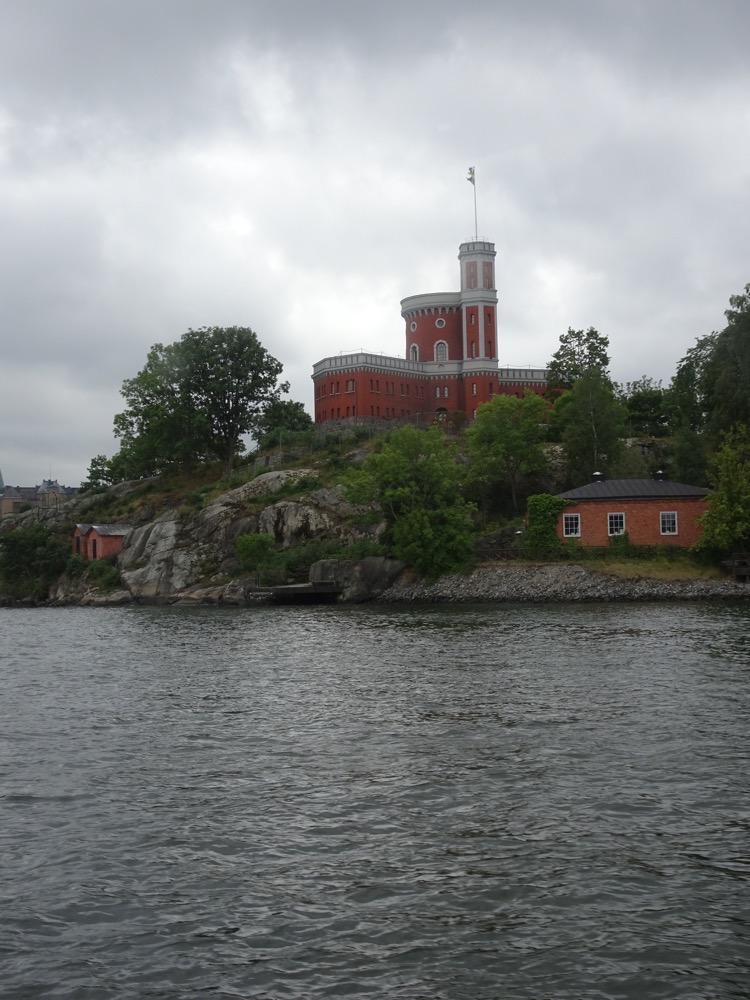
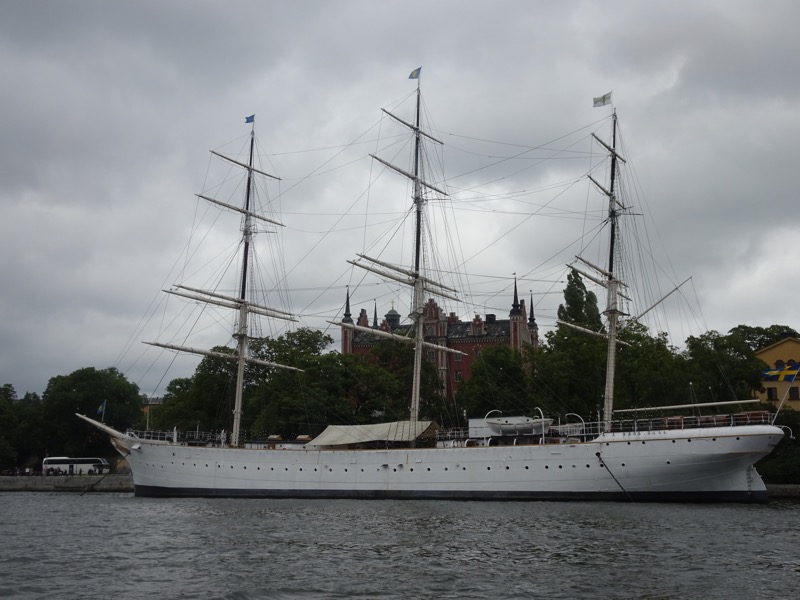 The oldest Clock Tower in the Gamla Stan beside the Royal Palace as seen from the canal.
The oldest Clock Tower in the Gamla Stan beside the Royal Palace as seen from the canal.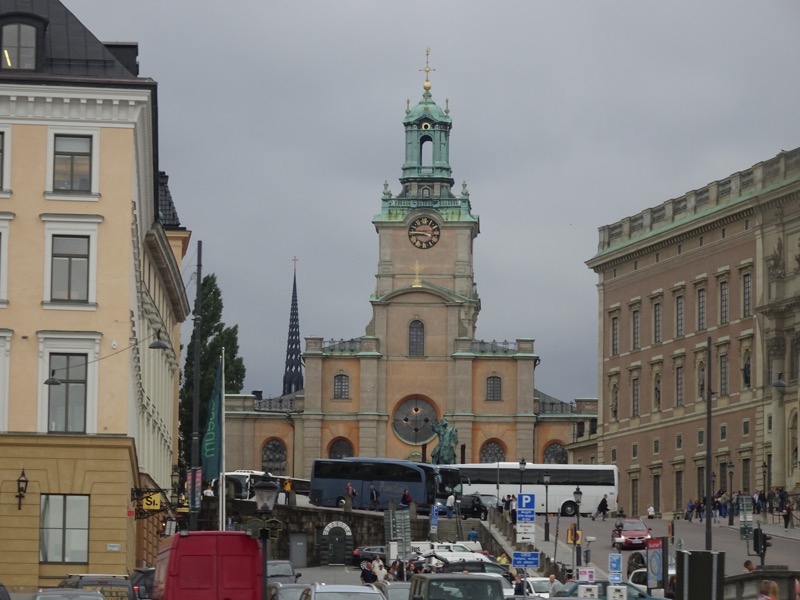 Wealthy merchants and nobles fought for land to build their homes along the canal front as premiere real estate as early as the 1500s.
Wealthy merchants and nobles fought for land to build their homes along the canal front as premiere real estate as early as the 1500s.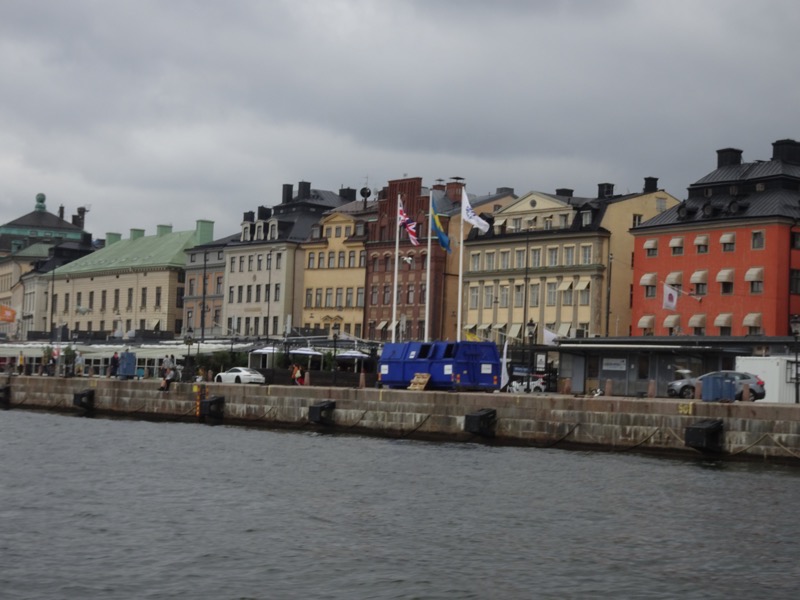 Many Swedes (like Norwegians) take the annual holidays in July. They tend not to travel far from home and like to go to their family holiday homes in the archipelagos. One in six Stockholmers owns a boat primarily for use during the summer – all of which are lifted out of the water at the end of August for the coming winter.
Many Swedes (like Norwegians) take the annual holidays in July. They tend not to travel far from home and like to go to their family holiday homes in the archipelagos. One in six Stockholmers owns a boat primarily for use during the summer – all of which are lifted out of the water at the end of August for the coming winter.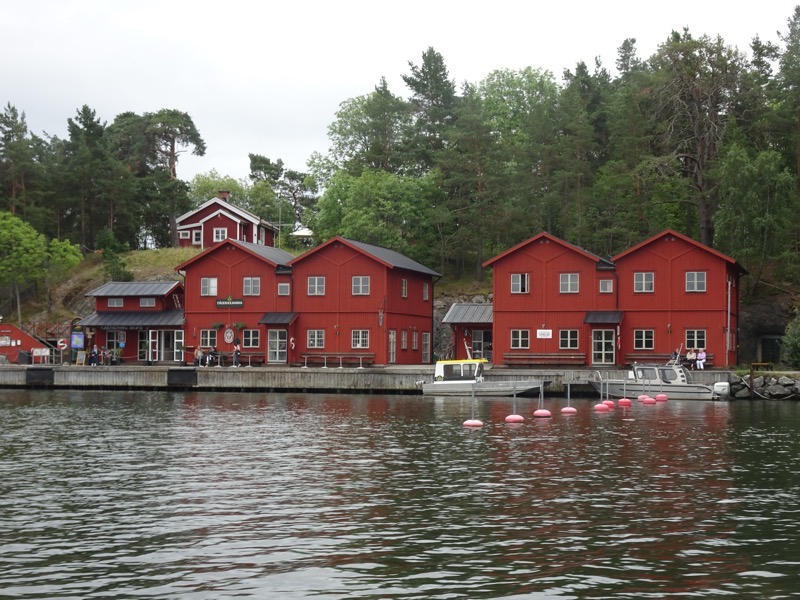 These beautiful oxblood coloured buildings are very typical of this area, and the home range from mansion sized to cosy cottages.
These beautiful oxblood coloured buildings are very typical of this area, and the home range from mansion sized to cosy cottages.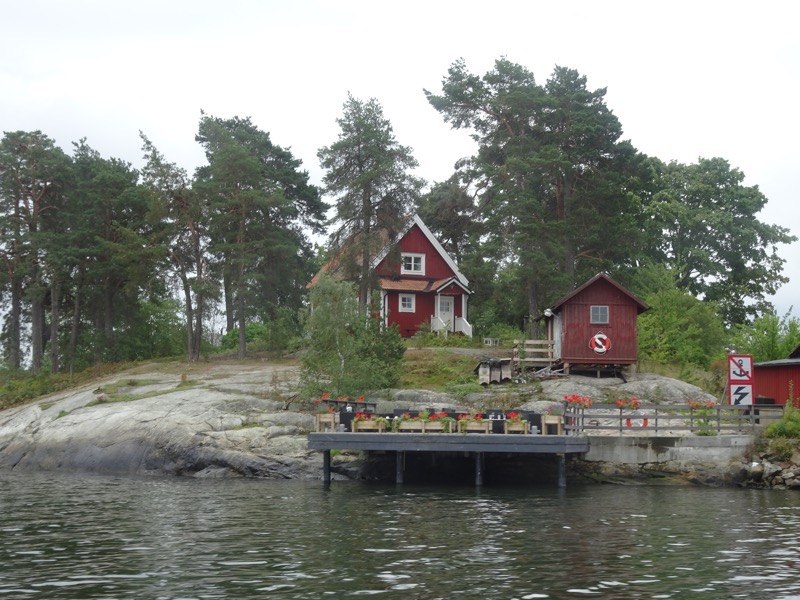 The large naval base located near the entrance to Stockholm’s CBD.
The large naval base located near the entrance to Stockholm’s CBD.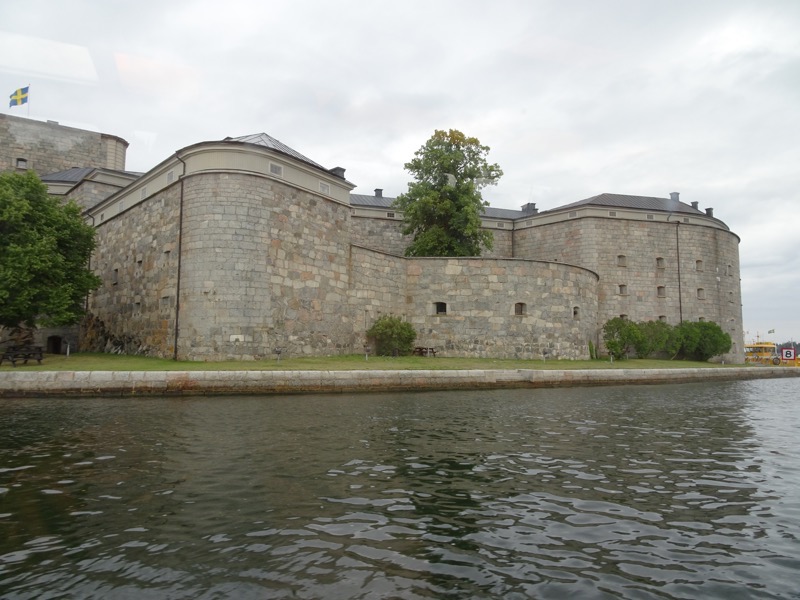
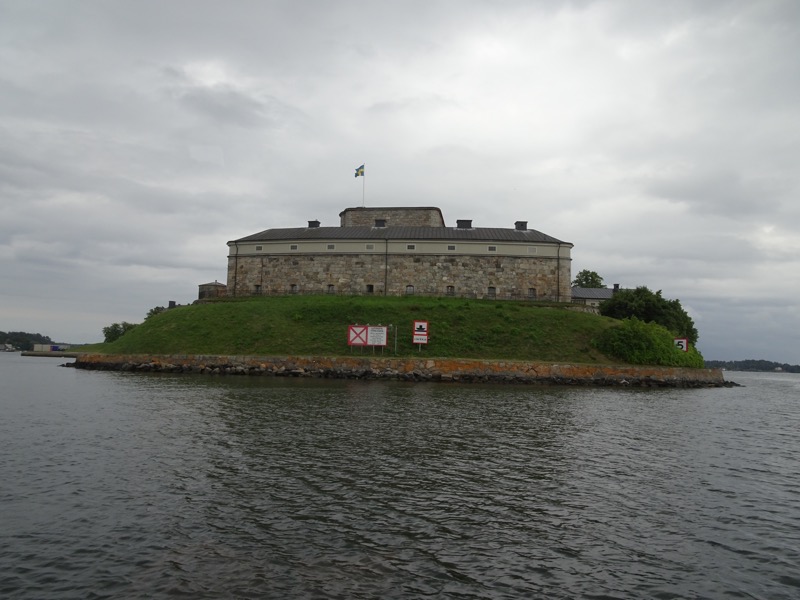
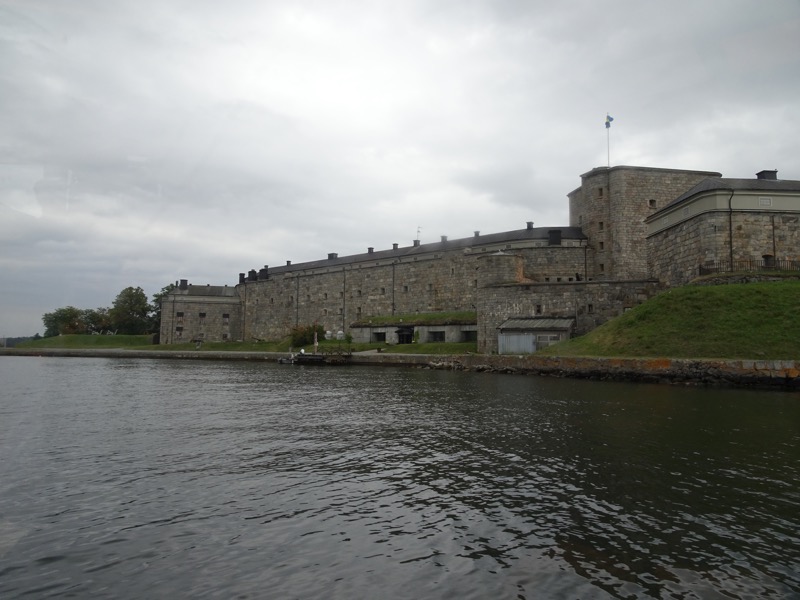 The Tivoli fun park… that is one of those chair swing things, about 100′ off the ground. Not sure how fond I’d be of that plan!
The Tivoli fun park… that is one of those chair swing things, about 100′ off the ground. Not sure how fond I’d be of that plan! 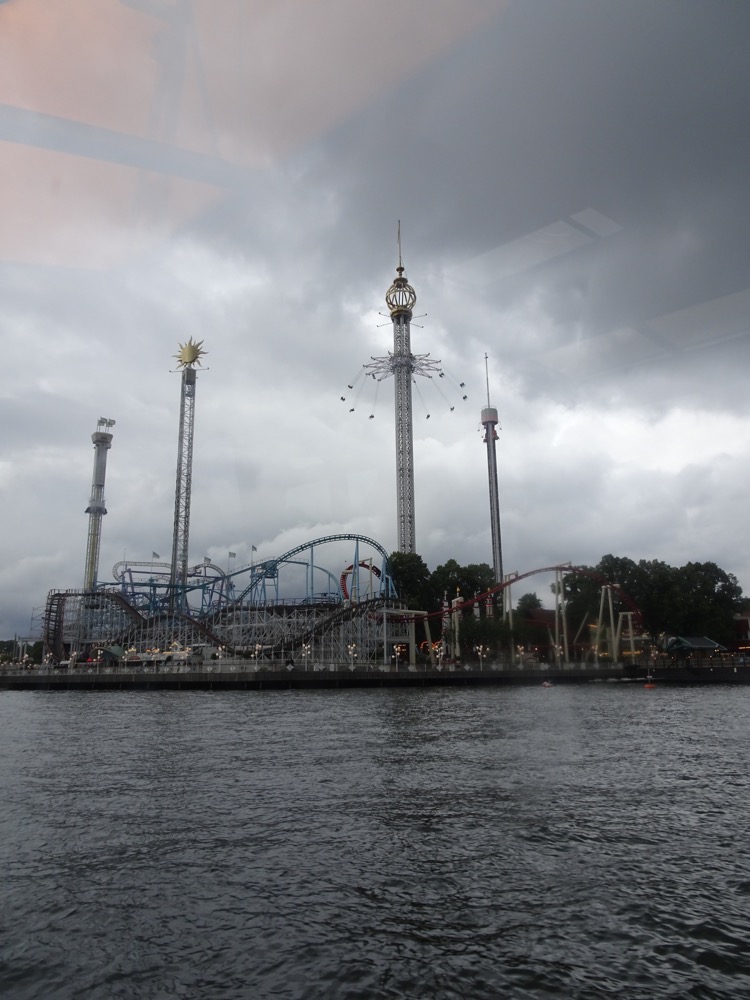
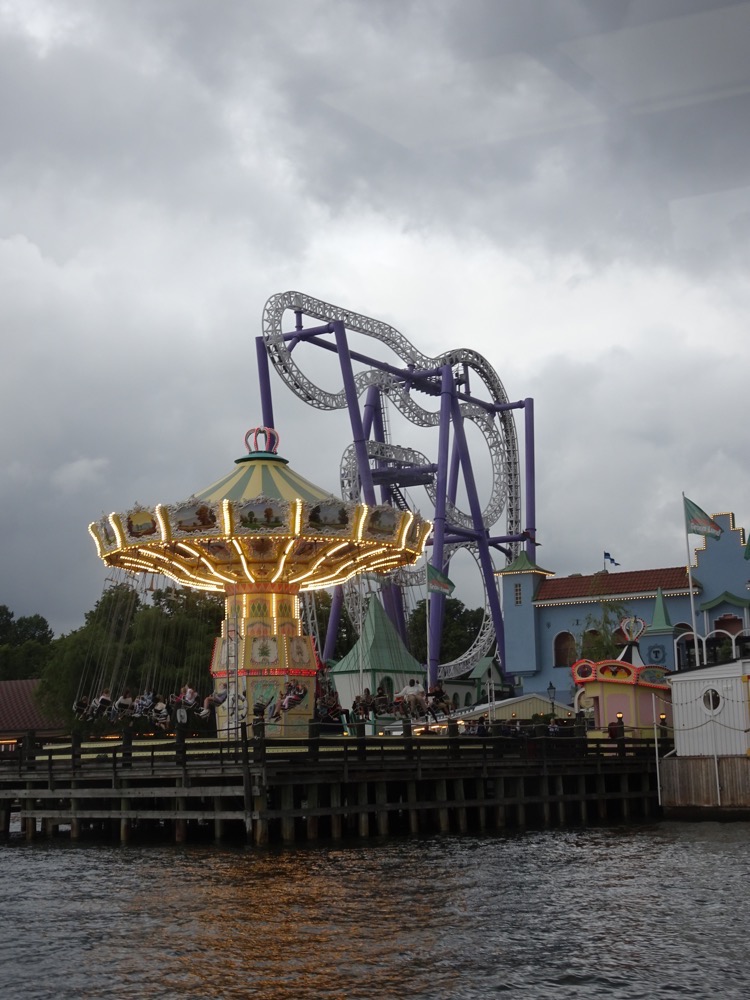 The Vasa Museet, where we are headed for our conference dinner tonight. The Museum was built to cleverly show the size of the ship – when it sank, it went down in only 33m of water, leaving the main masts still present marking the spot. At the time, the shipbuilders fairly swiftly cut the masts for a variety of reasons, not the least of which was it sank in a busy waterway and they were a hazard, but also to remove the visual symbol of this huge seafaring failure. The museum designers Marianne Dahlbäck and Göran Månsson incorporated this fact into their architectural design showing on the outside of the museum just how much of the masts would have been visible after the Vasa sank.
The Vasa Museet, where we are headed for our conference dinner tonight. The Museum was built to cleverly show the size of the ship – when it sank, it went down in only 33m of water, leaving the main masts still present marking the spot. At the time, the shipbuilders fairly swiftly cut the masts for a variety of reasons, not the least of which was it sank in a busy waterway and they were a hazard, but also to remove the visual symbol of this huge seafaring failure. The museum designers Marianne Dahlbäck and Göran Månsson incorporated this fact into their architectural design showing on the outside of the museum just how much of the masts would have been visible after the Vasa sank.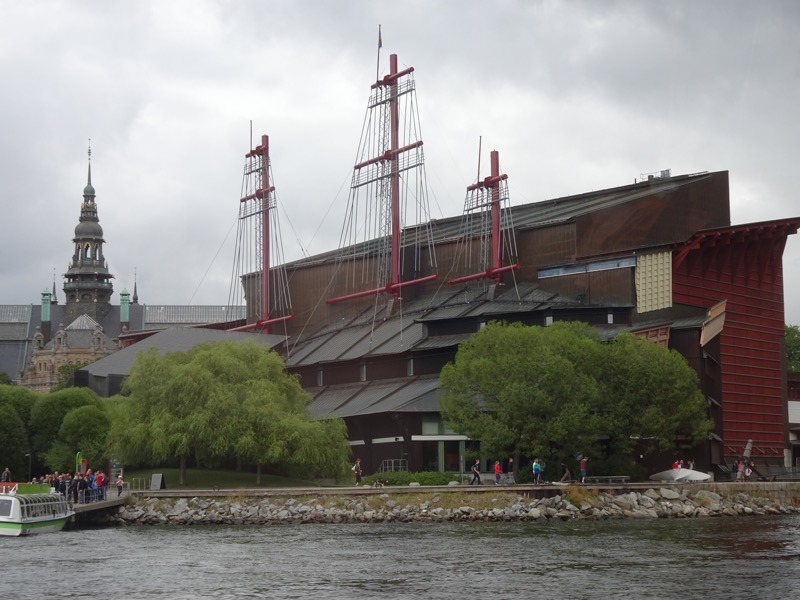
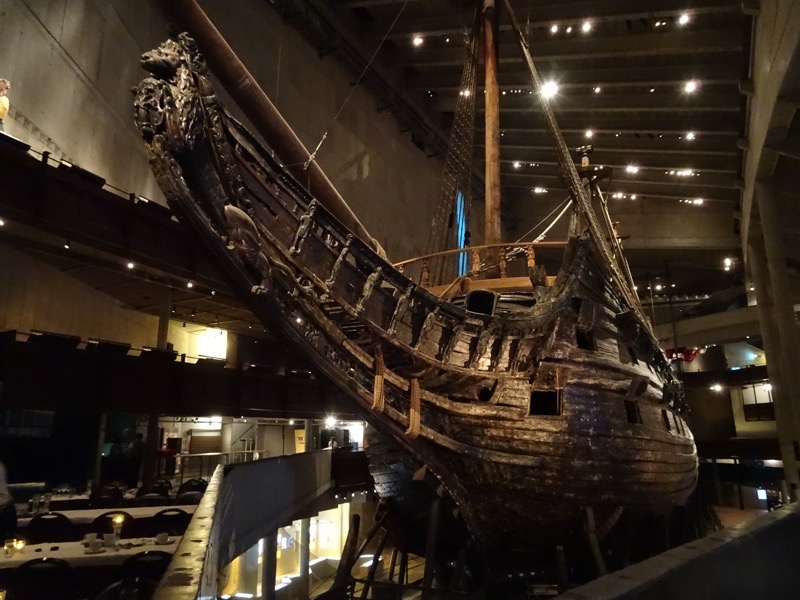
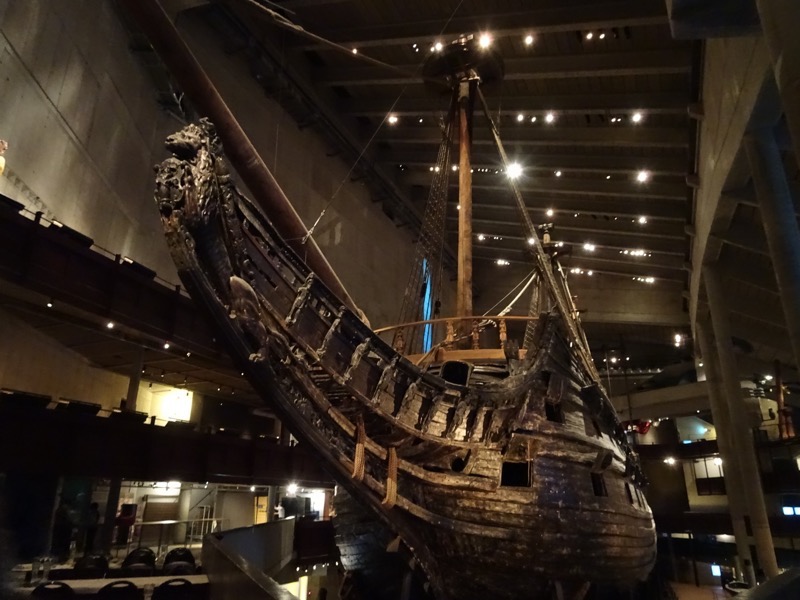 I have included some photos of the ship here –
I have included some photos of the ship here – 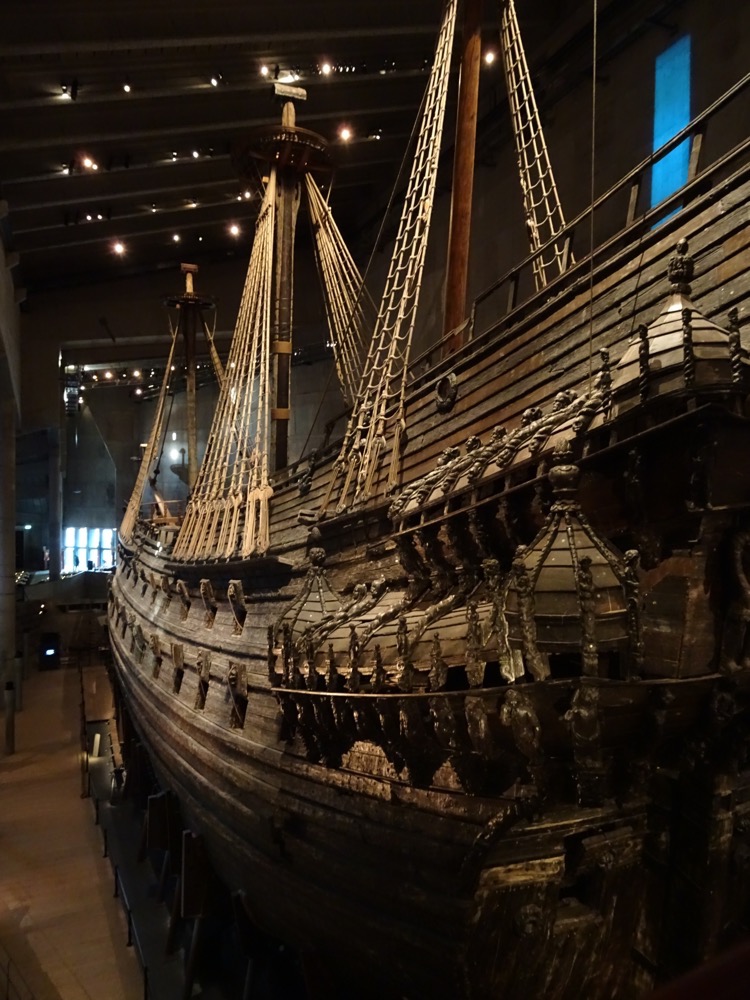
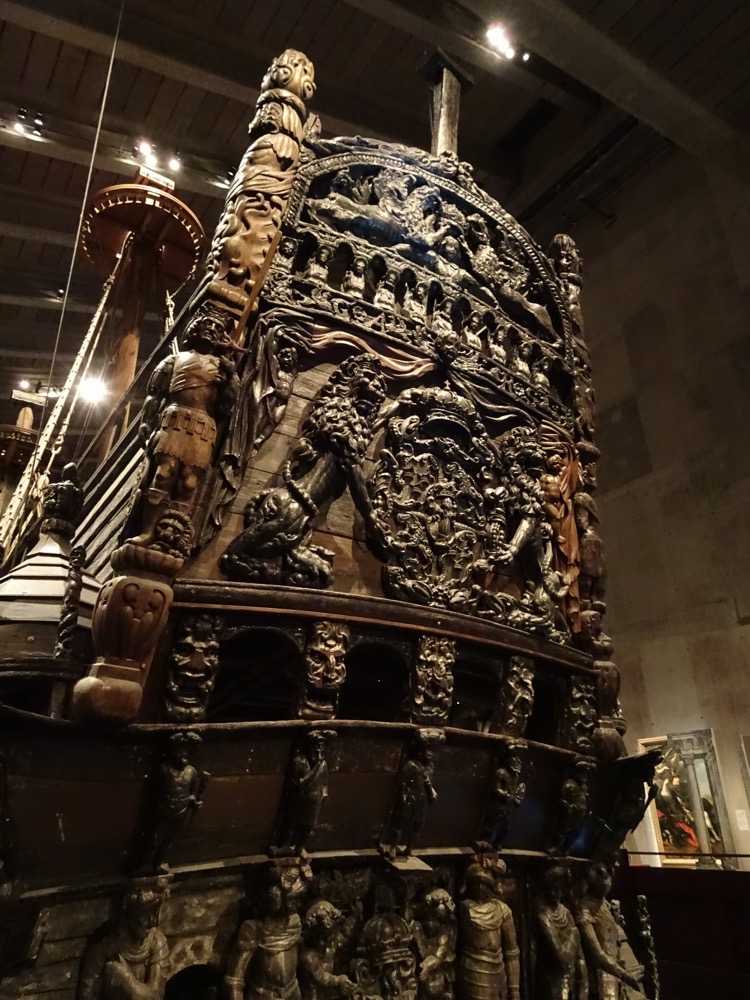
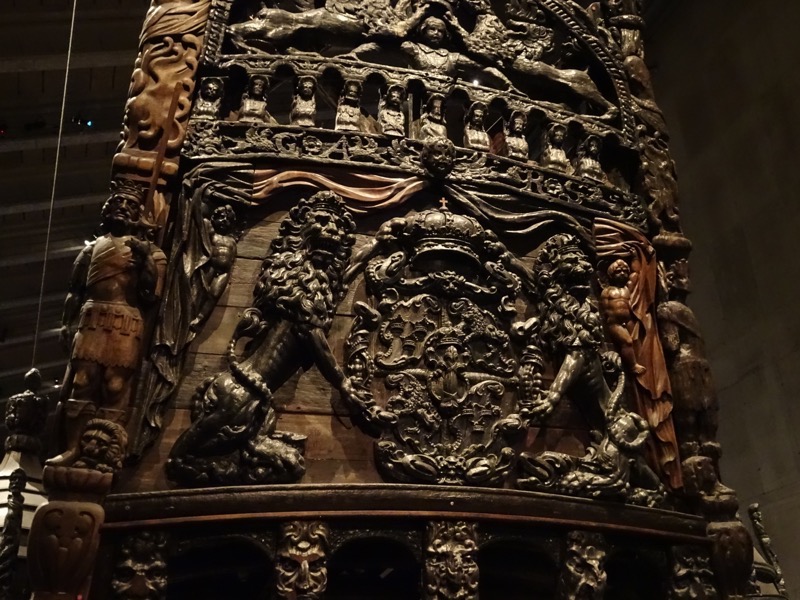 The impressa of the Vasa family…
The impressa of the Vasa family…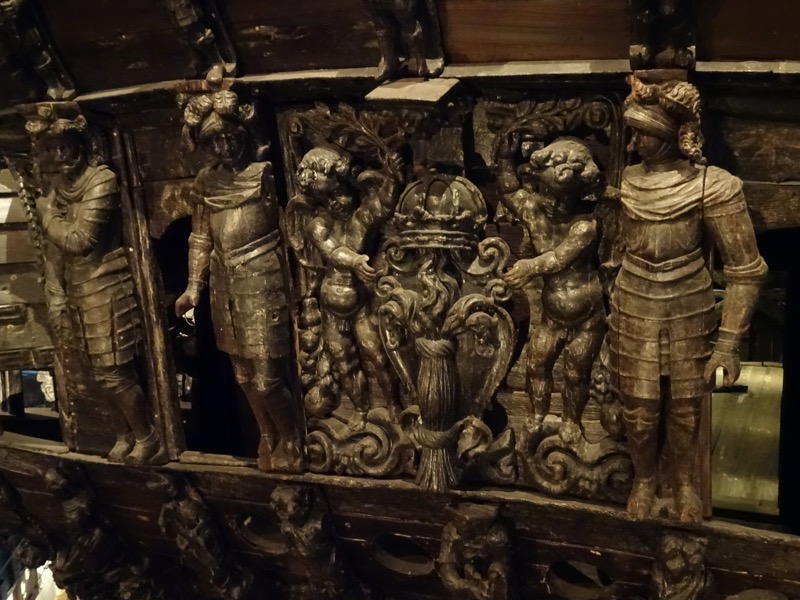
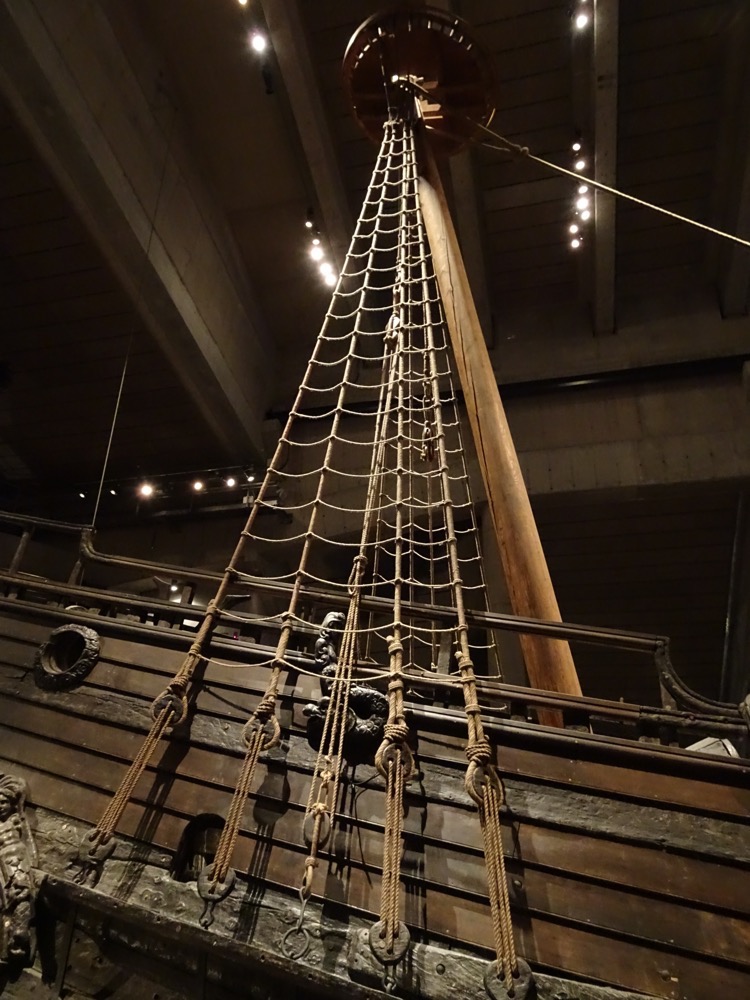
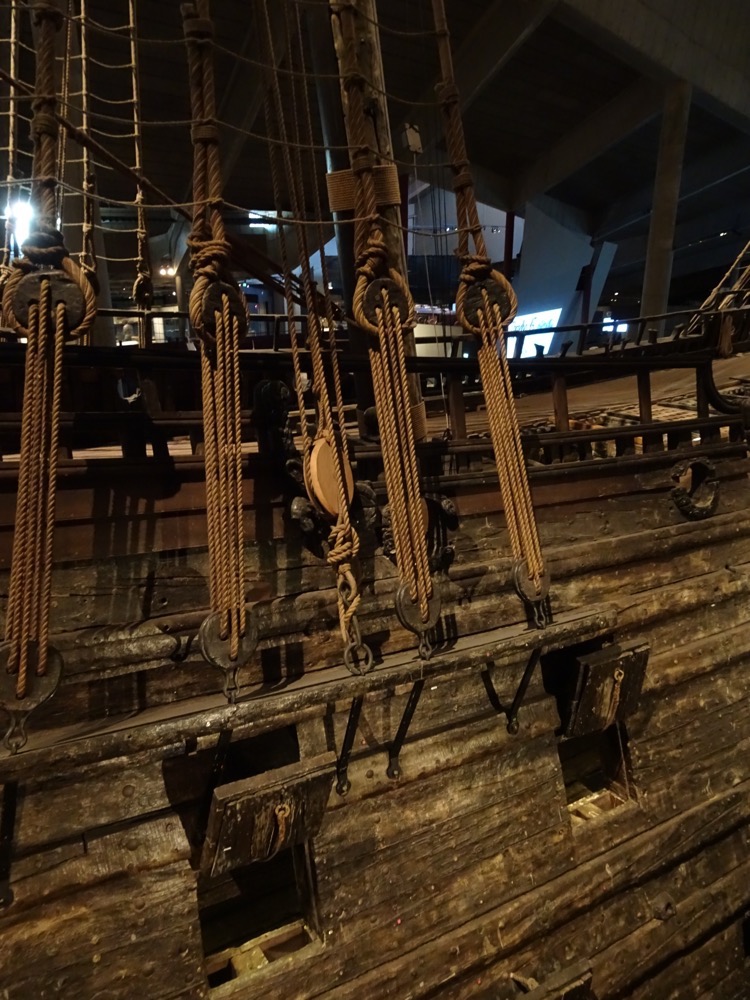
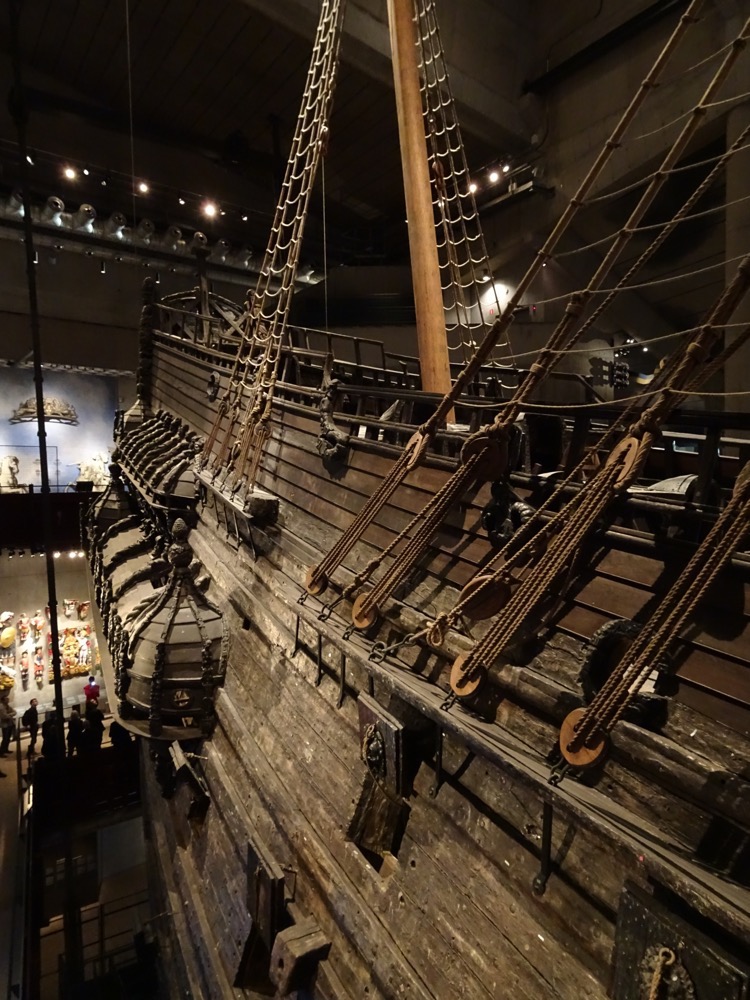
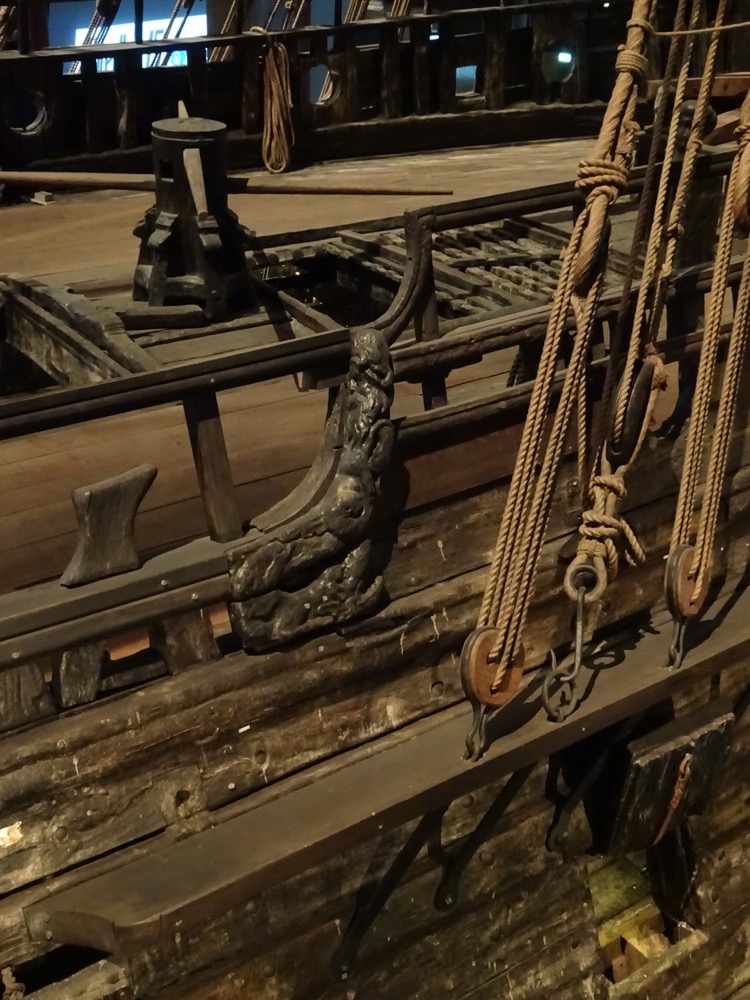
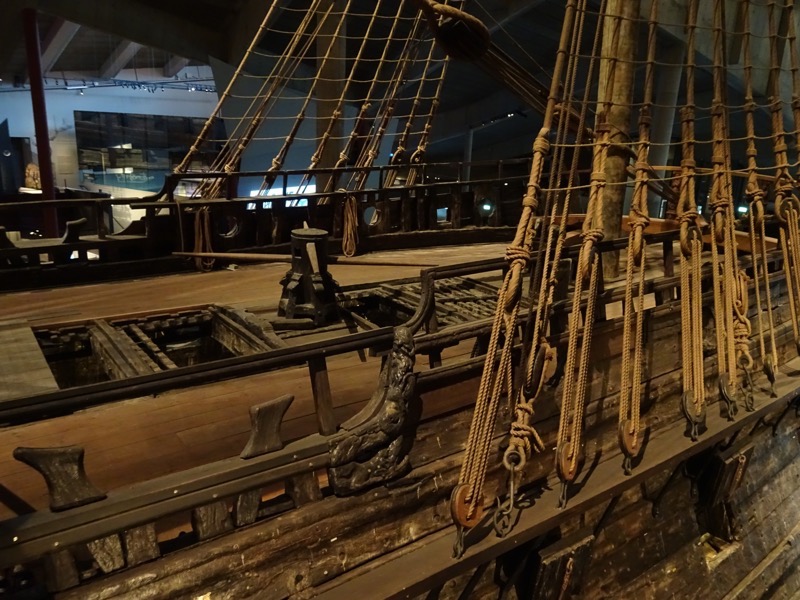
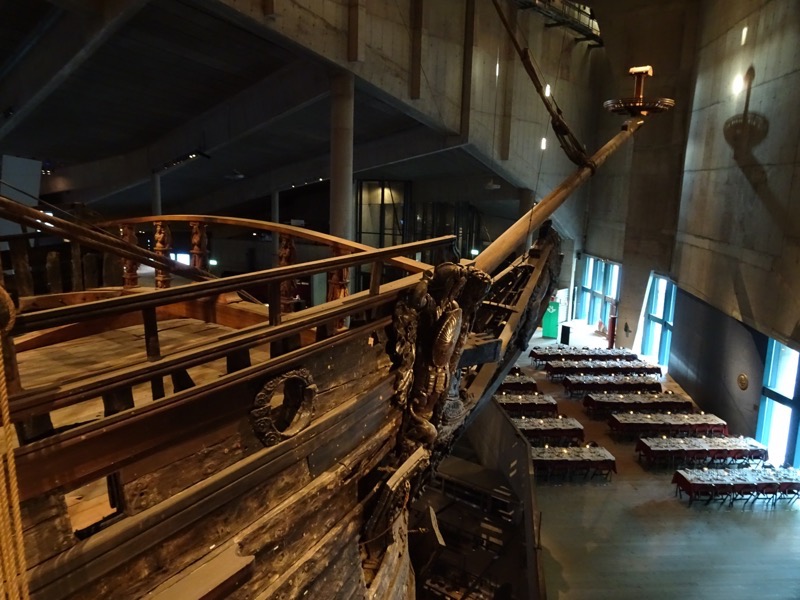
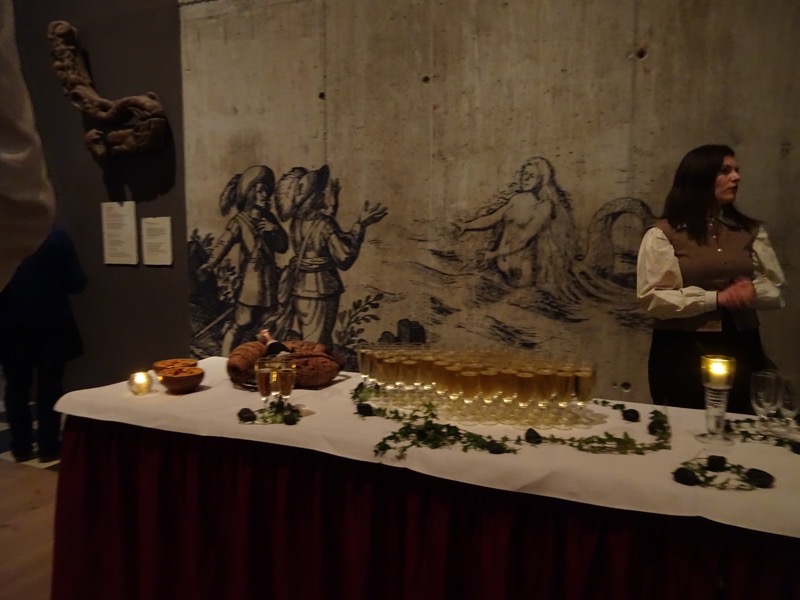 Our tables for the reception.
Our tables for the reception.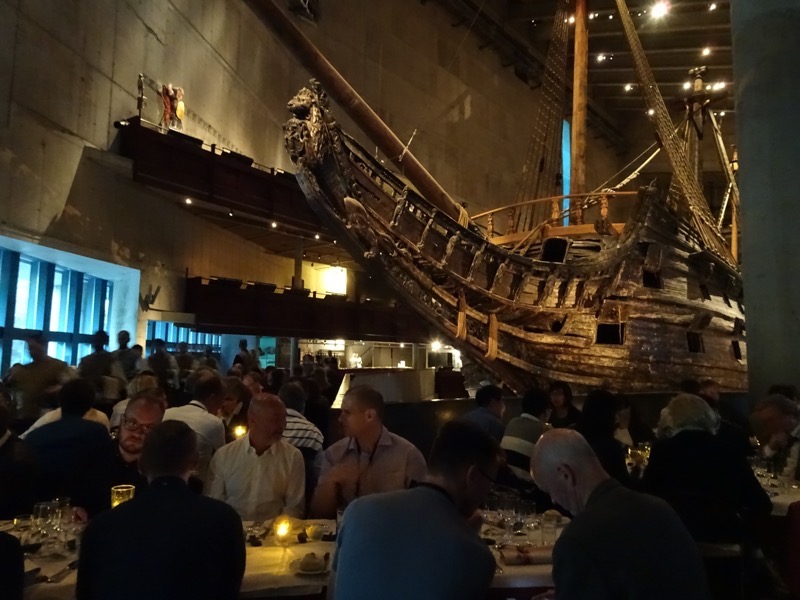
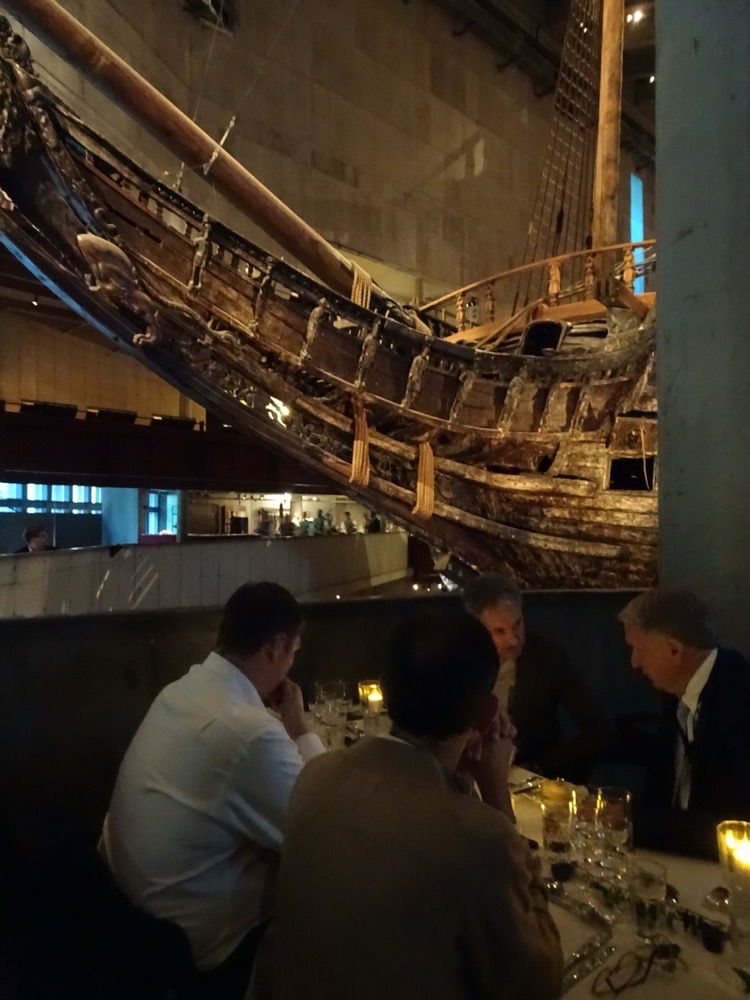 The function went over very well. Speeches were made, organizers were thanked, the next Thredbo was announced to be in Singapore in two years time. Overall, it was an amazing evening, and future conference organizers will be hard pressed to top it.
The function went over very well. Speeches were made, organizers were thanked, the next Thredbo was announced to be in Singapore in two years time. Overall, it was an amazing evening, and future conference organizers will be hard pressed to top it.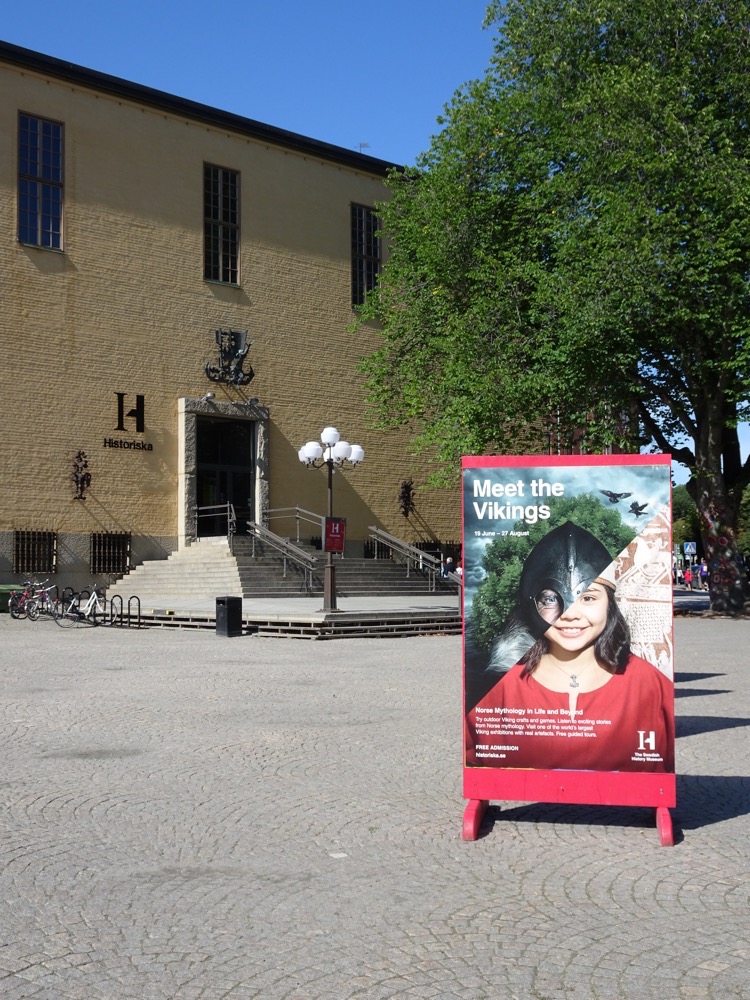
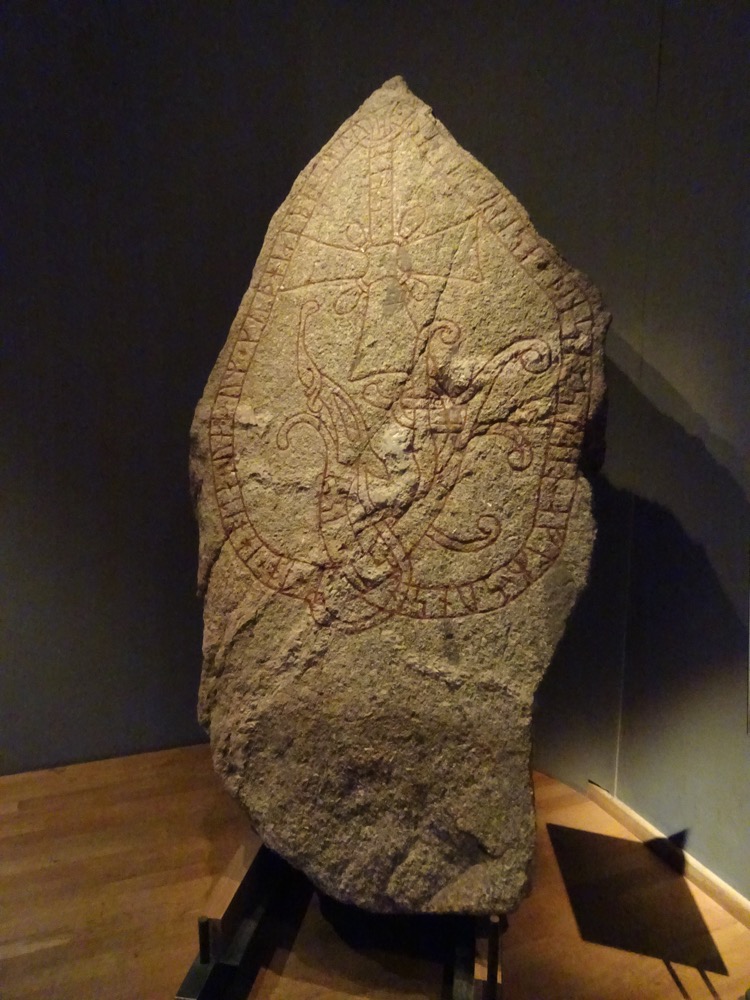
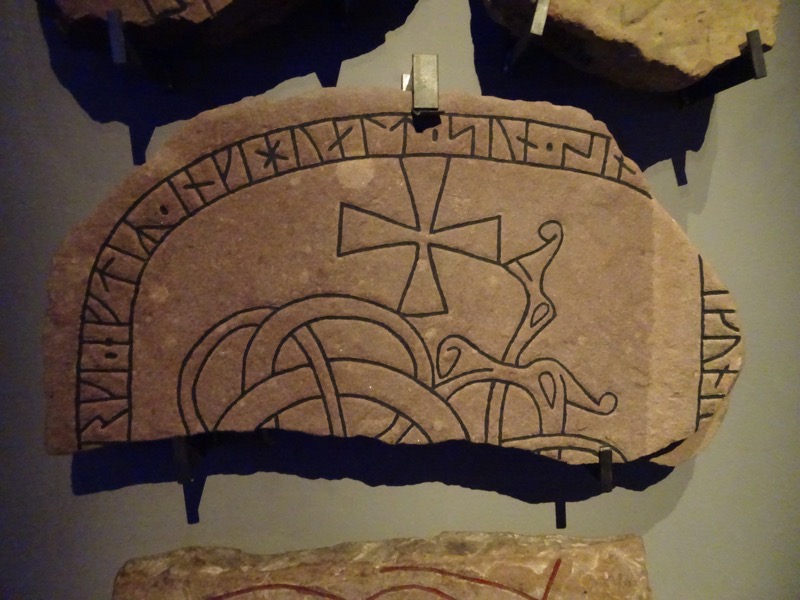
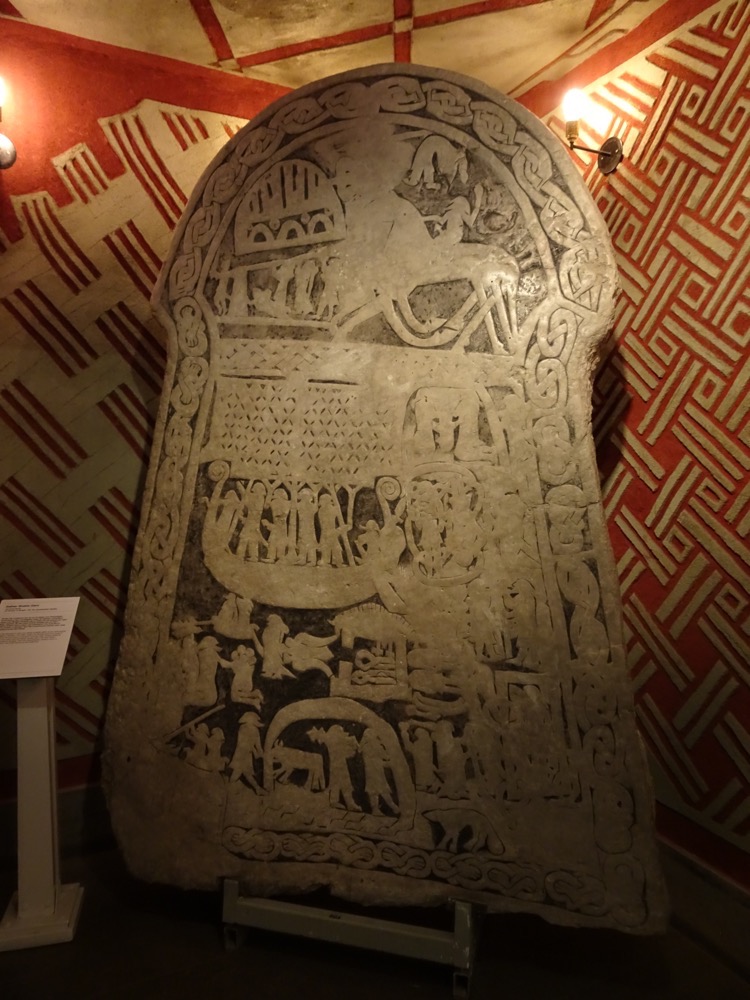 Over 1,000 Viking Age silver hoards have been found in Sweden. One of the largest hoards was from Sigsarve, on Gotland Island and weighs in at six kilos of silver objects. The hoard may have been intended as some sort of payment in the form of jewellery as silver weight, as items are either whole or hacked to pieces There were 1,382 coins in the hoard as well – interestingly the majority of them are of Islamic origins.
Over 1,000 Viking Age silver hoards have been found in Sweden. One of the largest hoards was from Sigsarve, on Gotland Island and weighs in at six kilos of silver objects. The hoard may have been intended as some sort of payment in the form of jewellery as silver weight, as items are either whole or hacked to pieces There were 1,382 coins in the hoard as well – interestingly the majority of them are of Islamic origins.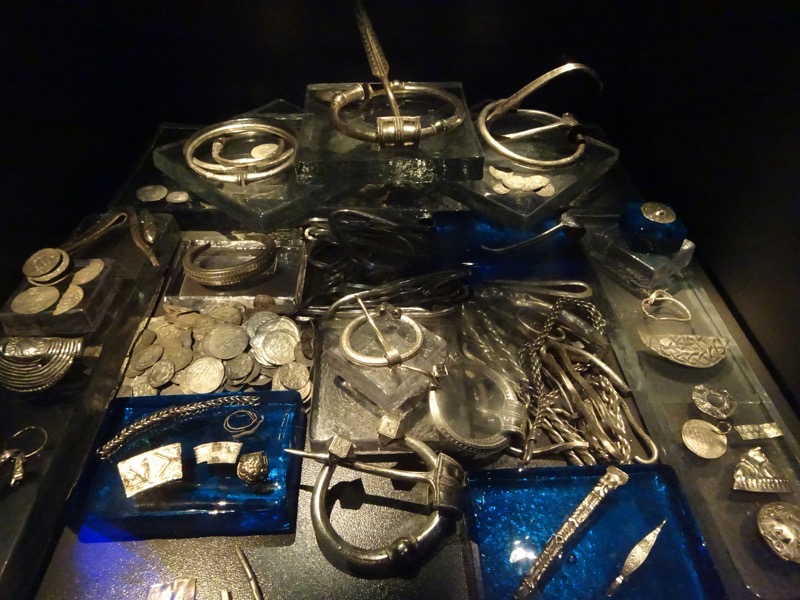 Penannular brooches from the Sigsarve hoard. 10thC to early 11thC, Gotland
Penannular brooches from the Sigsarve hoard. 10thC to early 11thC, Gotland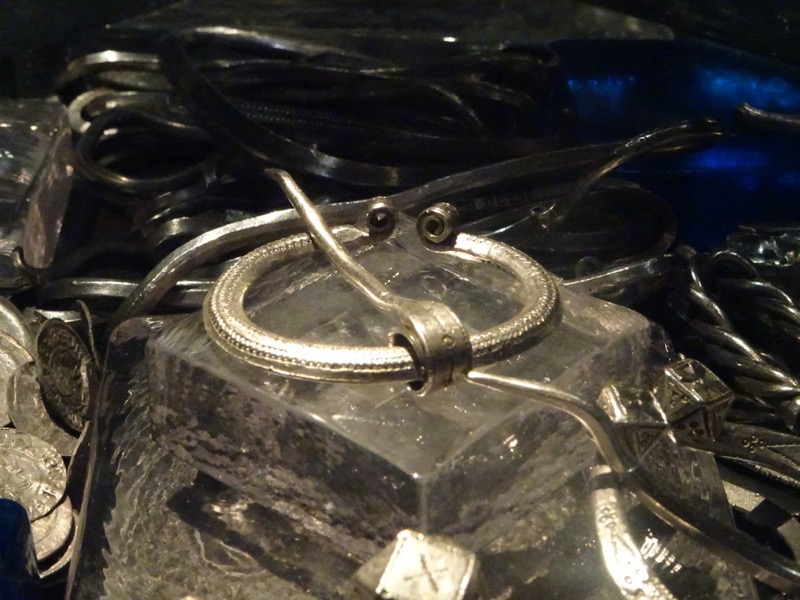
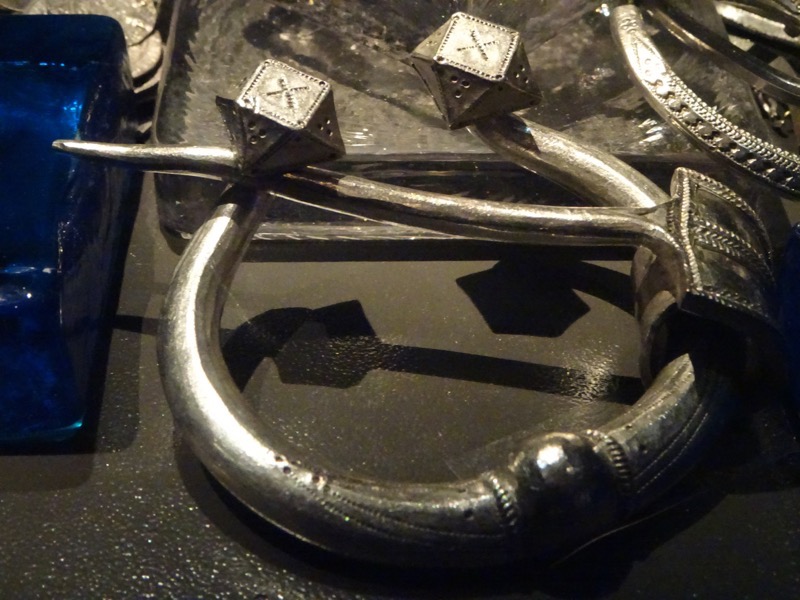
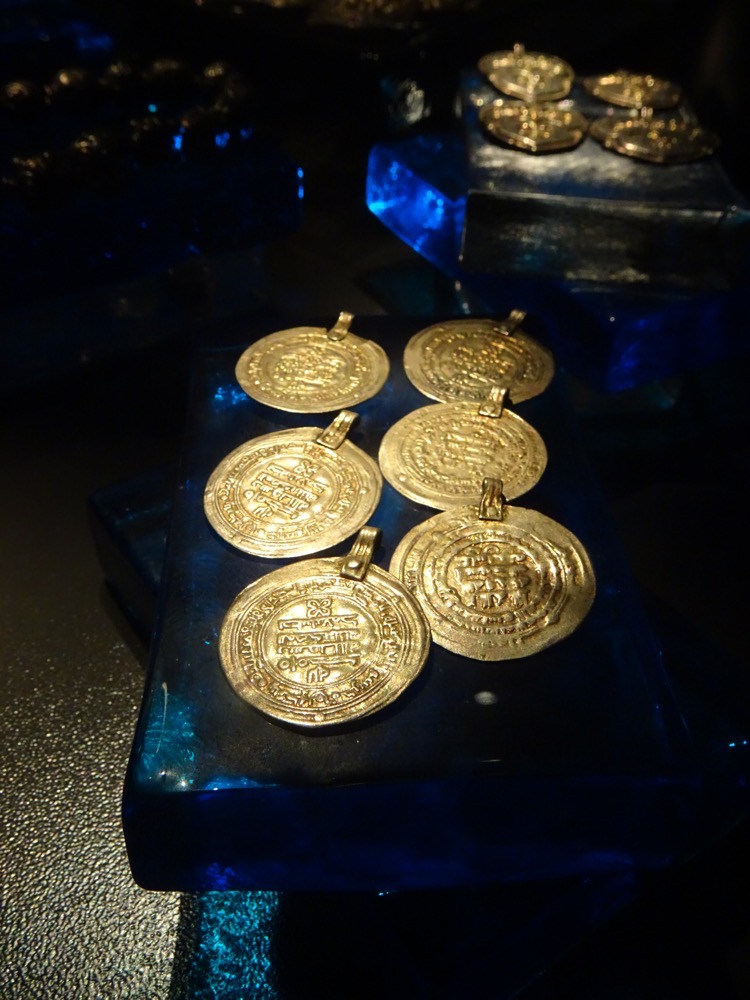
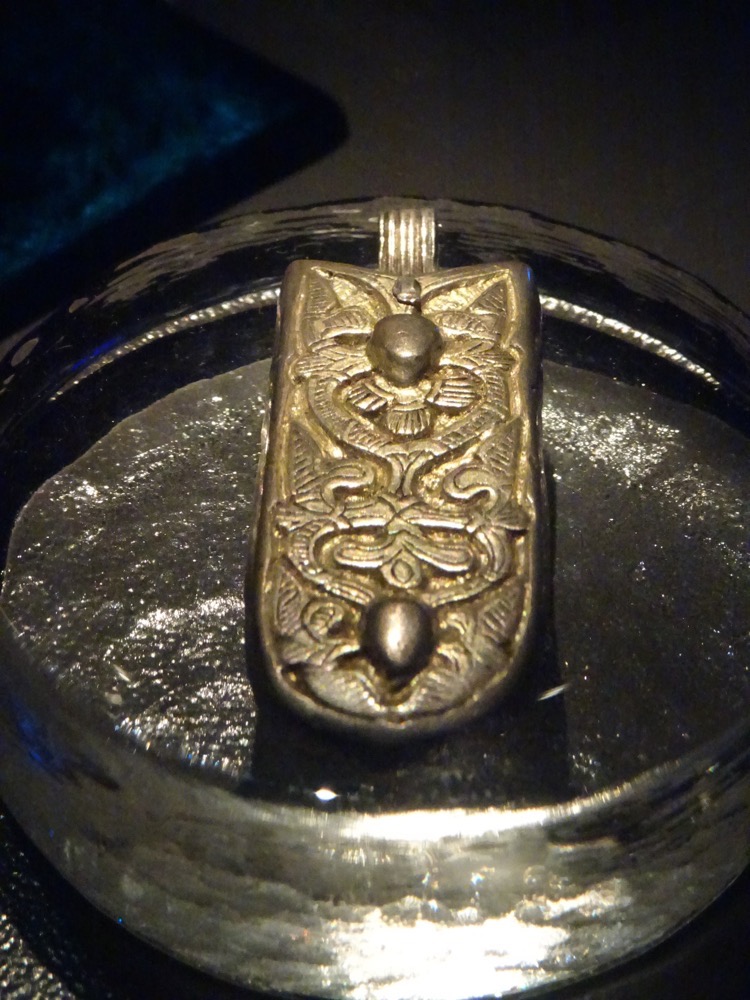
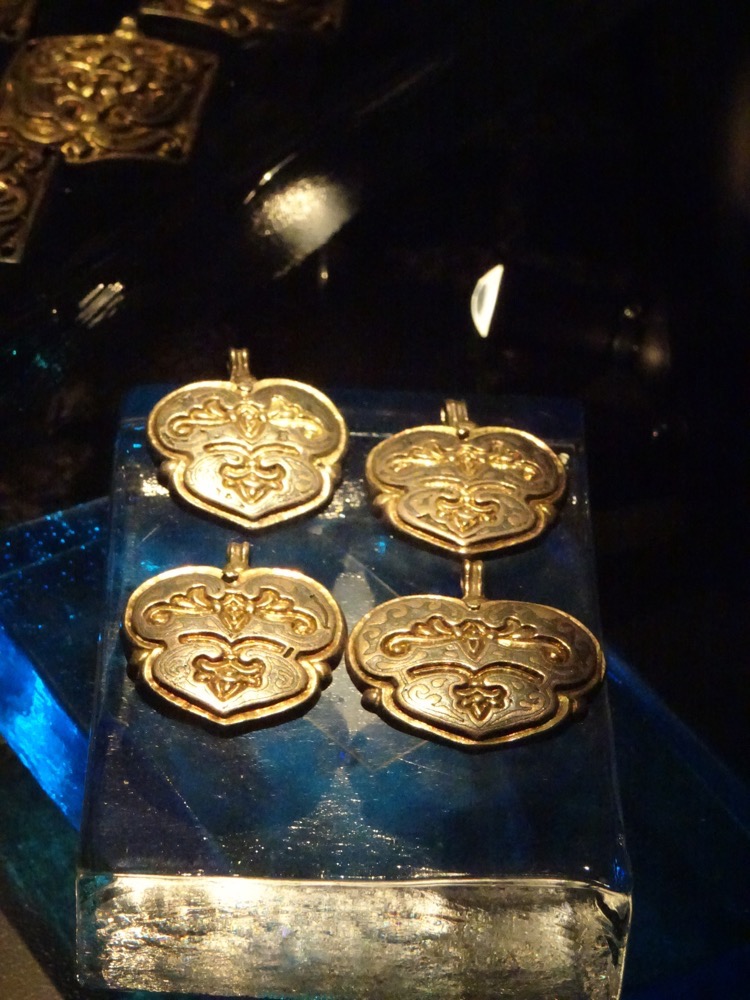 Viking treasure found on the outskirts of Stockholm, Varby.
Viking treasure found on the outskirts of Stockholm, Varby.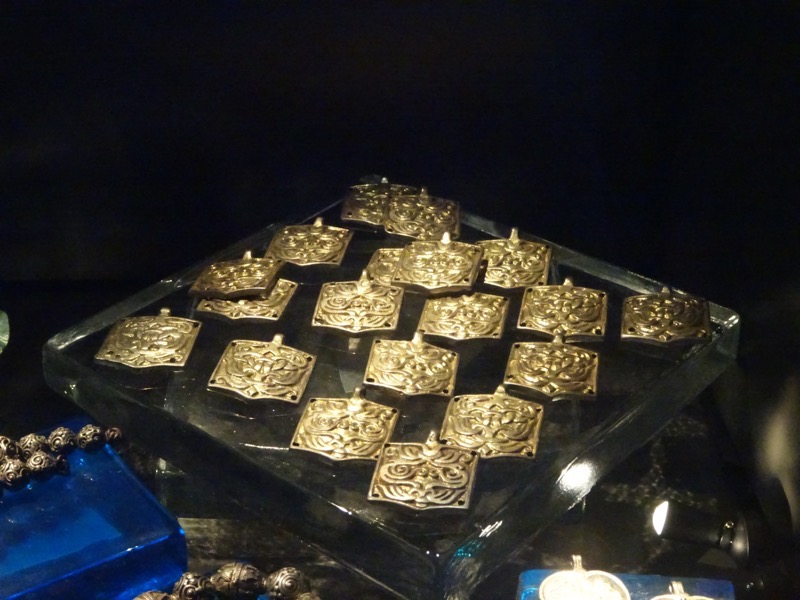
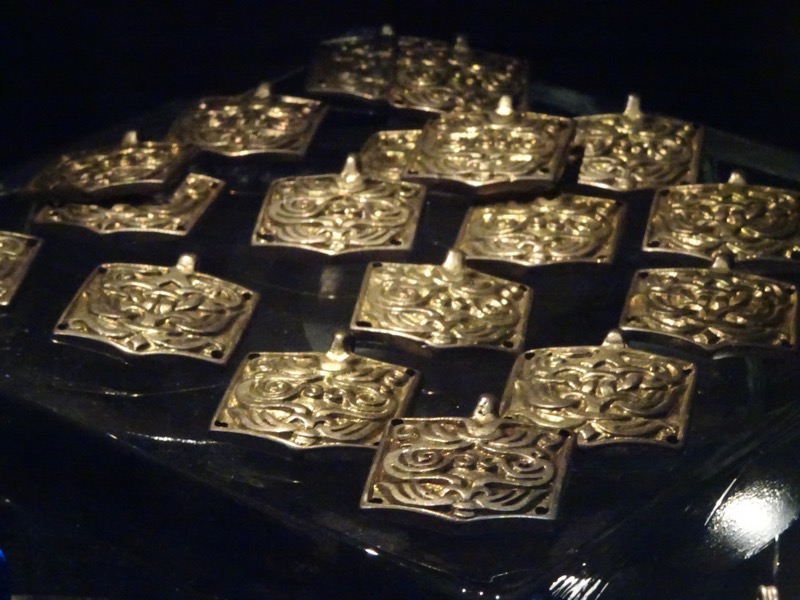 Viking era swords:
Viking era swords: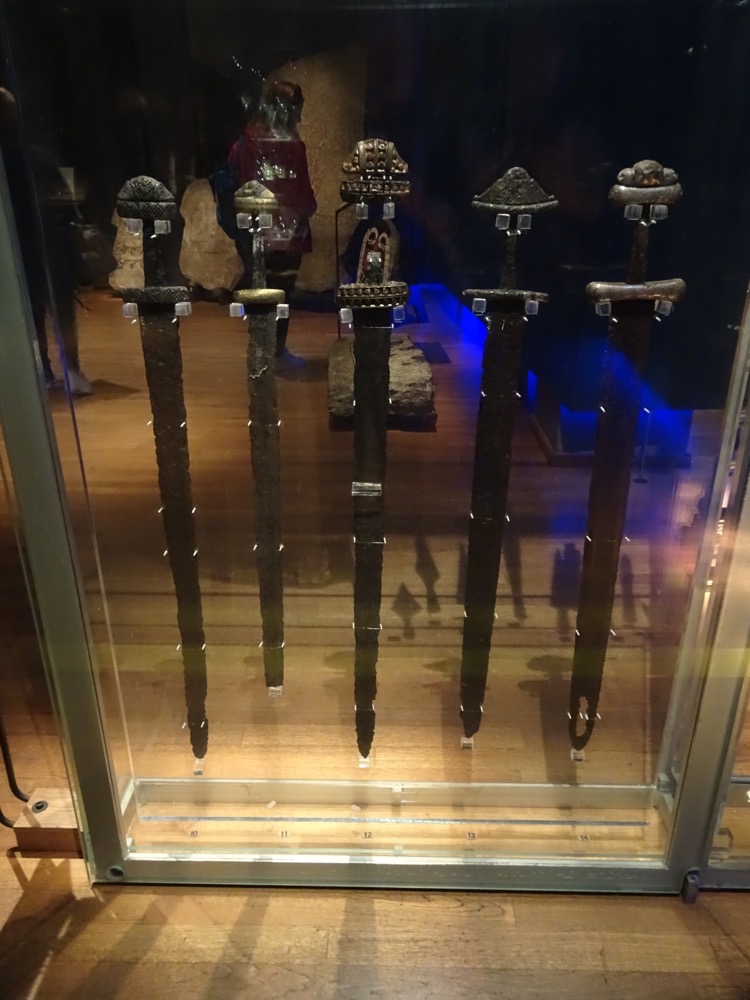
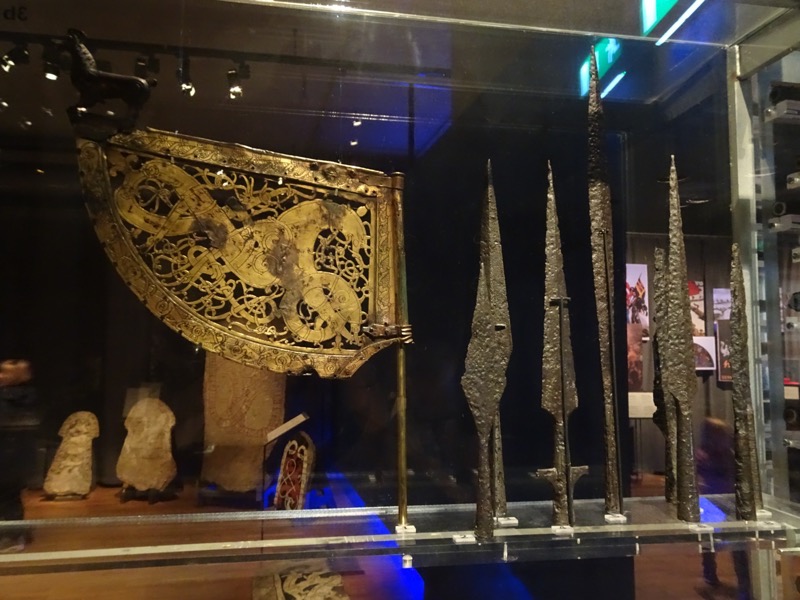
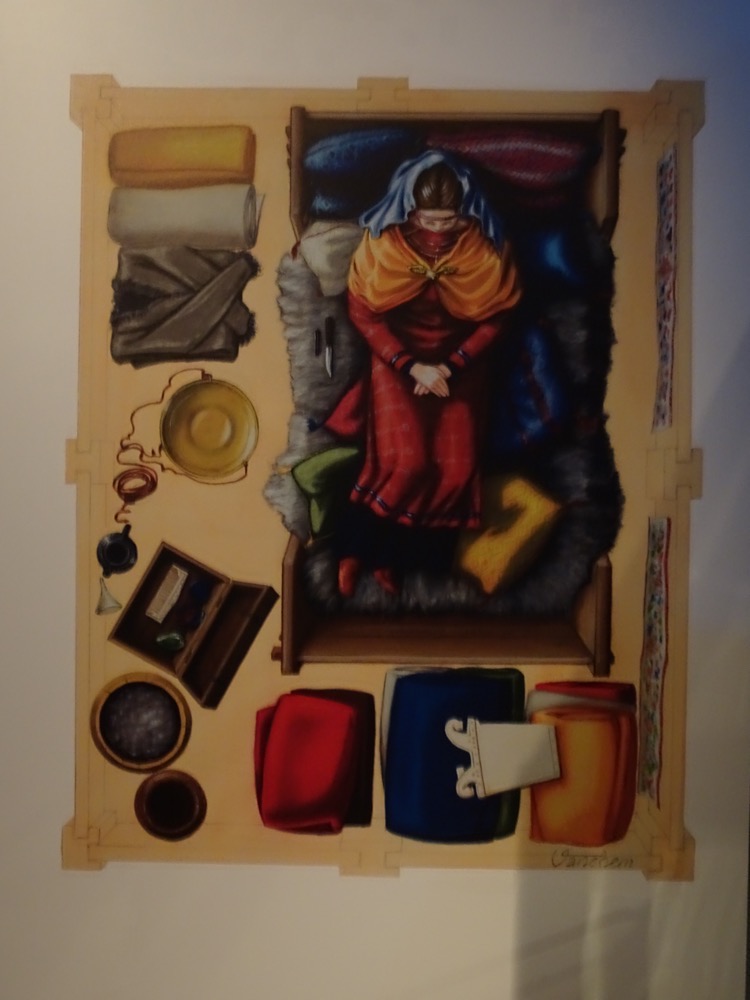 She wore a key, clearly visible on the outside of her dress showing her control on the estate. She managed the resources and facilitated the generosity that was important to the family maintaining status and subsequently, control.
She wore a key, clearly visible on the outside of her dress showing her control on the estate. She managed the resources and facilitated the generosity that was important to the family maintaining status and subsequently, control.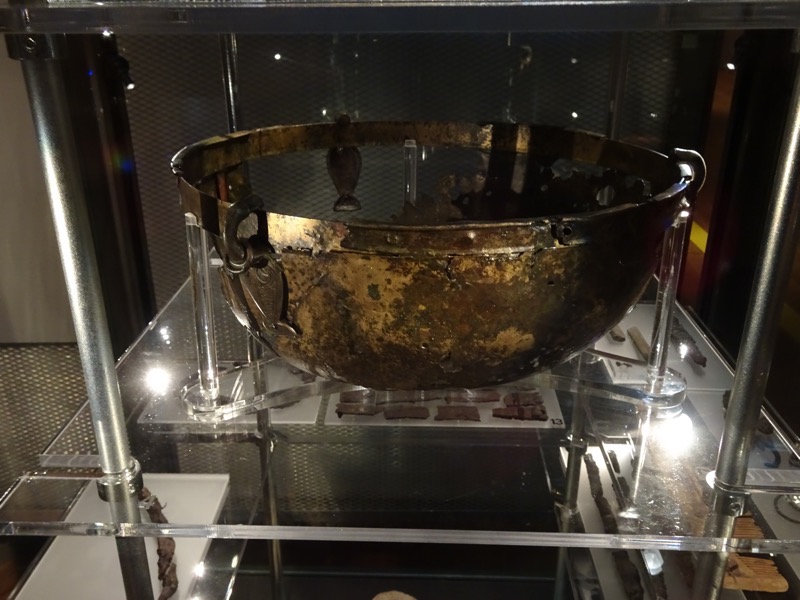 Blackware jug from Rhine region, originally with foil decoration, from Birka.
Blackware jug from Rhine region, originally with foil decoration, from Birka.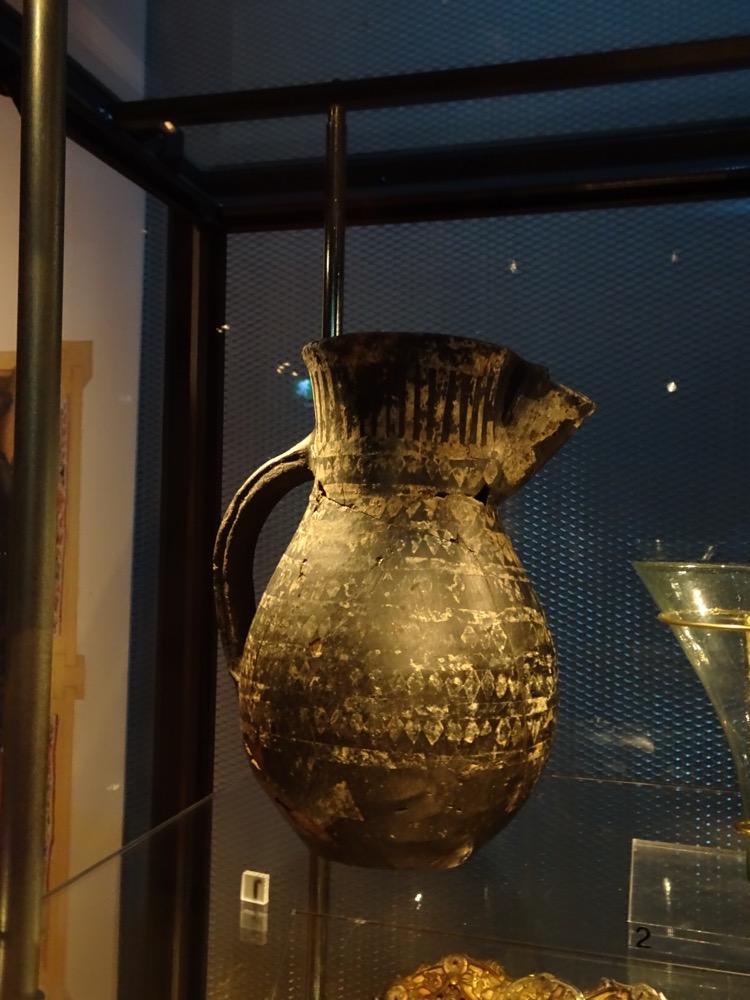 Inviting guests to lavish feasts was a feature of high society in the Viking era. Such feasting was an important part of the aristocracy’s lifestyle. Funnel glasses from the Frankish realm were apt for displaying wealth at such feasts. Other luxurious and delicate glass artefacts were also found, such as bowls from Persia, and game pieces.
Inviting guests to lavish feasts was a feature of high society in the Viking era. Such feasting was an important part of the aristocracy’s lifestyle. Funnel glasses from the Frankish realm were apt for displaying wealth at such feasts. Other luxurious and delicate glass artefacts were also found, such as bowls from Persia, and game pieces.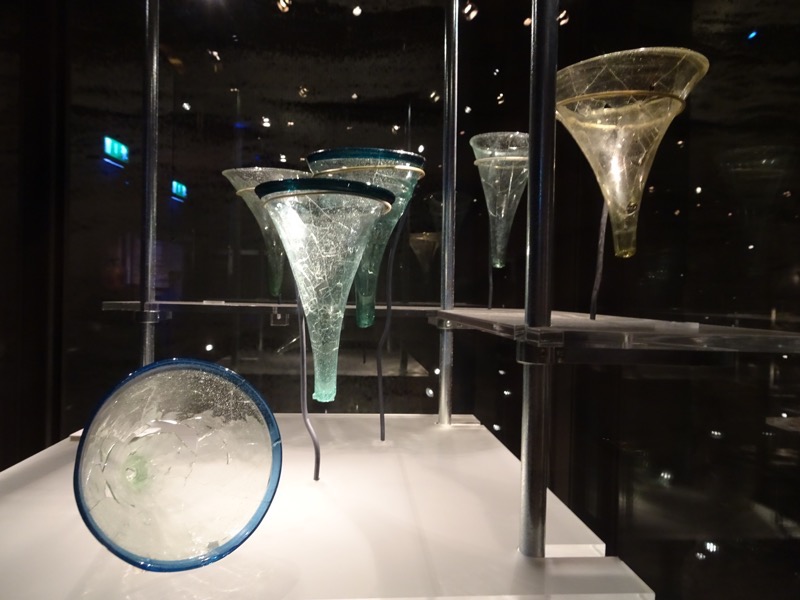 Glass gaming pieces, Birka.
Glass gaming pieces, Birka.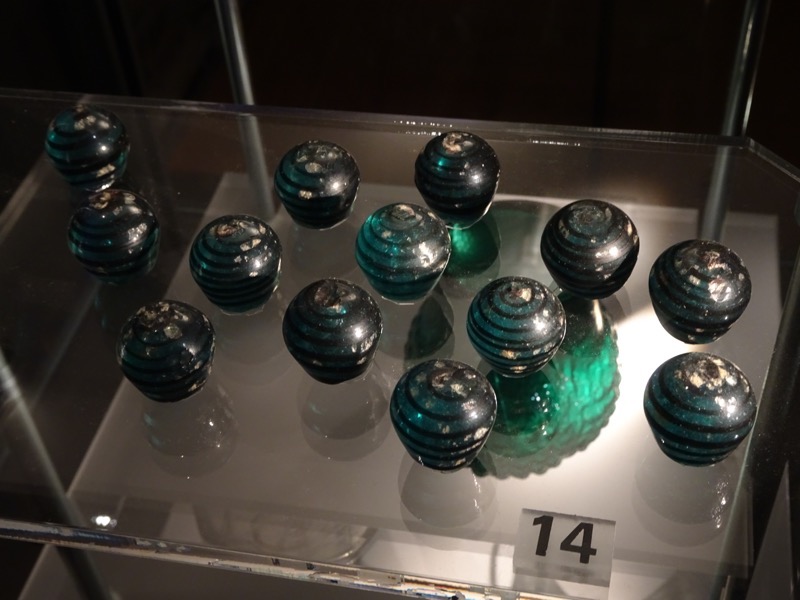
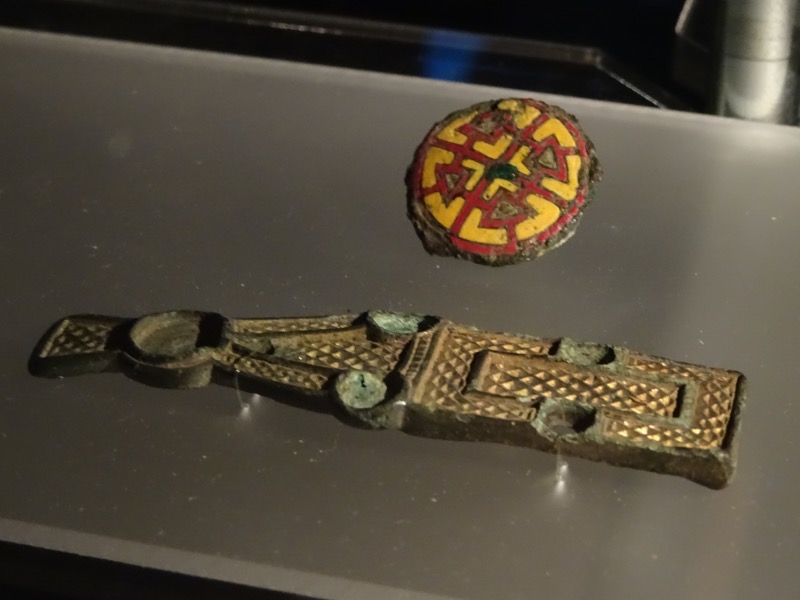 Necklace, silver and rock crystal, Gotland, Lye.
Necklace, silver and rock crystal, Gotland, Lye.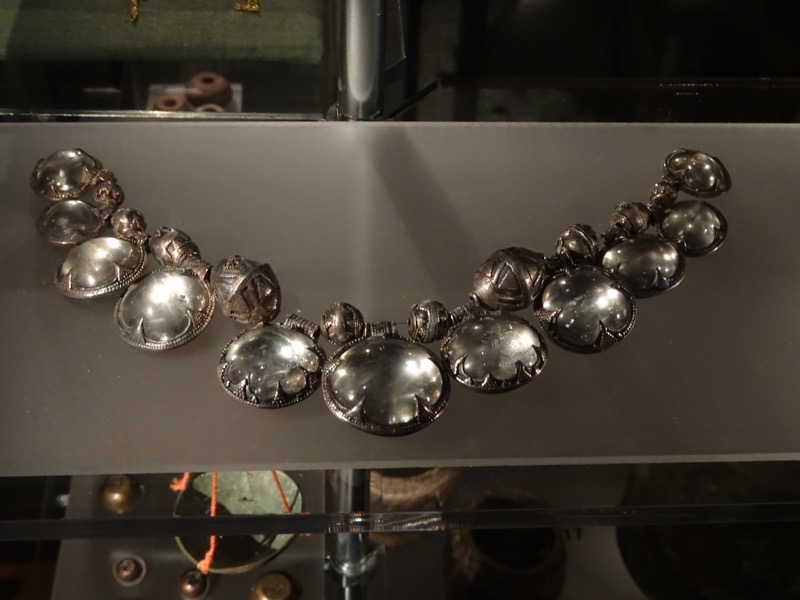
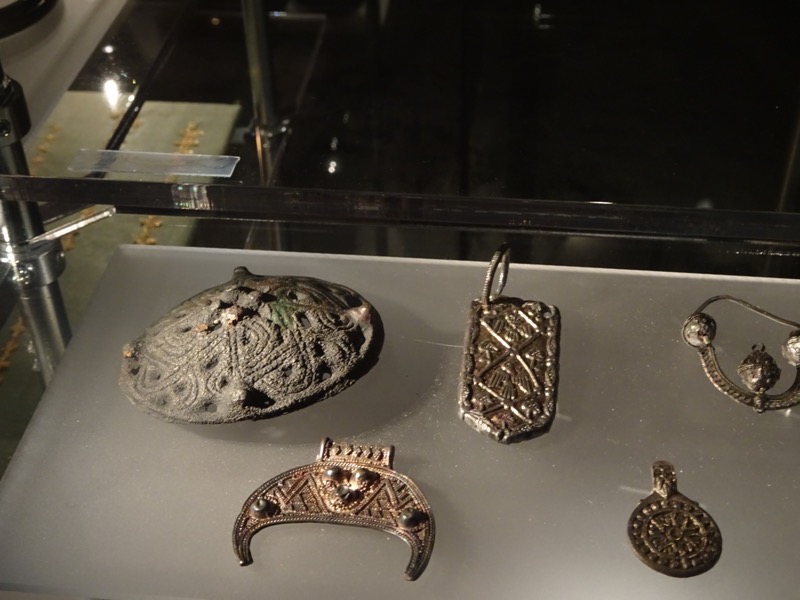 This petroglyph from the island of Gotland shows several people with drinking horns. During the Viking Age, alcoholic drinks were brewed – most popular were mead and ale. This stone depects men drinking and below, battling with swords.
This petroglyph from the island of Gotland shows several people with drinking horns. During the Viking Age, alcoholic drinks were brewed – most popular were mead and ale. This stone depects men drinking and below, battling with swords.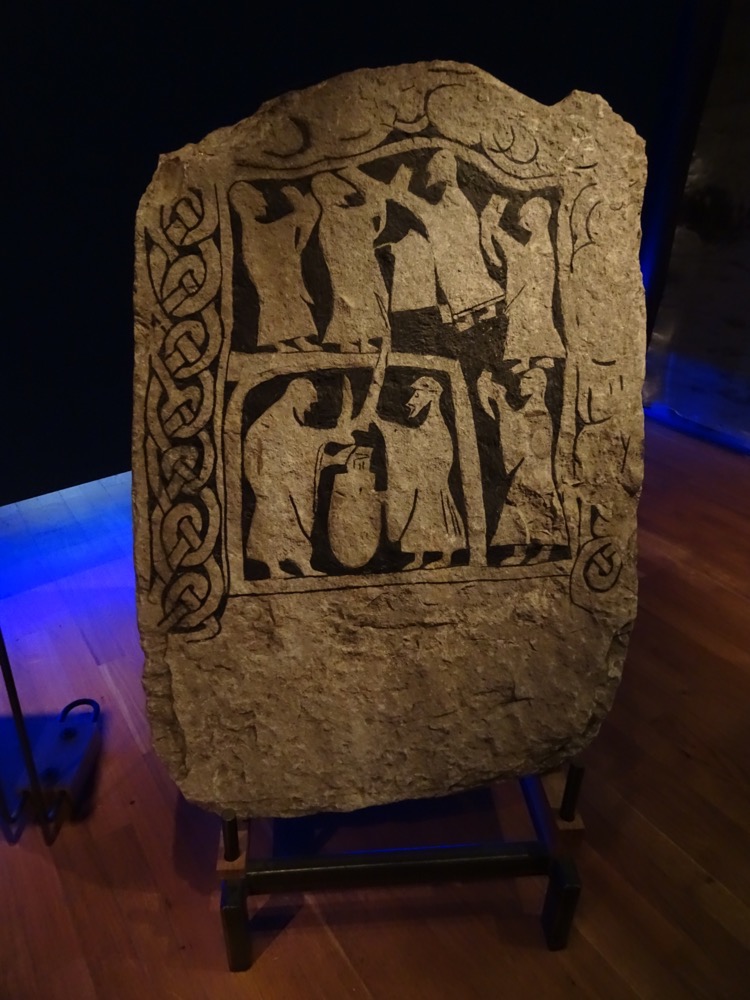 Picture stone, from Lillbjars, Gotland may have been part of a coffin lid.
Picture stone, from Lillbjars, Gotland may have been part of a coffin lid.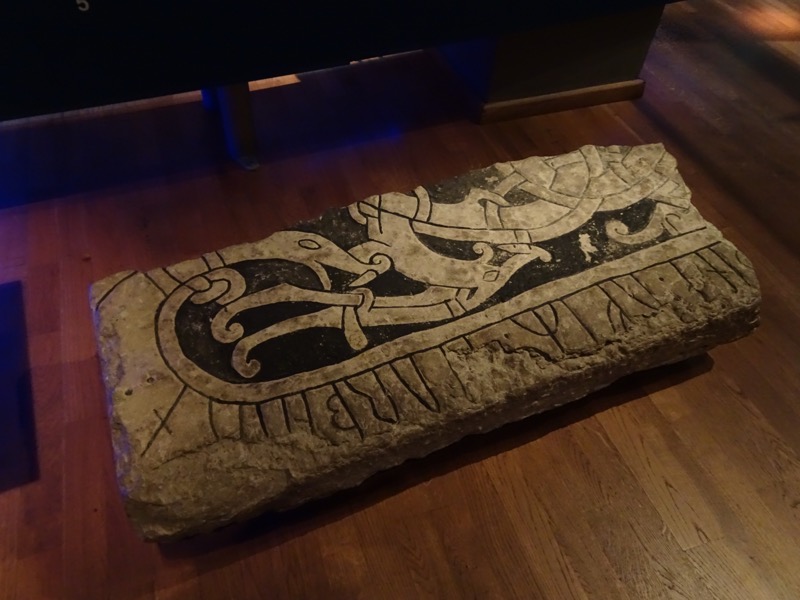
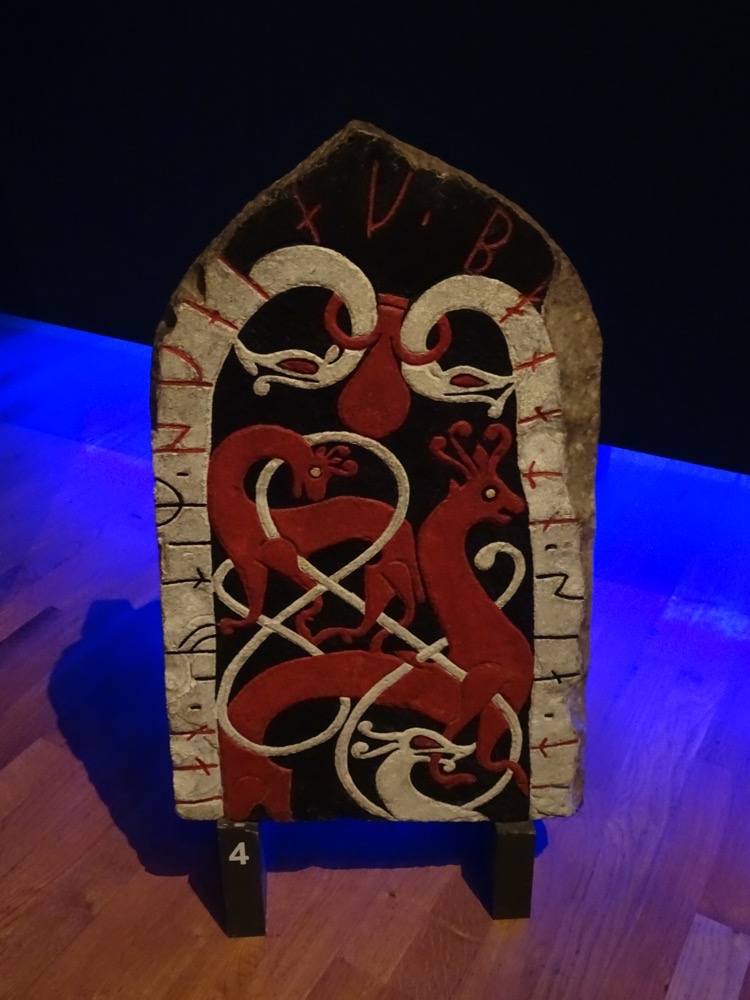
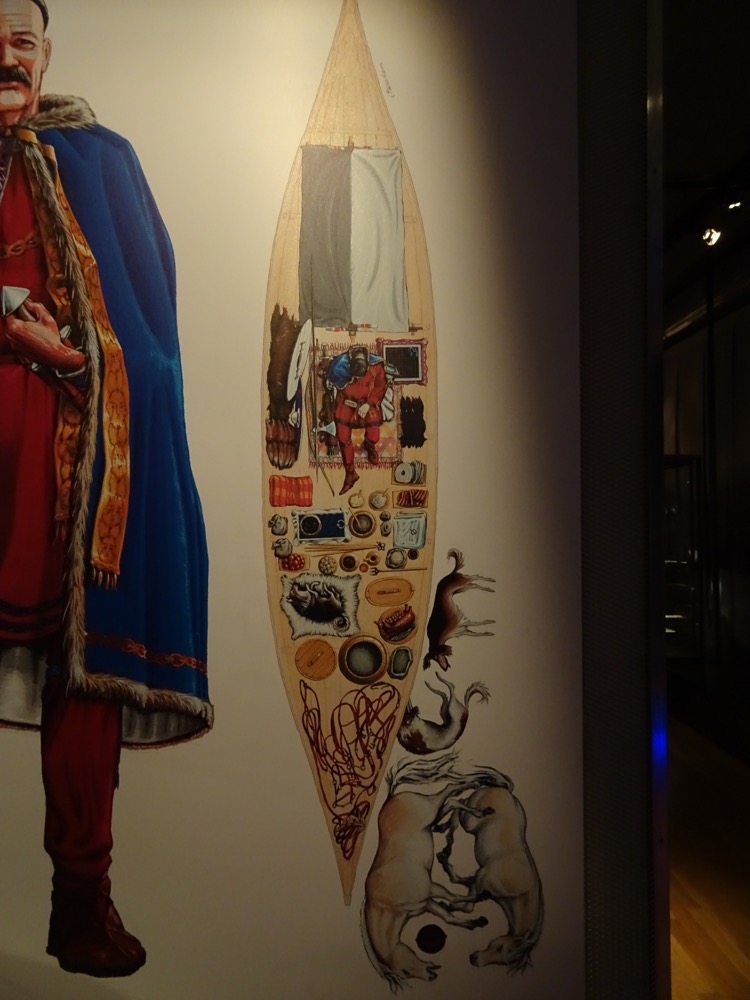 Vendel Magnate: From a powerful clan in Uppland, he is dressed in his most luxurious clothes and dress accessories. This baron was buried in his ship, along with his most valuable possessions including an iron cauldron, a meat fork, gaming pieces, an axe, a spear, arrow heads, shield bosses and a seax. This image shows his grave as it was found.
Vendel Magnate: From a powerful clan in Uppland, he is dressed in his most luxurious clothes and dress accessories. This baron was buried in his ship, along with his most valuable possessions including an iron cauldron, a meat fork, gaming pieces, an axe, a spear, arrow heads, shield bosses and a seax. This image shows his grave as it was found.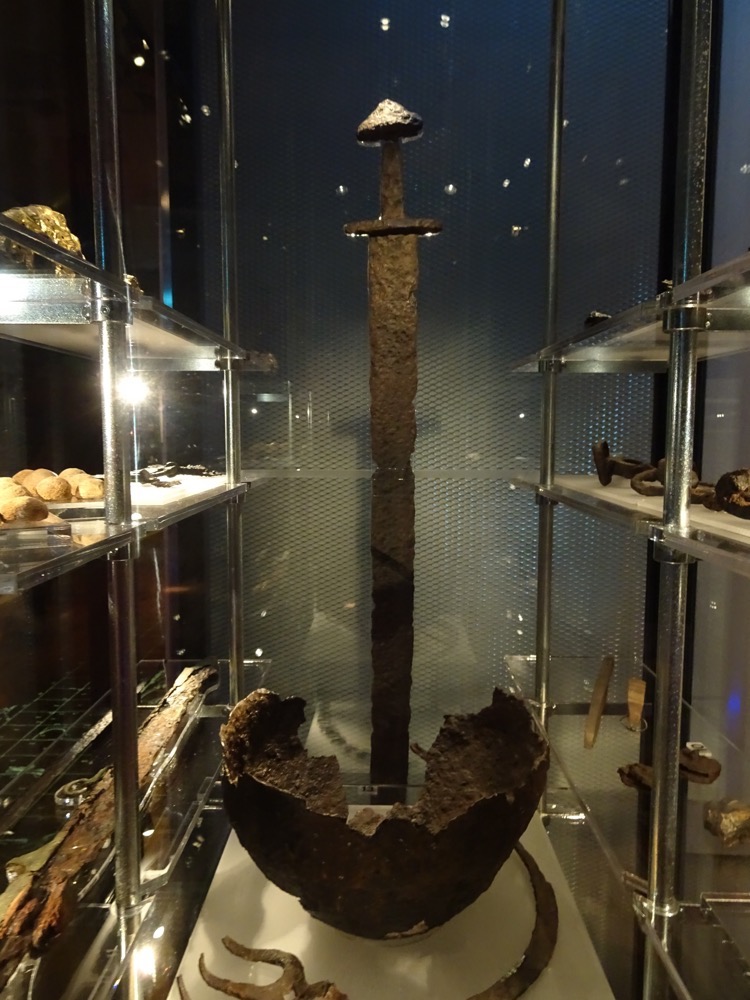
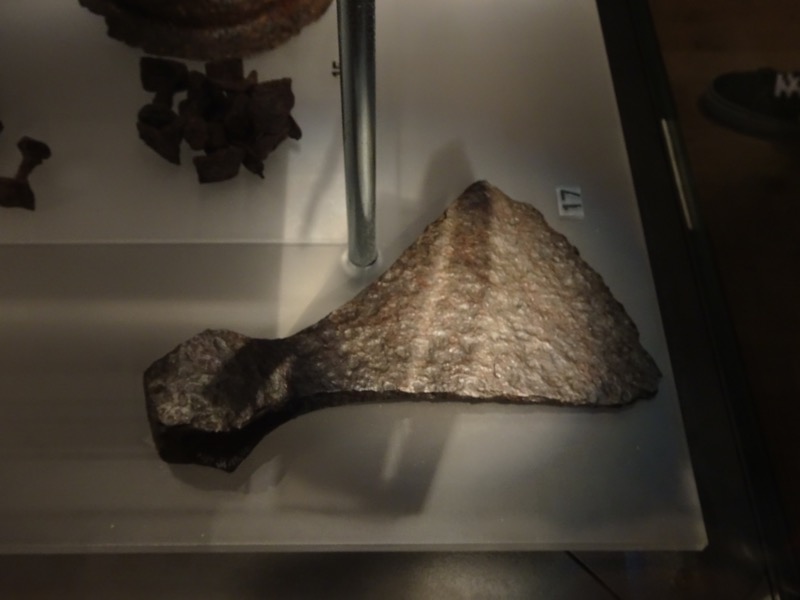
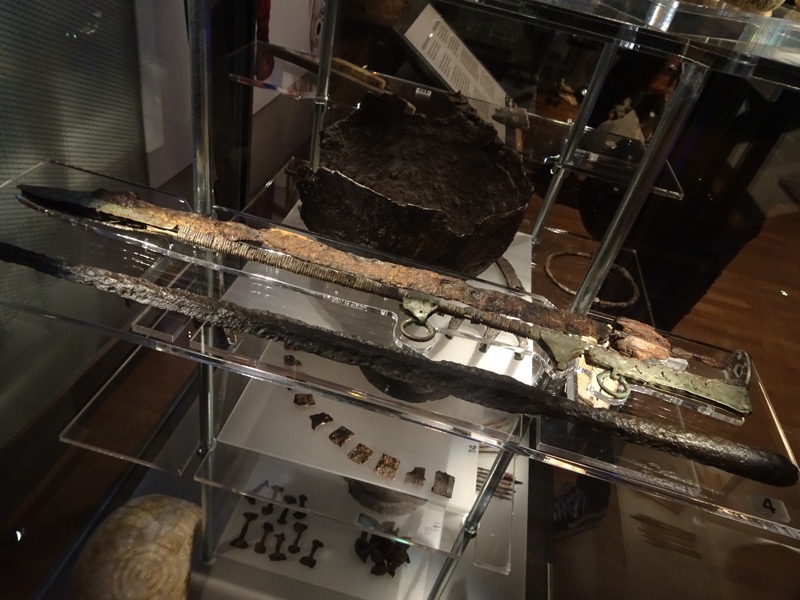
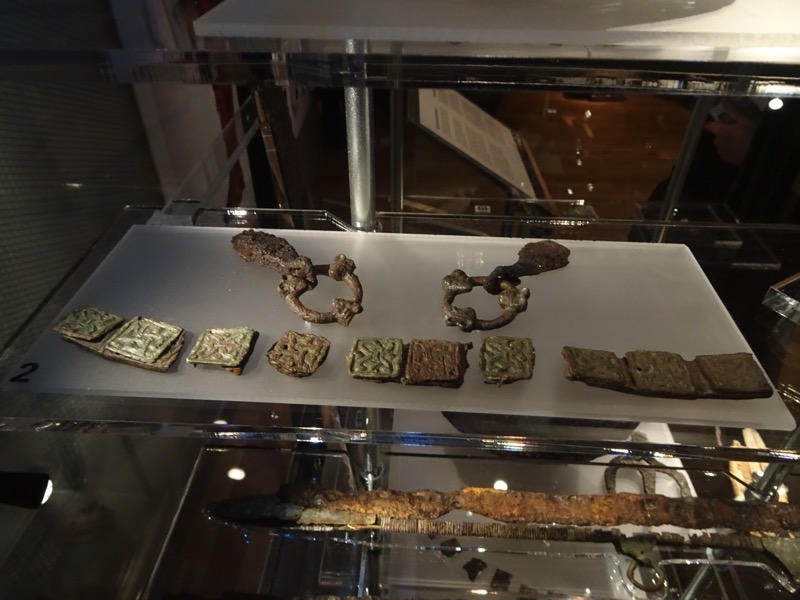
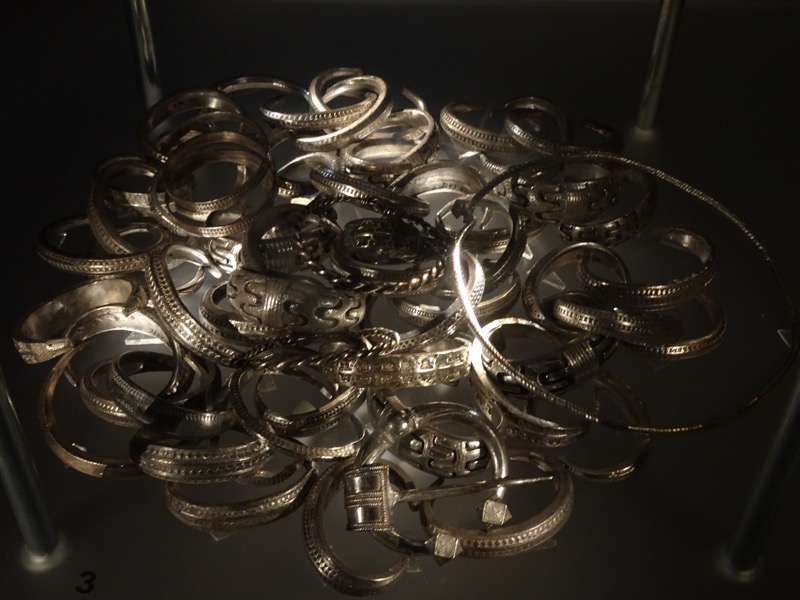
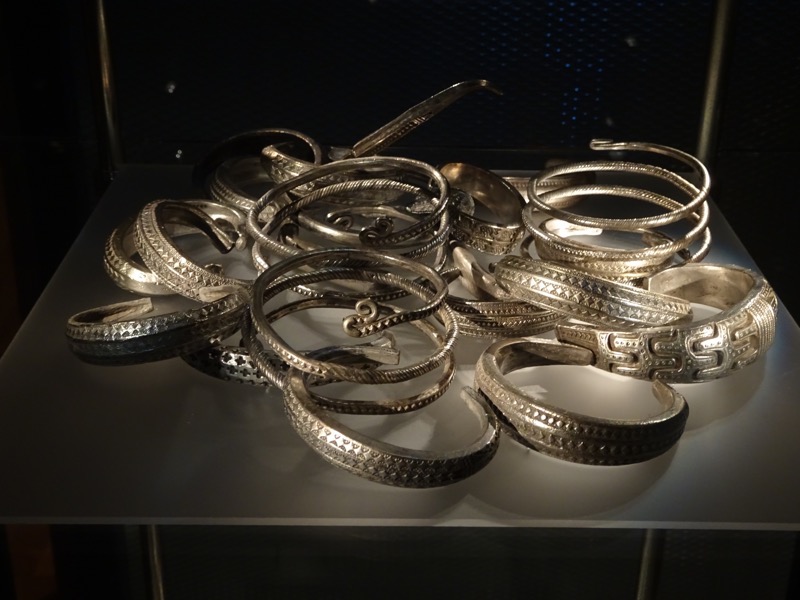
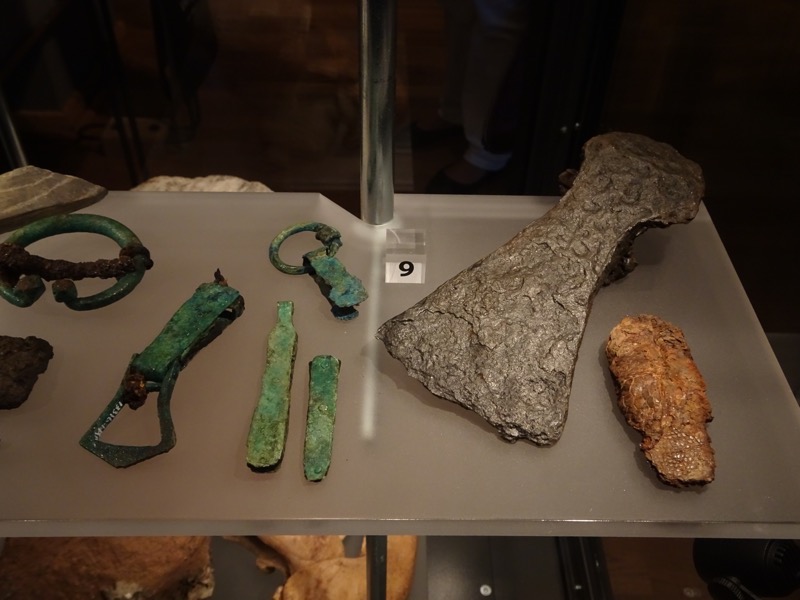
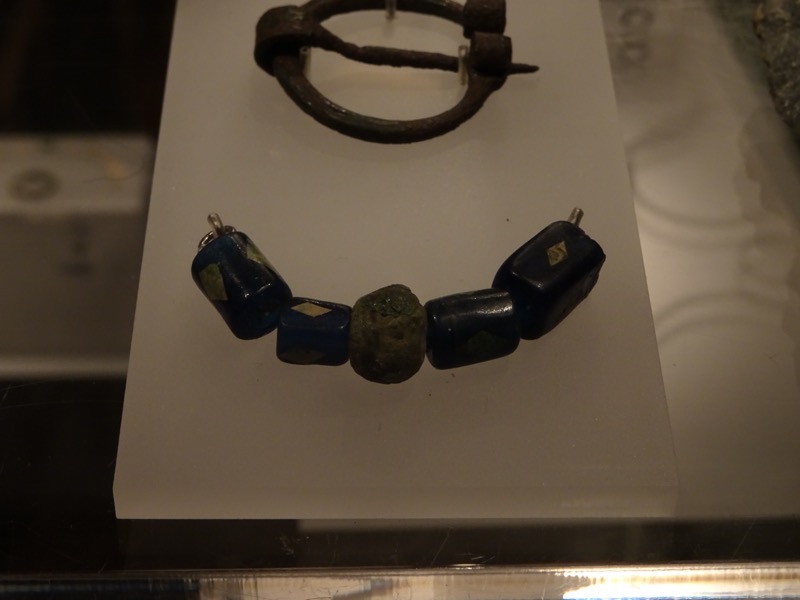

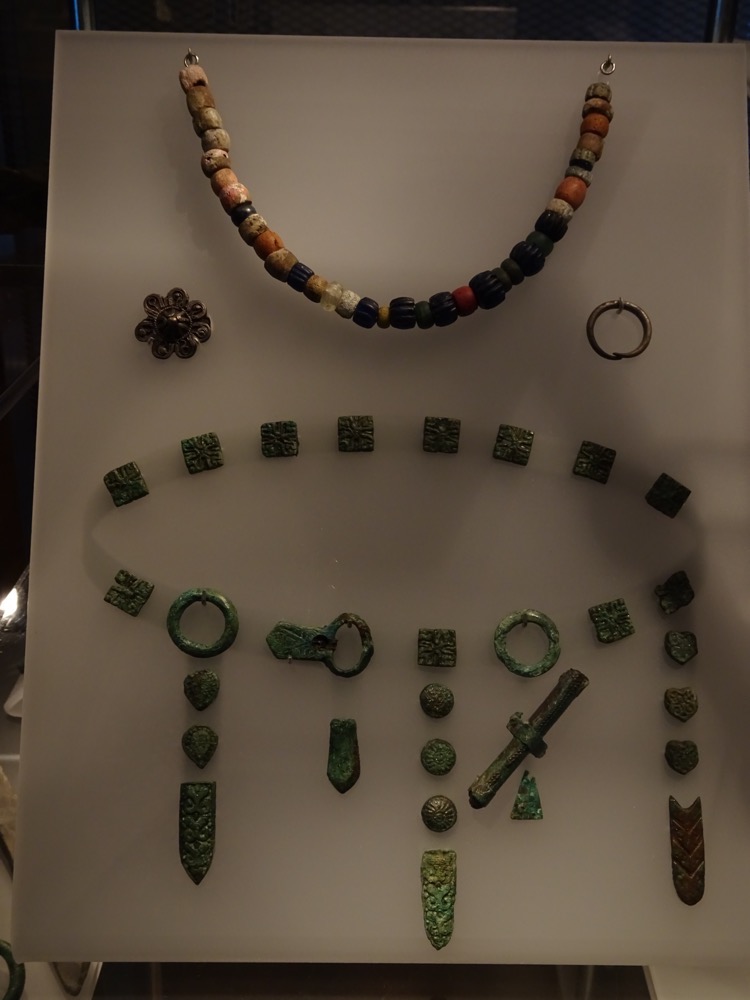
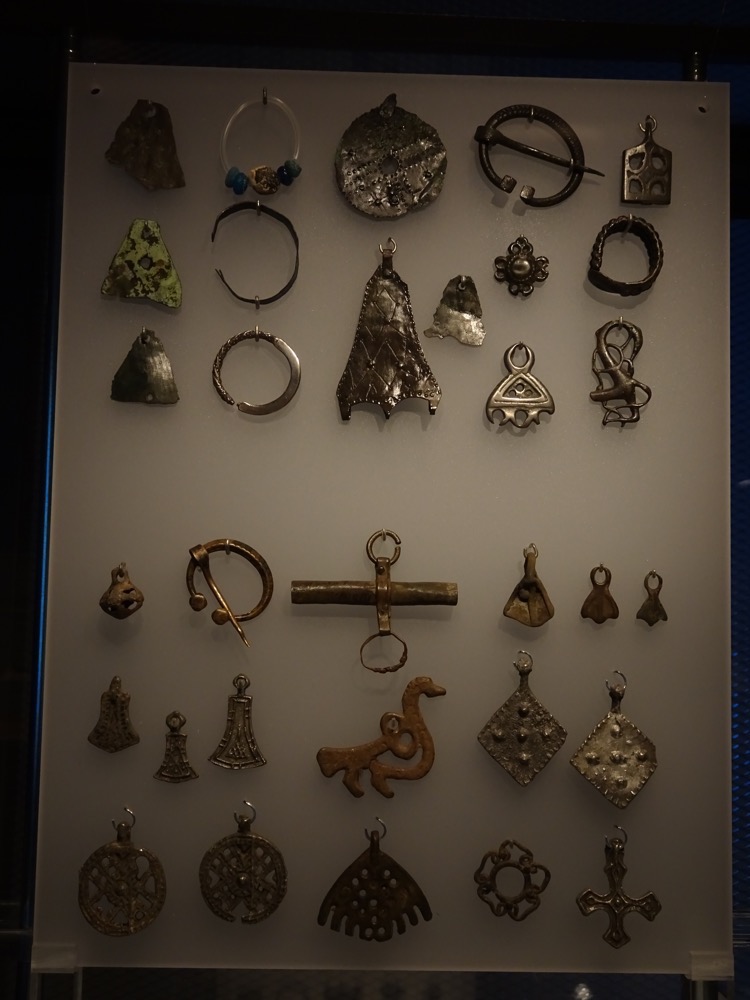
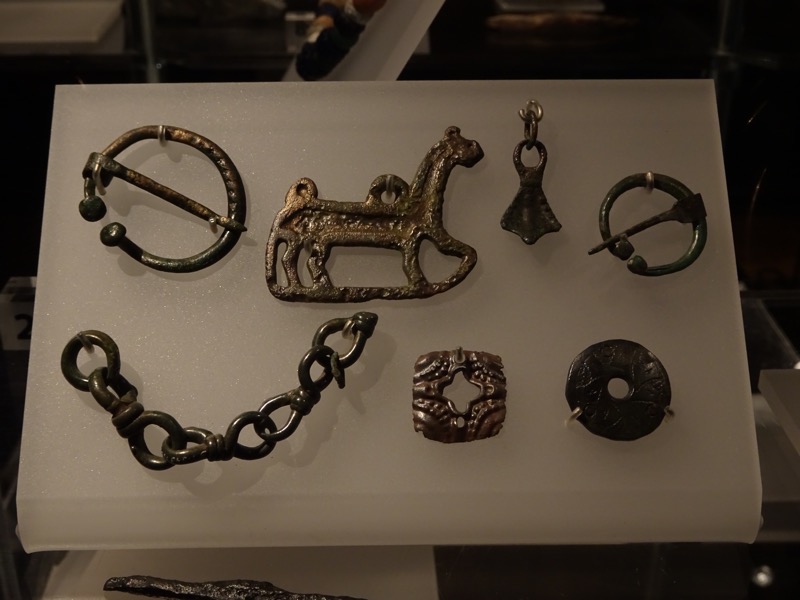
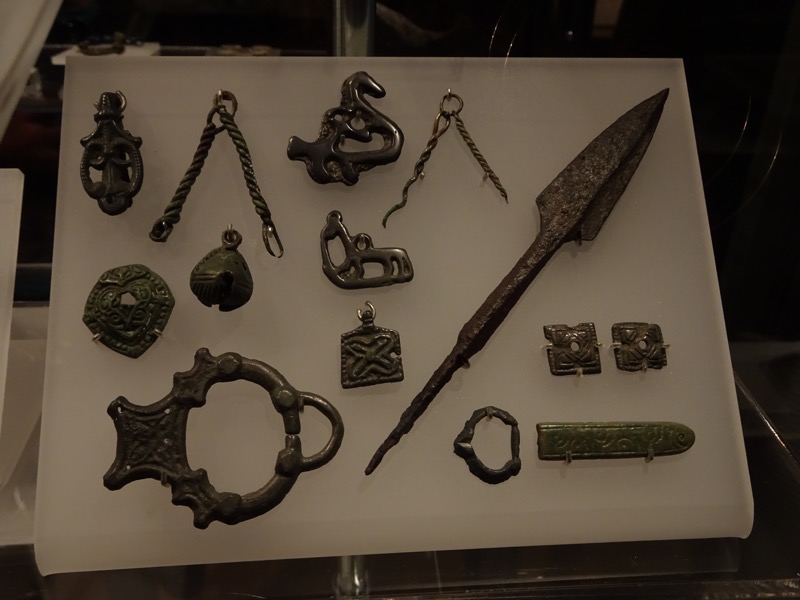
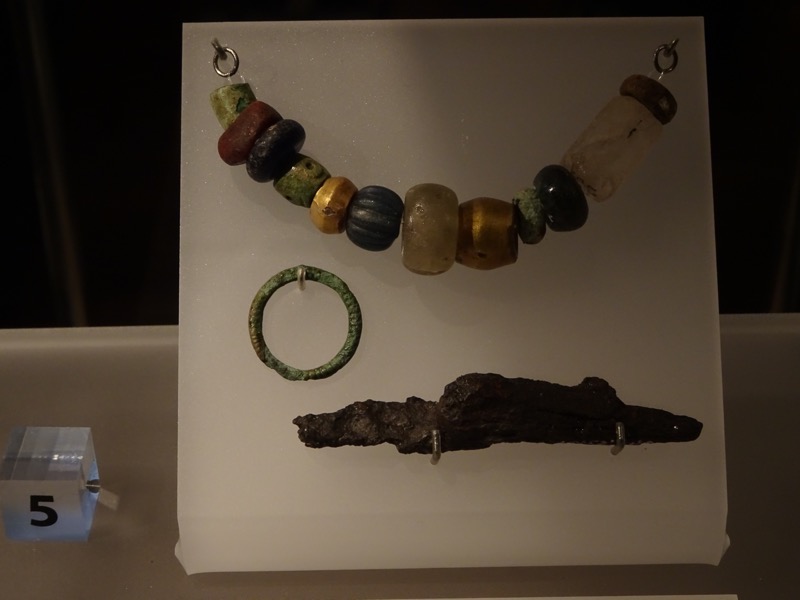 Fittings from a Birka pouch.a
Fittings from a Birka pouch.a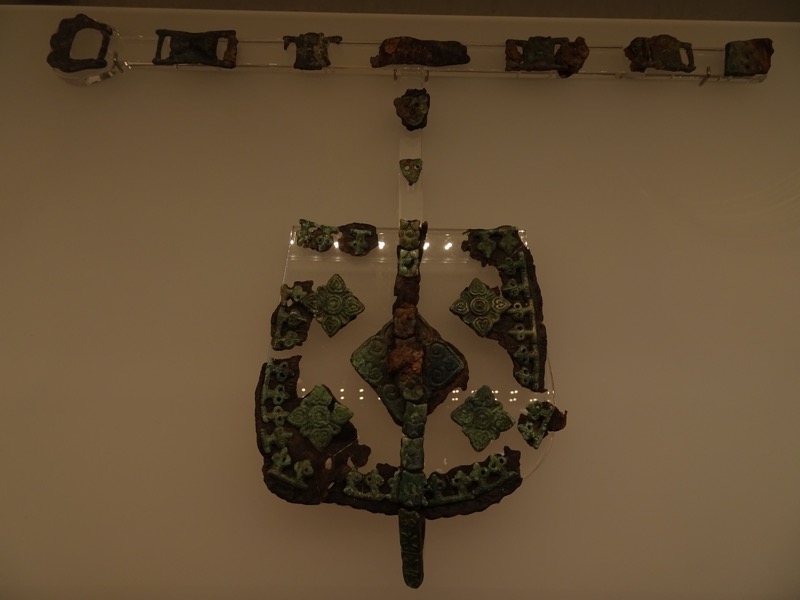
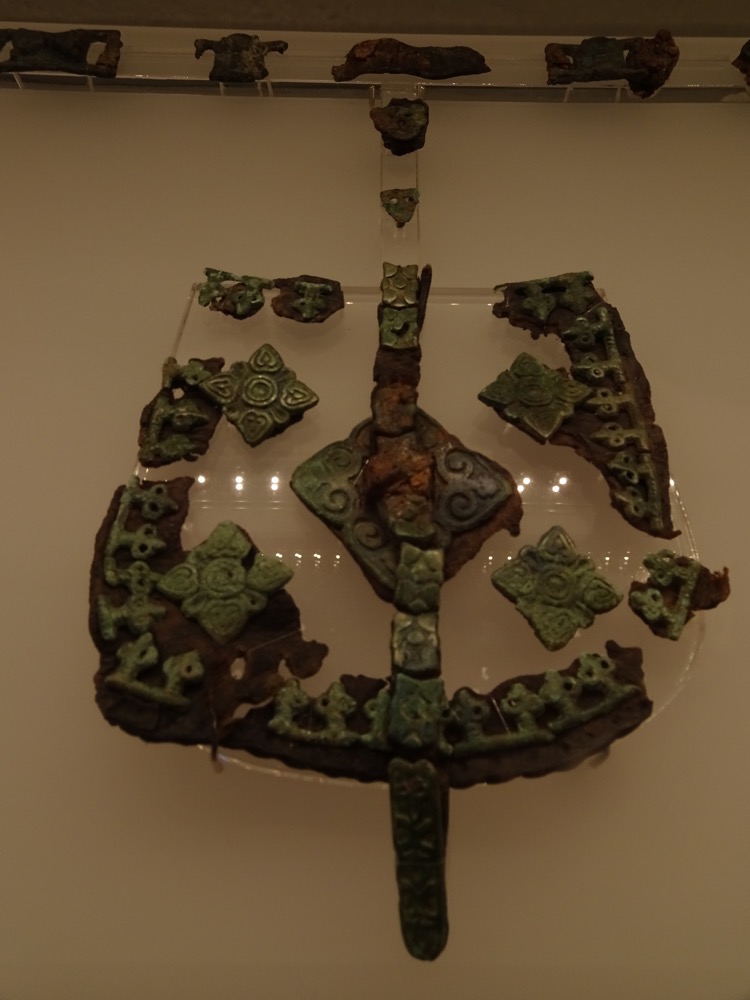
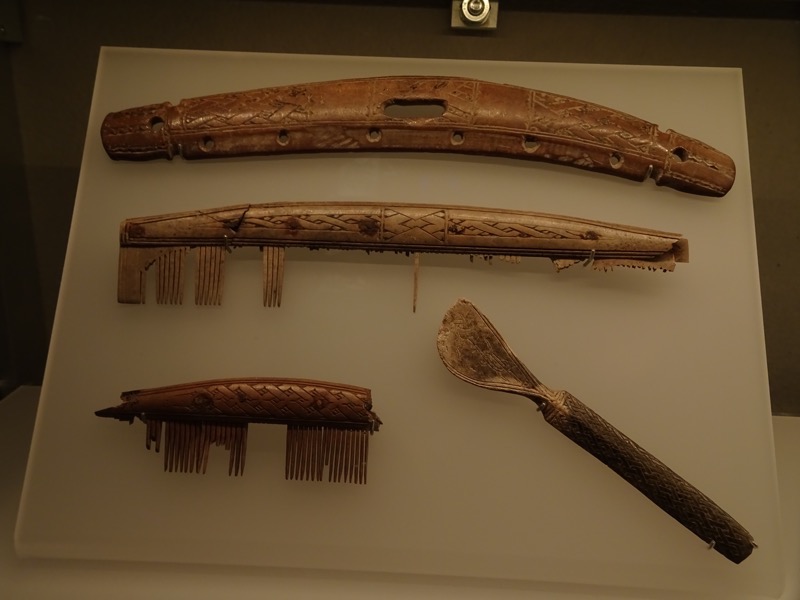
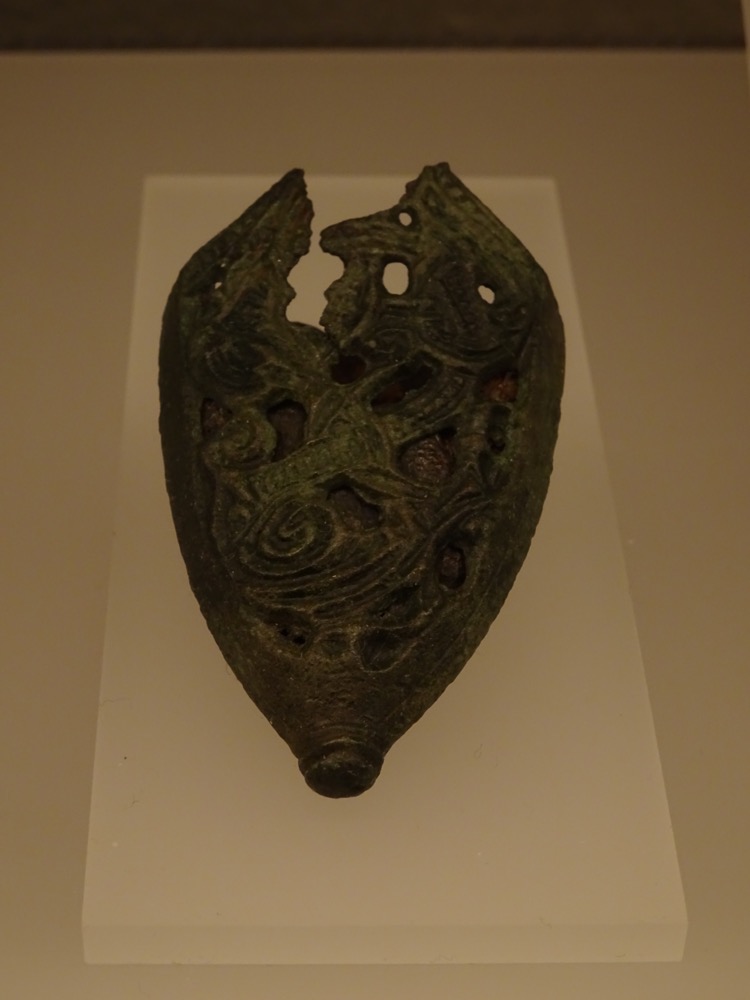
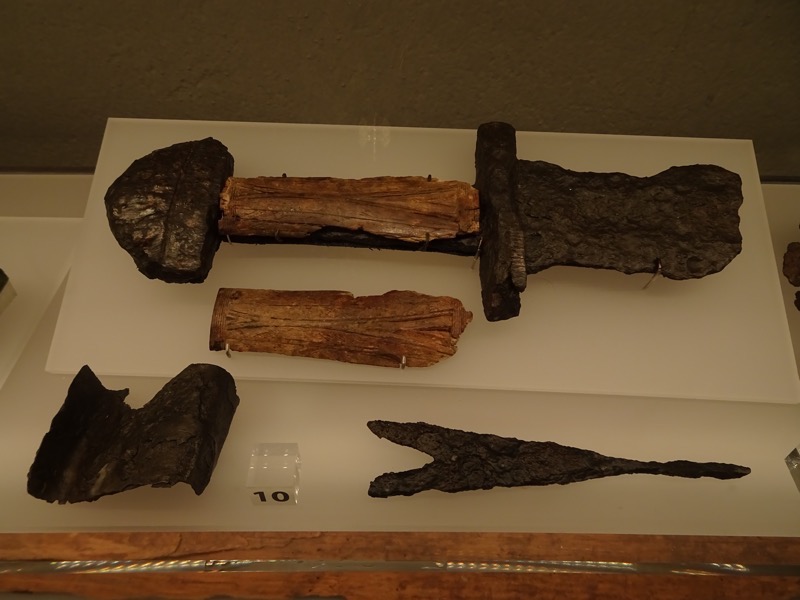
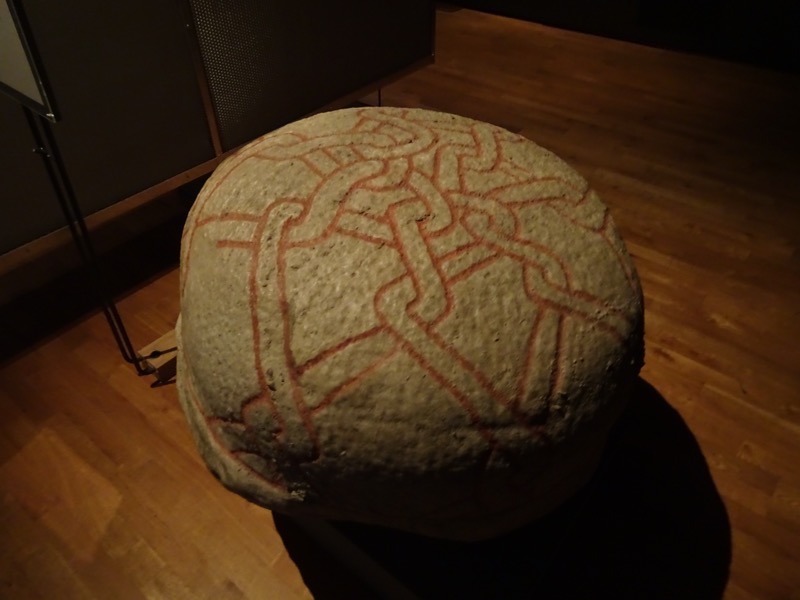 Collection of tools found in a tool chest – fire, grid and iron tools (plate shears hacksaw, keys and nail irons), Gotland, Mastermyr.
Collection of tools found in a tool chest – fire, grid and iron tools (plate shears hacksaw, keys and nail irons), Gotland, Mastermyr.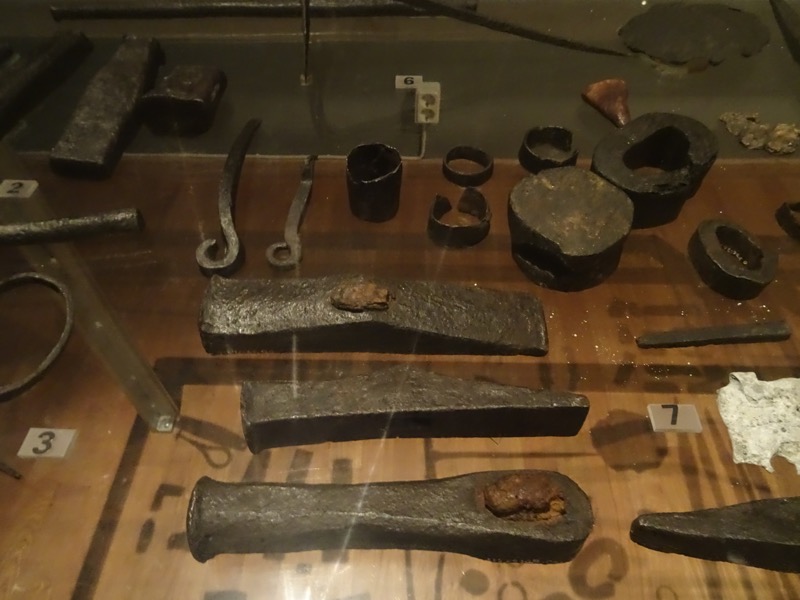
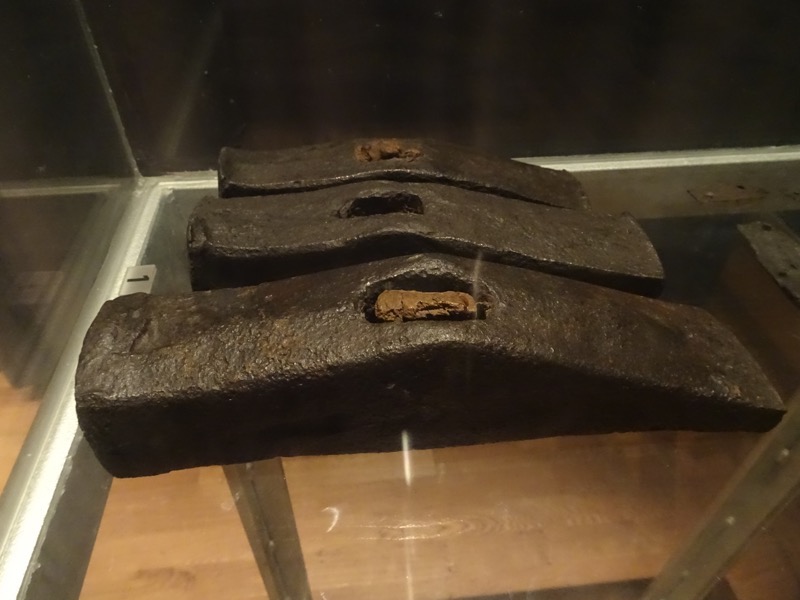
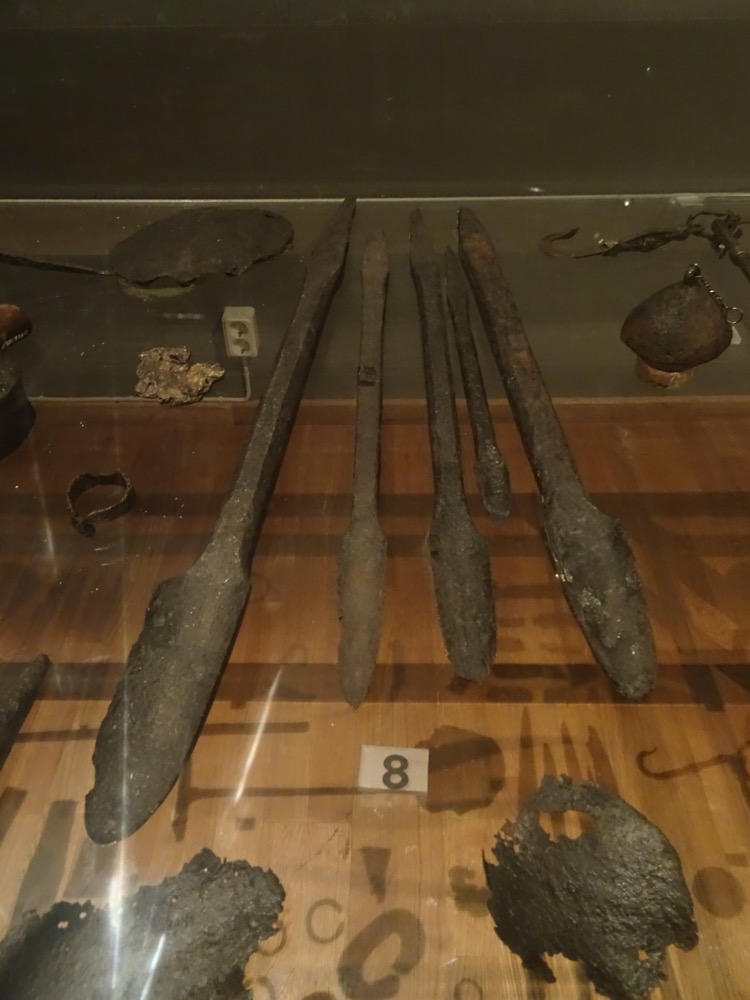
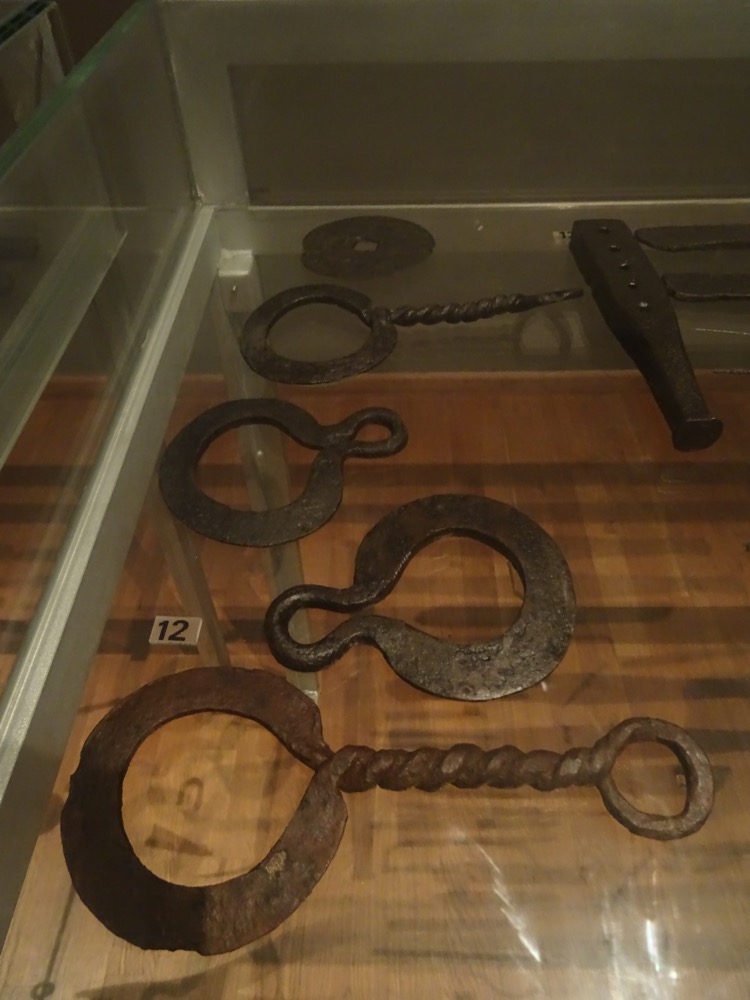
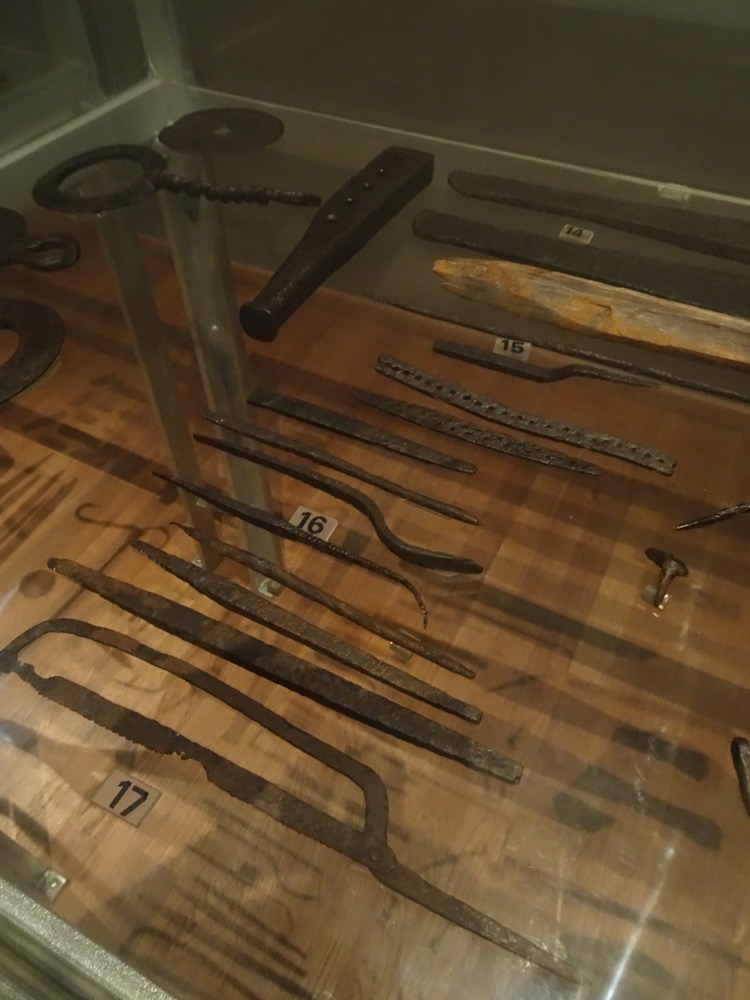
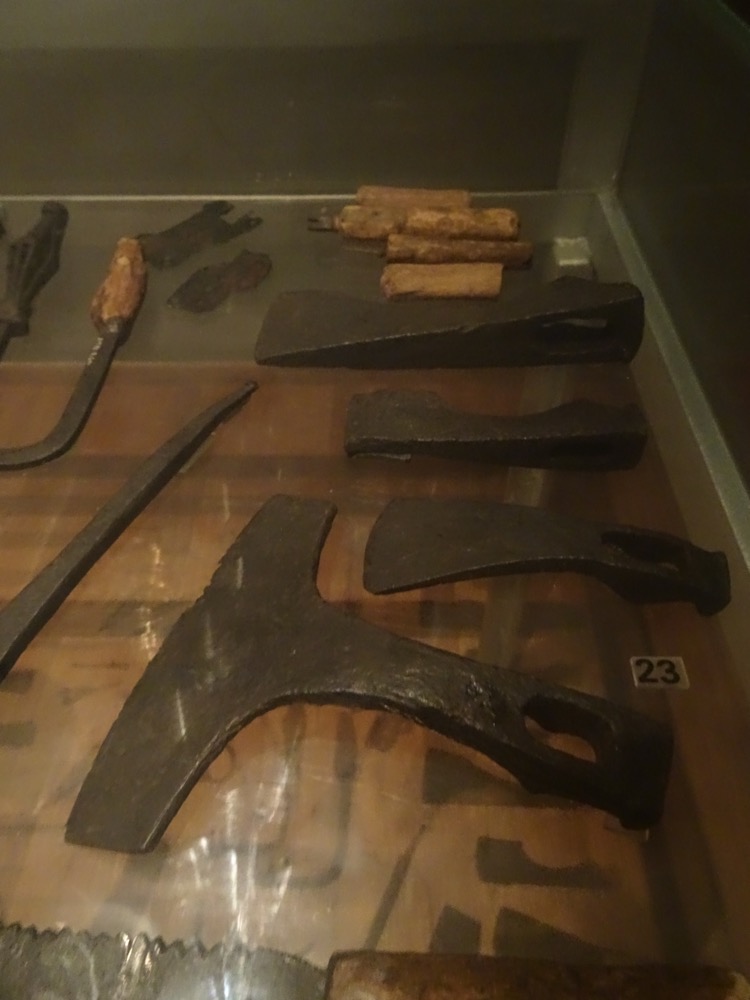 Silver brooch with relief ornamentation, Skane, Rinkaby.
Silver brooch with relief ornamentation, Skane, Rinkaby.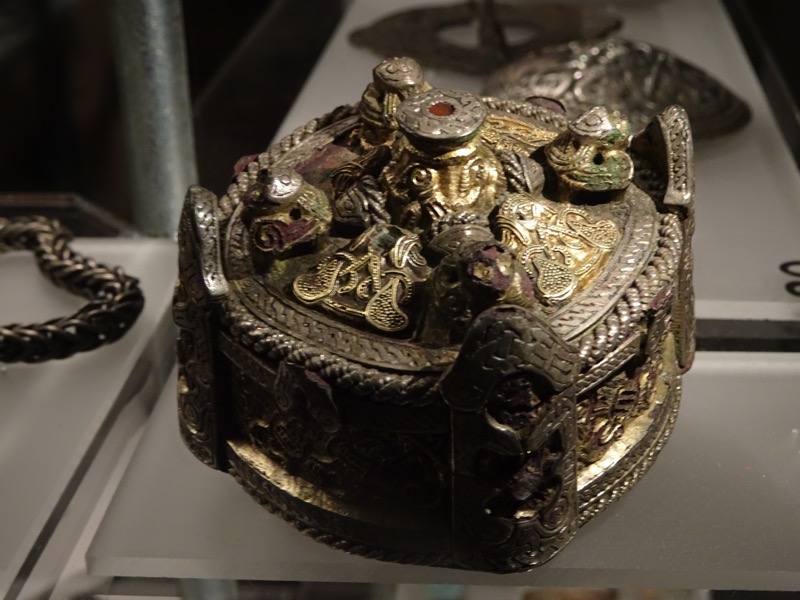
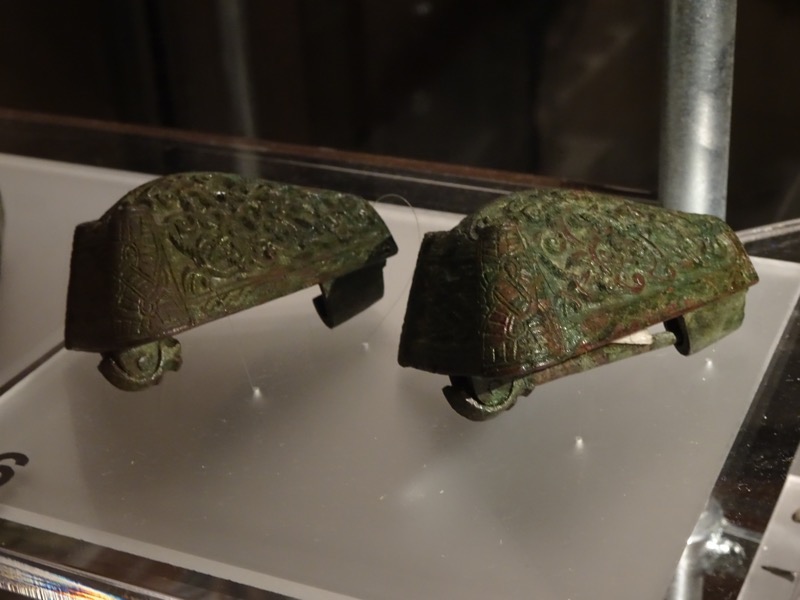 Decorative bronze chains, Birka c.800AD
Decorative bronze chains, Birka c.800AD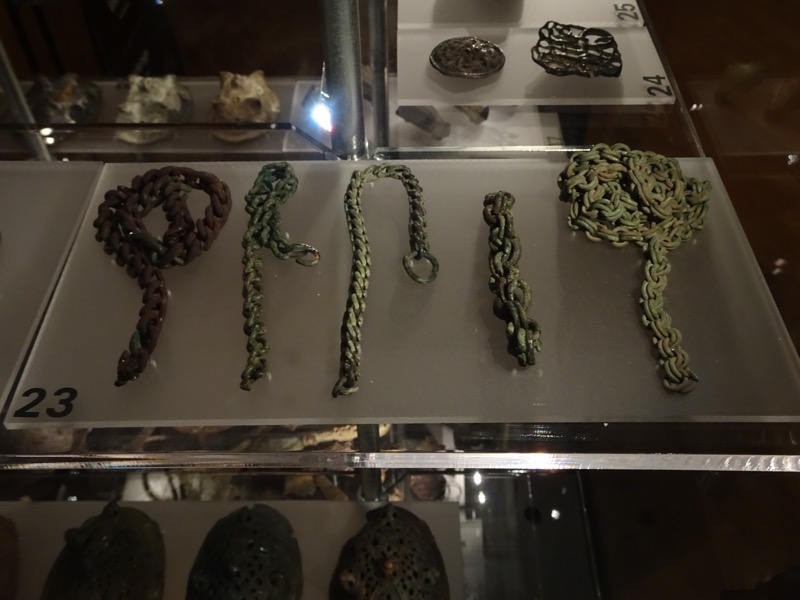 Women’s decorative dress brooches – approximately 12-15cm in length, bronze.
Women’s decorative dress brooches – approximately 12-15cm in length, bronze.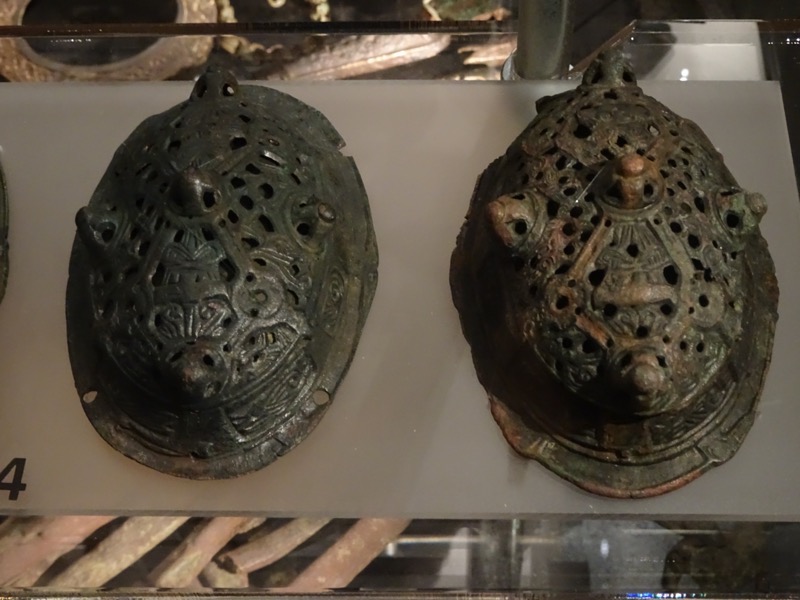
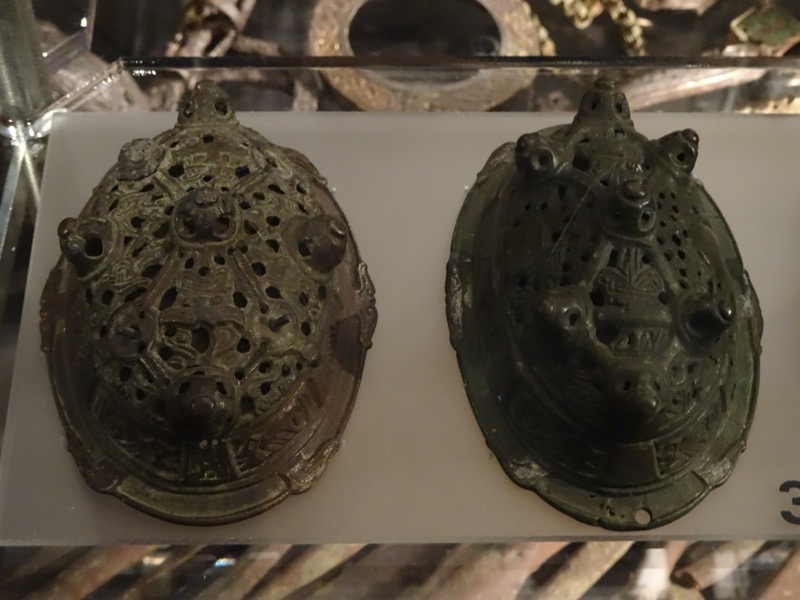
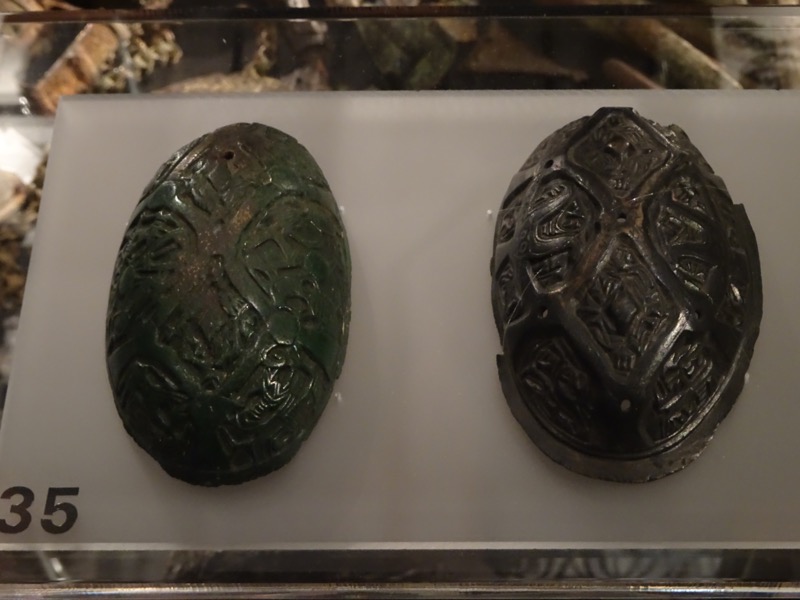
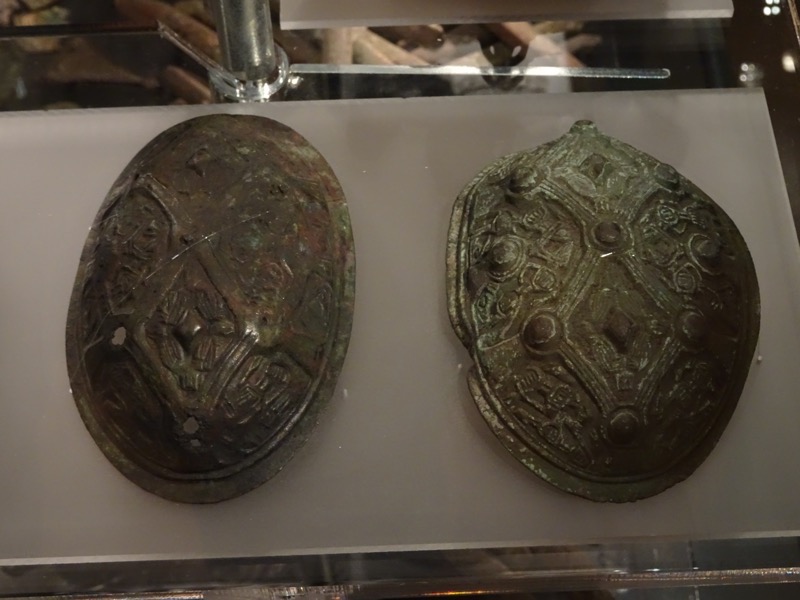
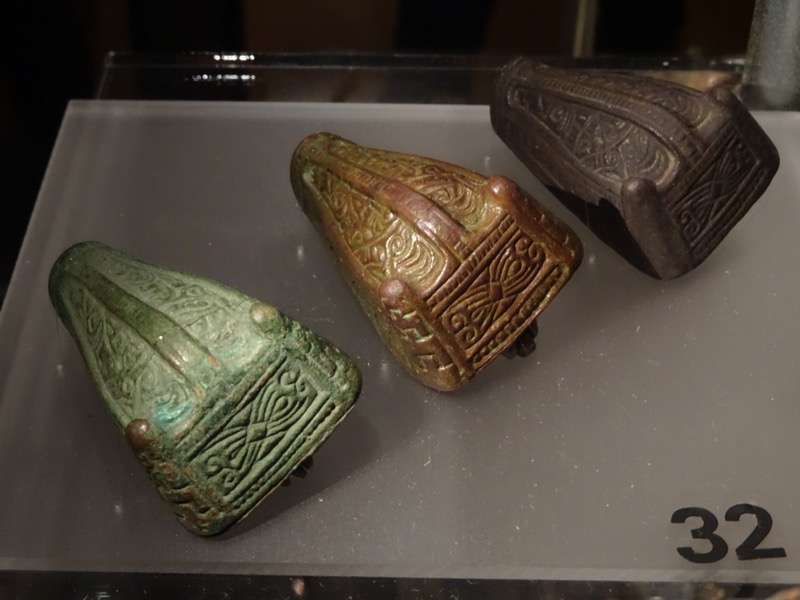
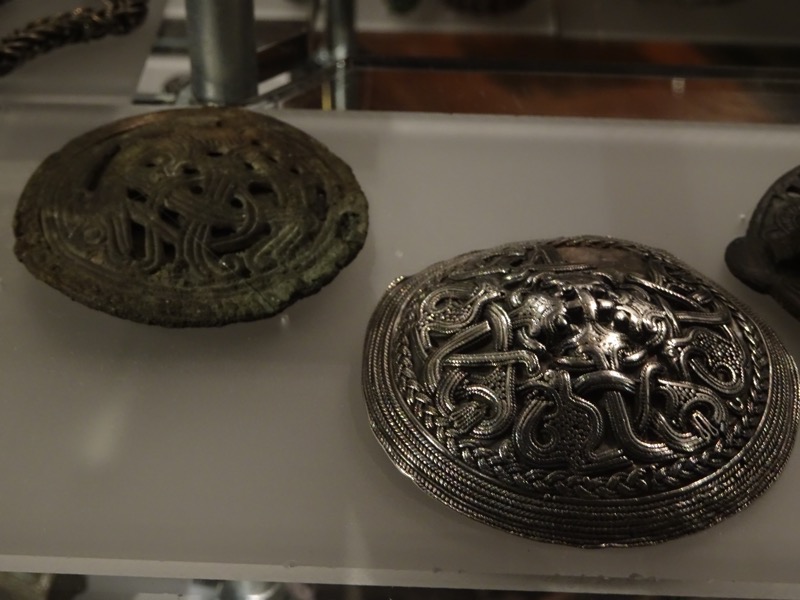
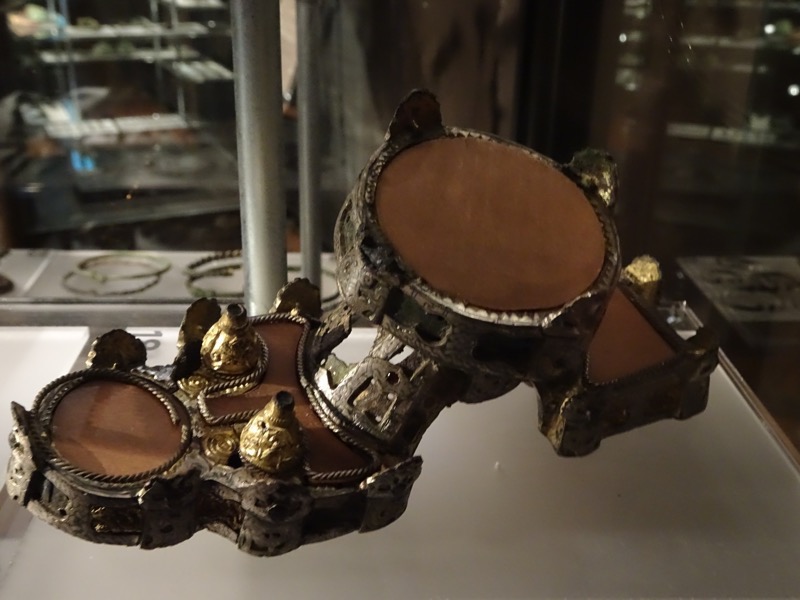
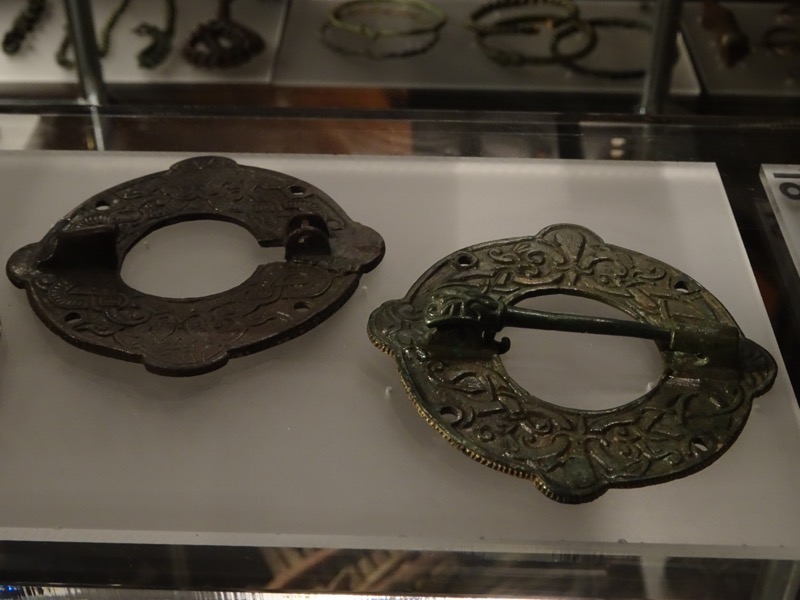
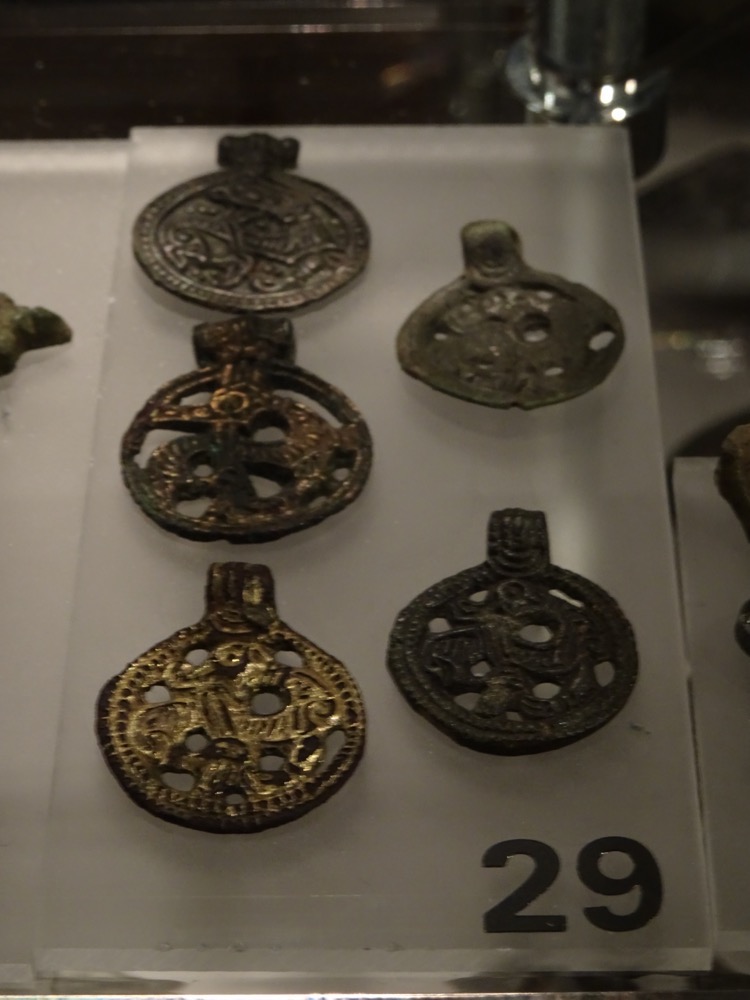
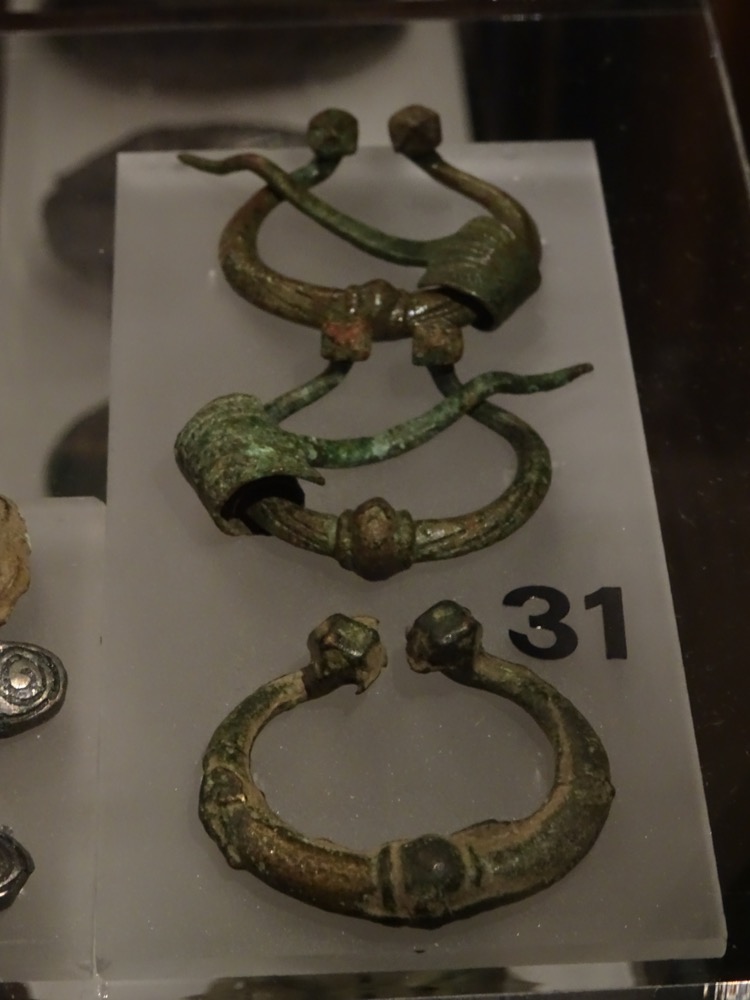
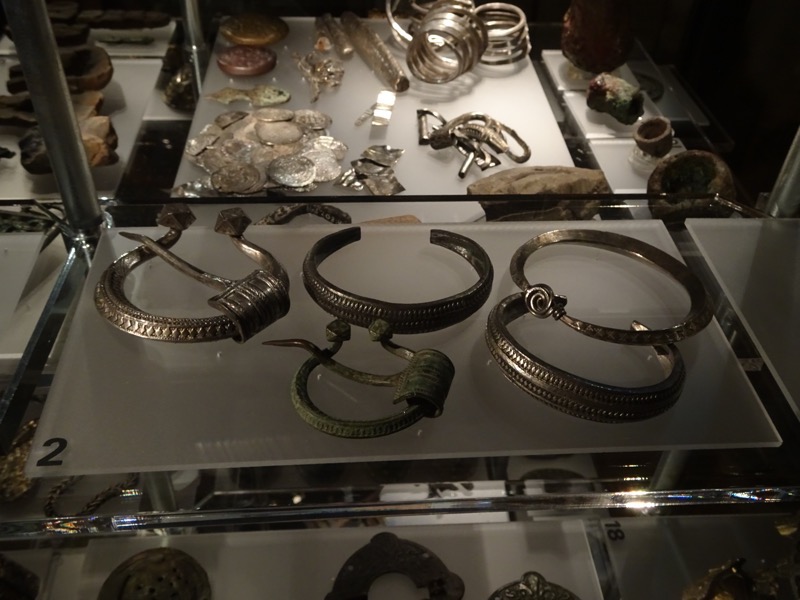
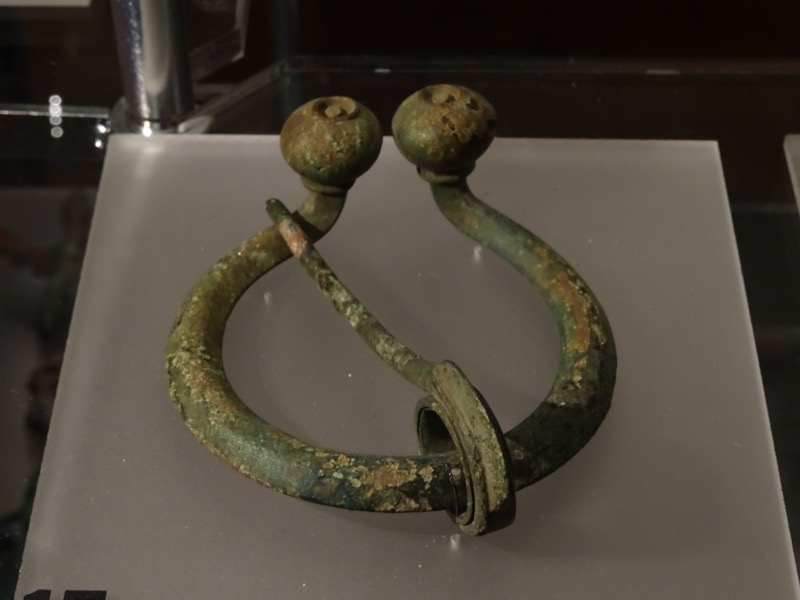
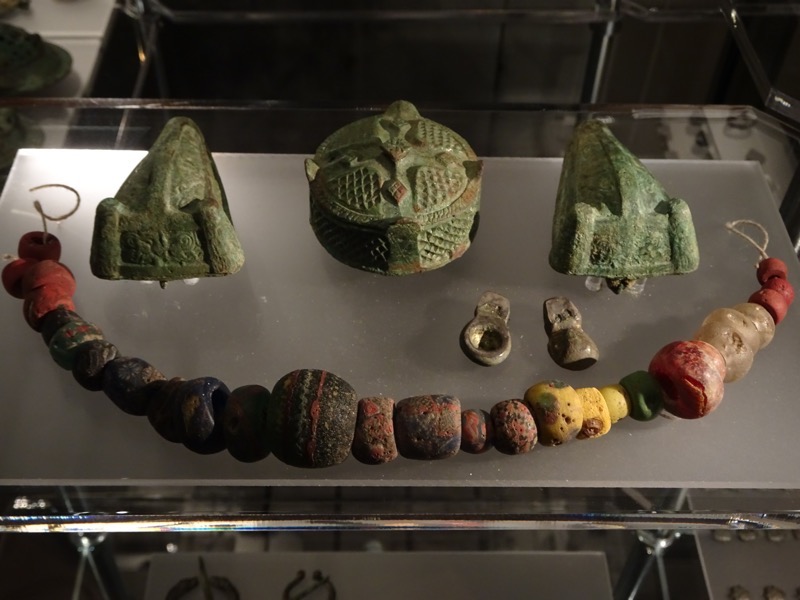
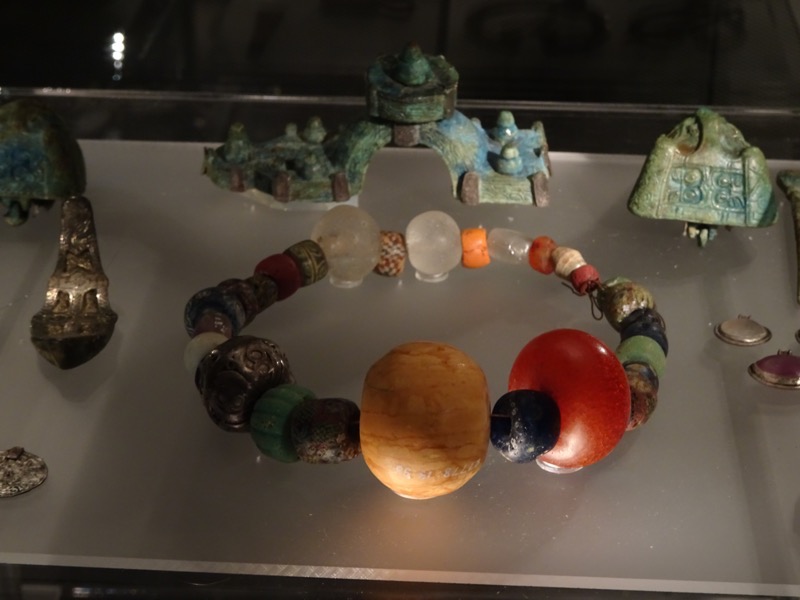
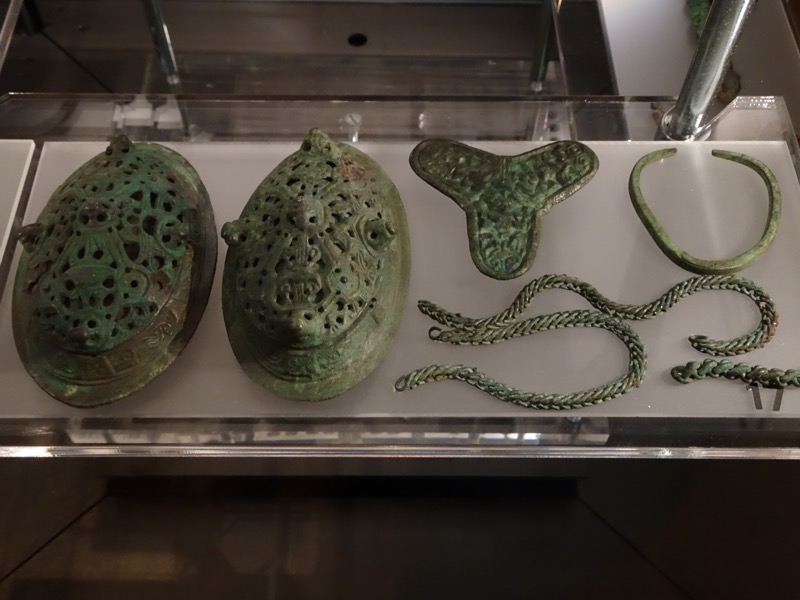
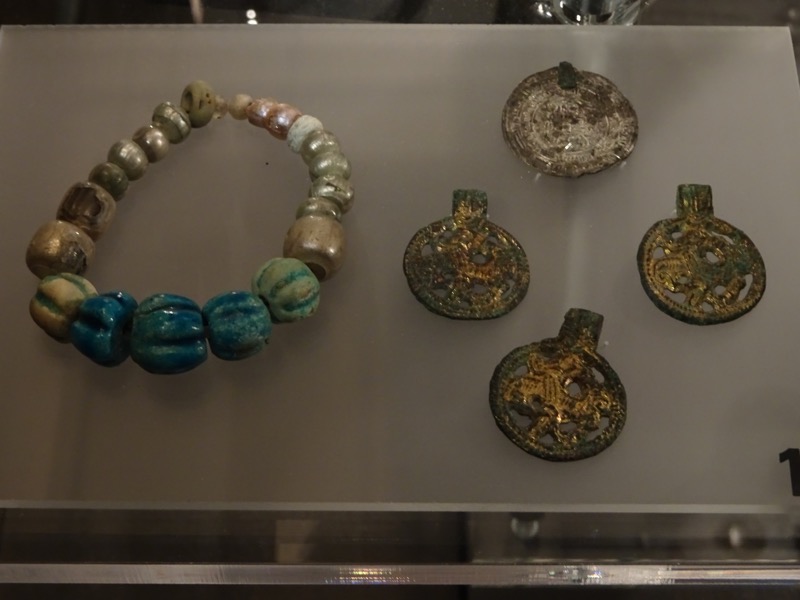
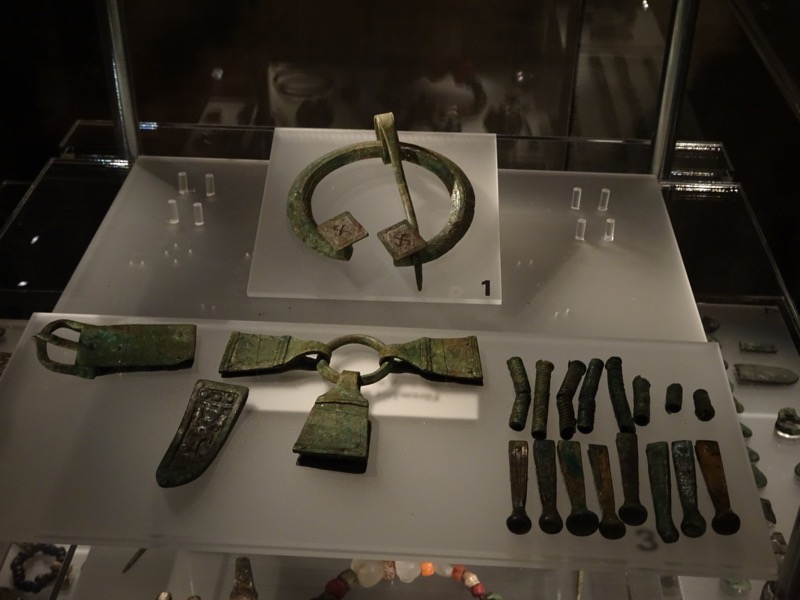 Bronze hook keys, and chain for a woman’s dress, Gotland, Hemse.
Bronze hook keys, and chain for a woman’s dress, Gotland, Hemse.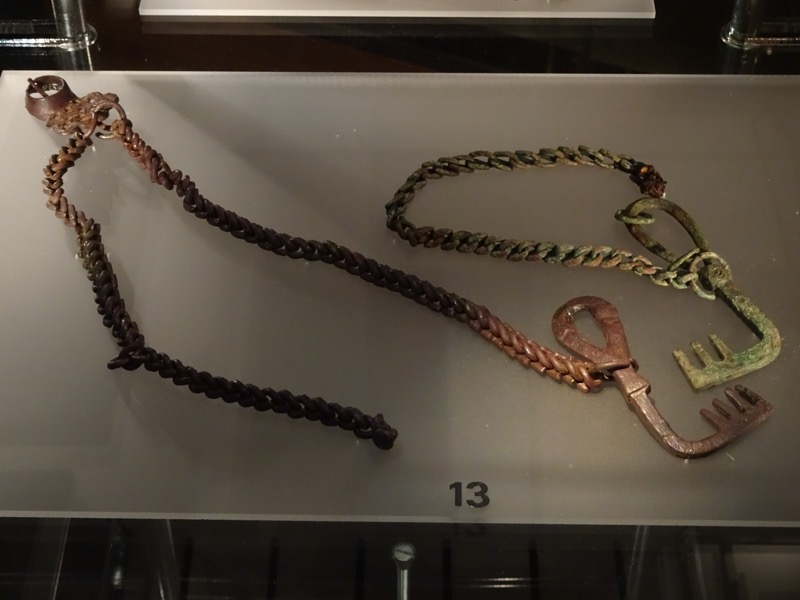
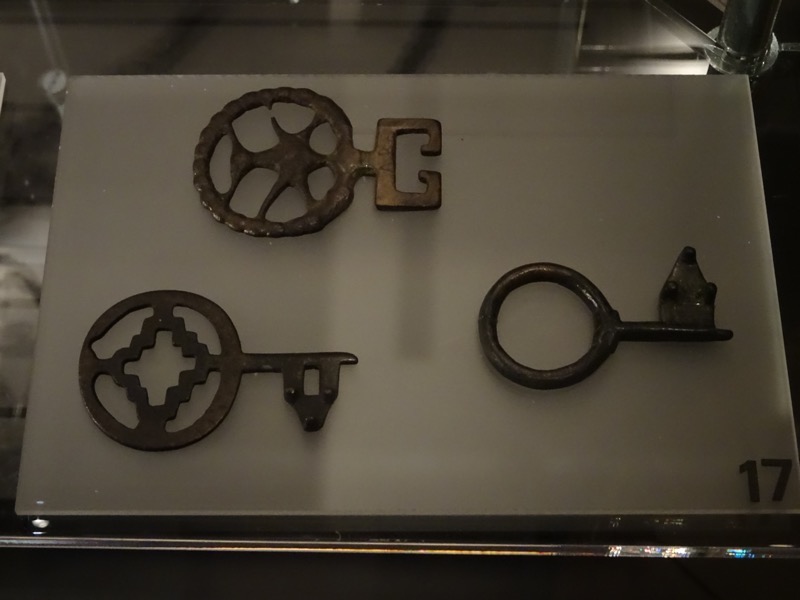 Similar women’s dress keys, much larger than expected. Key in bottom right, approx 10-11cm.
Similar women’s dress keys, much larger than expected. Key in bottom right, approx 10-11cm.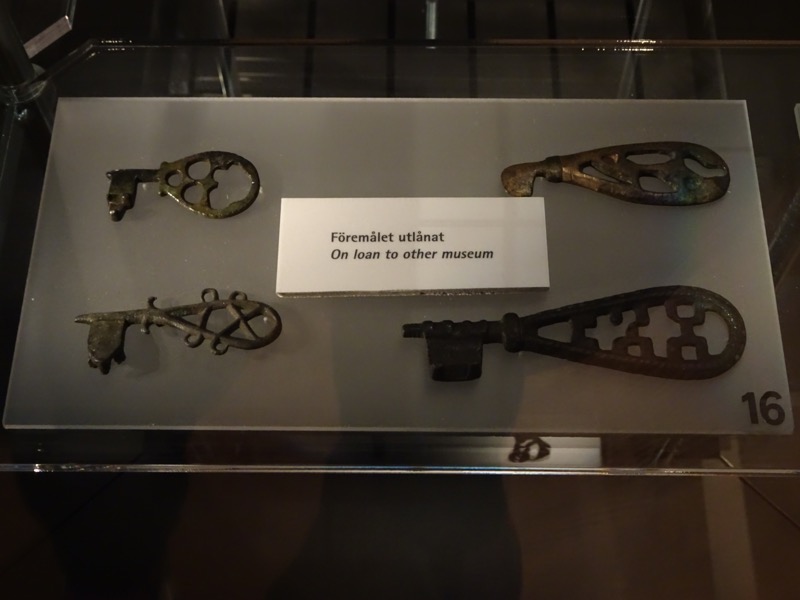
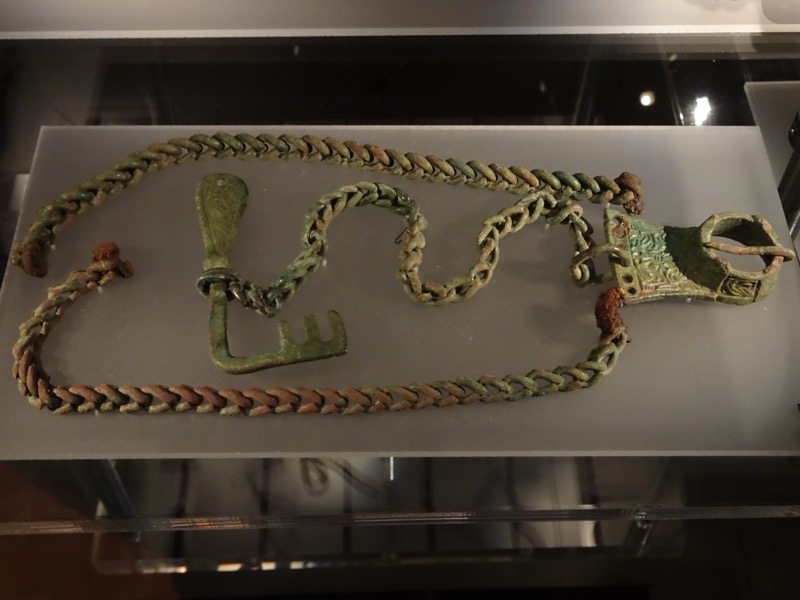
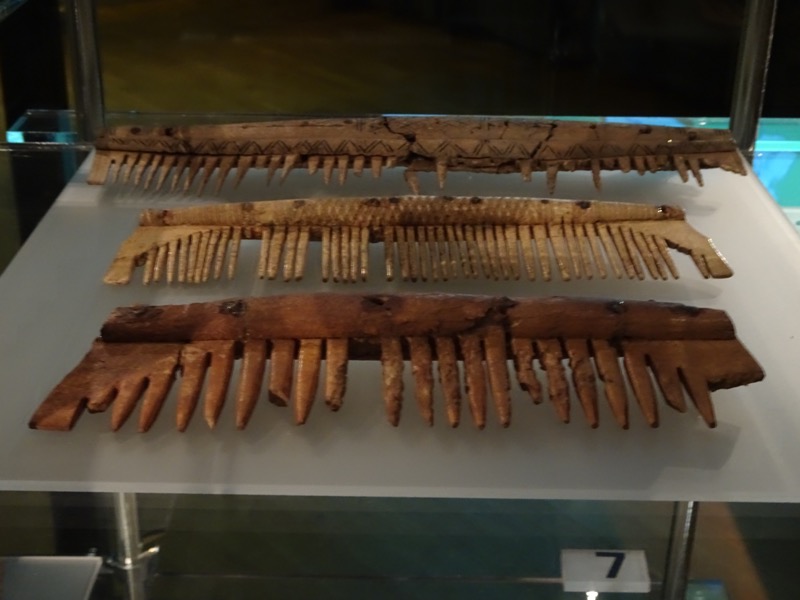 Reconstruction of viking men’s clothing..
Reconstruction of viking men’s clothing..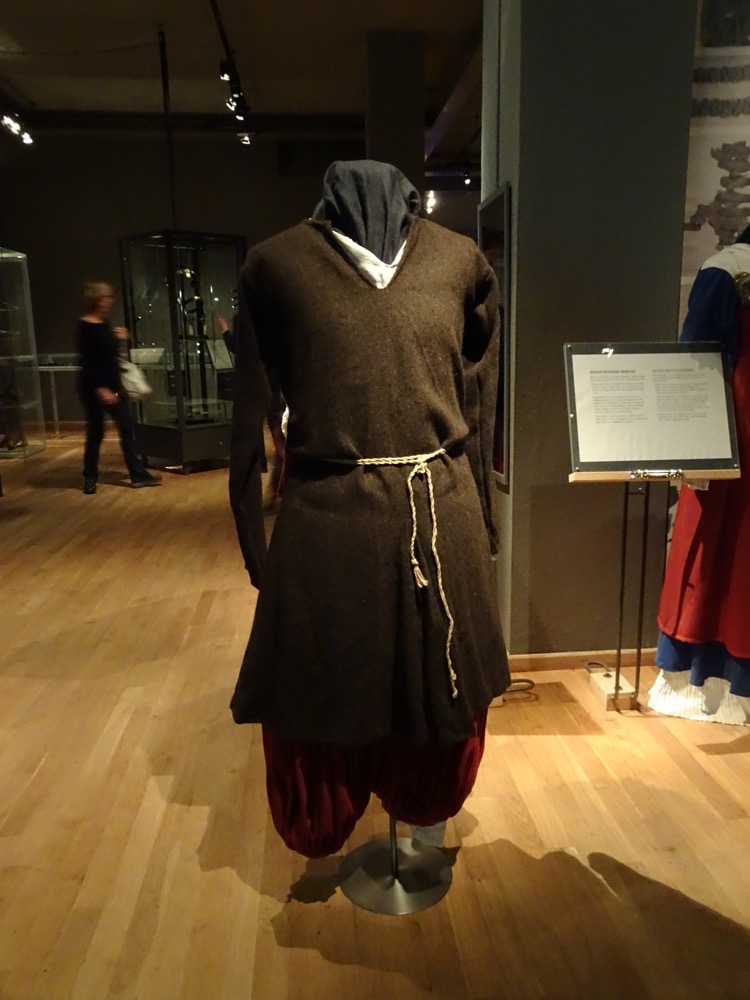 Reconstruction of women’s clothing…
Reconstruction of women’s clothing…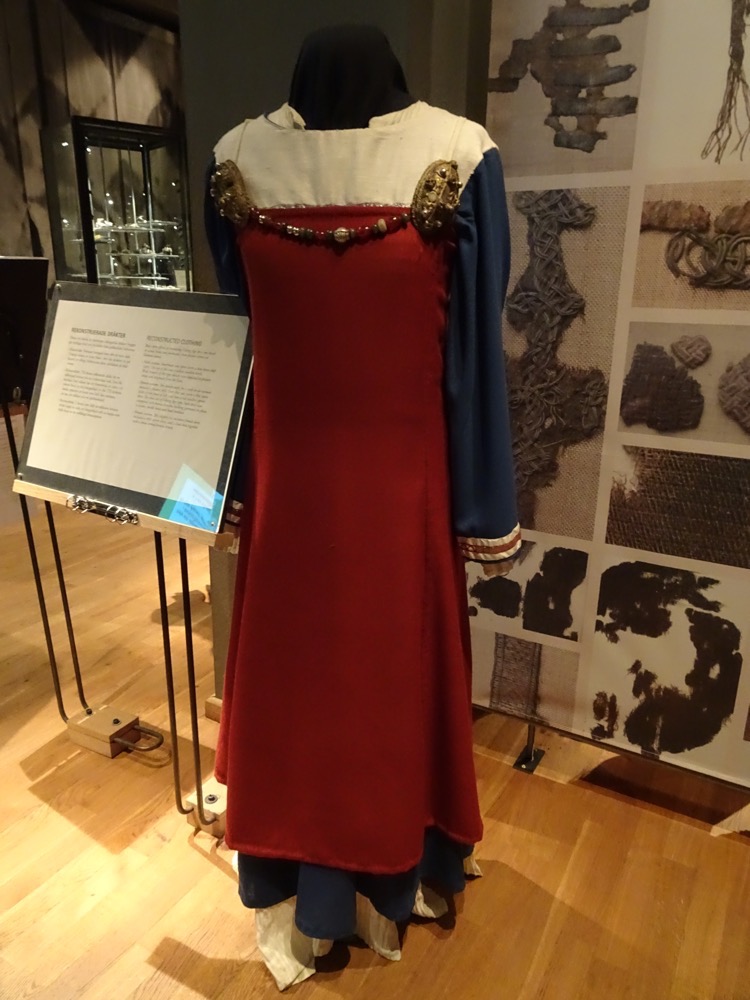

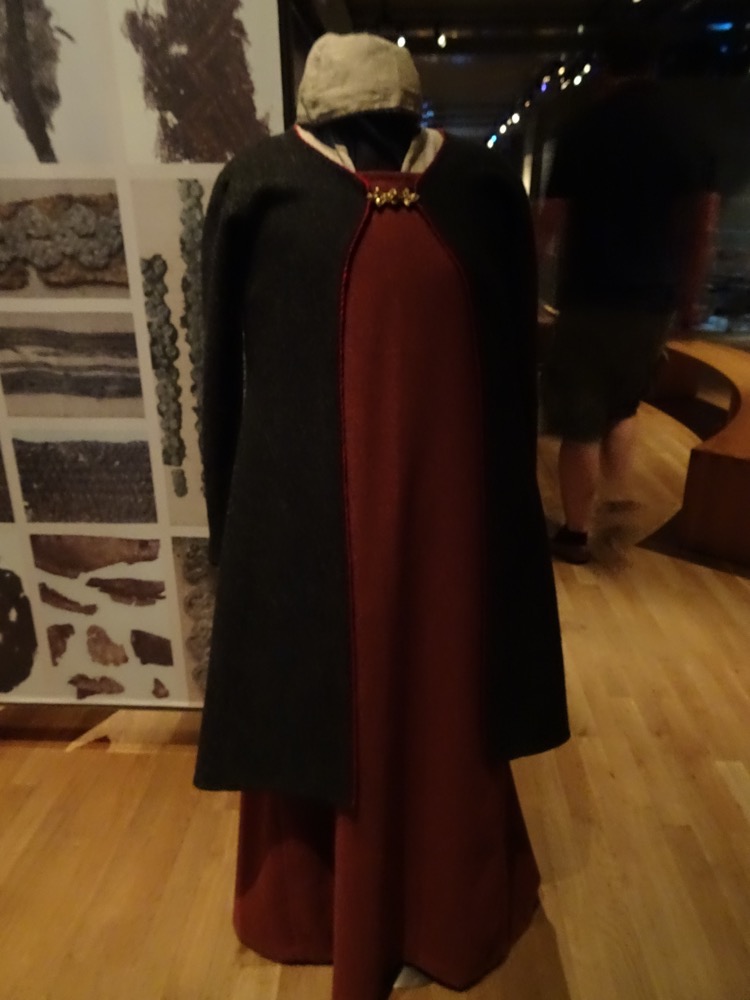
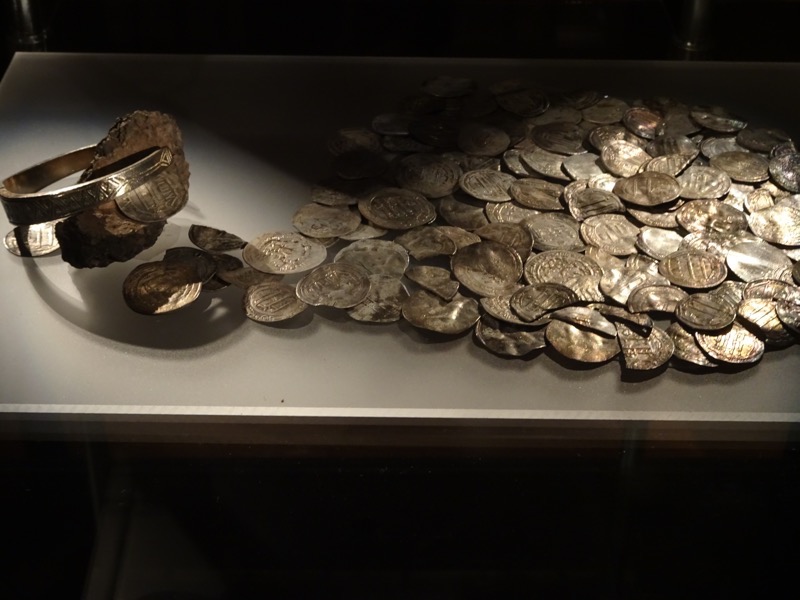 The district of Dalarna and adjacent provinces to the north were centres for the important iron trade, with routes going past lake Siljan. Many valuable iron objects are evident among grave finds from this region, including Solleron.
The district of Dalarna and adjacent provinces to the north were centres for the important iron trade, with routes going past lake Siljan. Many valuable iron objects are evident among grave finds from this region, including Solleron.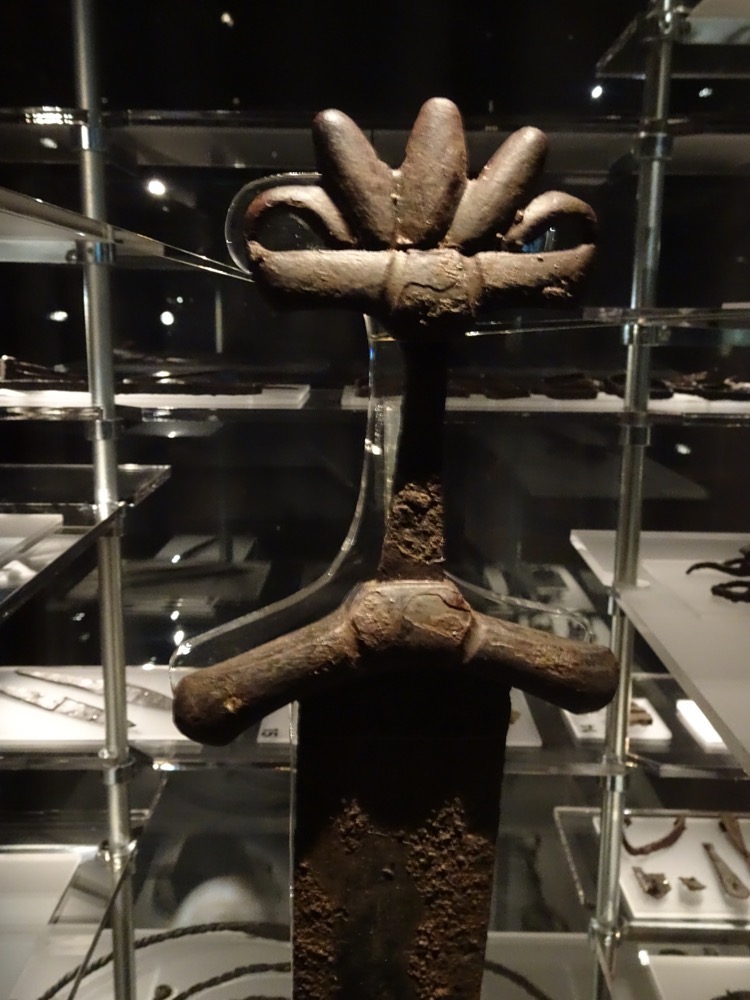
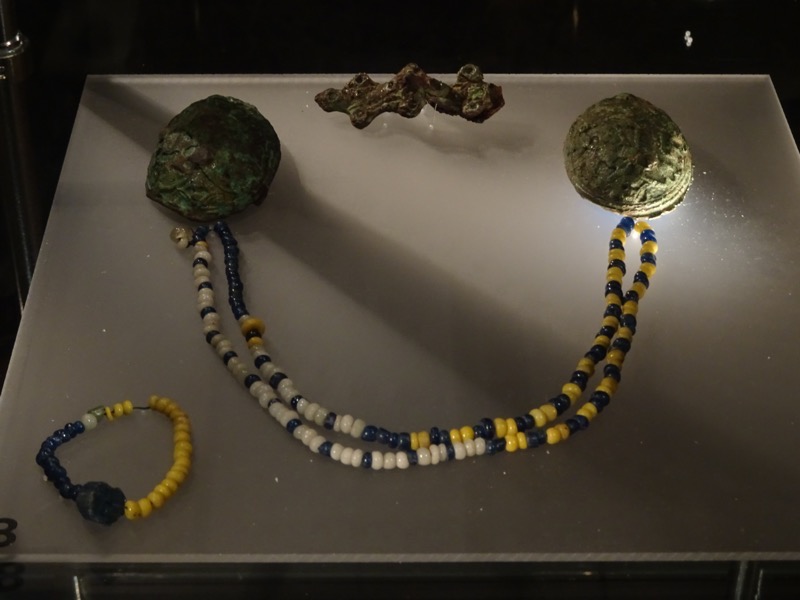 Children’s bell – approximately 2.5 – 3.0cm in diameter. Many other examples roughly 2cm in size.
Children’s bell – approximately 2.5 – 3.0cm in diameter. Many other examples roughly 2cm in size.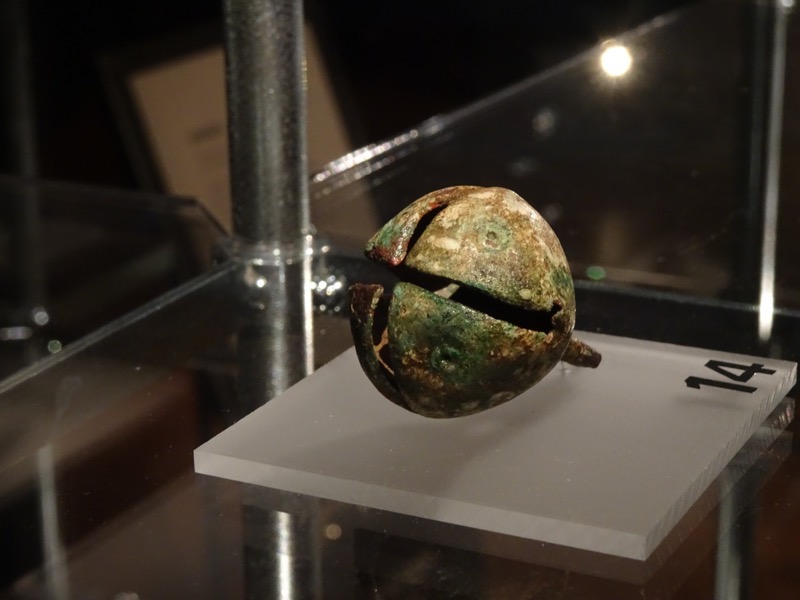 The Ruler of Oland: A burial grave of regal splendour was found in Kopingsvik on the Island of Oland. She was buried with a staff made of iron and bronze, indicating her religious position as an Old Norse female cult leader, called a Volur, meaning ‘staff carrier’. She would have been the leader of a very wealthy clan on Oland, perhaps the most powerful on the island.
The Ruler of Oland: A burial grave of regal splendour was found in Kopingsvik on the Island of Oland. She was buried with a staff made of iron and bronze, indicating her religious position as an Old Norse female cult leader, called a Volur, meaning ‘staff carrier’. She would have been the leader of a very wealthy clan on Oland, perhaps the most powerful on the island.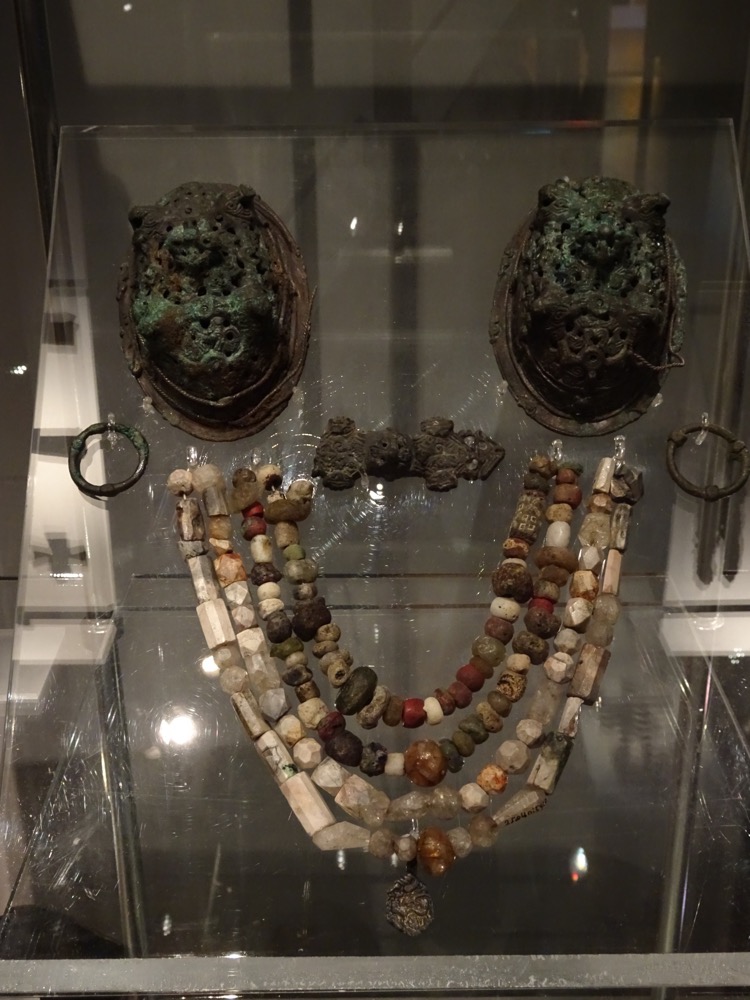
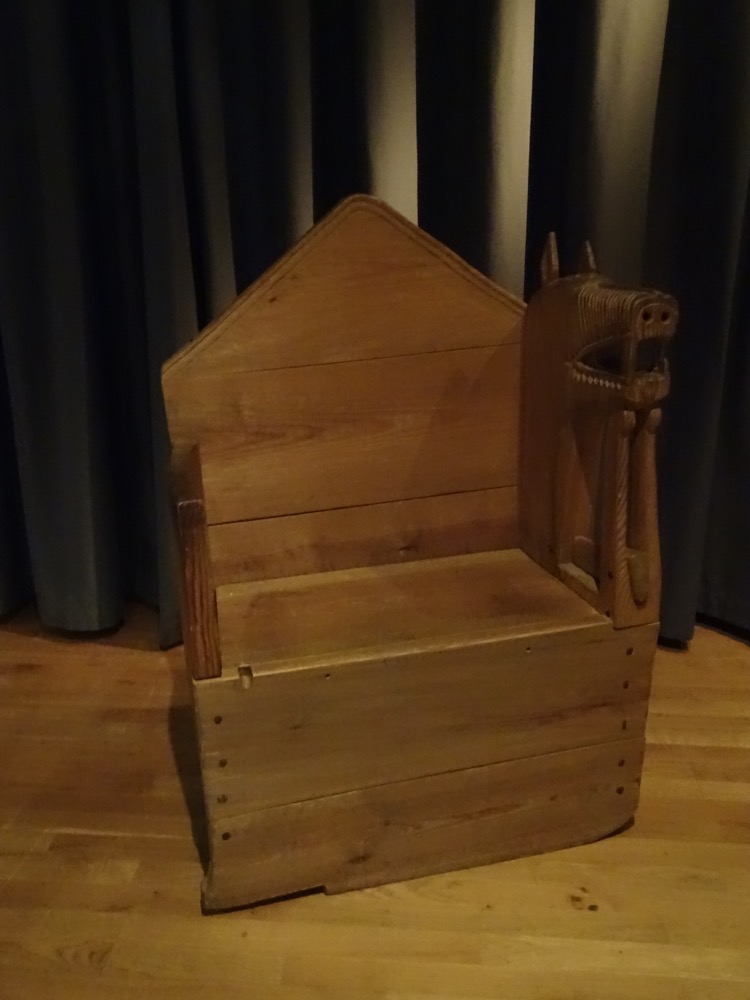 Reconstruced ‘throne’ of the Ruler of Oland.
Reconstruced ‘throne’ of the Ruler of Oland.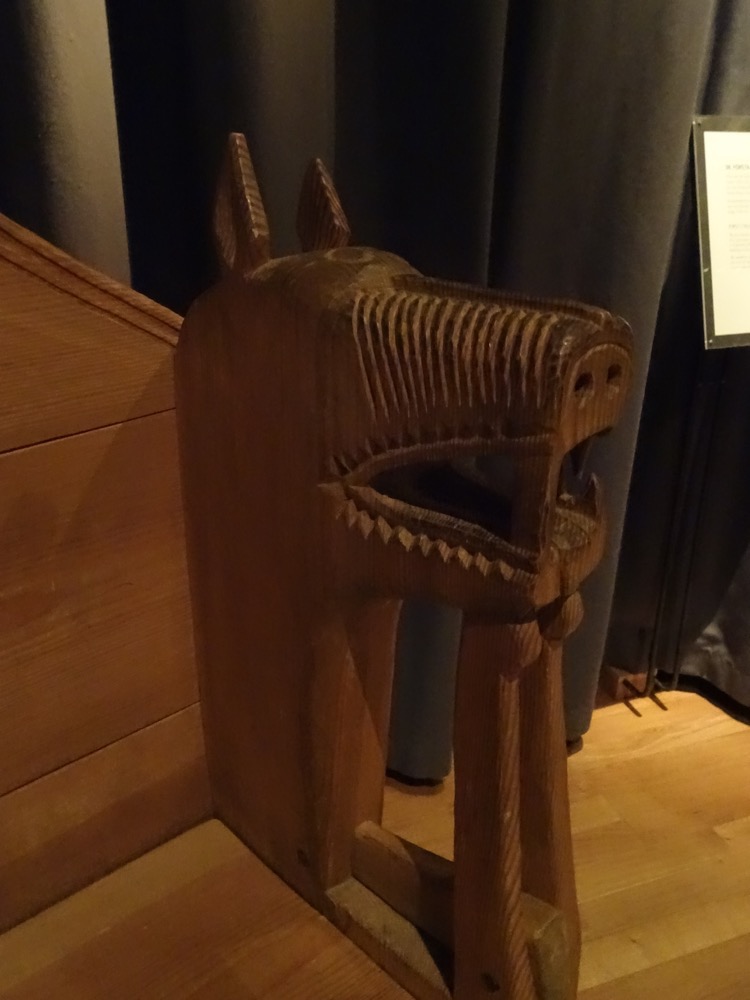
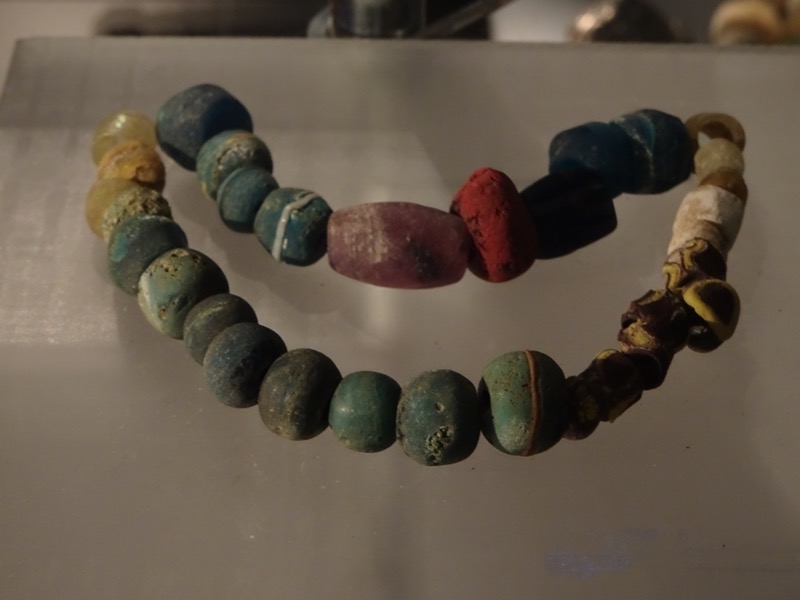
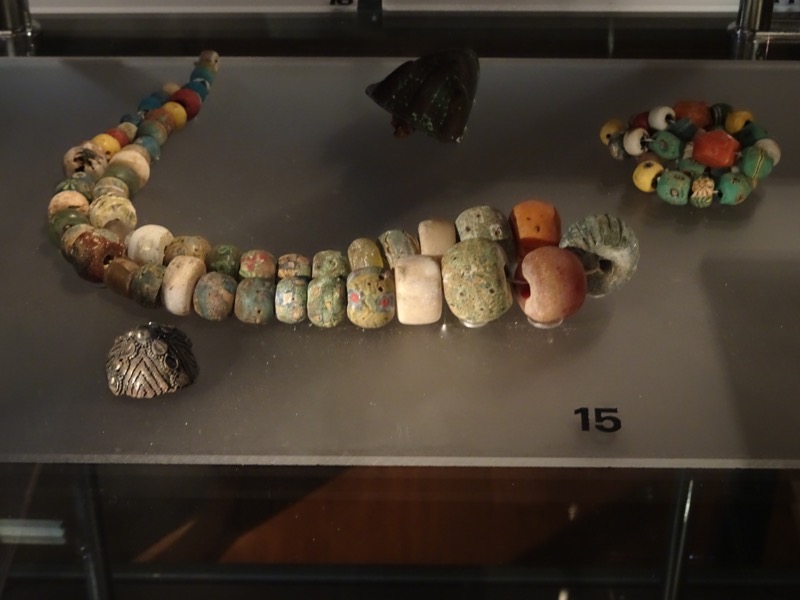
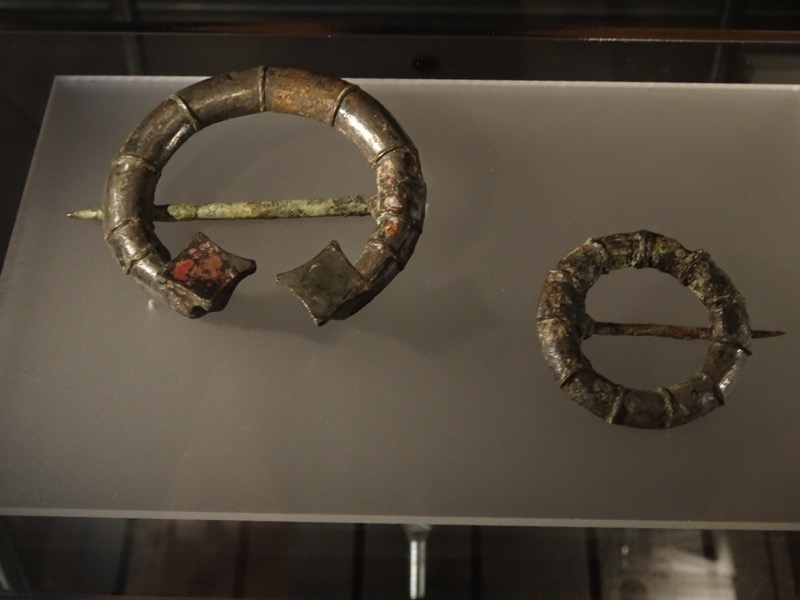
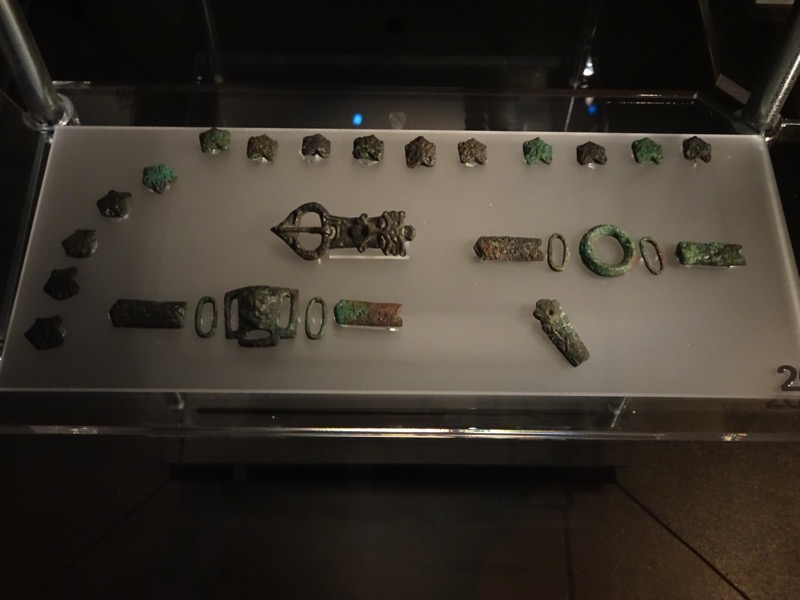
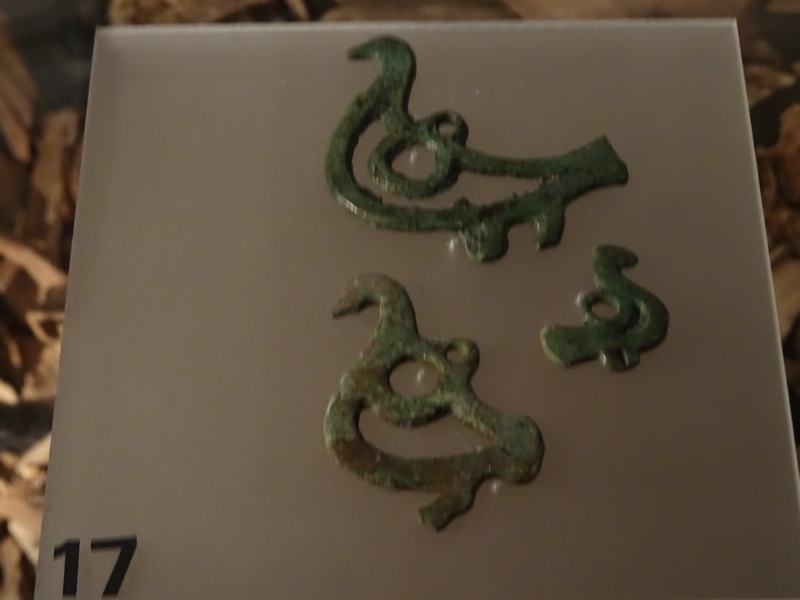
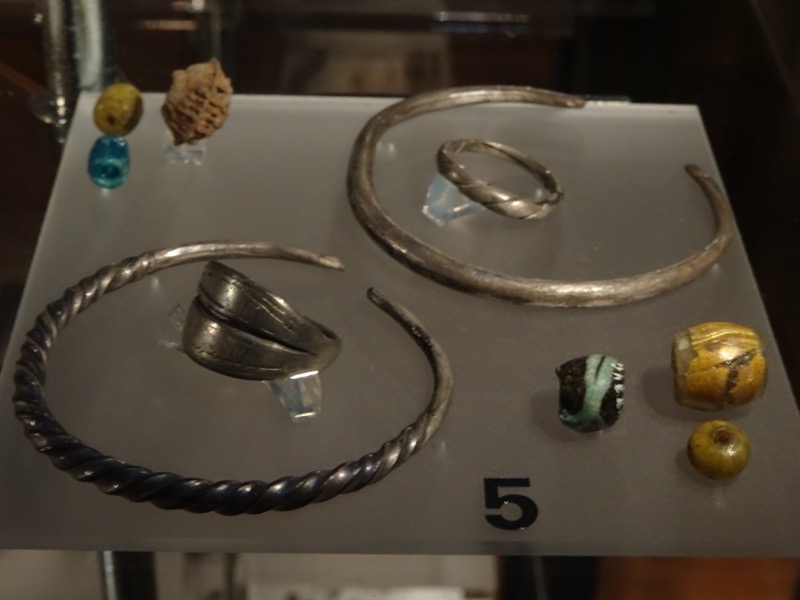
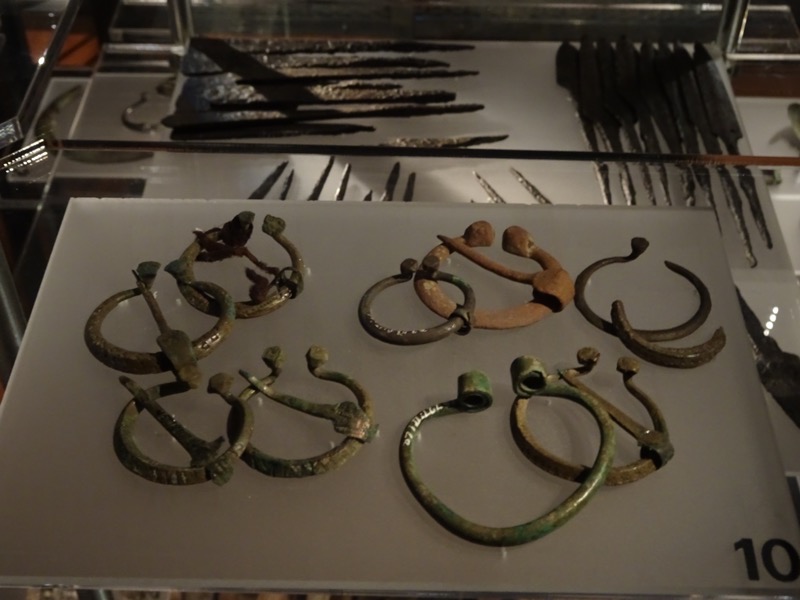 In eastern Scandinavia, the spread of Christianity varied from district to district. This display is of finds from the Garda cemetery on Gotland Island. Christian graves did not generally reveal as many artefacts as a pagan Viking grave.
In eastern Scandinavia, the spread of Christianity varied from district to district. This display is of finds from the Garda cemetery on Gotland Island. Christian graves did not generally reveal as many artefacts as a pagan Viking grave.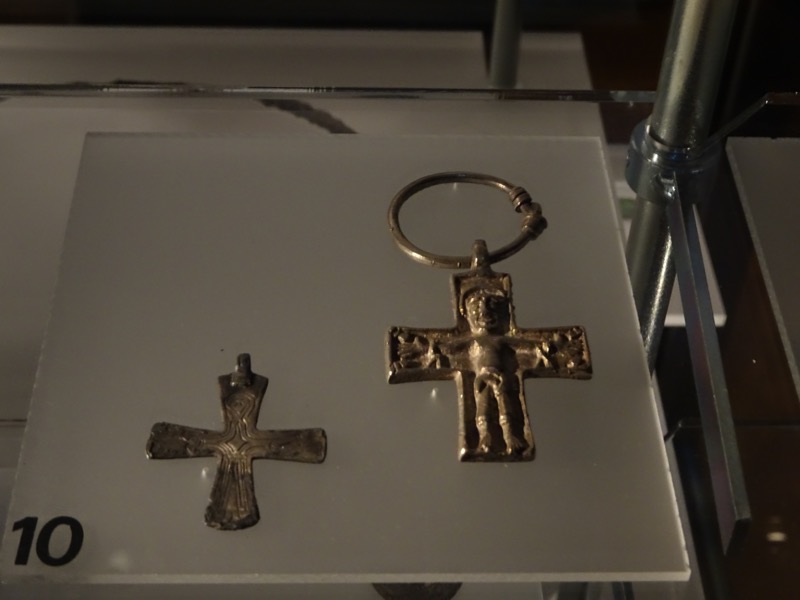 Displaced items: This crozier was found on Helgo Island – it is from Ireland and contains a Buddha figurine from India. Additionally, in the same Viking long hall on Helgo Island, a ladle from the Eastern Mediterranean was found as well… Archeologist have determined that the Buddha is 6thC Indian in origin, coiled in the top of a crozier that was made in Ireland c800AD. It may be related to the Coptic Christian Church and the objects may have arrived on Helgo Island as exclusive aristocratic gifts or pillaged goods.
Displaced items: This crozier was found on Helgo Island – it is from Ireland and contains a Buddha figurine from India. Additionally, in the same Viking long hall on Helgo Island, a ladle from the Eastern Mediterranean was found as well… Archeologist have determined that the Buddha is 6thC Indian in origin, coiled in the top of a crozier that was made in Ireland c800AD. It may be related to the Coptic Christian Church and the objects may have arrived on Helgo Island as exclusive aristocratic gifts or pillaged goods.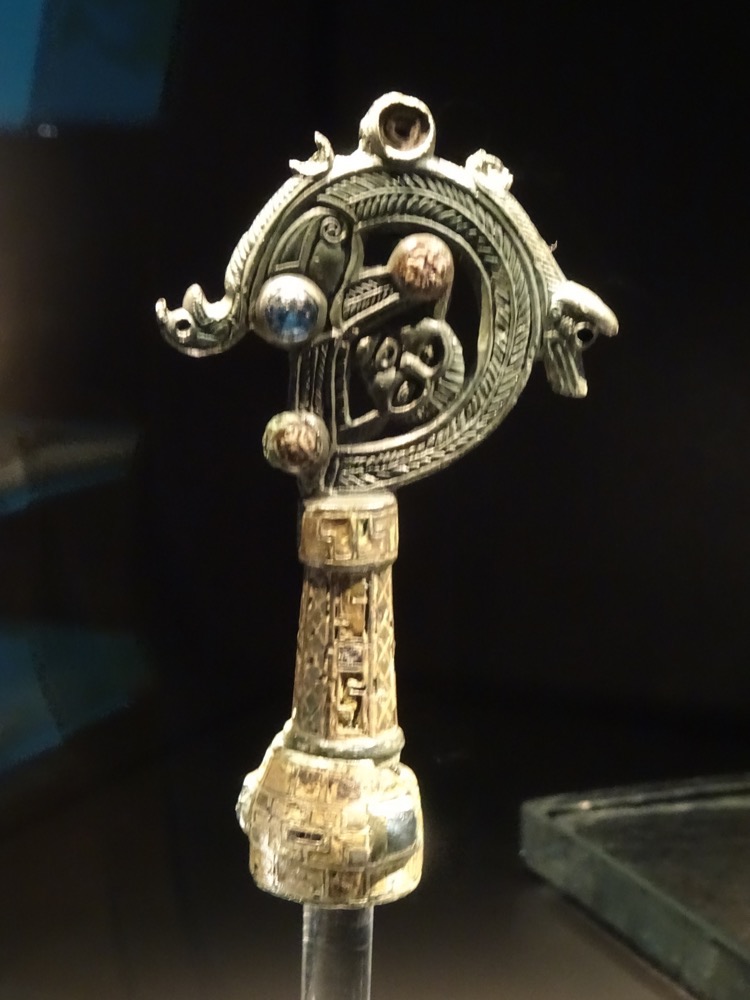 Mediterranean ladle found in a Viking long hall site on Helgo Island.
Mediterranean ladle found in a Viking long hall site on Helgo Island.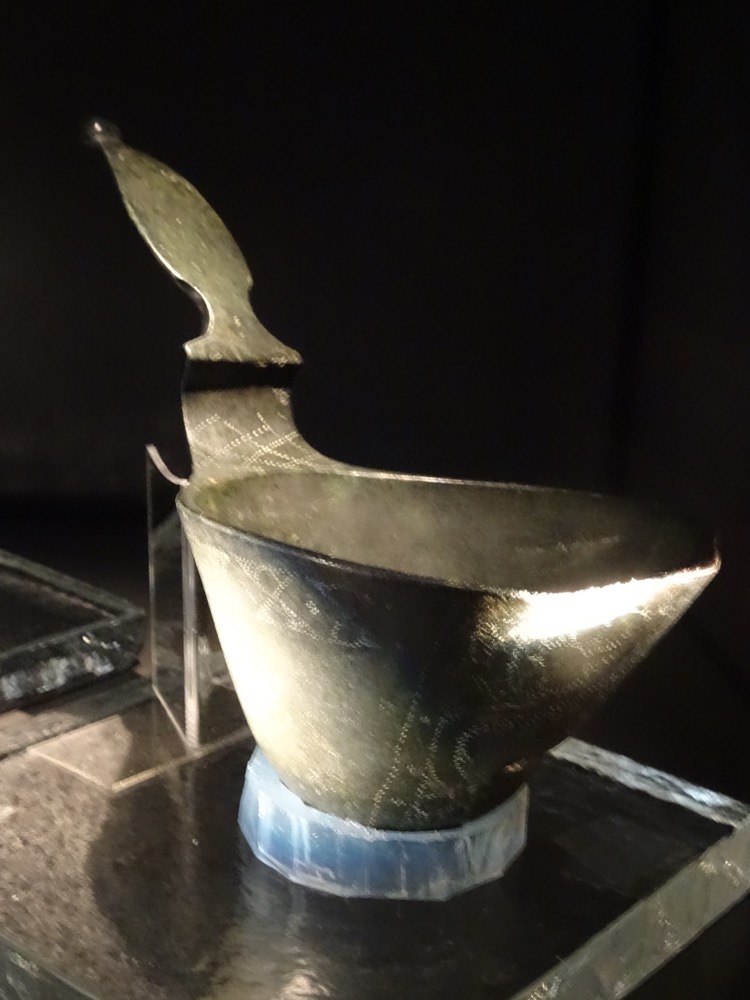
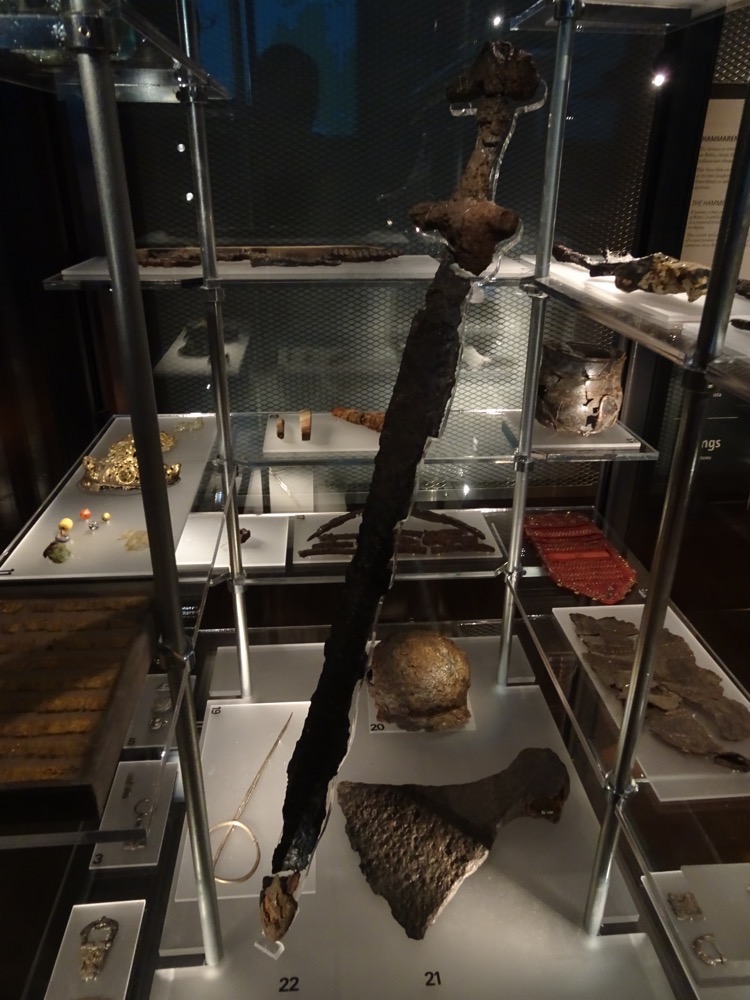
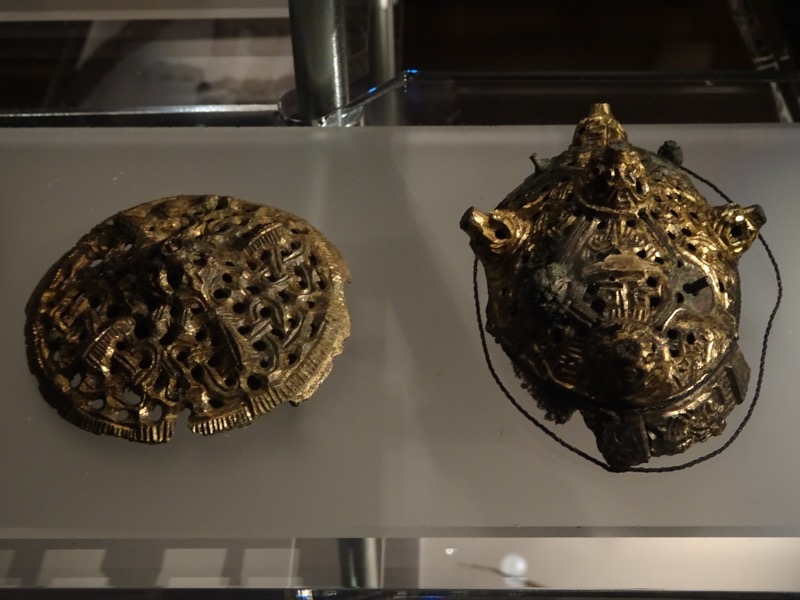 Baptismal font from Norum, Bohuslan province. The image etched on the font depicts Gunnar in the snake pit – a scene from the famed Volsunga Saga; demonstrating that the early Christian church blended heathen myths with Christian precepts. The rune text reads “Sven made me”
Baptismal font from Norum, Bohuslan province. The image etched on the font depicts Gunnar in the snake pit – a scene from the famed Volsunga Saga; demonstrating that the early Christian church blended heathen myths with Christian precepts. The rune text reads “Sven made me”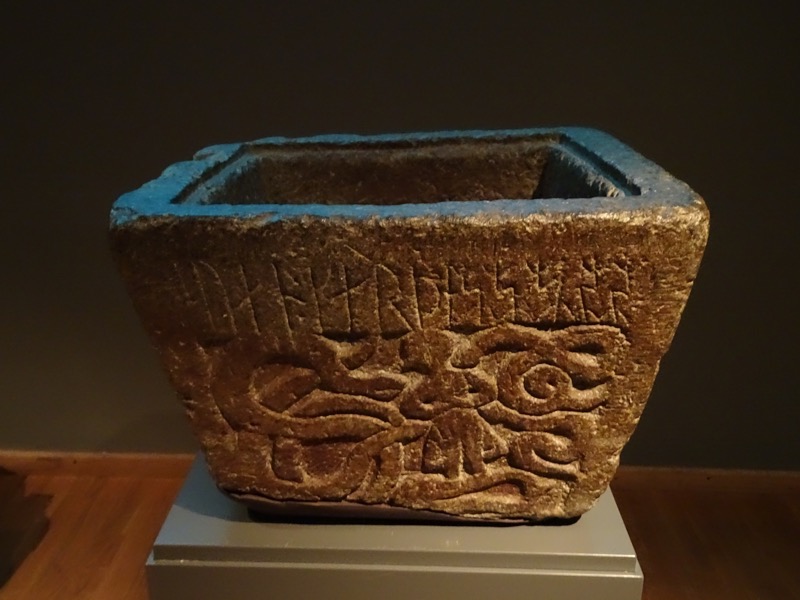
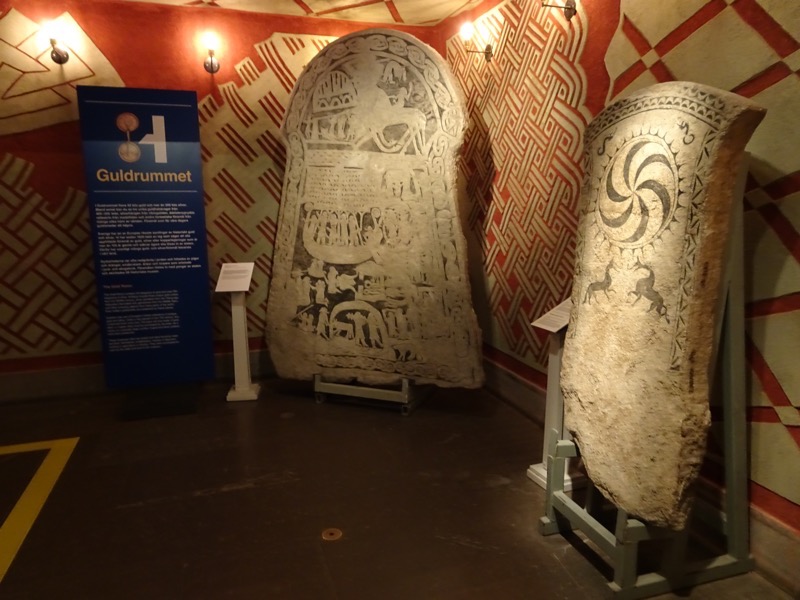
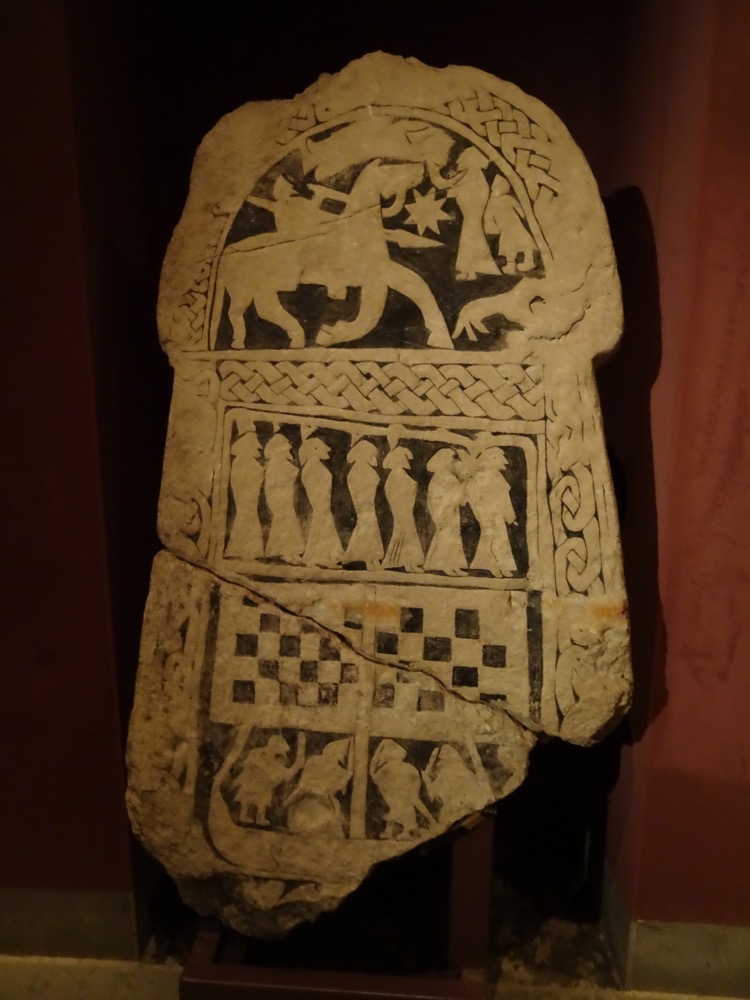
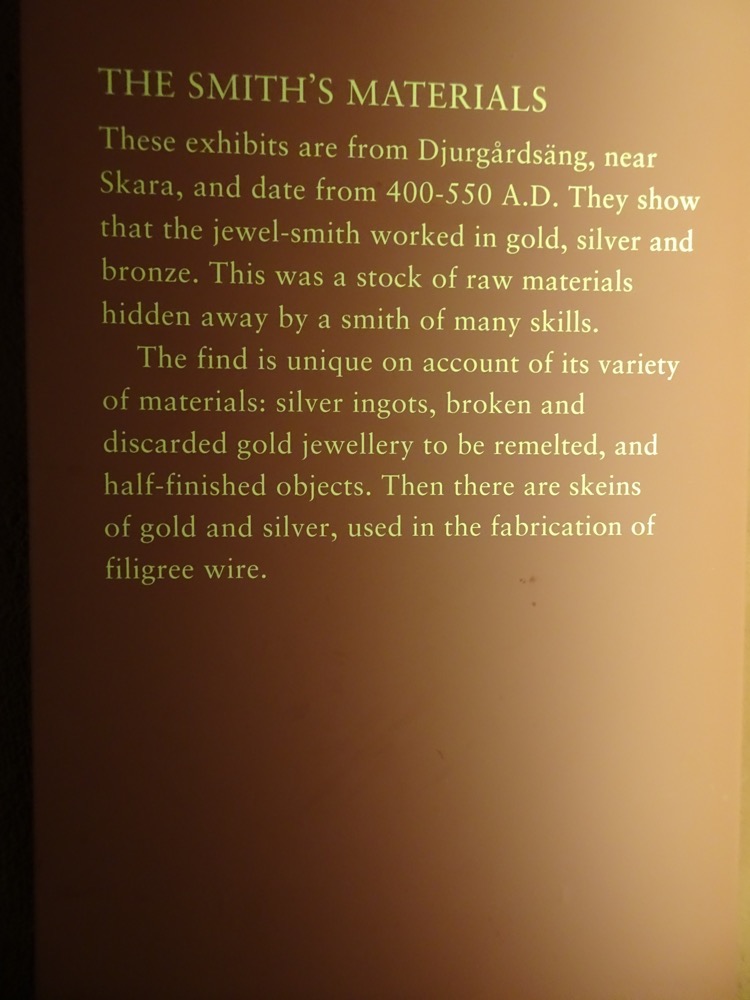
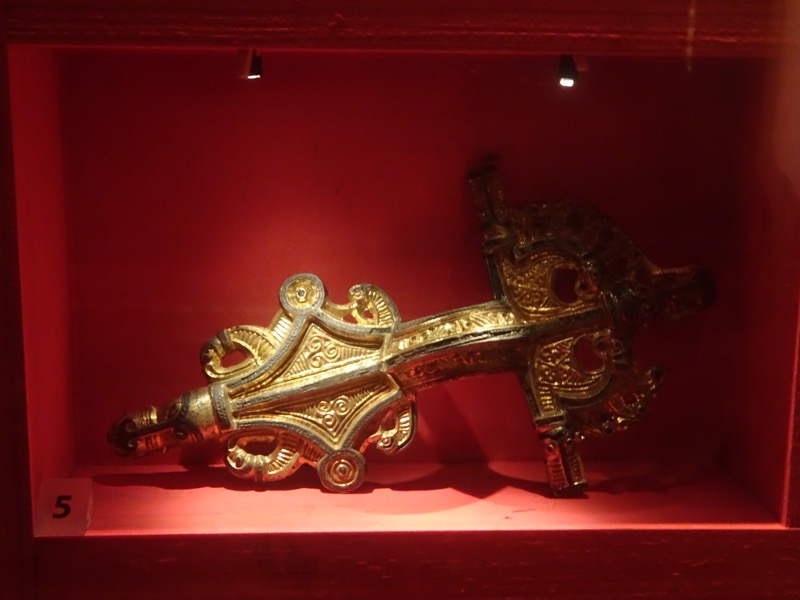
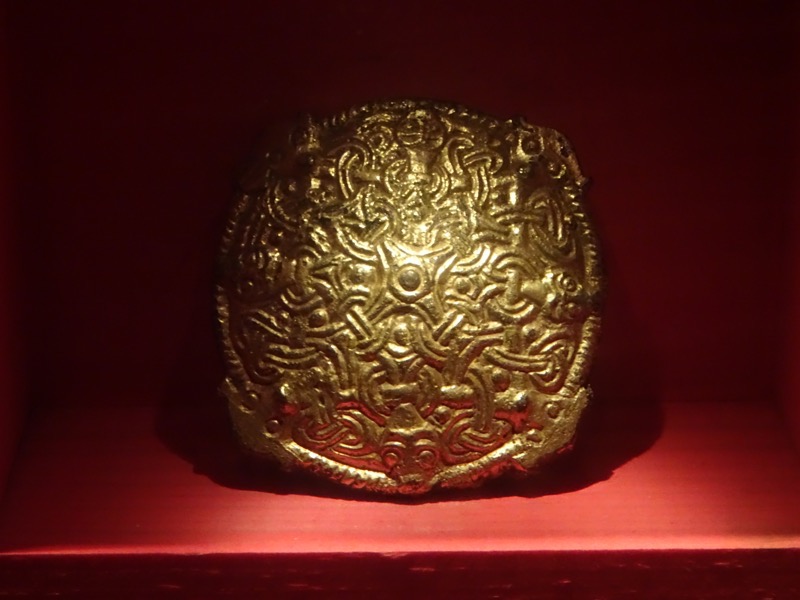
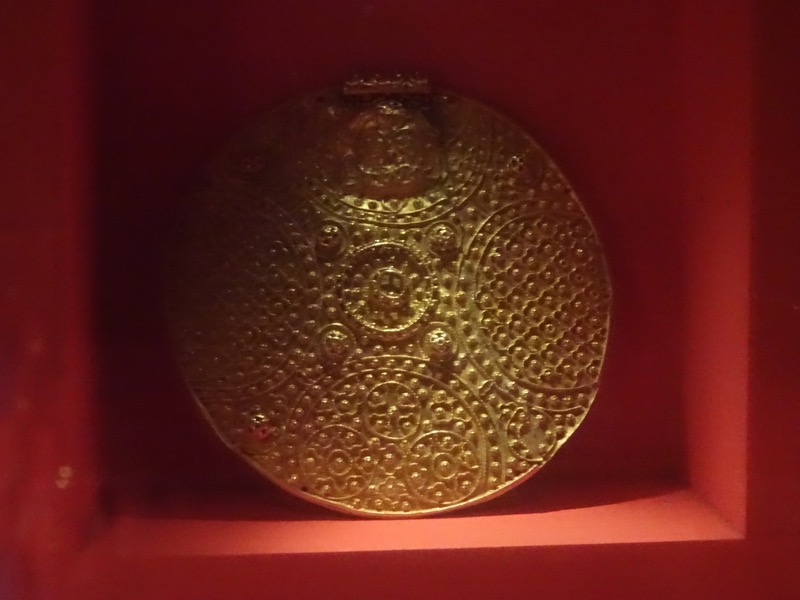
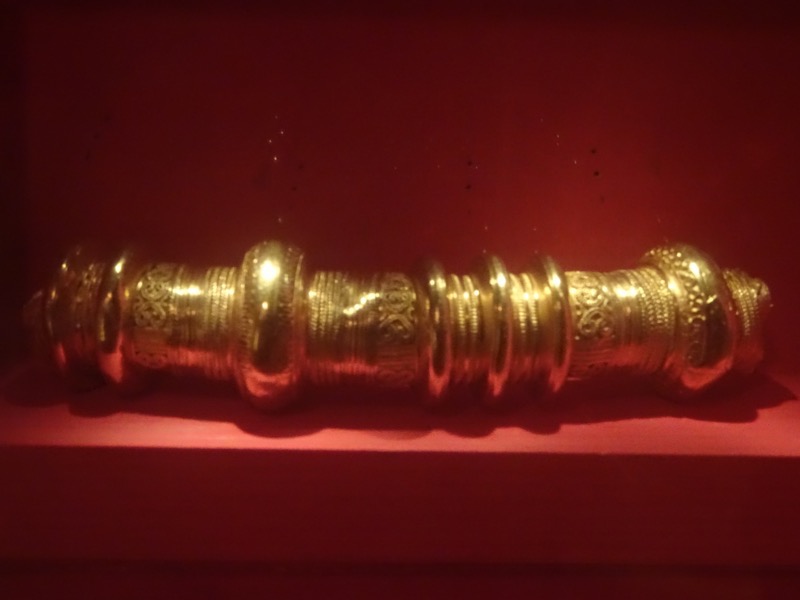
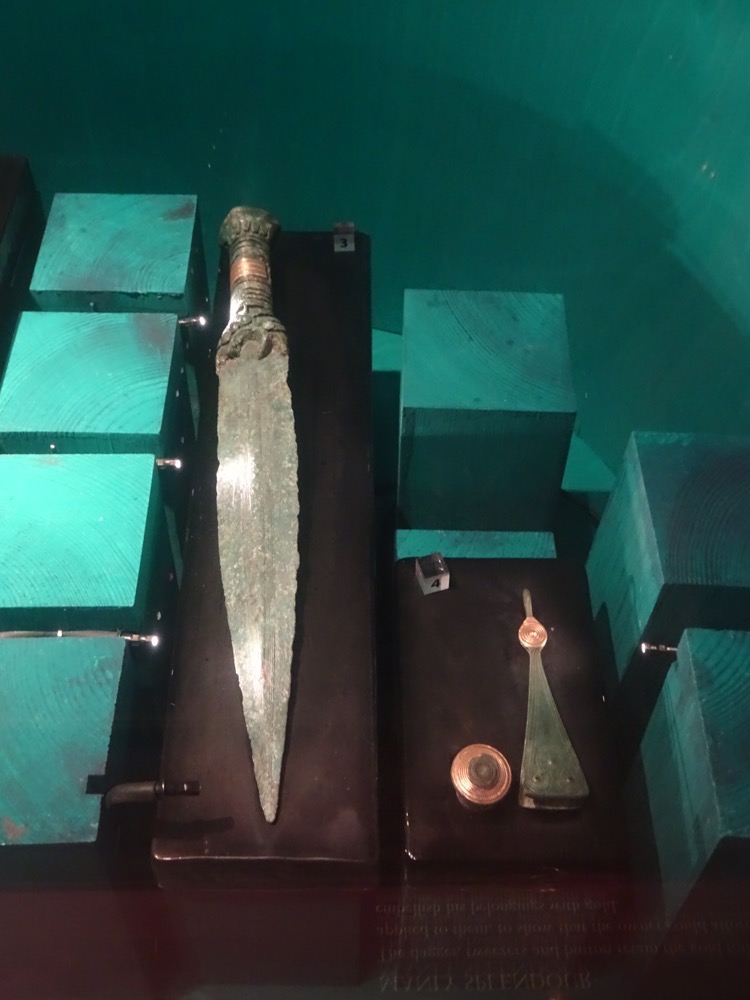
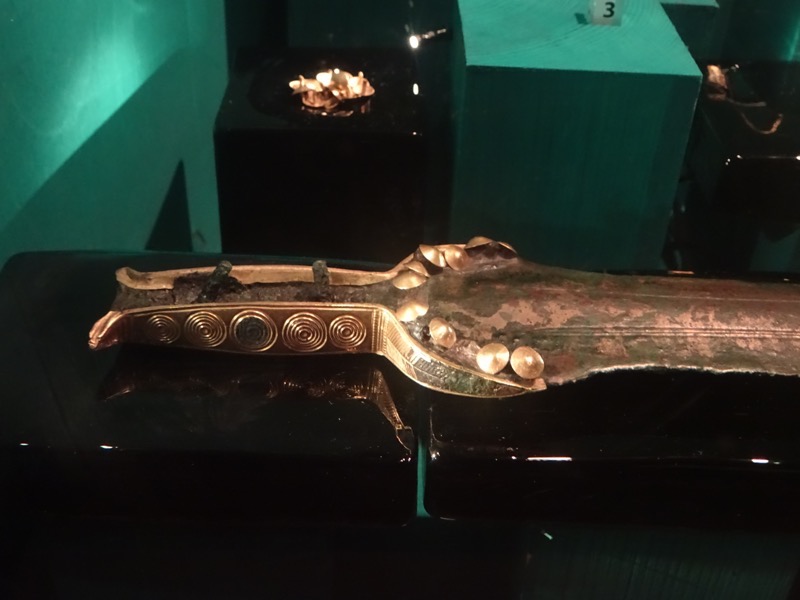 Brooch from a na’s grave, Uppland (Brondkyrko), Haga, c.1100-900BC
Brooch from a na’s grave, Uppland (Brondkyrko), Haga, c.1100-900BC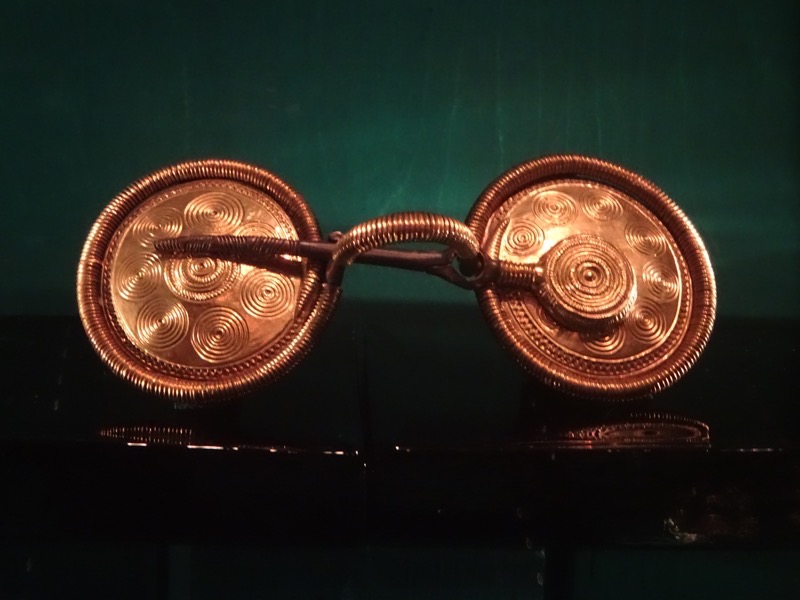 Gold bow, Blekinge, Nattraby/Skrea. 1100-900 BC.
Gold bow, Blekinge, Nattraby/Skrea. 1100-900 BC.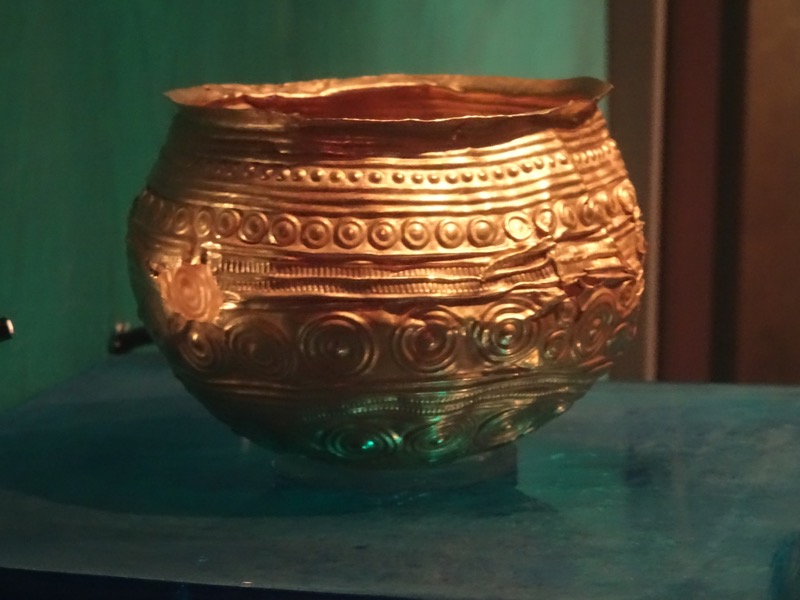 Gold bracteate with Aesir saga motif (Tyr and the Fenriswolf), Trollhattan, 400-500AD.
Gold bracteate with Aesir saga motif (Tyr and the Fenriswolf), Trollhattan, 400-500AD.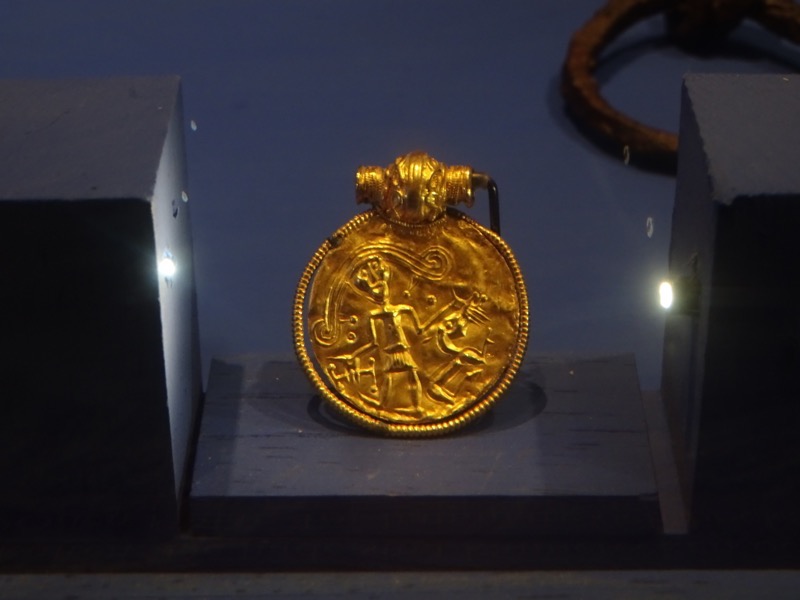 Valkyrie pendant,Oland,Koping, 800-1050AD.
Valkyrie pendant,Oland,Koping, 800-1050AD.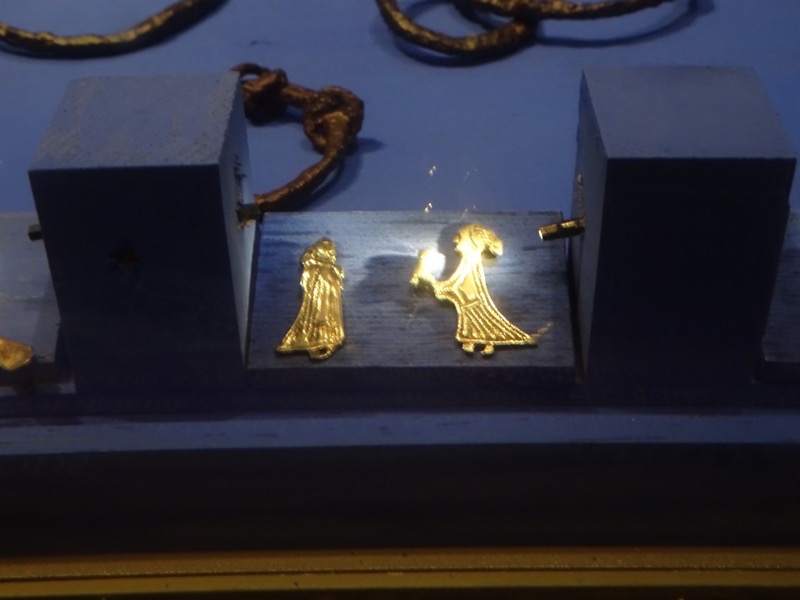 Silver crucifix, Uppland, Adelso, Birka, c.800-1050.
Silver crucifix, Uppland, Adelso, Birka, c.800-1050.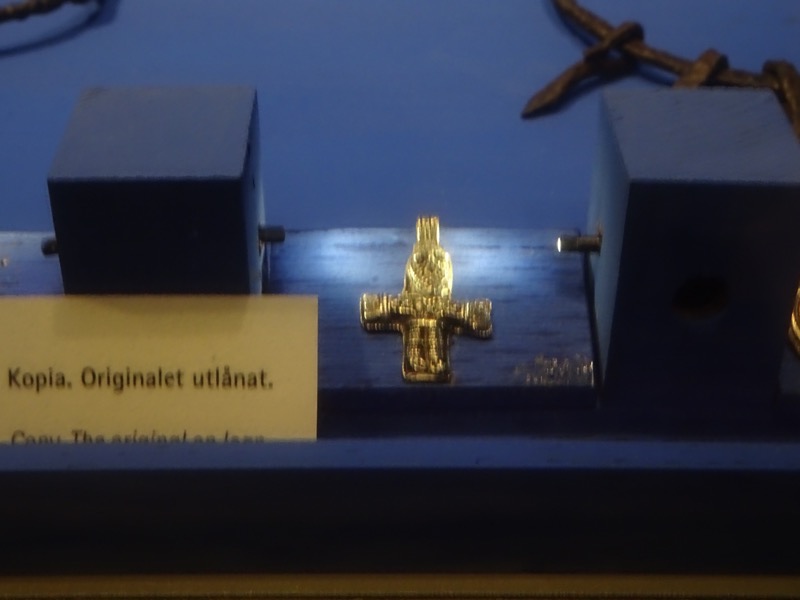 Thor’s hammer, gilded pendant, Odeshog, c.800-1050AD
Thor’s hammer, gilded pendant, Odeshog, c.800-1050AD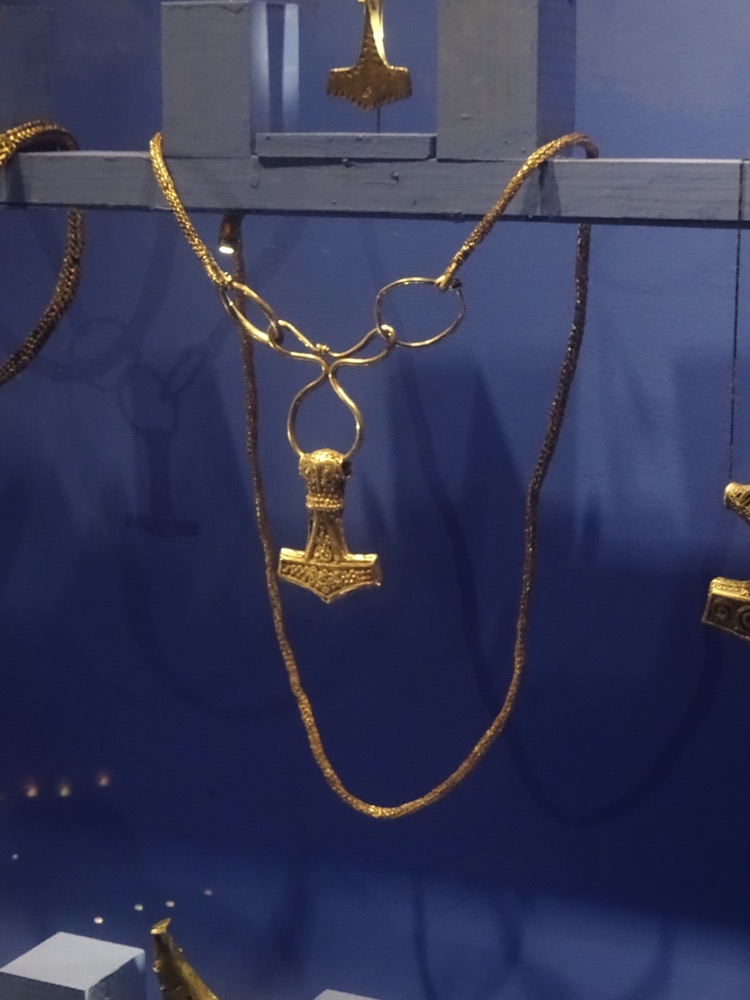
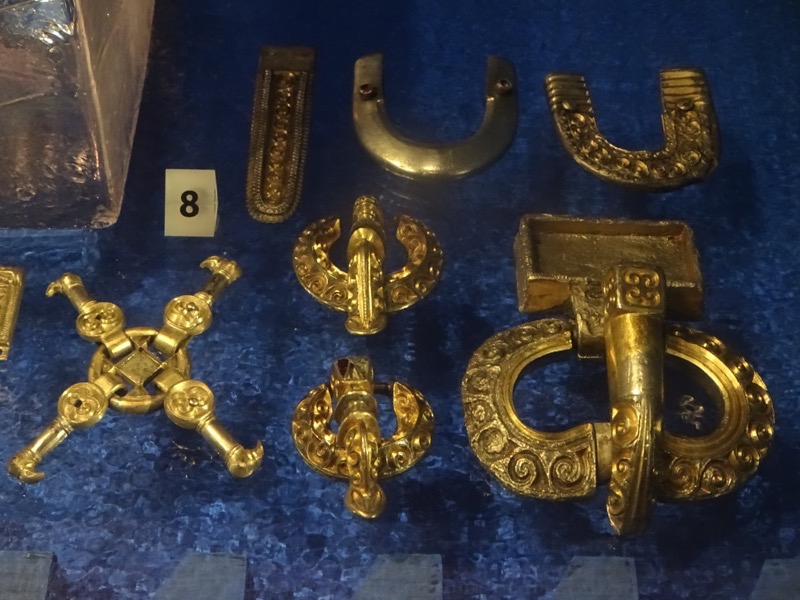
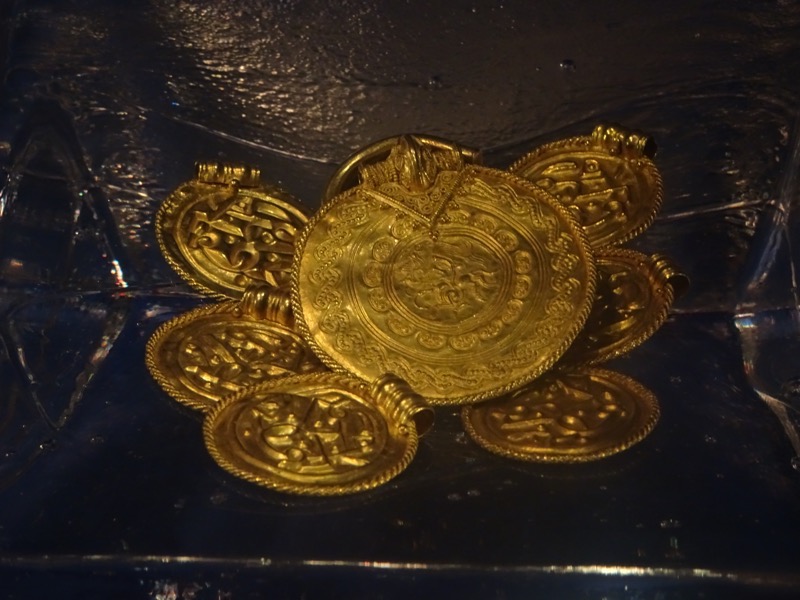
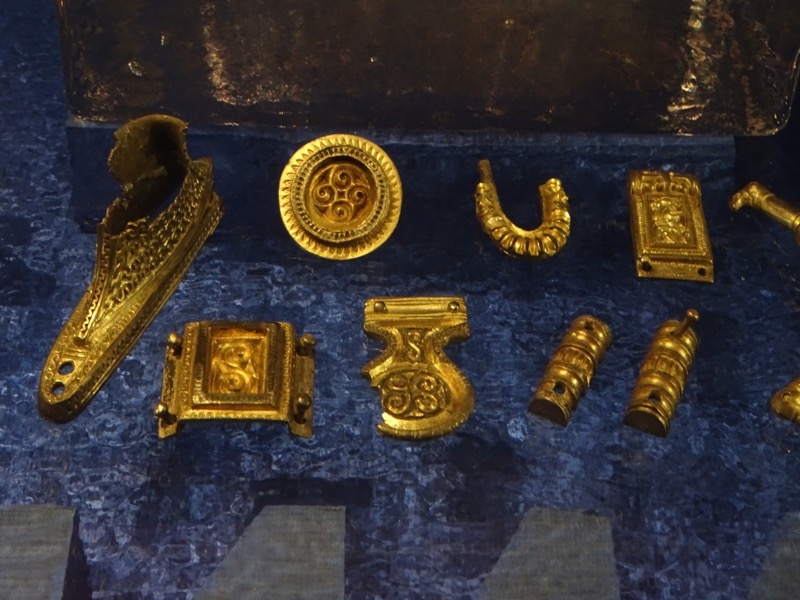
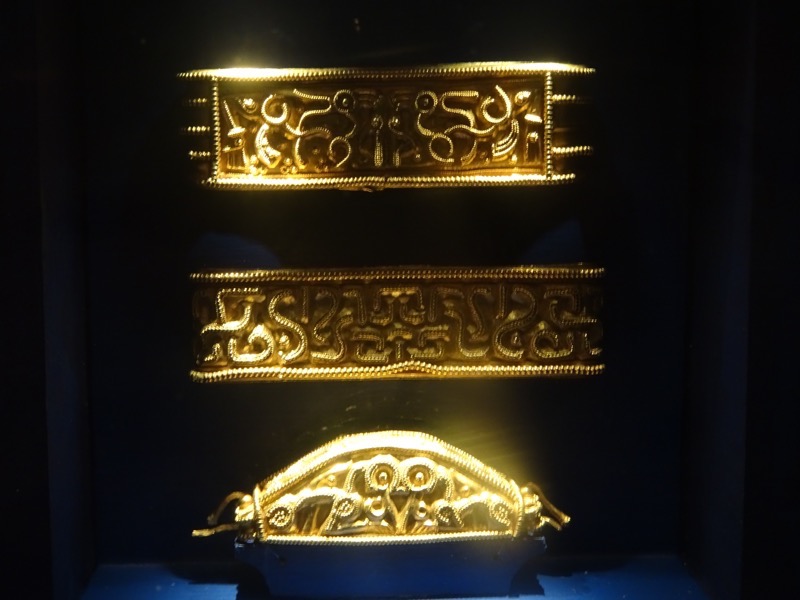 Arm ring made of gold from Skane, Glostorp, Kaglinge, c.400AD
Arm ring made of gold from Skane, Glostorp, Kaglinge, c.400AD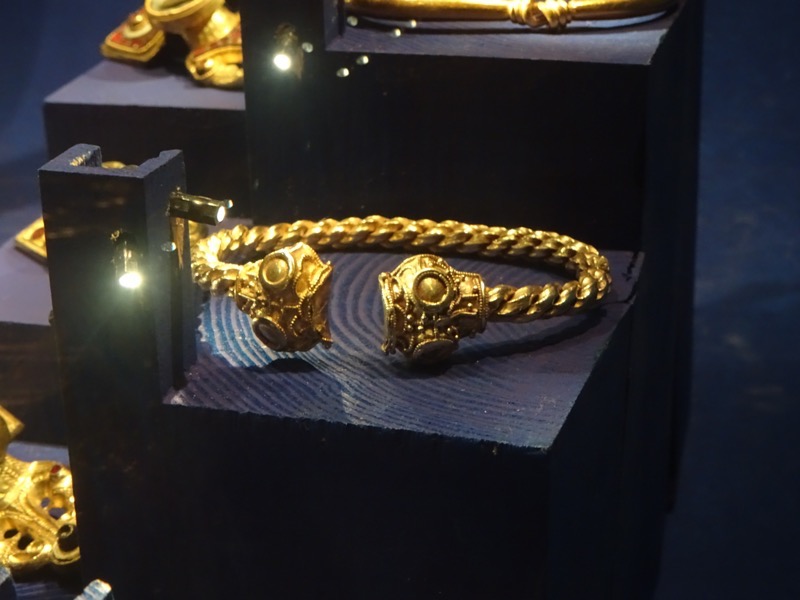 Twisted gold bracelet, Sodermanland, Vanso c.800-1050AD
Twisted gold bracelet, Sodermanland, Vanso c.800-1050AD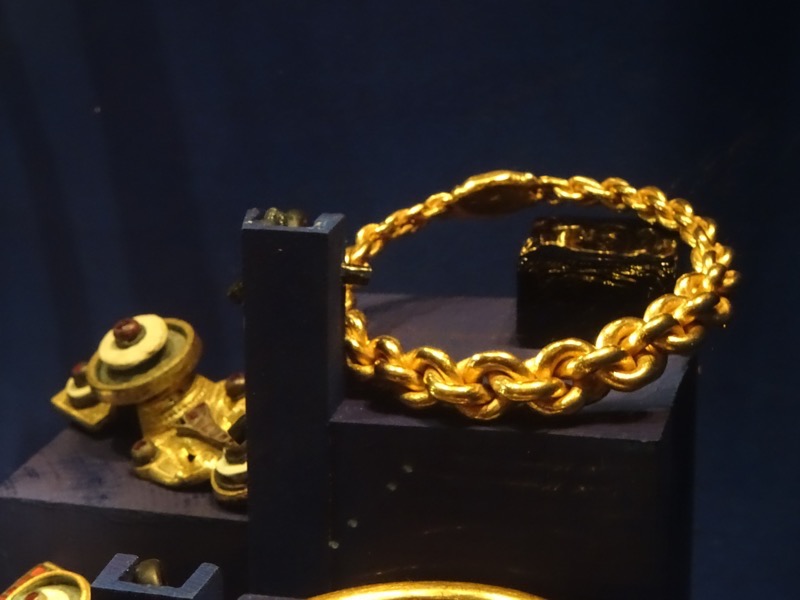 Relief buckles made of gilded silver from Oland, c.400-550AD
Relief buckles made of gilded silver from Oland, c.400-550AD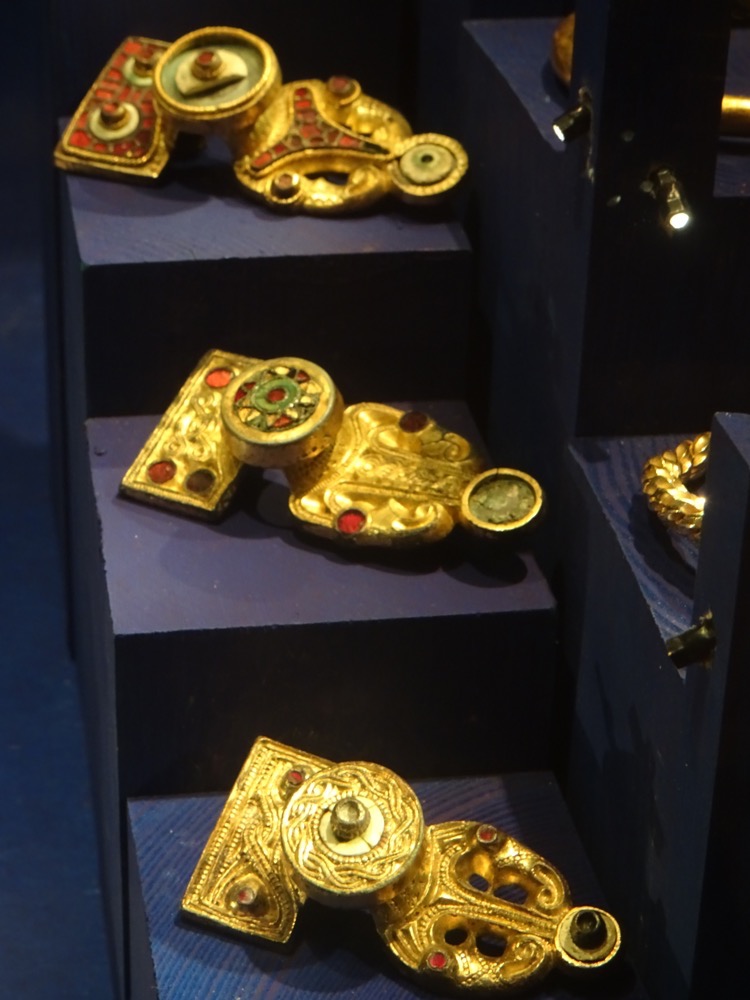 Relief buckle and buttons made of gilded bronze with garnet inlay, from Vastmanland, Tortuna, Nicktuna, c.400-550AD
Relief buckle and buttons made of gilded bronze with garnet inlay, from Vastmanland, Tortuna, Nicktuna, c.400-550AD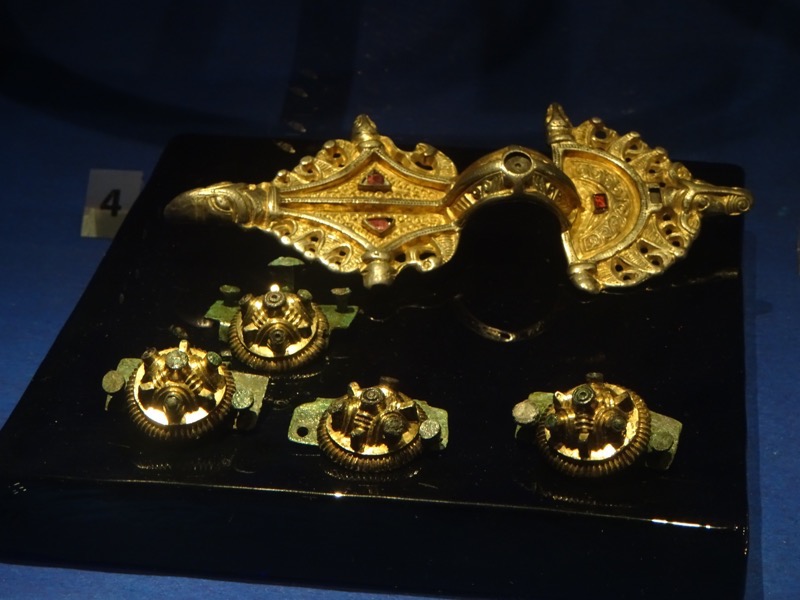 Iron and bronze helmet, Uppland, Vendel, c.550-800AD
Iron and bronze helmet, Uppland, Vendel, c.550-800AD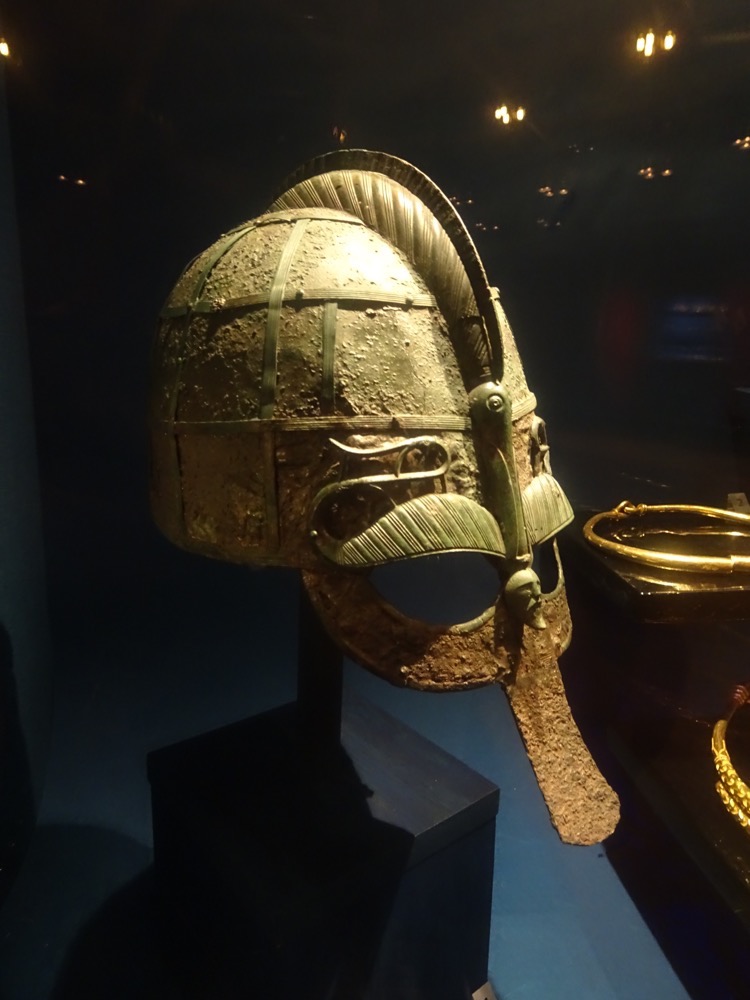
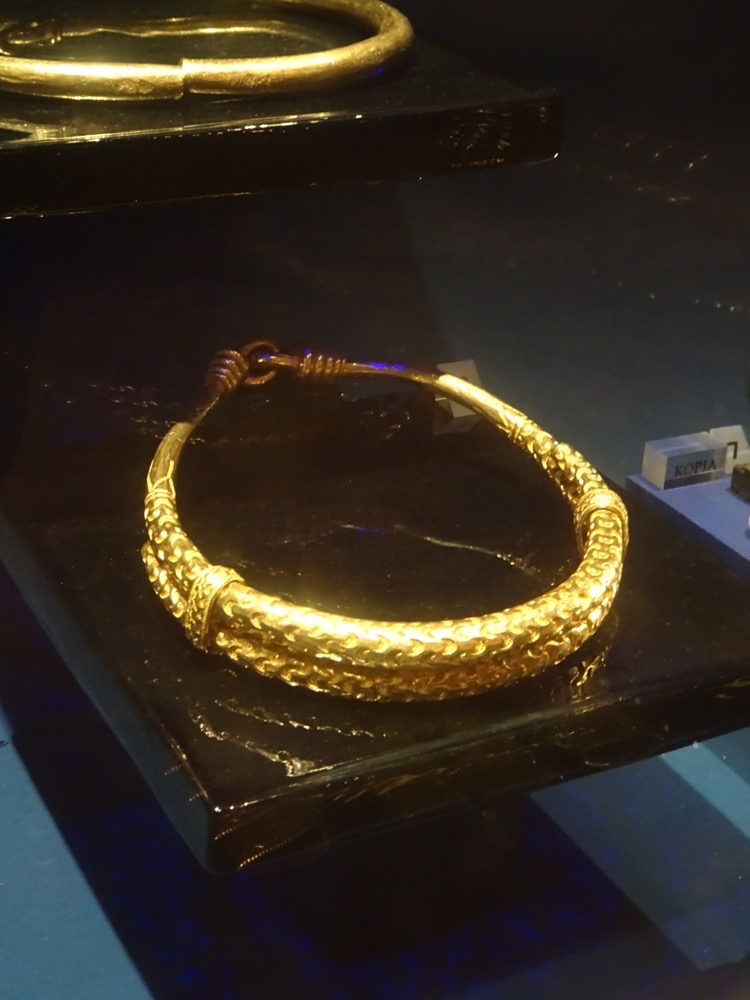 Gold bracelets with terminal animal heads. Oland, As, c.400AD.
Gold bracelets with terminal animal heads. Oland, As, c.400AD.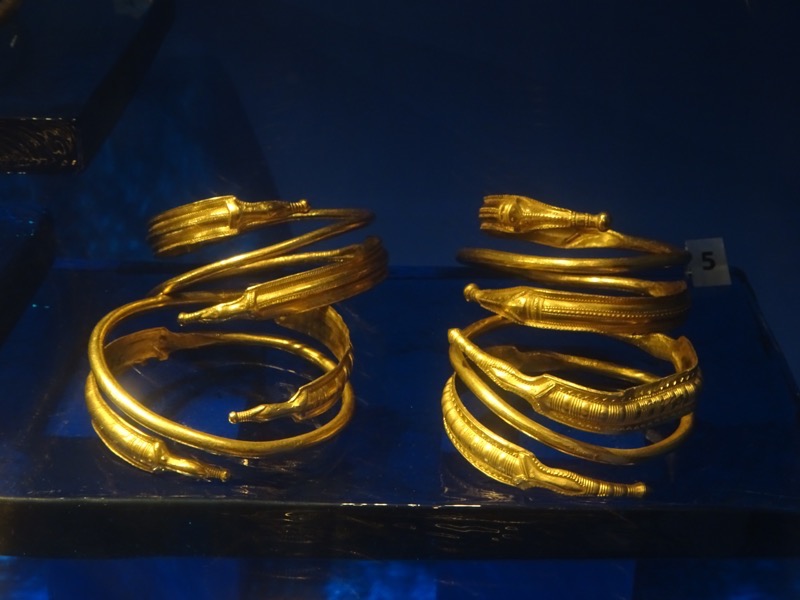
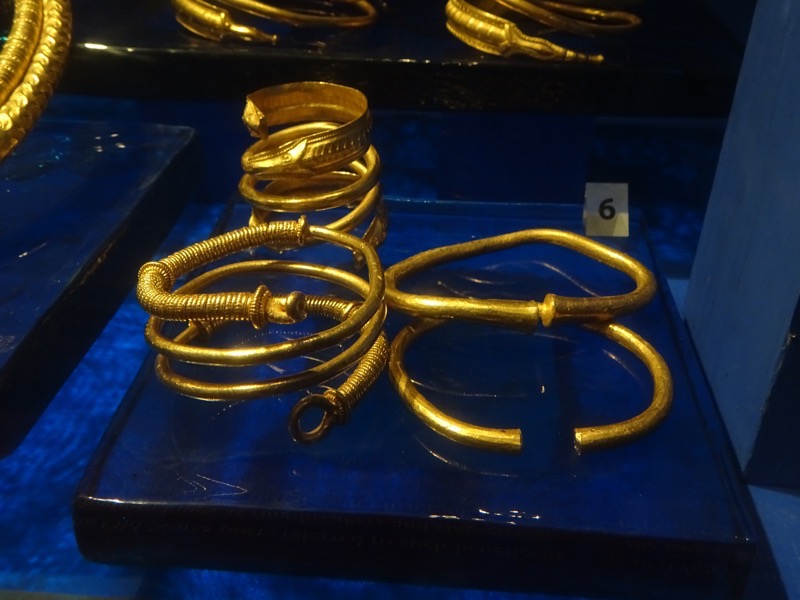
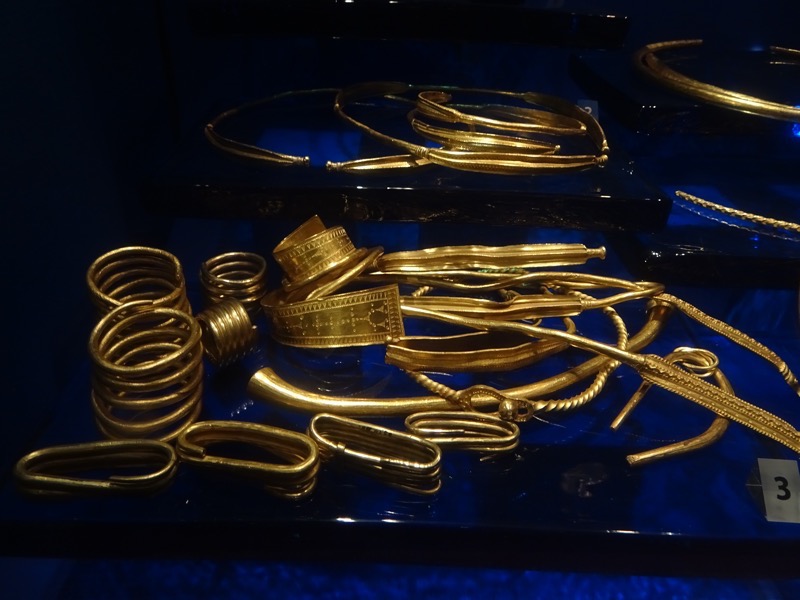 Finely decorated gold charm beads, Vastergotland, Dalstorp, c.400AD.
Finely decorated gold charm beads, Vastergotland, Dalstorp, c.400AD.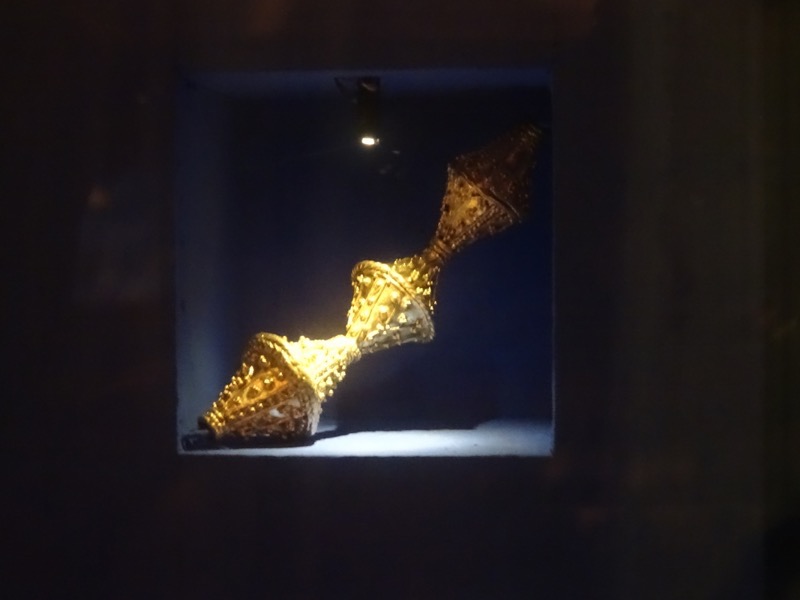 Gold collar, Vasergotland, Mone. 5th century.
Gold collar, Vasergotland, Mone. 5th century.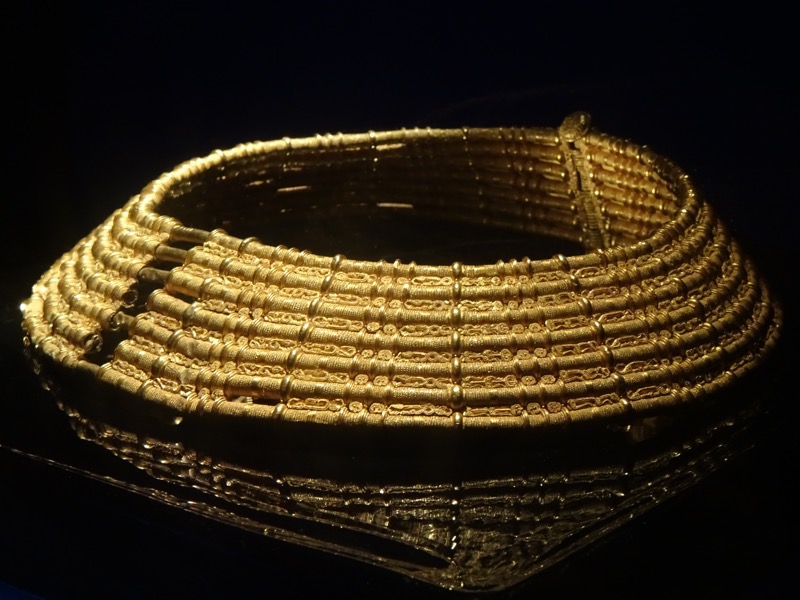
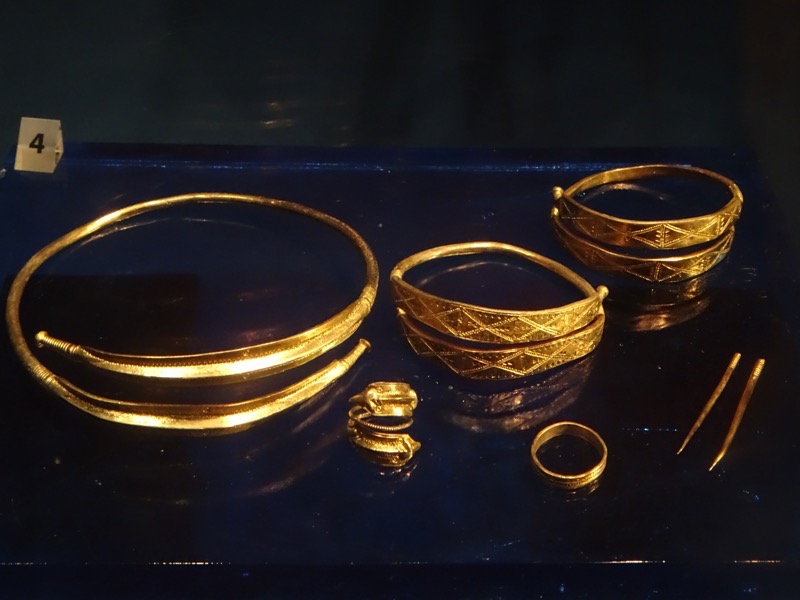 Godl ring with carneol seting, Old Uppsala, Fullero, c400AD.
Godl ring with carneol seting, Old Uppsala, Fullero, c400AD.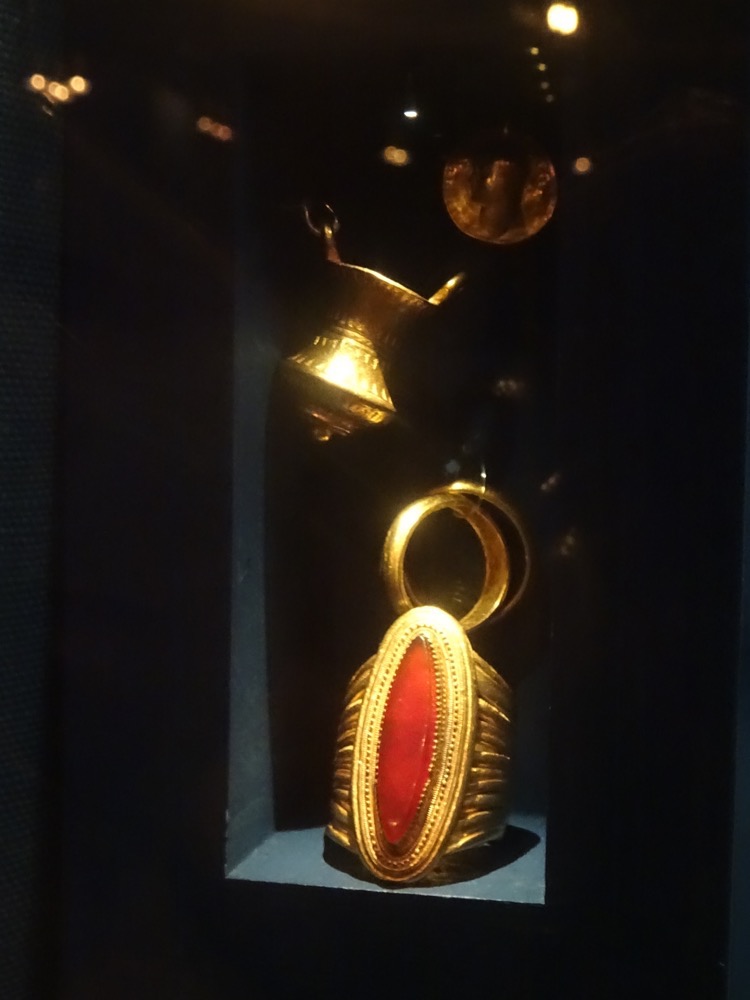
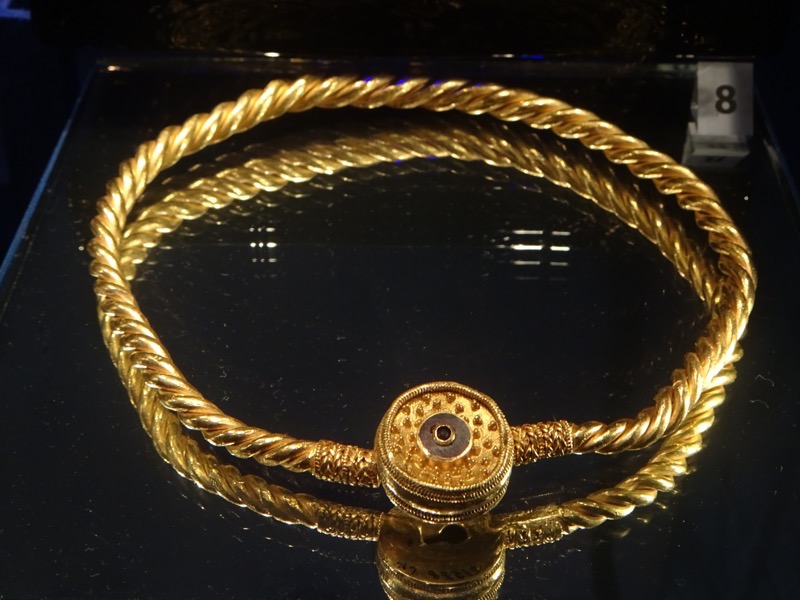 Finely decorated gold charm beads, Vastergotland, Dalstorp, c.400AD.
Finely decorated gold charm beads, Vastergotland, Dalstorp, c.400AD.
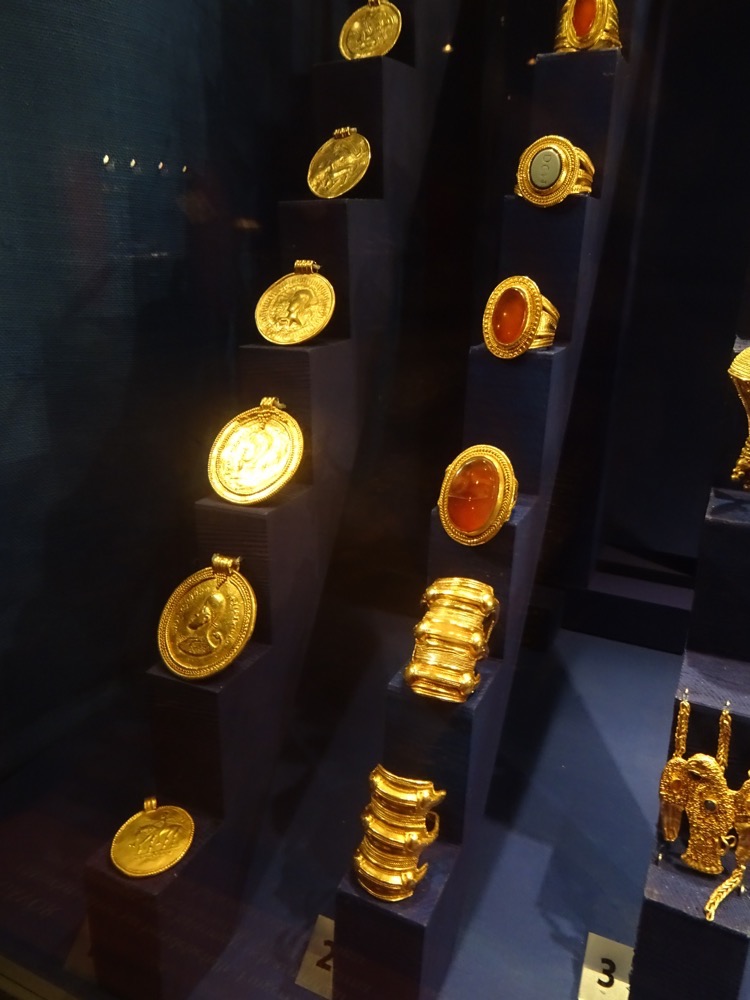 Gold rings worn and used as currency, Gotland. c.8thC
Gold rings worn and used as currency, Gotland. c.8thC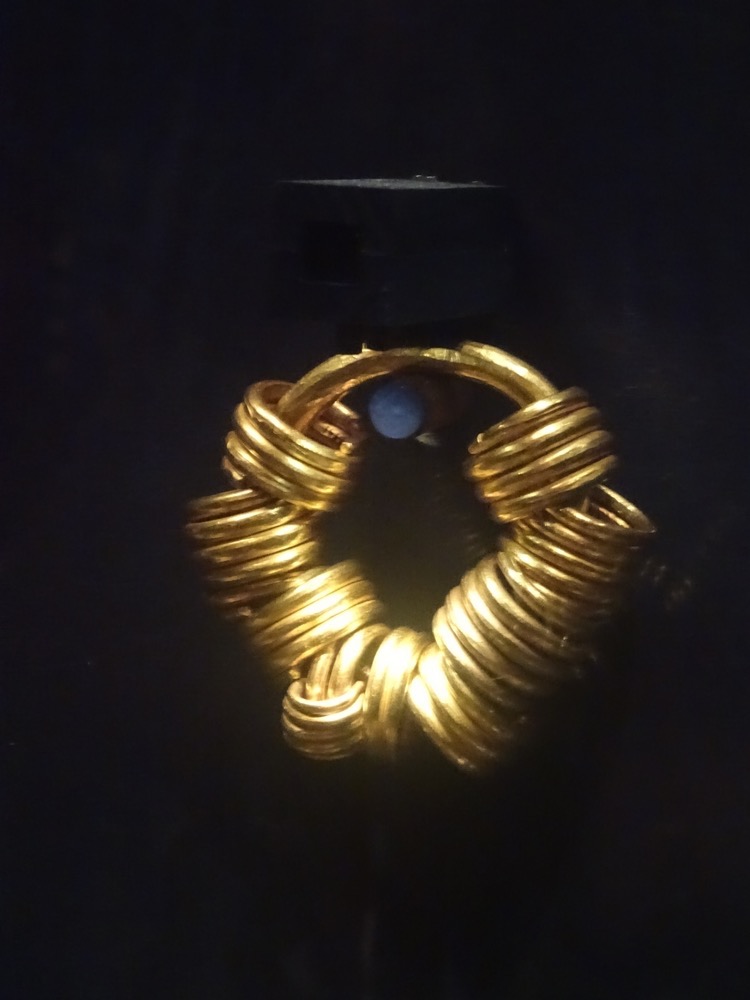
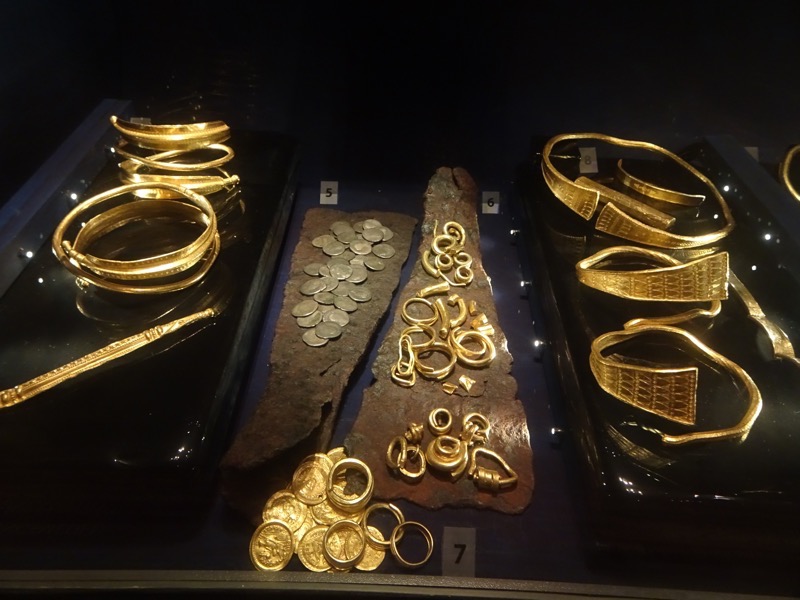
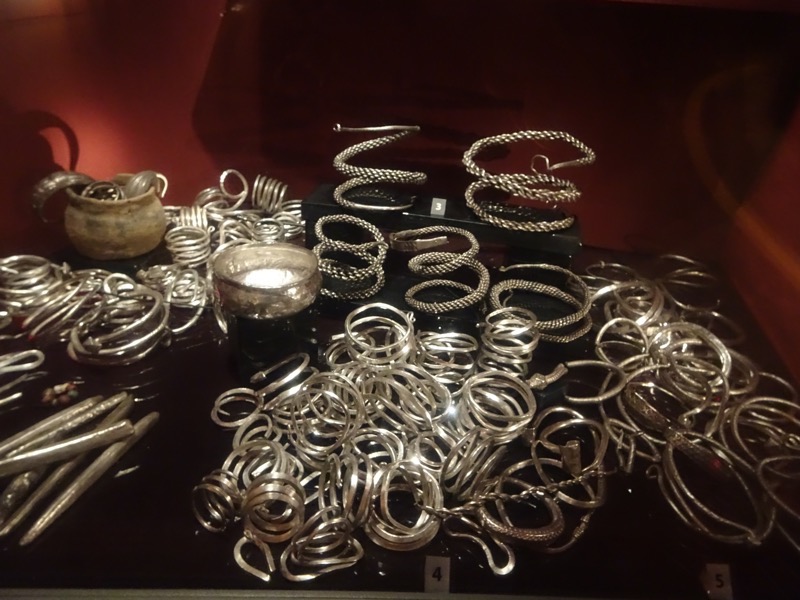
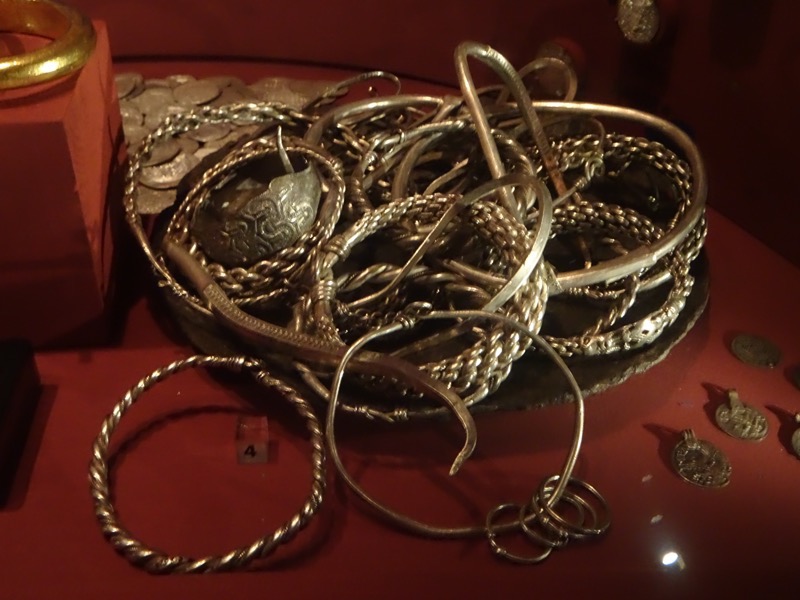 Sword with silver, copper and brass inlay, Gotland, Halla, c.800-1050AD
Sword with silver, copper and brass inlay, Gotland, Halla, c.800-1050AD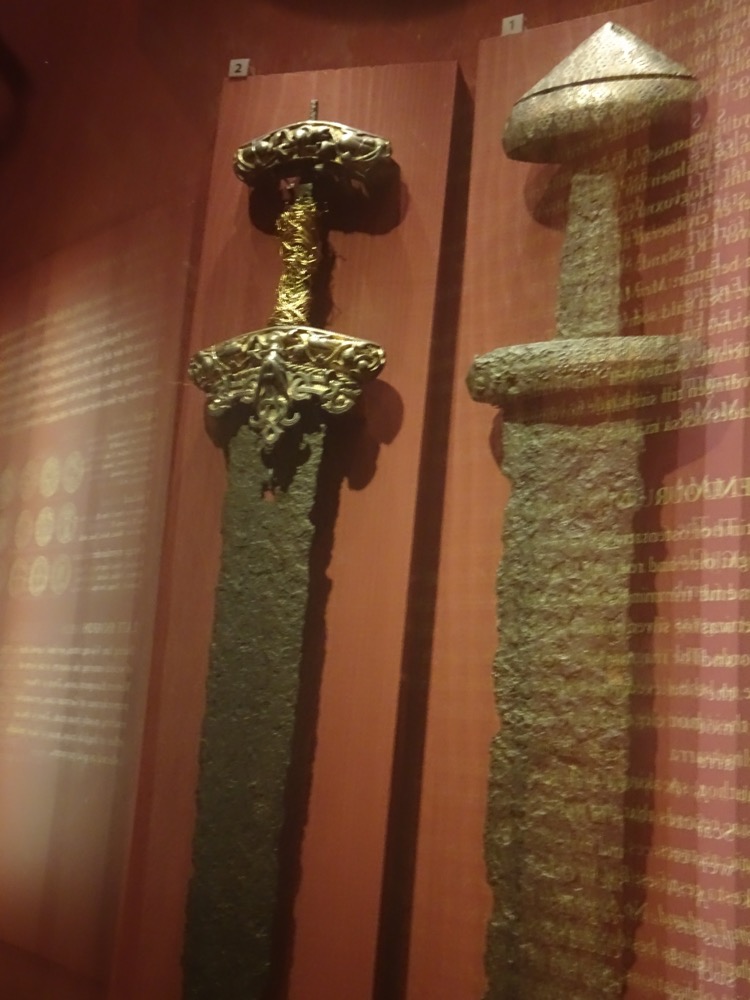
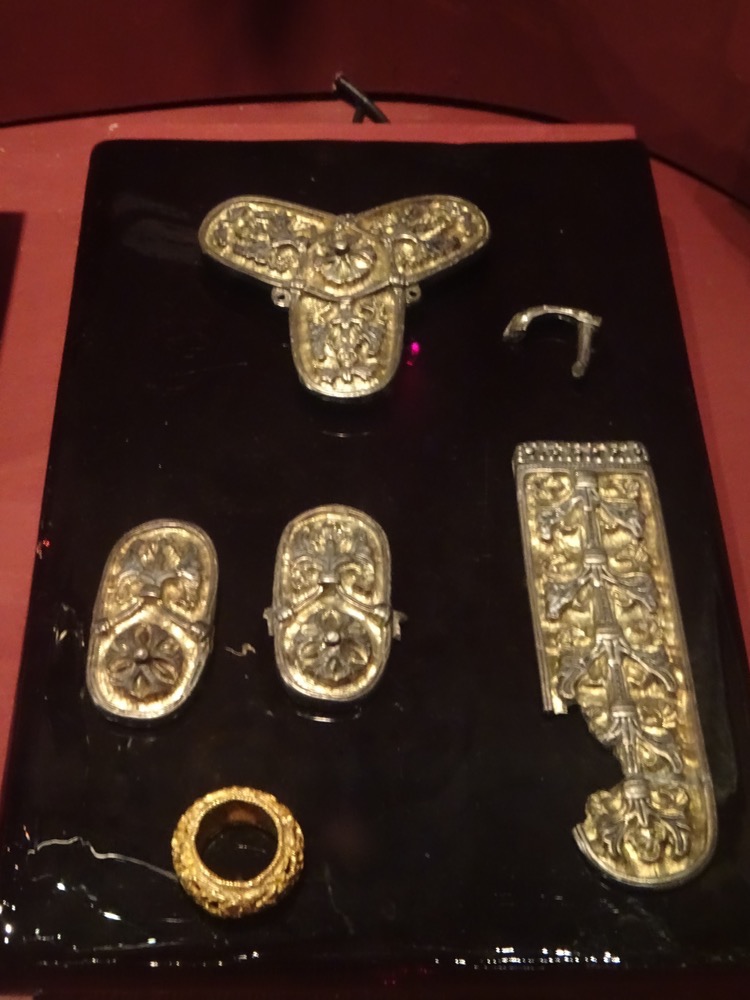 Included as the most matching/symmetrical set of Viking beads I have ever seen… this pleases me and makes me think that somewhere, at some time in history, was a woman whose obsessive personality traits/tendencies were similar to my own. 😉
Included as the most matching/symmetrical set of Viking beads I have ever seen… this pleases me and makes me think that somewhere, at some time in history, was a woman whose obsessive personality traits/tendencies were similar to my own. 😉 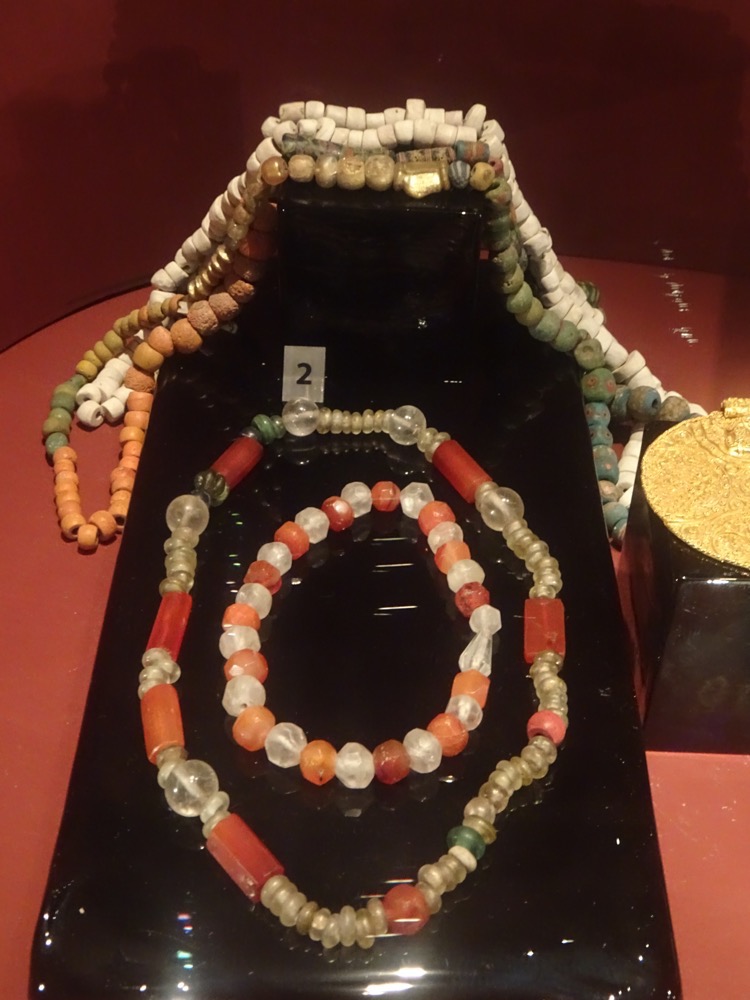
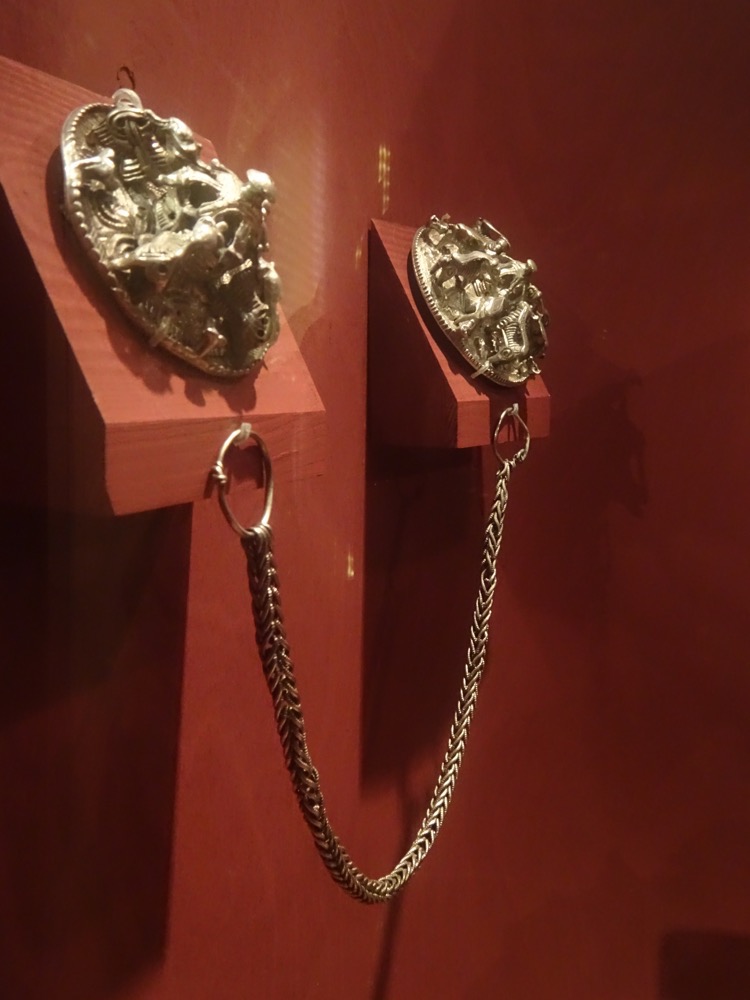
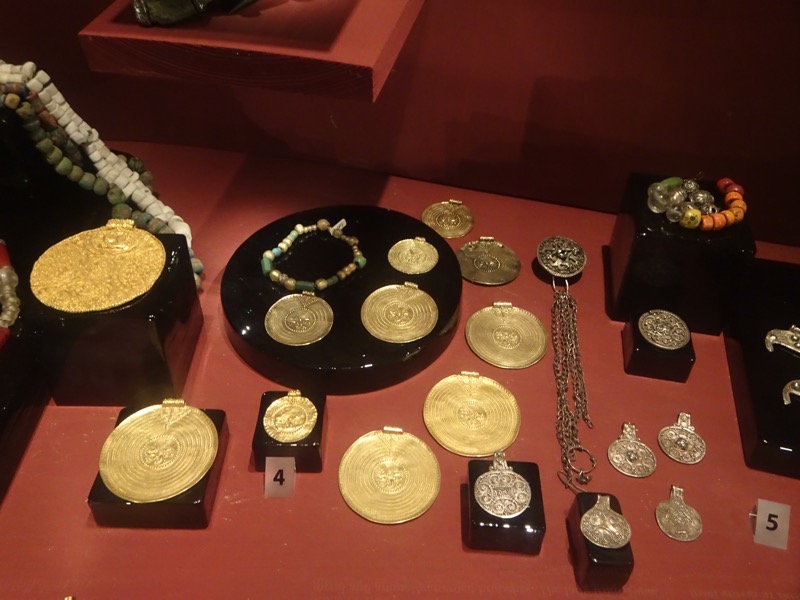
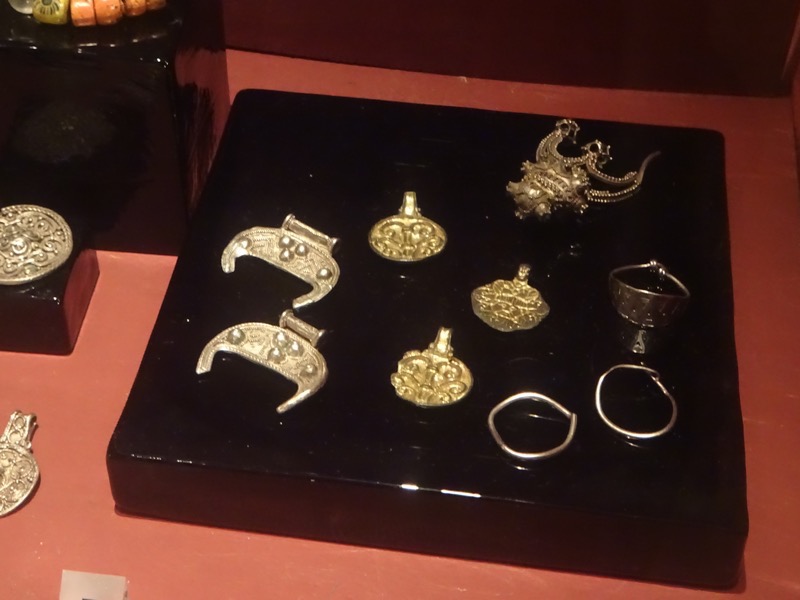
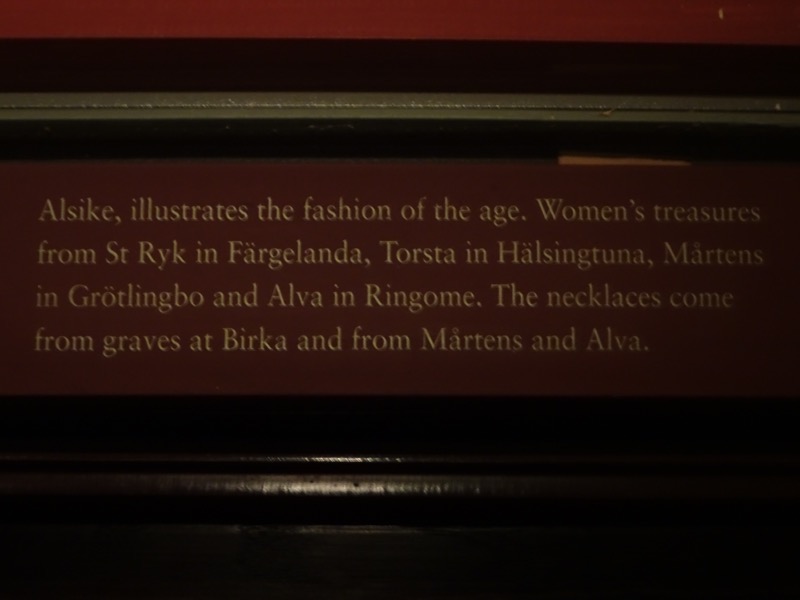 Gold ornaments, Gotland, Labro, c.1000-1500AD
Gold ornaments, Gotland, Labro, c.1000-1500AD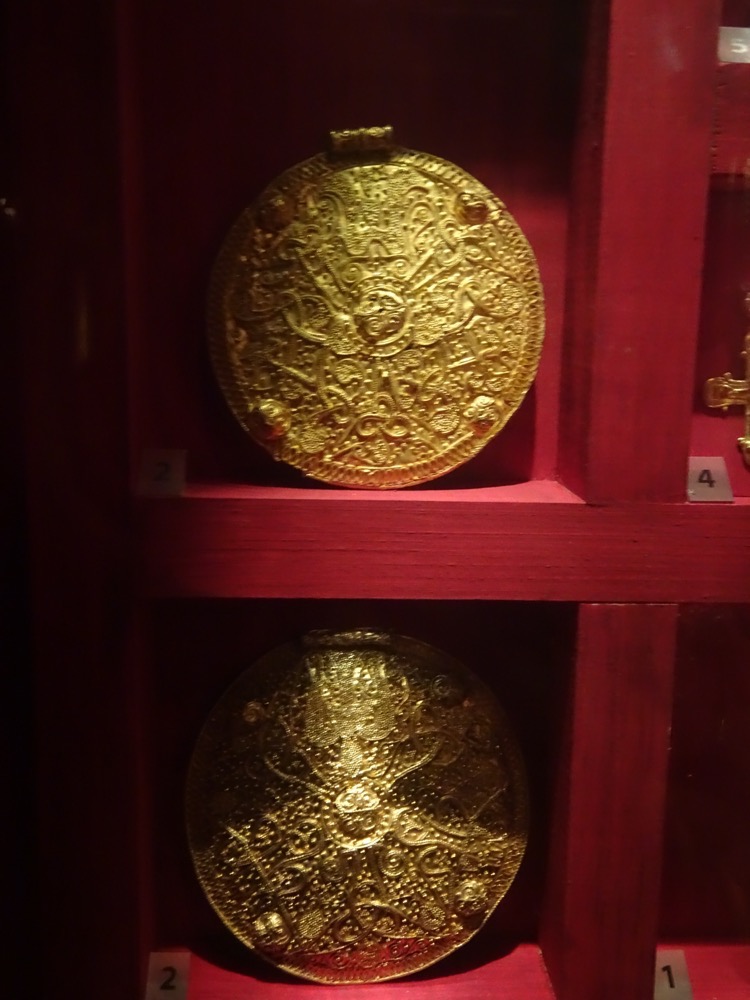
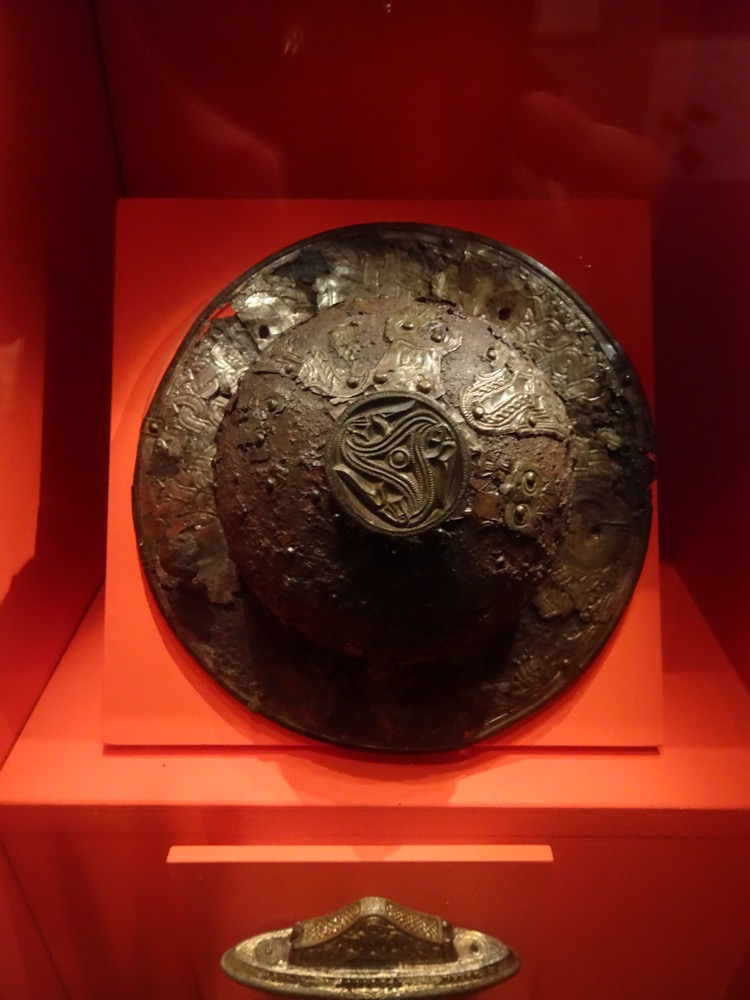
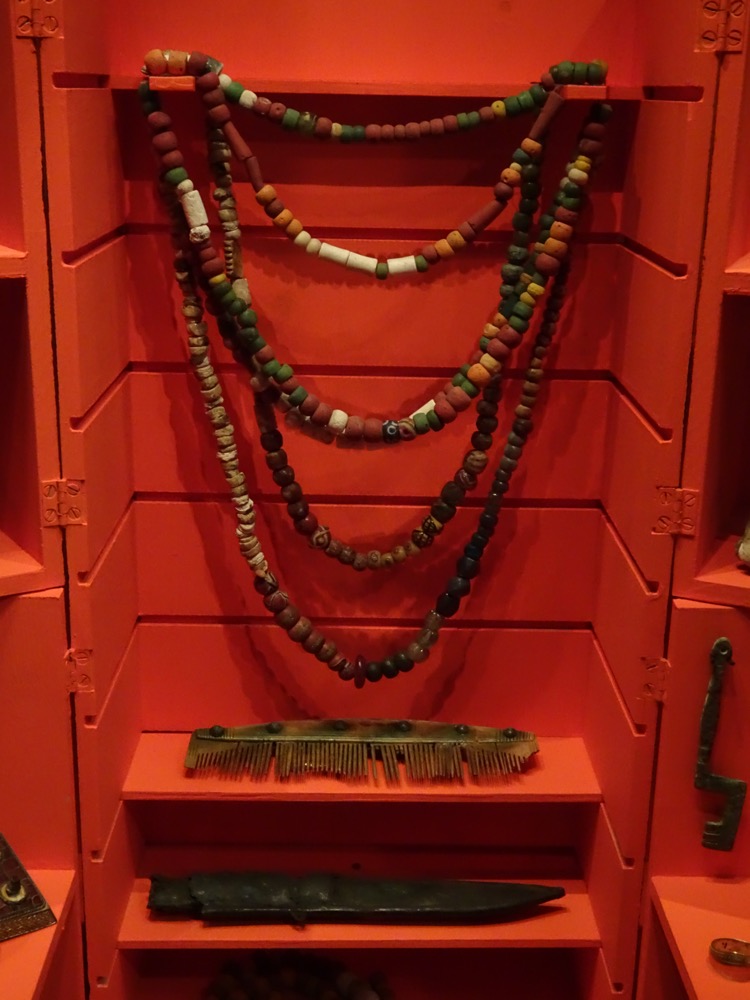
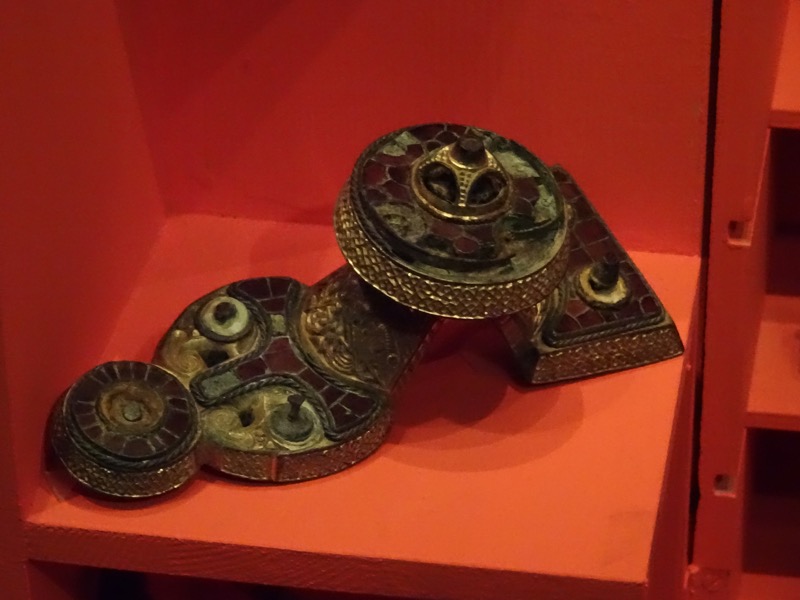
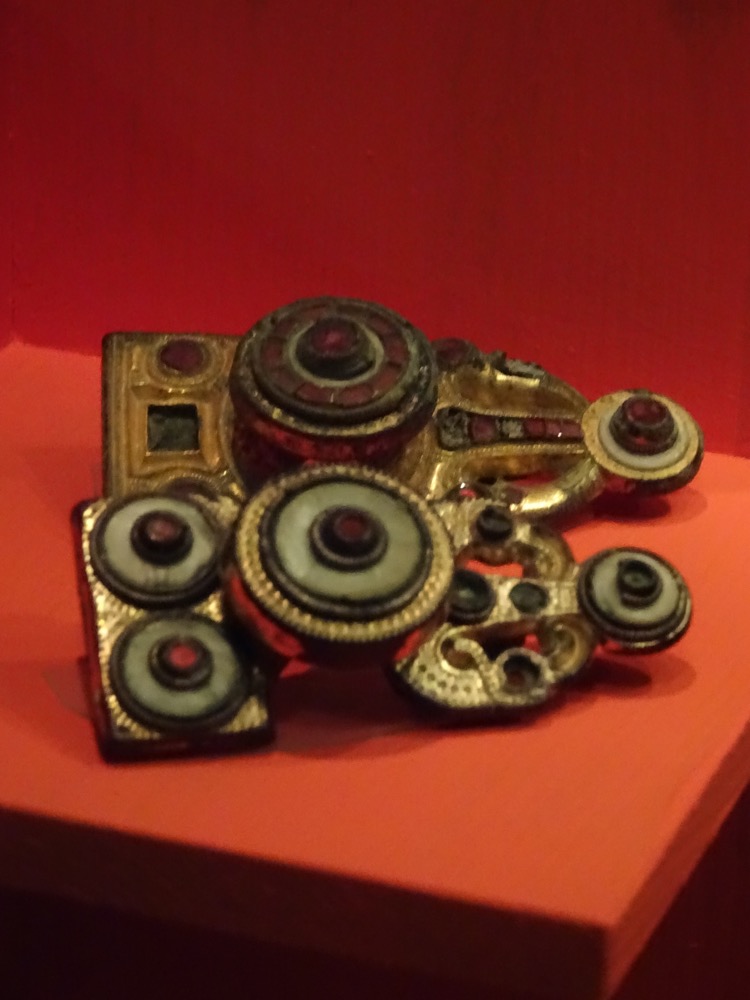
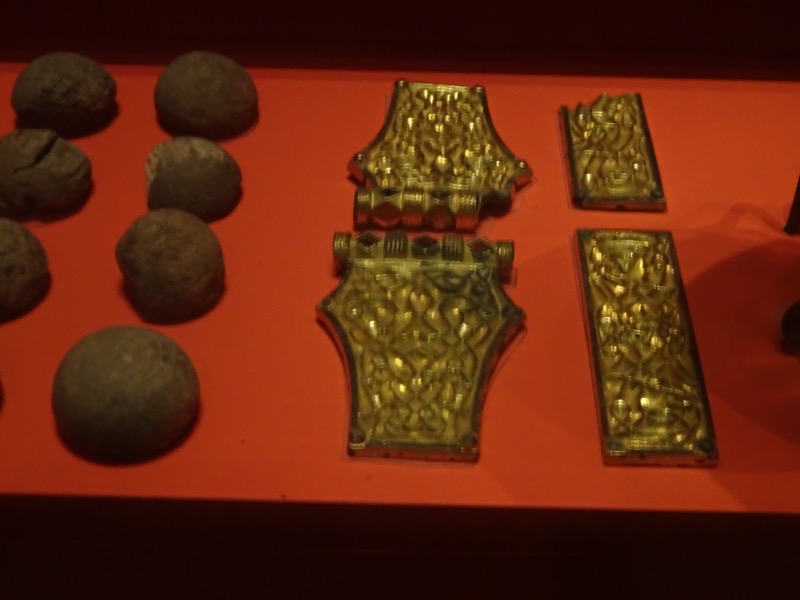
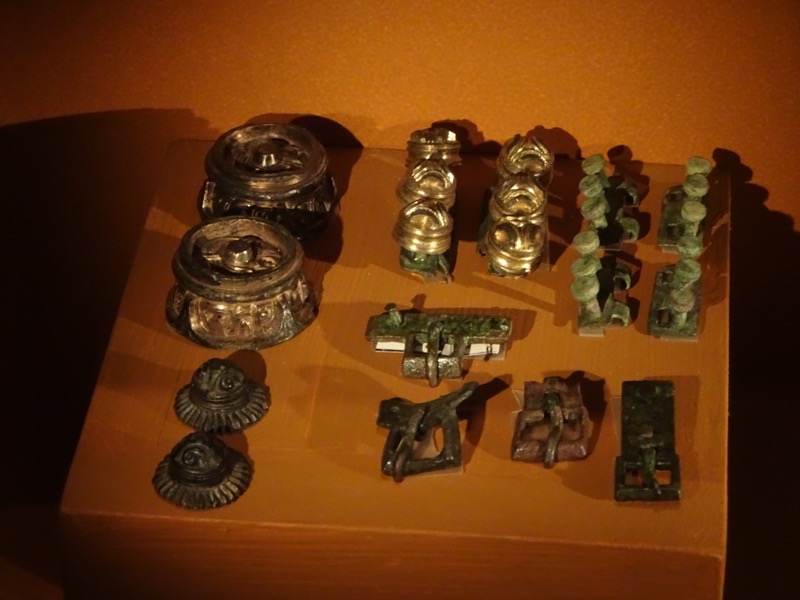
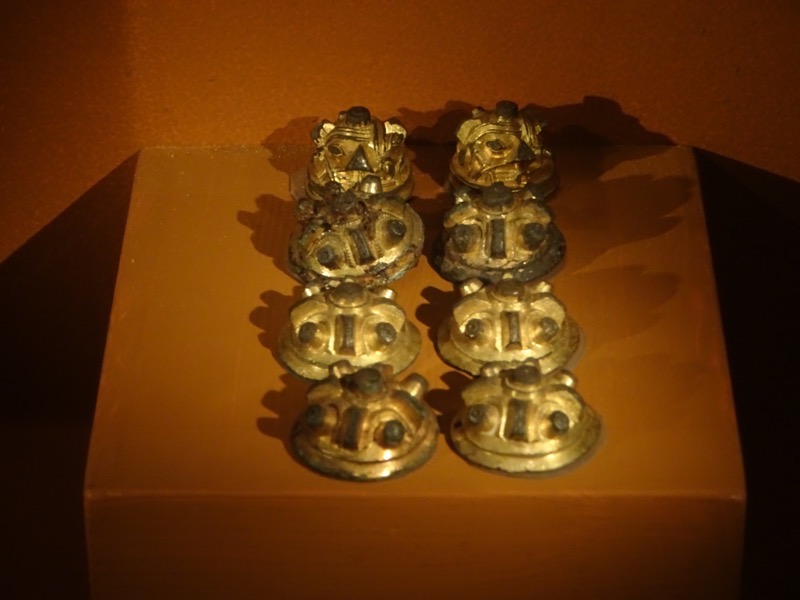
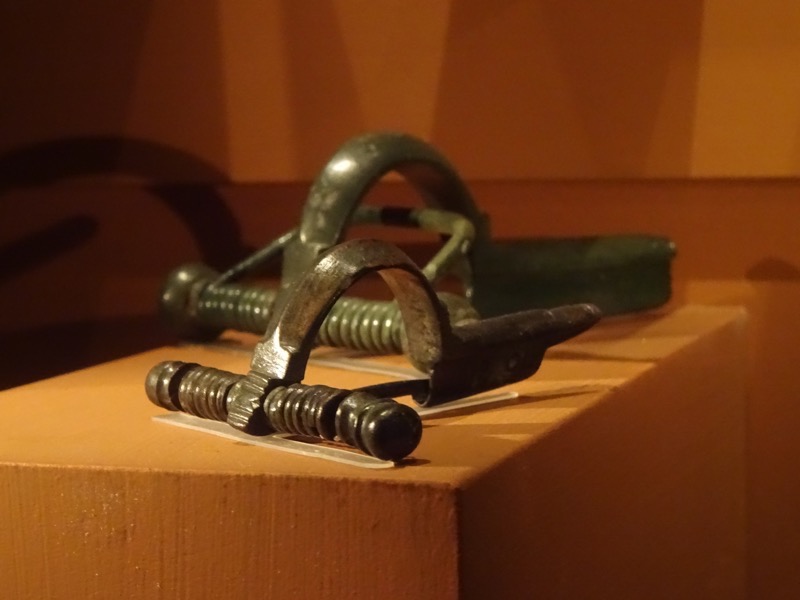
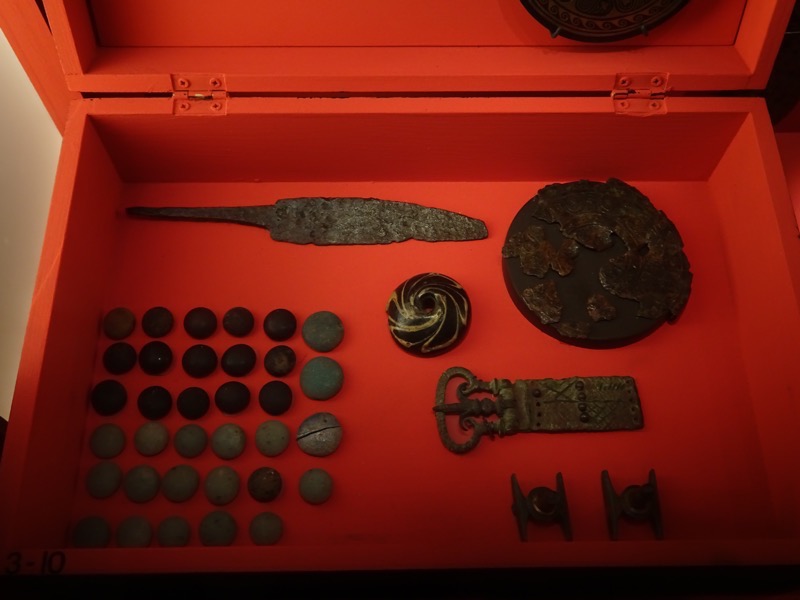
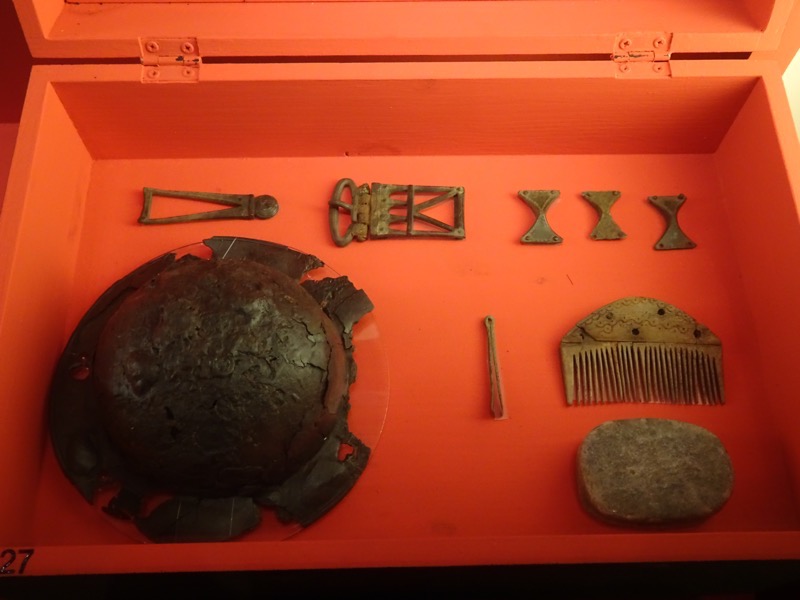
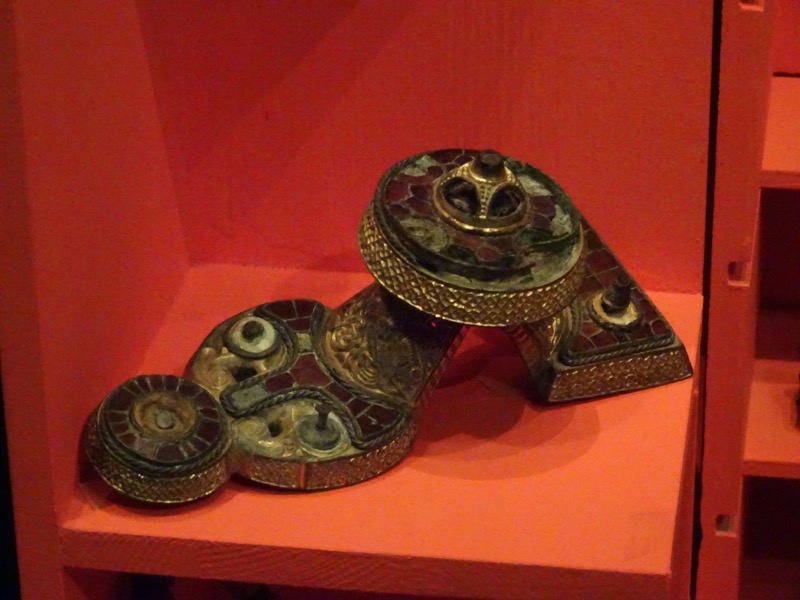
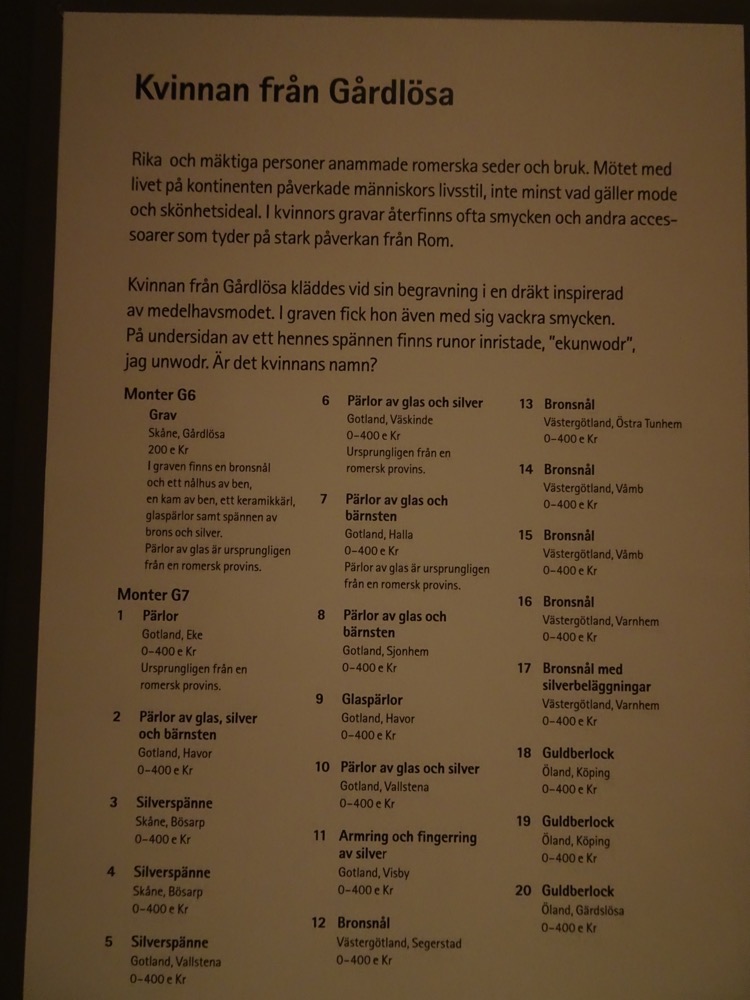
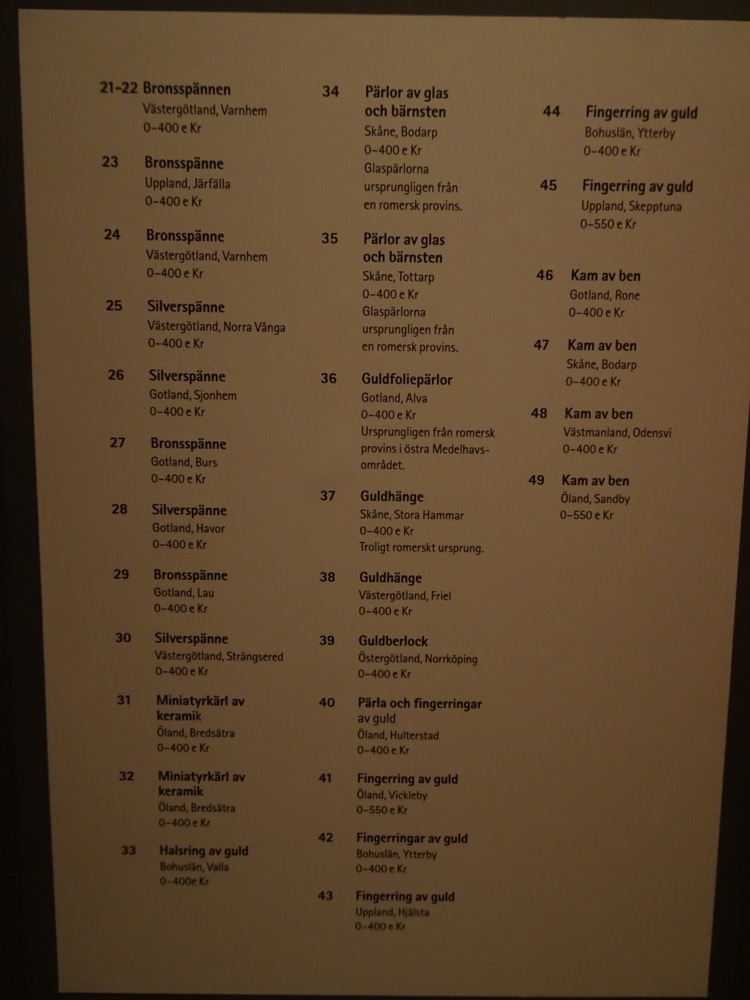
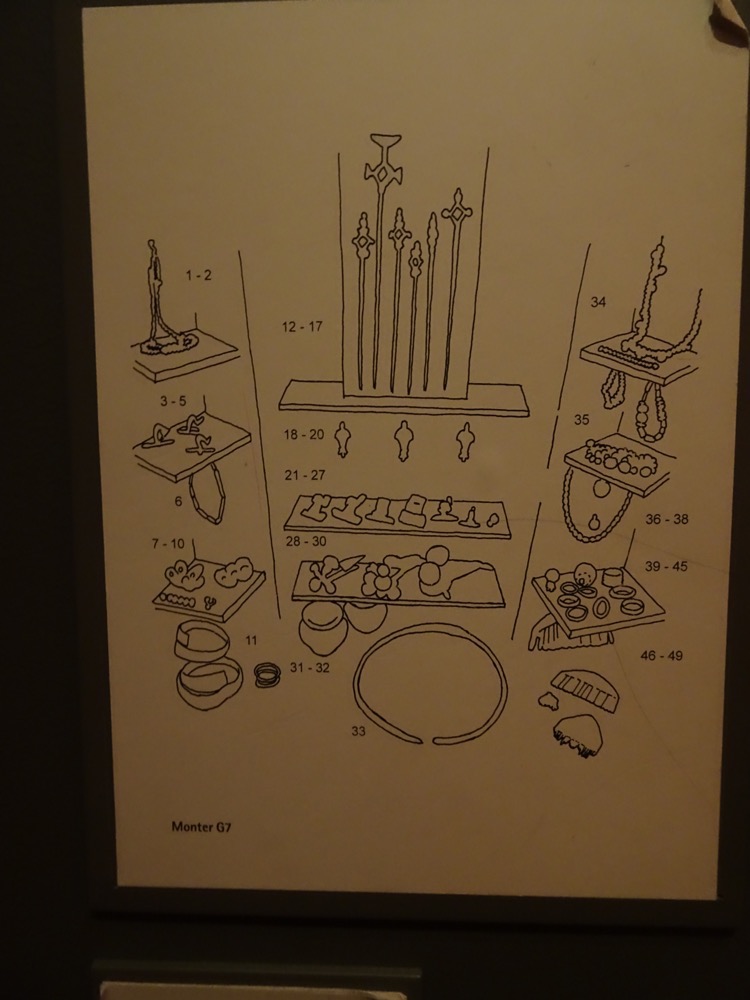
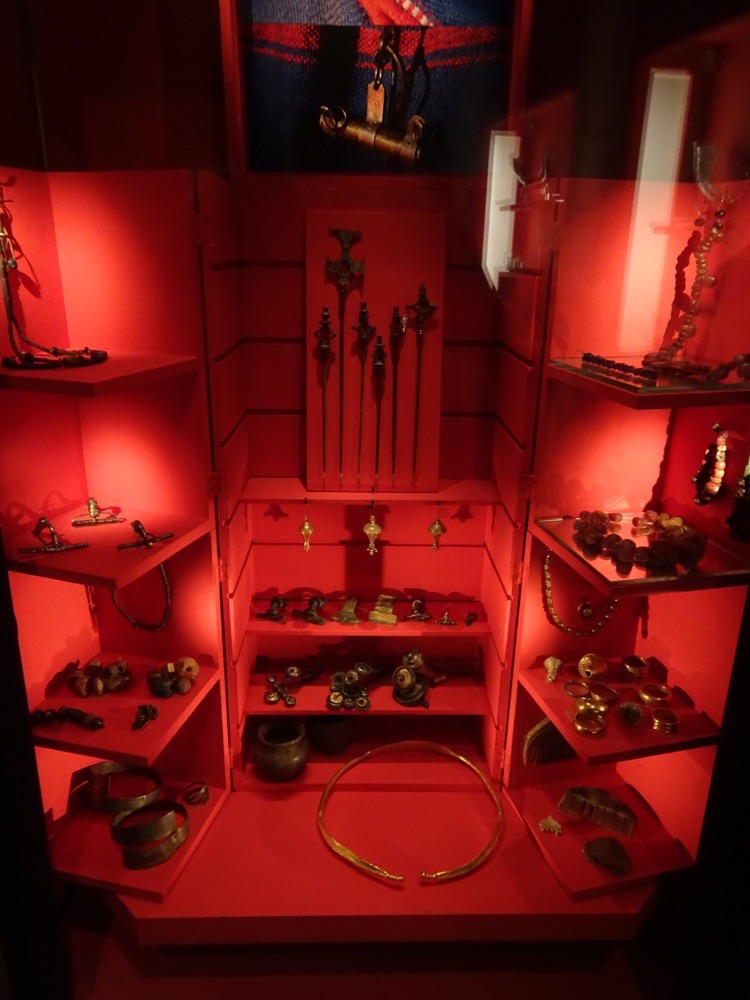
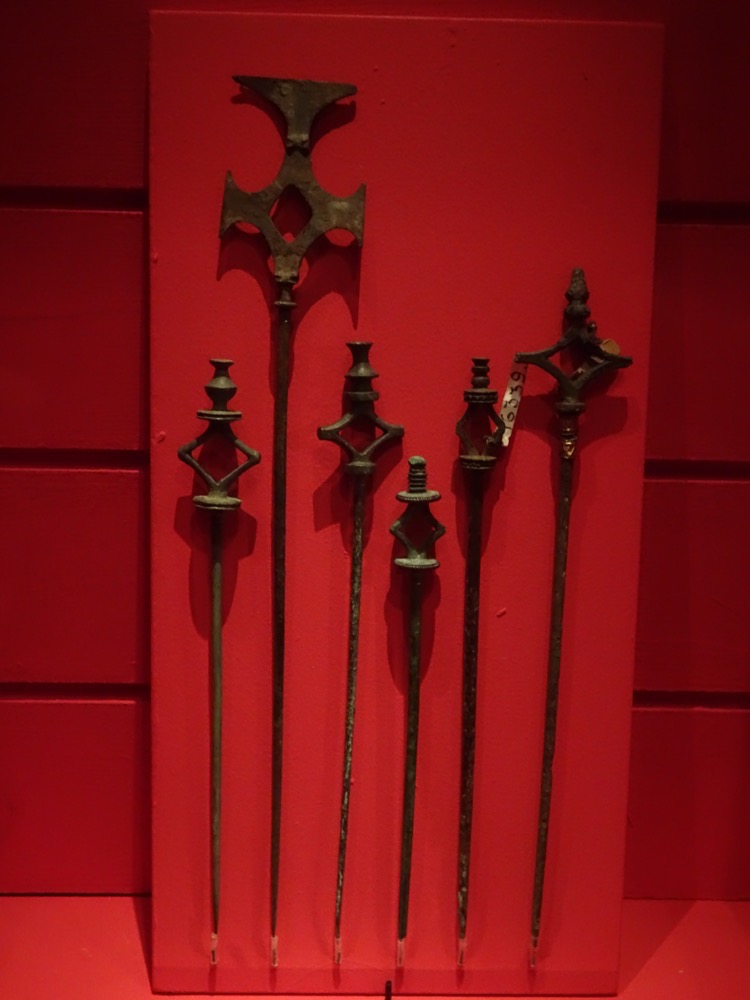
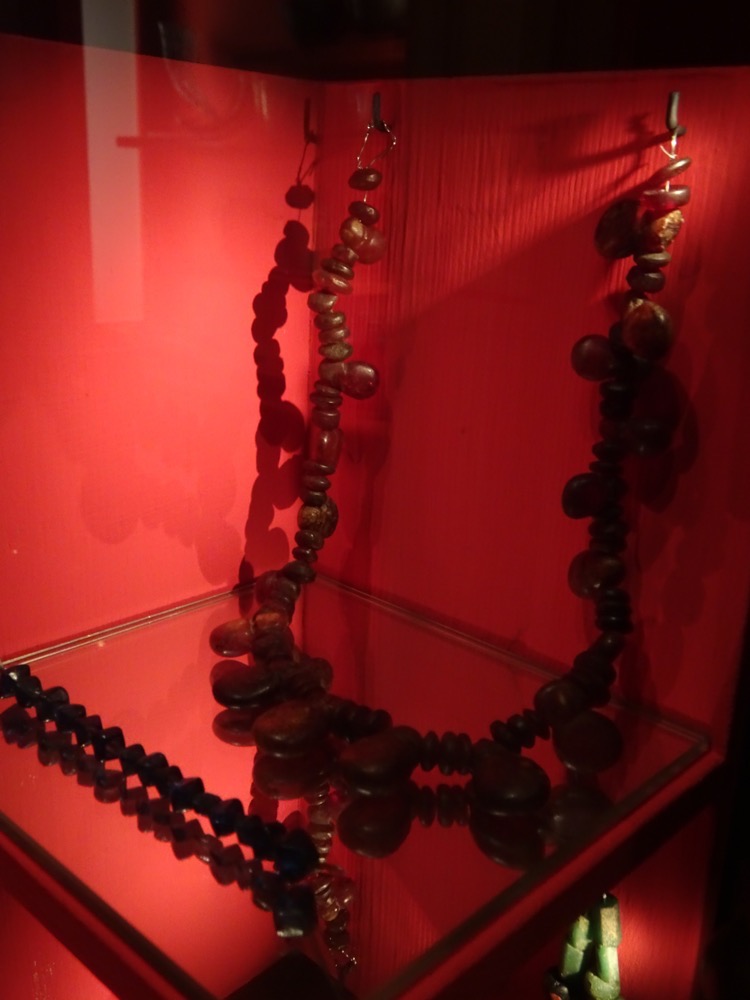
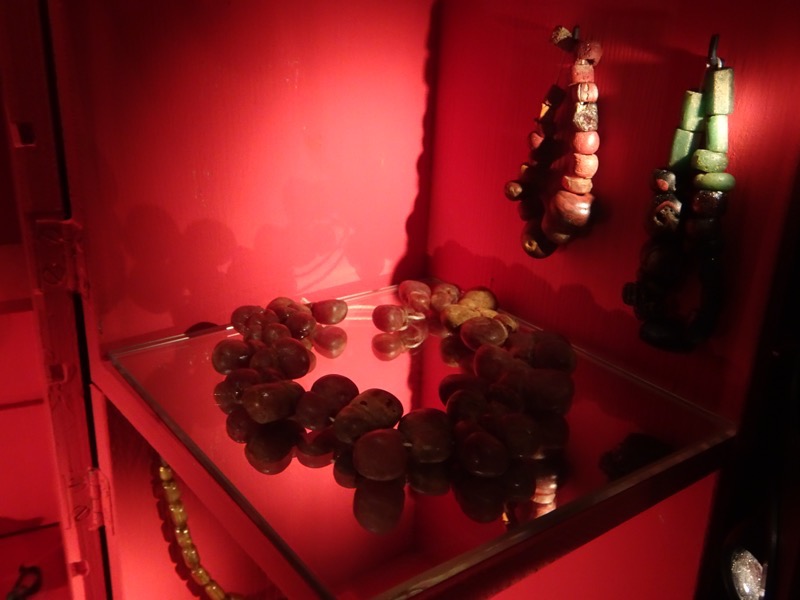
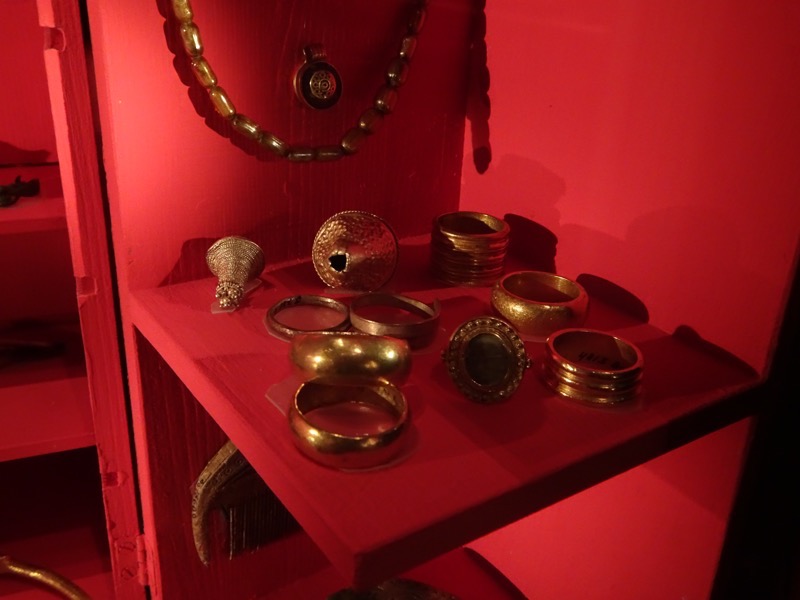
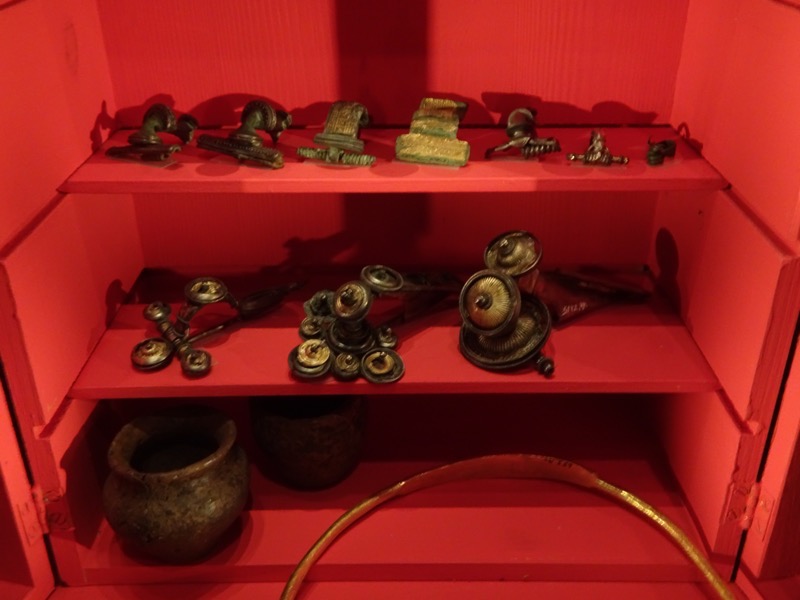
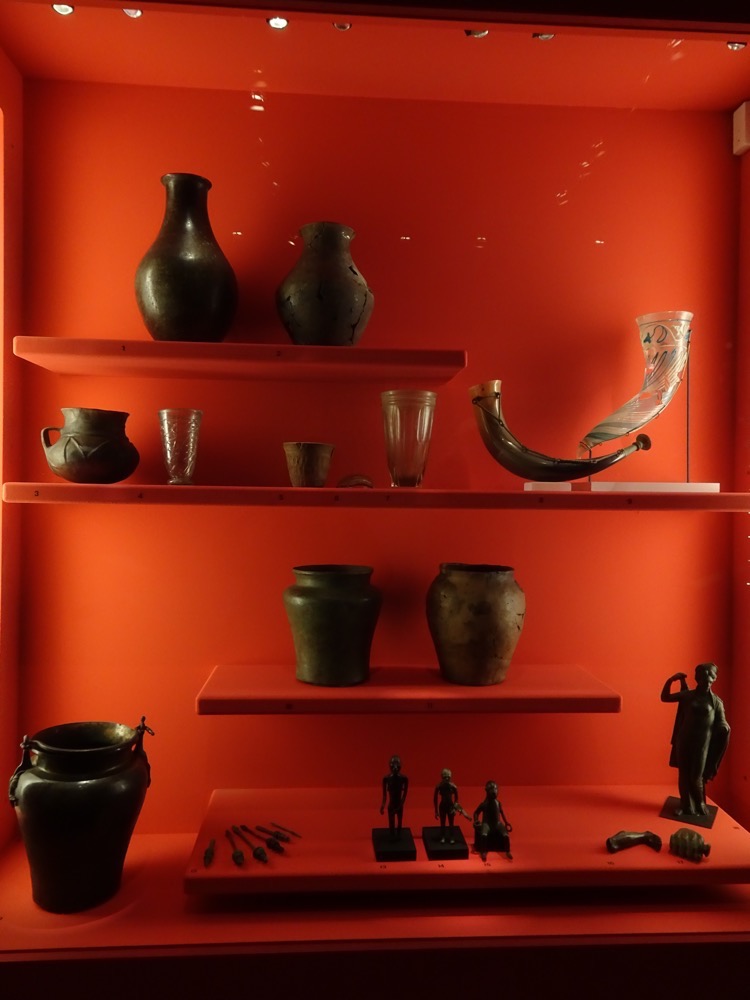
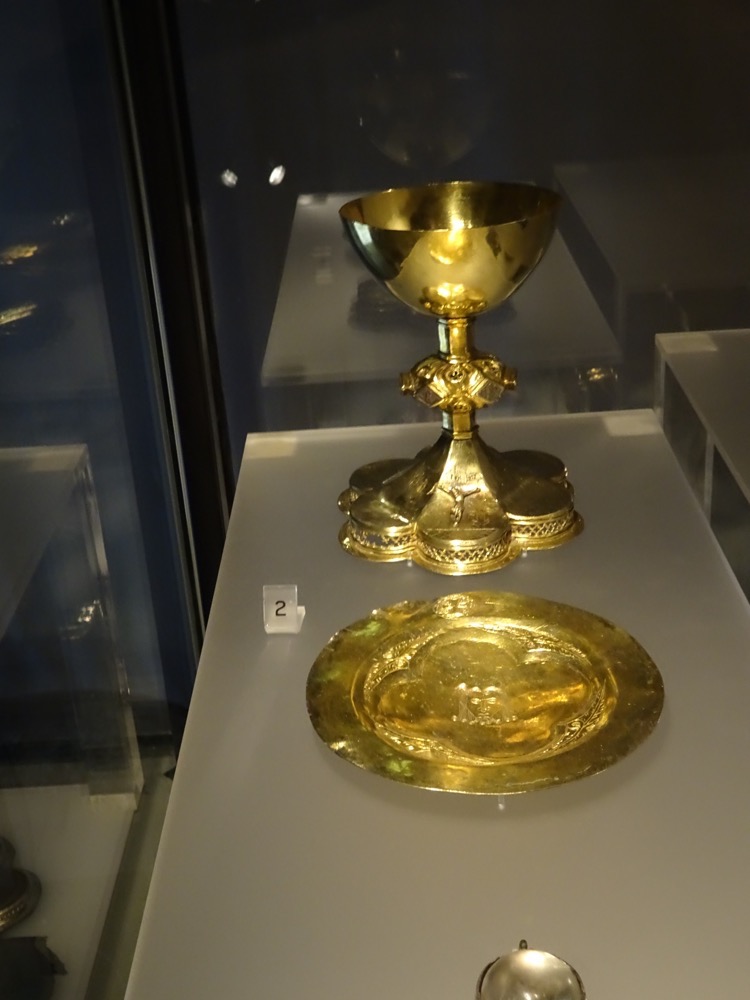
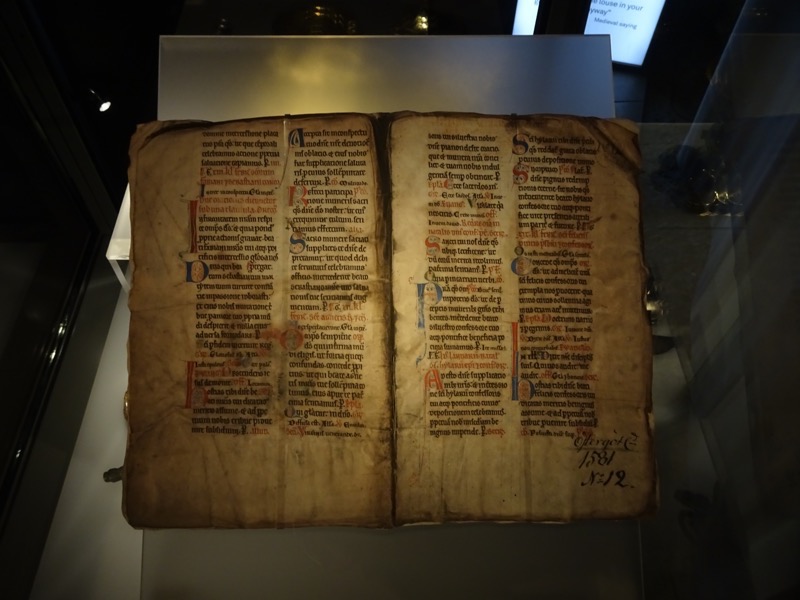 Impossible to photograph delicate filigree chain…
Impossible to photograph delicate filigree chain…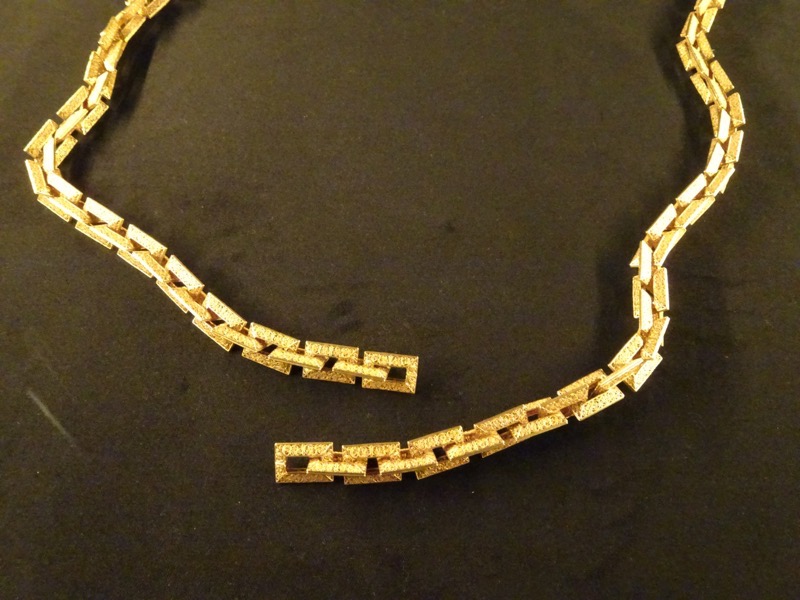
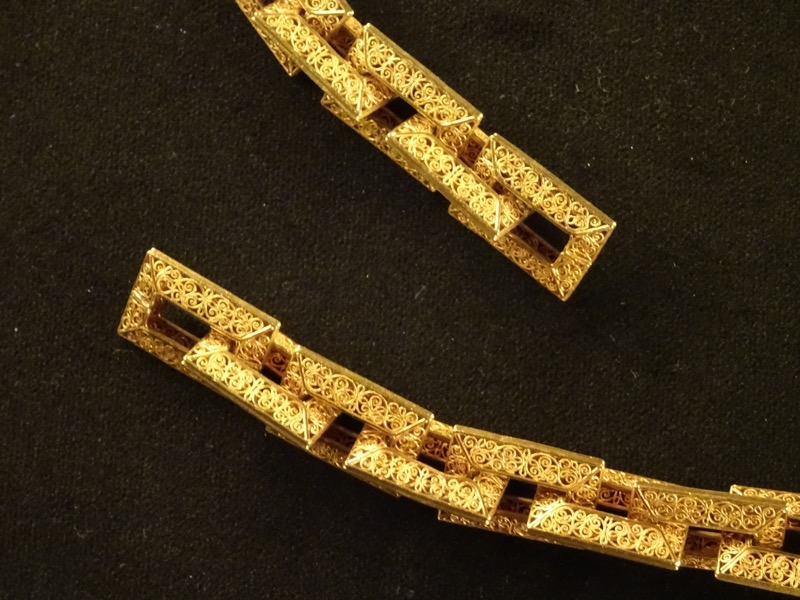
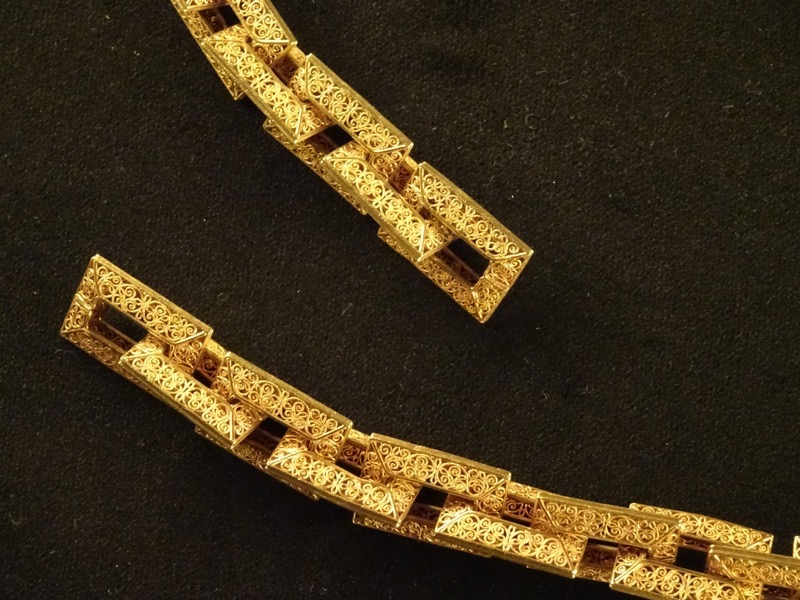 Prayer book for Malin Sture, a young woman of a noble family in Sodermanland, Horningsholm, c.1599.
Prayer book for Malin Sture, a young woman of a noble family in Sodermanland, Horningsholm, c.1599.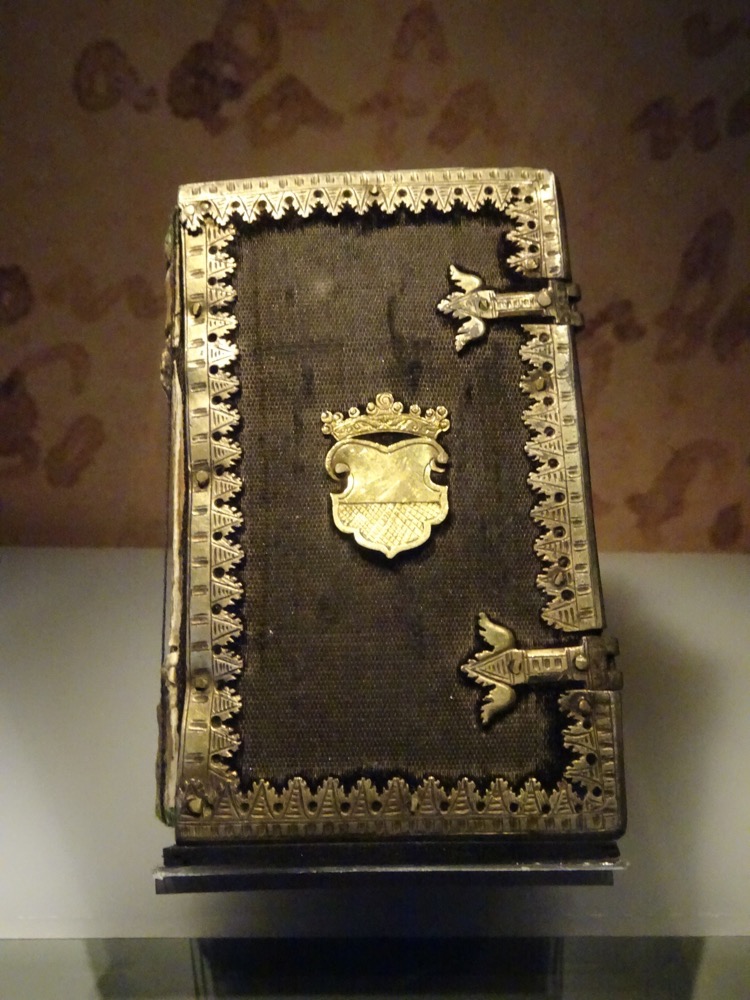 Jewelled pendant owned by Queen Maria Eleanora (1599-1655).
Jewelled pendant owned by Queen Maria Eleanora (1599-1655).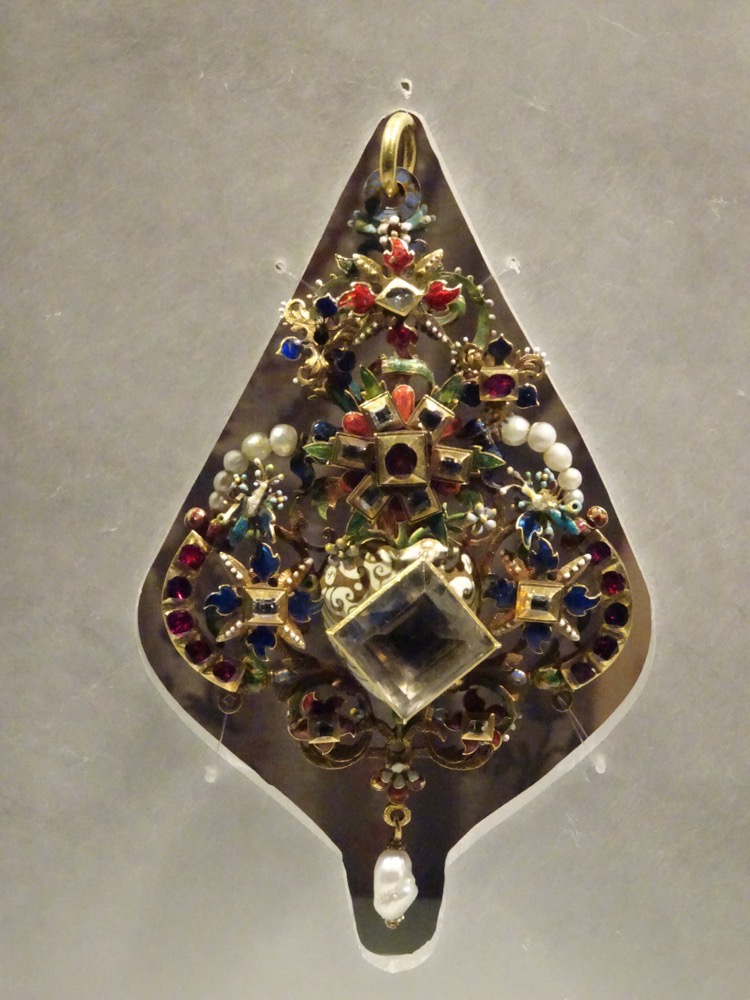
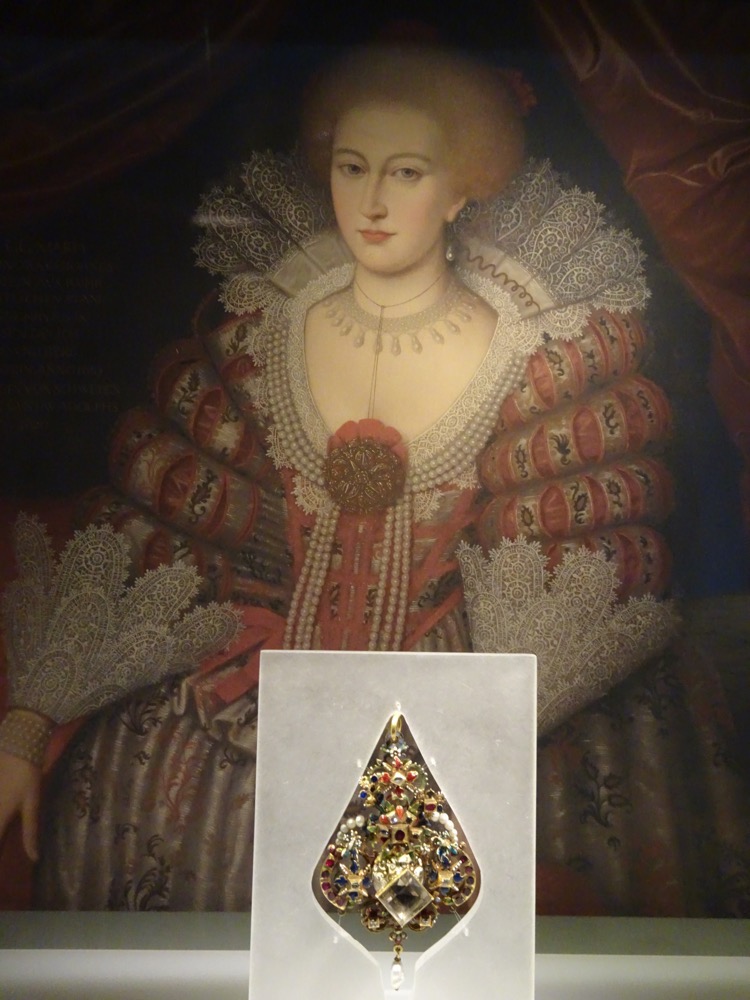

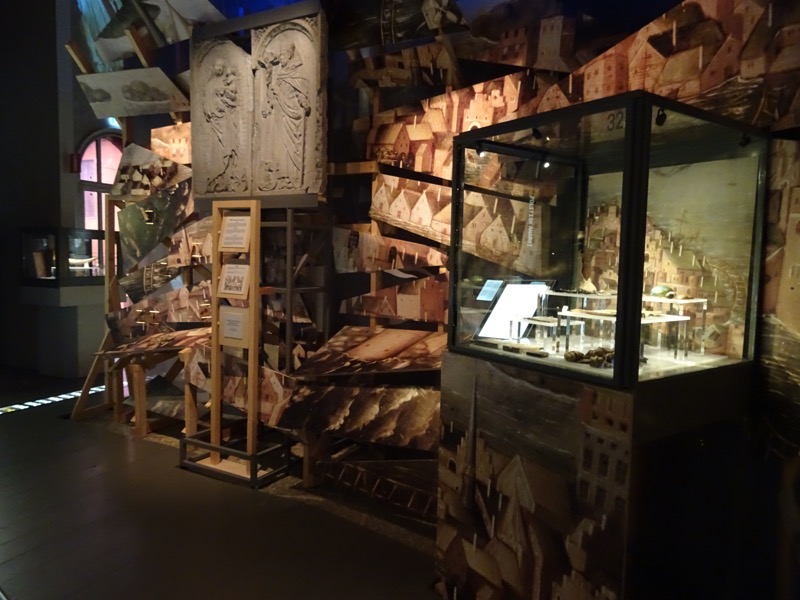
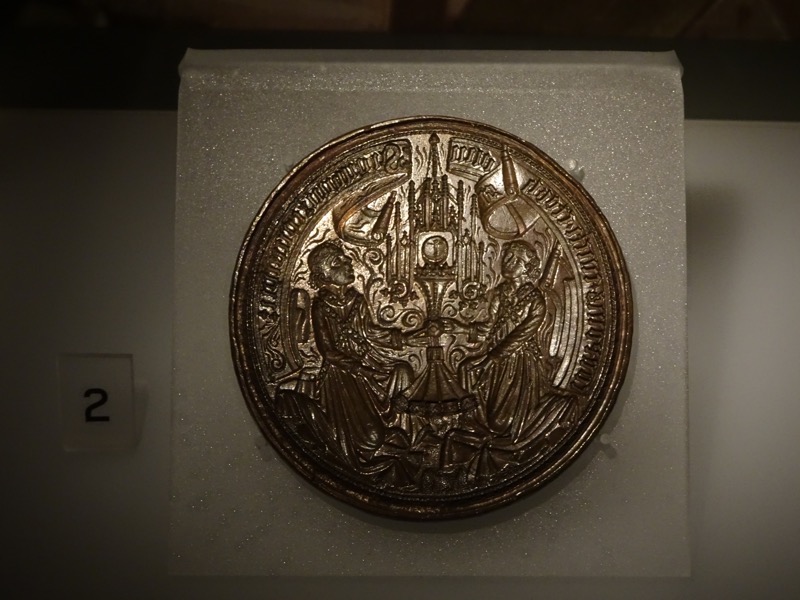
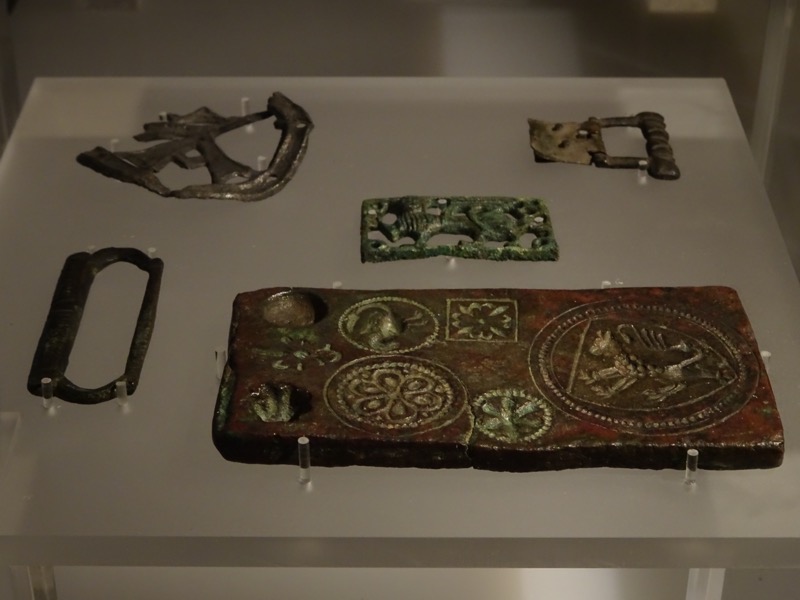 Everyday objects from the medieval town strata in Uppsala and Strngnas – a child’s shoe, a casing mould and a book cover 1100-1500AD.
Everyday objects from the medieval town strata in Uppsala and Strngnas – a child’s shoe, a casing mould and a book cover 1100-1500AD.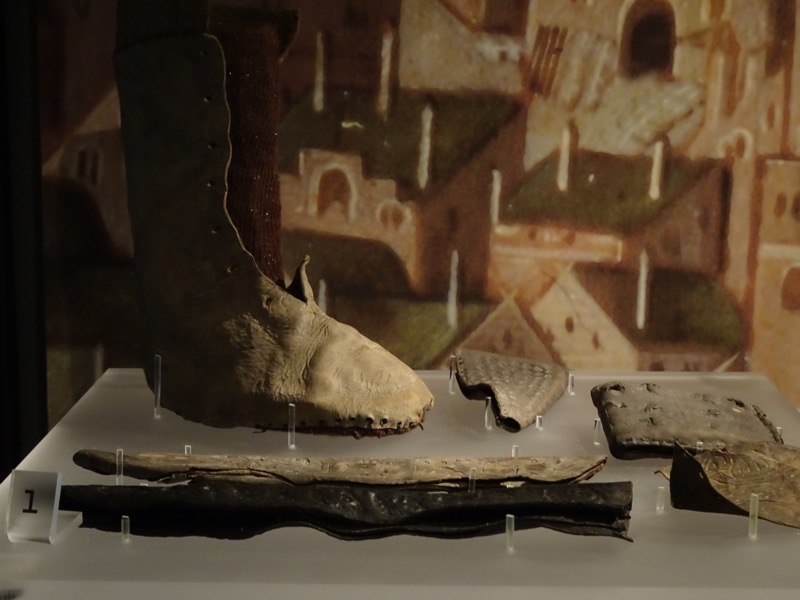
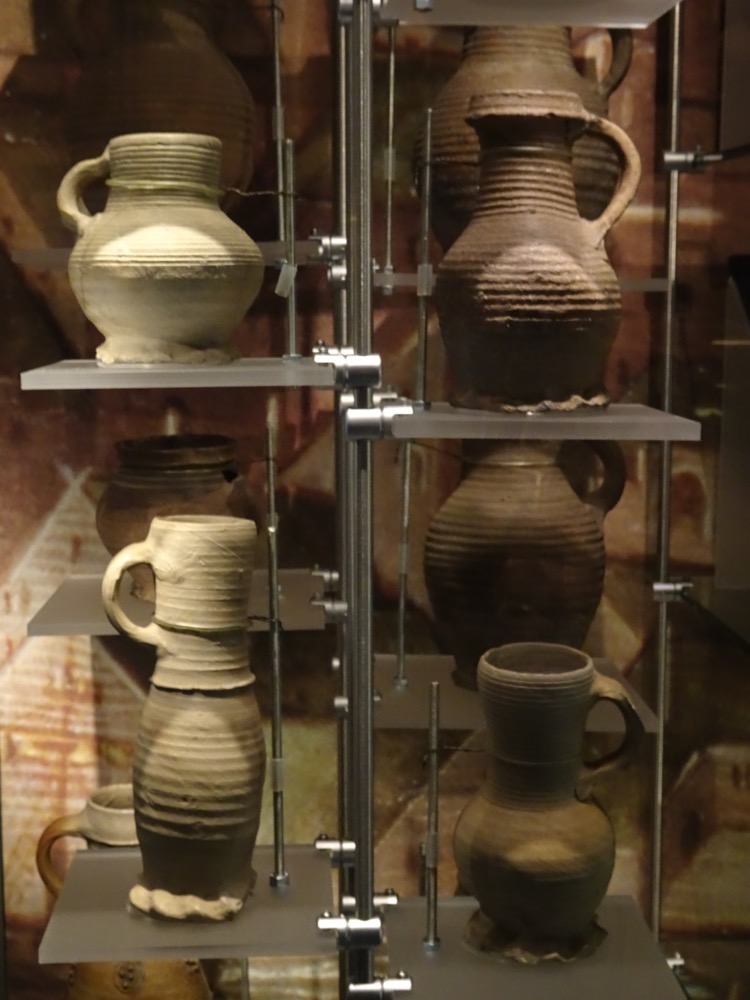
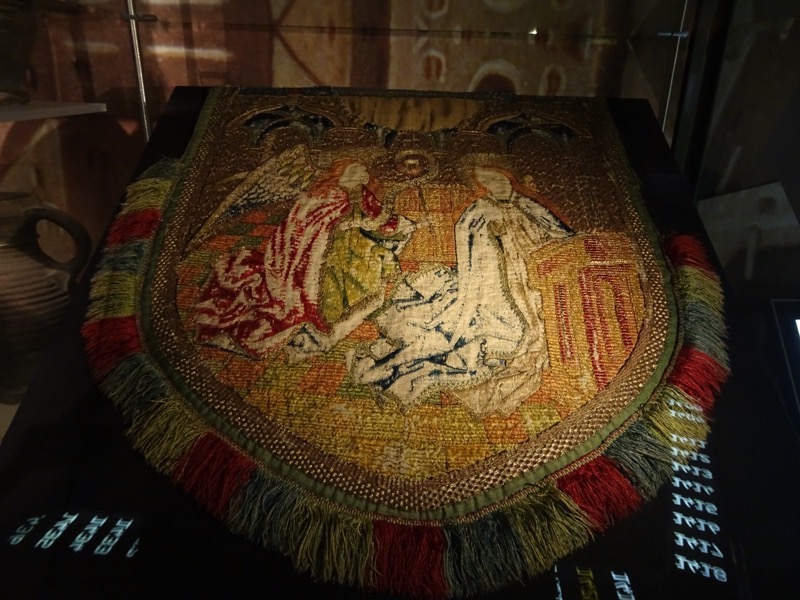
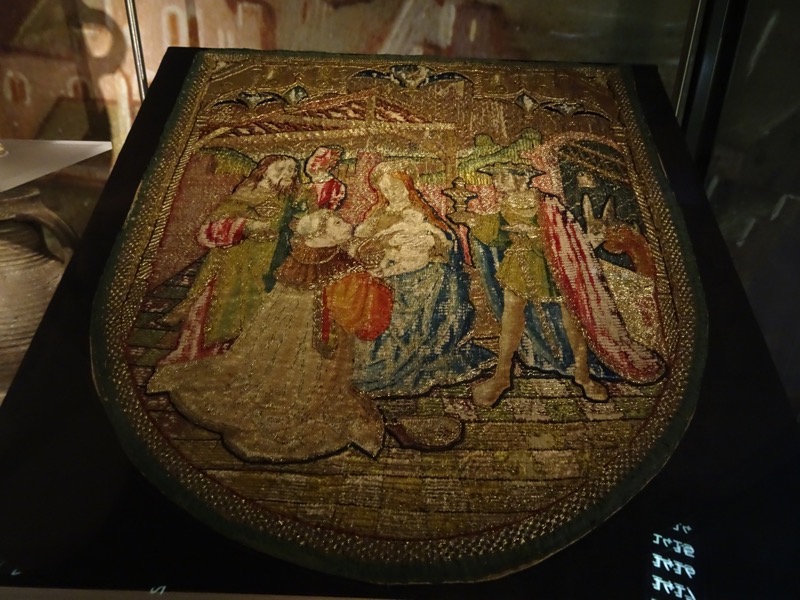 Silver gilt goblet for King Karl Knutsson Bonde, Vastmanland, Angso Castle, 1468-1470.
Silver gilt goblet for King Karl Knutsson Bonde, Vastmanland, Angso Castle, 1468-1470.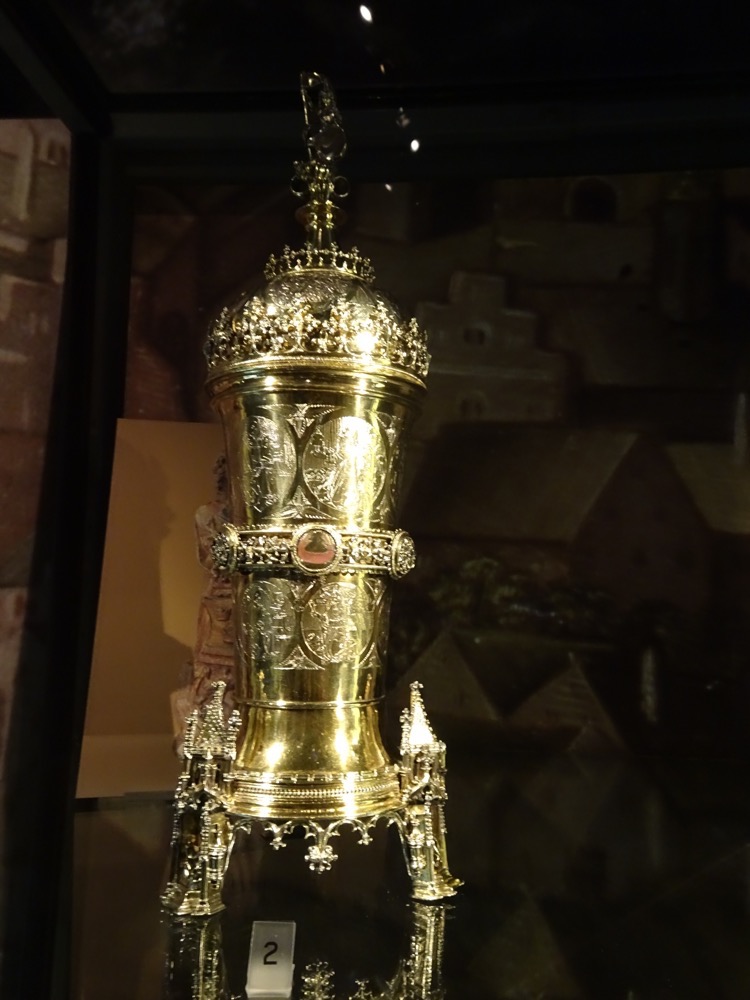
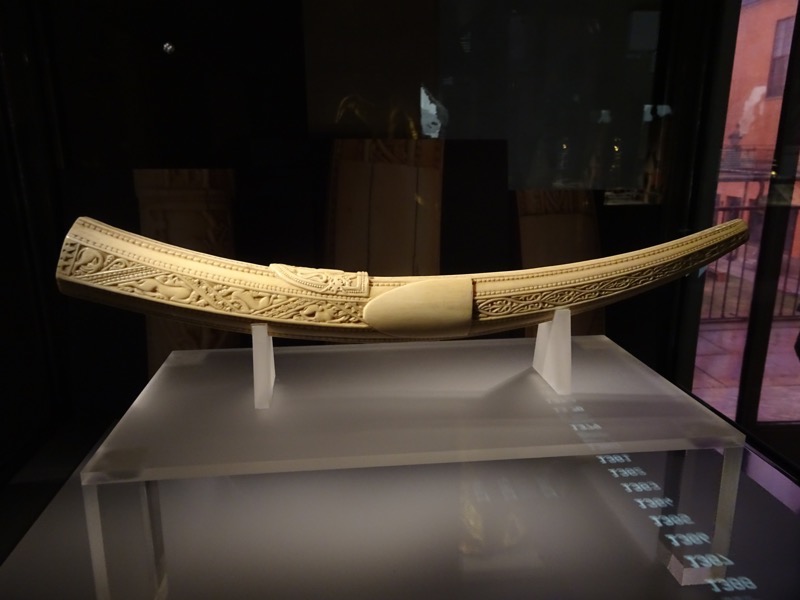 Reconstruction of Qeuun Marget’s gown – the original woven of cloth of gold, belongs to Uppsala Cathedral Museum, c15th century.
Reconstruction of Qeuun Marget’s gown – the original woven of cloth of gold, belongs to Uppsala Cathedral Museum, c15th century.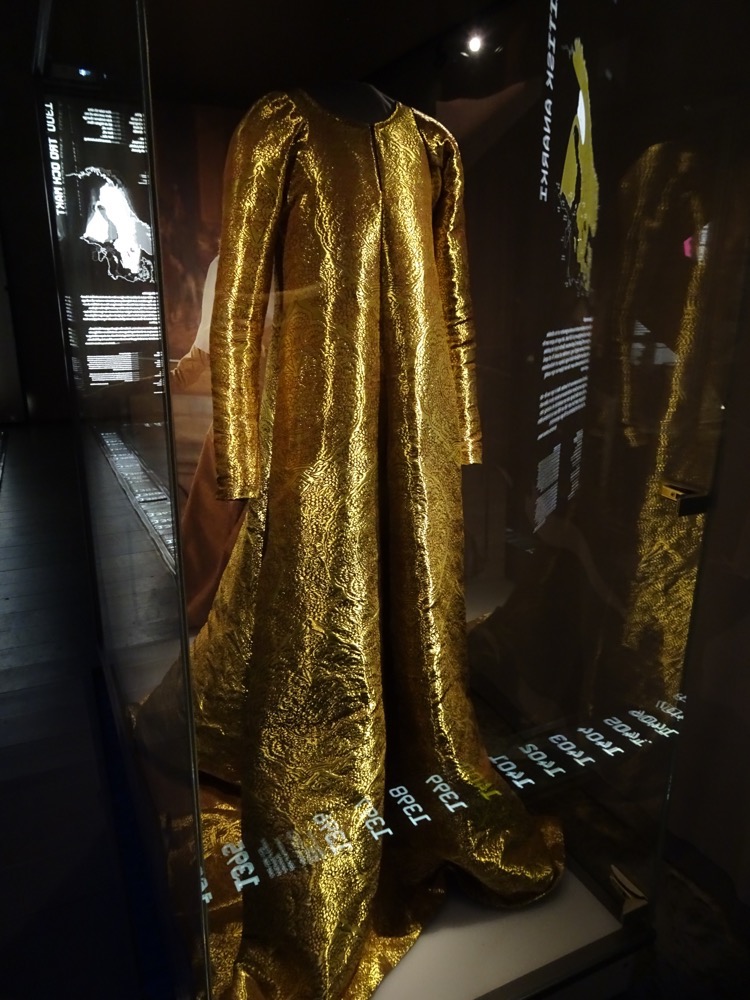
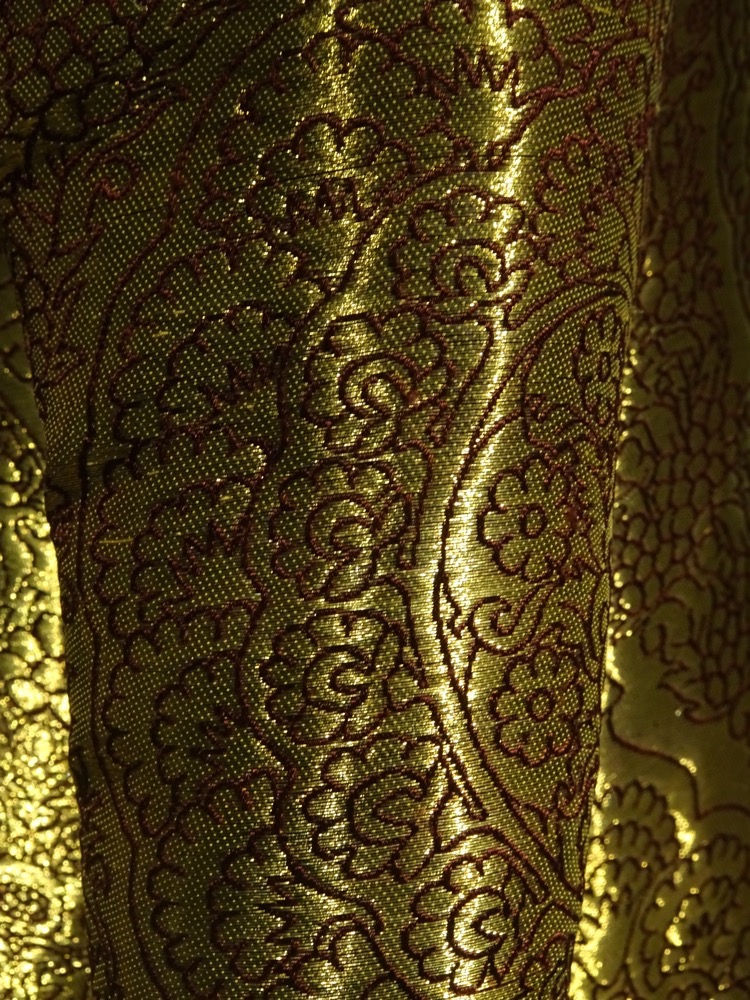 St Briget – details of the altarpiece, depicting different ages of Briget. Ostergotland, Appuna Church, 1450-1475.
St Briget – details of the altarpiece, depicting different ages of Briget. Ostergotland, Appuna Church, 1450-1475.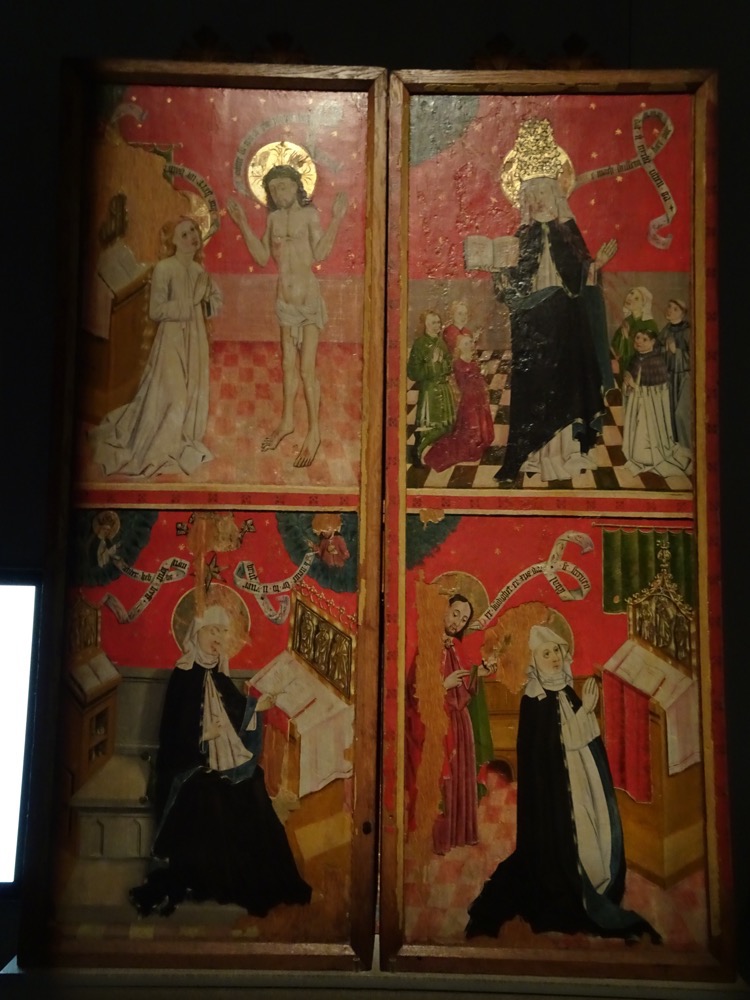
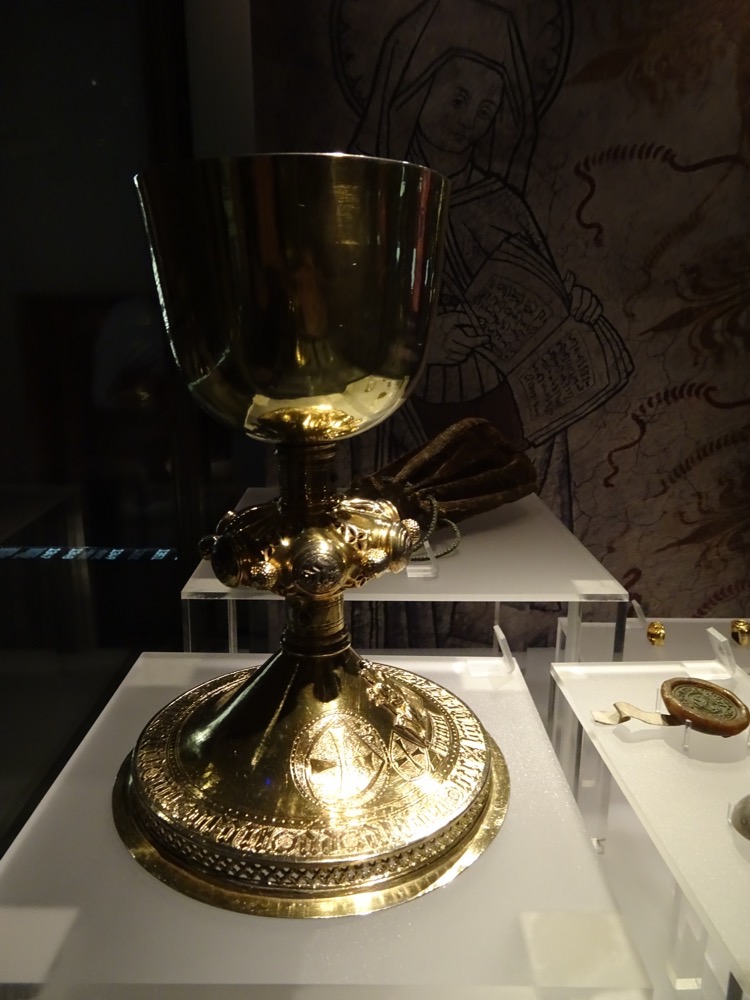
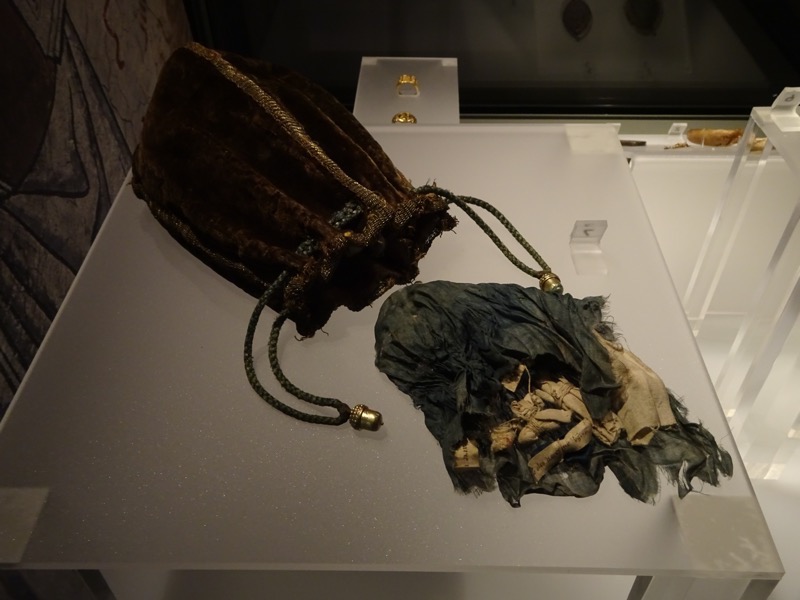
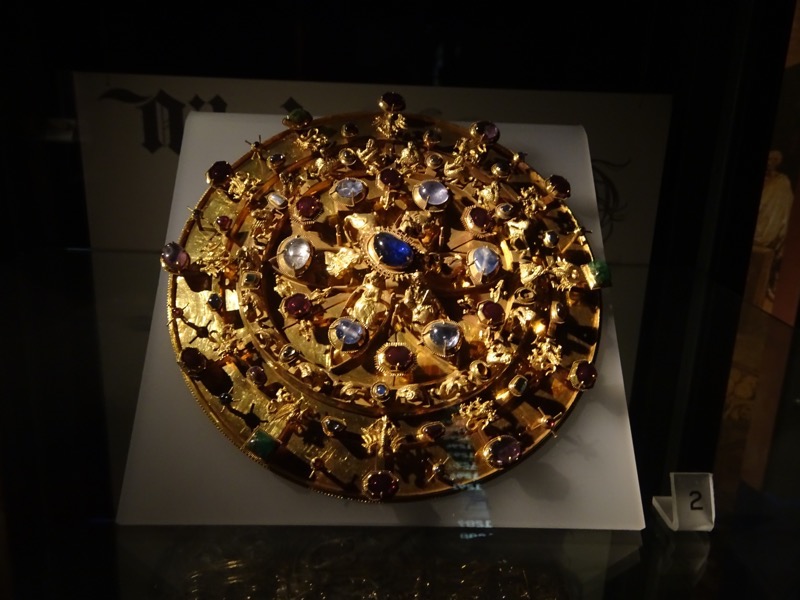
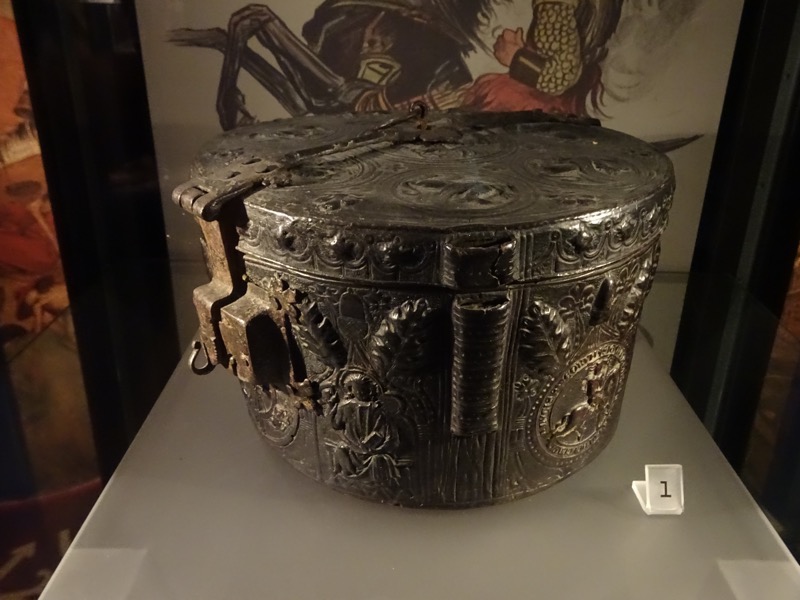
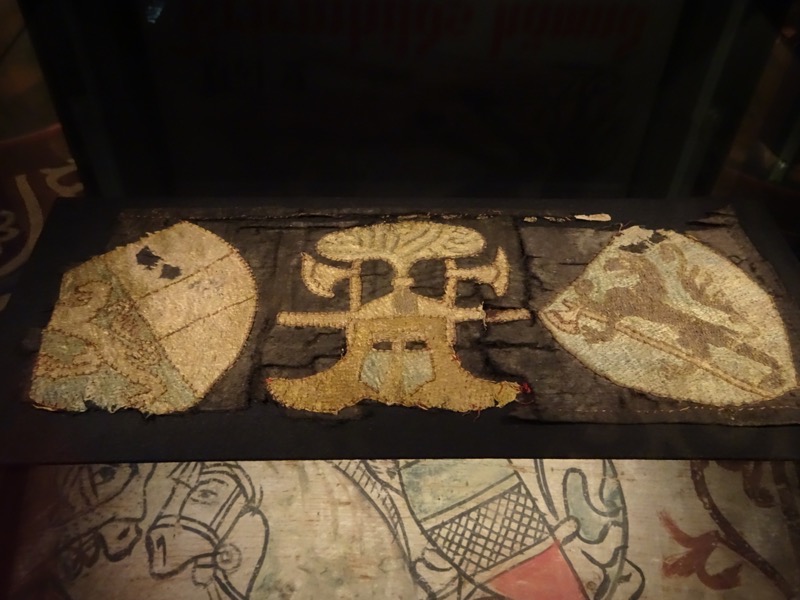
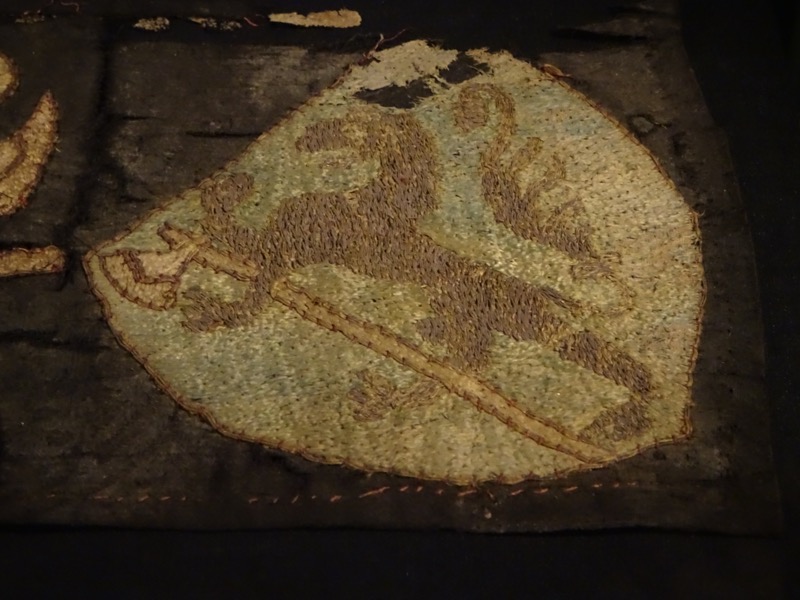 Broadleaf-wood drinking horn. Uppland c.1300-1400AD.
Broadleaf-wood drinking horn. Uppland c.1300-1400AD.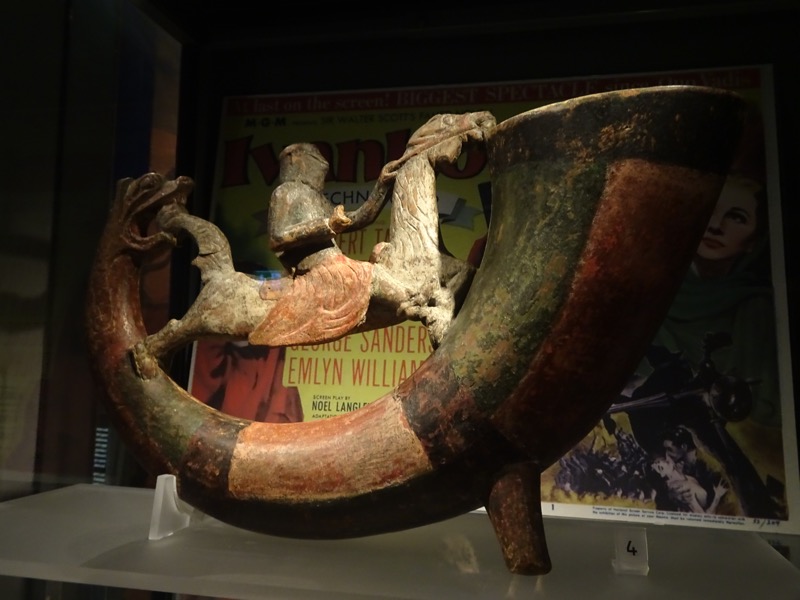 Oak reliquary, overdrawn with gilded copper, Vastergotland, Eriksberg Church, c.1175AD
Oak reliquary, overdrawn with gilded copper, Vastergotland, Eriksberg Church, c.1175AD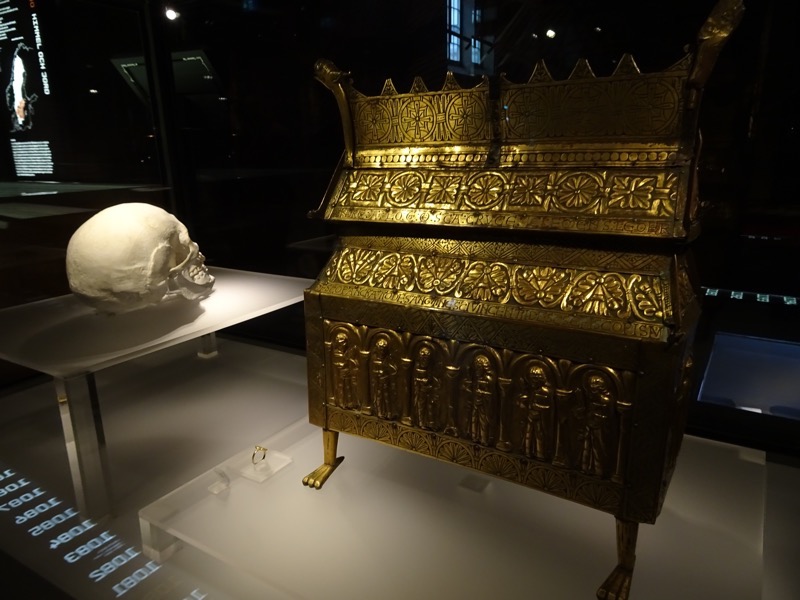
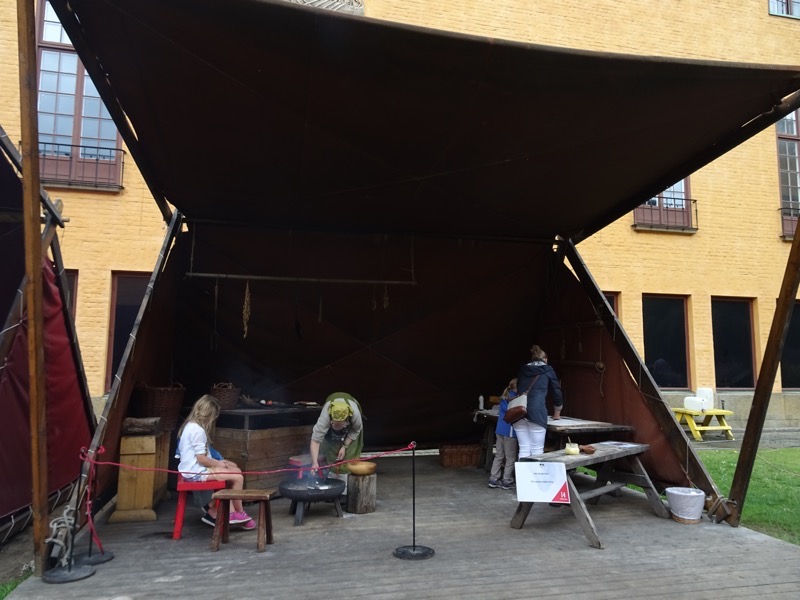
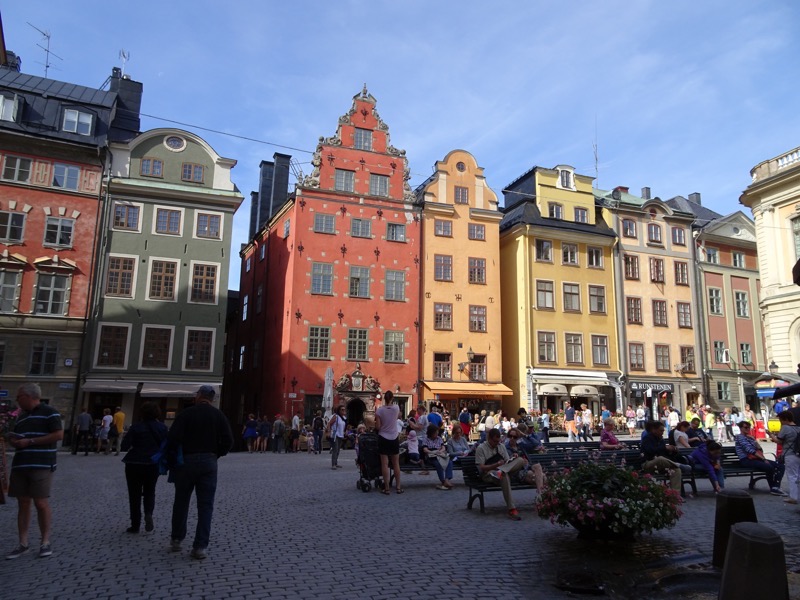 This was the Stock Exchange Building, before becoming the Nobel Museum.
This was the Stock Exchange Building, before becoming the Nobel Museum. 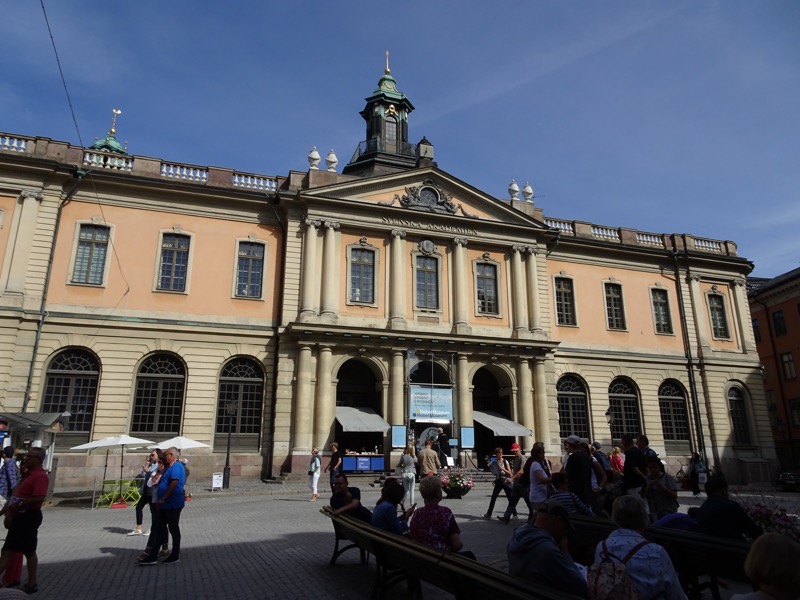
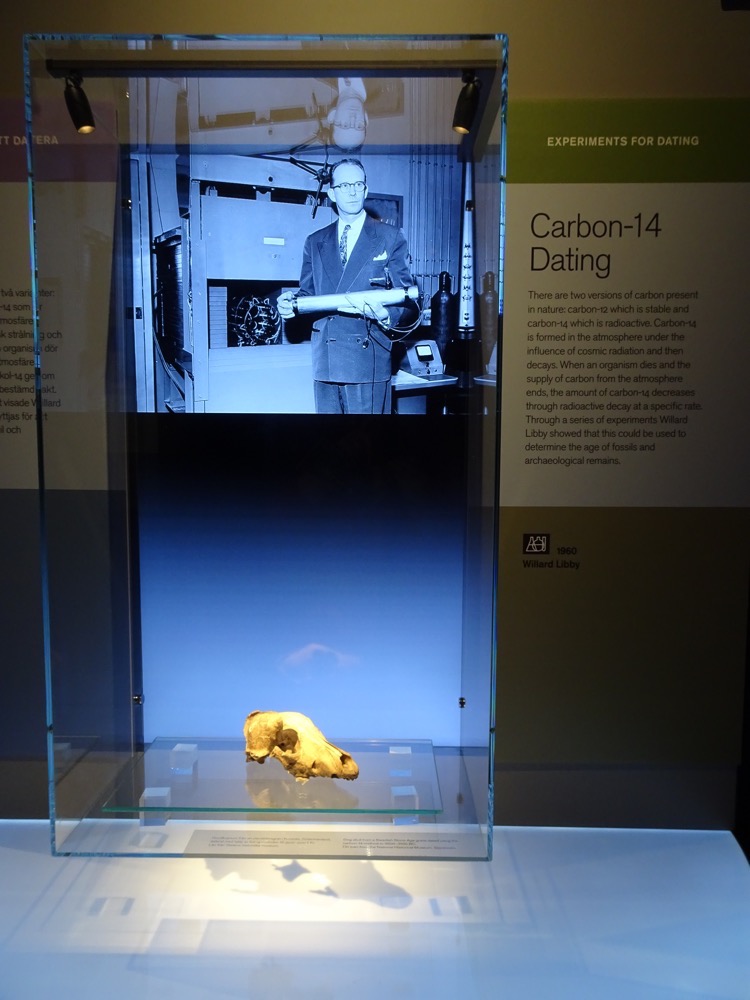
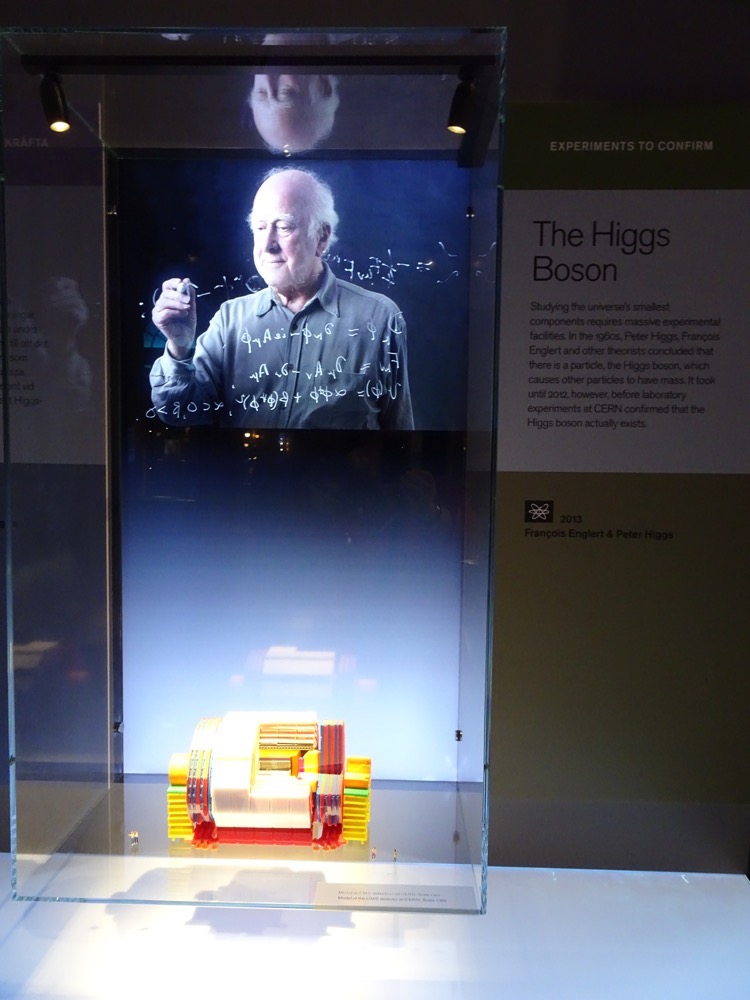 Around the corner is the Royal Palace – Kungliga Slottet. While the Swedish royal family actually reside now at the Drottningholm Palace, all the offices of the Royal Court of Sweden are located here, and all royal duties performed by King Carl XVI and Queen Silvia as heads of state are performed here.
Around the corner is the Royal Palace – Kungliga Slottet. While the Swedish royal family actually reside now at the Drottningholm Palace, all the offices of the Royal Court of Sweden are located here, and all royal duties performed by King Carl XVI and Queen Silvia as heads of state are performed here.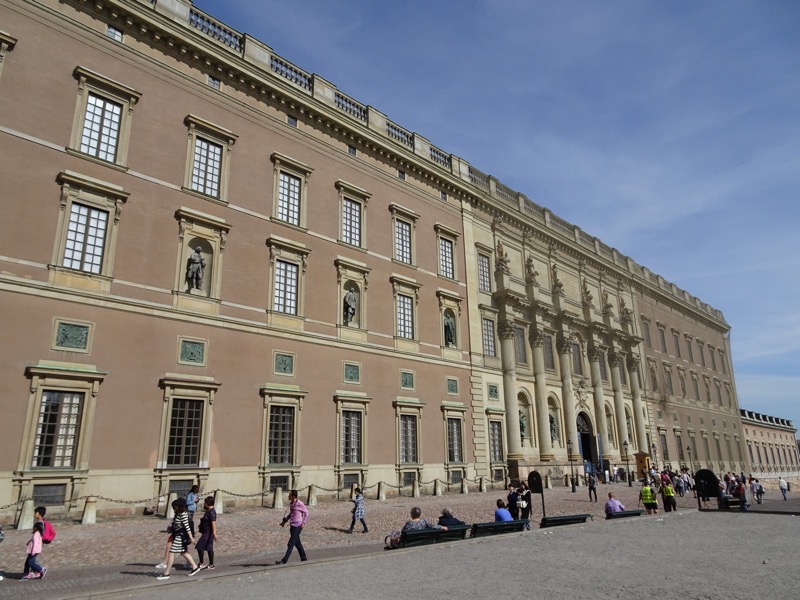
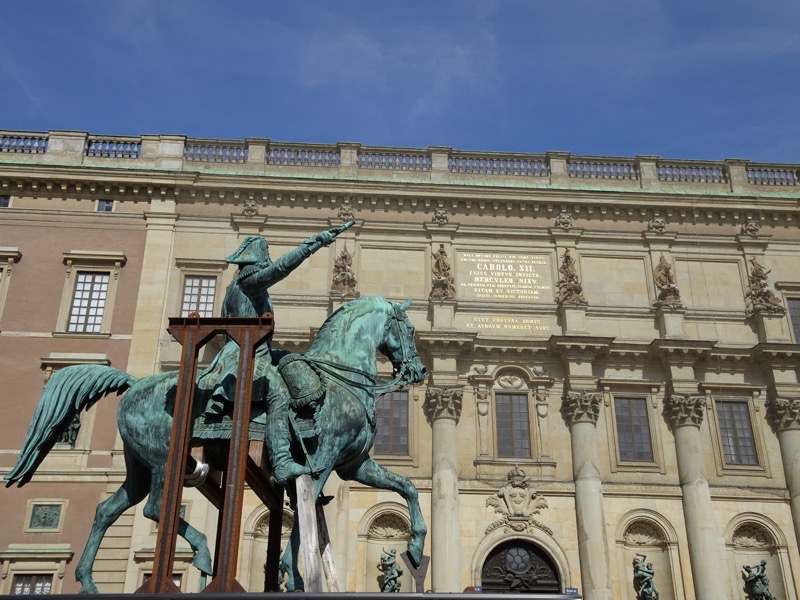
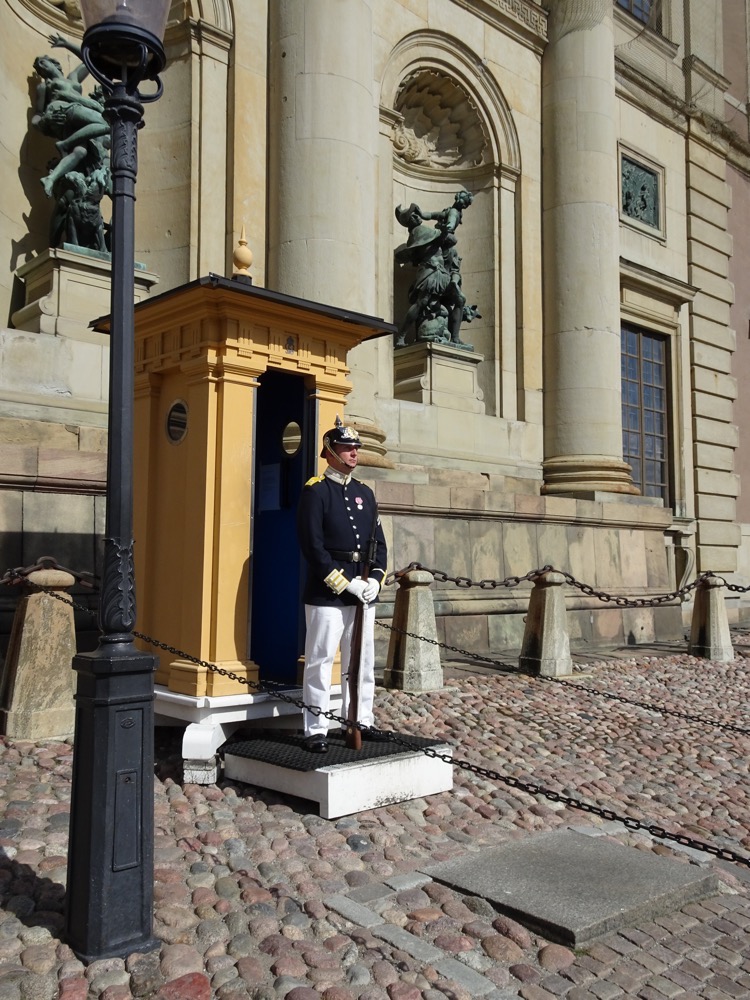 The main entrance hall.
The main entrance hall.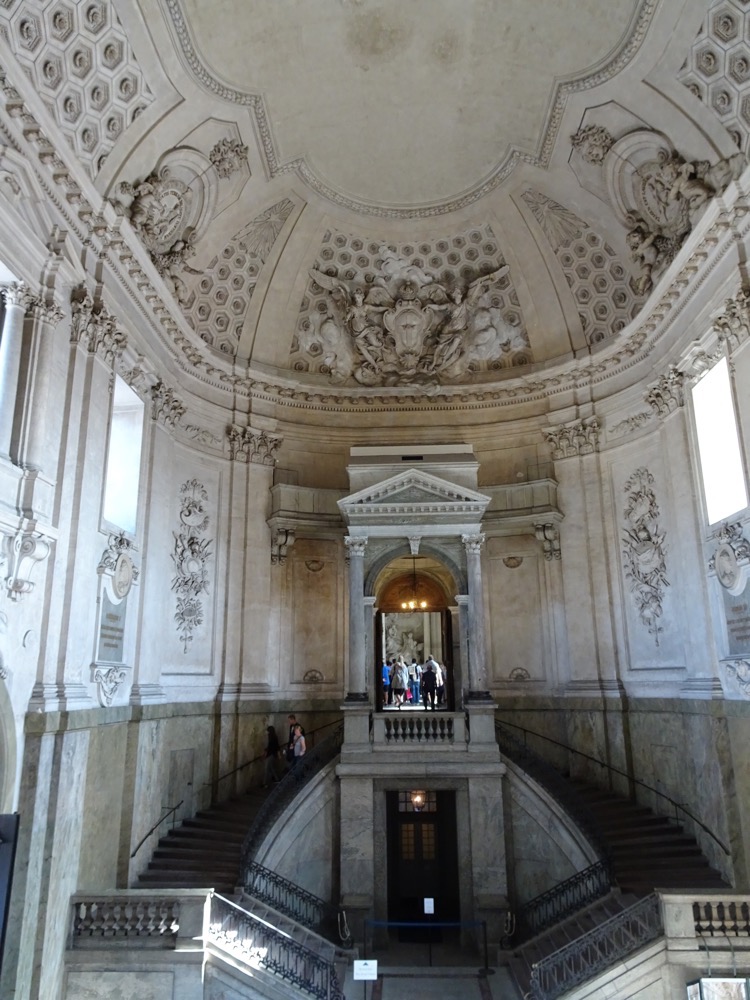 Audience chamber.
Audience chamber.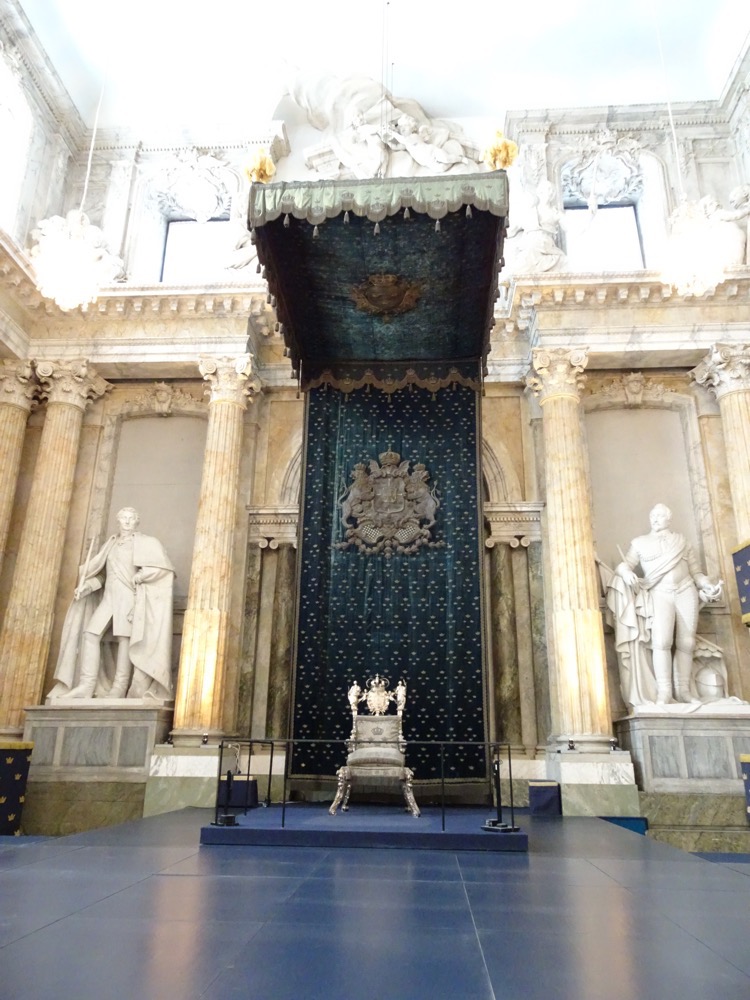
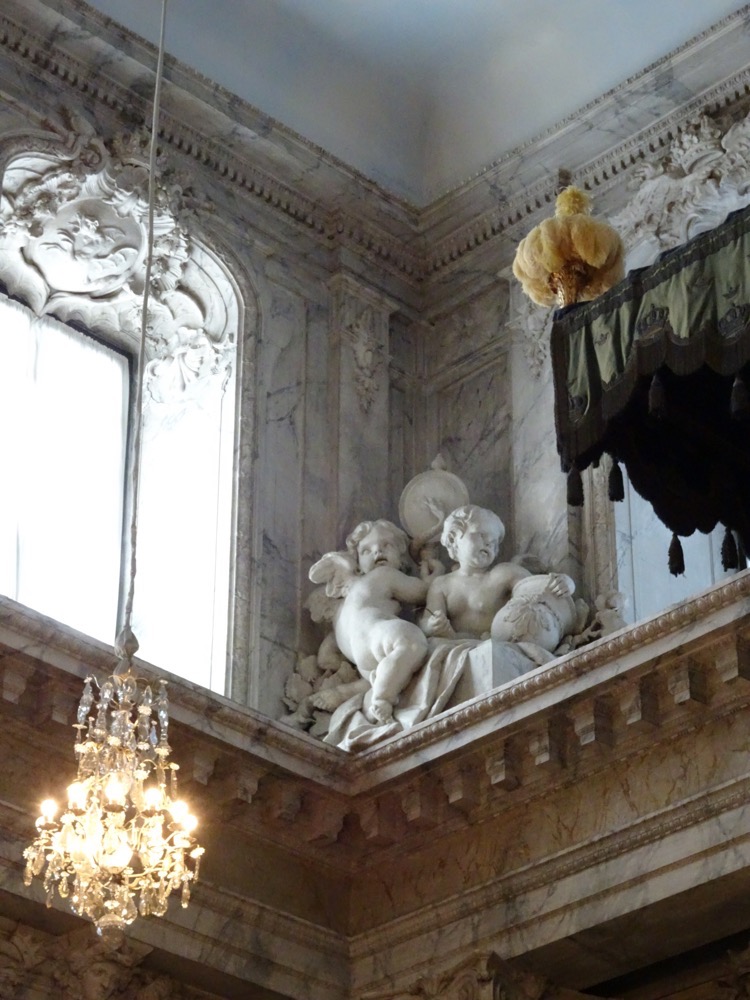 The Apartments of the Orders of Chivalry
The Apartments of the Orders of Chivalry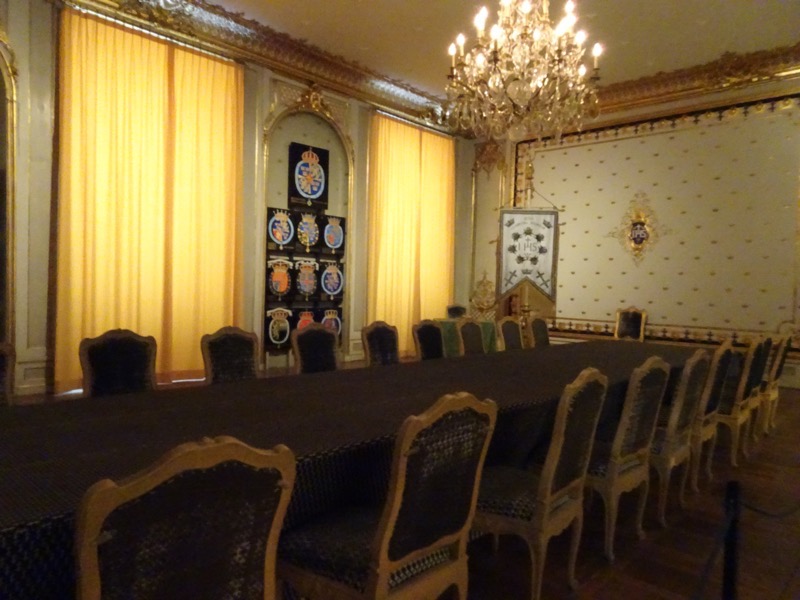
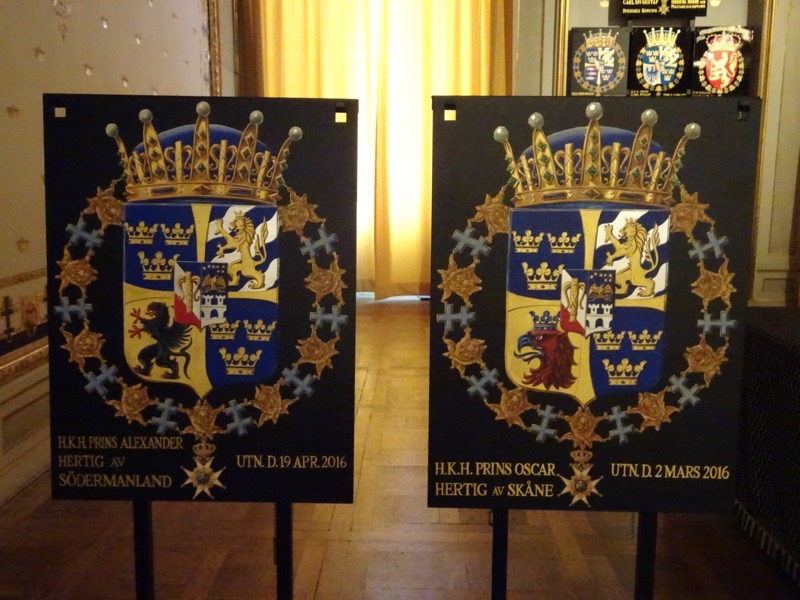 Random bit of wall panelling…
Random bit of wall panelling…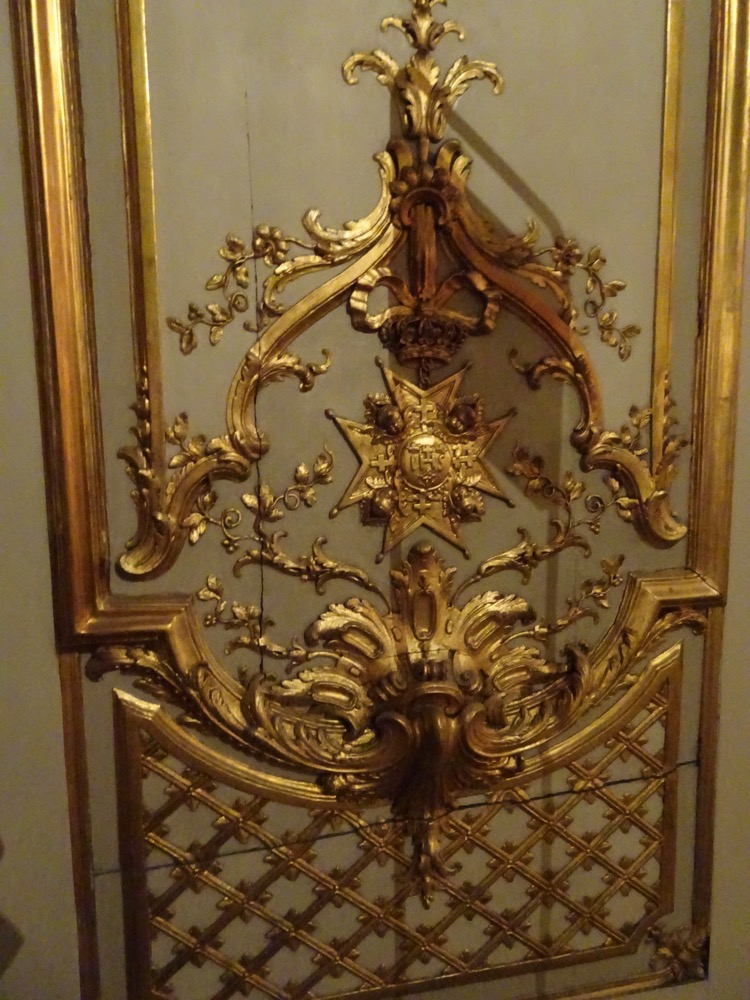 Probably affectionately refered to as the Blue Room, the Red Room and the Green Room, the Apartments of the Orders of Chivalry are decked out with displays of regalia – uniforms and fealty chains (dating from the 18th-20thC).
Probably affectionately refered to as the Blue Room, the Red Room and the Green Room, the Apartments of the Orders of Chivalry are decked out with displays of regalia – uniforms and fealty chains (dating from the 18th-20thC).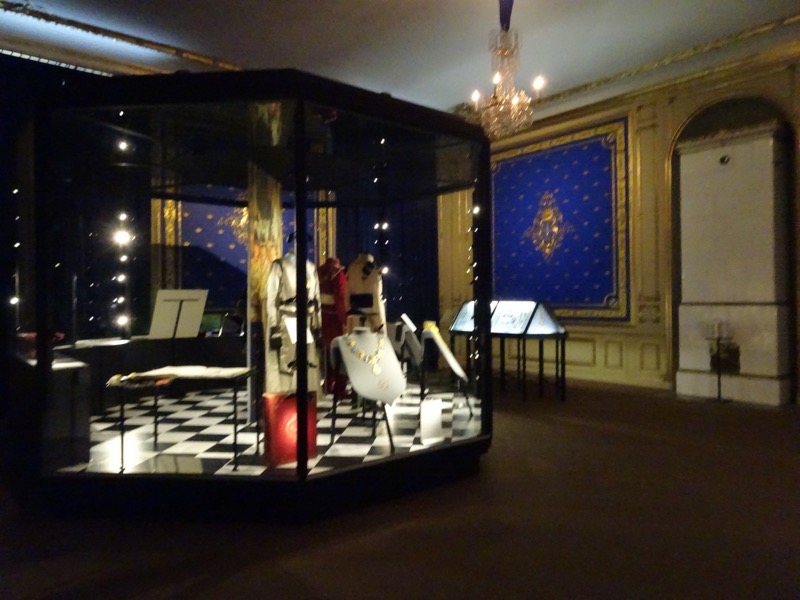
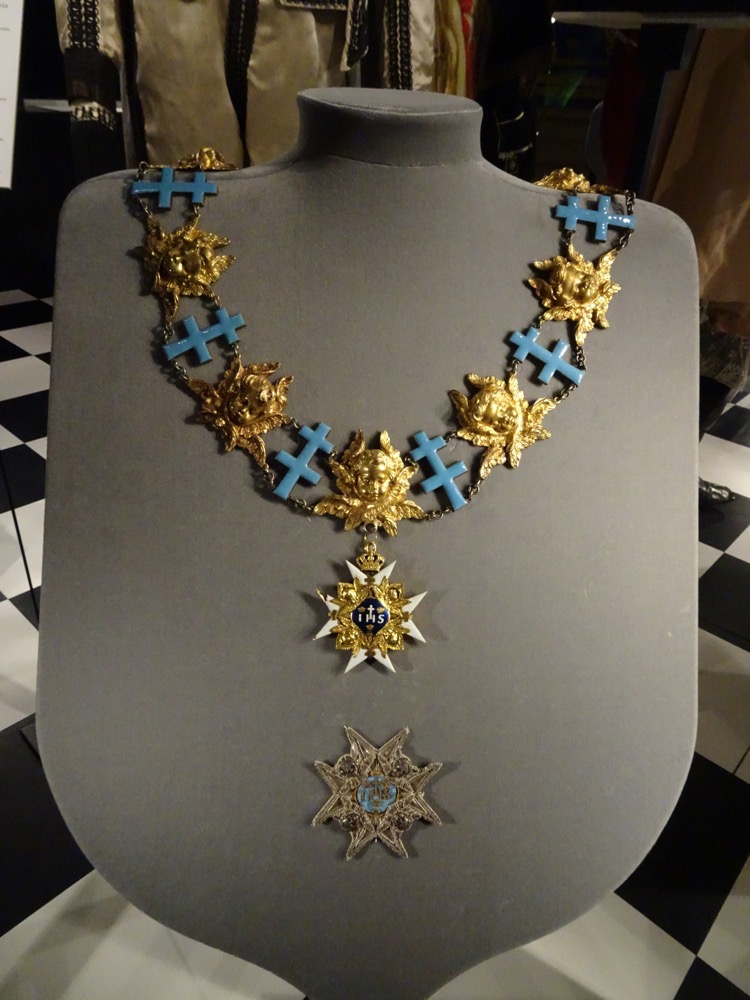
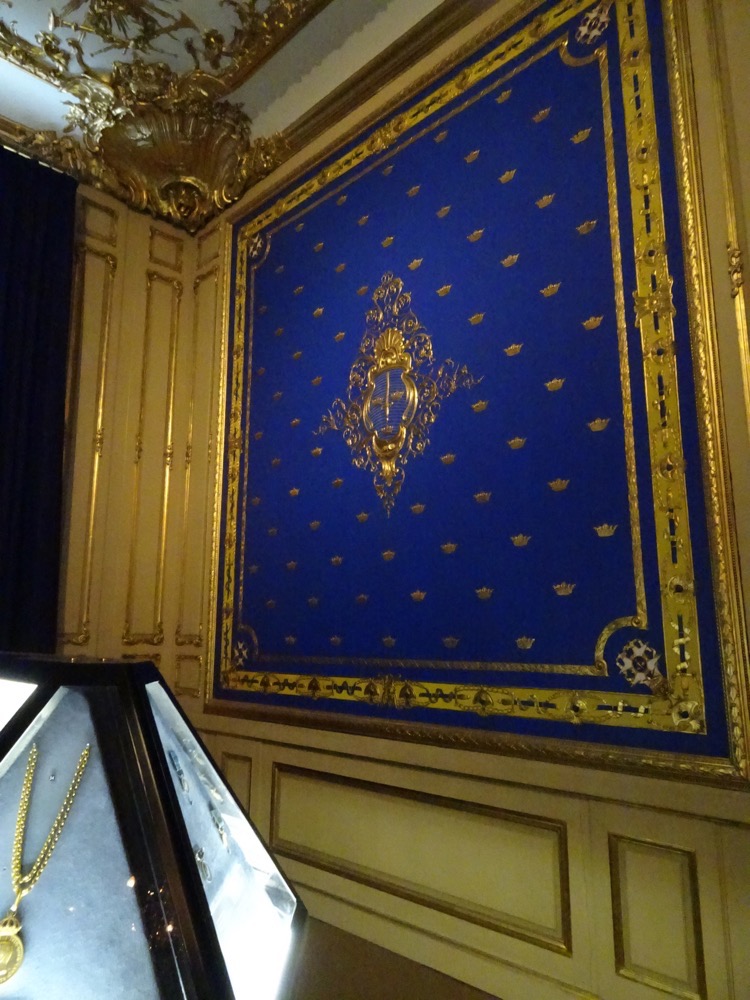 The detail is just astonishing!
The detail is just astonishing!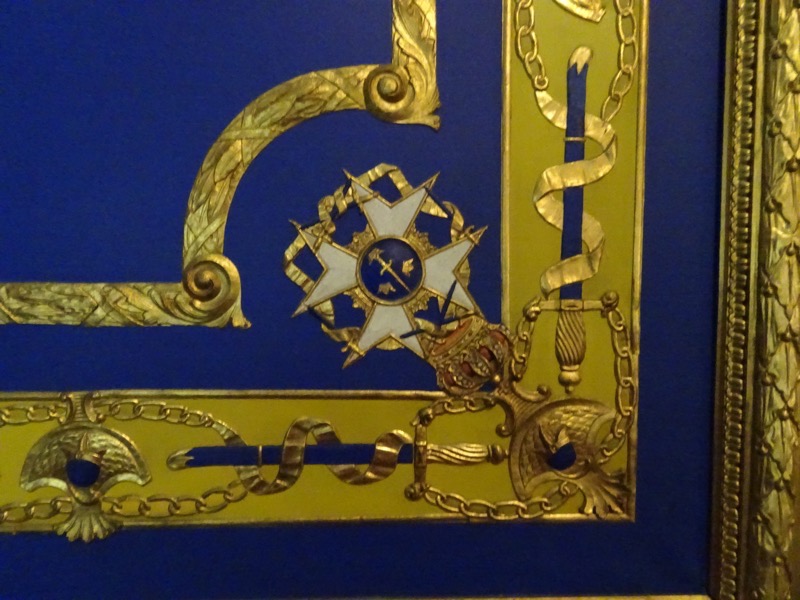 Below is a display of every award bestowed on one Prince Bertil of Sweden, Duke of Halland and son of King Gustaf VI Adolf of Sweden and his first wife, Princess Margaret of Connaught (18 February 1912 to 5 January 1997). I guess that was the thing – bestow all the awards and favours on your family.
Below is a display of every award bestowed on one Prince Bertil of Sweden, Duke of Halland and son of King Gustaf VI Adolf of Sweden and his first wife, Princess Margaret of Connaught (18 February 1912 to 5 January 1997). I guess that was the thing – bestow all the awards and favours on your family. 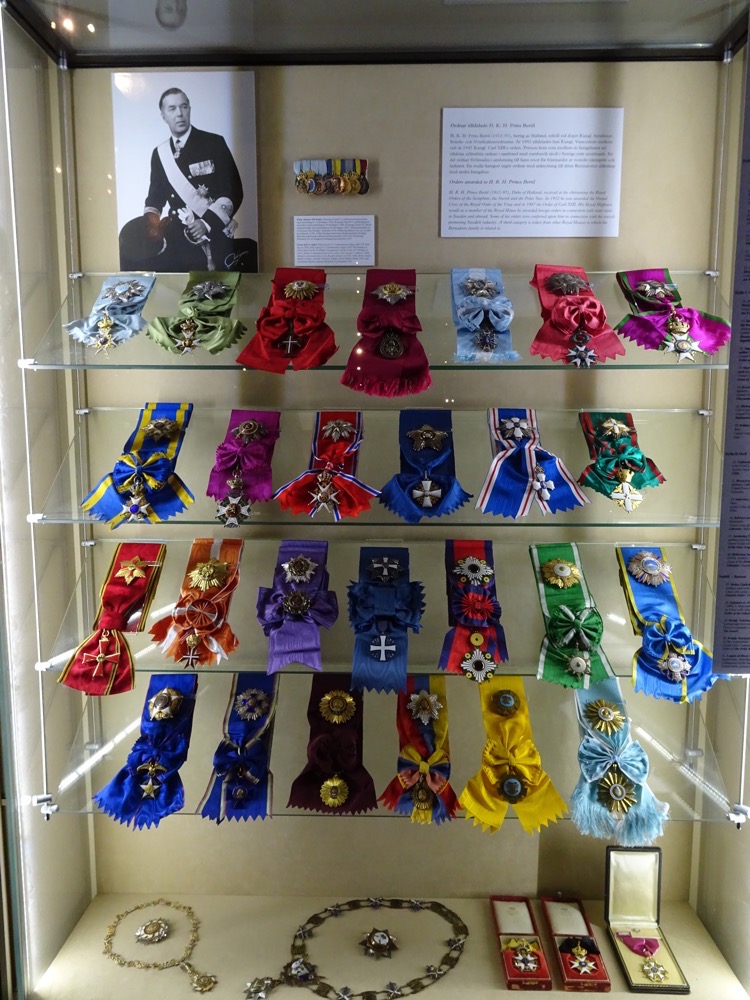
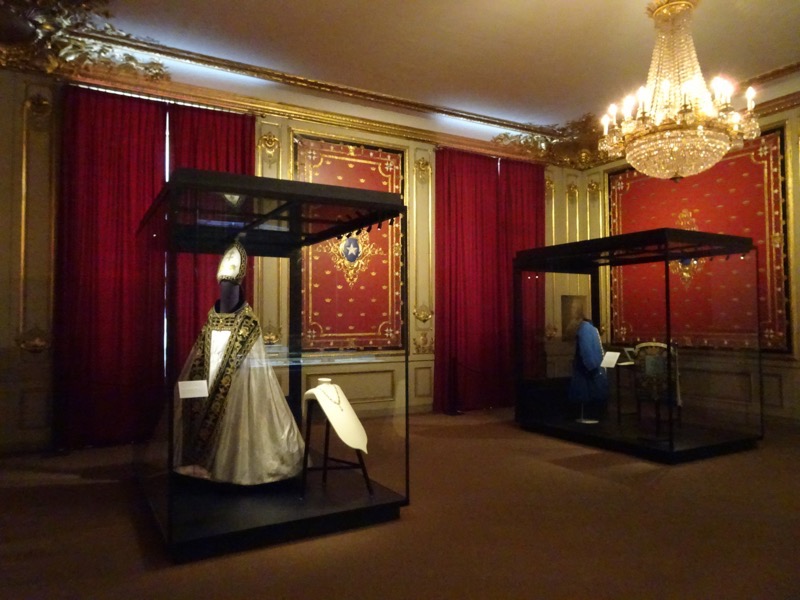
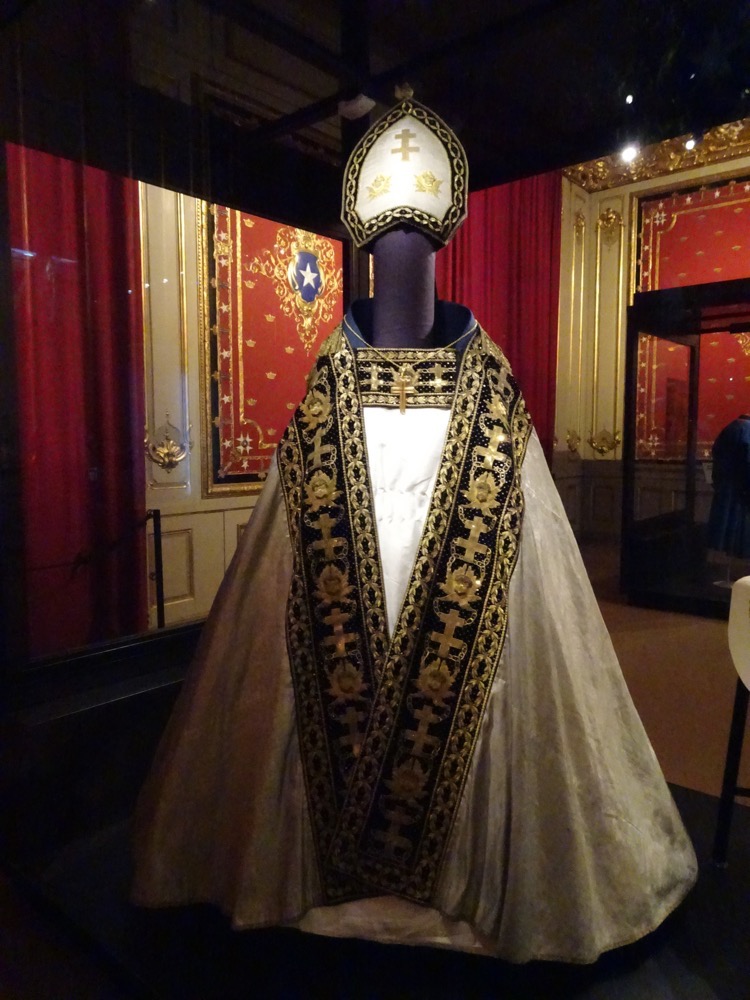 I was unable to get a photo of the gold work on this vestment – it was seriously impressive though.
I was unable to get a photo of the gold work on this vestment – it was seriously impressive though.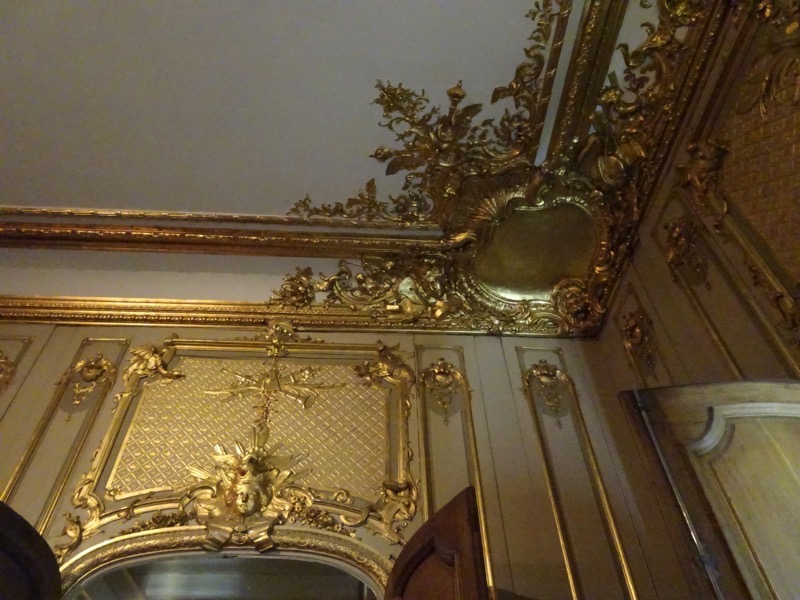 More crazy detail 20′ in the air. So much gilt!
More crazy detail 20′ in the air. So much gilt!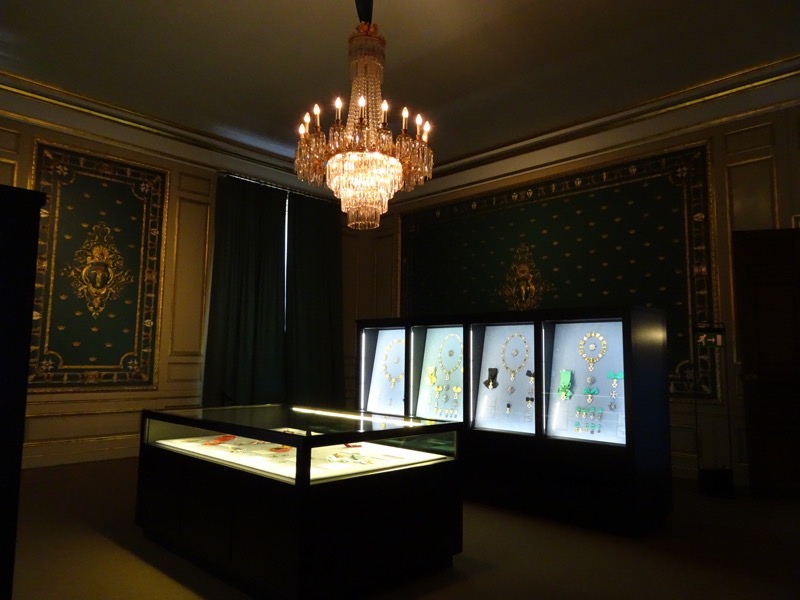
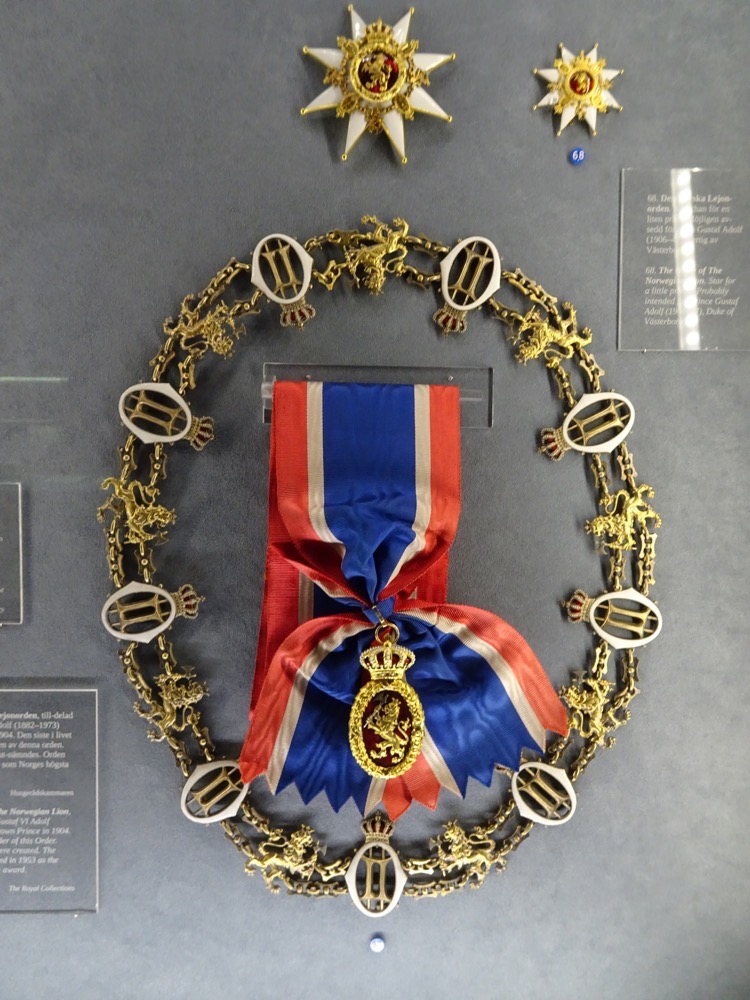
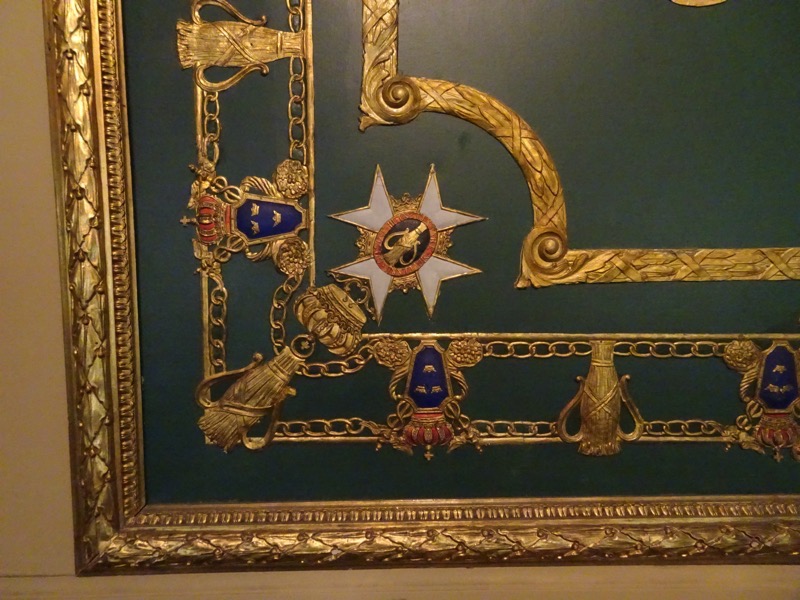
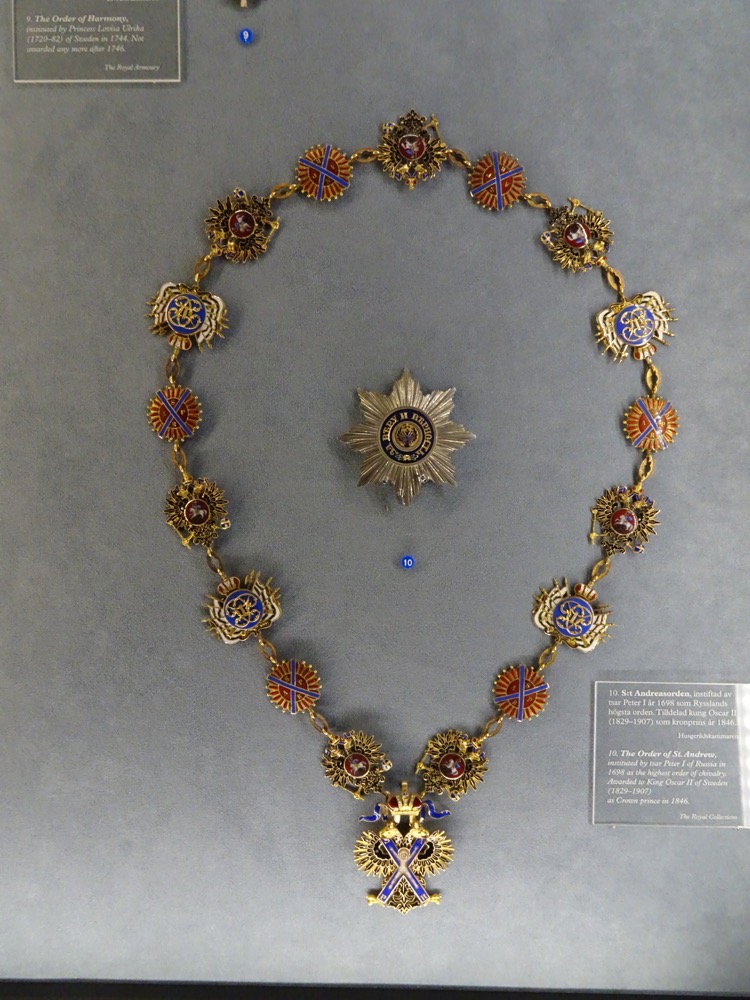 Below: Fealty Chain of the Order of the Annunciation – c.1518.
Below: Fealty Chain of the Order of the Annunciation – c.1518.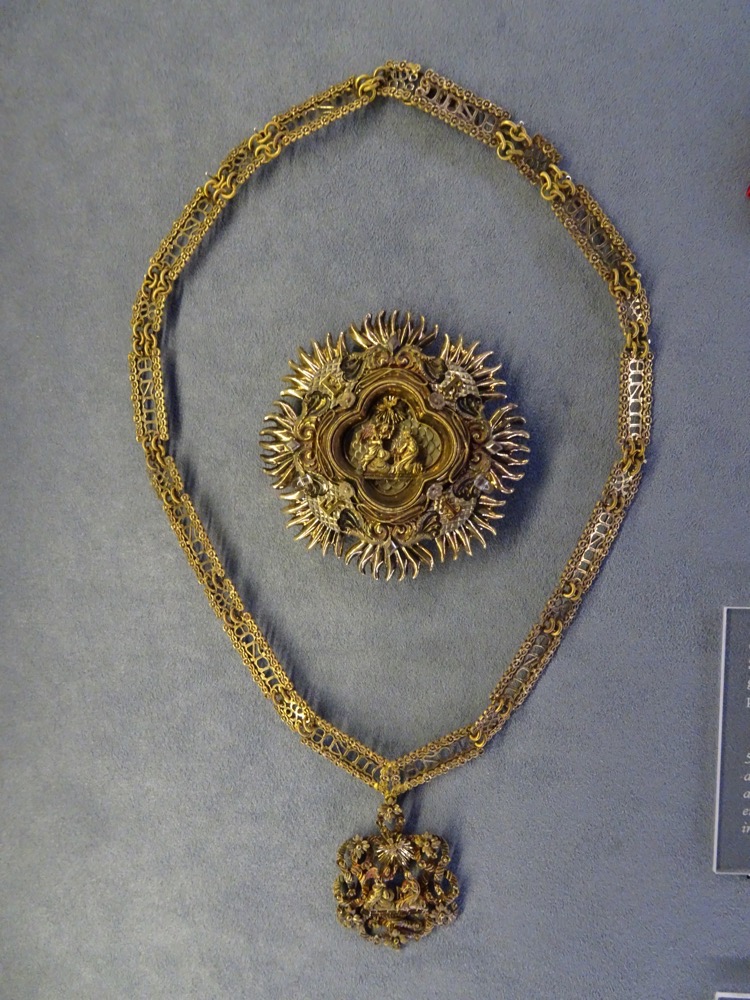
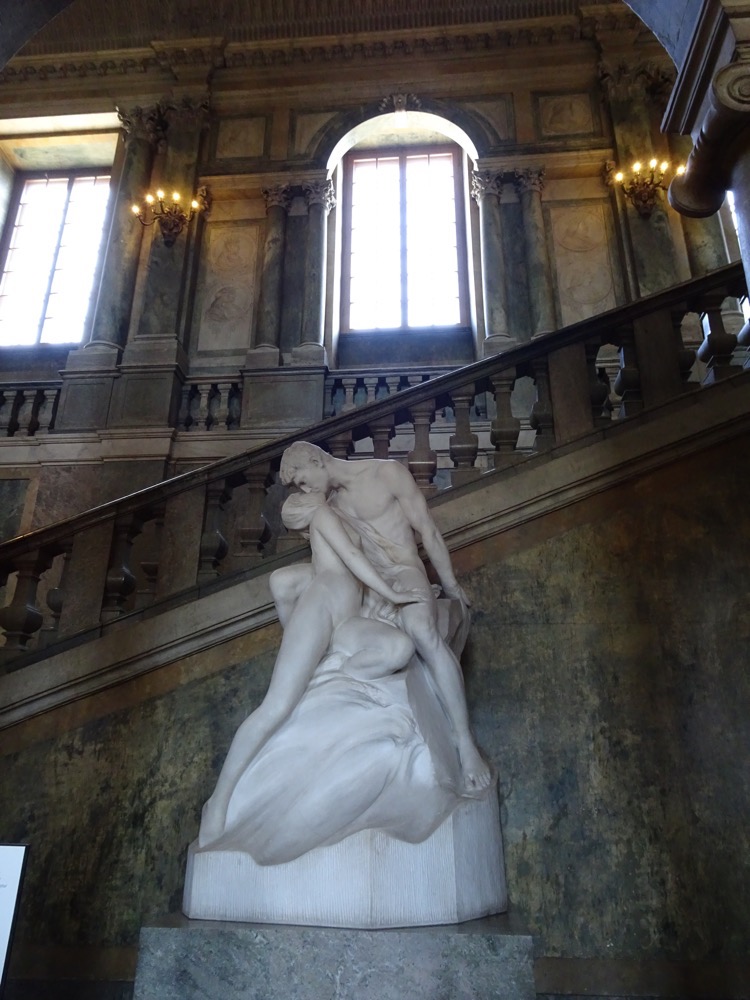
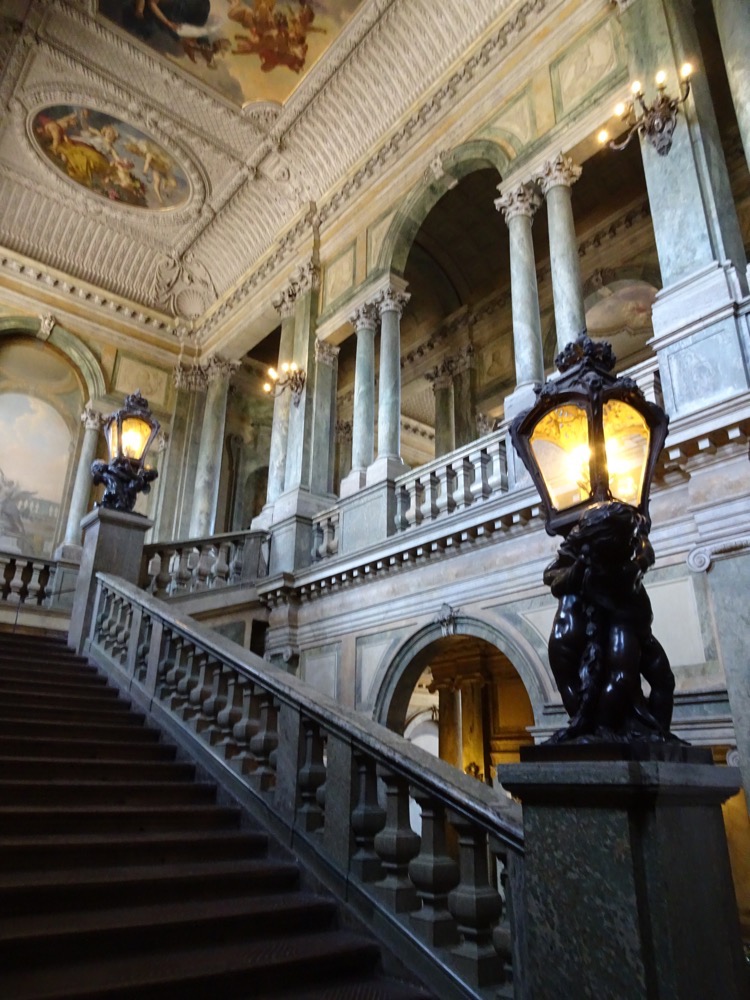
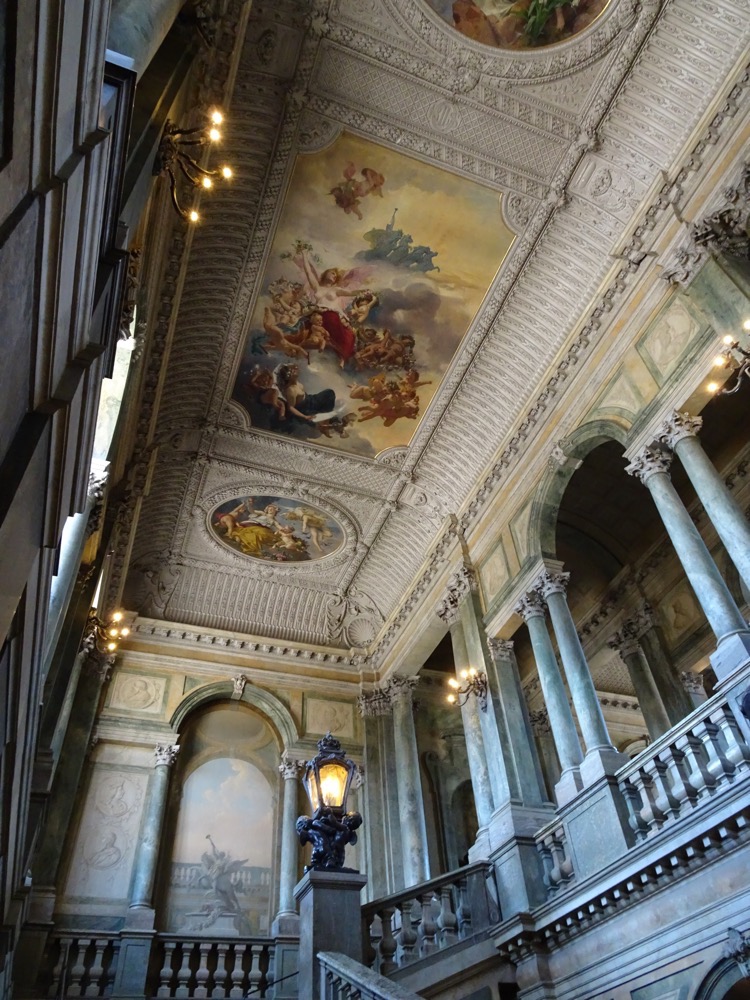 The Royal Apartments and Guest Apartments:
The Royal Apartments and Guest Apartments: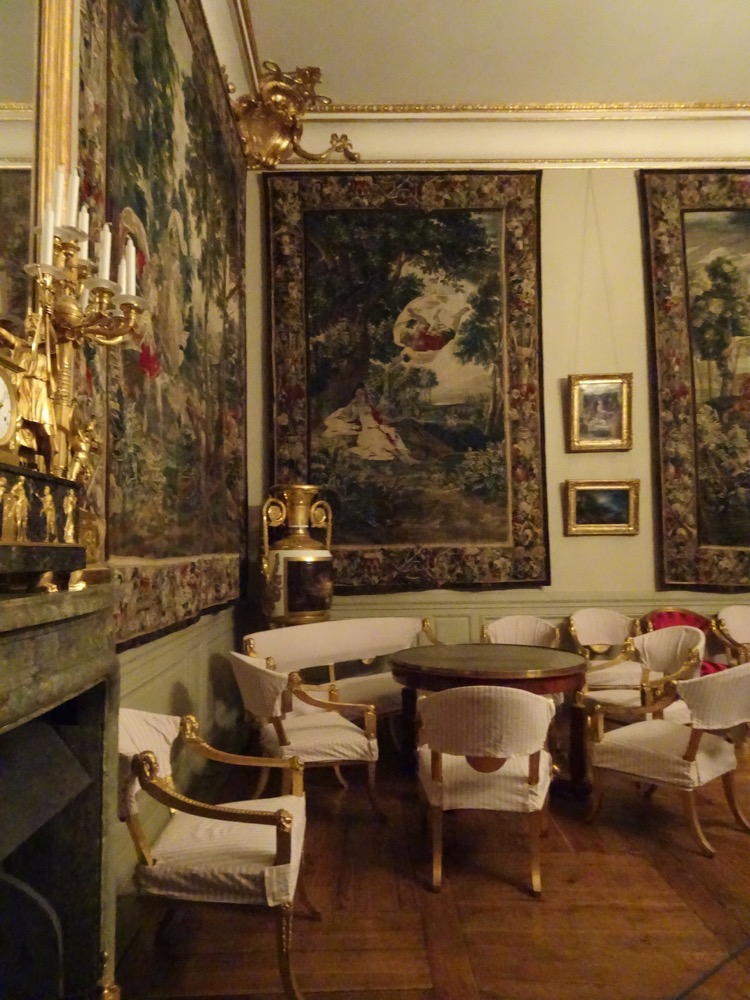
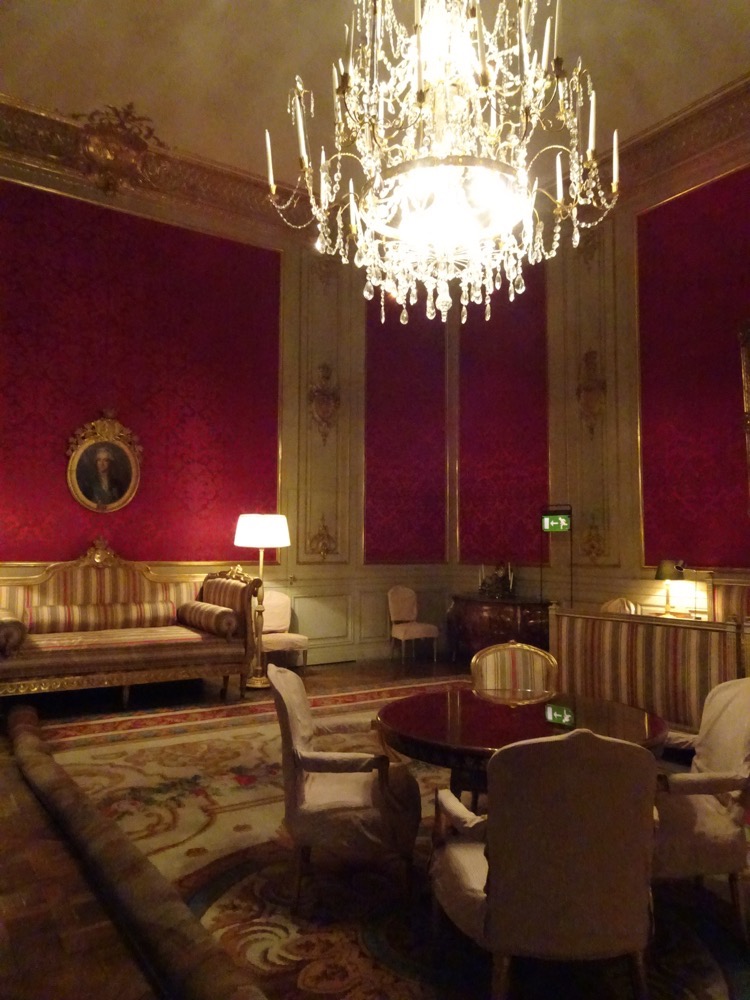
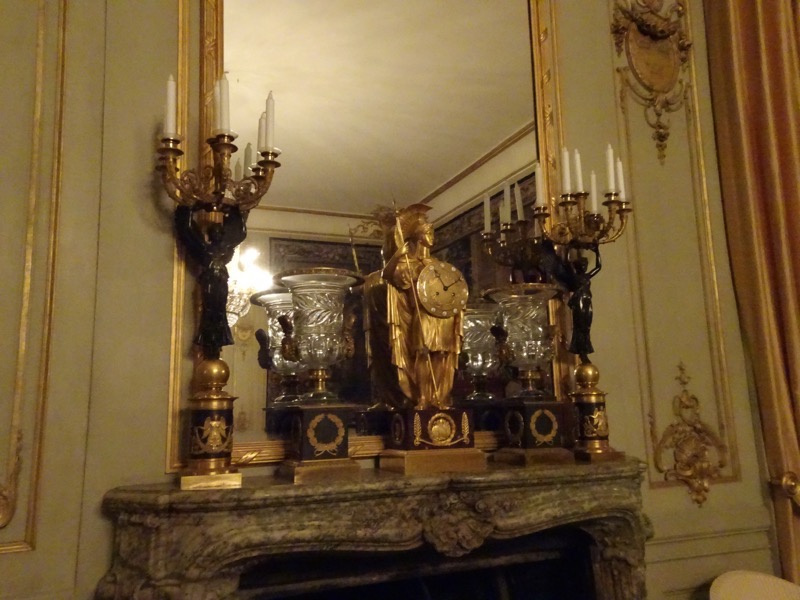
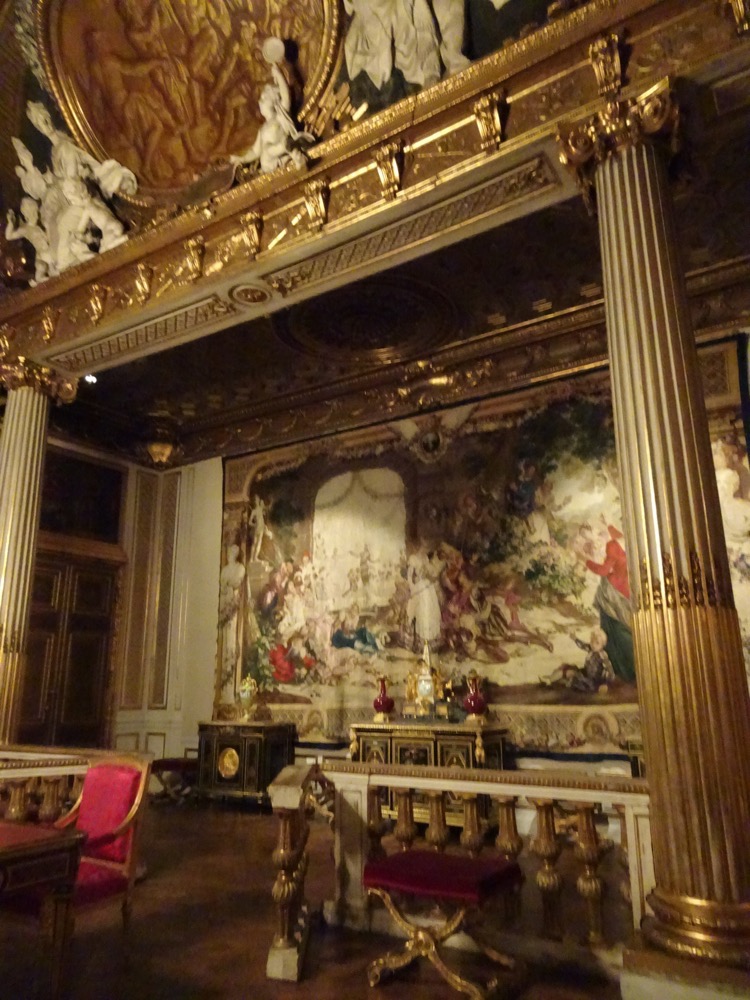
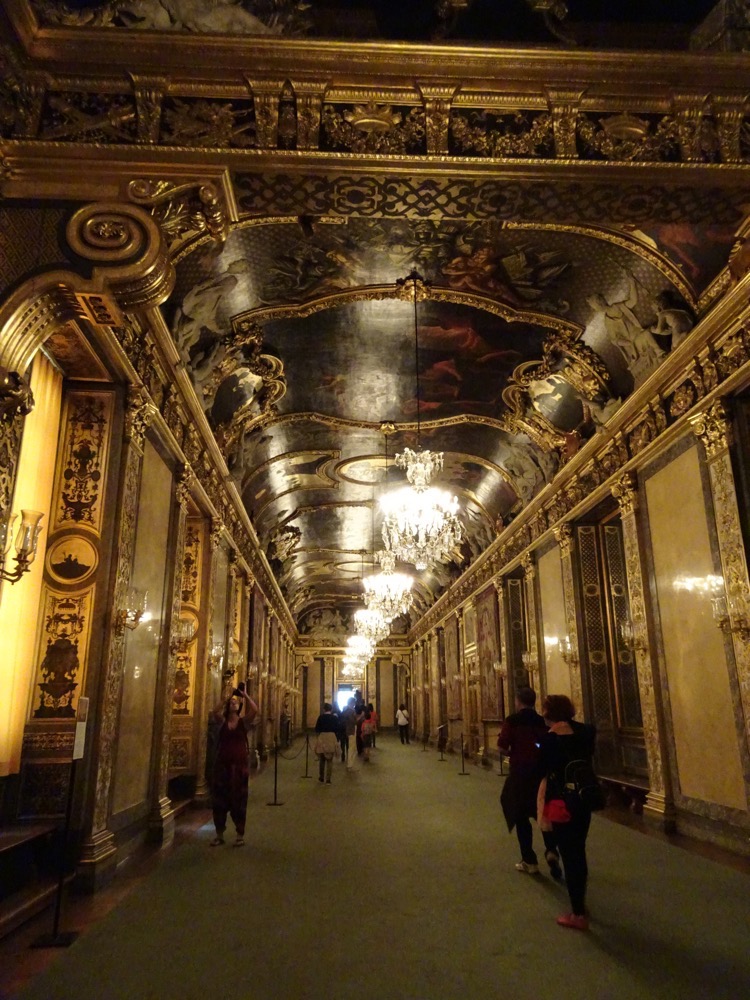
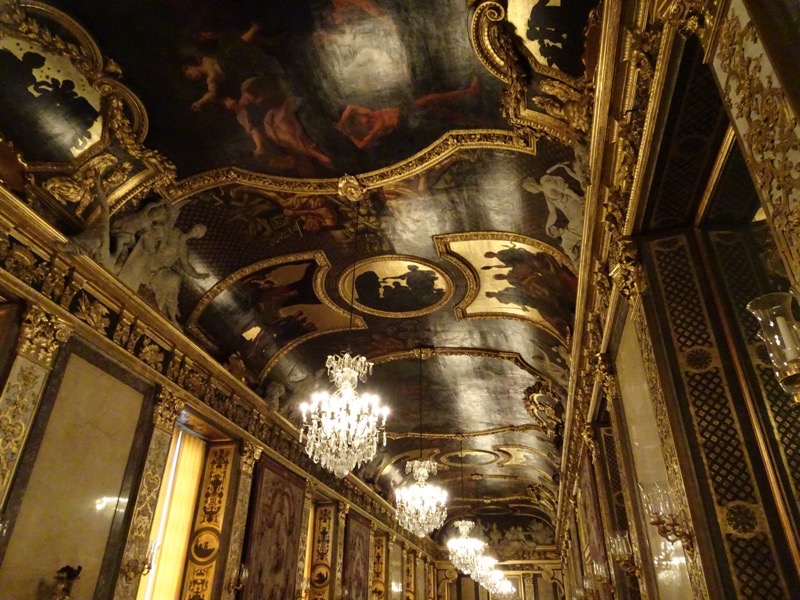 The King’s Official Bedchamber – his actual bed chamber is behind doors somewhere, much smaller and more intimate and therefore more easily heated. The bedchambers became somewhat less formal audience chambers.
The King’s Official Bedchamber – his actual bed chamber is behind doors somewhere, much smaller and more intimate and therefore more easily heated. The bedchambers became somewhat less formal audience chambers.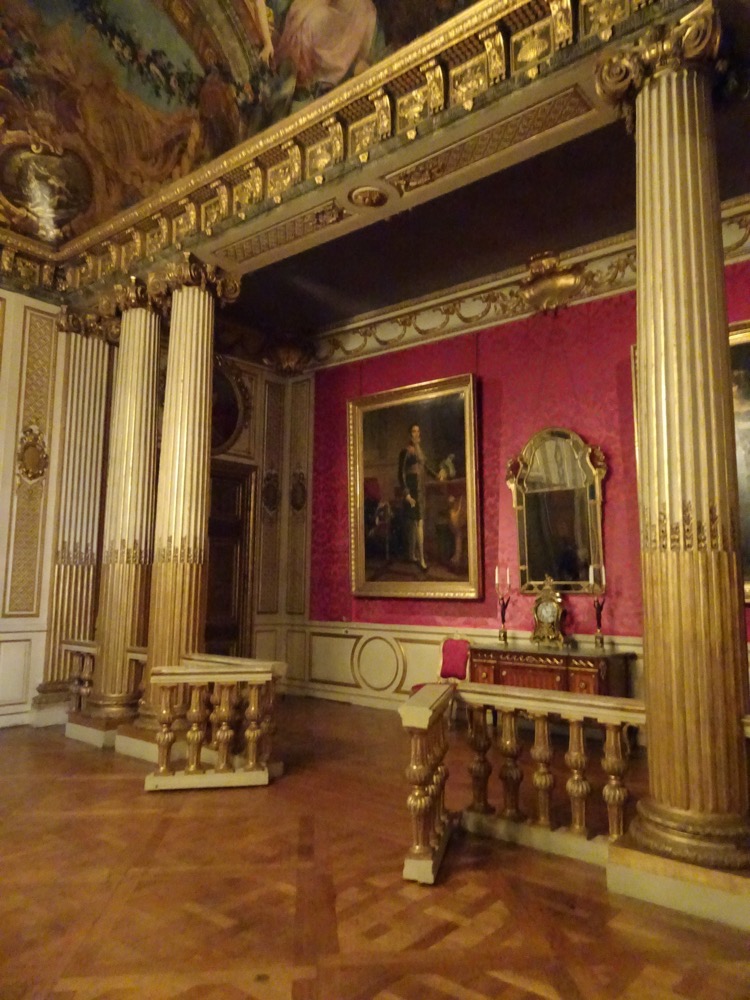
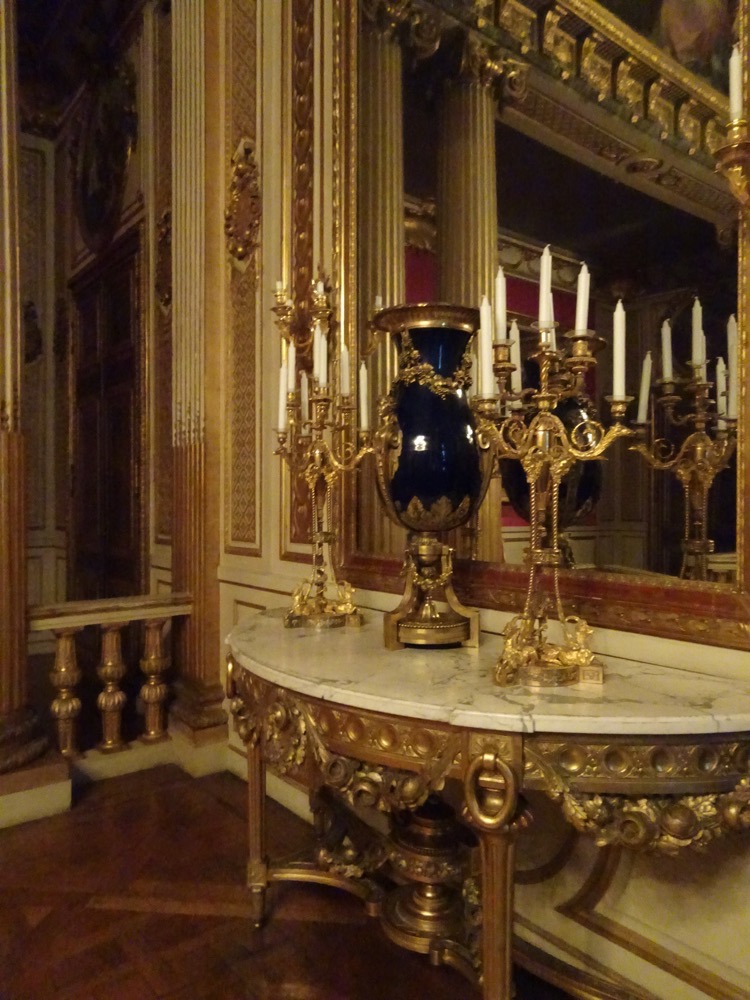 Ceiling detail:
Ceiling detail: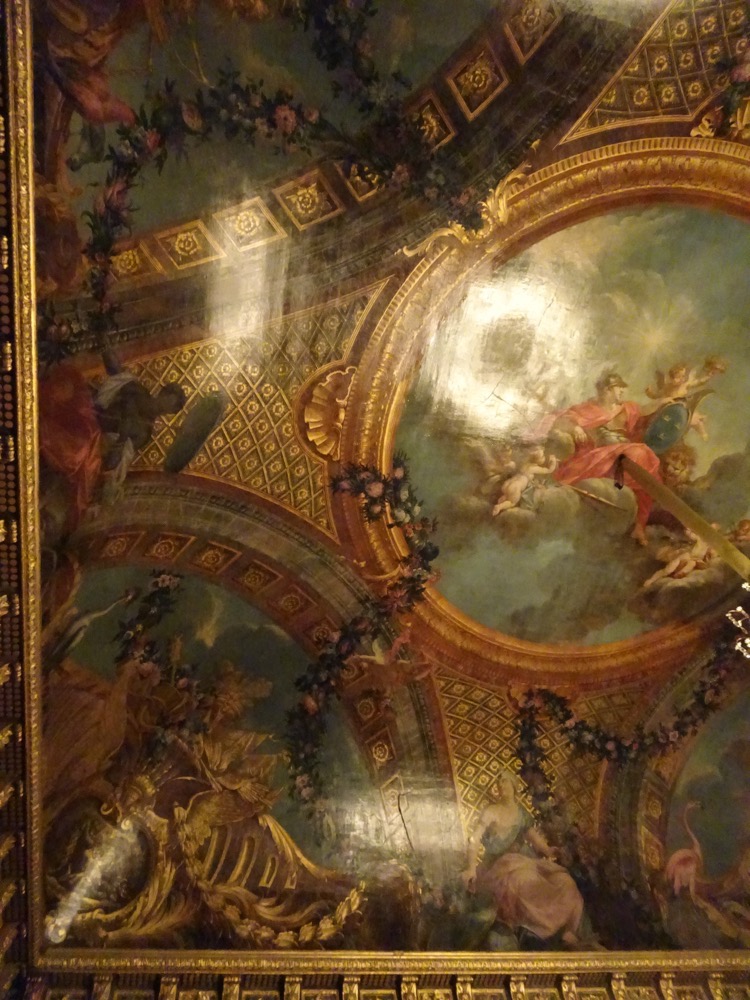
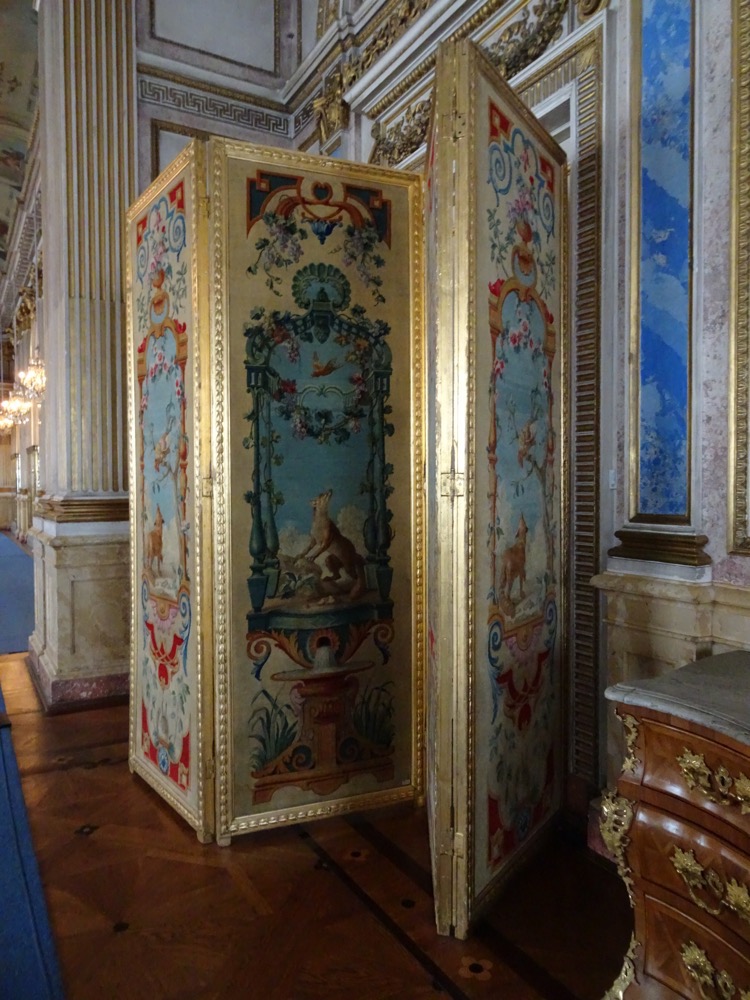 Musian’s loft in a salon.
Musian’s loft in a salon.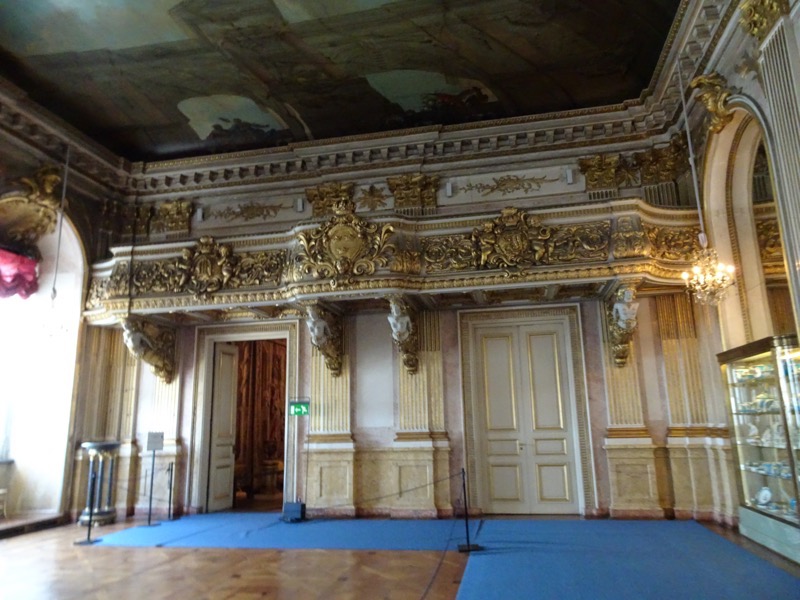
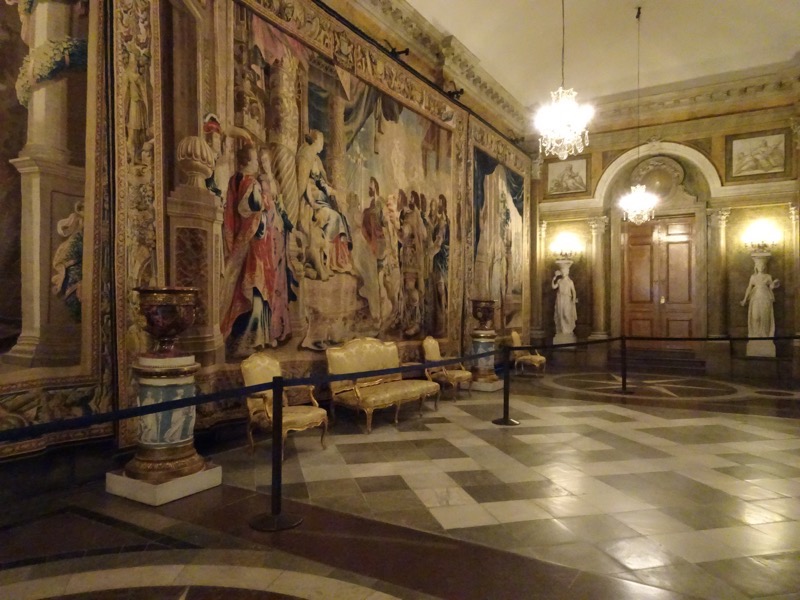
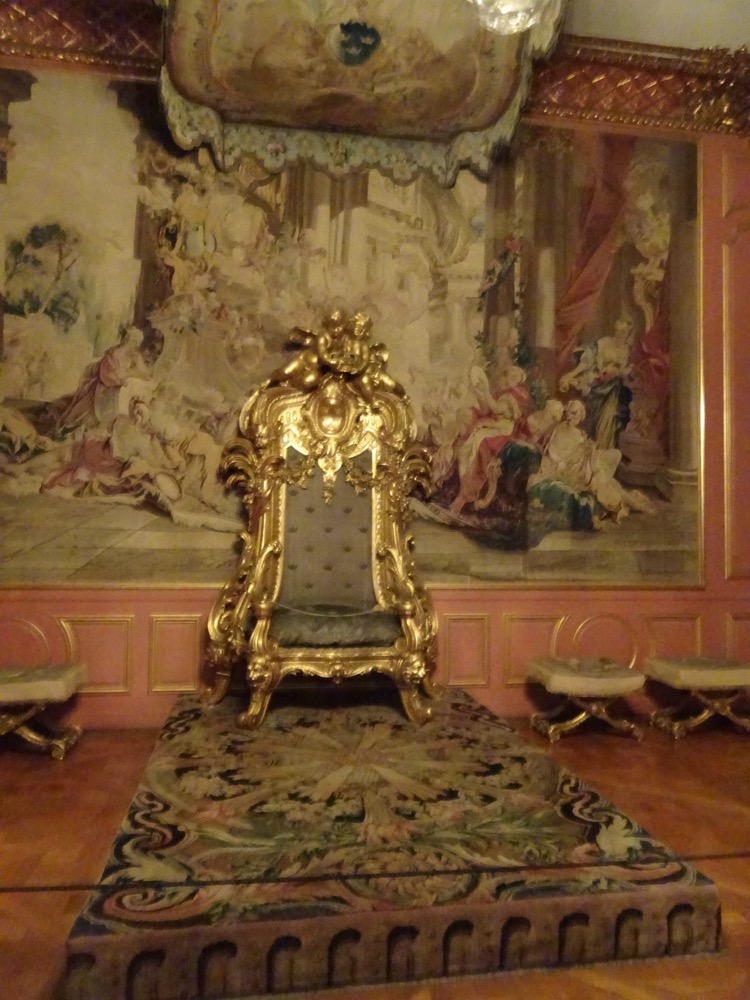 Familiy portrait gallery.
Familiy portrait gallery.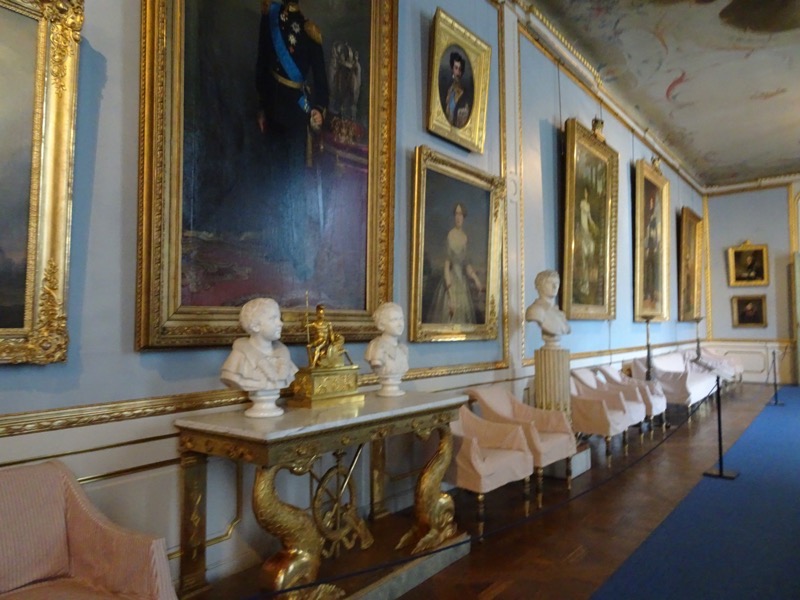 Guest apartment:
Guest apartment: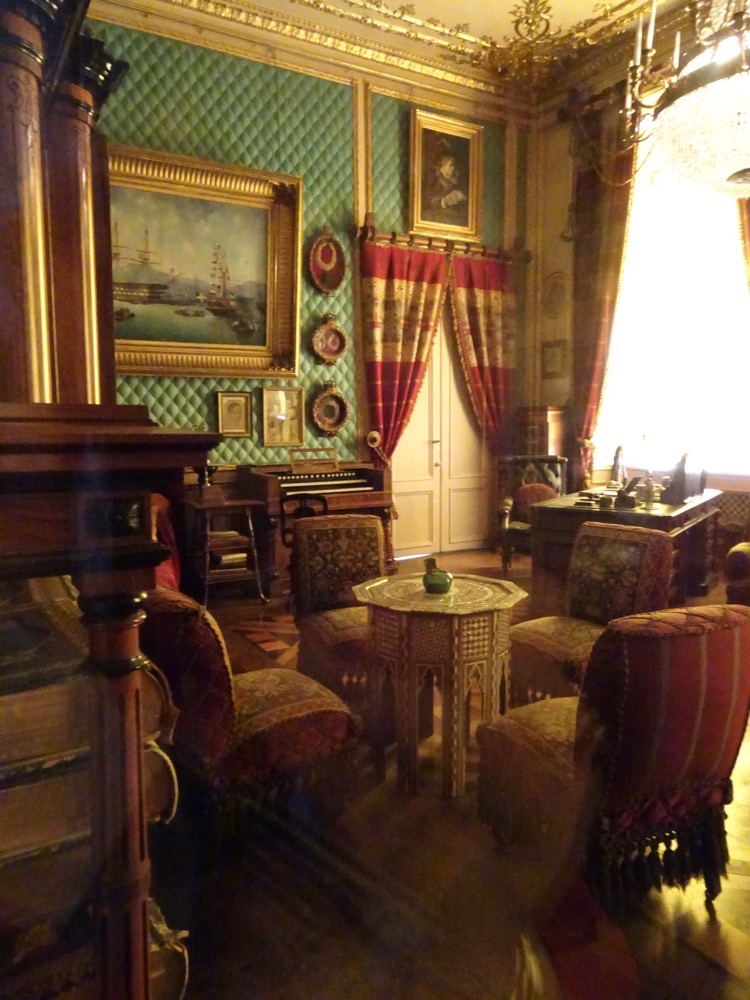
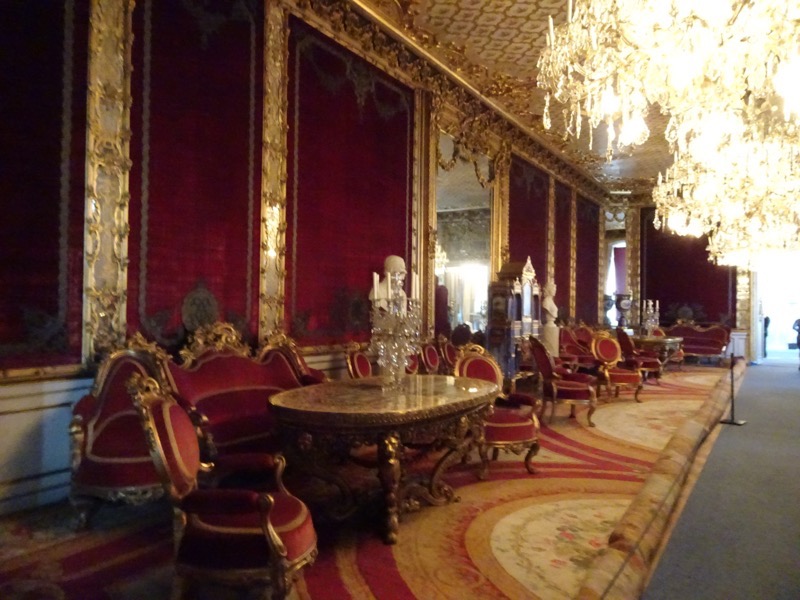
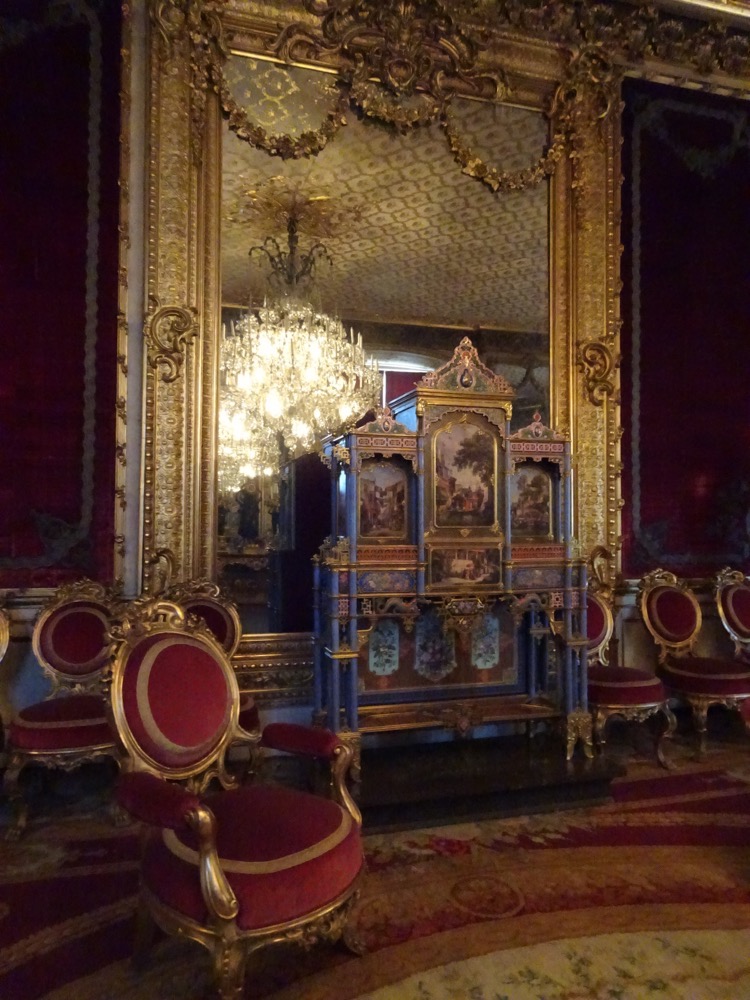
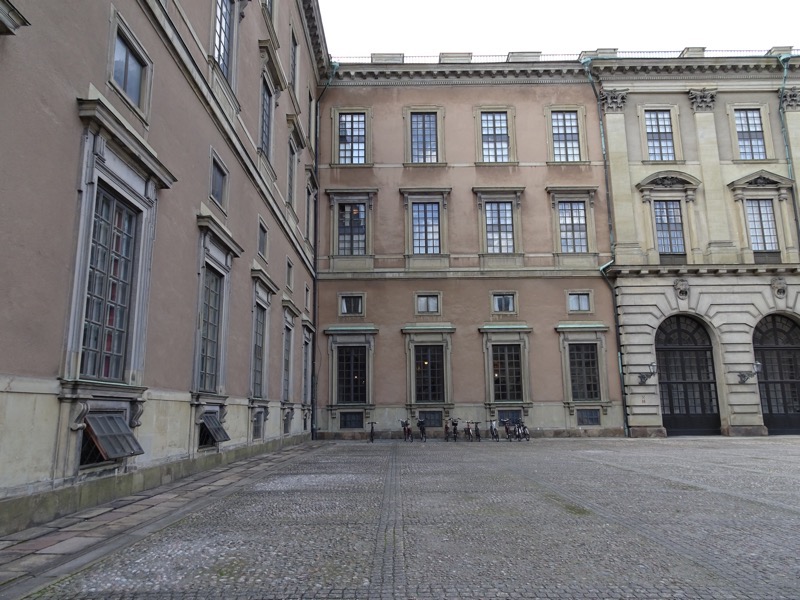 Forward circular courtyard:
Forward circular courtyard: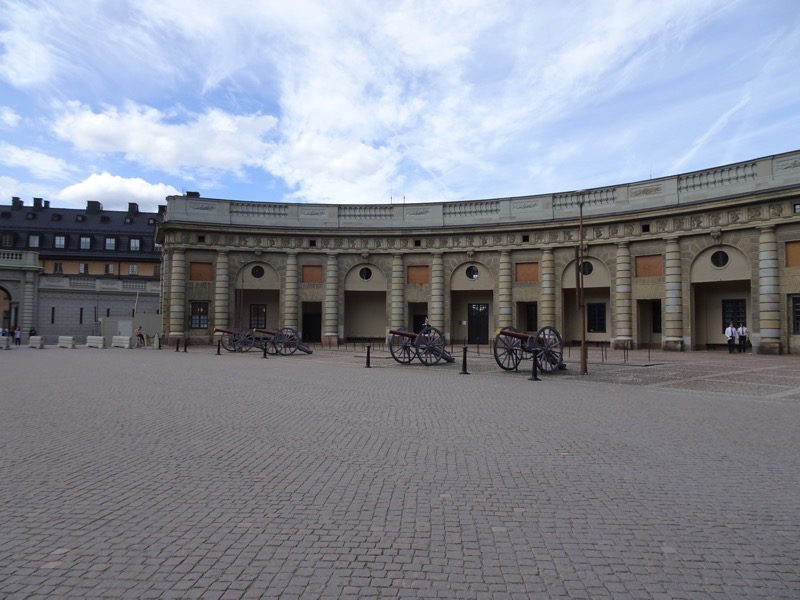 Roya Chapel:
Roya Chapel: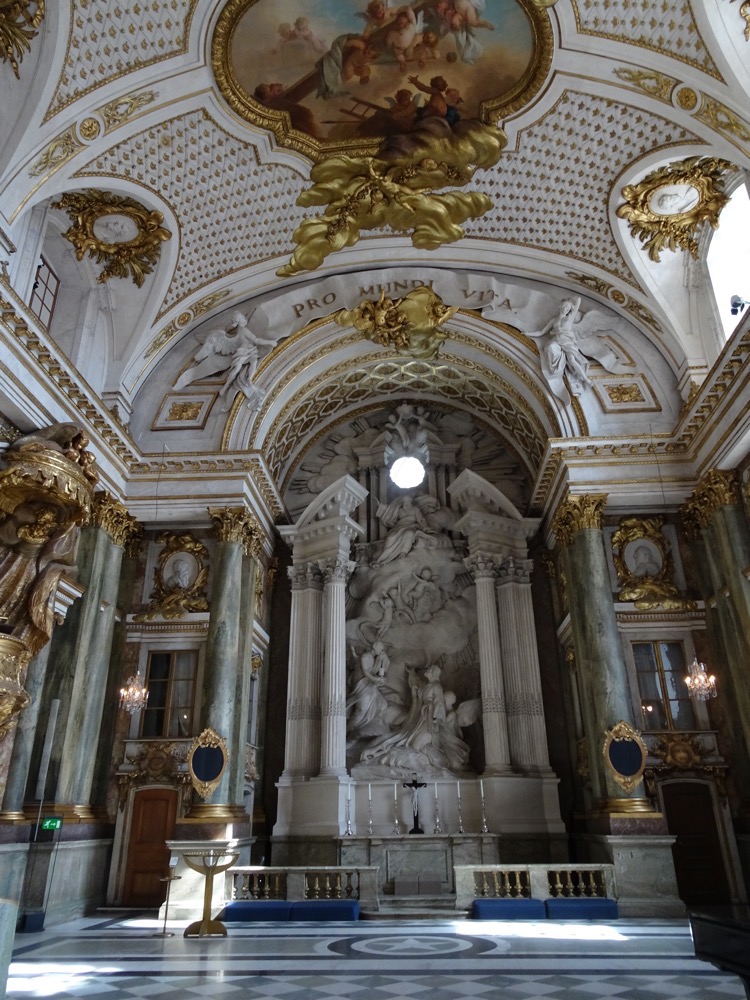
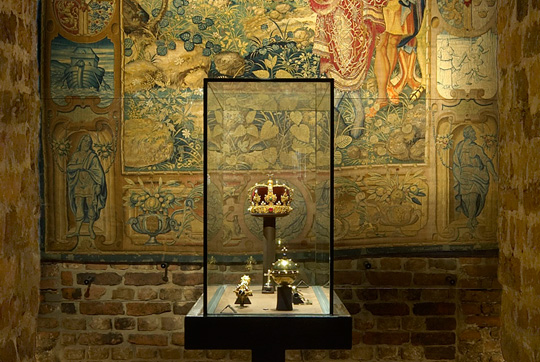
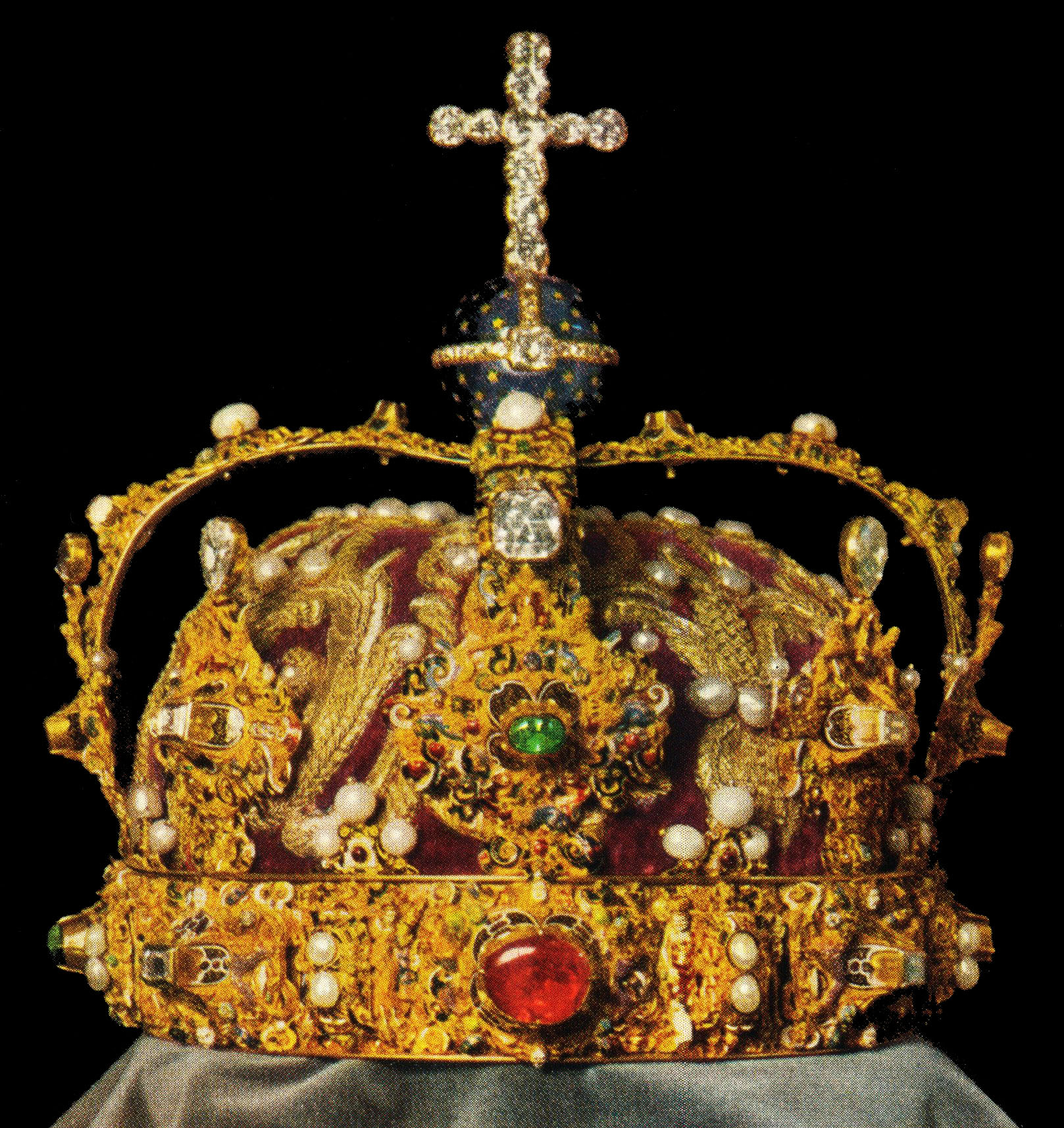 Crown of Queen Christina of Sweden. c.1620.
Crown of Queen Christina of Sweden. c.1620.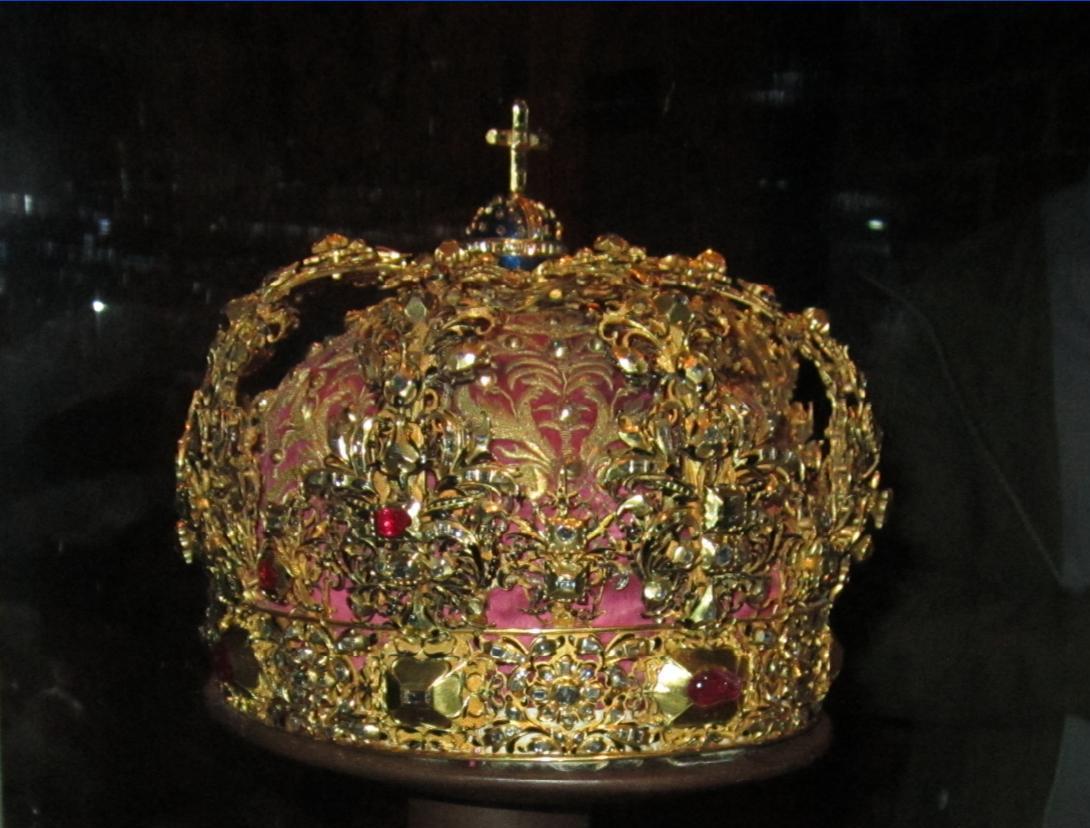 Coronet and septre of the Queen Consort. c.1751.
Coronet and septre of the Queen Consort. c.1751.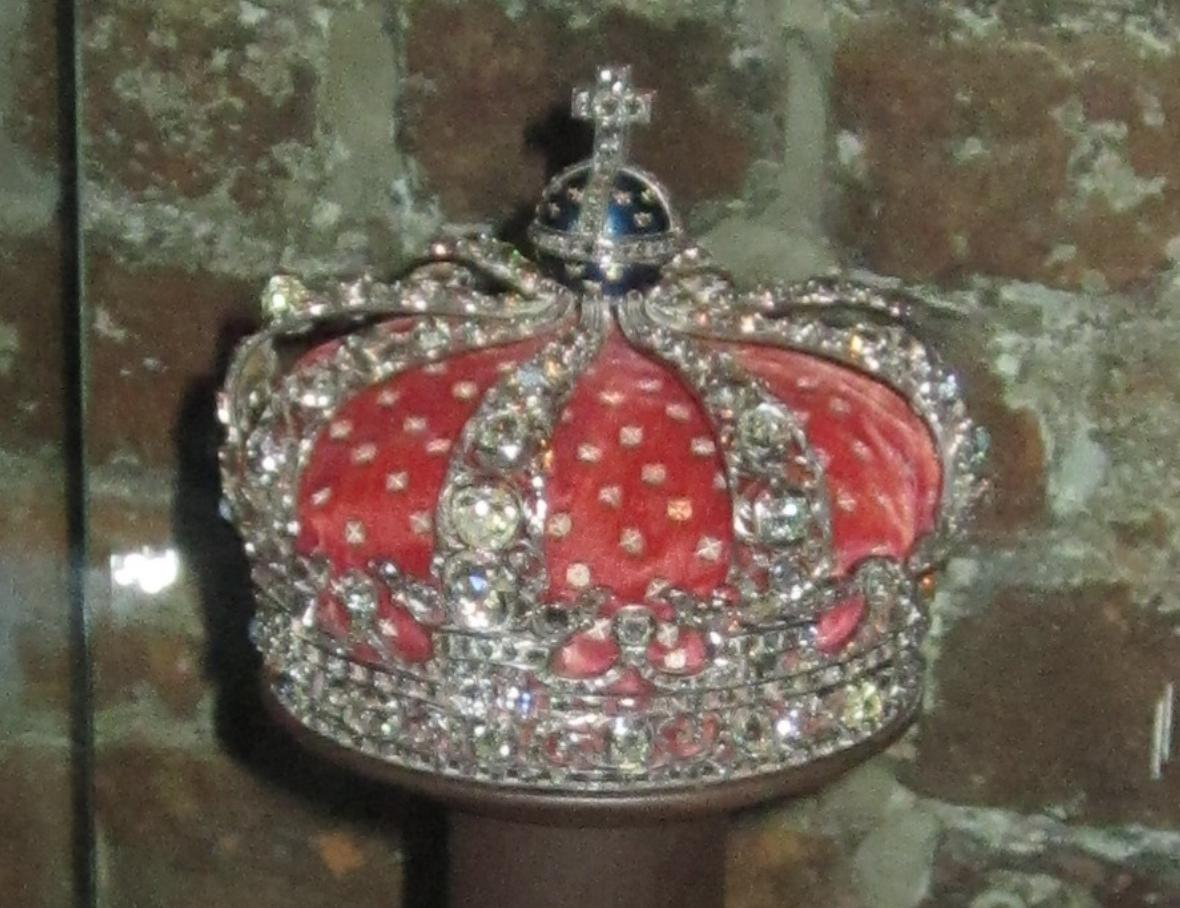 Coronet of the Heir Apparent. c.1772
Coronet of the Heir Apparent. c.1772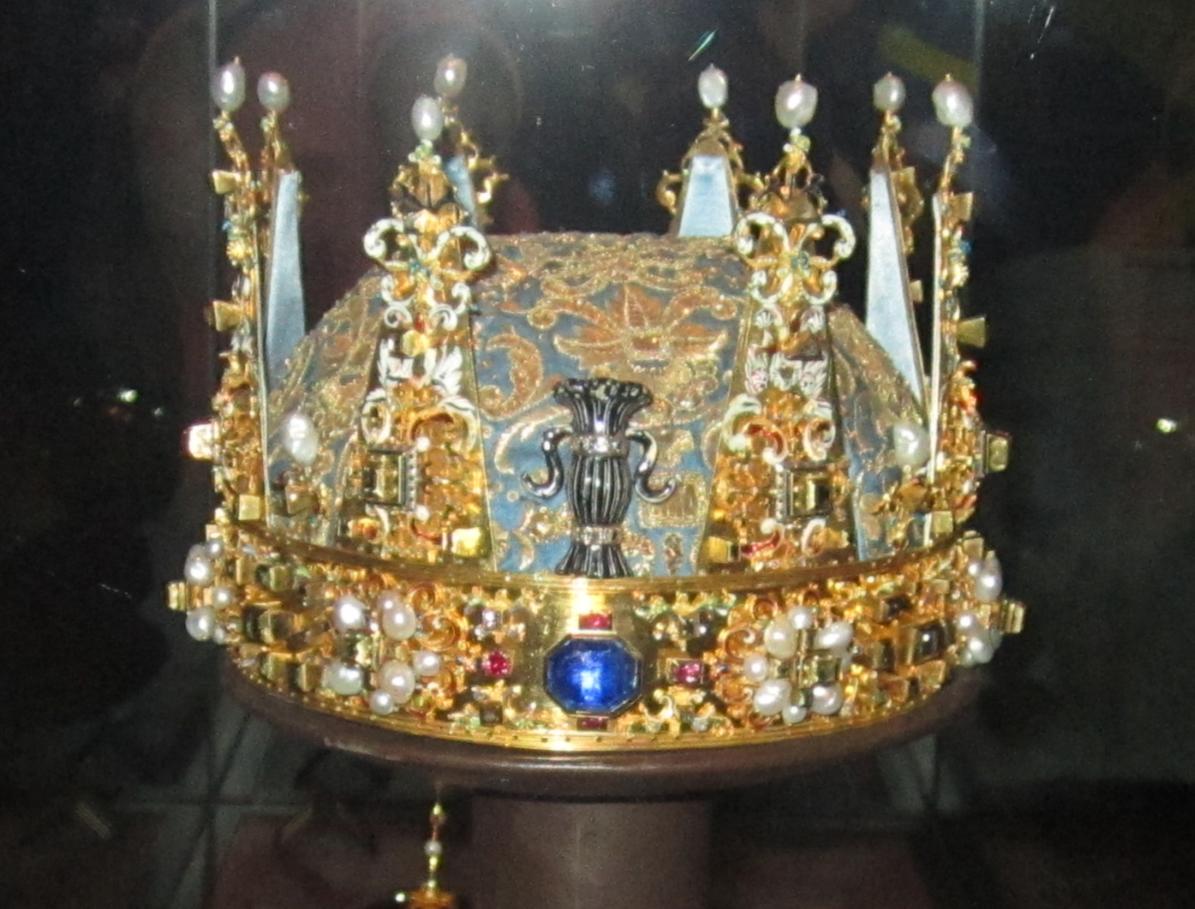
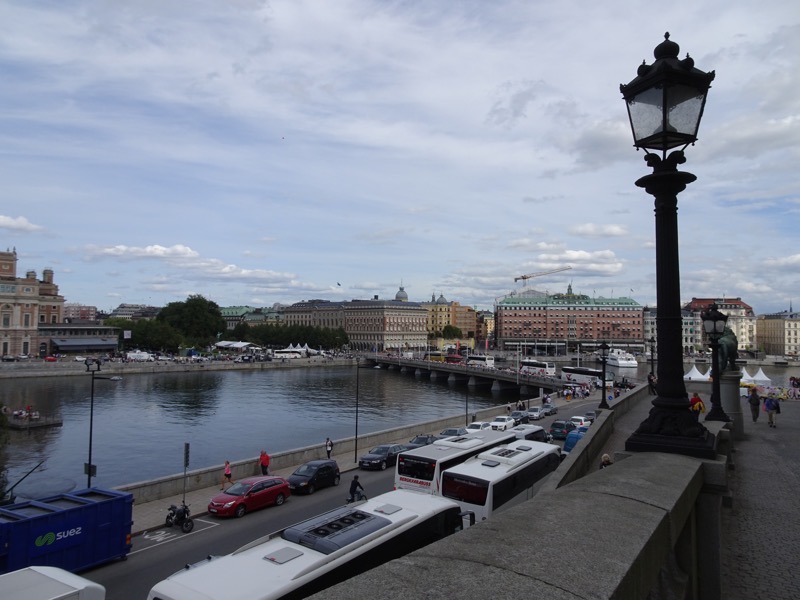 As I was leaving a parade was coming by – there is a cultural festival on in Stockholm this week, so the inner city is full of pavilions with international food, and stages for music performances.
As I was leaving a parade was coming by – there is a cultural festival on in Stockholm this week, so the inner city is full of pavilions with international food, and stages for music performances.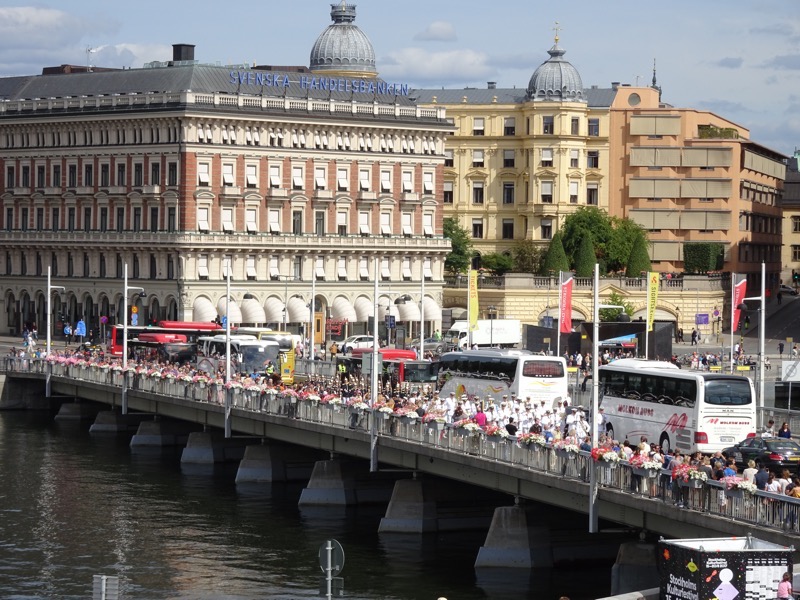
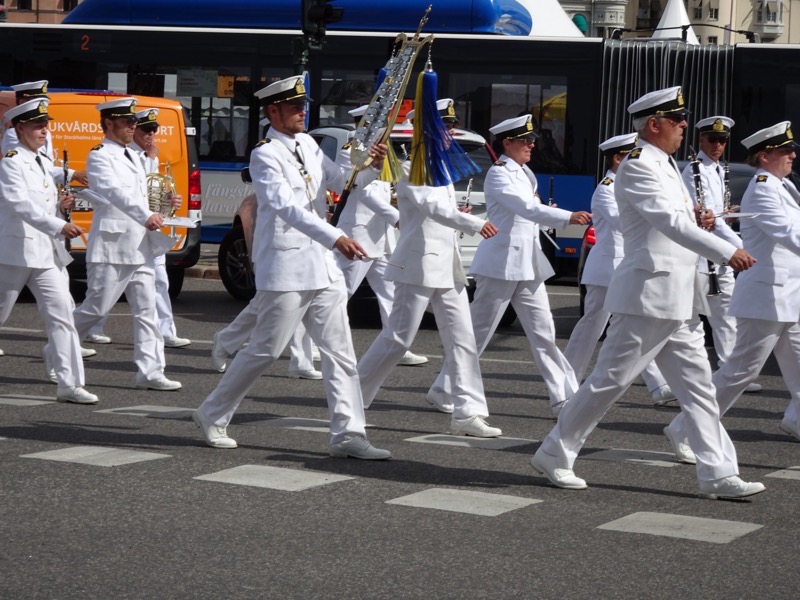
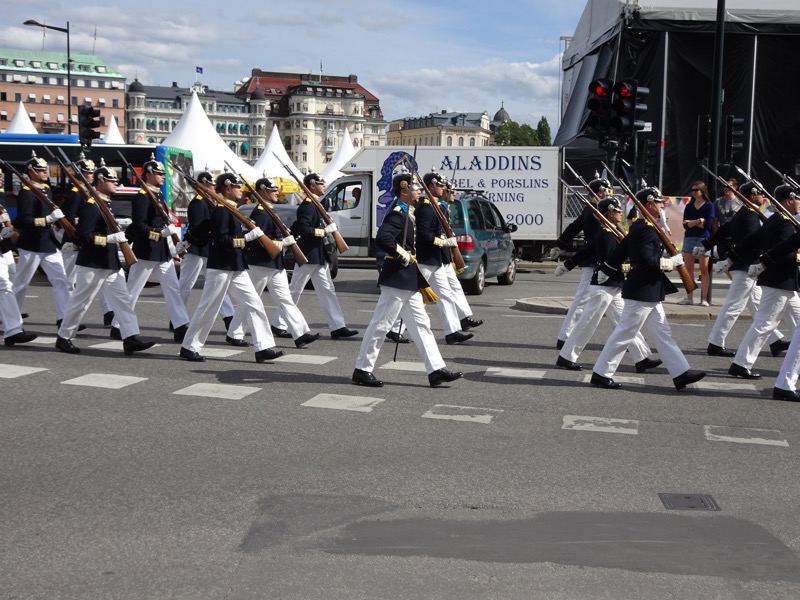 Then I had to come back to the hotel to do some work before heading out this evening to the formal reception at the Stockholm City Hall as part of the conference schedule.
Then I had to come back to the hotel to do some work before heading out this evening to the formal reception at the Stockholm City Hall as part of the conference schedule.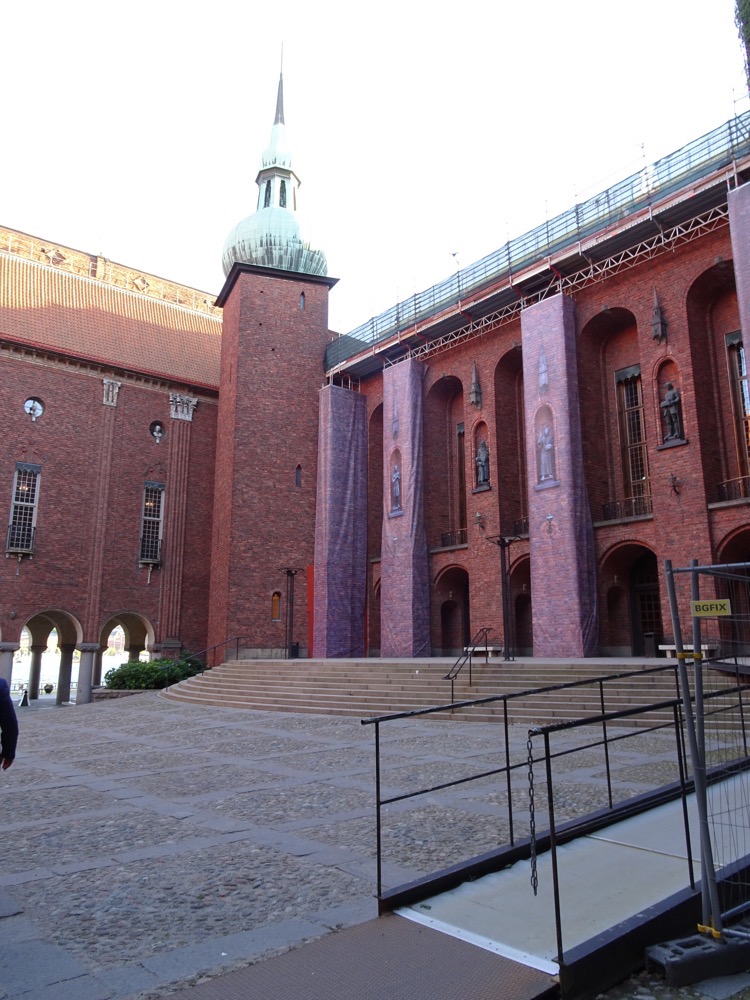
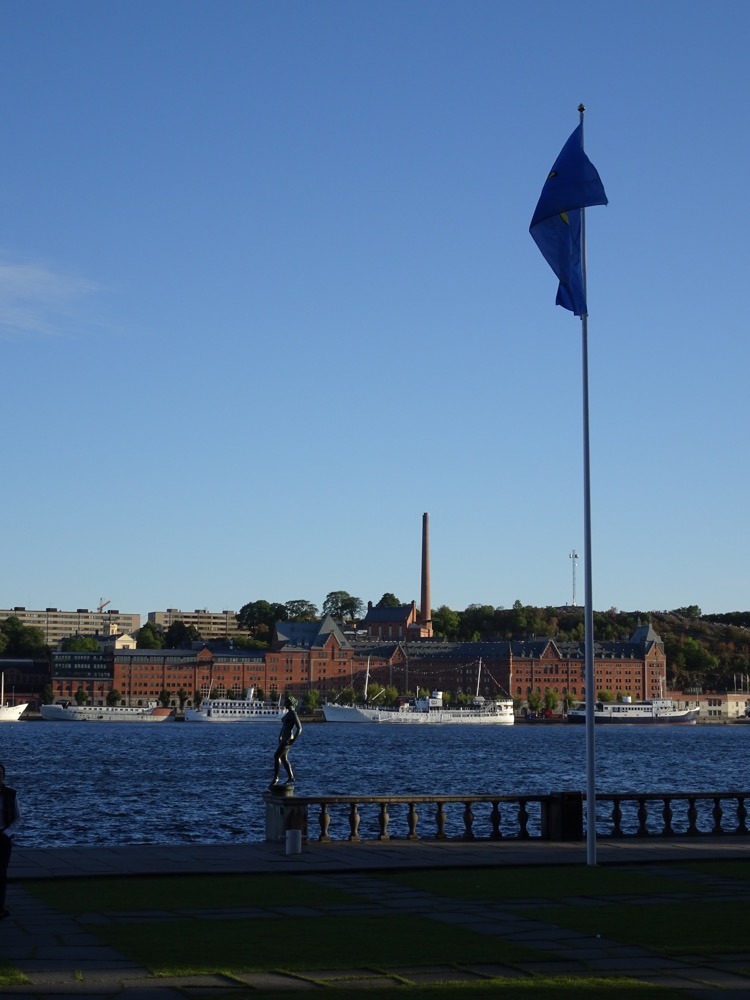
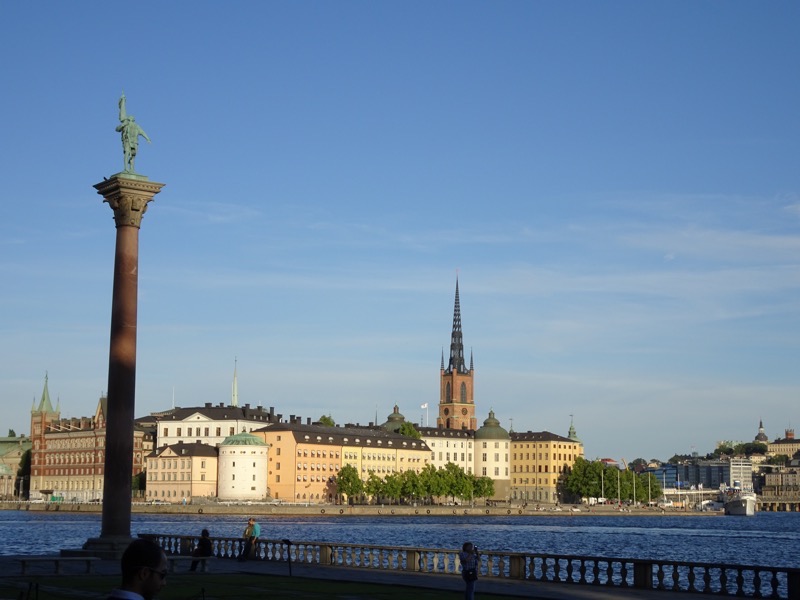
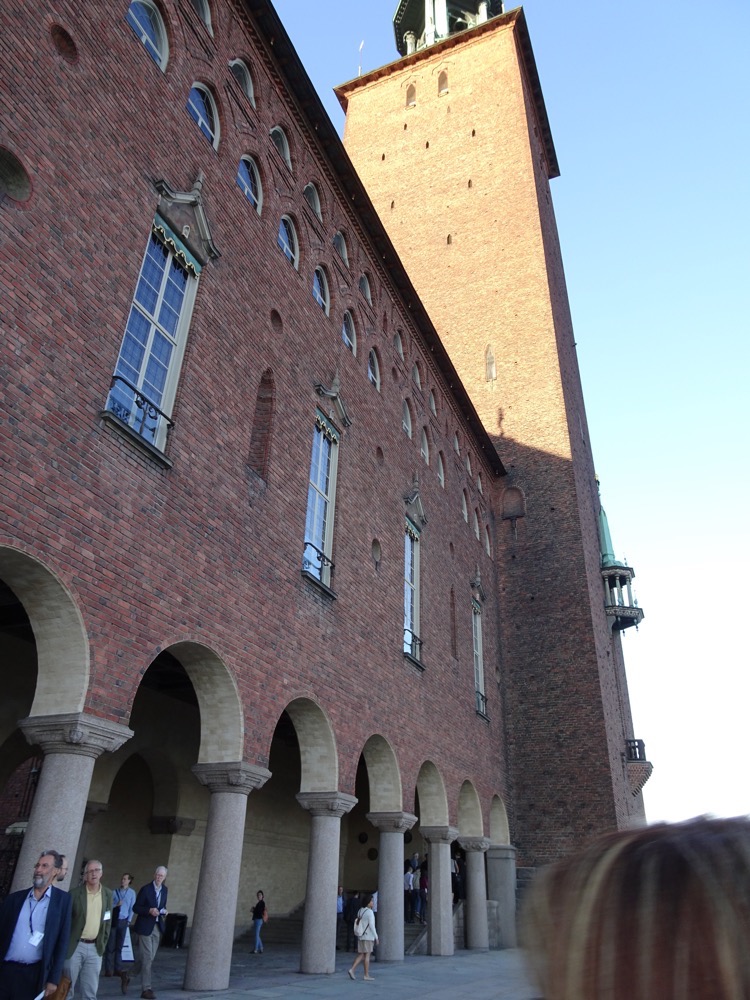 The building looks a lot older than it is – it was built only in the early 1900s, but very much looks part of the architectural heritage of Stockholm.
The building looks a lot older than it is – it was built only in the early 1900s, but very much looks part of the architectural heritage of Stockholm.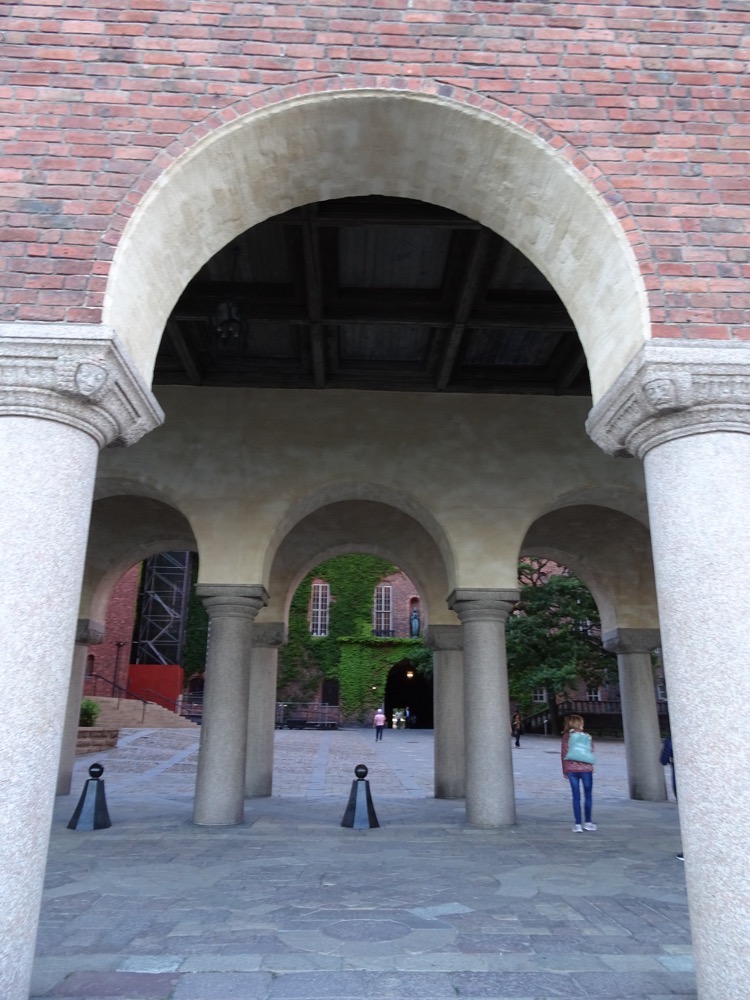 The formal entrance foyer is covered in large tapestries.
The formal entrance foyer is covered in large tapestries.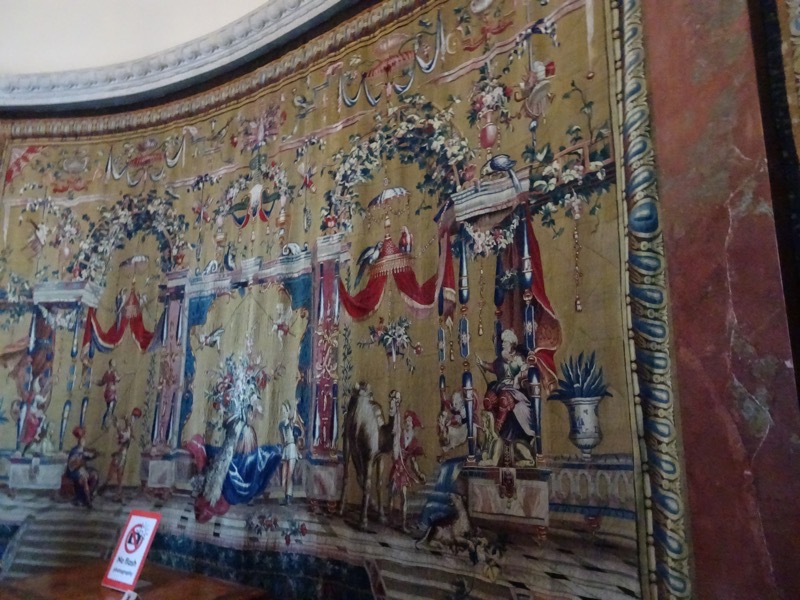
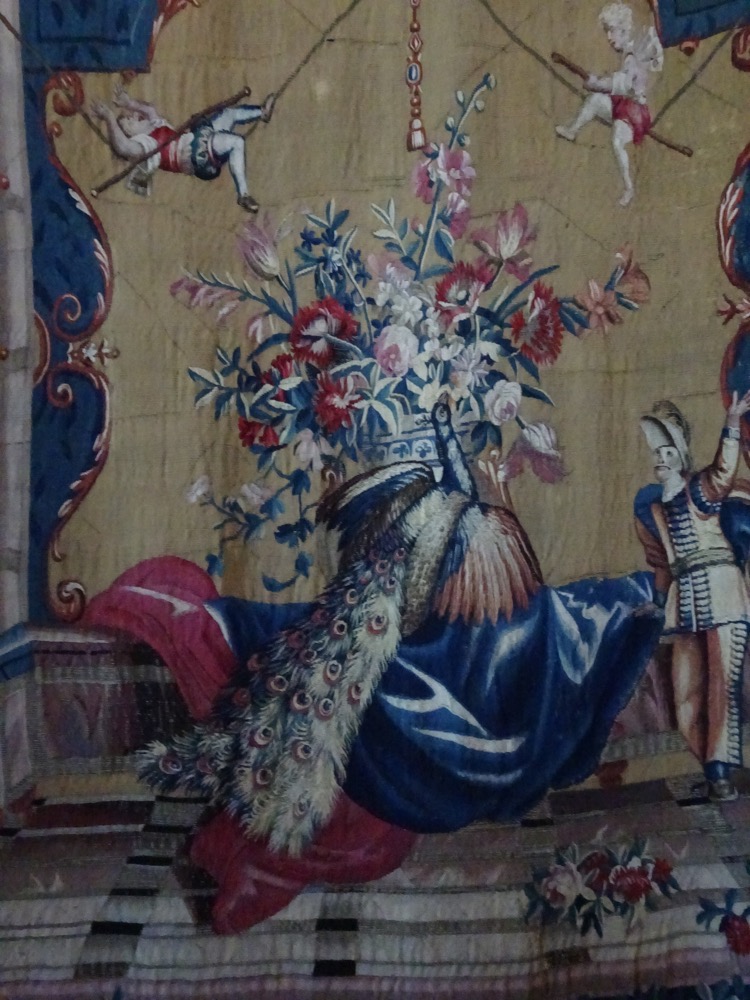
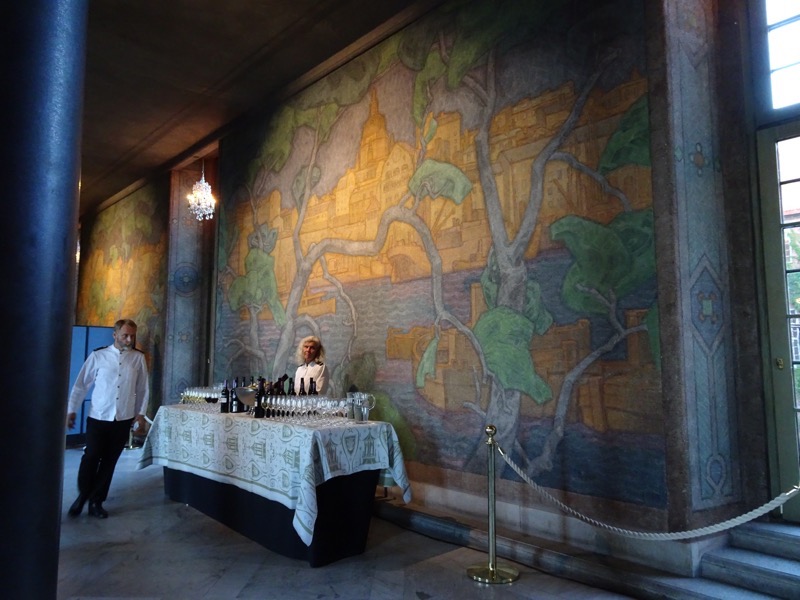 The Blue Room where we had our reception. They had laid on the most lavish meal with lots of salmon, pickled herrings, potato au gratin, cauliflower terrine, beets, cheeses, breads and the ubiquitous Swedish meatballs (Which we have been served every morning since we got here! Who knew meatballs were a breakfast food?!)
The Blue Room where we had our reception. They had laid on the most lavish meal with lots of salmon, pickled herrings, potato au gratin, cauliflower terrine, beets, cheeses, breads and the ubiquitous Swedish meatballs (Which we have been served every morning since we got here! Who knew meatballs were a breakfast food?!)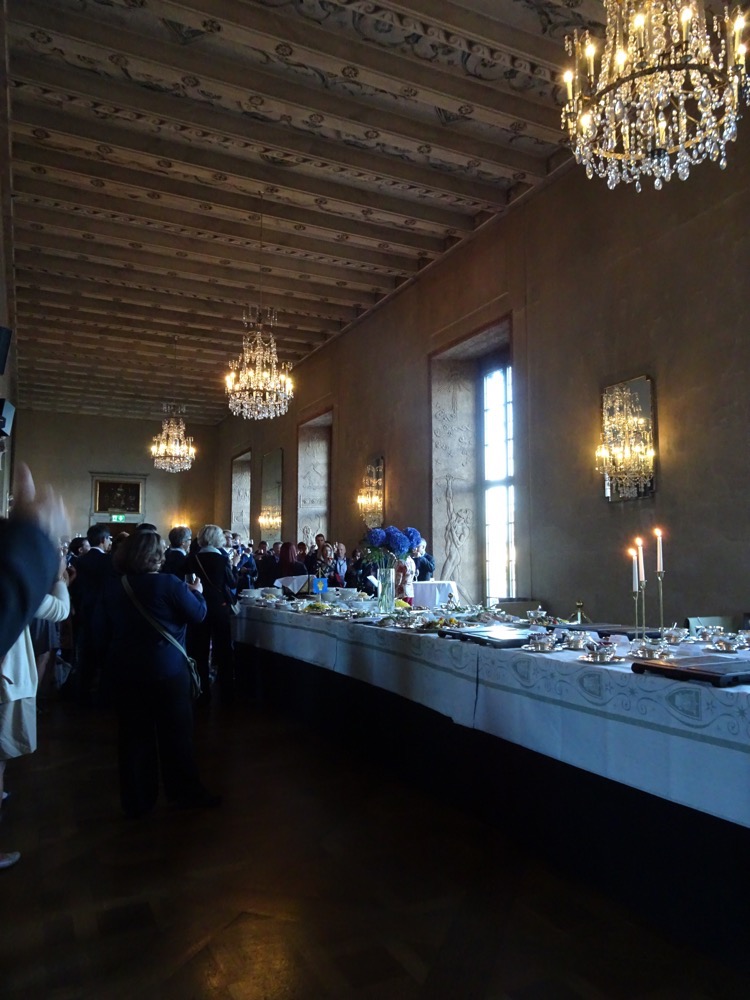
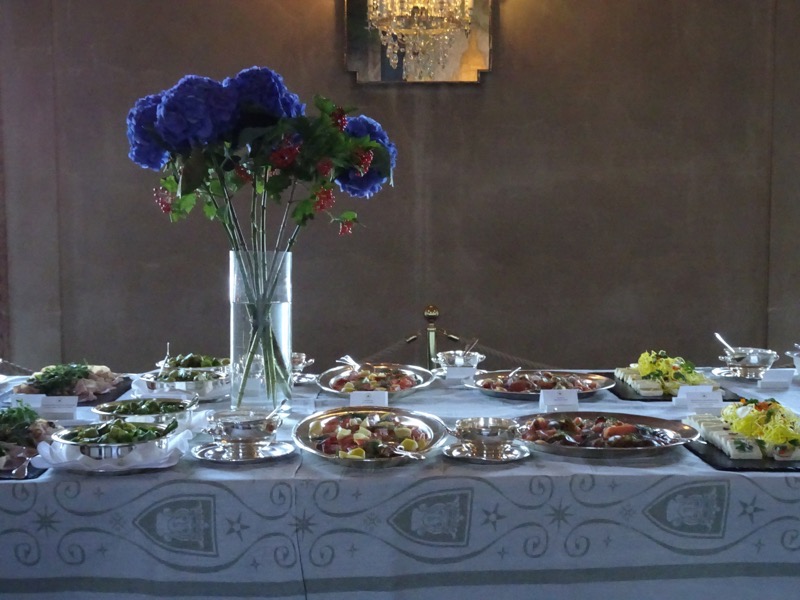
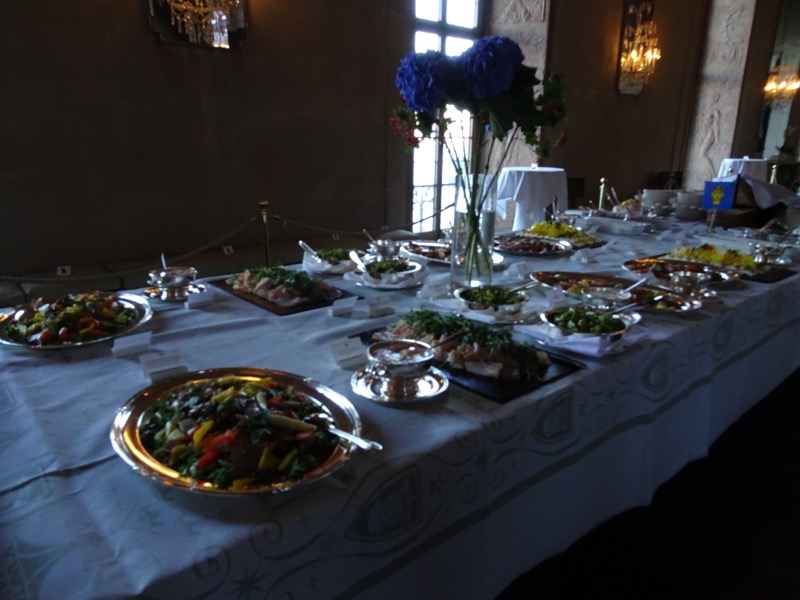 Ceiling detail.
Ceiling detail.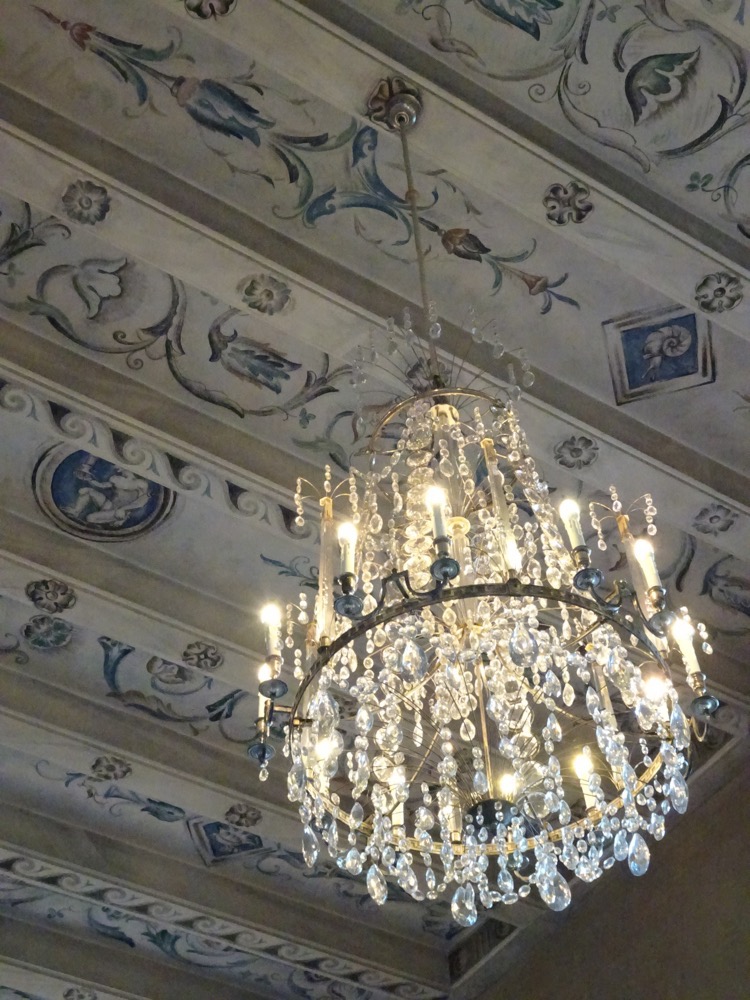 View out the windows of the reception room – across to Riddarholmen and Södermalm.
View out the windows of the reception room – across to Riddarholmen and Södermalm. 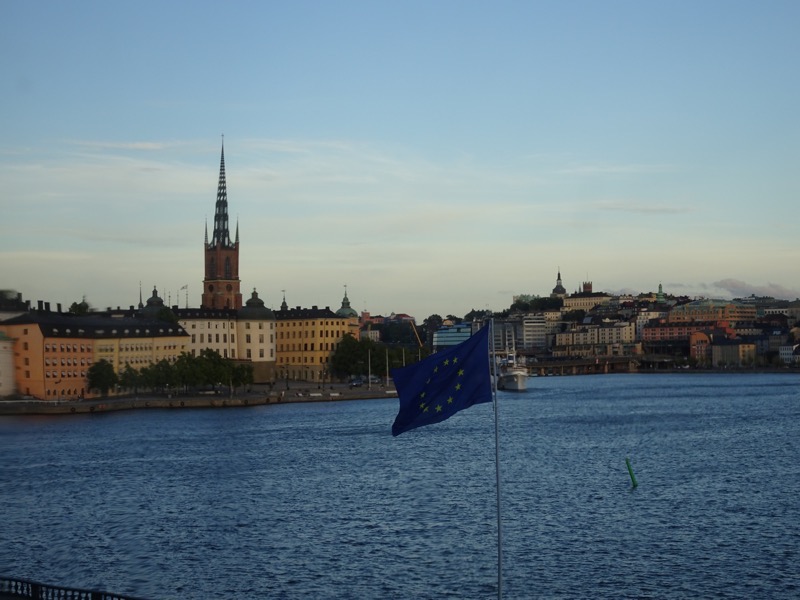 Right off the Blue Room lies the Golden Hall (Gyllene Salen), which is very aptly named for the beautiful golden decorative mosaics that line the entire walls of the expansive halls. There are over 18 million mosaic tiles in this room that have been used to create scenes from Swedish history. The mosaics were commissioned from a German firm called Puhl & Wagner and it took over nine years for the commision to be completed (1883-1941). I was blown away by the sheer beauty of the room and took so many photographs of the mosaic scenes.
Right off the Blue Room lies the Golden Hall (Gyllene Salen), which is very aptly named for the beautiful golden decorative mosaics that line the entire walls of the expansive halls. There are over 18 million mosaic tiles in this room that have been used to create scenes from Swedish history. The mosaics were commissioned from a German firm called Puhl & Wagner and it took over nine years for the commision to be completed (1883-1941). I was blown away by the sheer beauty of the room and took so many photographs of the mosaic scenes.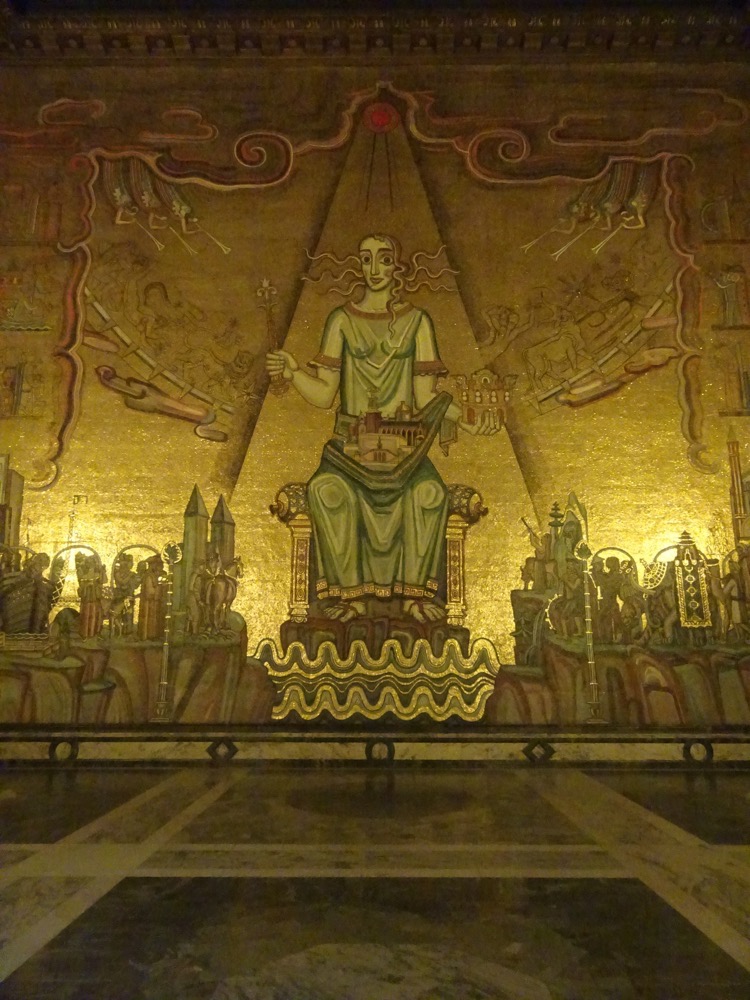
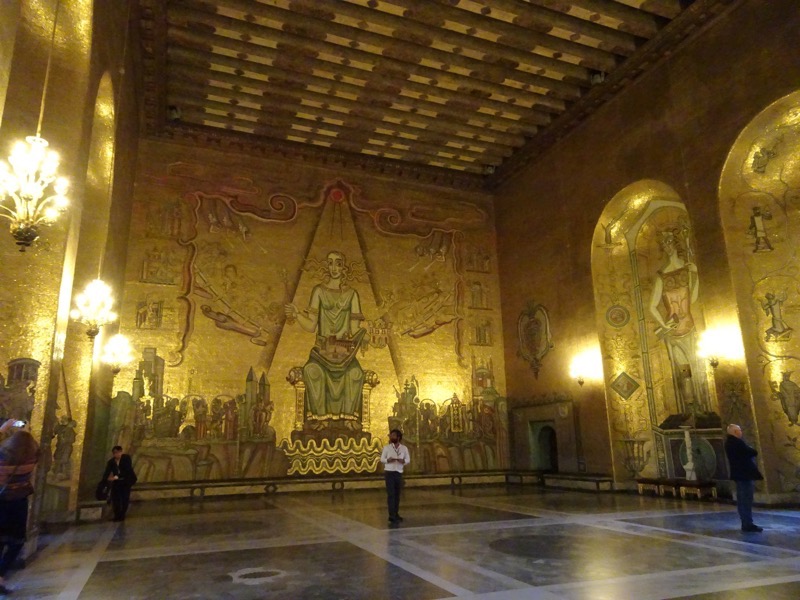
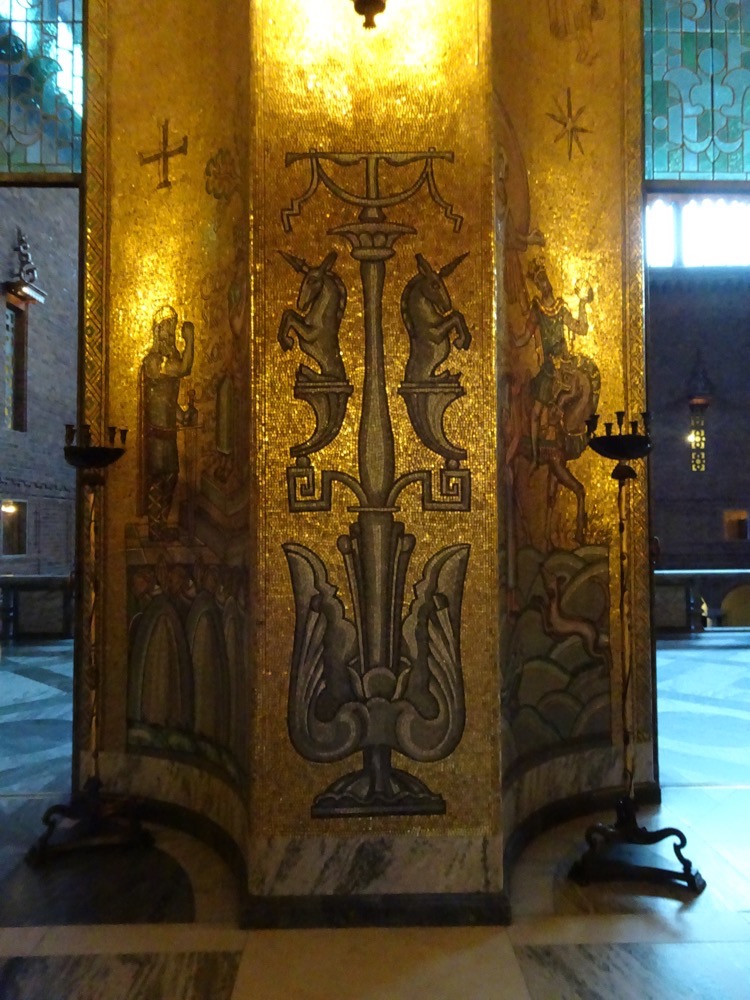
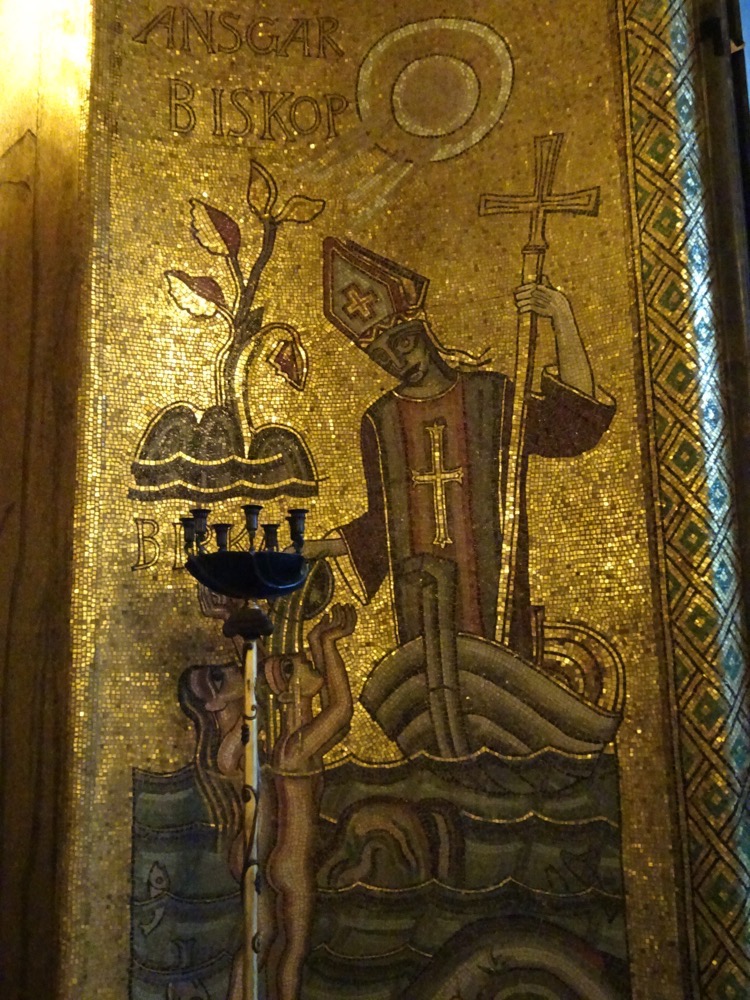
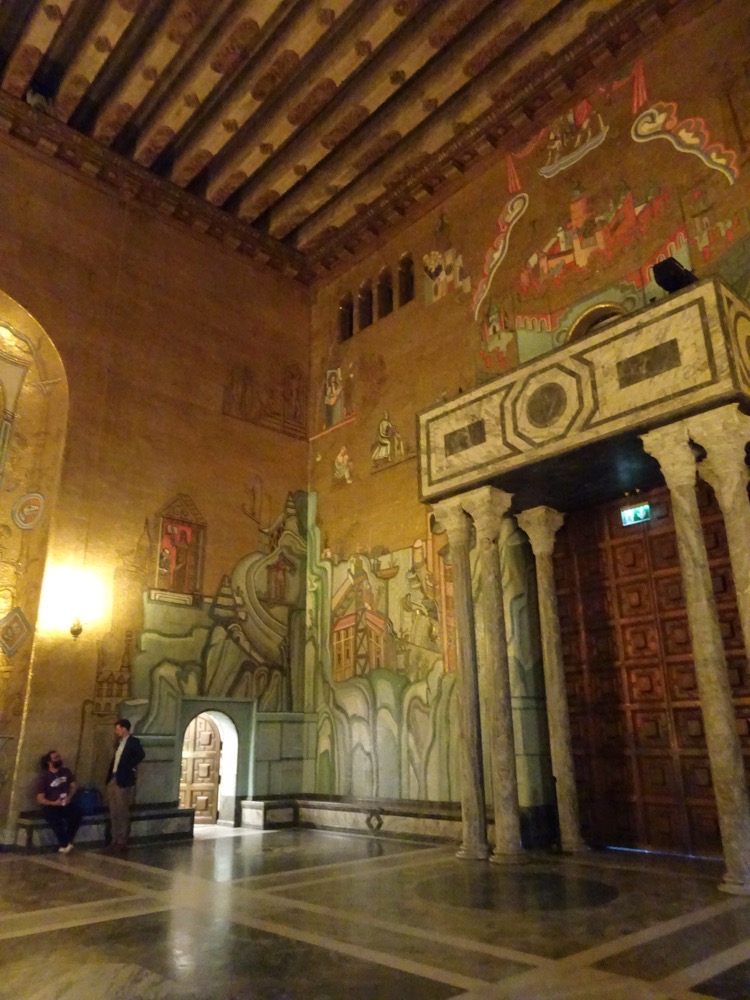
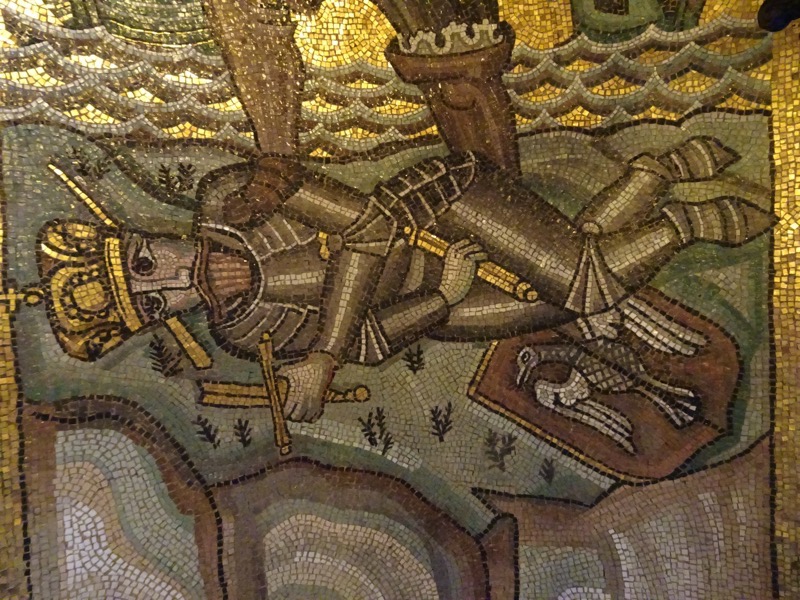
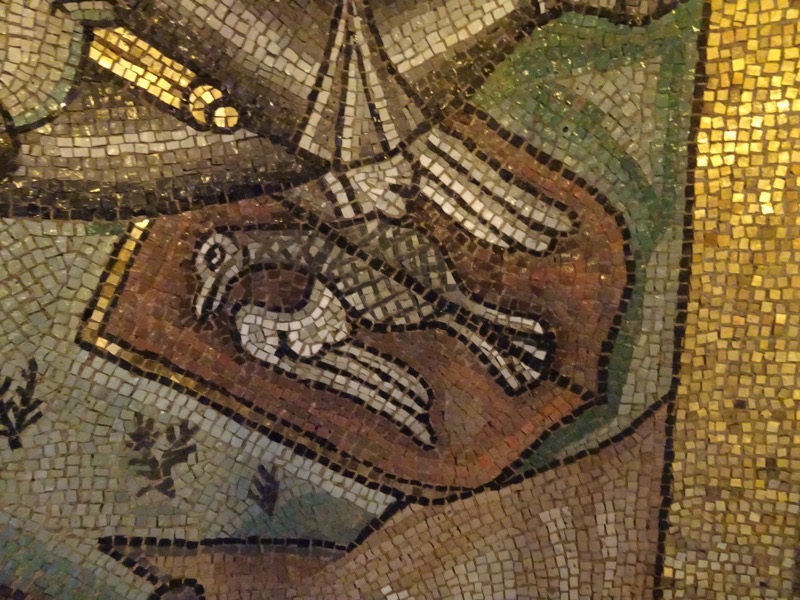
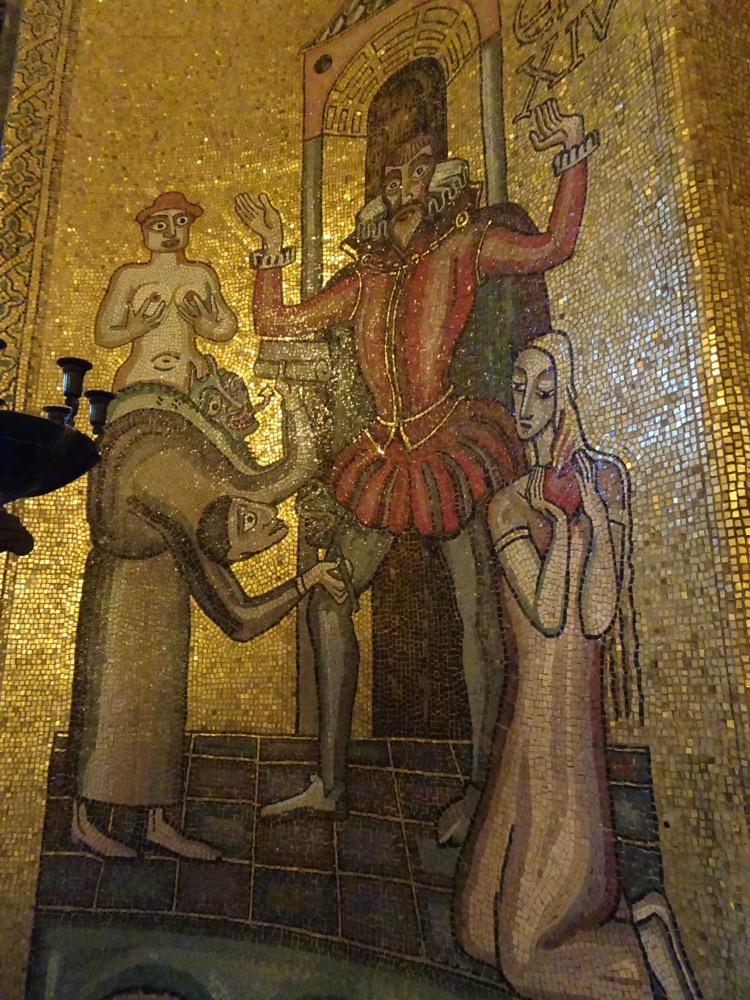
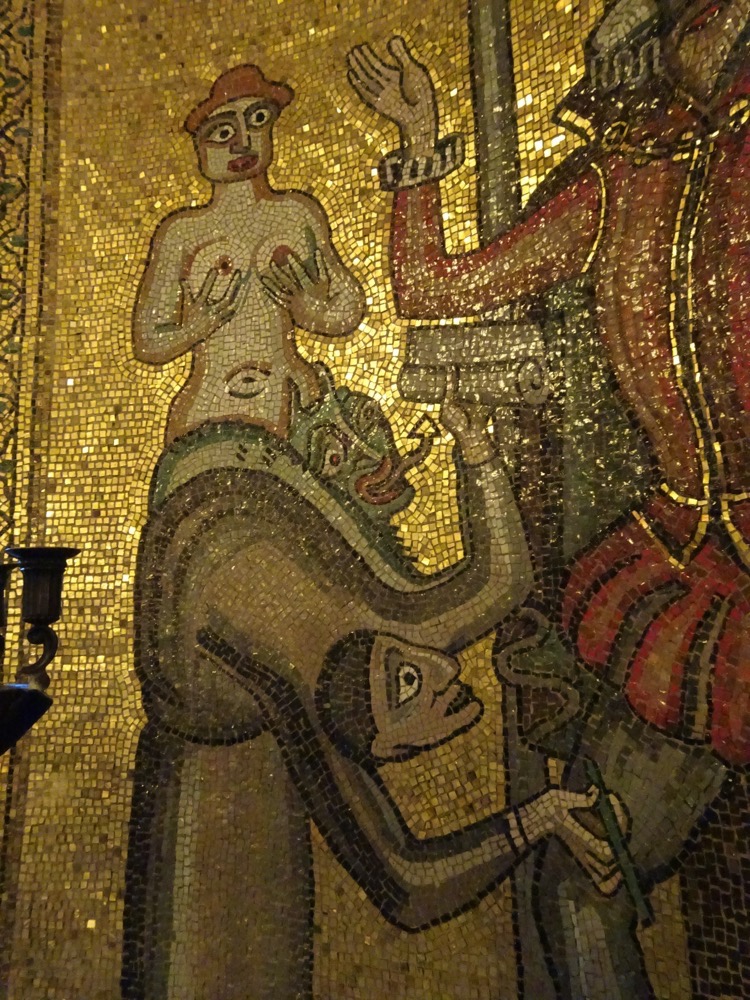
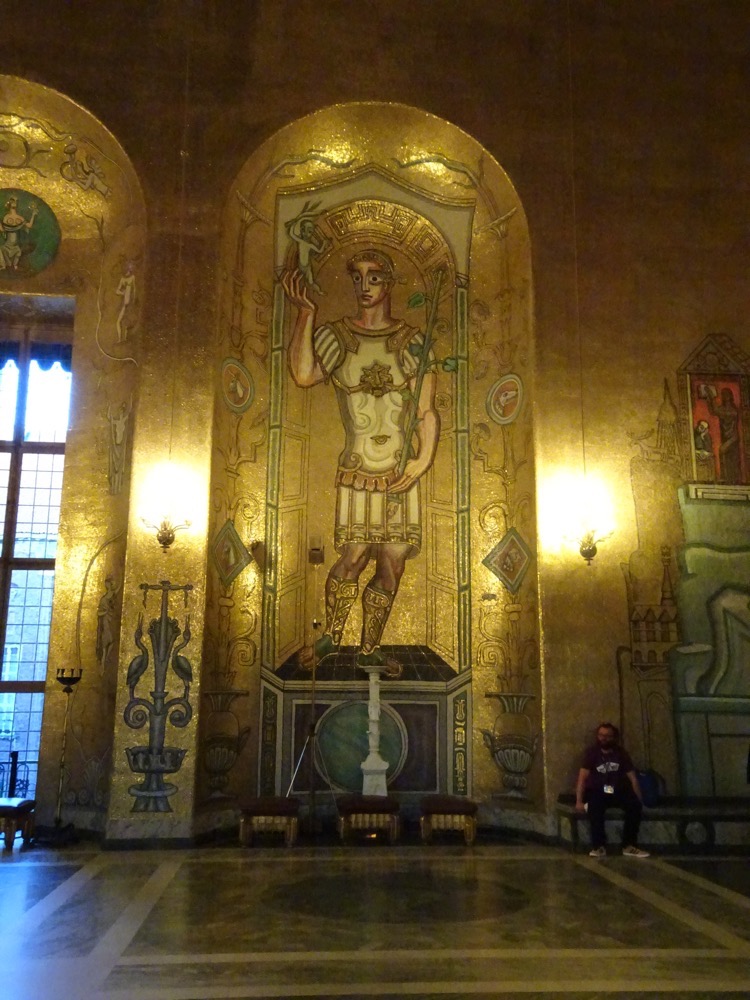
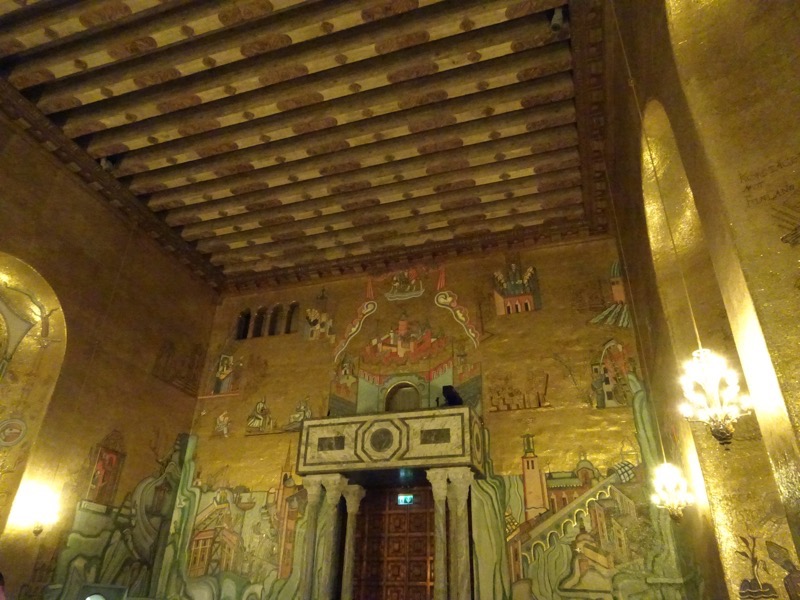
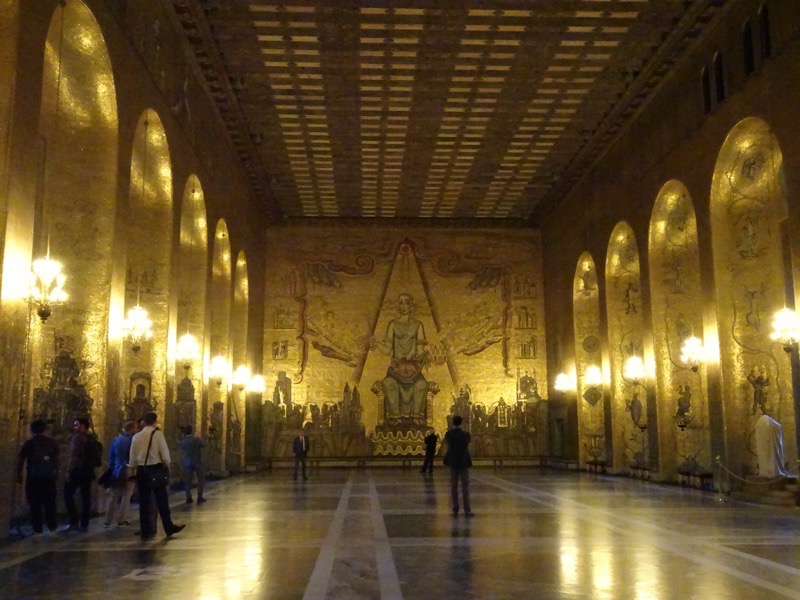
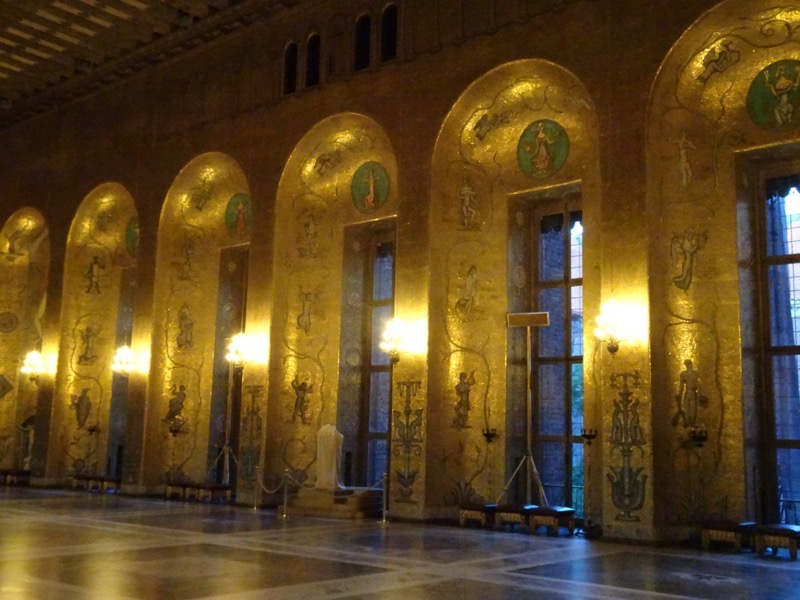 The room is used after the Nobel Prize ceremonies for a ballroom, and it is not often that people can come here without being on an offical tour of the building… I was thrilled to be able to take so many pictures, and contemplate the grandeur of this place in a relatively small group. Seeing a masterpiece of decorative arts like this is always impressive – the workmanship, the creativity and the time, the sheer time that goes into making something like this is incredible.
The room is used after the Nobel Prize ceremonies for a ballroom, and it is not often that people can come here without being on an offical tour of the building… I was thrilled to be able to take so many pictures, and contemplate the grandeur of this place in a relatively small group. Seeing a masterpiece of decorative arts like this is always impressive – the workmanship, the creativity and the time, the sheer time that goes into making something like this is incredible.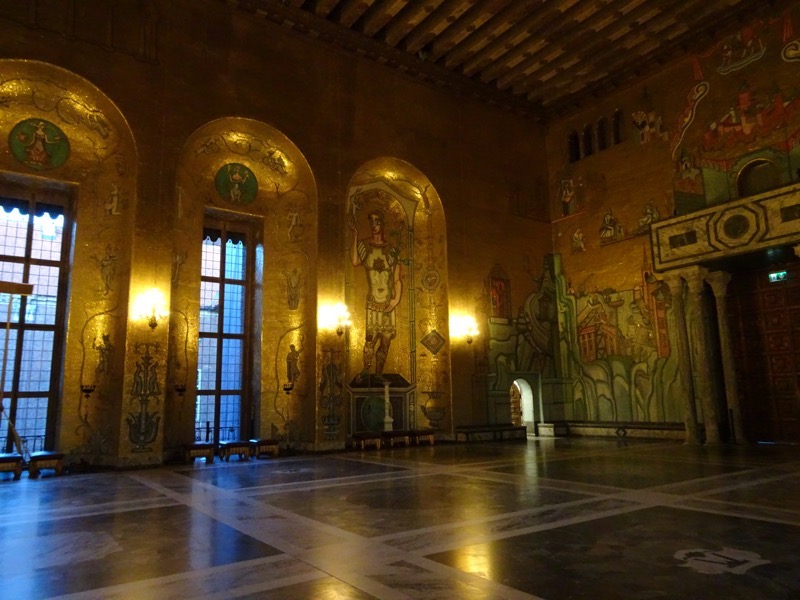
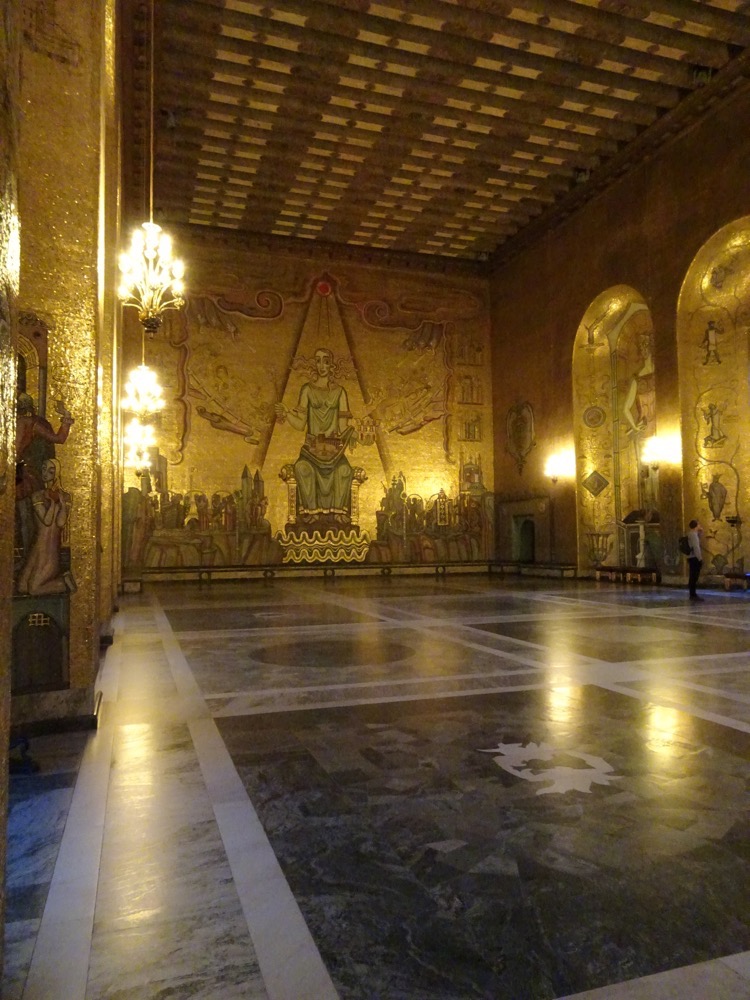
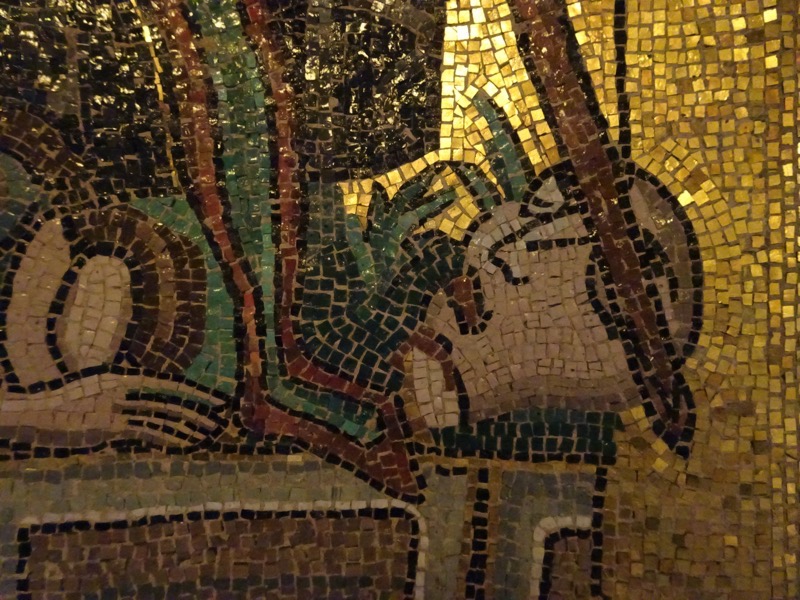
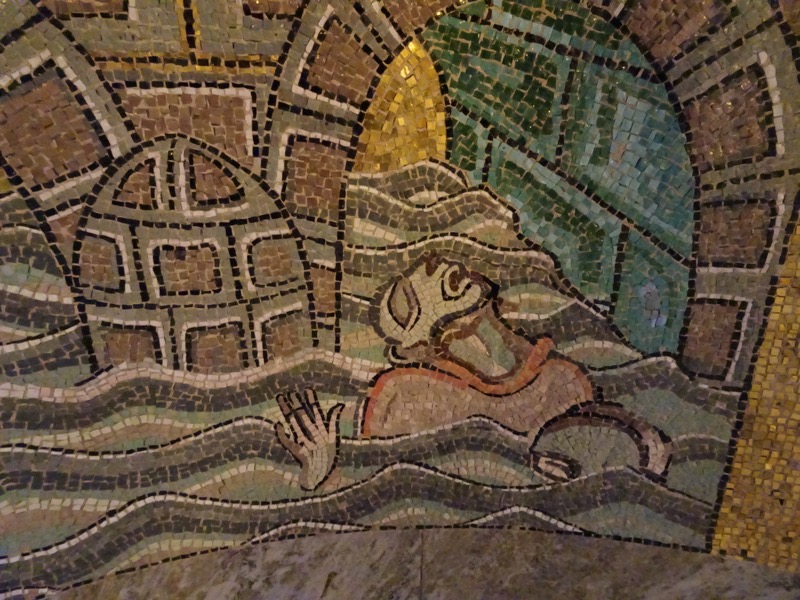 Direclty outside the Golden Salon is a central covered courtyard that then leads around to the Stockholm Council Chambers.
Direclty outside the Golden Salon is a central covered courtyard that then leads around to the Stockholm Council Chambers.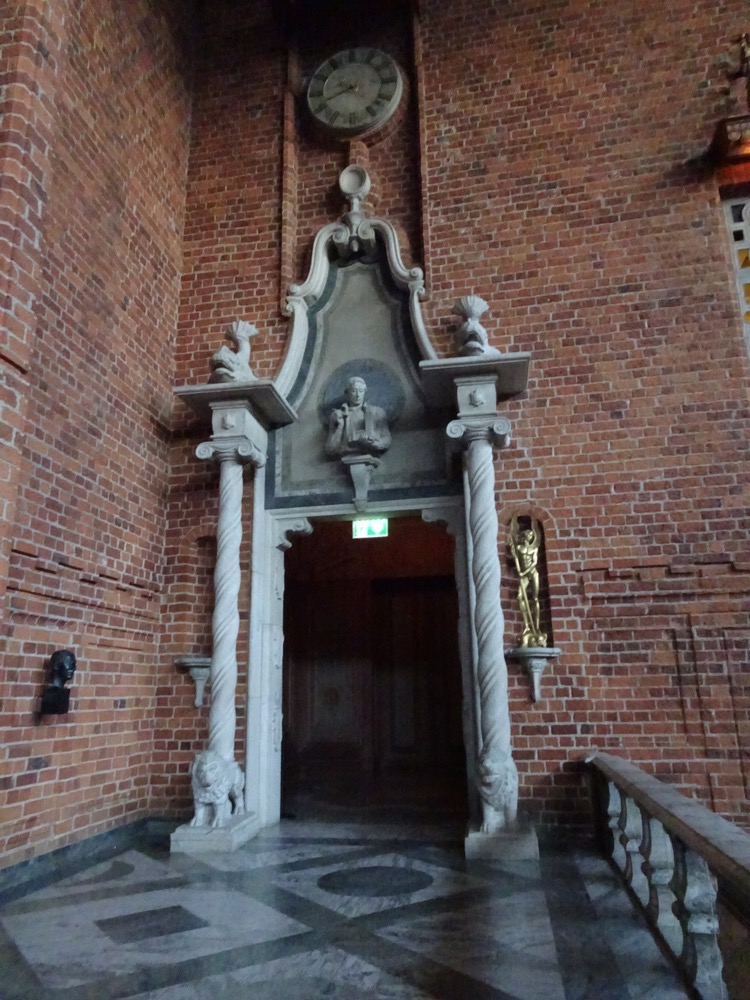 It is an interesting contrast to move form a space covered literally in gilt tiles to a courtyard space that is rough hewn red brick.
It is an interesting contrast to move form a space covered literally in gilt tiles to a courtyard space that is rough hewn red brick.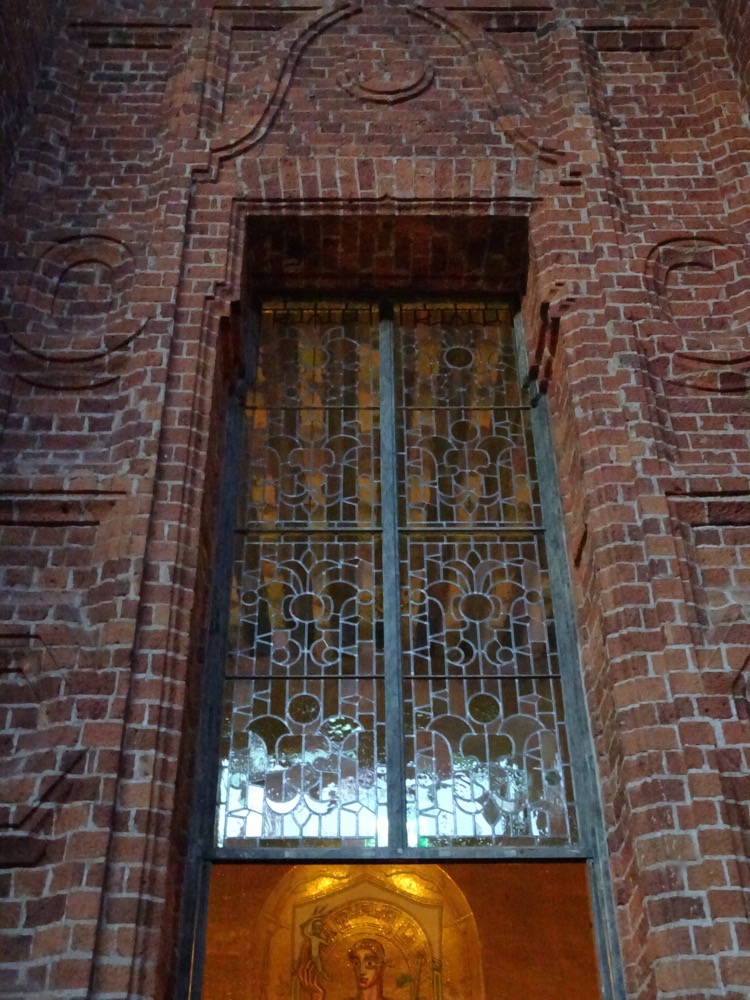
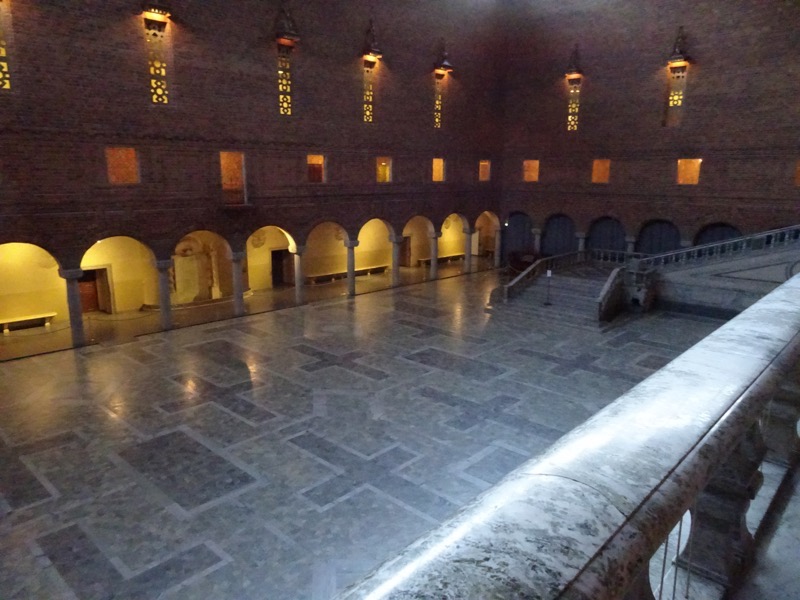
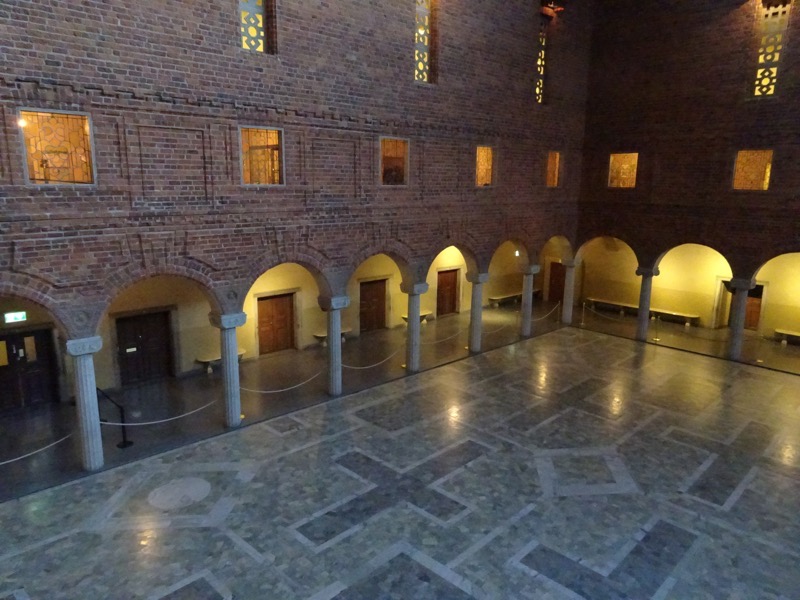 The Council chambers are apparently all decorated in red – as this is the ‘beating heart’ of the city of Stockholm. The designer who created this space was particularly taken with the idea of the President of the Council being under a traditional audience/throne-like valance, but the politicians at the turn of the century with no enamoured with the idea of the President sitting ‘in state’ and looking like Royalty, so they argued with the designer to remove the regal looking valanced canopy. The designer responded creatively saying that the canopy assisted with the acoustics of the room, and that it would help the President be heard. The politicians at the time, knowing nothing of acoustics, seemed to have shrugged and and acquiesed… though it has since been tested by experts who have confirmed what we would already know – that the canopy does not have offer any benefit to the acoustics at all. Well played.
The Council chambers are apparently all decorated in red – as this is the ‘beating heart’ of the city of Stockholm. The designer who created this space was particularly taken with the idea of the President of the Council being under a traditional audience/throne-like valance, but the politicians at the turn of the century with no enamoured with the idea of the President sitting ‘in state’ and looking like Royalty, so they argued with the designer to remove the regal looking valanced canopy. The designer responded creatively saying that the canopy assisted with the acoustics of the room, and that it would help the President be heard. The politicians at the time, knowing nothing of acoustics, seemed to have shrugged and and acquiesed… though it has since been tested by experts who have confirmed what we would already know – that the canopy does not have offer any benefit to the acoustics at all. Well played.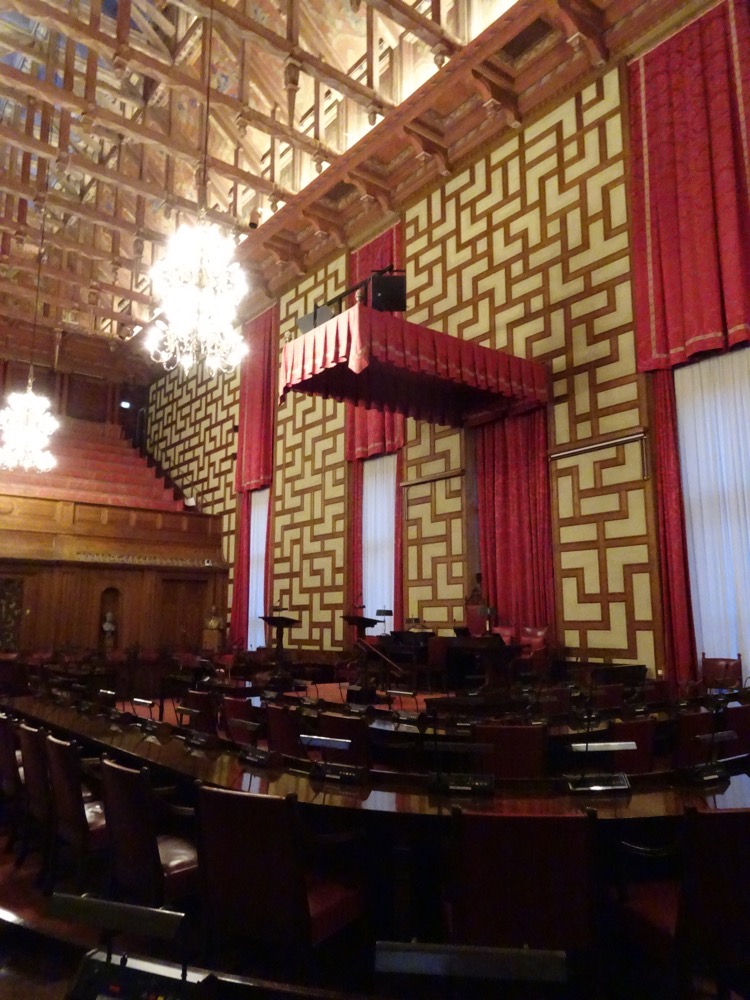
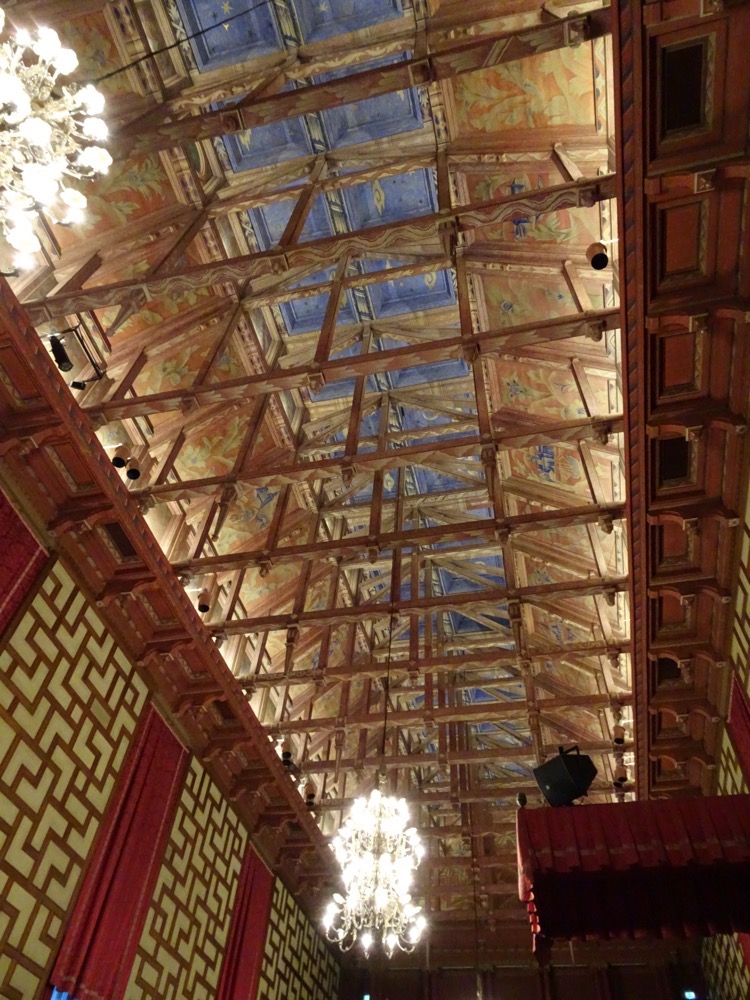 The ceiling is painted to look like the sky so the words of the elected representatives can ‘float upwards and out into the city of Stockholm’… lovely imagery, but today the cameras in the corner that live stream proceedings to the web are probably more effective than the ceiling.
The ceiling is painted to look like the sky so the words of the elected representatives can ‘float upwards and out into the city of Stockholm’… lovely imagery, but today the cameras in the corner that live stream proceedings to the web are probably more effective than the ceiling.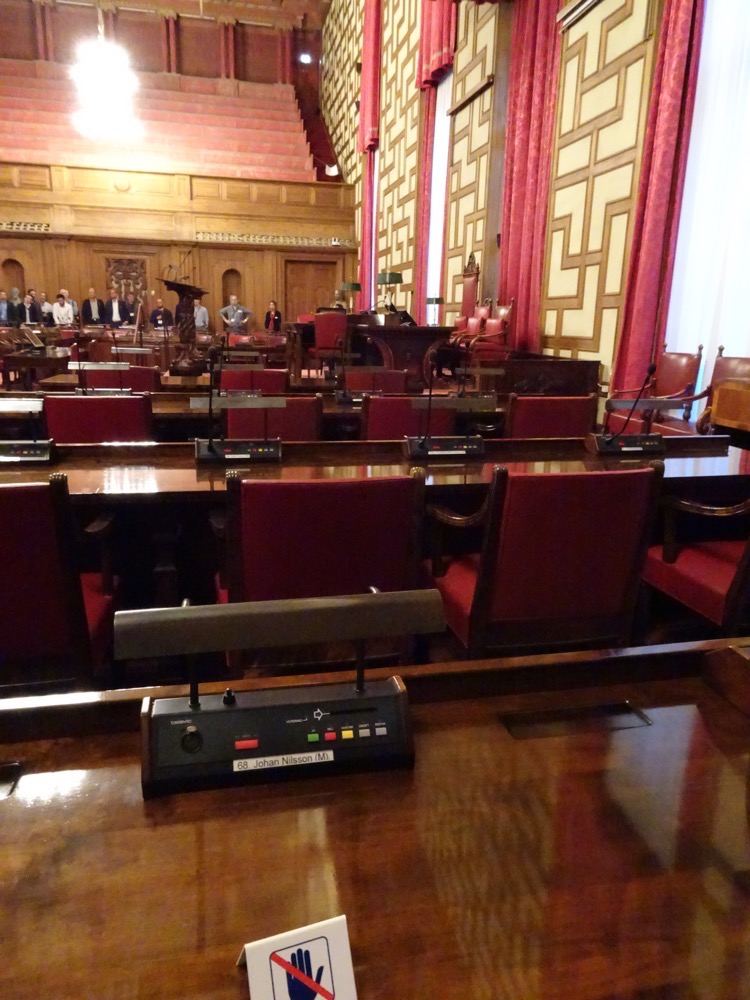
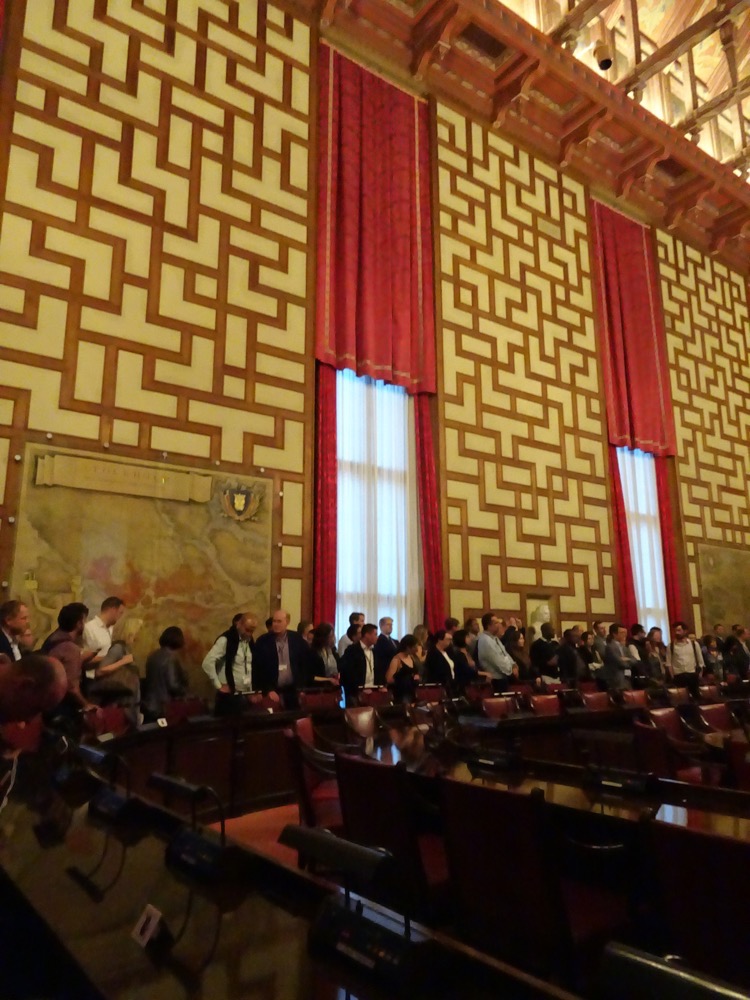
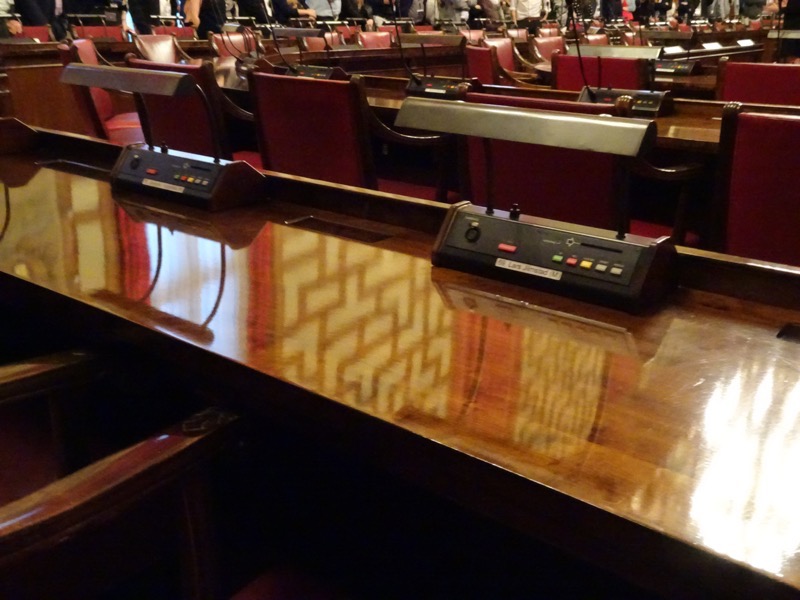 What a beautiful venue. We had a lovely evening socialising with the people we have been working with this week, and after this head back to our hotel, the Hotel Birger Jarl to have a few drinks. Lots of discussion on buses and trains and taxis ensued before being able to take off my shoes (my poor little feet!) and get some sleep.
What a beautiful venue. We had a lovely evening socialising with the people we have been working with this week, and after this head back to our hotel, the Hotel Birger Jarl to have a few drinks. Lots of discussion on buses and trains and taxis ensued before being able to take off my shoes (my poor little feet!) and get some sleep.